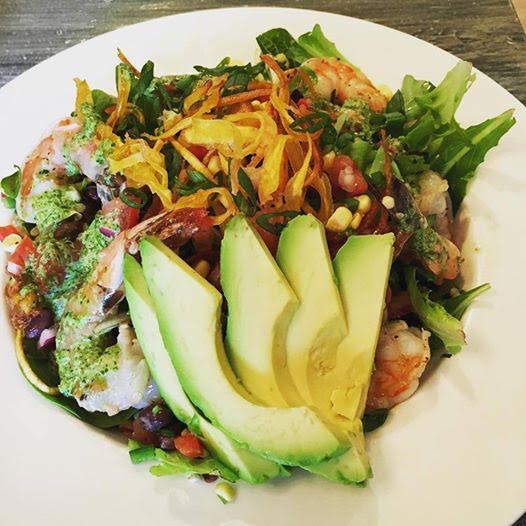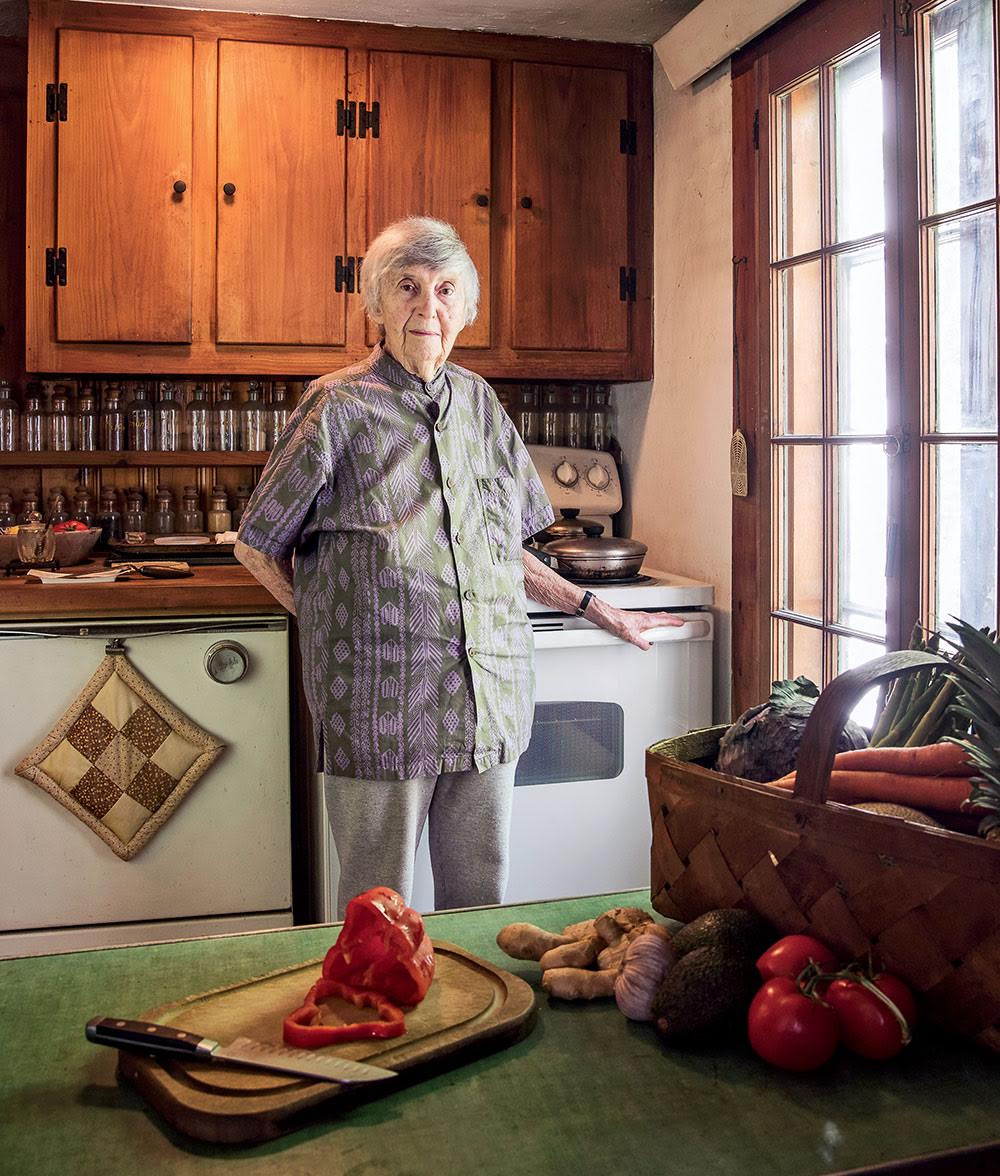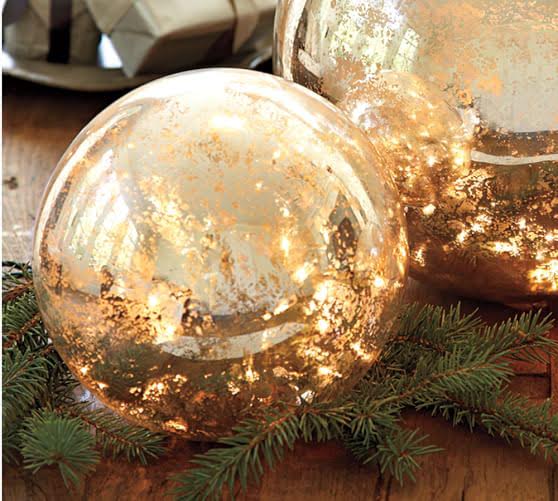
Electromagnetic Fields
One Knot Knits
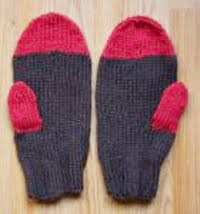 “Cozy knits made by hand with responsibly sourced fibers…I am very particular when choosing my fibers – they are as natural as possible. Some are organic, some are fair trade, and all are purchased from farms, small businesses, or fellow Etsy sellers. I focus on using yarns that are made in the United States or made using fair trade practices around the world. You will not find acrylic yarn or chemically treated yarn in this shop! I only knit with natural fibers, including sheep’s wool, alpaca, llama, silk, cotton, and bamboo.” Hats mittens, scrarves and other accessories for women and babies. image:{organic wool mittens
“Cozy knits made by hand with responsibly sourced fibers…I am very particular when choosing my fibers – they are as natural as possible. Some are organic, some are fair trade, and all are purchased from farms, small businesses, or fellow Etsy sellers. I focus on using yarns that are made in the United States or made using fair trade practices around the world. You will not find acrylic yarn or chemically treated yarn in this shop! I only knit with natural fibers, including sheep’s wool, alpaca, llama, silk, cotton, and bamboo.” Hats mittens, scrarves and other accessories for women and babies. image:{organic wool mittens
Pique Tea Crystals
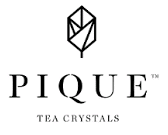 All the benefits and taste of loose leaf green and black teas in an instant. “Handcrafted from whole leaves using our proprietary slow-brew process, Pique delivers the exquisite flavor and natural antioxidants of loose leaf tea. We source the top 5% of tea leaves in the world Pique is made in collaboration with most experienced tea masters and tea farmers around the world. Using ingredients sourced direct from trusted farms in India, China and Sri Lanka at their peak freshness and antioxidant levels.”
All the benefits and taste of loose leaf green and black teas in an instant. “Handcrafted from whole leaves using our proprietary slow-brew process, Pique delivers the exquisite flavor and natural antioxidants of loose leaf tea. We source the top 5% of tea leaves in the world Pique is made in collaboration with most experienced tea masters and tea farmers around the world. Using ingredients sourced direct from trusted farms in India, China and Sri Lanka at their peak freshness and antioxidant levels.”
Meli Wraps
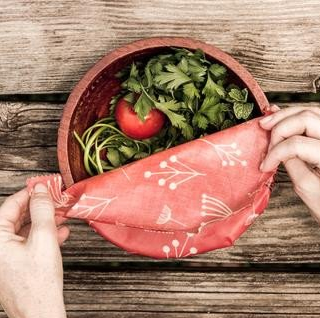 “Meli Wraps are made from organic cotton and a special beeswax blend to create a natural wrap that helps preserve your food. The wraps stick to themselves and can be washed and re-used for up to a year! Cover your bowls, plates or food themselves! Make snack packs, wraps sandwiches, over cover half avocados!” A useful and charming alternative to plastic wrap.
“Meli Wraps are made from organic cotton and a special beeswax blend to create a natural wrap that helps preserve your food. The wraps stick to themselves and can be washed and re-used for up to a year! Cover your bowls, plates or food themselves! Make snack packs, wraps sandwiches, over cover half avocados!” A useful and charming alternative to plastic wrap.
Easy Living Hats
 Beautiful colorful hats crocheted by a grandma from organic cotton yarn. “I have decided to focus on making hats that resembled traditional millinery but were made through a crochet method. When I researched millinery I found that not only was it extremely expensive to purchase all the equipment and supplies necessary, but it was toxic too. The term “mad hatter” came from the fact that all the sprays and stiffeners used to shape the hat were making the workers sick during production. I crocheted a sun hat and fitted a wire in the edge of the brim to look like a straw hat. What I found was how much more practical it was. Not only was it light weight, but it stretched to fit.”
Beautiful colorful hats crocheted by a grandma from organic cotton yarn. “I have decided to focus on making hats that resembled traditional millinery but were made through a crochet method. When I researched millinery I found that not only was it extremely expensive to purchase all the equipment and supplies necessary, but it was toxic too. The term “mad hatter” came from the fact that all the sprays and stiffeners used to shape the hat were making the workers sick during production. I crocheted a sun hat and fitted a wire in the edge of the brim to look like a straw hat. What I found was how much more practical it was. Not only was it light weight, but it stretched to fit.”
Vejibag
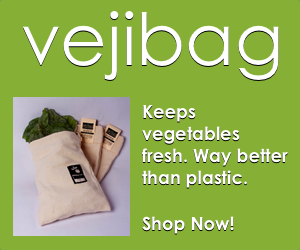 Specially designed bags for storing vegetables made from 100% U.S. grown and milled Organic cotton fabric and thread. ” It keeps all kinds of humidity-loving perishables fresh, crisp, and tasty for a week or more. Damp cloth bags keep moisture-loving vegetables moist and crisp in a high humidity environment. Moisture slowly evaporates from the surface of the bag to keep both the bag and the vegetables “breathing.” A slightly moist bag keeps vegetables crisp, often several days beyond storage in either a crisper drawer or plastic bag.”
Specially designed bags for storing vegetables made from 100% U.S. grown and milled Organic cotton fabric and thread. ” It keeps all kinds of humidity-loving perishables fresh, crisp, and tasty for a week or more. Damp cloth bags keep moisture-loving vegetables moist and crisp in a high humidity environment. Moisture slowly evaporates from the surface of the bag to keep both the bag and the vegetables “breathing.” A slightly moist bag keeps vegetables crisp, often several days beyond storage in either a crisper drawer or plastic bag.”
The Organique Co.
 High-quality organic superfoods in powdered form. “We source only the highest quality superfoods directly from farmers and cultivators around the world that we’ve met personally. Doing this, we can guarantee the highest quality products while ensuring sustainable and eco-friendly methods being used at the same time. In many cases, the cultivation of the ingredients we use even provides an important alternative to destructive farming and deforestation. By minimally processing our superfoods with methods such as freeze-drying and low-temperature milling, we do our best to seal in maximum flavor and nutritional value without the fillers and additives. Our ingredients are always whole, most raw, and all 100% organic and GMO-free.”
High-quality organic superfoods in powdered form. “We source only the highest quality superfoods directly from farmers and cultivators around the world that we’ve met personally. Doing this, we can guarantee the highest quality products while ensuring sustainable and eco-friendly methods being used at the same time. In many cases, the cultivation of the ingredients we use even provides an important alternative to destructive farming and deforestation. By minimally processing our superfoods with methods such as freeze-drying and low-temperature milling, we do our best to seal in maximum flavor and nutritional value without the fillers and additives. Our ingredients are always whole, most raw, and all 100% organic and GMO-free.”
Ambatalia
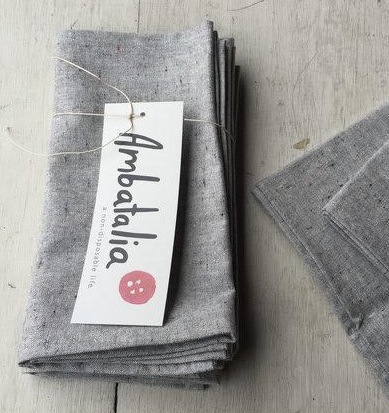 A unique collection of cotton and linen kitchen linens inspired by the deep-rooted tradition of Japan to create beauty in the everyday rituals of life. Cloth napkins and kitchen towels have a myriad of uses, aprons are designed for function as well as protection. Cloth lids to cover dishes and utensil rolls to carry your own are among the other lovely reusable and renewable items to help you live a plastic-free life.
A unique collection of cotton and linen kitchen linens inspired by the deep-rooted tradition of Japan to create beauty in the everyday rituals of life. Cloth napkins and kitchen towels have a myriad of uses, aprons are designed for function as well as protection. Cloth lids to cover dishes and utensil rolls to carry your own are among the other lovely reusable and renewable items to help you live a plastic-free life.
Five Mountains Heirloom Organic Tea
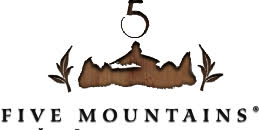 This is tea as Nature intended. “These traditional tea cultivars are renowned for their quality, flavor profiles and health attributes. Each tea is harvested from gardens of their native origin to fully express their variety and terroir…Five Mountains uses international organic certifications, biodiverse and sustainable growing methods, and fully compostable packaging.”
This is tea as Nature intended. “These traditional tea cultivars are renowned for their quality, flavor profiles and health attributes. Each tea is harvested from gardens of their native origin to fully express their variety and terroir…Five Mountains uses international organic certifications, biodiverse and sustainable growing methods, and fully compostable packaging.”
Cat Spot Litter
 Super lightweight cat litter made from 100% organic coconut, delivered automatically to your door every month (or try a single bag).
Super lightweight cat litter made from 100% organic coconut, delivered automatically to your door every month (or try a single bag).
The Philospher’s Stoneground Sprouted Nut Butters
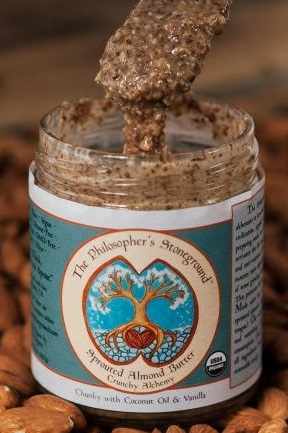 About a year and a half after originally posting this I happened to encounter the creator of this business at the Heirloom Food Exhibition and tasted this almond butter. It is AMAZING. The flavor of almonds is much stronger than usual almond butter and it feels more alive. Way beyond ordinary food,……Spouted almond butters made from organic unpasteurized Spanish almonds sprouted in spring water and sea salt. Finished butter contains only residual salt from the sprouting process. “Sprouting makes almonds sweeter, more digestible, and more nutritious…Our sprouted almond butters feature unpasteurized, truly raw almonds from Spain, which have been grown using dry-farming methodology, a traditional water-sustainable and regionally-adapted approach to almond agriculture. We are the first drought-adapted almond butter company and intend to continue pioneering this path. All of our ingredients are Certified Organic and meticulously sourced. We create gluten-free, peanut-free, sweetener-free, Paleo, raw, and vegan sprouted almond butters.”
About a year and a half after originally posting this I happened to encounter the creator of this business at the Heirloom Food Exhibition and tasted this almond butter. It is AMAZING. The flavor of almonds is much stronger than usual almond butter and it feels more alive. Way beyond ordinary food,……Spouted almond butters made from organic unpasteurized Spanish almonds sprouted in spring water and sea salt. Finished butter contains only residual salt from the sprouting process. “Sprouting makes almonds sweeter, more digestible, and more nutritious…Our sprouted almond butters feature unpasteurized, truly raw almonds from Spain, which have been grown using dry-farming methodology, a traditional water-sustainable and regionally-adapted approach to almond agriculture. We are the first drought-adapted almond butter company and intend to continue pioneering this path. All of our ingredients are Certified Organic and meticulously sourced. We create gluten-free, peanut-free, sweetener-free, Paleo, raw, and vegan sprouted almond butters.”
Anne Steinemann Investigates Indoor Air Quality
Our favorite researcher Anne Steinemann has two new articles about toxic exposures in our homes. She is a Professor of Civil Engineering and Chair of Sustainable Cities at the University of Melbourne School of Engineering in Australia
Both the articles were both published in the journal Building and Environment.
“Ten questions concerning green building and indoor air quality” investigates the concern that green buildings may promote energy efficiency and other aspects of sustainability, but not necessarily the health and well-being of occupants through better indoor air quality (IAQ). Ten questions are asked which explore IAQ challenges for green buildings as well as opportunities
to improve IAQ within green buildings and their programs.
“Ten questions concerning air fresheners and indoor built environments” investigates the seeming paradox that products designed to improve the indoor environment can pose unintended and unknown risks. It examines the science, health, and policy perspectives, and provides recommendations
and research directions.
Really Good Summary of Endocrine Disruptors
This article by a medical doctor is focused on “gender bending,” but gives a really good summary of the main endocrine disrupting chemicals, where they are found, and tips to avoid them.
Target’s Commitment To Toxic-Free

Two weeks ago, Target announced a new commitment to eliminating toxics in their stores.
Their statement includes transparency and disclosure of all materials in all products, investing up to $5 million for green chemistry innovations, and development of safer alternatives.
Target will actively pursue the development of safer alternatives to achieve our goals. We will work to remove chemicals or find alternatives to those chemicals that could pose a risk to our guests, workers and community. When changes are made, we will ensure the integrity and safety of our products.
• Improve textile products by removing added Perfluorinated Chemicals (PFC’s) from products by 2022.
• Improve textile products by removing added flame retardants that are potential carcinogens or pose harm to the guest, workers or communities by 2022.
• Improve beauty, baby care, personal care and household cleaning product categories by formulating without phthalates, propyl-paraben, butyl-paraben, formaldehyde, formaldehyde-donors, or NPE’s by 2020.
I often shop at Target because I already see them carrying toxic-free products I can use. I just purchased a 2-gallon glass food storage jar there for less than $15, and it was the only place locally where I could find those jars in that size. So I’m very happy to see them moving more in this direction.
TARGET: Chemicals @ Target: Chemicals Policy & Goals
GREEN BIZ: Target’s new chemicals policy hits a bullseye
This is the next step in a movement that has been going on at least since 2011.
Q&A: WalMart and Other Retailers are Banning Toxic Chemicals in Products—Not Waiting for Government
Q&A: WalMart Takes Initiative to Get Manufacturers to Reduce Toxic Chemicals
Xtrema Cookware
 My #1 choice for healthy cookware, these Xtrema pots and pans are 100% ceramic, through and through–made only from natural minerals, clay and water. No metals are in this ceramic cookware. This lead-free high-tech all ceramic glaze is easy to clean and does not leach lead or any other toxic metals (see lab tests on website). The extremely hard ceramic cooking surface cannot be scratched by metal utensils or steel wool but I recommend wood utensils when cooking with Xtrema. Because the ceramic material holds heat exceptionally well, you can save energy by cooking at lower temperatures. The attractive and versatile cookware lets you take the food from the stove to the table and then to the refrigerator for storing leftovers. This is the cookware I use every day for almost everything I cook. NOTE: This cookware is lightweight and extremely easy to clean, however, I wouldn’t call it “nonstick.” Eggs will stick unless you spray your cookware with olive oil after the pan is heated on a low temperature for 3 minutes (see the video on the web site on How to Cook Eggs).
My #1 choice for healthy cookware, these Xtrema pots and pans are 100% ceramic, through and through–made only from natural minerals, clay and water. No metals are in this ceramic cookware. This lead-free high-tech all ceramic glaze is easy to clean and does not leach lead or any other toxic metals (see lab tests on website). The extremely hard ceramic cooking surface cannot be scratched by metal utensils or steel wool but I recommend wood utensils when cooking with Xtrema. Because the ceramic material holds heat exceptionally well, you can save energy by cooking at lower temperatures. The attractive and versatile cookware lets you take the food from the stove to the table and then to the refrigerator for storing leftovers. This is the cookware I use every day for almost everything I cook. NOTE: This cookware is lightweight and extremely easy to clean, however, I wouldn’t call it “nonstick.” Eggs will stick unless you spray your cookware with olive oil after the pan is heated on a low temperature for 3 minutes (see the video on the web site on How to Cook Eggs).
 |
Listen to my interview with Ceramcor Founder Rich Bergstrom. |
Revol Porcelain Cookware
Question from Tara
Hi Debra,
I’m on the Williams-Sonoma website, about to purchase a Staub Essential Oven to use on an induction burner as you recommended for a slow-cooker option.
I also realized as my child was talking to me this evening about buying this pot and how he’d like to cook with it when he’s a little older, that the induction set-up would work well for that purpose, because if I recall correctly, that kind of burner doesn’t get hot to the touch, correct? So it would probably be a safer option for a child learning to help with cooking (compared to standing on something in front of the stove with the gas burner on).
Anyway, while I was looking at the Dutch ovens on the Williams-Sonoma website, I came across this Revol brand, which I don’t believe I’ve ever heard of before. Apparently the company has been around since 1768, and they’re from France. Looks like it might be a non-toxic option, so I wanted to pass it along for you to check out. It’s possible there’s something wrong with it; I’ve only read the info here on the product page, haven’t dug any further or looked up the company’s own website, etc. Like the enameled pots, it’s not inexpensive, but I thought I’d pass it along for your review.
www.williams-sonoma.com/products/revol-flametop-round-cocotte/?pkey=cdutch-ovens-casseroles&&cdutch-ovens-casseroles
I also saw that Williams-Sonoma has their own brand of enameled cast iron; I was immediately skeptical, figuring it’s probably a toxic knock-off of Le Creuset and Staub. But it turns out, it’s actually designed by Williams-Sonoma but made by Staub in France. If it’s made to the same standards as Staub’s regular line (all of which is lead- and cadmium-free, then this could be another reasonable option — though it’s not on sale at the moment, so I’m not interested. 🙂 But it does look nice, so if it’s ever on sale, it could be a good option.
www.williams-sonoma.com/products/williams-sonoma-cast-iron-round-oven/?pkey=cdutch-ovens-casseroles&&cdutch-ovens-casseroles
In the W-S line they also have a few other pieces, like this fry pan and a braiser with a glass lid.
www.williams-sonoma.com/products/williams-sonoma-cast-iron-fry-pan/?pkey=ccookware-williams-sonoma%7Cws-cast-iron&&ccookware-williams-sonoma|ws-cast-iron
Debra’s Answer
Great finds Tara!
I checked out the Revol website and indeed they are “Made only from environmentally friendly, natural components; contains no heavy metals (lead, cadmium) or toxins and PTFE-free.” And they are made in France. In addition to Williams-Sonoma, they are also sold at Sur La Table, their own website, and even online. I just added them to Debra’s List.
I’m fine with Straub, and the Williams-Sonoma pieces made by Straub.
Sustainability in Supermarkets—HowGood Shelf Talkers
For several years, a new program called HowGood started certifying “sustainable” food products as good-great-best.
Now they are becoming more visible.
You may have seen their ratings as shelf talkers in supermarkets, and they have 137,000 products on a cellphone app.
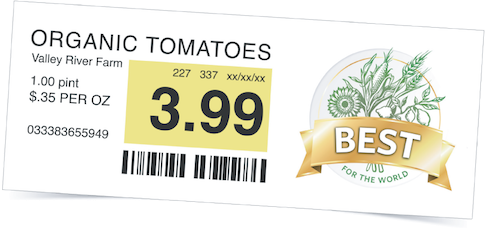
But what are they actually rating? And do these good-great-best ratings indicate the product is nontoxic?
HowGood evaluates products based on a grid of eleven categories having to do with sourcing, production, and organization. And each of these eleven categories has subcategories. Each gets a rating that results in a profile that looks something like this:
or
But the problem I have with this is, like virtually all other certification organizations, all you get is a seal and no details. If you click to the page and mouse over the green boxes on the second image, a window will pop up that gives you an explanation of the category, but no details on the product.
You can also go here to see the full grid and mouseover each square to see all the explanations, but I don’t see a page that fully explains any of them. When you look at these categories they cover toxic exposures but also labor, management, environment, and other factors. A product could rate high on management but low on toxics and still get a good rating. But I can’t analyze this because I have no data about how they came to these conclusions per product.
HOWGOOD’S “BEST” RATED BRANDS: here and here
THE BALTIMORE SUN: Supermarkets look to sustainability as the next organic
By contrast, I’ve been writing product recommendations at Debra Lynn Dadd Recommended Products that give you details on the company philosophy and each of the materials they use to make their products. I’d like to see more disclosure like this.
Any Experience with Hypnos or Saatva Mattresses?
I’ve received two comments asking about these mattresses.
Specifically these readers are wanting to know if anyone has experience with these mattresses—good or bad.
Hypnos is a long established manufacturer from the UK that uses “natural and sustainable” materials, but doesn’t say what they are. They use such luxurious materials as cashmere, camel hair, silk and alpaca for covers over a British wool-and-polyester cushioning. No mention of any materials being organic.
Saatva has organic cotton covers over polyurethane foam (they say it’s bio-based but it’s only a small percetage of bio). They also have a natural latex foam (not organic) mattress.
Thank you.
Weston A. Price Foundation Guide to the Highest Quality Foods Available
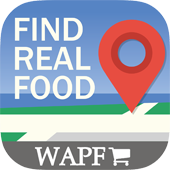 This online and cell phone app helps you find most natural, nutrient-dense foods available near your home or while traveling. Extensive database of 15,000 products sold in 100,000 locations in the U.S. Included a detailed list of how foods and food products are chosen and rated. All foods listed have been meticulously researched and approved by WAPF, which has been providing yearly food guides since 1999. Subscription $6.99/year.
This online and cell phone app helps you find most natural, nutrient-dense foods available near your home or while traveling. Extensive database of 15,000 products sold in 100,000 locations in the U.S. Included a detailed list of how foods and food products are chosen and rated. All foods listed have been meticulously researched and approved by WAPF, which has been providing yearly food guides since 1999. Subscription $6.99/year.
Worthy Goods Textile
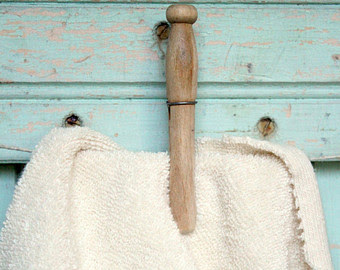 Some unusual GOTS Certified organic fabrics such as organic cotton fleece, terry cloth, flannel in patterns, and more.
Some unusual GOTS Certified organic fabrics such as organic cotton fleece, terry cloth, flannel in patterns, and more.
FruitShare Organic Fruit Delivery
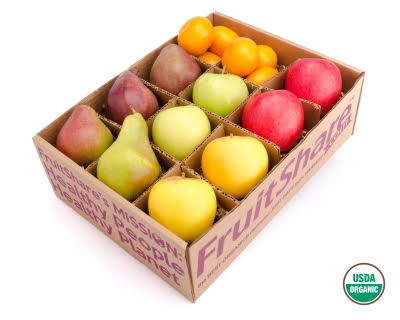 “The most delicious and nutritious farm fresh fruit in season all year long…A beeline from the farm to your door… Picked fresh, shipped fast, always organic. At FruitShare, we know what fruit should taste like. We know that farm fresh fruit is the best because it is almost as fresh as picking it yourself – resulting in flavorful, juicy fruit packed full of nutrients. With FruitShare, you’ll know where your food comes from. We send an eco-friendly e-newsletter to you with every box, detailing stories from the farms, plus tips for handling your fruit, health and wellness information, and recipes. We’ll connect you to the farmers, whether they’re local or all the way across the country.” Fruit clubs, gift boxes, fundraisers.
“The most delicious and nutritious farm fresh fruit in season all year long…A beeline from the farm to your door… Picked fresh, shipped fast, always organic. At FruitShare, we know what fruit should taste like. We know that farm fresh fruit is the best because it is almost as fresh as picking it yourself – resulting in flavorful, juicy fruit packed full of nutrients. With FruitShare, you’ll know where your food comes from. We send an eco-friendly e-newsletter to you with every box, detailing stories from the farms, plus tips for handling your fruit, health and wellness information, and recipes. We’ll connect you to the farmers, whether they’re local or all the way across the country.” Fruit clubs, gift boxes, fundraisers.
The Old White House
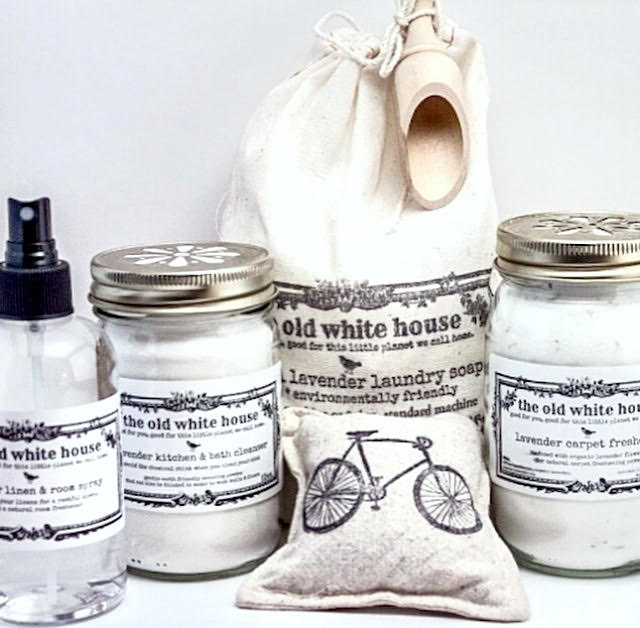 “Almost 5 years ago I decided to give making my own laundry soap a try, as a family of seven at the time we did a lot of laundry… a LOT of laundry! I had seen recipes floating around the internet, and gave a few a try. I didn’t find one that I thought did the job that I wanted it to, so I went back to the drawing board, and came up with a product that not only cleaned our laundry, but also made it naturally soft, and smelled amazing…Our lavender cleaning products include the following… soft, non-sudsing lavender laundry soap, organic lavender dryer sachets, lavender linen & room spray, lavender kitchen & bath cleanser, lavender carpet freshener and lavender soy candles. Our natural earth friendly and vegan lavender laundry and cleaning provisions are made with great care by my family and I. We make sure to use only earth friendly ingredients, pure lavender essential oil, organic lavender buds, natural cotton for the sachets that are stamped with waterproof ink, glass jars made in the USA, all packaged in a reusable cotton bag with a love of the earth and great pride in our products.”
“Almost 5 years ago I decided to give making my own laundry soap a try, as a family of seven at the time we did a lot of laundry… a LOT of laundry! I had seen recipes floating around the internet, and gave a few a try. I didn’t find one that I thought did the job that I wanted it to, so I went back to the drawing board, and came up with a product that not only cleaned our laundry, but also made it naturally soft, and smelled amazing…Our lavender cleaning products include the following… soft, non-sudsing lavender laundry soap, organic lavender dryer sachets, lavender linen & room spray, lavender kitchen & bath cleanser, lavender carpet freshener and lavender soy candles. Our natural earth friendly and vegan lavender laundry and cleaning provisions are made with great care by my family and I. We make sure to use only earth friendly ingredients, pure lavender essential oil, organic lavender buds, natural cotton for the sachets that are stamped with waterproof ink, glass jars made in the USA, all packaged in a reusable cotton bag with a love of the earth and great pride in our products.”
Eco Party Time
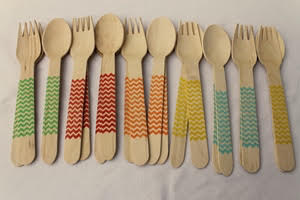 Plant-based disposable tableware, particularly for parties, but can be used anytime. Lots of colors and materials to choose from, including these wooden forks and spoons hand-painted with nontoxic inks. Read material descriptions carefully as the criteria for this website is “eco” rather than nontoxic. There are a lot of nontoxic products here that would make your party fun, just choose carefully.
Plant-based disposable tableware, particularly for parties, but can be used anytime. Lots of colors and materials to choose from, including these wooden forks and spoons hand-painted with nontoxic inks. Read material descriptions carefully as the criteria for this website is “eco” rather than nontoxic. There are a lot of nontoxic products here that would make your party fun, just choose carefully.
PBS Honors Rachel Carson on TV Show “American Experience”
Tonight, your local PBS station will air a new episode of “American Experience” about the life of Rachel Carson. Check your local television listings for the time. Here on the east coast it will be airing at 8:00 pm.
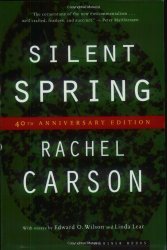 I highly recommend watching this to learn more about Rachel Carson’s life, her viewpoints, and how her book Silent Spring acted as the catalyst for our current awareness of toxics, the environmental movement, and the founding of the Environmental Protection Agency (EPA). I’ll be watching.
I highly recommend watching this to learn more about Rachel Carson’s life, her viewpoints, and how her book Silent Spring acted as the catalyst for our current awareness of toxics, the environmental movement, and the founding of the Environmental Protection Agency (EPA). I’ll be watching.
In conjunction with this, the New York Times ran an article yesterday: Rachel Carson, DDR and the Fight Against Malaria. It has a 12 minute video that also is well worth watching.
This video gives a good picture of why it’s so difficult to get toxic chemicals banned. Toxic chemicals are generally in use for a reason. In the case of DDT, at first it was to kill mosquitoes that cause deadly malaria. DDT was so effective with mosquitoes, it soon became used widely. Carson documented the health and environmental effects and soon DDT was banned.
But without DDT to control disease-carrying mosquitos, malaria soon again became epidemic.
This video shows how we can think beyond using toxics for a quick-fix and come up with more lasting sustainable solutions.
Polar Bear Cubs (and Humans) at Hight Risk from Toxic Industrial Chemicals, Despite Bans
A new story in Scientific American reports levels in polar bear cubs are 1000 times the acceptable level for humans.
“These persistent organic pollutants, or POPs, come from industry and reach the Arctic via air or ocean currents. The compounds include older chemicals like PCBs (polychlorinated biphenyls), whose production peaked in the late 1960s and early 1970s, and relatively newer ones including perfluorinated chemicals, which are used in water-resistant fabric coatings and firefighting foam. The pollutants have been linked with reproductive and immune problems in the bears as well as cancer, and their chemical structures make them nearly impossible for organisms to degrade.”
Bears accumulate high levels of the chemicals because they are top predators (just like we are).
Chemicals accumulate in both bears (and humans) because they build up through the food chain, in plants, fish and, for bears, finally seals—the bears’ main food source. Many of the compounds concentrate in the seal blubber, giving bears a hefty dose of chemicals when they eat seal blubber. The pollutants are then transferred to cubs via their mothers’ milk.
(And the same happens with humans.)
The study notes that between 1985 and 2010 the overall risk in cubs declined by 30 percent because many of the older chemicals were banned. Despite this progress, however, chemicals produced more recently are keeping the risk high. And these new chemicals, as well as the replacements for banned chemicals, are now being found in polar bear cubs in the arctic, thousands of miles from industrial civilization.
(It’s just interesting to me that this article, which is an environmental piece, makes no connection to the similar human exposure. The references to humans in this post are all mine.)
SCIENTIFIC AMERICAN: Polar Bear Cubs at Hight Risk from Toxic Industrial Chemicals, Despite Bans
Scientists Prove Link Between Aluminum and Early Onset Alzheimer’s Disease
We already know that aluminum is present is many consumer products, and that it builds up within our bodies rather than passing through.
Though a link between aluminum and Alzheimer’s Disease has been suspected for many years, even as recently as 2014 the link was largely unproven.
Now things have changed. Read more at…
GREENMEDINFO: Scientists Prove Link Between Aluminum and Early Onset Alzheimer’s Disease
Detoxing Aluminum Through Your Skin In A Simple Way At Home
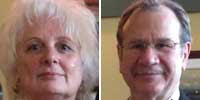 My guests today are Elizabeth and Michael Fessler, Founding Partners of Herbalix Restoratives. They make exceptional skin and hair products, some of which detox aluminum from your body as you sleep. Their products are designed to support skin functions with pure, natural and organic ingredients that cleanse and revitalize, while feeding the skin and hair vital nutrients. Today we will be focusing on their detox products. We will be talking about how aluminum enters your body and affect body function, and how topical detox can free the body from aluminum so it can function properly.
My guests today are Elizabeth and Michael Fessler, Founding Partners of Herbalix Restoratives. They make exceptional skin and hair products, some of which detox aluminum from your body as you sleep. Their products are designed to support skin functions with pure, natural and organic ingredients that cleanse and revitalize, while feeding the skin and hair vital nutrients. Today we will be focusing on their detox products. We will be talking about how aluminum enters your body and affect body function, and how topical detox can free the body from aluminum so it can function properly.
Audio + Transcript:
TOXIC FREE TALK RADIO: DETOXING ALUMINUM THROUGH YOUR SKIN IN A SIMPLE WAY AT HOME
HoBo Ties
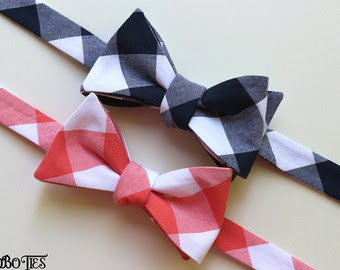 A delightful collection of natural fiber bow ties, neckties, pocket squares, cummerbunds and suspenders for men and boys. “All of our products are created with carefully chosen materials. We source professional hardware to use on our products that are made right here in the USA. Our fabrics are almost always cotton I saw a natural linen tie and sometimes we make specialty silk bow ties.
A delightful collection of natural fiber bow ties, neckties, pocket squares, cummerbunds and suspenders for men and boys. “All of our products are created with carefully chosen materials. We source professional hardware to use on our products that are made right here in the USA. Our fabrics are almost always cotton I saw a natural linen tie and sometimes we make specialty silk bow ties.
Bohemian Beetnik
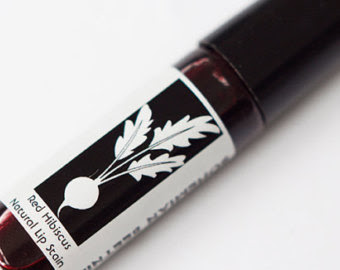 Handcrafted cosmetics and skin care made with botanical colors like beets and hibiscus. “So natural, you could eat it! All handcrafted and made in my own kitchen. I use my own recipes, not from a pre-made base. Our products do not contain chemical preservatives, artificial fragrances, or synthetic chemicals. No mineral colorants here either! Only pure fruits & vegetables, herbs & spices, and oils & butters. Organic ingredients used whenever possible!”
Handcrafted cosmetics and skin care made with botanical colors like beets and hibiscus. “So natural, you could eat it! All handcrafted and made in my own kitchen. I use my own recipes, not from a pre-made base. Our products do not contain chemical preservatives, artificial fragrances, or synthetic chemicals. No mineral colorants here either! Only pure fruits & vegetables, herbs & spices, and oils & butters. Organic ingredients used whenever possible!”
Groundwork
 Organic, fair trade coffees and teas from a popular Los Angeles coffee spot. Chose from single origin, signature blends, limited reserve and decaf coffees—every coffee has a story. Honey-processed coffee anyone? You’ll get a whole different view of coffee here. Flavors are described like poetry. “Groundwork was one of the first certified organic coffee roasters in Southern California and a pioneer in sustainable, relationship-based, and organic coffee sourcing.”
Organic, fair trade coffees and teas from a popular Los Angeles coffee spot. Chose from single origin, signature blends, limited reserve and decaf coffees—every coffee has a story. Honey-processed coffee anyone? You’ll get a whole different view of coffee here. Flavors are described like poetry. “Groundwork was one of the first certified organic coffee roasters in Southern California and a pioneer in sustainable, relationship-based, and organic coffee sourcing.”
Vintner’s Daughter
 A super-potent active botanical skin serum made from “the finest natural, organic and wildcrafted ingredients from conscious growers around the world … While researching her ever more complicated skincare regimen, winery owner, April Gargiulo realized that almost all of her highly touted skincare products contained high levels of ineffective, toxic fillers. As she researched more and discovered the cumulative damage these chemicals have on our systems, April sought out toxin free alternatives…Committed to creating the most active, luxurious serum possible, April began a 2 year-long research and formulation process. Drawing from her experience in fine winemaking, April, alongside natural skincare veterans set out to create a “hero” formulation that would address all of her skincare needs—everything from fine lines and wrinkles to acne to elasticity and general radiance. Much like the fine winemaking process, Vintner’s Daughter begins by sourcing the world’s finest raw ingredients and honors these ingredients through an exacting and time-honored formulation process. The result is Active Botanical Serum, a powerful, multi-correctional serum for face that has earned a cult status the world over.
A super-potent active botanical skin serum made from “the finest natural, organic and wildcrafted ingredients from conscious growers around the world … While researching her ever more complicated skincare regimen, winery owner, April Gargiulo realized that almost all of her highly touted skincare products contained high levels of ineffective, toxic fillers. As she researched more and discovered the cumulative damage these chemicals have on our systems, April sought out toxin free alternatives…Committed to creating the most active, luxurious serum possible, April began a 2 year-long research and formulation process. Drawing from her experience in fine winemaking, April, alongside natural skincare veterans set out to create a “hero” formulation that would address all of her skincare needs—everything from fine lines and wrinkles to acne to elasticity and general radiance. Much like the fine winemaking process, Vintner’s Daughter begins by sourcing the world’s finest raw ingredients and honors these ingredients through an exacting and time-honored formulation process. The result is Active Botanical Serum, a powerful, multi-correctional serum for face that has earned a cult status the world over.
Sun Basket
 A “healthy meal kit service” that delivers organic ingredients and easy, delicious recipes for cooking at home. “We source top-quality organic produce from the best farms, and sustainably-sourced meats and seafood. Plus, our packaging is 100% recyclable and compostable. Our recipes are created by Chef Justine Kelly, award-winning Bay area chef. Sun Basket makes it easy to stick to a healthy diet, no matter your lifestyle – we offer Paleo, Vegetarian and Gluten-Free meal plans, plus breakfast!”
A “healthy meal kit service” that delivers organic ingredients and easy, delicious recipes for cooking at home. “We source top-quality organic produce from the best farms, and sustainably-sourced meats and seafood. Plus, our packaging is 100% recyclable and compostable. Our recipes are created by Chef Justine Kelly, award-winning Bay area chef. Sun Basket makes it easy to stick to a healthy diet, no matter your lifestyle – we offer Paleo, Vegetarian and Gluten-Free meal plans, plus breakfast!”
The Challenge of Finding Product Information
Over the holiday I had reason to do some research on two products.
Both were products I had researched in the past. One was a product that I was considering purchasing for myself (the enameled pot I wrote about last week); the other was a product I was researching for a client.
The enameled pot was available as a brand name product and also as a “knock-off.” I had already researched the brand name possibilities, but not the knock-offs. Since this was a fairly pricey item, I really wanted to buy a knock-off but every time I looked at one, I just felt nervous and didn’t want to take a chance. Particularly since I would be using it for cooking food.
I knew the materials used in the brand name pots because I could call their customer service and get the information. But the knock-offs…you can’t even find out who to call. Store brands usually don’t manufacture their own goods and can’t answer questions. And so in the end I went with the brand name item and felt confident that I knew what the materials are.
That said, researching the other product for my client was a completely different experience. With this product it was very difficult to get any information calling the manufacturers. I really got the runaround. But I did persist and finally did get some of the information I was looking for. By contrast, when I contacted the smaller manufacturers who make this product, most of them responded immediately and were happy to talk with me in detail about their materials. One man had worked for the company for thirty years and we had a long talk. On the other hand, one brand had no manufacturer listing at all and I could even find a website for them.
My conclusion from this experience was:
- MAJOR MANUFACTURERS may or may not know much about their product materials, but at least you can generally contact them and ask
- KNOCKOFFS probably won’t know anything about their materials and you won’t be able to reach the actual manufacturer
- SMALLER MANUFACTURERS generally know most about their materials and are happy to tell you
Transparency and disclosure is a big issue I am working on for 2017. As I’ve said before, every product should fully disclose all materials in a format that is easy for consumers to understand.
This is why last year I started Debra Lynn Dadd Recommended Products, to help business communicate with consumers about their materials. Through this program, I write a Materials Review for products, which lists the materials and also gives background information to help consumers make decisions about the products.
Until all products have this level of transparency and disclosure, stick with brand name products and small businesses, where you can actually talk with someone and ask your questions. If there is no brand name or contact information, don’t buy the product.
Buy from reputable companies that know their materials and are willing to communicate about them.
Splenda Suppresses Thyroid Function, Promotes Weight Gain
This new article from GreenMedInfo.com outlines the range of health effects associated with sucralose (aka Splenda), including the first study to evaluate the effects of Splenda (Sucralose) on thyroid function and metabolism in mammals.
GREENMEDINFO: Spenda Suppresses Thyroid Function, Promotes Weight Gain
Green Chef
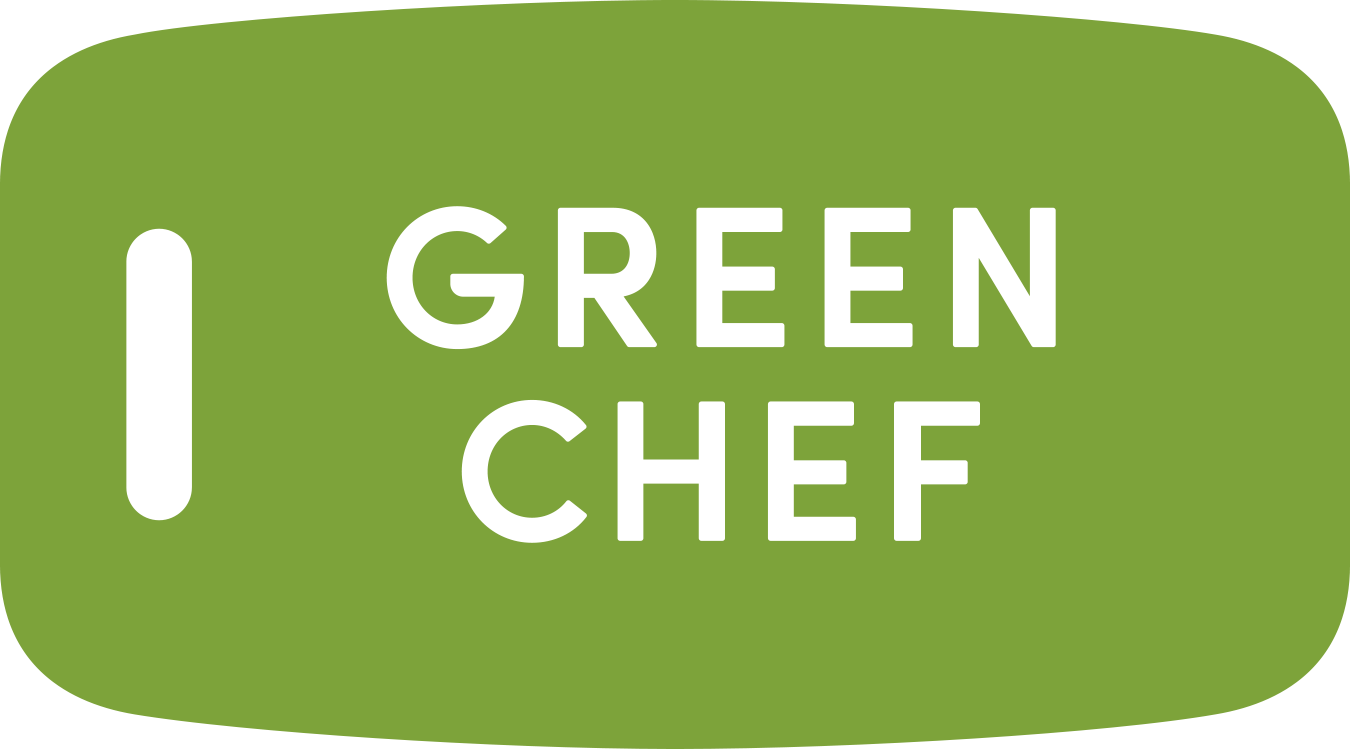 A USDA certified organic subscription meal delivery service that delivers organic ingredients and chef-crafted recipe to your door. All you have to do is follow the recipe using the provided ingredients and your meal is ready. Choose from vegetarian, omnivore, vegan, carnivore, gluten-free and paleo menus. And they profile their organic suppliers, so you can see exactly where your food is coming from.
A USDA certified organic subscription meal delivery service that delivers organic ingredients and chef-crafted recipe to your door. All you have to do is follow the recipe using the provided ingredients and your meal is ready. Choose from vegetarian, omnivore, vegan, carnivore, gluten-free and paleo menus. And they profile their organic suppliers, so you can see exactly where your food is coming from.
A Safe Alternative Slow Cooker
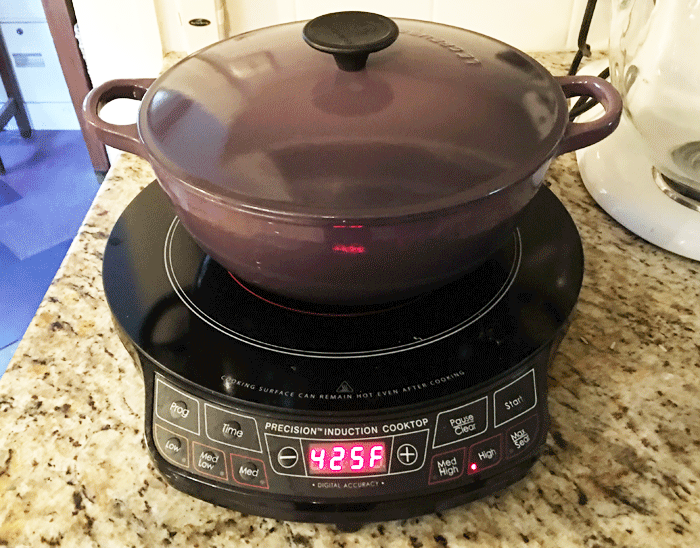
After writing this post I found that I actually first suggested this in 2013.
One of the things I love about Larry is he is really good at coming up with “thinking-outside-the-box” solutions to toxic exposures.
For some years one of the most frequently asked questions is “What slow cooker can I use?” And I’ve always had to say “I don’t know of one that doesn’t have lead in the glaze on the pot.” The only exception to this is the Vita Clay cooker, with an unglazed pot, but this is a rice cooker, not a crock pot of any size].
As some of you know, Larry has been living in California with his parents for the last few years while recovering from an accident. And now he’s in the process of moving back here with me.
While staying with his parents, he saw his father cooking on an induction cooktop. Because he and I both have a tendency to put food on to cook, set a timer and walk away and not hear the timer, he thought we should get one so it will just turn off at the right time and not burn. And that was reason enough for me to agree we should explore the possibility.
An induction cooktop is like a hotplate, but heats food with magnetic induction that directly heats the cooking vessel, so the pot can heat food rapidly. You can also set it to exact temperatures and cooking times, so it will turn off automatically, even if you forget to come and turn it off. It’s so precise, many chefs now use it. It’s easy to carry and can setup anywhere there is and electric plug. So it pretty much can function as a slow cooker.
Magnetic induction doesn’t release toxic pollutants into the air like the combustion by-products from gas. It of course would release some EMFs, but I couldn’t find any data on this. I imagine it wouldn’t be more than an ordinary crock pot and maybe even less.
My biggest concern was the pot. Magnetic induction doesn’t work with my Xtrema cermamic cookware because the cookware needs to be made of a material that is magnetic. You can test any cookware by putting a magnet on it—if it sticks, it will work for magnetic induction. Or look for the induction-ready symbol, or search online for “induction-ready cookware.”
We did some research and decided that the best cooking vessel for us to buy to use with the induction cooker was a cast iron pot with a porcelain enamel finish on the inside. I had already researched Le Creuset and was comfortable with the Le Creuset enamel finish so we bought a Le Creuset soup pot that happened to be on sale at Marshall’s, of all places.
We love this! And we haven’t burned anything since.
We got the NuWave Precision Induction Cooktop. But there are also other brands. We couldn’t find these in stores, but there are many styles on the Internet. We chose this one because it was the one Larry’s father uses and Larry wanted the same one.
NuWave also sells a full line of induction-compatible cookware that has a Duration “ceramic” finish. I called NuWave Customer Service at 1 855 742 2665 and asked what the Duration finish is made of. I found out that they actually have a number of different finishes on various cookware sets and they don’t know what any of them are made from.
I found Duralon online at what looks like the manufacturer’s website. They are in Australia, so they are not available as I am writing this. They have several Duralons made from nylon reinforced with glass or glass and minerals. That’s all I could find. Nylon in general is one of the safest plastics and can be used without melting at very high temperatures.
So while I can’t recommend NuWave’s induction cookware, I can say I’m very happy with my NuWave induction cooker
So this morning, after writing this yesterday, I got up early. I had been soaking beans overnight to cook this morning. Because Larry was still asleep and I myself hadn’t yet learned to use the induction cooker, I decided to just cook the beans “the old way” on the stovetop. Well, the beans boiled over and I had to relight the gas burner and I thought, “If I would just learn to use this induction cooktop, I could just set it to one temperature to bring it to a boil and then program it to other temperature to simmer the beans and then program it to turn off.” And that quite delighted me. I just now need to figure out those perfect cooking times and temperatures and I’ll be able to do that. It’s a whole different thinking process about cooking.
More on Slow Cookers
We’ve been discussing slow cookers on this blog for years.
Just this last week a reader posted a comment and said that recent tests had found some crock pot glazes to be free from lead!
And she sent me the link: TERMINAl VERBOSITY: The skinny on lead in crackpots—It may surprise you!
The anonymous blogger wrote (in 2009) “I don’t like ambiguity, especially when it comes to the health of my children. So I was alarmed when I couldn’t find a satisfactory answer to the question: “Do modern-day crock pot glazes contain lead that can leach into my food?”
So she found the FDA guidelines, called manufacturers, and tested crock pots herself. And she found ZERO LEAD in the top five brands.
Here are some other interesting links from my reader regarding lead glazes in crock pots:
ECO-FRIENDLY BABY/FAMILY PRODUCTS MADE IN USA: Lead in Hamilton Beach crock pots
Regarding this second link my reader wrote, “The lady at Lead Safe America has sons who are lead-injured, so I find her work informative, as she knows firsthand what lead poisoning looks like. It seems to me that some of the crocks contain very low lead because it is inherent in the raw materials, not added in the glaze; I believe that is the point she makes. And this is the same argument made by the Earthpaste toothpaste company — that the lead in their toothpaste is natural in the raw materials. I see that the black Crockpot brand pot at the second link tested as completely lead-free.”
Get an induction cooker and you can choose your cookware. And you can cook in all different sized pots and pans.
More on Aerotoxic Syndrome
In July 2015 I interviewed a former flight attendant on Toxic Free Talk Radio regarding aerotoxic syndrome—a condition caused by toxic chemical exposure during airplane flights. TOXIC FREE TALK RADIO: Aerotoxic SyndromeL How Flying in Airplanes can Affect Your Health
This week, GreenMedInfo has a new investigative report on toxic exposures in the aviation industry.GREENMEDINFO: “Asbestos of the Sky”—The Aviation Industry’s Darkest Coverup
And here’s a documentary about aerotoxic syndrome: UNFILTERED BREATHED IN—The Truth about Aerotoxic Syndrome
And here’s an article about how pesticides are sprayed on passengers: NATURALHEALTH365: Government advises airlines to spray pesticides on passengers. If this title sounds alarming, check out this report that explains when and why pesticides are sprayed: Flyers Beware: Pesticide Use on International and US Domestic Aircraft and Flights
Clothing Companies in India are Cleaning Up Their Act
This week The Washington Post published a piece about health and environmental effects of clothing production in India, and and how “A new crop of small businesses are investing in organic farming, natural dyes and a transparent supply chain that encourages shoppers to think about the effect of their purchases.”
Good news.
EnviroKlenz Face Mask
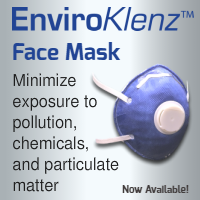 A face mask developed especially for people with MCS. It utilizes the EnviroKlenz patented earth mineral technology which has the ability to chemically dismantle a wide range of undesirable chemical compounds.The fibers of the mask can filter out many common particulates. Reduces exposures to fragrances, VOCs, pollen, dust, dander, odors, and more. It’s light weight, comfortable, reusable, and latex free. I have one here and the mask itself is odor-free.
A face mask developed especially for people with MCS. It utilizes the EnviroKlenz patented earth mineral technology which has the ability to chemically dismantle a wide range of undesirable chemical compounds.The fibers of the mask can filter out many common particulates. Reduces exposures to fragrances, VOCs, pollen, dust, dander, odors, and more. It’s light weight, comfortable, reusable, and latex free. I have one here and the mask itself is odor-free.
Kid Licks
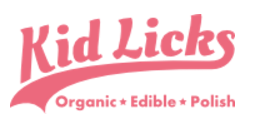 OK OK I finally found a nail polish that I can recommend. It’s “so natural it’s edible.” Really. Zero toxic fumes. And some ingredients are organic. This stuff smells like fruit. The polish goes on smoothly and has a beautiful finish. Vibrant color. I can’t find anything toxic about it. Takes longer to dry than toxic nail polish. And it washes right off with water. It’s really designed for little girls to play dress-up, and it wouldn’t stand up to a day of washing hands or dishes. But if you want to play dress-up for a special night out, or put it on your toe nails until your next shower, this would be great. I’m going to play with the sample they sent me.
OK OK I finally found a nail polish that I can recommend. It’s “so natural it’s edible.” Really. Zero toxic fumes. And some ingredients are organic. This stuff smells like fruit. The polish goes on smoothly and has a beautiful finish. Vibrant color. I can’t find anything toxic about it. Takes longer to dry than toxic nail polish. And it washes right off with water. It’s really designed for little girls to play dress-up, and it wouldn’t stand up to a day of washing hands or dishes. But if you want to play dress-up for a special night out, or put it on your toe nails until your next shower, this would be great. I’m going to play with the sample they sent me.
Cotton organic towels
Question from Meryl
Hi Debra,
Thanks for a great site!
I am looking for organic cotton bath towels and bath mat in beige for my bathroom.
Do you have any new recommendations?
Thanks very much for any info!
Debra’s Answer
This was not difficult to find online.
I just typed “organic cotton bath towels beige” into Google and got a number of responses.
Here are some from a popular online retailer:
Here are some other choices…
Plenty to choose from. Also more at Debra’s List: Bath Linens
Hypoallergenic Cluster Fiber
Question from Jamila
Hi Debra,
doing some research, trying to find out what actually IS hypoallergenic cluster fiber used in mattress toppers…is it entirely free of chemicals that can out gas? how can a polyester fiber be hypoallergenic??
Debra’s Answer
Labeling says cluster fiber products are “100% polyester,” but that may be the primary material. Unknown chemicals may be present that are not accounted for.
Cluster fiber is a synthetic alternative to down.
It is “hypoallergenic” because it does not lead to allergic reactions caused by down and feathers.
Nontoxic Mattress Pad for Bedridden Elderly?
Question from Karen
Hi Debra,
I am looking for a mattress pad that will help eliminate bed sores and ulcers for my bedridden husband. We tried a polyurethane product that was nearly $100 for a single bed. It emitted an odor that was unacceptable and we returned it. I have found some websites that are selling a latex based mattress pads but I can’t find any information about whether they are recommended for bedridden elderly people. Do you have any help for me?
Debra’s Answer
Ask the retailers who are selling the latex pads if they are suitable for your needs.
Readers, any experience with this?
Dog Stink
Question from Miko
Hi Debra,
I have dogs and I hate their smell ,and it seems to be a constant struggle to keep them clean/ not stinking with their weekly bath; I use ONLY organic ,human shampoos and that only lasts a couple of days,smell-wise
any ideas about organic alternatives for their bathing? Enzymes ?
anything ,also organic,and non toxic ( the catch words ) to freshen up the air until the next weekly bath? diffusers? incences?
I have a giant and powerful airfilter,which helps with the dust and hairs,etc but the dogs still stink pretty badly
Thanks.
Debra’s Answer
I don’t have dogs, so readers, any suggestions?
Toxic Free Down and Feathers for Pillows and Comforters
Last week I received a comment posted to Q&A: Non-Toxic Comforter. It really needed a whole post to answer, so here I am.
Here’s the comment:
I came to tbis page looking for info as to whether it’s possible to find a non toxic down comforter and thought I’d find info, given the title above but I’m not seeing the toxicity issue addressed. Did I overlook something? It’s my understanding that two of the main concerns w down is that it’s chemically processed and as with most bedding contains fire retardants and other chemicals. Is it possible to get a down comforter free of all these toxic ingredients?
And the answer is yes, it is possible to get a down comforter without chemical processing or fire retardants.
But first I want to answer the question about possible toxic exposures from down.
I’ve been researching and writing about nontoxic and natural products for more than thirty years. And I’ve owned and slept under a few down comforters. I never noticed them to be toxic in any way and so never did any research about how they might be toxic.
However, reading that down might be chemically processed and contain fire retardants, I had to research those specific questions and also see what is being offered today with regards to down comforters.
How Down is Collected
According to the American Down & Feather Council, “80 percent of the down and feathers used globally [are] produced in China; the majority—90 percent—come from ducks.” If you want to read more about this, and how the down is removed from the ducks, you can read all about this here.
But not all down is produced this way.
“The pure and comforting feathers that fill each of our 100% organic cotton shells travel a whopping one hundred miles down the road from Indiana where they are gathered on a small duck farm.” —Coyuchi.
“hand harvested during the molting season of the bird in a effort to not harm the beautiful bird’s or there habitat. After harvesting the down is hand sorted into different levels of quality based on the size of the harvested clusters. The larger the cluster the better the quality. Harvesting and sorting goose down by hand is very tedious and time consuming but it ensures consistent fill quality across our brands from year to year.” —Down & Feather Company.
There is now a Responsible Down Standard that uses Control Union (a certifier of organic agricultural materials) to certify down and feather that come from birds primarily raised for meat and meet strict animal welfare standards. I don’t know what those standards are because the standards page on the RDS website had been removed.
So in choosing a comforter, you want to look for a description of where the down was sourced and by what method. If the website doesn’t tell you, ask.
How Down is Processed
After down is collected, dust and dirt must be removed. This occurs through washing and drying. Washing agents may be used with unknown ingredients and fragrances. Otherwise, it’s pretty much wash and dry in a drying machine.
The International Down & Feather Testing Laboratory , located in Salt Lake City UT “audits and inspects the entire supply chain including farms and other raw material sources, slaughterhouses, synthetic fiber processors, down and feather processors and finished product sewing factories.” So you might want to find out if the down has been inspected by this organization, but I don’t know their standards.
Chemical Treatments Used on Down
The only chemical treatments I could actually find that are used on down are for making it moisture-resistant.
This down is often called “dry-down,” “hydrophobic down” or something similar. It seems to be being offered as an option, so you can choose to avoid it. Or it would be on the label as a benefit. If you don’t see mention of it on the label, it’s likely the down is not moisture-resistant.
The reason down is treated for moisture resistance is because when down gets wet, it loses it’s loft.
What chemical is used to treat the down is anyone’s guess. “some sort of chemical water repellant, “ ” a molecular level polymer applied to individual down plumes during the finishing process, ”nano technology.” I’m guessing that it’s a perfluorinated compound (PFC), which is used to waterproof many outdoor materials. It’s pretty toxic. Teflon is a PFC.
I did find a treatment for moisture-resistance called “Tan-O-Quil-QM.” There is a whole report available about this treatment that says it is a chrome tanning agent used to increase the fill power and a hydrophobic from complex to increase the water repellency. Now I don’t know if this is still being used. The report is from 1968 and the Code of Federal Regulations says that no down can use the term unless the agent actually has been applied to the down. I couldn’t find any down with Tan-O-Quil-QM online, so I think this is obsolete. But chrome may still be used for waterproofing just as it is used for tanning leather.
There is also some speculation that down is treated with formaldehyde, moldicides, flame retardants and other chemicals, but the only actual data I found online was for moisture proofing. And not much on that.
I doubt that you would find flame retardants on down itself. It’s more likely that the finished item would be treated. Researching this I found a post from this very blog where I reported on a study of flame retardants in pillows As expected there was a huge amount of flame retardants in the polyurethane foam pillow (because it is so flammable) and only 6 parts per million in a feather pillow that probably was not even treated.
Comforters Made With Chemical-Free Down
If you are looking for untreated down, forget about buying your comforter at a discount warehouse and instead look for small businesses online.
Here are a few I’ve found.
Northern Goose Down
“truly hypoallergenic & chemical free Goose Down”
Dewoolfson
“Our experience has shown, however, that these chemicals are toxic and not something that we, or our customers, would want to sleep under every night. We know of one case where an employee was exposed to these chemicals, causing burn-like blotches that required several weeks of treatment. It’s far easier and safer to just store your down products carefully, and like anything else, away from damp areas. ”
Coyuchi
“All of our down duvets and pillow inserts are made in the U.S.A. The pure and comforting feathers that fill each of our 100% organic cotton shells travel a whopping one hundred miles down the road from Indiana where they are gathered on a small duck farm. Before filling the inserts, the down is treated with steam twice to kill bacteria and gently washed with a fragrance-free, non-toxic soap to remove bacteria that is incidental to feathers and down. Next, a water-based, non-toxic chemical is used to reduce the static charge that is associated with natural filling. Both the winter weight and lightweight duvets have a 600-fill power for a cozy and comforting sleep.”
Pacific Coast Bedding
Has a whole page on how they process their down.
Allergy Buyers Club
“The down and syriaca in these comforters is the cleanest, least treated fibers we could find anywhere. The down is de-dusted and gently washed up to 8 times in an environmentally friendly cleansing solution and rinsed three times. This cleaning process and renders it pH neutral. This is the most hypoallergenic down comforters we could find – due to the quality of materials used, cleaning process and the addition of the addition of the natural syriaca clusters.”
A Comparison of Certified Organic Mattresses
Read more about certified organic mattresses in the comments
(click here)
There’s been a discussion happening on my Q&A: Berkeley Ergonomics post about organic mattresses and i just want to bring this subject into it’s own post.
The discussion started with a reader asking about a line of mattresses made by Berkeley Ergonomics. I said it looked OK on paper but they were claiming organic certifications and not displaying them. I said “ask for their certifications.”
Well, a reader wrote back and said:
I asked to see the certifications and they refused to send them to me. In fact they got very defensive. I would love to see them if you are able to get them. I am very suspect of any firm who makes organic claims but won’t provide the certificates. They should be PROUD of them, not want to hide them. It is my understanding that they get the fabric from Europe and do all the sewing themselves so they are handling the materials a LOT. I would be very interested to know if they are handling the materials in a fashion that maintains organic integrity.
This is a great question. There are three parts to the making of an organic product:
- the materials need to meet organic standards
- all the facilities that handle the organic material must be certified
- the handling of the material in all the certified facilities also needs to meet organic standards.
In other words, there are multiple certifications and associated transaction paperwork that are required before an item can be certified organic:
- the material that’s being used in the production process, for example cotton, must be certified as having been grown as organic cotton
- all the facilities (beginning with the organic fiber on the certified organic farm all the way to the facility that makes the final stitch) must be certified, and then
- each facility that moves the materials to the next facility in the production process must get a transaction certificate from the organic certifier who certifies the previous facility so that the next facility is assured that the materials are part of the organic production chain.
For a mattress to be an “organic mattress” it needs TWO certifications (in addition to transaction certificates): one for the materials and another as an organic handler, or manufacturer.
I mentioned that Naturepedic is the only certified organic manufacturer that I knew of and a reader commented, “Actually OMI, Lifekind and Savvy Rest are organic.”
So I want to take a look at these four companies: Naturepedic, OMI, Lifekind and Savvy Rest and see how organic each of them are. I will just disclose that I have known Naturepedic for many years and am very familiar with their products, materials, and philosophy (I wrote a review of their materials for Debra Lynn Dadd Recommended Products. But let’s just look at what each has to say on their websites.
Here’s what I’m going to look for and what you should look for when evaluating whether or not a mattress is organic:
- What is the claim?
- Do they have certificates publicly displayed?
- What are the certificates certifying?
- Who has done the certification?
- What are the standards for the certification?
- What are the dates the certificate is valid?
- What is the name on the certificate?
So let’s take a look…
Savvy Rest
Let’s start with Savvy Rest. www.savvyrest.com/certifications
The first certification they list is GREENGUARD GOLD. This is not an organic certification at all. It measures emissions against a certain standard. If you go to their website and search for mattresses you will see that many mattresses qualify to be GREENGUARD gold certified even if they have materials like vinyl covers, that I would not recommend. So this certification does not contribute to their being an organic mattress.
The next Savvy Rest listed certification is USDA Organic. This applies to their Dunlop latex supplier’s rubber tree farms. And then the latex processing is certified by the International Control Union to the Global Organic Latex Standard (GOLS). All that seems fine. Their latex seems to be organic.
Then Eco Institute, which apparently is their latex certifier. Savvy Rest says, “Our Dunlop supplier, Cocolatex, has achieved Eco Institut certification for the purity of their organic latex.” Go ahead, click. Ah, the certificate is for natural latex. This is a “natural” certification. No organic here.
OEKO-TEX Standard 100 also is not an organic standard. This standard says that the material is below an established standard for 100 toxic substances.
The Environmental Protection Encouragement Agency (EPEA) was founded in 1987 by Michael Braungart to implement the Cradle-to-Cradle philosophy. The standards of this philosophy (which I greatly admire) includes the elimination of a list of toxic chemicals. But this is not an organic standard either. This certification is for Radium Foam, their supplier of (petroleum-based) Talalay latex. Again this is not an organic certification. It’s not even natural latex. [Radium Foam wrote to me from the Netherlands and explained that they supply certified natural latex to North America.]
The only thing certified organic about a Savvy Rest mattress is their USDA and GOLS certified organic latex. But not all their latex is organic. Only their USDA and GOLS certified organic Dunlop latex.
Finally, go to the website for the global organic textile standard: www.global-standard.org. There is NO certification for Savvy Rest as an organic mattress manufacturer. So we don’t know know how they are handling these materials.
Therefore, as far as i am concerned, this is NOT an organic mattress.
OMI and Lifekind
I’m putting OMI and Lifekind together because both these brands are made in the same factory, yet they present themselves as separate businesses with separate names and websites.
Let’s first look at their shared GOTS-certified Eco-Factory. You can read about it here on the OMI website and here on the Lifekind website. I’m not questioning that the factory is certified organic, I’m only commenting that they are not showing the certificate. But they do have one. See their listing in the GOTS database
So OMI can legitimately call themselves an organic mattress manufacturer. There is no GOTS certification for Lifekind listed in the GOTS database. I don’t know what the arrangement is between these two brands, but the GOTS certification is for OMI.
That said, let’s look at their individual claims about certification.
OMI
OMI also has a whole page of certifications at www.omimattress.com/Certifications.php.
This page starts out with a whole paragraph of firsts, which may or may not be true. There are no links to substantiation. They end the paragraph with the statement, “and a printout of our mattress emissions can be found on the UL/GREENGUARD website here. That would be great to see a printout of their mattress emissions. But I couldn’t find it.
They then go on to list numerous certifications, including USDA Organic, Texas Department of Agriculture, GREENGUARD, Oeko-Tex, and others that aren’t even certifications. None of them have certificates.
Mixed in with all these are their GOLS certification for organic latex and their GOTS certification. But they don’t even mention that they are a GOTS certified organic mattress manufacturer. They only say that their organic wool, cotton, and fabrics are GOTS certified.
All they need to say is they are a GOTS certified organic mattress manufacturer and show us the certificate. That covers the whole mattress—all the materials and manufacturing process. Their certification is valid until 2-17-2017. I can tell you they are certified because I went to the GOTS website and found their certification.
Lifekind
Lifekind has their own list of certifications at www.lifekind.com/organic-certifications
“Lifekind’s latex mattress cores are certified to the Global Organic Latex Standard. GOLS is a new certification available to mattress manufacturers.” OK. They have a certificate. Valid until December 16. But it’s a certificate for “Organic Mattresses, Inc.” Which is OMI.
And then they go on to list the same materials as given on the OMI certifications page. Look at these two pages and compare them for yourself.
So it’s clear to me that whether a mattress is branded OMI or Lifekind, it’s pretty much the same mattress, made in the same certified factory from the same certified materials. But neither of these companies are presenting their certifications so consumers can see and verify them, and it appears that Lifekind as a company has no certifications at all.
I’d love to see both these companies improve their presentation of their certifications and be more clear about their relationship.
Naturepedic
Naturepedic lists all their certifications at
www.naturepedic.com/the-naturepedic-difference/certifications-awards.
Right at the top of the page they tell us they are a Certified Organic Mattress Manufacturer & Facility. “All Naturepedic mattresses meet the organic and non-toxic standards of the Global Organic Textile Standard (GOTS) and/or the Global Organic Latex Standard (GOLS). U.S. Department of Agriculture (USDA) recognizes GOTS as the standard for organic consumer goods.” And then they link to their certificates, which are made out to Naturepedic. GOTS Certification, GOLS Certification
They also show their organic content standard certification. The Organic Exchange Certification Program which ensures proper tracking of organic material from its source to the finished product. Naturepedic is certified to meet this standard, demonstrating that the organic fiber in their products has been independently verified. OCS 100 Certification.
Naturepedic also has a GREENGUARD GOLD certification and a UL Formaldehyde-Free Verified certification, and Naturepedic products have been scrutinized by scientists and experts to ensure they do not contain any harmful materials for the Made Safe certification. All of these certifications are current and have valid certificates made out directly to Naturepedic and which clearly list all the Naturepedic products.
Therefore, in fact, Naturepedic truly is a GOTS certified organic mattress manufacturer and does business responsibly.
But I also have to add that Naturepedic not only meets the GOTS organic standards, they go above and beyond them.
- Naturepedic developed the patent on using food-grade polyethylene for waterproofing, instead of using vinyl or perfluorinated compounds (PFCs) or polyurethane. Then, Naturepedic has gone yet another step further and is making its food-grade polyethylene from non-GMO sugarcane.
- Naturepedic is now also using its sugarcane based food-grade polyethylene for its mattress cores, for those crib mattresses that do not use steel innersprings. (Naturepedic also does not use latex, even if organic, in its baby products because it has a separate policy not to use any materials in its baby products that might pose allergenic concerns.)
- Naturepedic does not use any chemical flame barriers or any other flame retardant chemicals whatsoever. All Naturepedic products are designed to meet all flammability requirements without having to rely on flame barriers/retardants.
- Naturepedic has purchased its own machine for making binding materials (aka “tape edge”) and is apparently now the only company that makes much of its binding from certified organic cotton.
- Naturepedic has purchased the last machines anywhere in the world that makes encased coils with sewn certified organic cotton encasing. (These are old German machines that are no longer being manufactured.) Virtually all encasing machines available today spray the encasings with glues, but Naturepedic refuses to use any glues/adhesives in any of its products.
- Naturepedic products are almost entirely free of any petroleum based materials or components.
In short, Naturepedic has become the gold standard for mattresses.
And the Moral of the Story Is…
Always, always, always look for the organic certificates, and make sure they are issued to the company making the claim (and not just to one of their suppliers, which proves little, because a supplier’s certification shows no connection to the mattress company) Independent third-party certification is the only way to know materials really are organic and the organic materials are being processed to similar organic standards.
I’m not trying to be critical here. I’m trying to raise the bar.
As consumers we can’t make informed decisions unless we have information about the materials used to make the products, presented to us in a way that are documented and can be understood. And as consumers, we need to learn what the certifications mean and how to read them.
All the information in this post is taken straight from the webpages given. You can go there and see for yourself.
I’d love to know your comments.
Pdfs of the certification pages mentioned that I examined on 28 and 29 November 2016:
Savvy Rest certifications page pdf
OMI certifications page pdf
Lifekind certifications page pdf
Naturepedic certifications page pdf
Help the FTC Stop Organic Fraud
We all want to buy organic, but in order to find out if a product is actually organic, it needs to be properly labeled.
Unfortunately, there are many non-food products that misrepresent themselves as being “organic” with false claims or misleading language.
Organic food has to be certified to the U.S. Department of Agriculture’s National Organic Program (NOP) standards. Non-food products may be certified to USDA Organic food standards, but the NOP doesn’t require certification and it doesn’t enforce against most false “organic” claims on personal care or textile products.
The good news list that the Federal Trade Commissions (FTC) has landed an investigation into organic fraud.
And they want to hear from us about how to stop organic fraud.
Read more about the problem and sign an FTC petition here
To make sure you are getting real organic products:
- For food products—look for the USDA Organic
- For textile products—look for the Global Organic Textile Standard (GOTS)
- For personal care products—look for USDA certified organic ingredients and companies that are certified organic handlers.
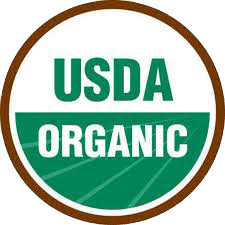
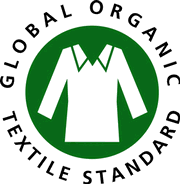
Frog Hollow Farm
 Sweet, tree-ripened organic fresh and dried fruits plus various food products, all grown on their certified organic farm in California. Multiple varieties of cherries, apricots, peaches, nectarines, plums, pluots and pears. These are superior quality fruits. They have a shop and cafe in the Ferry Building Marketplace in San Francisco, and I would always stop and get something when I used to live there. Farm-to-table delivery, fruit clubs.
Sweet, tree-ripened organic fresh and dried fruits plus various food products, all grown on their certified organic farm in California. Multiple varieties of cherries, apricots, peaches, nectarines, plums, pluots and pears. These are superior quality fruits. They have a shop and cafe in the Ferry Building Marketplace in San Francisco, and I would always stop and get something when I used to live there. Farm-to-table delivery, fruit clubs.
Cafe Altura Gourmet Coffee
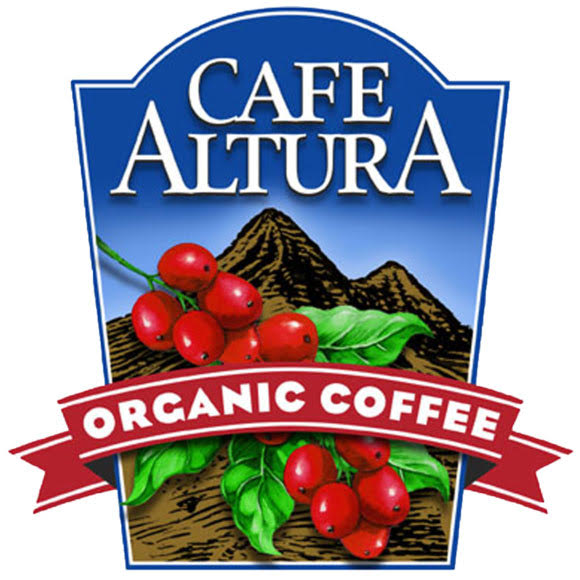 “The original organic coffee, since 1980.” This coffee comes from the Finca Irlanda farm in Chiapas, Mexico, which has now been growing coffee using organic and Biodynamic techniques for decades. It is believed to be the first certified organic coffee farm in the world. Choose from whole bean, ground, and even instant certified organic coffees, including water processed decaf.
“The original organic coffee, since 1980.” This coffee comes from the Finca Irlanda farm in Chiapas, Mexico, which has now been growing coffee using organic and Biodynamic techniques for decades. It is believed to be the first certified organic coffee farm in the world. Choose from whole bean, ground, and even instant certified organic coffees, including water processed decaf.
Creekside Farms
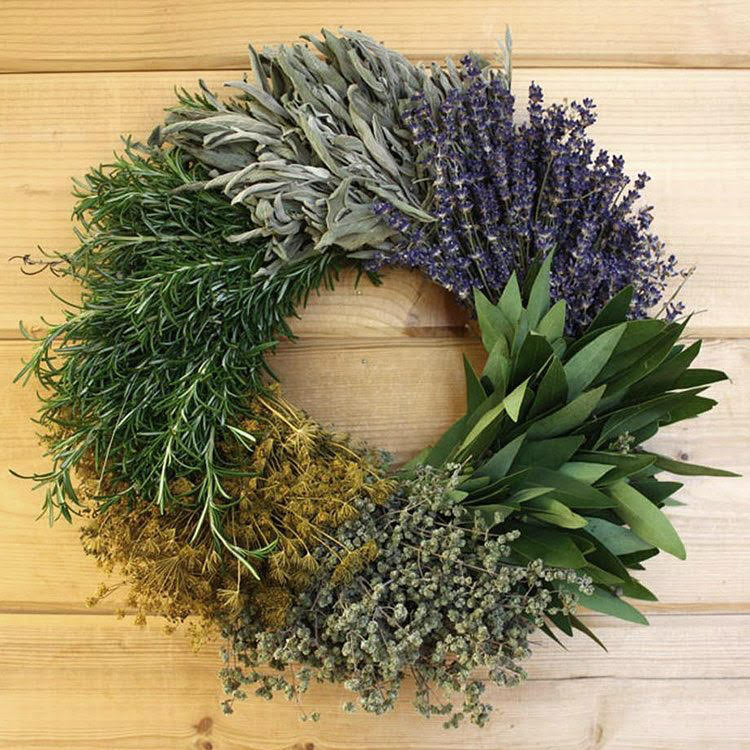 Artisan made wreaths, made on a farm that grows all their materials. Beautiful seasonal wreaths for home and gifts, plus fresh garlands and centerpieces and wreaths with lavender. “Our herbs and flowers are grown naturally without harmful pesticides. We grow and use lavender, olive branches, rosemary, sage, marjoram, oregano, thyme, cilantro, dill and various flowering herbs, such as yarrow, monarda and feverfew in our designs.”
Artisan made wreaths, made on a farm that grows all their materials. Beautiful seasonal wreaths for home and gifts, plus fresh garlands and centerpieces and wreaths with lavender. “Our herbs and flowers are grown naturally without harmful pesticides. We grow and use lavender, olive branches, rosemary, sage, marjoram, oregano, thyme, cilantro, dill and various flowering herbs, such as yarrow, monarda and feverfew in our designs.”
Modern Wool
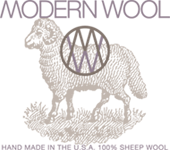 Woolen throws, blankets, scarves and other miscellaneous items made by hand from untreated wool. “We use premium French Merino sheep wool grown in Colorado. Their wool is very soft and not itchy, offering a cozy, comfortable feel for all our products. Next we hand knit them in Southern California. Wool being a natural made material also releases negative ions into the body which build up, strengthen and energize. It is also a temperature regulating material which allows the user to maintain a comfortable body temperature. 100% Wool knits, without synthetic additives, are hard to find and it was in my own fruitless search for them that I decided a product such as this should be on the market and thus Modern Wool was born.
Woolen throws, blankets, scarves and other miscellaneous items made by hand from untreated wool. “We use premium French Merino sheep wool grown in Colorado. Their wool is very soft and not itchy, offering a cozy, comfortable feel for all our products. Next we hand knit them in Southern California. Wool being a natural made material also releases negative ions into the body which build up, strengthen and energize. It is also a temperature regulating material which allows the user to maintain a comfortable body temperature. 100% Wool knits, without synthetic additives, are hard to find and it was in my own fruitless search for them that I decided a product such as this should be on the market and thus Modern Wool was born.
Nail17
“The only product available that kills all 17 bacteria known to cause unhealthy nails without using harsh chemicals or causing painful side effects. The formula was developed by a world-renowned professor at a leading university in Michigan, and remains the only all-natural solution. Athletes, seniors and anyone suffering can be freed from unhealthy nails with Nail 17. Nail 17’s patented formula combines the naturally occurring essential oils of Camphor, Thymol, Menthol, and Eucalyptus, specifically selected for their ability to promote healthy nails. Each individual oil contains properties that effectively stops the progression of the 17 microbes that cause unsightly nails, promoting healthy new nail growth. The inactive ingredient, Isopropyl Alcohol, carries the four essential oils to deeply penetrate the nail plate.” NOTE: I don’t usually recommend isopropyl alcohol, however I am recommending this product which contains it because it is much safer than other treatments.
RX4NAILS
All-natural nail and cuticle oil made with certified organic essential oils guarantees it will improve your nails so they don’t bend, tear, or break. “Rx4Nails is a proprietary blend of all natural, certified organic oils and vitamins. The base ingredient is Soybean oil, with a dollup of coconut oil.”
Ward Pumice Company
“Sustainably harvested pumice kept exactly the way nature made it….over 99% of stores’ so-called pumice is adulterated..crushed to granule and powder, then “glued” back together and injected into molds.In corporations’ quest for product uniformity and large consistent supply, pristine stone’s original abrasive quality is compromised.” Retail outlets
My Thoughts on the Presidential Election
I removed this post and all its comments after a reader brought to my attention that it was off topic for this blog. I agree, I’ve never discussed politics and I will continue that policy.
How to Get Chemicals Out Of Your Washing Machine
I’m writing this post because more often than I’d like I get questions from people who have washed clothing with chemicals in the fabrics and then are not sure if the chemicals are still in the washer. Or they wash something scented and can’t get the fragrance out.
Here’s what to do.
One day I was doing a test on a product and intentionally put perfume on a piece of clothing and then washed it in my washer. My washing machine was now scented and I couldn’t get the scent out.
What worked was a product called “washing machine cleaner”. I used the Clorox brand, but there are others. You find it in the laundry products section of a supermarket.
It’s really really really strong chlorine bleach.
But it did remove the fragrance from my washer.
The product itself is toxic, but we’re dealing with removing industrial chemicals from your washer.
Just use it once and be done with it.
Is Your Gas Stove Producing Combustion By-Products?
On my post Q&A: OK to Use Gas Stove? a reader posted a comment asking “How do you know ‘If your burners are not adjusted properly, …they will produce more combustion by-products’?”
And also since more of you have been testing your indoor air quality by signing up with HomeLab, I’ve frequently been hearing that problems are being found in the kitchen, with combustion by-products being produced by their gas stove. I even found that in my house, where my VOC readings were “in the green” until I turned on my gas stove to cook.
A properly adjusted gas burner should have a blue flame continuously around the burner, like this:

The blue color means the flame is getting enough oxygen and burning completely.
Yellow flames mean the flame is not getting enough oxygen and is not burning completely.

To fix the problem of a yellow flame yourself see http://homeguides.sfgate.com/causes-burner-flame-gas-stove-yellow-82498.html
If a flame is missing, it means that the burner is clogged and needs to be cleaned.

If you want to clean your gas jets yourself see: http://homeguides.sfgate.com/clean-gas-stove-jets-26836.html
This burner really has a problem—uneven, yellow and missing flames—and is producing a lot of combustion by-products:

It’s a good idea to get your gas stove checked by a professional every once in a while, especially if you see any of these problems. Your local energy provider may offer a free service.
Chagrin Valley Soap and Salve Company
A large selection of body care products—including soaps, face and lip care, shampoo bars, and bug repellant—made from “certified organic ingredients–herbs and flowers, vegetables and fruits, sustainable oils and butters and pure essential oils to create fresh, wholesome products that will nourish your skin and be kind to our planet.” The company is certified organic as well as the ingredients.
EarthlyThread
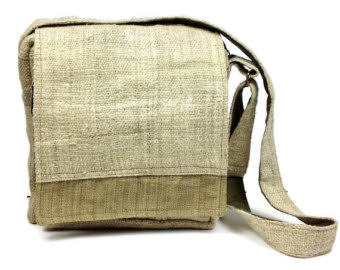 Bags and backpacks made from natural fibers, including hemp, nettle, cotton. Designs are “hippie.”
Bags and backpacks made from natural fibers, including hemp, nettle, cotton. Designs are “hippie.”
O1L23
I tried this oil for hair, skin and nails and it improved my hair with one drop. It’s made from three ancient oils—buckthorn, macula and baobab—each cold-pressed, wildcrafted, organic, non-GMO. Each bottle is hand blended by an organic hairdresser with over 30 years in the industry. This is very potent!
Hullo Pillow
 “A simple, natural pillow designed for comfort….From the 100% organic cotton twill pillow case, to the carefully sourced and selected buckwheat hulls, Hullo pillows are made in the U.S.A. with the finest materials available.” Larger than traditional buckwheat pillows. Easy to adjust fill levels.
“A simple, natural pillow designed for comfort….From the 100% organic cotton twill pillow case, to the carefully sourced and selected buckwheat hulls, Hullo pillows are made in the U.S.A. with the finest materials available.” Larger than traditional buckwheat pillows. Easy to adjust fill levels.
Mary’s Alpaca Poop
Compost tea “poop paks” made from alpaca manure “proven to be best organic fertilizer.” It’s clean, with no mess or smell, so it can be used indoors for houseplants as well as in the garden. It provides all the nutrients found in compost, including beneficial micro-organisms. Approved for organic farming by OMRI.
Big Spoon Roasters
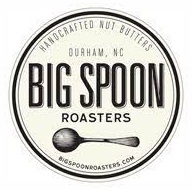 Handcrafted nut butters, made from scratch to order, all made with high quality ingredients. Their basic peanut butter, for example, is made from fresh-roasted peanuts, honey, sea salt, and a bit of organic coconut oil for a very smooth texture. But the really interesting thing is all the unique flavors and combinations. Hot Peanut contains chili peppers. Then there’s peanut cashew, peanut pecan, and peanut cocoa. Then almond cocoa, almond ginger, vanilla peanut sorghum (made with fresh vanilla beans) and more.
Handcrafted nut butters, made from scratch to order, all made with high quality ingredients. Their basic peanut butter, for example, is made from fresh-roasted peanuts, honey, sea salt, and a bit of organic coconut oil for a very smooth texture. But the really interesting thing is all the unique flavors and combinations. Hot Peanut contains chili peppers. Then there’s peanut cashew, peanut pecan, and peanut cocoa. Then almond cocoa, almond ginger, vanilla peanut sorghum (made with fresh vanilla beans) and more.
Review Of Cork Fabric aka Cork Leather
In the last few months I’ve suddenly started seeing many products made from “cork fabric” or “cork leather” and also “vegan leather.” I ignored this vegan leather for a while because in the past vegan leather often mean PVC vinyl, which is not a good substitute, but when I found out it was actually cork, I took a look at it.
You’ve probably seen cork in many consumer products such as wine stoppers and bulletin boards.
The cork used to make cork fabric is thin cork shavings obtained directly from the bark of the cork oak tree. These shavings are glued to a fabric backing to make a fabric that feels very much like leather, but is plant-based.
I called a manufacturer of cork fabric and asked them about the process of making it. The thin layer of cork is “laminated” to a fabric backing using an “environmentally-friendly” adhesive. The standard backing fabric is a polyester/cotton blend.
The company I talked with did not have much information about the laminating process for me to evaluate. This material is apparently made to a vegan standard and has some environmental benefit, but it doesn’t appear to be made with a nontoxic intent.
I have a sample of this fabric, sent from a retailer of products made from it. I just have a small swatch, but even that piece has enough odor to it that I can’t recommend it as being nontoxic. It smells like some kind of fabric finish. I actually had to take the swatch to my garbage can outdoors, and get it out of the house.
So if you see products made from this material, now you know what it is
Bao Cultured
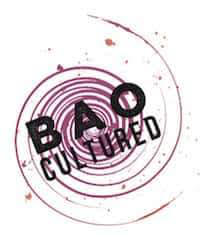 Fermented condiments—catsup, BBQ sauce, hot sauce, and pickles filled with probiotics. Also cultured vegetable slaws and relishes, and flavored kombucha. “Each bottle is packed full of organic ingredients and vibrant probiotic bacteria.”
Fermented condiments—catsup, BBQ sauce, hot sauce, and pickles filled with probiotics. Also cultured vegetable slaws and relishes, and flavored kombucha. “Each bottle is packed full of organic ingredients and vibrant probiotic bacteria.”
Salts of the 7 Seas
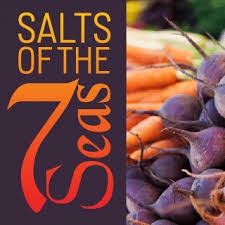 A whole website dedicated to the best of the basic seasonings salt and pepper. Unusual sea salts and blends plus peppercorns. Samplers allow you to learn about salts and peppercorns and choose your favorites. “Salts of the 7 Seas was founded to bring the beautiful and healthy world of whole mineral, all natural sea salts to people everywhere who love to cook and eat. Produced in exacting standards with attention to purity, wholesomeness and respect for the environment.”
A whole website dedicated to the best of the basic seasonings salt and pepper. Unusual sea salts and blends plus peppercorns. Samplers allow you to learn about salts and peppercorns and choose your favorites. “Salts of the 7 Seas was founded to bring the beautiful and healthy world of whole mineral, all natural sea salts to people everywhere who love to cook and eat. Produced in exacting standards with attention to purity, wholesomeness and respect for the environment.”
Leaves & Flowers
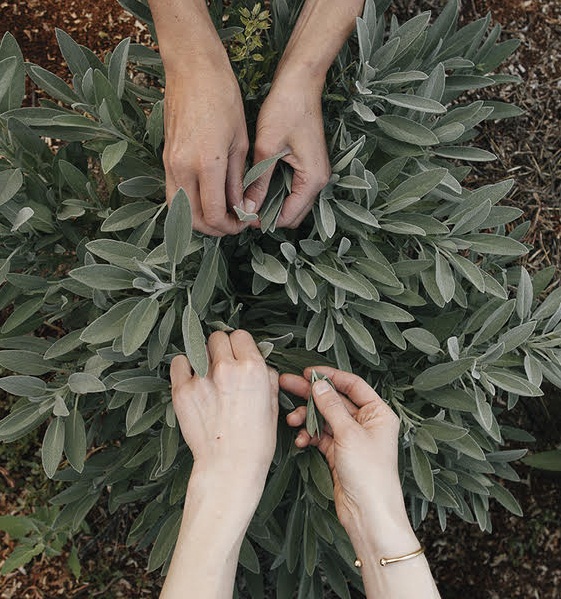 A beautiful and unique selection of handcrafted herbal infusions and premium small batch teas. “Our inspiration comes from the plants themselves – the mythology of their medicine, their potent leaves, delicate flowers, and the intoxicating aroma and flavor they release when infused. At its conception, Leaves and Flowers established a close community of local farms who provide us with exceptional herbs for our herbal infusions. Our accompanying tea collection is sourced similarly to our herbal ingredients, with an ever-changing selection procured from small tea farms in regions of China, Japan and Africa. These farms have been implementing sustainable farming practices for generations, and provide us with teas of extraordinary quality and flavor. We feel fortunate to collaborate with farmers who live in such close relationship with the land. Our farms are either certified organic or apply sustainable farming practices. No chemicals or pesticides are used in the cultivation of our herbs or teas.”
A beautiful and unique selection of handcrafted herbal infusions and premium small batch teas. “Our inspiration comes from the plants themselves – the mythology of their medicine, their potent leaves, delicate flowers, and the intoxicating aroma and flavor they release when infused. At its conception, Leaves and Flowers established a close community of local farms who provide us with exceptional herbs for our herbal infusions. Our accompanying tea collection is sourced similarly to our herbal ingredients, with an ever-changing selection procured from small tea farms in regions of China, Japan and Africa. These farms have been implementing sustainable farming practices for generations, and provide us with teas of extraordinary quality and flavor. We feel fortunate to collaborate with farmers who live in such close relationship with the land. Our farms are either certified organic or apply sustainable farming practices. No chemicals or pesticides are used in the cultivation of our herbs or teas.”
Wild Zora
 Snack bars made from 100% natural meats and organic vegetables that are minimally processed. “We make for you only real food that we give to our own children, family and friends.”
Snack bars made from 100% natural meats and organic vegetables that are minimally processed. “We make for you only real food that we give to our own children, family and friends.”
Ora Organic
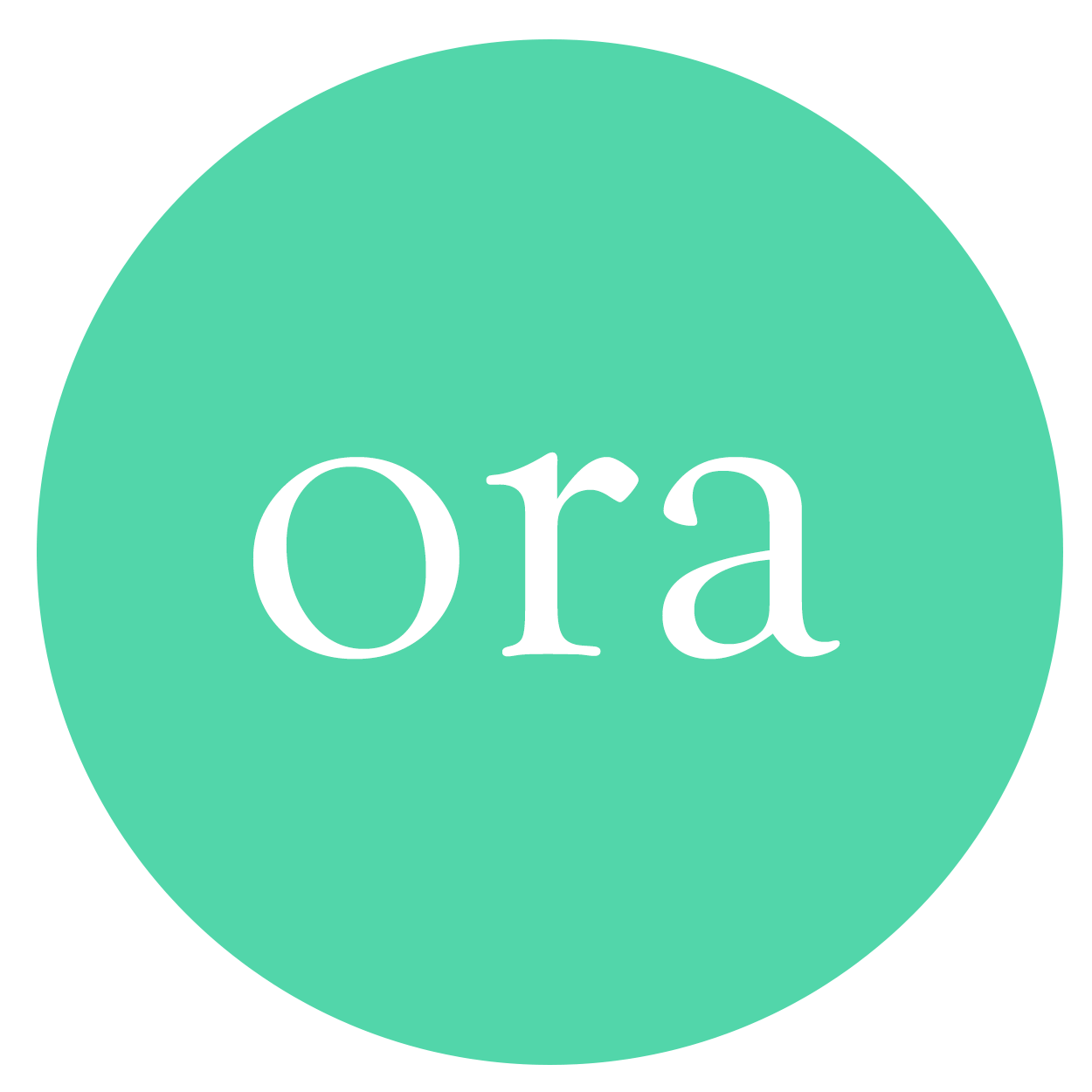 Plant-based supplements made from real whole organic food—and they are designed to taste great too. “We wanted to make the supplement experience enjoyable (not just tolerable), so we brought on an in-house Chef to make our products taste great. No more giant horse sized capsules or pinching your nose to down something that tastes like a handful of dirt and grass.” Just a small collection now of multivitamins, protein, probiotics and omega-3s, but I love the concept of supplements actually being foods that taste good! And they do! I’ve tried them.
Plant-based supplements made from real whole organic food—and they are designed to taste great too. “We wanted to make the supplement experience enjoyable (not just tolerable), so we brought on an in-house Chef to make our products taste great. No more giant horse sized capsules or pinching your nose to down something that tastes like a handful of dirt and grass.” Just a small collection now of multivitamins, protein, probiotics and omega-3s, but I love the concept of supplements actually being foods that taste good! And they do! I’ve tried them.
SaltRox
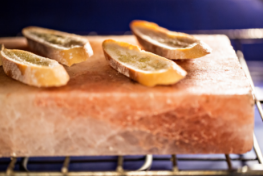 A pink Himalayan salt cooking plate, manufactured to the safe for cooking, grilling, and baking. This plate enhances and seasons your food with before and during the cooking process. No need for cookware—you heat the slab of salt and cook food directly on it.
A pink Himalayan salt cooking plate, manufactured to the safe for cooking, grilling, and baking. This plate enhances and seasons your food with before and during the cooking process. No need for cookware—you heat the slab of salt and cook food directly on it.
Curio Spice Co.
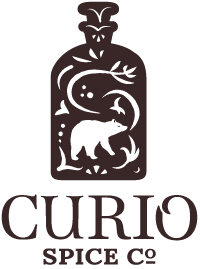 Organic spices and exotic spice blends from around the world and the USA. Spices are sourced direct from origin whenever possible, “with the highest standards in organic and fair trade agriculture. Sourcing from origin highlights the “terroir” of spices from specific regions (just like wine), adding edible luxury, creativity and intense flavor to food, cocktails and more. Simultaneously, Curio’s dedication to direct sourcing and the highest standards in sustainability allow for a premium product and improved farmer livelihoods.”
Organic spices and exotic spice blends from around the world and the USA. Spices are sourced direct from origin whenever possible, “with the highest standards in organic and fair trade agriculture. Sourcing from origin highlights the “terroir” of spices from specific regions (just like wine), adding edible luxury, creativity and intense flavor to food, cocktails and more. Simultaneously, Curio’s dedication to direct sourcing and the highest standards in sustainability allow for a premium product and improved farmer livelihoods.”
Millions of Children Around the World Breathe Highly Toxic Air
 The United Nations Children’s Fund (UNICEF) issued a report last week that shows more than 300 million children around the world are exposed to outdoor air pollution at least six times the level considered to be safe by the World Health Organization (WHO).
The United Nations Children’s Fund (UNICEF) issued a report last week that shows more than 300 million children around the world are exposed to outdoor air pollution at least six times the level considered to be safe by the World Health Organization (WHO).
Clear the Air for Children is a 100-page report that shows the sources of outdoor air pollution, the impact of air pollution on the health of children, the unique vulnerabilities of children, how to protect children from air pollution.
Though the greatest numbers of children affected by the worst air quality is in India, Asia and north Africa, these same pollutants are found in indoor and outdoor air here in the United States and affect our children’s health in the same ways. And our own health as well.
UNICEF: Clear the Air For Children
THE NEW YORK TIMES: 300 Million Children Breathe Highly Toxic Air, Unicef Reports

Satellite image of areas in the United State with excessive particulate pollution in outdoor air.
Air Pollution Affects the Stock Market…And Other Human Activities
According to a new study from researchers at the University of Ottawa and Columbia University, when outdoor air pollution levels rise in Manhattan, stock prices fall.
The study tracked the S&P 500 index, the most widely cited New York Stock Exchange benchmark, over a 15-year period and compared its returns with hourly measures of fine particulate matter in lower Manhattan, where the NYSE is based.
The one standard deviation increase in air pollution decreases returns by 11.9 percent, or what the researchers deemed a “substantial effect on daily NYSE returns.”
“We hypothesize that pollution decreases the risk attitudes of investors via short-term changes in brain and/or physical health.”
CBS MONEY WATCH: Why Investors May Want to Keep Tabs on Air Pollution
New Study Finds Air Pollution a Risk Even for Young Healthy Adults
In the past it was thought that children and elderly people were at greatest risk for heart disease, stroke, and high blood pressure.
But a new study suggests that even healthy people in their twenties are being harmed by particles found in air pollution.
In the new study, a group of 72 people with an average age of 23, from the city of Provo in Utah, provided blood samples during the winters of 2013, 2014 and 2015. When air pollution rose, the scientists found that the number of fragments of dead cells in their bloodstream increased.
One researcher said there appeared to be a significant effect on the health of young adults. “ These findings suggest that living in a polluted environment could promote the development of high blood pressure, heart disease, and stroke more pervasively and at an earlier stage than previously thought.”
“Although we have known for some time that air pollution can trigger heart attacks or strokes in susceptible, high-risk individuals, the finding that it could also affect even seemingly healthy individuals suggests that increased levels of air pollution are of concern to all of us, not just the sick or the elderly.”
INDEPENDENT: Air pollution damages arteries of even healthy young adults, new study shows
VOCs and Heavy Metals Found in Halloween Face Paints
 The Breast Cancer Fund has a new report on toxic chemicals in make-up marketed to kids, including make-up used for Halloween.
The Breast Cancer Fund has a new report on toxic chemicals in make-up marketed to kids, including make-up used for Halloween.
I know I’m a day late for this Halloween, but all this is good to know for next Halloween and any time of year that face painting comes to mind.
Pretty Scary 2 goes beyond looking a labels and had kid’s cosmetics lab tested.
Here are some of the chemicals they found:
Seven different VOCs were found, four having the potential to lead to serious long-term health care effects:
- Toluene, a reproductive toxicant
- Styrene, a probable carcinogen and endocrine disruption compound
- Ethylbenzene, a possible carcinogen
- Vinyl acetate, another possible carcinogen
In addition they found
- fragrances
- heavy metals lead, cadmium, arsenic, and chromium
- toluene
- parabens
- formaldehyde
- ethoxylated ingredients
This comprehensive report covers insufficient regulations, what you can find on the label and what thy cab’t, and much more.
After reading this I went searching for safe face paints. After reading some descriptions of so-called “nontoxic” and “natural” face paints I decided this needed more research before I could recommend them.
But I will give you a link to How To Make Face Paint With Natural Ingredients, which is what I would do for face paint.
Face painting is fun! Just use a safe face paint.
BREAST CANCER FUND: Pretty Scary 2
Microfibers From Washing Synthetic Clothing Polluting World Waterways
Microfibers from the washing of synthetic clothing are part of the larger problem of microplastic pollution in natural waterways. Much thinner than a strand of hair, these tiny pieces of plastic are shed by every garment made with synthetic materials when they are washed in a washing machine.
“I surveyed thousands and thousands of kilometers of ocean. We found microfibers in nearly 90 percent of the samples, and in every sample we found fibers, they were the majority of particles we identified,” said Amy Lusher, a British-based microplastics researcher and a co-author of a 2014 study of microplastic pollution in the Northeast Atlantic Ocean.
Does this affect the environment or our own personal health? Researchers are still trying to determine what effects might climb up the food chain and affect humans eating seafood and our drinking water.
Studies have found that a single synthetic garment can release from up to 700,00 microfibers each.
The solution? Researchers are working to develop a “microfiber catcher” that consumers will be able to throw into their washing machines, trapping the fibers inside the appliance rather than sending them out to sea in wastewater.
I suggest we all wear biodegradable natural fibers instead.
THE WASHINGTON POST: Are Synthetic Fleece and Other Types of Clothing Harming Our Water?
Verdant Kitchen
 Farm fresh USA-grown certified organic ginger and turmeric, in capsules and in a wide variety of other delightful food products that celebrate the properties and flavors of these spices. “These spices have been at the intersection of gourmet and wellness for millennia. At Verdant Kitchen, we use our deep knowledge and the finest ingredients from our own organic farm and around the world to unleash these spices and craft unique, delicious and healthful products.”
Farm fresh USA-grown certified organic ginger and turmeric, in capsules and in a wide variety of other delightful food products that celebrate the properties and flavors of these spices. “These spices have been at the intersection of gourmet and wellness for millennia. At Verdant Kitchen, we use our deep knowledge and the finest ingredients from our own organic farm and around the world to unleash these spices and craft unique, delicious and healthful products.”
[Note some food products may contain sugar, ingredients not listed on website (they will read them to you over the phone). I’m giving you this site for USA-grown ginger and turmeric—two spices/supplements that are usually grown in Asia.]
Meliora Cleaning Products
Basic household cleaners made from coconut soap and natural minerals. They are so transparent about their ingredients they even give you the recipes so you can make them yourself if you want to. Unscented and scented.
Date Me
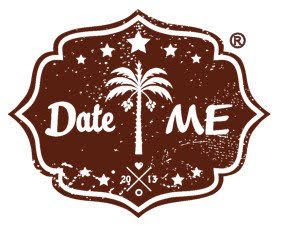 Premium date paste made from organic dates, with no additives. Plus a lot of recipes for using date paste. This is very expensive. You can make date paste at home.
Premium date paste made from organic dates, with no additives. Plus a lot of recipes for using date paste. This is very expensive. You can make date paste at home.
GoodLight Natural Candles
Clean-burning palm oil candles, unscented and scented candles. Throughout the site, these candlemakers have a lot of information about toxic exposures to candles and their decision to make candles out of sustainable palm oil. They have an mission to replace toxic candles in public places (like churches and restaurants) with clean-burning candles, as well has offering a wide variety of palm oil candles in many shapes and sizes for home use. I tried these candles and they burn extremely well. The unscented candles do not have a scent.
Flipside Hats
 Hats for women, men and children, handmade from repurposed pre-consumer waste natural fibers. “We source large rolls of abandoned fabrics from production and dye houses and re-love them into beautifully made hats…it makes us proud to be part of a growing movement of small businesses and organizations that divert 75% of pre-consumer waste—750,000 tons—from landfills and repurpose it into beautiful, functional products we use every day…We source our “waste” from production and dye houses, which is often discarded by big sports and athletic brands. Another 10% of our materials are sustainably sourced fabrics such as Hemp, Organic Cotton and Recycled water bottles.” My spot check turned up with mostly repurposed cotton and wool, only one had spandex. So look around and find the fabrics you like. I’m thinking that the selection of fabrics change all the time, but that customer service will be happy to help you find what you want.
Hats for women, men and children, handmade from repurposed pre-consumer waste natural fibers. “We source large rolls of abandoned fabrics from production and dye houses and re-love them into beautifully made hats…it makes us proud to be part of a growing movement of small businesses and organizations that divert 75% of pre-consumer waste—750,000 tons—from landfills and repurpose it into beautiful, functional products we use every day…We source our “waste” from production and dye houses, which is often discarded by big sports and athletic brands. Another 10% of our materials are sustainably sourced fabrics such as Hemp, Organic Cotton and Recycled water bottles.” My spot check turned up with mostly repurposed cotton and wool, only one had spandex. So look around and find the fabrics you like. I’m thinking that the selection of fabrics change all the time, but that customer service will be happy to help you find what you want.
Organic Candle Company
Aromatherapy and unscented candles made using only certified organic palm oil, organic coconut oil, organic beeswax, organic essential oils, and organic cotton wicks. “Each candle is handmade and our 100% cotton wicks are braided in our facility as well.”
Everything You Ever Might Need to Know About Glyphosate
 Pesticide Action Network (PAN) just released an almost 100-page report titled simply Glyphosate, which compiles information on the chemical, health impacts, human exposures, poisonings, environmental effects, and alternatives. If you have ever had questions about glyphosate, the answers are probably in this report. Bookmark this page, as it is the definitive work on glyphosate, which you may need to refer to at some time.
Pesticide Action Network (PAN) just released an almost 100-page report titled simply Glyphosate, which compiles information on the chemical, health impacts, human exposures, poisonings, environmental effects, and alternatives. If you have ever had questions about glyphosate, the answers are probably in this report. Bookmark this page, as it is the definitive work on glyphosate, which you may need to refer to at some time.
And if your questions aren’t answered in Glyphosate, there’s even more information in this article: ACTIVIST POST: Glyphosate Contaminates The Global Ecosystem: The Damning New PAN Report. This article explains in simple terms key points from the PAN report, plus gives links to many other articles on glyphosate, including a post from this very Q&A: Glyphosate Detox: How to Remove Roundup From Your Body
Pesticide Action Network (PAN) is a global network of over 600 participating nongovernmental organizations, institutions and individuals in over 90 countries working to replace the use of hazardous pesticides with ecologically sound and socially just alternatives such as agroeoclogy. PAN was founded in 1982 and has five independent, collaborating Regional Centers that implement its projects and campaigns.
New Study on Adverse Health Effects Of “Secondhand Scents” by Anne Steinemann
If you experience health effects from fragrances in common consumer products, you’re not alone.
Professor Anne Steinemann—a world expert on environmental pollutants, air quality and health effects—has found that more than one-third of Americans report health problems—from asthma attacks to migraine headaches—when exposed to common consumer products that contain fragrances, such as air fresheners, cleaning supplies, laundry products, scented candles, cologne, and personal care products.
The study also found that fragranced products may affect profits, with more than 20% of respondents entering a business, but leaving as quickly as possible if they smell air fresheners or some fragranced product. More than twice as many customers would choose hotels and airplanes without fragranced air than with fragranced air.
In the workplace, over 15% of the population lost workdays or a job due to fragranced product exposure. Over 50% of Americans surveyed would prefer fragrance-free workplaces. And over 50% would prefer that health care facilities and professionals were fragrance-free.
When exposed to fragrance products, 34.7% of Americans suffer adverse health effects, such as breathing difficulties, headaches, dizziness, rashes, congestion, seizures, nausea, and a range of other physical problems. For half of these individuals, effects are potentially disabling, as defined by the Americans with Disabilities Act.
“This is a huge problem; it’s an epidemic,” says Professor Steinemann.
Professor Steinemann is especially concerned with involuntary exposure to fragranced products, or what she calls “secondhand scents.”
MEDIA RELEASE: Fragranced Products: Risks for People and Profits?
FULL ARTICLE: Fragrance consumer products: exposures and effects from emissions
Toxic Shipping Containers Are Contaminating Imported Goods
“One out of five freight containers arriving in European ports [from Asia] has been fumigated with extremely dangerous, carcinogenic or neurotoxic gases.”
“These toxic gases are left over from the fumigation process, a necessary – sometimes mandatory – operation to kill micro-organisms and pests before transport, in order to prevent the introduction of parasites, bacteria and diseases into the importing country.
“In March 2010, the EU banned the use of methyl bromide, a dangerous pesticide — but many countries, including the U.S., still use it. What’s worse, very few countries actually indicate the presence of toxic gas on their containers, to avoid having to de-gas them.”
“Another more insidious source of toxicity, which puts port workers and consumers at risk, is the vapors emanating from the merchandise itself during transport. Furniture, shoes, clothes made in Asia – mostly Vietnam and China — frequently contain toluene and benzene solvents, which are carcinogen. When this is the case, there are no labels on the shipping container warning port workers to equip themselves against toxic fumes.
“97% of freight containers contained residues of pesticide fumigants and toxic industrial chemicals, mostly 1.2-dichloroethane and methyl bromide, as well as benzene and toluene. About 19% of them had levels exceeding the permitted exposure level. The German researchers told the congress that the fumigants and toxic products “contaminated the transported goods, penetrating into them and settling there.”
These are only a few of the facts reported in the article below. So now we know what some of the chemicals are on imported products and how toxic they are.
WORLDCRUNCH: Toxic Shipping Containers May Be Contaminating Your Food And Clothes
What About an Affordable Sofa Plus Air Filter?
Question from Joelle
Hi Debra,
thanks for all you do in helping families try to live as non-toxic and cleanly as possible!
I have read every single one of the Q&A’s regarding non-toxic, green, eco-friendly, sofas and I am still at a loss. I cannot afford the $5000 price tag for an organic sofa and to be honest, I do not like the looks of most of the options out there. This being said, here is my question and I would truly appreciate your input.
I am at the point where I would like to purchase the most non-toxic sofa that I can afford (Pottery Barn eco-friendly) and add [one of the room air purifiers]=(link to air filters page of Debra’s List) that you did a show on into the room. I used to have an “all or nothing” attitude about detoxing our home but the reality is that the budget will simply not allow for that and we need to get on with joyfully living!
Debra’s Answer
I think you’ve made the best decision that meets your needs.
I once had to make the decision to go work in a toxic office building, so I just took my air filter with me and put it on my desk.
It’s better that you make a less toxic choice that you can afford than make no improvement at all.
As a consumer advocate I have to give you the best choices I can and educate you about the options, and then it’s up to you to choose what is right for you. That’s why I often don’t recommend products that still have some toxic exposures that may be acceptable to some people in some circumstances.
I think you’ve done a great job at figuring this out for yourself.
The old sofa is on its last leg and its time for me to make a decision. Thanks for your help!
Flooring Over Radiant Heat
Question from Cheryl
Hi Debra,
I plan on building a home with radiant in-floor heat. What type of flooring will be safe for me with MCS?
Debra’s Answer
Well, this is a very easy question to answer because the best flooring for anyone to install over radiant heat is also the best flooring for MCS: porcelain, stone, or ceramic tile.
The radiant heat will increase the emissions of any toxic chemicals in other types of flooring, but porcelain, stone, and ceramic tile have no toxic emissions. And These materials are excellent conductors of heat (so they will collect heat and continue to release it after the radiant heating is turned off), do not expand and contract with heat, and are resistant to warping or cracking.
There may be some odor from the mortar, that should outgas quickly, and DO NOT USE GROUT SEALER. Grout sealer is very toxic.
Common Chemicals Cost Us Billions Every Year
Here’s a place we can cut the budget.
“Researchers estimate the United States economy takes a $340 billion hit annually as endocrine-disrupting compounds lower IQs, increase behavior problems and exacerbate health woes like obesity and diabetes.”
And that’s only endocrine disruptors.
According to a new analysis, exposure to chemicals in pesticides, toys, makeup, food packaging and detergents costs the U.S. more than $340 billion annually due to health care costs and lost wages.
“My prediction is that the calculated costs to society will increase substantially once we get better documentation on … additional substances and additional adverse effects.”
—Philippe Grandjean, Harvard University
ENVIRONMENTAL HEALTH NEWS: Toxic Economy: Common Chemicals Cost US Billions Every Year
ButterBuzz
 If you like “bulletproof” type coffee, but don’t like all the bags and jars of different ingredients, ButterBuzz is perfect for you. “Each BuzzPod is packed full of ingredients that are proven to have a variety of health benefits including boosting metabolism, aiding in weight loss and management, improving cognitive brain function, and supporting your hormonal system.” Each pod contains grass fed butter, raw unfiltered honey, raw vanilla powder, raw cacao butter, ground Ceylon cinnamon, cocoa butter—all organic—and hydrolyzed marine collagen.
If you like “bulletproof” type coffee, but don’t like all the bags and jars of different ingredients, ButterBuzz is perfect for you. “Each BuzzPod is packed full of ingredients that are proven to have a variety of health benefits including boosting metabolism, aiding in weight loss and management, improving cognitive brain function, and supporting your hormonal system.” Each pod contains grass fed butter, raw unfiltered honey, raw vanilla powder, raw cacao butter, ground Ceylon cinnamon, cocoa butter—all organic—and hydrolyzed marine collagen.
Nerfertem Naturals
Soaps and body butters made by hand with organic vegetable oils and triple-purified beef tallow from grass-fed pasture-raised cows care for on a small family farm. Pure herbal colorants: turmeric root, annatto seed, French green clay, and others. 100% pure, therapeutic-grade, organic essential oils. I tried this soap and love it. It’s very clean on my skin and the scents are very pure. The mint soap really wakes me up in the morning!
Banner Butter
![]() This small-batch butter is made with “patiently-cultured cream from hormone-free, grass-fed cows with no added flavoring. We go big, but only in taste. Everything else is small, simple and slow.” Salted with sea salt, lightly salted, unsalted, or flavored with combinations like balsamic fig with caramelized onion.
This small-batch butter is made with “patiently-cultured cream from hormone-free, grass-fed cows with no added flavoring. We go big, but only in taste. Everything else is small, simple and slow.” Salted with sea salt, lightly salted, unsalted, or flavored with combinations like balsamic fig with caramelized onion.
Phat Fudge
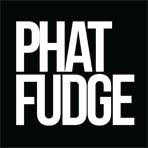 An all-organic fudge made from grass-fed butter, tahini, cacao, ground coffee, turmeric, cinnamon, sea salt, maca, raw honey, vanilla, and cayenne.
An all-organic fudge made from grass-fed butter, tahini, cacao, ground coffee, turmeric, cinnamon, sea salt, maca, raw honey, vanilla, and cayenne.
Wholesome Linen
line of sleep essentials for infants and toddlers made from organic linen fabrics and raw flax fibers. Selection includes a toddler car seat liner. “Our products are soft, hypo-allergenic, machine washable and long lasting. We make them with100% organic raw flax fibers, without adding any dyes or bleaches. We source our flax from certified organic farms in Europe where it has been grown the same way for generations. We turn it into high quality essential sleep products that we deliver to you from Denver, Colorado.”
Modify Furniture
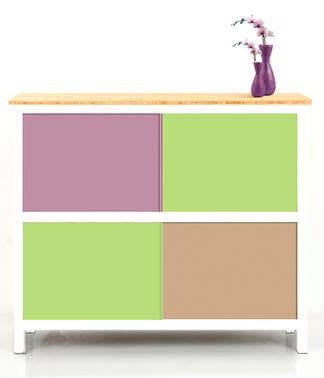 Simple, modern, and colorful, this furniture is designed to change as your needs change. You pick your frame style and color then front and back panel colors, and accessories, At any time you can change your colored panels for new colors! Made from rapidly renewable bamboo, recycled content aluminum, organic powder coating and low VOC finishes.
Simple, modern, and colorful, this furniture is designed to change as your needs change. You pick your frame style and color then front and back panel colors, and accessories, At any time you can change your colored panels for new colors! Made from rapidly renewable bamboo, recycled content aluminum, organic powder coating and low VOC finishes.
Are Flannel Sheets Free of Hazardous Chemicals?
Question from Steve
Hi Debra,
I came across some of you posts and writings as I was searching for bedsheets. I would like to know if all flannel sheets are free from hazardous chemicals. Is it safe to buy flannel sheets that are not organic? Must they state that they are free from chemicals on packaging or are all flannel sheets safe because/if they are not treated to be wrinkle free, easy care, etc? I greatly appreciate your advice.
Thanks,
Steve.
Debra’s Answer
All flannel sheets are “safe” in the sense that they
- have no harmful finishes (they are naturally wrinkle-free because of the weave”)
- pesticides are removed as a by-product of processing in raw cotton into fabric
- dyes are “color-fast,” which means they stay in the fabric
Organic flannel sheets would be even better, though the benefit is more environmental.
I myself sleep on non-organic flannel sheets and have for years.
The only problem I’ve ever had is sometimes they use plastic printing for certain designs. Otherwise, a quick tumble in the washer and dryer and I’m always happy with them.
Latex Wood Slat Bedframe Strips—10 Years Later
Today Larry is working on removing the latex strips that we glued to the slats on our wood bed frame about ten years ago.
It sounded like a good idea at the time: latex strips just on the slats, which would give extra cushioning and still allow the natural wool mattress to breathe. I don’t like the odor of latex, so I didn’t want a whole mattress.
I did have to endure the outgassing of the latex for some weeks, but then it was tolerable and comfortable.
But about a year or two ago I started noticing a lot of dust and bits of latex under the bed. The latex was disintegrating!
This has gotten to be such a problem that Larry has taken the entire bed apart this morning and is pulling the latex strips off the slats. It is creating so much dust he had to bring in the shop vac because our little household Miele couldn’t handle the amount of dust that is being created.
I don’t know if this is a problem for pillows and mattresses, but it is a problem for our two-inch square strips. They just dried out. Maybe they were dehydrated by six months of air conditioning. I don’t know. I just know that it became such a mess we had to remove them.
Peg and Awl
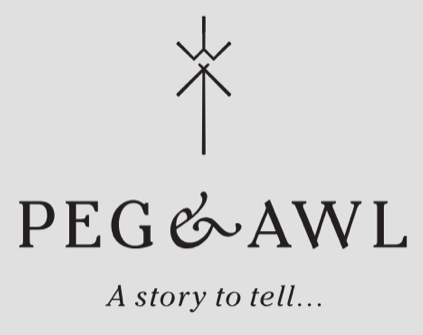 “Useful objects for the home” made from reclaimed wood, leather, and natural fiber fabrics. “To make our wares, we gather materials from flea markets and old shoppes, abandoned houses and torn-down buildings, construction sites, yard sales, and dirty basements. Most of what we use—leather from baseball gloves and drawing-room chairs, and WWII gun slings, pages from outdated medical texts and antique seed catalogs, misplaced photographs of people long dead, fabric from bedding, aprons, window covering—is more than a century old. Every item bears marks of a not-fully-known and not-quite-finished past” While they do not add any toxic materials when making their wares, note that some of their materials may have origins unknown, so proceed with caution and ask questions.
“Useful objects for the home” made from reclaimed wood, leather, and natural fiber fabrics. “To make our wares, we gather materials from flea markets and old shoppes, abandoned houses and torn-down buildings, construction sites, yard sales, and dirty basements. Most of what we use—leather from baseball gloves and drawing-room chairs, and WWII gun slings, pages from outdated medical texts and antique seed catalogs, misplaced photographs of people long dead, fabric from bedding, aprons, window covering—is more than a century old. Every item bears marks of a not-fully-known and not-quite-finished past” While they do not add any toxic materials when making their wares, note that some of their materials may have origins unknown, so proceed with caution and ask questions.
Fair Isle
 Mostly farm-to-table pantry items (plus botanical skin care and wellness products, all jumbled on one page). “All made by hand 30 miles out sea on the island of Nantucket. Together with my love and Iley’s papa, Jacob, we grow and wild-harvest many of the ingredients used in our culinary provisions, teas and herbs as well as our Vital healing botanical apothecary. If we can’t grow or find something locally we then source from organic sustainable suppliers. Products are made in small batches, often to order, and are packaged in recycled glass jars and bottles with environmentally friendly labels printed in the US.” I’m thinking the selection will change based on available ingredients, so just take a look and see what’s seasonal.
Mostly farm-to-table pantry items (plus botanical skin care and wellness products, all jumbled on one page). “All made by hand 30 miles out sea on the island of Nantucket. Together with my love and Iley’s papa, Jacob, we grow and wild-harvest many of the ingredients used in our culinary provisions, teas and herbs as well as our Vital healing botanical apothecary. If we can’t grow or find something locally we then source from organic sustainable suppliers. Products are made in small batches, often to order, and are packaged in recycled glass jars and bottles with environmentally friendly labels printed in the US.” I’m thinking the selection will change based on available ingredients, so just take a look and see what’s seasonal.
Watch the Movie STINK! Free for the Month of OCTOBER
STINK! opens with a foul smell and a pair of kids pajamas. And a single father trying to find out what that smell could possibly be. But instead of getting a straight answer, director Jon Whelan stumbles on an even bigger issue in America, which is that some products on our store shelves are not safe — by design.
Stink! tells us about our exposures to toxic chemicals from consumer products and lack of regulations through the eyes of a father who has lost his wife to cancer. He buys pajamas for Christmas presents for his two tween daughters and is appalled by the overwhelming odor.
Stink! takes us through his journey to find out what’s in the pajamas that causes the odor, shows the world of undisclosed “fragrance” chemicals, and even includes a a teenage boy who cannot attend high school because he goes into anaphylactic shock when he breathes a certain body spray used by many of his classmates.
There’s a lot of good information about toxics in this film that shows the problem. It’s well worth watching and a good movie to show others, so they can get an idea of the problem.
[Just as an aside I want to say that this film is full of interviews with people who are working to change the chemical industry and lack of regulation. One of them shown over and over is Jeffrey Hollander, founder of Seventh Generation, who just sold Seventh Generation to Unilever, manufacturer of the product that won’t disclose the chemicals in the body spray product that sends the teenage boy into life-threatening anaphylactic shock. This is the company that is now manufacturing the Seventh Generation brand.]
At the end of the film, the solution presented is
- manufacturers need to disclose their ingredients and
- there needs to be better regulation. And the closing scene is his daughter calling an online business that is offering “flame-proof” pajamas, asking them if the pajamas contain flame retardants.
What this movie is missing is any mention at all that there ARE toxic-free products available.
A big message of this movie is that we can’t make decisions as consumers unless the big corporations disclose the ingredients of their toxic products. Well, I would like to see that happen too, however, it’s not a prerequisite for us to determine the products are toxic or for us to have the power to identify, find, choose and purchase toxic-free products.
My concern about the film is that it leaves the viewer with the idea that the world is 100% toxic, and there are no safe alternatives. That may be the filmmaker’s world, but I know that’s not true.
So if you see this film and share it, tell everyone to come to my website after to find out how to live toxic free.
Watch STINK! Free for the Month of October
Bunny Power Products
Rabbit manure tea, “That will help your gardens flourish…produced at our family run farm in a healthy, sustainable setting”.
Breathe Sleepwear
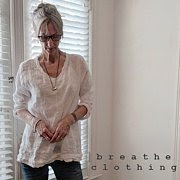 Surround yourself with linen while you sleep with linen sleepwear for women and men made by a small clothing design studio in the USA. “Artfully designed, impeccably crafted linen sleepwear….not mass produced, but made one at a time for each customer…carefully created from the initial design, pattern making, through the meticulous construction process, using only exceptional quality linens and other natural materials…not meant to be seasonal or trendy & my customers understand that they are making an investment. My hope is that these garments will become a staple in your wardrobe for years to come. I believe you will love your Breathe Clothing.”
Surround yourself with linen while you sleep with linen sleepwear for women and men made by a small clothing design studio in the USA. “Artfully designed, impeccably crafted linen sleepwear….not mass produced, but made one at a time for each customer…carefully created from the initial design, pattern making, through the meticulous construction process, using only exceptional quality linens and other natural materials…not meant to be seasonal or trendy & my customers understand that they are making an investment. My hope is that these garments will become a staple in your wardrobe for years to come. I believe you will love your Breathe Clothing.”
Kinderfeet
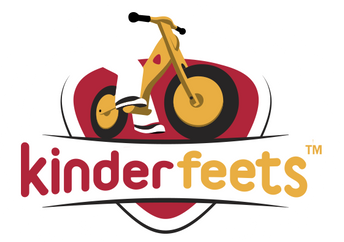 A wooden push “balance bike” to ease the transition to pedal-powered bicycle at a toddler’s comfort level. Designed by a Dutch father as a gift to his son, “Our balance bikes are made from sustainable birch wood, from a replenishable source. The airless tires are completely biodegradable. We use minimal packaging material made from recycled paper and water based-ink. The chalkboard finish paint is water-based and the lacquer is non-toxic.” Also push bikes made from bamboo wood.
A wooden push “balance bike” to ease the transition to pedal-powered bicycle at a toddler’s comfort level. Designed by a Dutch father as a gift to his son, “Our balance bikes are made from sustainable birch wood, from a replenishable source. The airless tires are completely biodegradable. We use minimal packaging material made from recycled paper and water based-ink. The chalkboard finish paint is water-based and the lacquer is non-toxic.” Also push bikes made from bamboo wood.
Luvnest
Herb blends for use in chick and chicken bedding to support health. “Our products use 100% USDA Certified Organic herbs, are preservative and additive free – and are completely natural and edible.”
Touch Of Eco
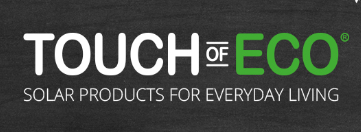 Useful and affordable products that run on solar power, such as individual lights, strings of lights, cell phone recharger, flashlights, and much more.
Useful and affordable products that run on solar power, such as individual lights, strings of lights, cell phone recharger, flashlights, and much more.
Northwest Wild Foods
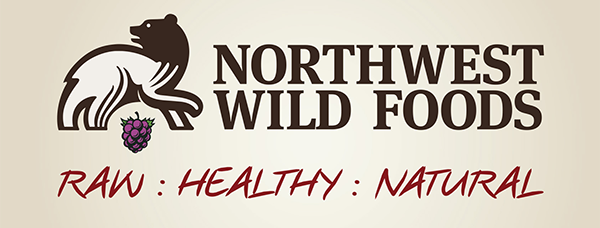 A small, family-owned company that is dedicated to offering the “rare and natural wild flavors” of the Pacific Northwest. Both raw foods and prepared into various food products. “Our wild berries are hand-gathered in the lush woodlands of the Cascade and Olympic Mountains where our intrepid pickers often find themselves competing with Black bear, cougar and other native animals for the sweet, juicy berries. Perhaps our favorite wild berry is tiny Wild Mountain Blackberry that our family has been collecting for more than three generations….” Supplies are limited by necessity.
A small, family-owned company that is dedicated to offering the “rare and natural wild flavors” of the Pacific Northwest. Both raw foods and prepared into various food products. “Our wild berries are hand-gathered in the lush woodlands of the Cascade and Olympic Mountains where our intrepid pickers often find themselves competing with Black bear, cougar and other native animals for the sweet, juicy berries. Perhaps our favorite wild berry is tiny Wild Mountain Blackberry that our family has been collecting for more than three generations….” Supplies are limited by necessity.
Project TENDR Takes on Risks of Neurotoxins
Project TENDR is a collaboration of leading scientists, health professionals and children’s and environmental advocates who came together in 2015 out of concern over the now substantial scientific evidence linking toxic environmental chemicals to neurodevelopment disorders.
These disorders include autism spectrum disorder, attention deficits, hyperactivity, intellectual disability and learning disorders.
In July, Project TENDR is releasing a scientific Consensus Statement as a national Call To Action to significantly reduce exposures to chemicals and pollutants that are contributing to neurodevelopmental disorders in America’s children.
The “prime examples” of neurotoxic chemicals listed in the Statement are
• Organophosphate (OP) pesticides
• PBDE flame retardants
• Combustion-related air pollutants, which generally include PAHs, nitrogen dioxide and particulate matter, and other air pollutants for which nitrogen dioxide and particulate matter are markers
• Lead
• Mercury
• PCBs
Check their Chemicals & Pollutants tab on the main menu for more information about how these chemicals can affect children’s development.
Everyday Toxic Chemicals That Interfere With Fertility
If you’re trying to get pregnant, here are two resources to read.
One from Rodale Wellness and one I wrote when I was invited to speak at a summit on infertility
RODALE WELLNESS: 9 Everyday Chemicals That Could Be Screwing with Your Fertility
DEBRA LYNN DADD: Protect Your Baby From Toxics Before Birth
How to find Mint-Free Toothpaste
Question from Rose
Hi Debra,
Can you recommend a toothpaste without mint, which is similar to Sensodyne in being: less abrasive/easy on sensitive teeth/ and generally helpful in preventing erosion?
I like Tom’s toothpaste, but the dental tech recommended Sensodyne.
I am allergic to processed Mint, alas.
I checked out Merz Apothecary here in Chicago, but all of the tooth pastes have mint.
Thank you.
Ciao’
Rose
Debra’s Answer
There are actually a number of toothpastes that don’t contain mint. They either have no flavoring, or flavors such as lemon or anise or simply the flavors of active ingredients.
See the Dental Care page of Debra’s List.
Readers, what mint-free toothpastes do you like?
Are Menstrual Cups Safe To Use?
Question from Leslie
Hi Debra,
Have you seen the study that claims the Diva Cup menstrual cup can cause endometriosis? I want to use one but obviously after reading that study I’m very conflicted. It claims that since the blood is not absorbed it can funnel back up to the ovaries and cling to them. If I understood correctly.
This is the report I read. http://assocpharmtox.org/pages/CupsIntro3.html
Thanks
Debra’s Answer
The study you read is ten years old.
There is more recent information.
Menstrual Cups and Endometriosis gives a good review of the dilemma. Basically, there is no longer a concern that menstrual cups are a cause of endometriosis. This website lists all the companies that now make menstrual cups, but they also have resources for cloth pads and organic pads and tampons. So it’s basically a good site for considering all your natural options.
The Endometriosis Foundation has no obvious warnings about not using menstrual cups that I could find on their website.
Menstrual cups are made from either rubber or medical-grade silicone. Both these materials are unlikely to cause harm for this use.
So if you want to use a menstrual cup, I see no reason not to.
Kalon Studios
 Simple sustainable furniture made from domestic hardwoods, organic cotton and wool, latex from organic trees, and other natural and nontoxic materials. “Based in Los Angeles, California and in Germany, Kalon Studios is a design studio focused on contemporary form with a particular aesthetic of simple, subtle and unobtrusive beauty. Kalon Studios’ design focus is as much on quality of design as it is on material, method and process. All of our products are non-toxic, fully sustainable, and domestically produced respectively in the in the US and in Europe. Each piece is handcrafted to order by traditional furniture makers. The ancient Greek concept of ‘kalon’ meant beauty linked with moral worth and usefulness, a value we seek to express in our designs.” Oh,, I love this! “Materials + Methods” is the first item on the main menu.
Simple sustainable furniture made from domestic hardwoods, organic cotton and wool, latex from organic trees, and other natural and nontoxic materials. “Based in Los Angeles, California and in Germany, Kalon Studios is a design studio focused on contemporary form with a particular aesthetic of simple, subtle and unobtrusive beauty. Kalon Studios’ design focus is as much on quality of design as it is on material, method and process. All of our products are non-toxic, fully sustainable, and domestically produced respectively in the in the US and in Europe. Each piece is handcrafted to order by traditional furniture makers. The ancient Greek concept of ‘kalon’ meant beauty linked with moral worth and usefulness, a value we seek to express in our designs.” Oh,, I love this! “Materials + Methods” is the first item on the main menu.
JADETribe
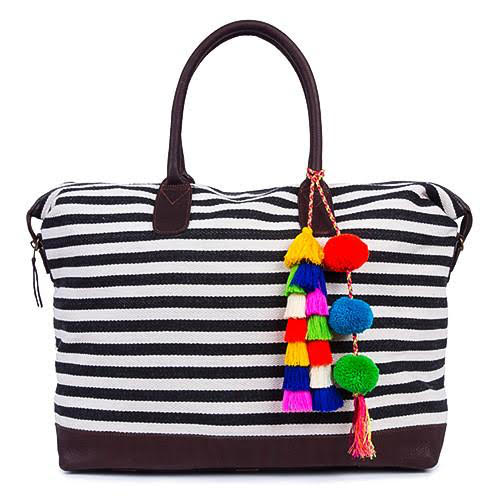 Delightful 100% natural fiber bags, totes, weekender bags and more. “Captivated by the colors of the natural organic dyes coupled with their incredible weaving skills and the remarkable textiles these women were creating, Kimberly employed this village to create exclusive colors and patterns that became the foundation of the JADEtribe handbag collection. A little bit beach-y, a little bit bohemian jet set, and 100 percent natural and ethical, JADEtribe is the true embodiment of fashion with a conscience. Whether it’s the handbag repurposed from hand embroidered baby carrier cloths, or the hand braided jewelry that jingles, or the organically dyed and hand loomed traditional textiles, each element of JADEtribe carries in it a piece of Kimberly’s heart and a piece of the hearts of the women in South East Asia whose lives have been improved by making it.” Also ready-to-wear clothing.
Delightful 100% natural fiber bags, totes, weekender bags and more. “Captivated by the colors of the natural organic dyes coupled with their incredible weaving skills and the remarkable textiles these women were creating, Kimberly employed this village to create exclusive colors and patterns that became the foundation of the JADEtribe handbag collection. A little bit beach-y, a little bit bohemian jet set, and 100 percent natural and ethical, JADEtribe is the true embodiment of fashion with a conscience. Whether it’s the handbag repurposed from hand embroidered baby carrier cloths, or the hand braided jewelry that jingles, or the organically dyed and hand loomed traditional textiles, each element of JADEtribe carries in it a piece of Kimberly’s heart and a piece of the hearts of the women in South East Asia whose lives have been improved by making it.” Also ready-to-wear clothing.
Wild Hill Botanicals
A skincare line based on the southwest coast of Vancouver Island, Canada. “Our connection to this landscape and our ongoing study of the amazing botanicals it has to offer has been the inspiration for our formulations. We believe that organic is just plain better. Organic ingredients have been shown to be higher in antioxidants, essential fatty acids, vitamins, and minerals. Wild plants are known to contain many molecules not present in their domesticated cousins. This core value of bringing together organic and sustainably harvested wild ingredients serves not only your skin, but also the greater environment, which we take very much to heart. We focus on growing organic herbs on our farm in East Sooke, using the freshest organic oils and house made hydrosols to craft products that are amazing, completely natural and inspired by the landscape of this beautiful coast. We take pride at Wild Hill in creating each of our products in small batches by hand to ensure freshness and quality control. We think that skincare and bath rituals should be a gratifying and important part of self-care in everyone’s day. Love yourself, take some downtime from this hectic world, and absorb the power of nature.”
Farm Fresh Clothing
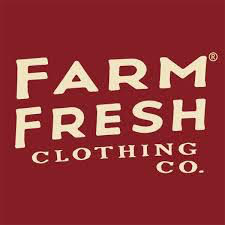 Organic cotton t-shirts for men, women and children, sewn and printed in the state of California, printed by hand with water-based inks. Will do custom printing with your art (minimum 150 shirts).
Organic cotton t-shirts for men, women and children, sewn and printed in the state of California, printed by hand with water-based inks. Will do custom printing with your art (minimum 150 shirts).
Blue Mountain Organics
 A great selection of organic raw and sprouted foods that are hard to find other places. Here you can buy nuts already soaked and sprouted, raw sprouted nut butters, spouted nut, bean and seed flours, raw treats, superfoods, and more. Every product is organic.
A great selection of organic raw and sprouted foods that are hard to find other places. Here you can buy nuts already soaked and sprouted, raw sprouted nut butters, spouted nut, bean and seed flours, raw treats, superfoods, and more. Every product is organic.
The Healthy Porcupine
All natural, handmade tallow-based soaps that are free of palm oil.
“We do not use chemical fragrance oils, dyes, or preservatives. We also use locally sourced ingredients whenever possible- all tallow that is used is from grass-fed cows and comes from local New Hampshire farms. Our soaps are long-lasting hard bars, with a luxurious lather that leaves your skin feeling soft and rinses off clean. We truly believe you’ve never used anything like it!”
Roots Wrap
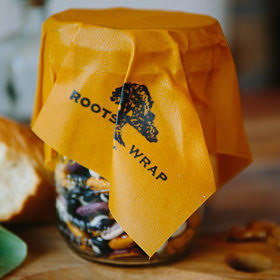 A great alternative to plastic wrap for food storage. It is an easy way to do something good for the planet and your food! Our wraps are made right here in beautiful Maui from organic cotton hemp muslin, organic beeswax, organic jojoba oil, and tree resin. The antibacterial properties of the beeswax, hemp, and jojoba oil help to keep food fresh and allow you to use your Roots Wrap over and over.” Click on the menu item “sustainable way” to read all about their sustainable practices.
A great alternative to plastic wrap for food storage. It is an easy way to do something good for the planet and your food! Our wraps are made right here in beautiful Maui from organic cotton hemp muslin, organic beeswax, organic jojoba oil, and tree resin. The antibacterial properties of the beeswax, hemp, and jojoba oil help to keep food fresh and allow you to use your Roots Wrap over and over.” Click on the menu item “sustainable way” to read all about their sustainable practices.
Simply Straws
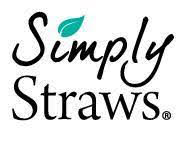 Glass straws in various sizes and shapes plus…you can have them etched with your name (or anything else) or buy them in a set with mason jars with special lids that hold the straws (great for taking drinks on the go).
Glass straws in various sizes and shapes plus…you can have them etched with your name (or anything else) or buy them in a set with mason jars with special lids that hold the straws (great for taking drinks on the go).
Is Your Tap Water Tainted With Carcinogenic Chromium-6?
 Environmental Working Group (EWG) released another report last week on our exposures to toxic chemicals in everyday life.
Environmental Working Group (EWG) released another report last week on our exposures to toxic chemicals in everyday life.
If you remember the true-story movie Erin Brockovich from 2000, chromium-6 was the chemical discovered to cause numerous cancer cases in the town of Hinkley, California. Now EWG has tested samples of tap water across the nation and found this same chromium-6 in 75% of water supplies in America.
According to EWG, “In 2008, a two-year study by the National Toxicology Program found that drinking water with chromium-6, or hexavalent chromium, caused cancer in laboratory rats and mice. Based on this and other animal studies, in 2010, scientists at the California Office of Environmental Health Hazard Assessment concluded that ingestion of tiny amounts of chromium-6 can cause cancer in people, a conclusion affirmed by state scientists in New Jersey and North Carolina.”
In 2010, an EWG investigation found chromium-6 in the tap water of 31 cities. This prompted the EPA to order local water utilities to begin the first nationwide tests. From 2013-2015 more than 60,000 samples of drinking water were taken. EWG’s analysis of the test data estimates that water supplies serving 218 million Americans – more than two-thirds of the population – contain more chromium-6 than the California scientists deemed safe.
EWG: ‘Erin Brockovich’ Carcinogen in Tap Water of More Than 200 Million Americans
EWG: ‘Erin Brockovich’ Carcinogen in Tap Water of More Than 200 Million Americans – The Study
Are You One of the 218 million?
EWG has provided an interactive map of the USA,where you can click on the county you live in and find out if you have chromium-6 in your water.
I checked Pinellas County, Florida—where I live—and found that chromium-6 was detected in 87% of samples tested.The range was from “none detected” to 0.620 parts per billion (ppb). The California Public Health Goal is 0.02 ppb.
What to Do
So, OK, I have my local numbers from the interactive map, but, is the water from MY tap “none detected” or 0.620 pub or somewhere in between?
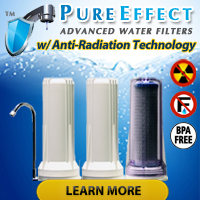 Since I have a PureEffect Water Filter, I asked founder Igor Milevskiy if I needed to be concerned about chromium-6 in my water.
Since I have a PureEffect Water Filter, I asked founder Igor Milevskiy if I needed to be concerned about chromium-6 in my water.
Igor said, “Due to varying water chemistry from place to place, and the heightened concern for Cr6 across a wide span of water supplies, we highly recommend to test your specific water at home with inexpensive and very simple to use test strips. This way you will know for yourself how much Chromium (if any) is in your water and how well the filter is performing on this contaminant.”
He recommends Waterworks Chromium test strips.
PureEffect water filters contains the type of filter media that removes chromium. “Our 3 and 4 chamber systems have 3 different types of metal removal media, which also target Chromium. The principles of the media are such, that they should have a good effect on reducing this contaminant.”
Again, test strips.
Igor said, “In the event it becomes necessary to provide even greater Cr6 removal power, if your readers let us know their test results, we can make a custom cartridge for those with extra stubborn situations.”
Seeing this report again reinforces for me the need for every home to have an effective water filter system that removes a broad spectrum of pollutants. You never know what might be in your water.
Butcher Box
 100% grass-fed beef, organic chicken and Heritage Breed pork delivered directly to your door for about $6 per serving. Your order arrives in cooler with a note from the butcher describing the cuts of meat and the farms that raised them. I have to say, I ordered a box and the quality of the meat was way above and beyond what I can buy at my local natural food stores or butchers. It’s the best-tasting meat I’ve ever eaten. Really. Just delicious. I’m going to continue to order from them. You buy a box on a subscription basis (1, 2 or 3 month delivery). Choose the all-beef box, or beef in various combinations with pork and chicken. You can also add on extras like sugar-free Paleo bacon, burgers, and ground beef, and change your order any time. “The beef is sourced from a collection of small grass-fed farms. It’s of the utmost quality and tastes incredible. The taste is attributed to our special ButcherBox blend of grasses.”
100% grass-fed beef, organic chicken and Heritage Breed pork delivered directly to your door for about $6 per serving. Your order arrives in cooler with a note from the butcher describing the cuts of meat and the farms that raised them. I have to say, I ordered a box and the quality of the meat was way above and beyond what I can buy at my local natural food stores or butchers. It’s the best-tasting meat I’ve ever eaten. Really. Just delicious. I’m going to continue to order from them. You buy a box on a subscription basis (1, 2 or 3 month delivery). Choose the all-beef box, or beef in various combinations with pork and chicken. You can also add on extras like sugar-free Paleo bacon, burgers, and ground beef, and change your order any time. “The beef is sourced from a collection of small grass-fed farms. It’s of the utmost quality and tastes incredible. The taste is attributed to our special ButcherBox blend of grasses.”
Beans72
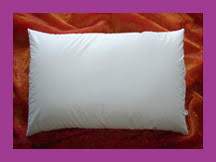 “Rolls Royce quality” authentic handcrafted Japanese buckwheat hull pillows. Filled with 100% natural triple air cleaned USDA Organic buckwheat hulls. 100% unbleached cotton cover. Fits in a standard pillowcase. Also body pillows filled with buckwheat hulls, buckwheat lumbar support and bolster pillows, and dried organic lavender to add to your pillow to aid sleep. All pillows come with zippers so additional buckwheat hulls can be added when needed. “The materials, dimensions, calculations and workmanship are a result of a lifetime accumulation of knowledge and pillow making experience.”
“Rolls Royce quality” authentic handcrafted Japanese buckwheat hull pillows. Filled with 100% natural triple air cleaned USDA Organic buckwheat hulls. 100% unbleached cotton cover. Fits in a standard pillowcase. Also body pillows filled with buckwheat hulls, buckwheat lumbar support and bolster pillows, and dried organic lavender to add to your pillow to aid sleep. All pillows come with zippers so additional buckwheat hulls can be added when needed. “The materials, dimensions, calculations and workmanship are a result of a lifetime accumulation of knowledge and pillow making experience.”
Beans72 Herringbone Buckwheat Bears
 Teddy bears made with 100% cotton cover, filled with 100% natural triple air cleaned USDA Organic buckwheat hulls or a buckwheat and dried organic lavender mix. (Adorable lavender-filled sachet bears with lavender-colored covers also available).
Teddy bears made with 100% cotton cover, filled with 100% natural triple air cleaned USDA Organic buckwheat hulls or a buckwheat and dried organic lavender mix. (Adorable lavender-filled sachet bears with lavender-colored covers also available).
Pompeii Organics
More than 70 USDA certified organic essential oils and carriers. “We are a small company in central Pennsylvania that meticulously sources Certified Organic, unsprayed, and wildcrafted essential oils, carriers, infused oils, and hydrosols. In 2015, we completed the USDA Organic Certification process. We offer over 60 Certified Organic essential oils, hydrosols, and carriers. We source Certified Organic products whenever possible. You will see that many of our oils are unsprayed or wildcrafted. Because it is important to source the oils from their native lands, some oils can not be sourced as Certified Organic…We label each bottle with the batch number, country of origin, cultivation method, distillation method and the distilllation date.”
Jacobsen Salt Co.
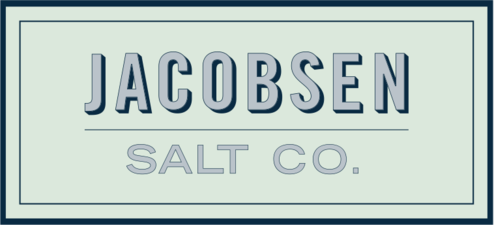 “Harvested from the cold, pristine waters of Netarts Bay on the Oregon Coast, Jacobsen Salt Co.’s flake and kosher sea salts have gained much critical acclaim for their beautiful and pure taste, texture, and appearance, and are used by chefs and home cooks around the world. We are proud to be the leader in the emerging vanguard of American Saltmakers, as well as first company to harvest salt in the Pacific Northwest since Lewis & Clark. In addition to an extensive assortment of pure sea salts and infused sea salts, Jacobsen Salt Co. also produces a line of salty confections, cocktail salts, seasonings and spice blends.” Also various prepared food products that use this salt as an ingredient.
“Harvested from the cold, pristine waters of Netarts Bay on the Oregon Coast, Jacobsen Salt Co.’s flake and kosher sea salts have gained much critical acclaim for their beautiful and pure taste, texture, and appearance, and are used by chefs and home cooks around the world. We are proud to be the leader in the emerging vanguard of American Saltmakers, as well as first company to harvest salt in the Pacific Northwest since Lewis & Clark. In addition to an extensive assortment of pure sea salts and infused sea salts, Jacobsen Salt Co. also produces a line of salty confections, cocktail salts, seasonings and spice blends.” Also various prepared food products that use this salt as an ingredient.
BeeThinking
In our world where last year beekeepers across the United States lost 44 percent of their honey bee colonies, maybe more of us need to consider backyard beekeeping. Here on this site, home beekeeping has been simplified. Everything you need to be a beekeeper is here. “All of our beehives are crafted at our mill in Portland, Oregon using kiln dried Western Red Cedar from the Pacific Northwest. We use these same products in our own apiaries and we love to pass on our knowledge of natural beekeeping to beekeepers new and old.”
Carved Wooden Spoons
 Woodenware items you can’t find anywhere else…wooden spoons of all shapes and sizes. From tablespoons, to teaspoons, the wooden spatulas, to the more exotic shaped kitchen utensil, there’s a wooden cooking utensil for every kitchen and occasion. All of my utensils are handcrafted and with proper care can last to be passed down generations. I use sustainably harvested wood and I’m dedicated to making a 100% all natural wood product that will be enjoyed for a lifetime.
Woodenware items you can’t find anywhere else…wooden spoons of all shapes and sizes. From tablespoons, to teaspoons, the wooden spatulas, to the more exotic shaped kitchen utensil, there’s a wooden cooking utensil for every kitchen and occasion. All of my utensils are handcrafted and with proper care can last to be passed down generations. I use sustainably harvested wood and I’m dedicated to making a 100% all natural wood product that will be enjoyed for a lifetime.
Arbor Teas
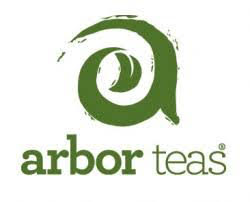 Our daily mission is to find the world’s most fantastic organic teas and deliver them to you as sustainably as possible. From our exceptional collection of organic and Fair Trade Certified® teas, to our Carbonfree® business practices, to our backyard compostable package, our passion is steeped in a desire to do worldly good, and our vision is to remain organic to a tea.” They have a wide variety of teas, plus teaware, and lots of information about tea and how to enjoy it.
Our daily mission is to find the world’s most fantastic organic teas and deliver them to you as sustainably as possible. From our exceptional collection of organic and Fair Trade Certified® teas, to our Carbonfree® business practices, to our backyard compostable package, our passion is steeped in a desire to do worldly good, and our vision is to remain organic to a tea.” They have a wide variety of teas, plus teaware, and lots of information about tea and how to enjoy it.
Lalune Naturals
Natural and organic ingredients for making your own skincare products, plus instructions and how-to videos.
Millstores
 Ready-to-finish wood furniture for every room in your home, made from a number of different types of wood.
Ready-to-finish wood furniture for every room in your home, made from a number of different types of wood.
Seventh Generation Sells Out to Unilever
Well, the world is changing.
Pioneering green products company Seventh Generation was just purchased by Unilever for $700 million.
It was actually an emotional shock for me to get this news
I remember when Seventh Generation was started in 1988. It was just before Earth Day 1990 and the book 50 Simple Things You Can Do to Save the Earth, which brought awareness to the mass market that what we do in our homes every day has an effect on the environment—for better or for worse.
Seventh Generation really was the first company to develop products with health and environment being the guiding star. And they did Read more about Seventh Generation…
For Seventh Generation to sell to Unilever…it’s the end of an era. Seventh Generation was an innovator, they were visionaries who changed the marketplace. And now decisions will be made based on mass market values instead of life values.
All I can say is thank goodness for all of the small businesses that are independently producing toxic free products. Please support them.
THE WALL STREET JOURNAL: Unilever Buys ‘Green’ Products Maker Seventh Generation
France Bans Plasticware
France has become the first country in the world to ban disposable, plastic cups and dishes.
The new law, which passed last month, requires all single-use cups, plates and other dishware sold in the country to be compostable and made at least partly of bio-sourced materials. Businesses have been given until Jan. 1, 2020 to comply.
A ban on plastic bags has been in place since July.
The decision to do this was made based on environmental considerations—France currently throws away more than 4.7 billion plastic cups every year. But it will also reduce exposure to toxic chemicals in plasticware as well.
Manufacturers, of course, are opposing the law, asserting that lower-income families regularly use disposable tableware because they can’t afford reusable tableware. I can’t agree with that argument. I once was living in a rented apartment by myself and I had one fork, one spoon, one knife, one plate, one bowl, one cup, and one glass. That’s all one person actually needs. Anyone can obtain these for practically nothing at any thrift store.
I think this is a good move, but we also need to consider the use of disposable products altogether. It is possible to have a society where everything is reusable and biodegradable. We don’t need plastic at all. Indeed, as a species we survived perfectly well without it until the twentieth century (the first plastic was bakelite, invented in New York in 1907).
ASSOCIATED PRESS: France to bid adieu to plastic dishes with controversial ban
Finding Hotels That Are Non-Toxic
Question from Mimi
Hello Debra,
This is an area in need of change!!
We have been staying hampton Inns for many years and have always called before to ask them not to use fabrezee and any fragrance in the rooms.
For a couple of years we found most of the rooms to be at least ‘liveable”
But, for the last two years we have traveled Florida panhandle, and up and back on the I 77/ I81 corridor from Fl to NH…and had some horrible experiences.
At the Hampton Inns in Florida and Virginia.. the one in Tallahassee reaked so badly that we had to leave the property at 3 AM and drive for more hours to our home,because my husband and I were getting sick. it took us two weeks to recover.
We contacted the customer service department many times and they just kept referring us to one new person after another . Yes, they compted the room, but that means nothing when you have a whole night without sleep and have a full drive the next day!
We are very upset about this!!! There are so many of us out here wanting to travel and having chemical sensitivity.
Can you recommend a hotel chain or group that would identify which hotels have nontoxic options as of Sept 2016.
We support your work and will spread the word .. thank-you for any info you can give us! And keep up the good work. More of us need to join in and change this!
Thank-you Mimi
Debra’s Answer
I totally agree with you!
I have a page about travel on Debra’s List.
I just went there and unfortunately found that the Safer Travel Directory website is no longer there.
And I searched online for anything new. Nothing. Old links broken.
I read that Hyatt Hotels and Fairmont Hotels are offering hypoallergenic rooms, but that was an old post, so I don’t know the current status. Would you contact these chains and see what the story is, and let us know?
We really need some improvement on this. Let me think about what we can do.
New Labels Can Help You Find Sofas Without Fire Retardants-But… They Still May Contain Toxic Chemicals

Last year there was a big change in the furniture world. A California law went into effect that allowed furniture manufacturers to make and sell upholstered furniture—such as sofas, loveseats, and chairs—without toxic fire retardants. That’s certainly good news!
The problem is that while the fire retardants are gone, most of the affordable sofas and chairs are still made with synthetic materials and toxic finishes like stain repellants.
Less toxic to be sure…but not toxic free yet.
Since January 1, 2015 the CA labeling law has required all upholstered furniture (couches, sofas, loveseats, and recliners) to have a label that states whether or not harmful flame retardant chemicals were added to the product.
I could have told you this last year but didn’t, because it only applied to upholstered furniture manufactured after January 1, 2015. Stores were still filled with furniture manufactured before this date.
Now, furniture manufactured since the beginning of 2015 is more widely available.
If you are buying upholstered furniture, what you want to look at is the “law label.”
And now I’m going to send you over to an article that has a very clear explanation of how to find the label, the three different labels you might see, and how to find the information about flame retardants—complete with pictures.
NATURAL RESOURCES DEFENSE COUNCIL: Want to Avoid Toxic Couch Chemicals? Just Look for New Label!
Toxic Plastics From China
I know a lot of you are concerned about toxics in products from China.
Here’s a website that recently came my way via Q&A comments. I’m pulling it out and making a post so we can all find it easily.
Campaign to Halt the Import of Chemical-Emitting Smelly Plastic from China
If you know of any other sites with specific information about toxics in products from China, please post a comment with the name and link.
Thank you.
Debra 🙂
FDA Finds Glyphosate in Honey
FDA has found residues of the weed killer glyphosate even in a food that is not produced with the use of glyphosate: honey.
All of the samples the FDA tested in a recent examination contained glyphosate residues, and some showed residue levels double the limit allowed in the European Union. There is no legal tolerance level for glyphosate in honey in the United States.
According to the FDA records, samples tested by an FDA chemist showed these residue levels:
| Carmichael’s Honey | Louisiana | 107 ppb |
| Leighton’s Orange Blossom Honey | Florida | 22 ppm |
| Sue Bee Honey | Lowa | 41 ppm |
Sue Bee is marketed by a cooperative of American beekeepers as “pure, all-natural” and “America’s Honey.” Customers “can be assured that Sue Bee Honey is 100% pure, 100% all-natural and 100% American,” the Sioux Honey Association states.
The obvious recommendation is to choose organic honey, but I’m not sure it has less glyphosate. What is becoming more and more evident is that glyphosate is now widespread in the general environment, and not limited to GMO foods.
The good news is that honey has a tremendous amount of nutrients and inherent healing qualities. Of all foods, honey is the food most likely to have the ability to counteract the negative affects of glyphosate.
I would still choose organic honey.
THE HUFFINGTON POST: FDA Finds Monsanto’s Weed Killer in US Honey.
What We’ve Learned in 25 Years of Research on Endocrine Disruptors
This week, researchers, public health advocates, government officials, and industry spokespersons will meet at National Institutes of Health (NIH) to celebrate 25 years of scientific research on endocrine disrupting chemicals (EDCs).
Here is a good commentary on what we’ve learned about this chemicals, and where we need to go to learn more.
New Study Compiles Data on Toxics in House Dust—45 Chemicals Found
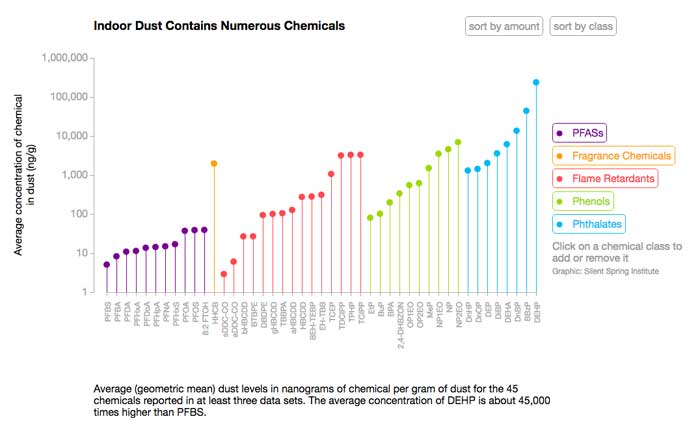
An interactive version of this graph can be found here (scroll down the page).
A new study came out this week that gives us more data than ever about what types of toxic chemicals are found in household dust and amounts.
The fact that household dust contains toxic chemicals is not new—but this study is the first to make a comprehensive assessment of consumer product chemicals of concern in the dust found in US homes, provide a picture of the toxic chemicals in the home, estimate potential exposures for children and determine heath threats.
The study identifies 45 chemicals from five chemical classes—phthalates, phenols, flame retardants, fragrances, fluorinated chemicals—that were measured in dust in US homes.
Some phthalates, fragrance, flame retardants, and phenols were consistently found in 90 percent or more of dust samples across multiple studies.
The articles below do a great job of explaining the problem, but fall short on giving workable solutions.
Here’s my advice.
1. All the things you are already doing to reduce your use of chemicals in your home that you are learning on this website are also reducing toxic chemicals in your house dust. So keep finding toxic products in your home and continue to replace them with nontoxic products.
2. Get an air filter that removes both particles (dust) and gasses (chemicals. Check out my recommended brands at Debra’s List: Air Filters.
Find out what’s in your indoor air and take steps to improve it. This could make a big difference in your health.
CBS NEWS: Household Dust is Laced With Toxic Chemicals, Study Finds
a news story
NATURAL RESOURCES DEFENSE COUNCIL: Not Just Dirt: Toxic Chemicals in Indoor Dust
an analysis
ENVIRONMENTAL SCIENCE & TECHNOLOGY: Consumer Product Chemicals in Indoor Dust
the study
NATURAL RESOURCES DEFENSE COUNCIL: Toxic Dust: The Dangerous Chemical Brew in Every Home
another blog post about toxic dust
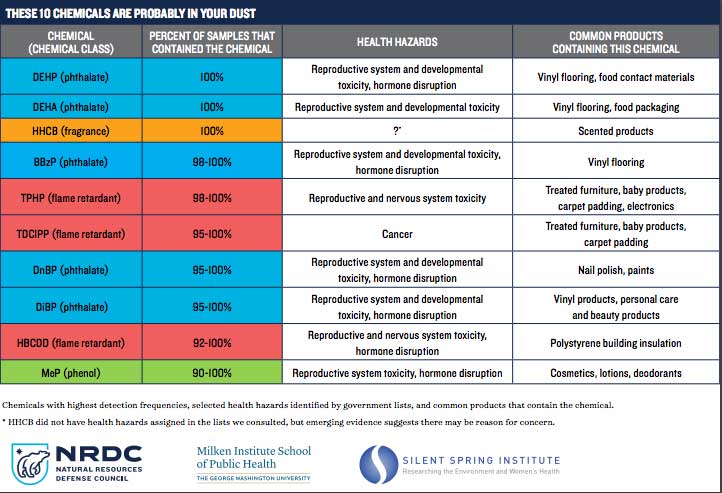
Penns Hill Soap
Our handmade bar and liquid castile soap is made in small batches using certified organic oils and a recipe that dates back to the 11th century. We use certified organic essential oils instead of “fragrance” for their delicate bouquet and high quality. Scented soaps have a soft whiff of aroma – as subtle and gentle as the soap itself.” Unscented and natural aromas of lavender, lemongrass, cinnamon, rosemary and others.
Salinity Salts
 Handcrafted gourmet finishing salt blends made from the purest sea salts and organic herbs. Choose from more than a dozen flavors from around the world. Read about their salt and the organic farms that supply their herbs.
Handcrafted gourmet finishing salt blends made from the purest sea salts and organic herbs. Choose from more than a dozen flavors from around the world. Read about their salt and the organic farms that supply their herbs.Fair Indigo Joobles
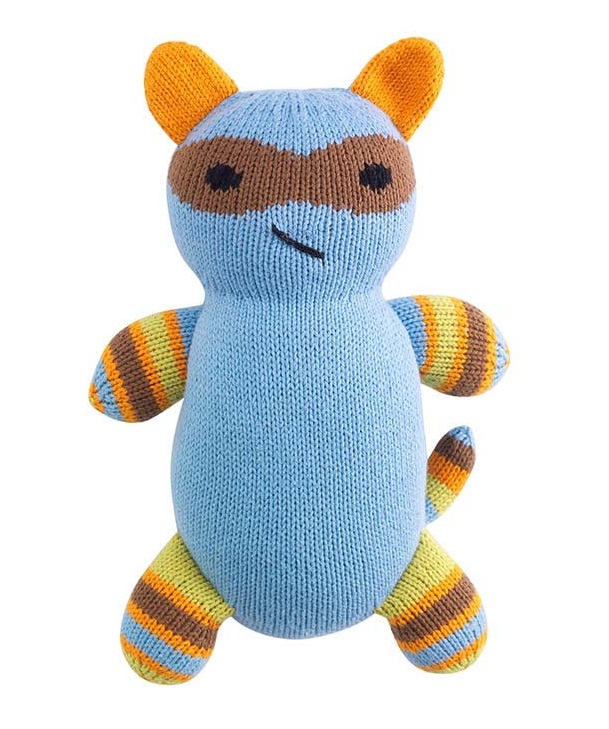 Cute and colorful stuffed animals made from 100% organic cotton and gentle, earth-friendly Oeko-tex® certified dyes.
Cute and colorful stuffed animals made from 100% organic cotton and gentle, earth-friendly Oeko-tex® certified dyes.
The Effects Of Radiofrequency Electromagnetic Radiation On Sperm Function
Abstract
Mobile phone usage has become an integral part of our lives. However, the effects of the radiofrequency electromagnetic radiation (RF-EMR) emitted by these devices on biological systems and specifically the reproductive systems are currently under active debate. A fundamental hindrance to the current debate is that there is no clear mechanism of how such non-ionising radiation influences biological systems. Therefore, we explored the documented impacts of RF-EMR on the male reproductive system and considered any common observations that could provide insights on a potential mechanism.
Among a total of 27 studies investigating the effects of RF-EMR on the male reproductive system, negative consequences of exposure were reported in 21. Within these 21 studies, 11 of the 15 that investigated sperm motility reported significant declines, 7 of 7 that measured the production of reactive oxygen species documented elevated levels and 4 of 5 studies that probed for DNA damage highlighted increased damage, due to RF-EMR exposure. Associated with this, RF-EMR treatment reduced antioxidant levels in 6 of 6 studies that studied this phenomenon, while consequences of RF-EMR were successfully ameliorated with the supplementation of antioxidants in all 3 studies that carried out these experiments.
In light of this, we envisage a two-step mechanism whereby RF-EMR is able to induce mitochondrial dysfunction leading to elevated ROS production.
A continued focus on research which aims to shed light on the biological effects of RF-EMR will allow us to test and assess this proposed mechanism in a variety of cell types.
PUBMED: The effects of radiofrequency electromagnetic radiation on sperm function.
The effects of radiofrequency electromagnetic radiation on sperm function Full PDF
Health Problems with Infrared Heaters?
Question from Jody
Hi Debra,
Do you know of any health concerns related to infrared heaters? I am considering installing this:
http://biosmartsolutions.com/shop/heating/on-wall-heaters/bio-1500owa-onwall-heater-and-airpurifier/
Thank you. Jody
Debra’s Answer
This looks fine to me as a heater.
However, the “air filter” is only a UV lamp and negative ion generator. This removes some particles and no gasses, but does kill bacteria and viruses and other micro-organisms.
The same caveat applies to this heater as to all others: the paint may emit odors when the heater is on until the paint is fully outgassed. But when outgassed, this heater should be fine.
Air Filter for New Car Smell
Question from Bonnie
Dear Debra,
I had wanted to buy a new 2016 car until I smelled the chemicals. I was shown a 3 year old prior leased car as I would still have warranty and thought I detected new car smell, but less. When my friend was talking with the salesperson I decided to find where the 2016 odor was coming from – It is from the AC vent!
I can not put charcoal pads on that. I saw you mentioned a filter – does it sit in the car with me or does it get installed into the car?
I would rather have a very old car, but I am concerned financially I may not be able to cover repair costs.
How well does the filter work? What year car do you think is safe from offgasing.
Do you think some models are more safe than others? Foreign cars can last many decades – so I rather take an old car.
I checked some and the seats are squashed, but a friend said a upholstery shop could replace them.
Would like to give a big thank you for the suggestion you gave me many years ago about the sleep number bed. The odor is not detectable with the charcoal blankets. It was the only bed I could use due to a medical problem. THANK YOU.
Debra’s Answer
You are very welcome.
The filter I have used in the past is from E.L. Foust It’s 160AN Auto/RV Air Purifier. It plugs into your cigarette lighter and sits on the floor on the passenger side. I found it to work very well. You plug it in and turn it on.
I try to purchase cars that are at least five years old. I manage to find used cars with low miles.
The car I currently have was only two years old when I bought it. It still smells like a new car. Mostly I drive it with the sunroof open so the fumes can escape.
Yes foreign cars last longer than American cars. Larry just bought an old Prius. They can last more than 200,000 miles.
Right now the choices seem to be 1) old and outgassed 2) use an air filter 3). Reupholster.
If you think the smell is coming from the AC, use the air filter.
Non-toxic pad under dining room table cloth
Question from Melanie
Hi Debra,
I hate vinyl, but need a thin pad to go under my dining room tablecloth.
I have searched the Internet thinking I could find latex or rubber padding but was not successful. Thoughts?
There has got to be something less toxic than vinyl…
Thanks so much, Melanie
Debra’s Answer
First, for those who don’t know why you might need a dining table pad…
If you have a nice wood dining table, it can be damaged by heat, scratches, and spills. A pad can protect the surface of your table from these accidents.
This is good for the table, but may not be so good for health.
The industry standard is to use vinyl and other possibly toxic materials and adhesives to make these pads.
There seem to be two types:
* solid, about 11/2” thick
* flexible, like a table cloth with thin padding.
The industry standard is to use vinyl and other possibly toxic materials and adhesives for both,
So the challenge here is to come up with some type of padding that will protect the table. I’m thinking if we can find a nontoxic foam in a thin layer, that should do it. And then put a tablecloth on top.
I actually did find something I think will work, but haven’t tested it.
There’s a website called Foam Order that sells thin sheets of foam made from EVA or polyethylene. Either of these would be fine to use. I don’t know if these are waterproof, however you can get it as thin as 1/8”. Call them and ask if this would meet your needs and let us know.
If it’s not waterproof, you could add a waterproof layer of something else. But this would give you the padding.
FDA Orders Removal of Antibacterial Triclosan From Consumer Soaps
The Food and Drug Administration (FDA) has finally told manufacturers they can no longer put triclosan in consumer soaps.
The FDA says antibacterial do little or nothing to make soap work any better and the industry has failed to prove they are safe.
Manufacturers have one year to comply.
Triclosan is still allowed as an antibacterial in other consumer products.
NBC News: FDA Orders Antibacterials Removed From Consumer Soaps
Listen to these shows on Toxic Free Talk Radio about antibacterials:
TOXIC FREE TALK RADIO: How Antibiotics and Antibacterials are Compromising Our Health
TOXIC FREE TALK RADIO: The Dangers of Antimicrobials and How to Choose Products Without Them
Bar vs Bottle — How Do You Buy Your Soap?
An interesting article entered my email inbox the other day from the environmental blog Treehugger.
It was about the change that’s occurring in the way people buy soap.
Bar soap sales are declining and liquid soap sales are gaining.
I was sorry to read this. From a toxics viewpoint, soap is one of the few products that can be very pure.
I love to buy soap from a local soap maker who doesn’t even put a wrapper on the soap. They just stamp the information right into each bar. Whenever I drive in that direction, I stop and buy a few bars.
One of my pleasures in life is buying all different kinds of handmade soaps at various craft fairs and trying them out.
But I can understand about soap in a bottle.
Reading about this, I took a conscious look at whether I was using bar or bottle soap. I hadn’t really thought about it.
What I observed was that I use bar soap in the shower and bathroom sink, and liquid soap in the kitchen.
For me, the issue is soap melting all over the soap dish. In the kitchen I often need to wash my hands because I have been cutting up chicken, and I don’t want to put bacteria on the soap. A squeeze of foaming soap from the bottle seems to be much more sanitary in that regard.
But it makes sense to stick with bar soap. We certainly don’t need yet another plastic bottle.
What do you think about this?
TREEHUGGER: The Sad Slippery Slope of Bar Soap
Affordable Sofas
There have been so many questions about finding affordable sofas I thought I would make a separate post to answer this question.
First, there are no ready-made affordable sofas that I would call toxic-free.
All the ready-made sofas cost thousands of dollars.
But there are some things you can do. [I’ve mentioned these before in other places, but am gathering them all together in one place for you.]
My first nontoxic sofa was a sectional sofa where the pieces were made with cotton canvas over metal frames, with toxic pillows on top. I just replaced the toxic pillows with 100% cotton pillows stuffed with some of the first organic cotton batting that was available. It was a great sofa and I wish someone would make this type of frame now.
Here are three strategies I know of. Please comment if you know of any others.
REUPHOLSTER
My current sofa started as an old frame, which I stripped and had reupholstered. I bought the sofa frame at a storage auction for $50. The upholsterer said it had “nice bones.” It’s a beautiful, old, solid wood frame.
I chose a 100% linen upholstery fabric in a plaid to honor my Scottish heritage. The cushions are old spring cushions covered with wool batting.
All in all the total cost was about $1500. That was maybe 20 years ago. It’s held up very well, It still looks the same as it did 20 years ago. No wear and tear.
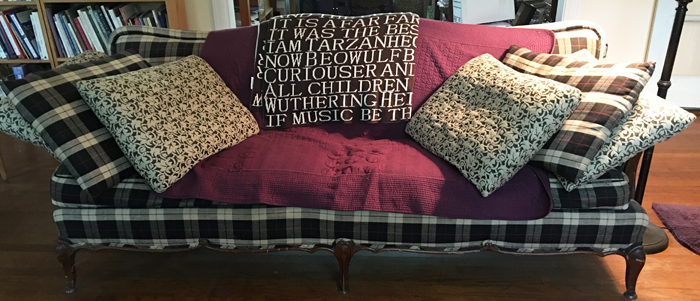
My sofa with linen uphostery, purple cotton quilted throw and cotton throw with words
FILL A FRAME
Ever since futons became popular in the 1980s, there have been wood frames available to turn those futons into sofas. Today they are also available made of metal. And you can fill them with any kind of cushions you can imagine.
Wood frames for futons come in two designs: clamshell (sofa only) or bi-fold (which converts into a platform bed).
Here are some sofa frames from White Lotus Home made out of sold wood with water-based glues and nontoxic finishes. But there are many more online. Just search on “futon frame for sofa.” Even places like overstock and wayfarer have them for only a few hundred dollars (be sure to check materials before buying).
There are many more frames online—I just checked. Search on “sofa plans” and other similar terms.
Here are hundreds of futon frames online.
Some frames come complete with pillows you probably don’t want, but other frames you can purchase separately (and you can always toss the pillows if necessary and replace them with natural ones.
Doesn’t say what pillows are but I assume they are synthetic. I would replace the cushions and pillows.
Wow. Just exploring futon frames for just a few minutes showed me there are MANY more inexpensive sofas in this category than ever before, but you’ll need to provide your own cushions.
BUILD YOUR OWN
And it turns out nowadays you can even get plans for making your own sofa.
DIY may be the way to go if you are handy or can enlist help (I am fortunate that Larry is always willing and able to repair or build anything I want). You could also get the plans and materials and hiring someone to put it together and it would still be affordable. And you could modify the plans to get exactly the sofa you want.
Here are some plans sent by a reader. There may be more:
http://www.ana-white.com/2016/03/free_plans/modern-wood-storage-sofa
http://www.ana-white.com/2010/11/build-your-own-storage-sofa.html
http://www.ana-white.com/2015/06/free_plans/one-arm-outdoor-sectional-piece
http://www.ana-white.com/2014/05/modern-sectional-sofa
Here’s a massive Use this for ideas and plans, but substitute your own toxic-free materials.
Please comment with your ideas, questions, and photos of affordable sofas (if you have one) and even a natural sofa that’s not affordable (if you have one).
Toxics in Toothpaste
The Cornucopia Institute has a new report on toothpaste that is exceptional, It covers regulations, and ingredients and ends with a list of toothpastes that contain organic ingredients and how to make your own at home.
Is There Any Difference Between PET and PETE?
Question from Katherine
I’m confused about PET and PETE. Are they the same thing or different?
Debra’s Answer
PET and PETE are both acronyms for polyethylene terephthalate.
Polyethylene terephthalate is a clear, tough plastic in the polyester
family. It is made from only two chemicals that are tightly bonded together.
PET has been approved as safe by the FDA and the International Life Sciences Institute
(ILSI). In 1994, ILSI stated that “PET polymer has a long history of safe consumer use,
which is supported by human experience and numerous toxicity studies.”
There is one important thing to know about polyethylene terephthalate.
Because it has “phthalate” in its name, some people think PET contains toxic “phthalates.” This is not correct.
The toxic “phthalates” that leach out of plastics are “orthophthalates,” which is a completely different type of chemical than “terephthalate.”
I also researched to see if there was any outgassing from PET into the air. NASA has a website (outgassing.nasa.gov) where you can look up all kinds of materials they have assessed for outgassing because they need to choose materials for spaceships that do not outgas. They found that PET needed zero curing time to be used in a spaceship.
Colors in Silicone
There have been some questions about what type of colorant is use to make brightly-colored silicone products.
I’m in the process of reading a book called Advances in Polymer Coated Textiles=which states that coloring agents for silicone coatings need to be chosen carefully because organic pigments are not suitable for high-temperature uses. [Organic pigments are carbon based and can be natural or synthetic. Synthetic organic pigments are made from petroleum.]
Therefore inorganic pigments such as iron oxides and titanium dioxides are used.
I’m thinking this would hold true for silicone kitchenware as well.
I also found a study that measured color leaching from silicone: EUROPEAN JOURNAL OF DENTISTRY: Color Stability of Silicone or Acrylic Denture Liners: An in Vitro Investigation. Their tests show the silicone dental liners showed far less change in color than the acrylic liners.
Which Handwashing Dish Soap Do You Use?
Question from Sicili
Hi Debra. I noticed on one of your comments, you said you hardly have any plastic in your home at all. I just wanted to ask ,what type of hand dish washing soap do you use for doing dishes ? I am trying to figure out if I should use the natural ones listed on EWG or if I should try to avoid the plastic and use bar soap to wash the dishes? I try to learn as much as I can from your books and website but for some things I would just really like to know what you use right now. How do you feel about Tropical Traditions, household traditions dish soap? Thank you so much for your time.
Debra’s Answer
Right now I use BioKlenn All Natural Dish Soap.
The one I get has a citrus scent that I like and it cleans really well.
I’ve also recently used Earthview Dish Detergent, which I liked a lot. It’s made for people with MCS.
Tropical Traditions is a good company with very high standards. Their Dish Liquid is developed by and for people with allergies, asthma, and MCS. However, they do not give a complete list of ingredients. Only “surfactants,” “emulsifiers,” etc.
I am a stickler for wanting to know the actual ingredients, which are listed on the brands I use.
I’m not saying there is anything wrong with Tropical Traditions. I just don’t know because they are not disclosing their ingredients.
The dish soap I use comes in a plastic bottle. I wouldn’t use bar soap to wash your dishes unless it is a very plain soap or a bar soap developed specifically for dishes. Bar soap is designed for skin, not for eating.
Non-Profits Sue General Mills for False and Misleading Use of ‘Natural’
Tests Reveal Nature Valley Products Contain Glyphosate,
an Ingredient in Monsanto’s Roundup
Washington, DC – Today, three non profit organizations filed a lawsuit against General Mills for misleading the public by labeling their Nature Valley brand granola bars “Made with 100% NATURAL whole grain OATS.” It was recently discovered that the herbicide chemical glyphosate, an ingredient in Roundup and hundreds of other glyphosate-based herbicides, is present in the Nature Valley granola bars, which consumers expect to be natural and free of toxins.
Moms Across America, Beyond Pesticides and Organic Consumers Association with The Richman Law Group filed jointly on behalf of the non profit members in Washington DC under the District of Columbia’s Consumer Protection Procedures Act.
“As a mother, when I read “100% Natural” I would expect that to mean no synthetic or toxic chemicals at all. Glyphosate is a toxic chemical that the EPA recognizes as a “reproductive effector” which “can cause liver and kidney damage” and “digestive effects.” It is unacceptable that Nature Valley granola bars contain any amount of this chemical.” Zen Honeycutt, Founder and Executive Director of Moms Across America.
A national survey conducted by Consumer Reports in 2015 finds that sixty six percent of consumers seek out products with a “natural” food label under the false belief that they are produced without pesticides, genetically modified organisms, hormones, and artificial ingredients.
“Glyphosate cannot be considered ‘natural’ because it is a toxic, synthetic herbicide,” said Jay Feldman, executive director of Beyond Pesticides. “Identified by the World Health Organization(WHO) as a carcinogen, it should not be allowed for use in food production, and certainly not in food with a label that suggests to consumers that the major ingredient –oats– is 100% natural, when it is produced with and contains the highly hazardous glyphosate,” he said.
“Food grown with dangerous pesticides like glyphosate isn’t natural. Consumers understand this. That’s why sales of natural products are booming. Unfortunately, companies’ misleading claims trick consumers into buying just what they’re trying to avoid. This has to be stopped.” -Alexis Baden-Mayer, Political Director of the Organic Consumers Association
The case specifically cites the use and presence of the weedkiller glyphosate in General Mills’ Nature Valley Granola products. The hazardous chemical is used during the production of oats, the major ingredient in these products, which are marketed as “natural” and labeled “Made with 100% Natural Whole Grain Oats.” As a result, glyphosate is present in the natural-labeled products.
Proponents of glyphosate herbicide use may claim that the residue levels found in many foods and beverages in America recently are below the EPA allowable levels established in 2014, and therefore consumers have no reason to be concerned. However, a 2015 study published in the journal Environmental Health finds that chronic, low-dose exposure to glyphosate as low as .1 parts per billion leads to adverse effects on liver and kidney health. A study released in early 2016 finds that glyphosate can cause changes to DNA function resulting in the onset of chronic disease, including diabetes, obesity, and Alzheimer’s disease.
The lawsuit alleges that, when marketing Nature Valley products, General Mills misleads and fails to disclose to consumers of the use and presence of glyphosate and its harmful effects. Plaintiffs are asking a jury to find that General Mills’ “natural” labeling is deceptive and misleading and therefore a violation of law, and require its removal from the market.
View a web version of this press release with links here
Debra’s Answer
I just have to comment on this.
I have no problem with these groups filing a suit, however the logic just boggles my mind.
1. There is NO legal definition of “natural.” It is widely used in the marketplace in reference to ingredients being of plant, animal or mineral origin, and not petrochemical.
2. ALL so-called “natural” products contain pesticides, which are intentionally added to the ingredients during the growing of the plants and animals. Also other toxic chemicals may be used. This is all that “natural” means: the ingredients are not made from petrochemicals.
3. If General Mills is false and misleading, so is every other product that claims to be natural.
Part of the problem in the marketplace is our really inadequate labeling laws. Labels on food and personal care items require only that the ingredient that “goes into the pot” (so to speak) be on the label. Its like a recipe tells you only what to put in the bowl. Labels only list the end ingredient, even if it contains many other sub-ingredients.
For example, if “ham” is and ingredient in a food product, labeling laws do not require the label to list the nitrates that are in the ham. Nor do labeling laws require that pesticides or other processing chemicals be listed.
If I were labeling supermarket applesauce, I would say
* apples (with a list of pesticides commonly used on apples)
* GMO corn syrup
* water (with chlorine, fluoride and other water pollutants)
And then I would label organic applesauce
* apples
* water
But instead we have to say
* organic apples
* filtered water
And the toxic product requires no qualifiers to indicate that it is toxic.
We need a MASSIVE overhaul of labeling in order for consumers to know what is actually in products.
I would say most products on the market today are false and misleading with their labeling. General Mills Nature Valley is not the only one.
However, there is actually something that is false and misleading about Nature Valley, and it’s not the glyphosate. It’s that Nature Valley gives an impression that it is natural in it’s name, packaging and advertising.
I wonder if any of these products would sell if manufacturers were required to show consumers right on the label what’s in them.
Nontoxic Glue for Wood Floor
Question from Katie
Hi Debra,
Glad to be able to ask advice on nontoxic glue for a patch job. We had to remove several planks of engineered hardwood flooring in front of our back sliding door. We will be putting down new planks but I am concerned about fumes from the glue.(I will outgas the new planks…)
I read on your site that you recommend. Titebond II yellow glue for this. We are on a concrete slab.
Our handyman looked into it and thinks Titebond 771 would be better.
What would you recommend? I am very chemically sensitive.
Thank you for your help.
Debra’s Answer
No, I wouldn’t recommend Titlebond 771.
Here is the SDS for Titebond II
Here is the SDS for Titebond 771
Notice that 771 says “: This material is considered hazardous by the OSHA Hazard Communication Standard (29 CFR 1910.1200).”
!! says “this material is not considered hazardous by the OSHA Hazard Communication Standard (29 CFR 1910.”
I am confident Titebond !! will do the job. I’ve used it to attach wood to concrete with no problem.
Handmade Betty
 All kinds of organic body care products for men, women, and children, including the purest sun protection I’ve seen. Packaged in glass jars. “We make everything in small batches & with only transparent ingredients . Our Company dedicate itself in finding the best ingredients and suppliers to find wholesome and beautiful ingredients. All of our products are made from scratch and made to order. It is made once the order comes in so nothing is sitting on shelves….We are very proud of my products! We are constantly doing research to make sure not only the products are free of harmful chemicals but also that each essential oil & ingredients that we put in our products are fresh and wont disturb your skin. Homemade Betty started making products for her children and her self. She was worried about all the products that were going on their body! She started making lotion and never turned back. Every product that she makes is something her or her family uses daily.”
All kinds of organic body care products for men, women, and children, including the purest sun protection I’ve seen. Packaged in glass jars. “We make everything in small batches & with only transparent ingredients . Our Company dedicate itself in finding the best ingredients and suppliers to find wholesome and beautiful ingredients. All of our products are made from scratch and made to order. It is made once the order comes in so nothing is sitting on shelves….We are very proud of my products! We are constantly doing research to make sure not only the products are free of harmful chemicals but also that each essential oil & ingredients that we put in our products are fresh and wont disturb your skin. Homemade Betty started making products for her children and her self. She was worried about all the products that were going on their body! She started making lotion and never turned back. Every product that she makes is something her or her family uses daily.”
Uncle Goose
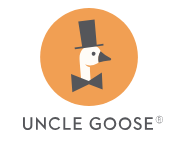 Adorable wooden blocks painted with animal faces and features. Also beautiful ABC blocks. These are truly works of art. I love these! “We handcraft every set in Grand Rapids, Michigan, using choice materials from around the Great Lakes. And yes, we are 100% made in the USA…non-toxic, child-safe inks on all our blocks.”
Adorable wooden blocks painted with animal faces and features. Also beautiful ABC blocks. These are truly works of art. I love these! “We handcraft every set in Grand Rapids, Michigan, using choice materials from around the Great Lakes. And yes, we are 100% made in the USA…non-toxic, child-safe inks on all our blocks.”
Terrain Heritage Garden Hose
A beautiful garden hose made from toxic free polyurethane, with chrome-planted lead-free brass fittings. Come in six lovely garden-compatible colors. Plus this site has many more stylish and natural garden and home products.
Portola Paints & Glazes
Handcrafted Zero-VOC paints (acrylic base). made in small batches and blended by hand. “Jamie and Casey Davis, co-founders and owners, were born and raised in Los Angeles to a family of artists. Mentored by their father, a high-end custom home builder, Jamie and Casey inherited a deeply rooted love for design and color…Because every paint color provides an opportunity to tell a story and transform a space, the brothers take both time and pride in creating customized palettes that reflect a client’s unique personality. Their extensive variety of paints and specialty finishes are all made locally and in small batches at their L.A. headquarters. Using their knowledge of pigment and saturation, and an ability to match all of their paints by eye, they design full spectrum colors that reflect a broader range of light and coordinate in subtle, yet powerful ways, to any environment…Portola products are high quality, eco friendly & affordable. We are also a family owned and operated small business, and source everything locally.”
Soludos
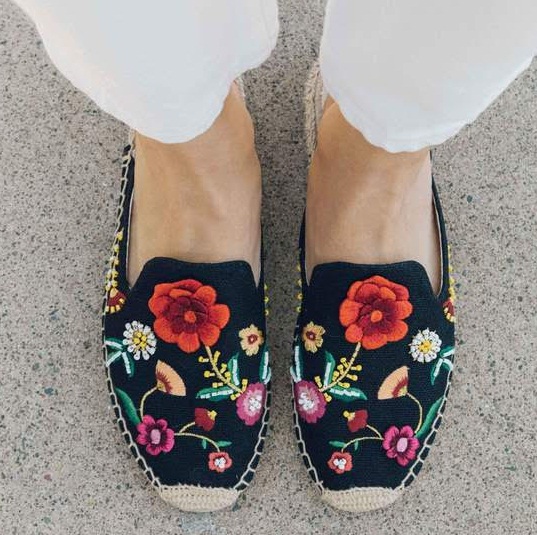 Traditional cotton/jute espadrilles with natural rubber (latex) soles in up-to-date styling: tennis shoes, slippers, sandals. Also some suede uppers, some linen linings. Lots of colors, some decorated. Flats and wedge heels. Women and men. Read comments for advice about ordering the correct size.
Traditional cotton/jute espadrilles with natural rubber (latex) soles in up-to-date styling: tennis shoes, slippers, sandals. Also some suede uppers, some linen linings. Lots of colors, some decorated. Flats and wedge heels. Women and men. Read comments for advice about ordering the correct size.
Lancaster Creations
Organic herbal products “born out of a mother’s need for clean, natural, unadulterated products for her home and family…owned and operated by a self proclaimed “Arti-Free” Mommy of 2…We use the highest quality Organic ingredients & source locally whenever possible. Our beeswax is collected from a CCOF certified small family owned farm in Kingsburg, California, and every gram is filtered in house by April Lancaster herself…100% Organic Goodness. Made by hand, with love in a toxicant free home.
Rooted Athlete
Unscented, certified organic stick deodorant made from coconut oil, carnauba wax, arrowroot powder, shea butter, and baking soda. Also scented available.
Coco Pits
Unscented, certified organic stick and cream deodorants, made from organic virgin, cold-pressed coconut oil, sodium bicarbonate, organic arrowroot powder, beeswax, Vitamin E oil, and organic essential oils. Also comes in six scents.
Stick Candles
Unique handmade 100% beeswax candles—cast from sticks, twigs and branches. “We pour our candles one at a time. Originally made as a gift for mom…”The Candles that we are now able to cast, from shapes that we gather, strike me as beautiful and fascinating…when someone tells me about their experience with a candle that I made…It doesn’t point to me. It points to the shape of that cutting. Beauty in Nature.Wow : What Could Be Better Than That ?”
The Fastest Way to Remove Paint Fumes
Last week I had an interesting experience on a private Facebook group I belong to.
A pregnant woman with a 1 1/2-year-old posted that she had just moved into here new house the day after renovations were done and she could still smell new paint, floor adhesive and lacquer. She was trying to “get these toxins out of the house FAST!”
Given that this is a private group and anyone can post on any subject, she got quite a few well-intended recommendations. They were not, however, the correct actions to take to remove volatile chemical gasses from her home.
Here are some of the suggestions (and my comment on them on the indent lines after each comment):
- I have a floor fan you can use.
Inadequate.
- Do a wipe down with vinegar and water.
This will do nothing for paint fumes.
- Leave all windows open so fumes can vent out of the house. Can also put 2 or 3 box fans in windows on one side of house in open windows drawing air OUT of the house. This will pull in fresh air from the remaining open windows. You need to let the fumes escape from the walls and flooring, and then be vented out of the house. It may take some time.
Ventilation is always good, but in this case what is needed is to accelerate the release of the VOCs in the paints and adhesives.
- Place bowls of baking soda with lemon squeezed on top (leave the lemons in the bowl too) around the house.
Baking soda does remove odors, but not specifically paint fumes.
- Take big bowls full of ammonia and place them in every room, shut the door, it absorbs the smells.
This may remove odors, but ammonia itself is a toxic chemical and will not remove toxic gasses.
- Buy an air purifier from Target for around $100.
Air filters sold at Target and other such stores do NOT remove paint fumes and other VOCs. They are designed to remove particles such as dust and pollen, which are larger than chemical gasses.
- There are a number of plants that remove toxins from the air , floors etc and then give you fresh air. You can google the list. I believe there are about 12 different ones you can choose from.
Plants are not adequate to handle the toxic chemical gasses in this home. You would need hundreds of plants. I did the math once on this to see if I could recommend this instead of air filters. Not in a situation like this. A 9×12-foot room with an 8-foot ceiling is 864 cubic fee, so you would need 72 plants to duplicate the results from Wolverton labs—a virtual jungle!
Here’s what to do in a situation like this:
- Get yourself and your family out of the house. Find somewhere else to stay until you have handled the toxic exposure.
- Close the windows and “bake” the house. Follow the instructions at QA: Intructions to “Bake Out Toxic Fumes
- Get an air filter that removes toxic gasses. The best air filter I know of for removing toxic fumes from an area fast is the EnviroKlenz Mobile Unit.
Of course it’s always best to paint with a zero-VOC paint to begin with.
Do You Need to Change Your HVAC Filter?
Last week I finally changed my HVAC filter and it made so much difference that I had to tell you about this.
Just to be clear, an HVAC filter removes dust and other particles from the air. It has nothing to do with removing toxic gasses (for toxic gasses you need something like the EnviroKlenz HVAC filter. The purpose of the particle filter is to remove particles so they don’t clog up the HVAC.
HVAC particle filters are designed to last for three months, and then you need to change them. I was one month overdue because I can’t climb up there and change it myself. I need to get someone else to do it.
When we took the filter out, it had a lot of dust buildup all over it.
What was amazing to me was how much BETTER the air conditioning worked after the filter was changed!
I leave my A/C on 72 degrees. With the new filter, it was way too cold. I now have my A/C set to 74 degrees and am entirely comfortable. A new filter made that much difference.
I’ll save more than the cost of the filter this month on my power bill, and create fewer air pollution emissions from the generation of electricity to keep the air cool.
Now I want to give you a tip too about choosing a dust filter for your HVAC.
I chose a Honeywell Allergy Plus Air Filter, which I purchased at my local Home Depot.
All HVAC filters have a rating that tells you how much they will filer from the air.
Here is the rating from the filter I purchased. I like this label because it clearly shows that as you move up the ratings the filter removes more volume of particles and more different types of particles.
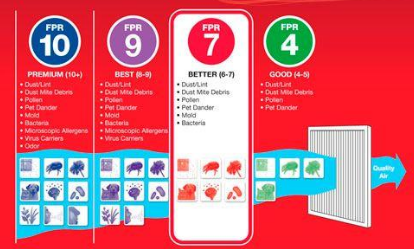
I bought a 7 because it removes more than 4, and they didn’t have any 9 or 10s on the shelf.
What you want to look for is a MERV rating or an FPR. The difference is:
- MERV is a universal industry rating
- FPR is a made up rating by the manufacturer.
- MERV 8 is considered the best choice to protect your HVAC without spending more money than you need to. FPR 7-9 is equivalent to MERV 8.
If you think ahead, you can order a box of four filters online and save money. And you’ll be good for a year.
Filters are supposed to last 90 days, but not every day is the same. If you’re not running your HVAC, you don’t need to change the filter. Check it every 90 days. If it’s grey, change it. If it’s still white, let it go a little longer.
But changing your filter at the right time DOES make a difference in your power bill and pollution. So pay attention and change your filter when it needs to be changed.
EnviroKlenz Hand Soap & Deodorizer
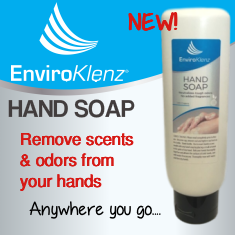 A liquid Castile soap that eliminates scents and odors from your skin.The soap utilizes the EnviroKlenz patented earth mineral technology to neutralize the odors at the source without the use of masking agents offragrances. Nontoxic and fragrance-free. Gentle on all skin types. For a 10% discount on your entire purchase, enter coupon code “toxicfree10″ at checkout.
A liquid Castile soap that eliminates scents and odors from your skin.The soap utilizes the EnviroKlenz patented earth mineral technology to neutralize the odors at the source without the use of masking agents offragrances. Nontoxic and fragrance-free. Gentle on all skin types. For a 10% discount on your entire purchase, enter coupon code “toxicfree10″ at checkout.
 |
Listen to my interviews with Kyle Knappenberger, Director of Applications at Timilon Technology Acquisitions LLC |
Most Modest
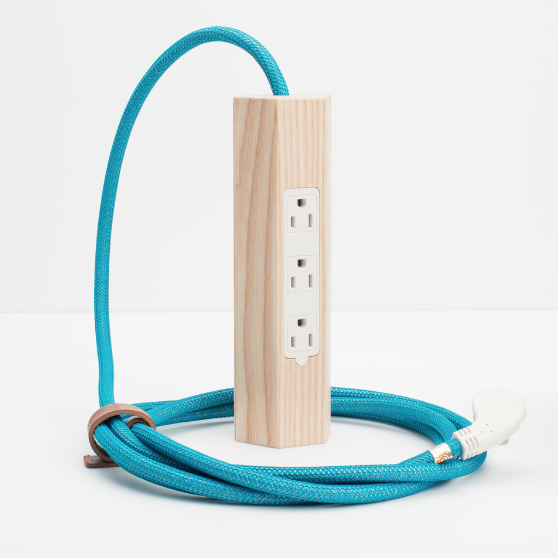 Power strips in unfinished solid wood housings. “a new power solution that considers where and how people use power today. A functional wood form combined with a one of a kind knitted mesh power cable, Niko adds an element of fun to any environment.” Comes in several styles and cord colors.
Power strips in unfinished solid wood housings. “a new power solution that considers where and how people use power today. A functional wood form combined with a one of a kind knitted mesh power cable, Niko adds an element of fun to any environment.” Comes in several styles and cord colors.
Good4You Plant Makeup
Paint your face with plants. These unique and simply makeup products provide a rainbow of gentle plant-based colors for eyes and lips. She uses “local flowers and herbs to create makeup, skin care and bath products for a new era of natural beauty…Plant Makeup is a bit different than regular makeup. It applies lighter on skin compared to bold dramatic colors. When Plant Makeup creator Jes first started out studying plants, she made plant based paints for a project in a class she was taking. The result was a lighter gentler paint, compared to deep colored conventional paints. Chemicals make it possible to obtain crazy makeup colors. Really cool shades, but not really made of the best ingredients. So plants themselves act more like a natural dye than a dramatic bold color stain…All Good4You ingredients are either locally grown // foraged locally or certified organic. We only want the best in each of these creations so they vibrate with as much vitality as they were first gathered from the earth. We have a great respect for nature and only want to inspire + spread a message of conservation, protection and awareness through anything we offer back to the world. Because of this our batches are small + special, based on the season and sometimes limited edition. We enjoy knowing we spoil anyone who receives these creations with the highest quality we can possibly offer.” Be sure to watch the video (scroll down).
Ulimana
 “Let thy dessert be thy medicine” is the motto of these chocolatiers. A proprietary blend of raw, fair trade, organic cacao, low-glycemic organic coconut nectar, organic cacao butter, and organic food flavorings. “Creating exceptional tasting chocolate with healing, nutritional properties was the passion behind UliMana Chocolate Truffles when we began in 2005 in Asheville, NC and this is the mission which continues to drive us forward today. As the first raw chocolate company, we remember the light that went off when we discovered raw chocolate to be one of the most, if not the most, nutrient rich and complex foods known to man, and how our bodies have the ability to thrive as long as we eat real, unadulterated food. And this is the light we see in others as we continually educate people on the benefits of raw chocolate and how they too can thrive.Our creative and joyful chocolatiers are devoted to making our truffles using the purest and finest, certified organic ingredients. UliMana Chocolate Truffles are hand rolled with care, often to the sound of stories, laughter and singing of the women gathered around the truffle table. This is truly a chocolate made with joy in every bite.” Can’t wait to try these!
“Let thy dessert be thy medicine” is the motto of these chocolatiers. A proprietary blend of raw, fair trade, organic cacao, low-glycemic organic coconut nectar, organic cacao butter, and organic food flavorings. “Creating exceptional tasting chocolate with healing, nutritional properties was the passion behind UliMana Chocolate Truffles when we began in 2005 in Asheville, NC and this is the mission which continues to drive us forward today. As the first raw chocolate company, we remember the light that went off when we discovered raw chocolate to be one of the most, if not the most, nutrient rich and complex foods known to man, and how our bodies have the ability to thrive as long as we eat real, unadulterated food. And this is the light we see in others as we continually educate people on the benefits of raw chocolate and how they too can thrive.Our creative and joyful chocolatiers are devoted to making our truffles using the purest and finest, certified organic ingredients. UliMana Chocolate Truffles are hand rolled with care, often to the sound of stories, laughter and singing of the women gathered around the truffle table. This is truly a chocolate made with joy in every bite.” Can’t wait to try these!
Woolies
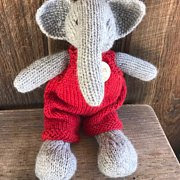 Handmade stuffed toys made with cotton fabrics and stuff with wool fleece. Designs are based in nature—animals, sun, stars, unicorns…
Handmade stuffed toys made with cotton fabrics and stuff with wool fleece. Designs are based in nature—animals, sun, stars, unicorns…
Brute Jute
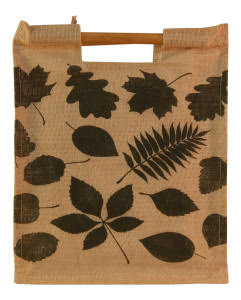 Reusable shopping bags made from jute. “Long wooden handles provide a far more comfortable grip than conventional shopping bags. Carry up to 50% more capacity than a typical plastic or paper bag. Easily rolled-up and neatly stored in your car between shopping trips.”
Reusable shopping bags made from jute. “Long wooden handles provide a far more comfortable grip than conventional shopping bags. Carry up to 50% more capacity than a typical plastic or paper bag. Easily rolled-up and neatly stored in your car between shopping trips.”
Protective Bedding Store
 Protective bedding for bedwetting and incontenance, much made with organic cotton and nontoxic urethane film. All bedding sizes. For all ages. NOTE: I am not recommending the vinyl products on this website, so choose carefully.
Protective bedding for bedwetting and incontenance, much made with organic cotton and nontoxic urethane film. All bedding sizes. For all ages. NOTE: I am not recommending the vinyl products on this website, so choose carefully.
Lightweight Non-Toxic Dinner Plate
Question from Carol
Hi Debra,
I’ve been using melamine for dinner plates, but I worry that they’re toxic. I have a 2 1/2 year old daughter. I need a lightweight plate because I have RSI and some disc trouble. What would you recommend? I couldn’t find anything through Google search.
Debra’s Answer
I think what you want is enamelware. It’s steel with a baked-on enamel coating, which is basically glass. It’s the dinnerware you take camping, but now it’s in a lot of stylish colors and patterns.
Here are a lot of choices for enamel dinnerware online.
You can also just search on your favorite search engine for “enamel dinnerware.”
Some people are concerned about heavy metals in enamel. So before you buy, contact the manufacturer and ask if there are heavy metals in the enamel. You can check for yourself with a Lead Check kit.
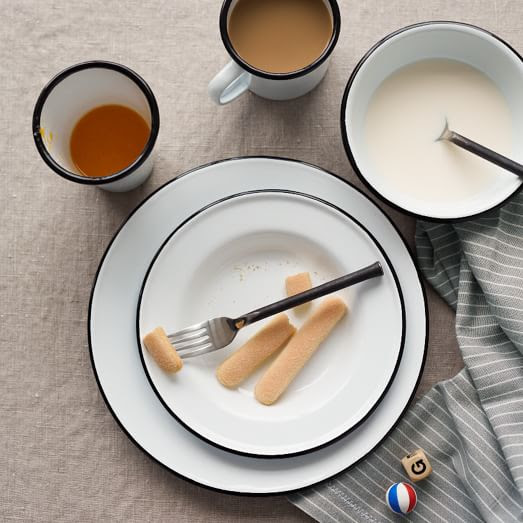 From West Elm
From West Elm
Pure Rooms
Question from Patricia
Hi Debra,
I continue to reference your website as the go to place for info on MCS safe products. Thank you!
I was wondering if you had ever heard of these allergen – free Pure Rooms? They use a multiple step process to clean and purify hotel rooms for people with allergies. There is also an air purifier in each room.
I have MCS and have been able to tolerate some of these rooms. I think the ones I was able to tolerate better were in hotels that hadn’t been remodeled recently.
Unfortunately, the number of Pure Rooms available at any hotels is dwindling. I’m guessing that the cost of maintaining the rooms and / or lack of bookings due to price is resulting in their demise. This is disappointing as these rooms were the only way I could get away for a little vacation.
Do you consider these Pure Rooms MCS safe due to the process used to purify? It seems that the Pure Rooms need more publicity and feedback so people will book them and then hotels could offer more of them.
Pat in Cleveland
Debra’s Answer
Well…not much information on their website.
I don’t see anything about what they do to make the rooms PURE.
Buried in a blog post I found this description of the air purifier:
Each PURE Room is treated according to a patented 7-step purification process and features an air-purifier powerful enough to be classified by the FDA as a Class II medical-grade device. Scientifically proven to eliminate and protect against 98-100% of viruses, bacteria and other harmful irritants, this technology provides superior air-quality and a more rejuvenating environment during recovery.
No mention is made of removing toxic gasses or heavy metals. Sounds like it basically and allergen filter, not a toxics filter.
I think it’s a great idea to have PURE rooms, but I’d like to see them have a toxic-free criteria.
And these rooms should be widely promoted so hotels will have more and more of them.
Oh here, I finally found a link to the PURE PROCESS on the page where you book a room:
Nothing refreshes a room like PURE. Our patented, 7-step purification process treats every surface, including the air, removing up to 99% of pollutants so you can breathe easy, and rest peacefully. PURE’s leading air-purification system protects you from airborne irritants, and eliminates odors at the source, leaving your room smelling fresh and clean. PURE’s unique, hypoallergenic mattress and pillow encasements provide soft, breathable coverings to protect you even further. Carpets, upholstery and all surfaces are deep cleaned and specially treated. Our rigorous maintenance is performed regularly to keep PURE Room’s certified allergy-friendly. When you stay in a PURE Room, you are free to live without boundaries, confident you have the freshest air quality in the hotel industry.
PURE’S Patented, 7-Step Purification Process
- Deep Clean Air-Handling Unit. Deep Clean Air-Handling Unit. A PURE heating and air conditioning unit along with air clean filters results in healthier air circulating throughout the room. Coils are deep cleaned and disinfected using PURE’s advanced treatment. And finally, an enzyme-based drip-pan tablet is in place to ensure maximum protection and minimum allergy at home or in partner hotels.
- PURE Tea Tree Oil Cartridge. Tea tree oil is a natural substance known for its antimicrobial and disinfectant properties. A cartridge of this tea tree oil is installed in the air-handling unit to maintain sanitized conditions.
- Carpet and Upholstery Cleaning. Our patented PURE clean solution is used to maximize the removal of dirt, bacteria and mold from all soft surfaces that traditional cleaners leave behind.
- One Time Shock Treatment. This advanced shock treatment destroys nearly all of the mold and bacteria in every nook and cranny of the room, removing any lingering odors caused by these and other contaminants, including but not limited to cigar or cigarette smoke, pets, or other unpleasant sources. The result is a fresh, crisp, environment.
- PURE Shield. This bacteriostatic barrier is applied to all room surfaces to repel microorganisms that cause illness and discomfort, and prevent their growth. Our advanced shield process makes it nearly impossible for bacteria viruses to survive in a PURE environment.
- Air Purification System. PURE’s air purifier is 24-hour defense against airborne irritants. Listed by the FDA as a Class II Medical Device, PURE’s state-of-the-art system is proven to kill 98% to 100% of bacteria and viruses.
- Allergy-Friendly Bedding. PURE’s personal protection continues. Aside from air clean filters, PURE uses only micro-fiber, mono-filament mattress and pillow encasements for lesser risks of allergy at home.
So…nothing about toxics. Bedding is synthetic. It’s all about bacteria and viruses and allergens.
But it may be better than most hotel rooms. I don’t know. I’ve never stayed in one.
Nightstand from Room and Board
Question from Sue
Hi Debra,
I found a Zen style nightstand I love at Room and Board. It’s walnut veneer over plywood and MDF (argh) so I called them to inquire. They told me all of their products have 0 VOC’s by the time they leave the warehouse, meet California standards, and many are Greengard certified (but they don’t spend the $ to test all of their products for that, they test mostly the kid stuff). They use all non-toxic glues. Do you think it’s safe?
www.roomandboard.com/catalog/bedroom/nightstands/copenhagen-nightstands
Thanks Deb!
Debra’s Answer
You are telling me that it’s made from materials that usually are red flags for me, but Room & Board seems to be aware of the outgassing issues and say they don’t exist.
So I would proceed with caution, bring it home, and be prepared to return it if you find it does outgas after all.
Dinnerware
Question from Dianne
Hi Debra,
Do you know if Villeroy and Boch fine china and bone china is safe to use or has too much lead content?
Debra’s Answer
I don’t know off hand.
But instead of me finding out, I’ll tell you how to find out so you can check any china you want to.
1. Go to the manufacturer’s website: www.villeroy-boch.com
2. Look for the “Contact Us” link which is usually in the top navigation bar or in the footer: www.villeroy-boch.com/shop/contacts/
3. Often there is a phone number you can call for Customer Service, but not on this site. They have only a contact form. Fill it out and ask your question. They may or may not respond.
Ask them if their china is lead free. Some china companies have a statement. This one does not.
Look in the product descriptions for “lead-free” or a State of California Proposition 65 warning label.
If there is a Proposition 65 label, there is lead in the glaze. If not, or if it says “lead-free” that means there is no lead added. But there is often lead in the materials that is naturally occurring.
See the Dinnerware page on Debra’s List for the dinnerware I recommend.
YOU CAN’T ESCAPE LEAD. THAT’S WHY I DETOX FOR LEAD EVERY DAY.
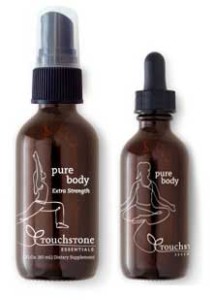
Lead is in many products we use every day and even in the outdoor air. We can’t escape it. So it’s likely that your body has built up a store of lead and possibly other heavy metals that could be affecting your health.
Once lead and other heavy metals enter your body, it is very difficult for your body to remove them.
That’s why I take PureBody Liquid Zeolite every day. This natural mineral is uniquely suited to remove heavy metals. Tiny bits of negatively-charged zeolite act like little magnets to attract positively-charged particles—which include 99.9% of heavy metals, radiation, and organic chemicals–so they can be removed from your body via your kidneys. It’s simple, effective, and affordable.
Kitchen and Bathroom Towels
Question from Sicili
Hi Debra,
Will you please tell me what type of towels you use in the kitchen and bathroom? Like for doing dishes, taking baths and drying off. Do you use non organic 100% cotton towels of different colors or do you stick to GOTS certified ? I am just curious because I am trying to figure out what to do as far as my wash cloths and such and I greatly value your opinion. Thank you so much for your time Debra.
Debra’s Answer
If I had all the money needed to buy everything in the world I want, I would choose GOTS certified organic natural fibers for everything.
The reality is that I buy what I can afford, which is 100% natural fibers, without finishes. This type of textile uses chemicals in growing and processing, but there is little, if any, exposure at the user end.
For my dishes, I now use 100% linen towels because they absorb water sooo much better than cotton. Just a wipe and dishes are completely dry. They cost about twice as much as cotton, but they are also more durable. I bought a few at IKEA. They were $3.99. VARDAGEN. They are not sold online but they probably have them at your local IKEA store. I used to use just non-organic cotton towels of various colors.
I also have some linen dish towels on the Kitchen Linens page of Debra’s List.
My bath towels are currently 100% cotton terry cloth that I bought at Bed Bath & Beyond about ten years ago. They are blue. But I have my eye on buying some linen bath towels because, as I said above, they are so absorbent, and get softer and softer with every wash.
I have some linen bath towels on the Bath Linens page of Debra’s List.
Building Biology Institute
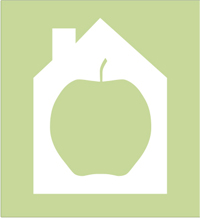 BBI educates people from all professions and walks of life about the hazards to human health from electromagnetic radiation, indoor air & water pollution and toxic building materials. The Institute’s website offers a wealth of free information (factsheets, videos, articles, downloads), as well as a comprehensive curriculum that includes online courses (self-study), a mentored correspondence course, and six instructor-led 5-day seminars. The institute also offers professional certification training for those who wish to make a profound difference in the health and wellbeing of others, training and certifying Building Biology Environmental Consultants (BBEC), Electromagnetic Radiation Specialists (EMRS), and Building Biology New-build Consultants (BBNC). Also offered is Building Biology Activist (BBA) Certification, which can be accomplished entirely from your home or office, and at your own pace.
BBI educates people from all professions and walks of life about the hazards to human health from electromagnetic radiation, indoor air & water pollution and toxic building materials. The Institute’s website offers a wealth of free information (factsheets, videos, articles, downloads), as well as a comprehensive curriculum that includes online courses (self-study), a mentored correspondence course, and six instructor-led 5-day seminars. The institute also offers professional certification training for those who wish to make a profound difference in the health and wellbeing of others, training and certifying Building Biology Environmental Consultants (BBEC), Electromagnetic Radiation Specialists (EMRS), and Building Biology New-build Consultants (BBNC). Also offered is Building Biology Activist (BBA) Certification, which can be accomplished entirely from your home or office, and at your own pace.
BBI is a 501(c)(3) nonprofit environmental education organization.
Swans Island Company
 Blankets, throws, wraps, and accessories (also yarns) handcrafted from Maine-spun fleeces and hand-dyed yarns. “A Swans Island product means natural fiber, sourced to the highest possible standard, designed to be as timeless as the tides. * Much of our fiber is from local New England farms as well as domestic, family-run farms that have been caring for their flocks for generations. Our organic merino, sourced from South America, has been certified organic by the Global Organic Textile Standard, the world’s leading processing standard for textiles made from organic fibers. * Fleece from those farms is custom spun for us by New England mills on trusty vintage machinery. From there, every skein of Swans Island yarn – whether destined for our looms, our machine-knit accessories, or your knitting needles – is dyed by hand in our Northport dye house. * Many of our yarns are dyed using naturally derived pigments like cochineal, indigo, and madder root. Others are skein-dyed with low-impact dyes. * We make each dye bath with unique recipes, expertly working the fibers in order to achieve our distinctive hand-dyed look and feel. * Many of our products are woven on traditional looms here in Northport; others are produced in partnership with American makers who share our belief in the value of a life built by hand.” Edges handwoven with 100% silk.
Blankets, throws, wraps, and accessories (also yarns) handcrafted from Maine-spun fleeces and hand-dyed yarns. “A Swans Island product means natural fiber, sourced to the highest possible standard, designed to be as timeless as the tides. * Much of our fiber is from local New England farms as well as domestic, family-run farms that have been caring for their flocks for generations. Our organic merino, sourced from South America, has been certified organic by the Global Organic Textile Standard, the world’s leading processing standard for textiles made from organic fibers. * Fleece from those farms is custom spun for us by New England mills on trusty vintage machinery. From there, every skein of Swans Island yarn – whether destined for our looms, our machine-knit accessories, or your knitting needles – is dyed by hand in our Northport dye house. * Many of our yarns are dyed using naturally derived pigments like cochineal, indigo, and madder root. Others are skein-dyed with low-impact dyes. * We make each dye bath with unique recipes, expertly working the fibers in order to achieve our distinctive hand-dyed look and feel. * Many of our products are woven on traditional looms here in Northport; others are produced in partnership with American makers who share our belief in the value of a life built by hand.” Edges handwoven with 100% silk.
Mountain Honey Clothiers
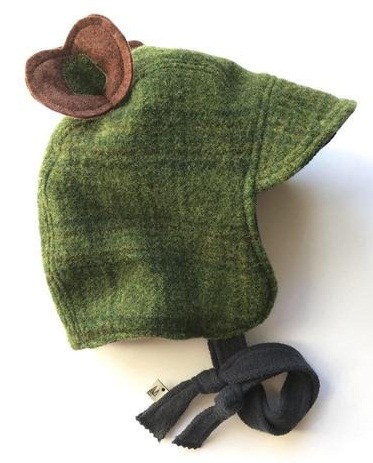 “We are committed to creating heirloom quality children’s clothing, toys, and accessories, that support imagination and your child’s own unique style. We don’t skip corners, follow the hotest trends, or print big flashy logos on our products. We create pieces that are timeless and fun, yet incredibly functional.We are all about bringing your family fashion choices that allow your little one to express their uniqueness and creativity, while making a positive impact on their world. Our clothing is more than just whimsical, well made, and unique, it is made by a small company, with a huge heart; a company with a conscience.” In an email, Diedre told me she is committed to using only natural fibers (with one tiny exception: recycled plastic in a wool blend). She tries to use as much certified organically grown cotton as possible, or organic linen. The dolls are stuffed with fluffy organic cotton fill. I choose fabrics that have a 100% cotton, linen, wool, or flax content, no synthetic fibers. I use cotton thread, and metal snaps that are produced in the US and are nickel-free. I purchase from companies that either produce their products organically, are sustainably run, or can be classified as a “small business”. 100% of my products are handmade in VT, USA by either myself or my assistant. The Mountain Honey line is based on the principles of sustainably produced, small-batch fashion.”
“We are committed to creating heirloom quality children’s clothing, toys, and accessories, that support imagination and your child’s own unique style. We don’t skip corners, follow the hotest trends, or print big flashy logos on our products. We create pieces that are timeless and fun, yet incredibly functional.We are all about bringing your family fashion choices that allow your little one to express their uniqueness and creativity, while making a positive impact on their world. Our clothing is more than just whimsical, well made, and unique, it is made by a small company, with a huge heart; a company with a conscience.” In an email, Diedre told me she is committed to using only natural fibers (with one tiny exception: recycled plastic in a wool blend). She tries to use as much certified organically grown cotton as possible, or organic linen. The dolls are stuffed with fluffy organic cotton fill. I choose fabrics that have a 100% cotton, linen, wool, or flax content, no synthetic fibers. I use cotton thread, and metal snaps that are produced in the US and are nickel-free. I purchase from companies that either produce their products organically, are sustainably run, or can be classified as a “small business”. 100% of my products are handmade in VT, USA by either myself or my assistant. The Mountain Honey line is based on the principles of sustainably produced, small-batch fashion.”
Dots on Tots
100% certified organic cotton hats for babies and toddlers. Various styles in various colors. “Dots on Tots is a baby headwear company specializing in ear flap hats made from natural, certified-organic cotton…As newborns and toddlers have sensitive skin and are vulnerable to ENT ( ear, nose and throat) complications, [parents need] a line of accessories that keep babies safe by covering their ears and at the same time not harming their sensitive skin. With her Master’s Degree in Fashion Design and Technology and an experienced mother, Olivia set forth to provide the children’s market with a niche product that would provide safety and comfort to children.” Noise-reduction inserts for ear flaps available.
Rat Pack Hats
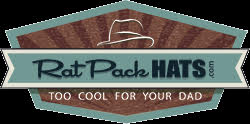 Natural fiber hats for men with “cool and sophisticated styles” reminiscent of the Hollywood “rat pack” actors. Made from cotton, linen, straw, wool, leather, or waterproof genuine oil cloth (choose “Shop Hats by Material” from the side menu).
Natural fiber hats for men with “cool and sophisticated styles” reminiscent of the Hollywood “rat pack” actors. Made from cotton, linen, straw, wool, leather, or waterproof genuine oil cloth (choose “Shop Hats by Material” from the side menu).
Jacobs & Brichford
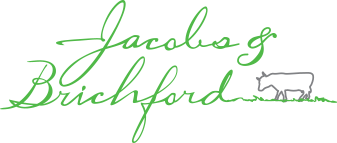 Producers of raw milk cheese on their family’s Hoosier Homestead Farm. “Making cheese from our solely grass-fed dairy cows, we continue to live and work on the farm that has been in the family since 1819. We believe in a sustainable future and our cheese is one way we can bring that vision to you.”
Producers of raw milk cheese on their family’s Hoosier Homestead Farm. “Making cheese from our solely grass-fed dairy cows, we continue to live and work on the farm that has been in the family since 1819. We believe in a sustainable future and our cheese is one way we can bring that vision to you.”
Explorer Hats
 “Indiana Jones” style hats for men and women, made from garment washed twill, weathered cotton, boiled wool or naturally harvested organic raffia. Look at this sweet wide-brimmed crocheted toyo hat with flowers made from shells. Great styles. Affordable prices.
“Indiana Jones” style hats for men and women, made from garment washed twill, weathered cotton, boiled wool or naturally harvested organic raffia. Look at this sweet wide-brimmed crocheted toyo hat with flowers made from shells. Great styles. Affordable prices.
Gneiss Spice
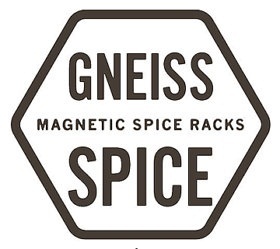 Clever magnetic spice racks and organic spices in small packages to refill. Interlocking hexagonal magnetic spice jars stick to metal racks (or refrigerator doors, I assume).
Clever magnetic spice racks and organic spices in small packages to refill. Interlocking hexagonal magnetic spice jars stick to metal racks (or refrigerator doors, I assume).
Wal-Mart Responds to Consumer Demands by Requiring Manufacturers to Remove Some Toxic Chemicals from Products Sold at Their Stores
In 2013, Wal-Mart asked it’s suppliers to reduce certain toxic chemicals from personal care, cleaning, and beauty products and promote alternatives. The program affects about 90,000 items from 700 manufacturers.
Last week, Wal-Mart announced the chemicals on the list and reported that to date its suppliers have removed 95 percent of the chemicals on the list, by volume weight, from products sold in U.S. Was-Mart stores covered by the policy.
The eight chemicals being reduced by Wal-Mart are:
- Formaldehyde
- Triclosan
- Toluene
- Diethyl phthalate
- Nonylphenol exthoxylates
- Butylparabens
- Dibutyl phthalate
- Propylparaben
Brian Yarbrough, an analyst at Edward Jones & Co. said, “The retailer’s move makes sense. Customers are seeking more information about the substances in the products they buy. This is just the natural evolution of consumers today. From Wal-Mart’s standpoint, it’s kind of the way they need to be moving.”
So, see…our purchase of nontoxic products IS making a difference. The mass market is clearly moving in the direction of less toxic products.
This list of chemicals is interesting. It’s not the list I would have chosen, but it’s a step in the right direction. This list has chemicals that vary widely in toxicity. Toluene, for example, is tremendously more toxic than propylparaben.
I’m happy to see the reduction, but this doesn’t make Wal-Mart a place where all products are safe. I wish they would identify their nontoxic products with shelf-talkers to make it easy for consumers to find them.
This is progress!
BLOOM BERG: Wal-Mart Asks Its Suppliers to Stop Using Eight Chemicals
Amagansett Sea Salt
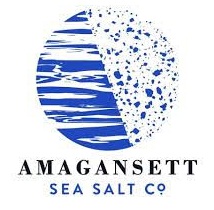 Premium finishing salt, to be added to food on your plate. “Amagansett Sea Salt is crafted entirely by hand in small batches from seawater harvested from the Atlantic Ocean. All steps – from the ocean to the jar – take place in Amagansett, a small, oceanfront hamlet in the Hamptons area of Long Island, New York. Our process is entirely natural, requiring only the sun, the wind, a strong back, and patience. By carefully balancing solar evaporation and exposure to the crisp, clear ocean breezes, our Amagansett Sea Salt forms slowly into crystals with a mild, sweet, flavor and a distinctive soft “crunch” that enhances any food. Clean water. Clean air. Exceptional sea salt. The best salt comes from clean, cold, fast-moving ocean water solar-evaporated outdoors in clean, fresh ocean air. We are not a salt importer or blender; rather we make our crystals. Our salt is made outdoors in the sunshine and bathed by ocean breezes, not under a roof or in a greenhouse. We do not boil or oven-dry our seawater or salt. We use no chemicals or anti-caking agents. We have taken excruciatingly difficult steps to eliminate all metal from contacting our sea water and salt crystals. Producing salt this way is hard, labor intensive and weather dependent, but the results are worth it.” Pure salt and salt blends.
Premium finishing salt, to be added to food on your plate. “Amagansett Sea Salt is crafted entirely by hand in small batches from seawater harvested from the Atlantic Ocean. All steps – from the ocean to the jar – take place in Amagansett, a small, oceanfront hamlet in the Hamptons area of Long Island, New York. Our process is entirely natural, requiring only the sun, the wind, a strong back, and patience. By carefully balancing solar evaporation and exposure to the crisp, clear ocean breezes, our Amagansett Sea Salt forms slowly into crystals with a mild, sweet, flavor and a distinctive soft “crunch” that enhances any food. Clean water. Clean air. Exceptional sea salt. The best salt comes from clean, cold, fast-moving ocean water solar-evaporated outdoors in clean, fresh ocean air. We are not a salt importer or blender; rather we make our crystals. Our salt is made outdoors in the sunshine and bathed by ocean breezes, not under a roof or in a greenhouse. We do not boil or oven-dry our seawater or salt. We use no chemicals or anti-caking agents. We have taken excruciatingly difficult steps to eliminate all metal from contacting our sea water and salt crystals. Producing salt this way is hard, labor intensive and weather dependent, but the results are worth it.” Pure salt and salt blends.
Conner Handmade Hats
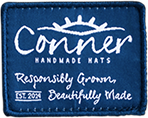 High quality hats for women, men, and children in many styles, made from organic cotton. Also hemp, leather, linen, waxed cotton, raffia, paper straw, wool, and more (see Material menu for full list). Extra large sizes available for big heads. I’ve never seen so many styles of hats made from natural materials all in one place.
High quality hats for women, men, and children in many styles, made from organic cotton. Also hemp, leather, linen, waxed cotton, raffia, paper straw, wool, and more (see Material menu for full list). Extra large sizes available for big heads. I’ve never seen so many styles of hats made from natural materials all in one place.
Naked Binder
3-ring binders (various sizes), pocket folders, and tab dividers that are ‘recyclable, strong, and made of recycled materials. We designed them to not only look great, but be healthier and safer to make, use, and recycle…We believe the products you use should inspire, be strong, and be kind to the planet.” Choose from binders made with 100% post-consumer recycled cardboard covers or beautiful real wood covers.
Southern Scent Candle Co.
I found this candle company at a local street fair. “All natural soy candles at a price that everyone can enjoy.” All organic 100% soy bean wax, cedar wooden wicks, and organic essential oils for “a fully organic product…Due to the nature of the soy and wood these candles will have a low flame, a more delicate fragrance, and create more of a nightlight effect than the full flame produced by the petroleum and sting of traditional candles.”
Red Clouds Collective
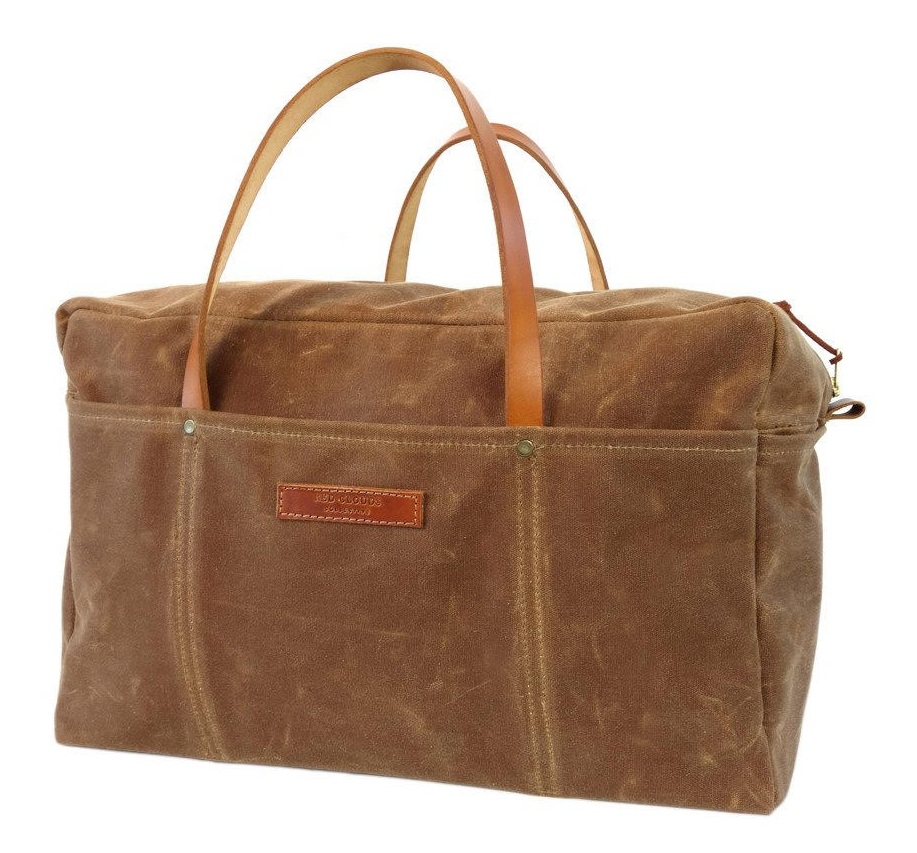 Clothing, bags, and accessories made with all natural materials and exceptional craftsmanship. “Our products are born from necessity. Each one is thoughtfully designed to make life a little easier, and they’re all built to last a lifetime.”MATERIALS: Vegetable Tanned Leather from Hermann Oak—a St. Louis, Missouri-based tannery that has been tanning leather using extracts of tree bark in the traditional method since 1881. Waxed Canvas from Fairfield Textile, a specialized American manufacturer based in Bridgeton, New Jersey that has been crafting fabric since 1838. Selvage Denim from Cone Mills’ White Oak Plant in North Carolina, woven on vintage 1940s fly-shuttle looms that give each piece of fabric a unique depth and dimension.”
Clothing, bags, and accessories made with all natural materials and exceptional craftsmanship. “Our products are born from necessity. Each one is thoughtfully designed to make life a little easier, and they’re all built to last a lifetime.”MATERIALS: Vegetable Tanned Leather from Hermann Oak—a St. Louis, Missouri-based tannery that has been tanning leather using extracts of tree bark in the traditional method since 1881. Waxed Canvas from Fairfield Textile, a specialized American manufacturer based in Bridgeton, New Jersey that has been crafting fabric since 1838. Selvage Denim from Cone Mills’ White Oak Plant in North Carolina, woven on vintage 1940s fly-shuttle looms that give each piece of fabric a unique depth and dimension.”
Seavees
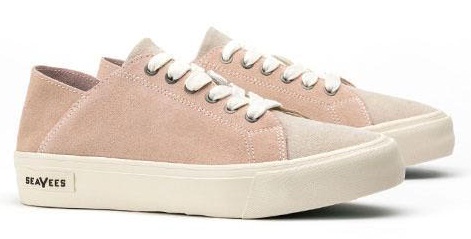 Casual sneakers, espadrilles, and sandals—made with washed natural fiber fabrics (cotton, linen, hemp), genuine gum rubber soles, and vegetable-tanned leather.
Casual sneakers, espadrilles, and sandals—made with washed natural fiber fabrics (cotton, linen, hemp), genuine gum rubber soles, and vegetable-tanned leather.
America’s First Nontoxic City
Read this inspiring story about how the city of Irvine, California got pesticides reduced in public places.
Anyone can do this anywhere, for any chemical.
Let’s get going with this everywhere.
OC WEEKLY: How Irvine Became SoCal’s First Non-toxic City

Can Water Make You Fat?
The cover of First for Women on magazine racks this week says
THE NEW WATER CURE
Oxford University researcher confirm drinking H2O speeds weight loss by 550%
But 95% of women don’t see results because the water they’re drinking is slowing their thyroid
Well, I had to read that!
Unfortunately, First for Women doesn’t cite their studies, and I couldn’t find a study online to support the claim in their headline.
But it is widely known and documented that fluoride in tap water can effect your thyroid gland. Since the thyroid gland regulates weight gain and loss, drinking fluoridated water would impair your body’s ability to lose weight. Fluoride in tap water may even contribute to weight gain—so yes, one can get fat from drinking water.
It’s no secret that drinking water can help you lose weight, but drinking fluoridated water may defeat the purpose.
Since fluoride has many other health effects, it’s always best to drink fluoride-free water.

If you are drinking tap water, it’s likely that it contains fluoride.
Your best protection is to get a water filter that is specifically designed to remove fluoride.
The water filter I use in my own home is made by Pure Effect. It’s state of the art filtration removes just about everything that might be in your water that you don’t want to put in your body…including fluoride.
Learn more about Pure Effect water filters here…
Toxic Chemicals and Food Allergies/Sensitivities
I first observed a connection between food allergies and toxic exposures more than thirty years ago when I was working in the office of a doctor who was treating patients with multiple chemical sensitivities.
They would come in reacting to chemicals and foods and the doctor would send them off to the beach for a couple of weeks to give their bodies a break from the bombardment of toxic exposures. This was the treatment then, before we knew about saunas.
And it worked, too. Patients would come back from the beach happy and excited that they could eat any food they wanted without reaction.
And that’s how I made the connection between toxic chemicals overloading your body and food allergies.
This week two emails came in regarding toxic chemical exposure and food allergies.
One was the RODALE WELLNESS: 10 Crazy Things Pesticides Do to Your Body.
The other is WHOLE LIFE NUTRITION: How Chemicals Increase Food Allergies and Food Sensitivities. This well-documented post shows how toxic chemicals damage your immune system, leading to food allergies (and allergies and sensitivities of all sorts).
I was happy to see the scientific support for this, after observing it all those years ago.
The pieces of this toxic puzzle are coming together.
Harmful Chemicals from Natural Gas Operations Contaminate Bodies of Local Residents
 Fracking is the process of drilling down into the earth before a high-pressure water mixture is directed at the rock to release the gas inside. Water, sand and chemicals are injected into the rock at high pressure which allows the gas to flow out to the head of the well.
Fracking is the process of drilling down into the earth before a high-pressure water mixture is directed at the rock to release the gas inside. Water, sand and chemicals are injected into the rock at high pressure which allows the gas to flow out to the head of the well.
You may not have considered fracking operations as a source of toxic chemical exposure, but it’s something you should check on. 12.4 million people live in the threat radius. CHECK MAPS HERE to fnd out if your home or school is within a 1/2 mile of an active oil & gas well, and more about the pollutants that may be present from fracking. Thankfully, I’m not in a fracking zone here in Florida, but if you live in the midwest, northeast, or California, please check the map.
A new study has found that many of the toxic chemicals used at fracking sites may be present in higher concentration in the bodies of people in nearby communities.
A first-of-its-kind study combining air-monitoring methods with new biomonitoring techniques detected volatile organic compounds (VOCs) released from natural gas operations in the bodies of nearby residents at levels that were as much as 10 times that of the national averages.
The study focused on measuring ambient levels of a specific family of VOCs named BTEX chemicals — which include benzene, toluene, ethylbenzene, and xylenes — because these chemicals are known to be hazardous to human health even at low levels. Researchers then used new biomonitoring methods to detect these chemicals in 11 local residents who volunteered to participate in the study by wearing air quality monitors and providing blood and urine samples, and found evidence of eight hazardous chemicals emitted from Pavillion gas infrastructure in the urine of study participants.
EARTH ISLAND JOURNAL: High Levels of Toxins Found in Bodies of People Living Near Fracking Sites
EARTHJUSTICE: Unfractured: Joining Together ro Fight Fracking
Travel Cribs
Question from Jan
Hi Debra,
Have been researching safe Bassinetts/cosleepers. The best I have found are Nuna Sena and Lotus.
Do you have an opinion on these?
Debra’s Answer
Lotus website says they are “nontoxic” (and do extensive testing to ensure the bassinets are free of a long list of chemicals, and also that they are GREENGUARD GOLD Certified (they are the only travel crib in the world to receive this certification).
These are both good indicators that the product is nontoxic. However, I don’t see their materials listed, so I can’t verify for myself.
Nuna Sena is made with OEKO-TEX certified materials, but again, I don’t know what they are.
10 Ways Pesticides Harm Your Body
Here’s a great overview of 10 documented health effects of pesticides:
RODALE WELLNESS: 10 Crazy Things Pesticides Are Doing to Your Body
Of course the answer is to eat organic, but this post might make the connection between pesticide exposure in foods and a condition you or a loved one may have.
For example, did you know pesticides in food are liked to memory loss, diabetes, and obesity?
And there’s more…
My Personal Experience With “Second-Hand” Asbestos
Hi Debra,
I saw that you haven’t posted much about asbestos and I wanted to share my experience with this dangerous mineral. Exposure to asbestos is a truly silent killer and something that everyone should be aware of.
Many people think asbestos is a problem of the past, as laws were passed in the 1970’s that limited its use. While asbestos production took a sharp turn and began to decline around the time these laws were passed, it is still NOT banned in the US and Canada. It can still be found in older homes and buildings, schools, naval yards, automobiles, and even consumer products- leaving everyone at risk for exposure. Until asbestos is totally banned and eradicated, the potential for asbestos exposure will remain.
Exposure to asbestos is something that changed the path of my life forever. I am a mesothelioma survivor and advocate. I was initially exposed to asbestos through wearing my father’s work jacket. I wore his jacket to do outside chores so I wouldn’t get my clothes dirty. Little did I know that asbestos fibers were embedded into that jacket and would lead to a diagnosis of mesothelioma in 2005 when I was just 36 years old. My prognosis was not good; I was only given 15 months to live. Luckily, I was a candidate for a dangerous surgical procedure that involved the removal of my left lung. Recently, I am happy to say I celebrated my 10-year survival anniversary and I use my second lease on life to continue the exhausting fight for an international ban on asbestos.
Asbestos was originally thought of as a “miracle mineral”. It is extremely flame retardant, heat resistant and very cheap. Because of its cost-effectiveness and many benefits, it was produced in major quantities. However, people working with the product were found to have associated health problems as early as the 1900’s. The major health issue that asbestos causes is mesothelioma, a rare and aggressive cancer that doesn’t show symptoms until 20-40 years later. Mesothelioma is usually found in lining of the lungs, heart and stomach, and leaves those diagnosed with a prognosis of about 12-21 months to live.
For more information about this dangerous cancer caused by asbestos, head over to mesothelioma.com/mesothelioma.
Excessive Lead in Tap Water Across America, says NRDC
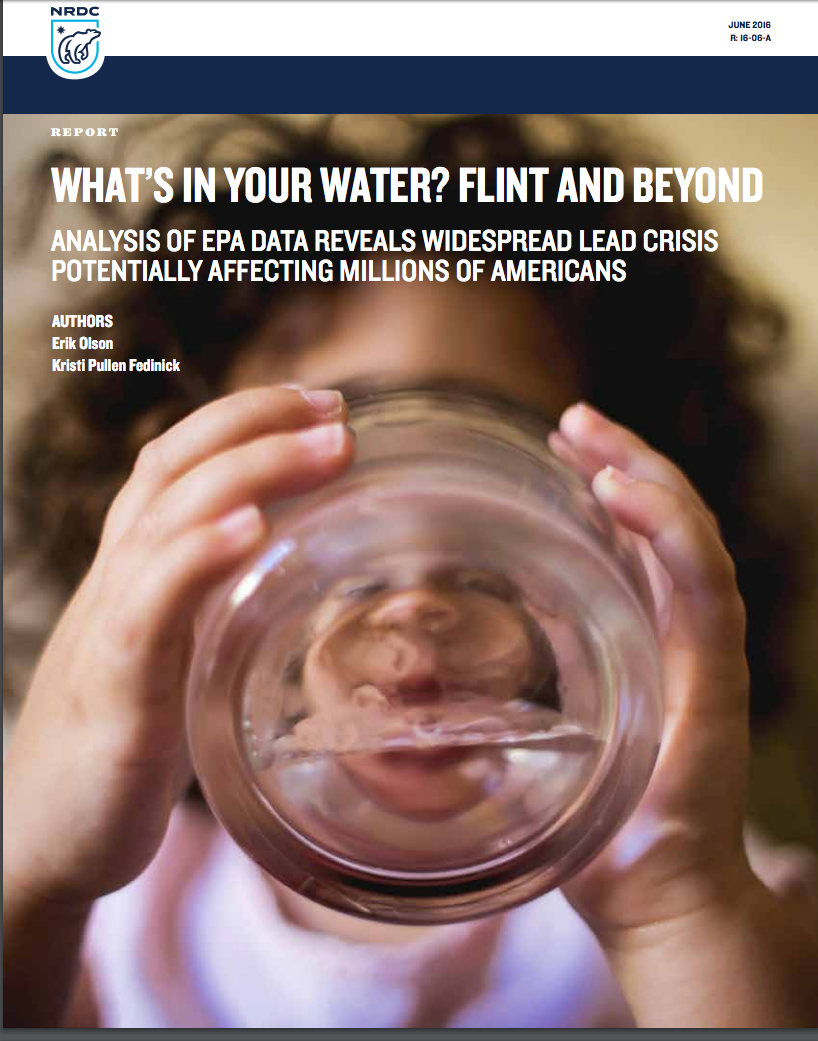 In an extensive analysis of official EPA violation and enforcement records, NRDC mapped lead-related issues in drinking water systems across the United States. Our research illustrates the extraordinary geographic scope of America’s lead crisis. In 2015, 18 million people were served by water systems with lead violations
In an extensive analysis of official EPA violation and enforcement records, NRDC mapped lead-related issues in drinking water systems across the United States. Our research illustrates the extraordinary geographic scope of America’s lead crisis. In 2015, 18 million people were served by water systems with lead violations
NRDC:
What’s in Your Water? Flint and Beyond (article)
NRDC:
What’s in Your Water? Flint and Beyond (study)
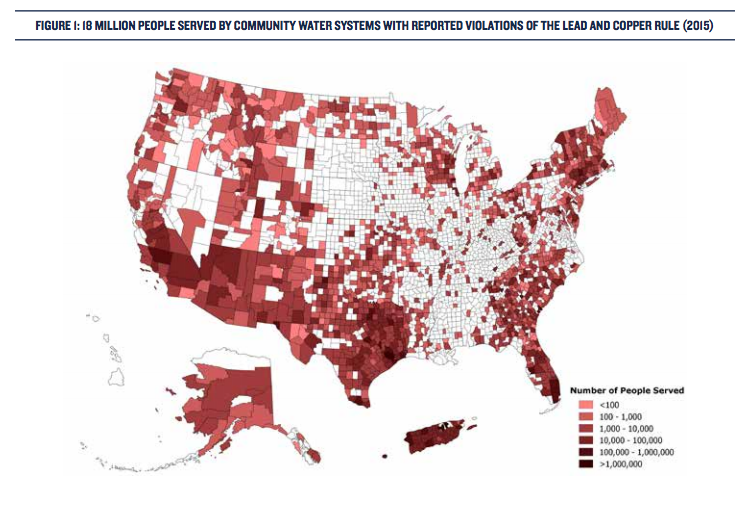
 If you are drinking tap water, it’s likely that it contains chlorine or chloramines, fluoride, lead and other heavy metals, perhaps radiation, and unknown contaminants of various sorts.
If you are drinking tap water, it’s likely that it contains chlorine or chloramines, fluoride, lead and other heavy metals, perhaps radiation, and unknown contaminants of various sorts.
Your best protection is to get a water filter that removes a broad spectrum of known pollutants and unknown contaminants.
The water filter I use in my own home is made by Pure Effect. It’s state of the art filtration removes just about everything that might be in your water that you don’t want to put in your body.
Learn more about Pure Effect water filters here…
Skin Care That Fights Pollution?
Just a few days ago, The New York Times reported that toxic pollutants in the air can affect the skin’s aging process. A study done on data from subjects in Germany and China found an association between air pollution and brown spots on the skin.
In response, major beauty companies are now offering a new type of skin care product: “pollution protection.”
Read the article for all the technical details of how pollution is affecting your skin.
But skip all the expensive recommended beauty products listed. I haven’t checked all the labels, but I suspect they contain their own pollutants.
The article clearly states the best defense against air pollution is a regular routine of gentle cleansing and application of vitamin C serum or vitamin E to the skin on your face.
THE NEW YORK TIMES: What’s All the Fuss About Pollution-Fighting Skin Care?
JOURNAL OF INVESTIGATIVE DERMATOLOGY: Expanding Our Understanding of Human Skin Aging
BPA in Canned Food = BPA in the Body—and Cream of Mushroom Soup Leaches more BPA Than Peaches
We’ve heard this before—BPA is leaching from the interior linings of cans into canned food—but a new study shows that different types of food leach different amounts of BPA.
The study suggests that canned soups and pasta can expose consumers to higher concentrations of BPA than canned vegetables and fruit — and although those foods are tied to BPA concentrations, canned beverages, meat and fish are not.
Researchers found that people who consumed one canned food item in the past day had about 24% higher concentrations of BPA in their urine compared with those who had not consumed canned food. The consumption of two or more canned food items resulted in about 54% higher concentrations of BPA.
Once the researchers evaluated what types of canned foods were consumed, they found that eating canned soup resulted in a whopping 229% higher concentration of BPA compared with consuming no canned foods. Canned pasta resulted in 70% higher concentrations, and canned vegetables or fruit resulted in 41% higher concentrations.
In the past, researchers tested can linings for the presence of BPA. This study shows that BPA from can linings actually do elevate levels of BPA in the body.
CNN: Canned foods linked to BPA risk in new study
Cook without cans at Toxic Free Kitchen.
The Least Toxic Way to Waterproof Fabric
I happened to run across a how-to webpage that gave six methods for waterproofing fabric:
1. waterproof sprays
2. laundry detergent and alum
3. turpentine and soybean oil
4. iron-on vinyl
5. beeswax
6. linseed oil
Most of these are pretty toxic, but beeswax is actually a great solution.
I used to have a “waxed” raincoa oil clothe that was cotton coated with wax. This is apparently how they made raincoats before we had modern waterproof fabrics.
You may have heard of “oilcloth,” which is fabric treated with boiled linseed oil to make it waterproof. This was used for tablecloth. Today “oilcloth” is fabric with a layer of plastic.
Here are the instructions for waxing fabric to make it waterproof:
www.wikihow.com/Waterproof-Fabric
Kelly & Co.
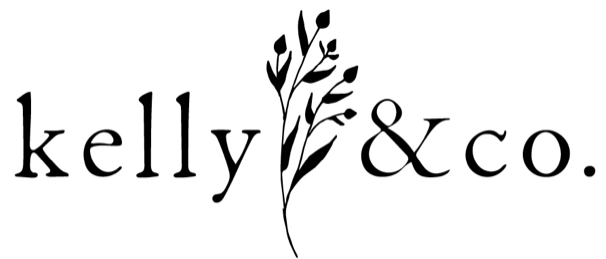 A “small and sturdy collection of thoughtfully designed handmade goods for the home. Materials- like linen, waxed canvas and reclaimed hardwoods are chosen for their sustainability, durability, and beauty. Enduring and durable, simple and sturdy, handy and handmade.” Oversized linen napkins in soft colors, linen blankets, linen coffee filters, wooden bangles, aprons, waxed canvas lunch bags and carryalls… “Kelly & Co. represents the work of two Kellys- Erin & Don- both living and working in the same tiny town in the hills of western Massachusetts. They are niece & uncle, and work with fabric & wood, respectively…Both have been at their chosen crafts for many years- so long that it feels perhaps their crafts chose them. Each will wax poetic about their materials if given the opportunity, and family dinners may find them appreciating the tiny luxuries of working where they live..”
A “small and sturdy collection of thoughtfully designed handmade goods for the home. Materials- like linen, waxed canvas and reclaimed hardwoods are chosen for their sustainability, durability, and beauty. Enduring and durable, simple and sturdy, handy and handmade.” Oversized linen napkins in soft colors, linen blankets, linen coffee filters, wooden bangles, aprons, waxed canvas lunch bags and carryalls… “Kelly & Co. represents the work of two Kellys- Erin & Don- both living and working in the same tiny town in the hills of western Massachusetts. They are niece & uncle, and work with fabric & wood, respectively…Both have been at their chosen crafts for many years- so long that it feels perhaps their crafts chose them. Each will wax poetic about their materials if given the opportunity, and family dinners may find them appreciating the tiny luxuries of working where they live..”
Jules Loft
“Edible Garden Art” in the form of organic wild bird feeder “made by hand in small batches using nature’s cache.” These are edible “sculptures” made of food for wild birds, in shapes such as bells, balls, hearts and stars. Charming.
Pillobebe
Cork and organic cotton and all organic cotton playmats. “Premium Handmade, Eco-friendly, Nontoxic, Natural Cork, Certified Organic Cotton Baby/Kids Play Mat. CorkiMat™ is safe from all harmful chemicals and toxins. Cork and bamboo fibers are naturally Soft, Organic, Eco-friendly, Antibacterial, Antimicrobial, Anti-fungal and Naturally flame-retardant. Cork barks are harvested by hand over and over again without harming cork trees. Bamboo plants are fast growing so they can be replaced much faster than trees. Another material is cotton and we use GOTS Certified Organic cotton only. CorkiMat™ is FREE of Formamide, Fire-retardants, PVC, BPA, PBS, Formaldehyde, Phthalates, Lead, and harmful VOCs. Removable cover: 100% GOTS Certified Organic Cotton. Handmade in USA.”
Little Barefoot Princess
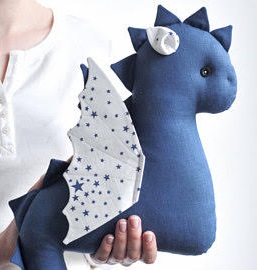 “Classic heirloom-quality soft toys re-imagined in choice materials: GOTS Certified Organic Cotton, Hemp, Peace Silk and “The Fiber of the Gods” ˜ fine Alpaca fleece.” Their teddy bear is made from alpaca fiber, GOTS Certified Organic Cotton and low impact fiber reactive dyes. Plus other stuffed animals—both real and imaginary—are made in the same manner. Blue whales, dolphins, unicorns, dragons, pegasus, rabbits, elephants…all handmade.
“Classic heirloom-quality soft toys re-imagined in choice materials: GOTS Certified Organic Cotton, Hemp, Peace Silk and “The Fiber of the Gods” ˜ fine Alpaca fleece.” Their teddy bear is made from alpaca fiber, GOTS Certified Organic Cotton and low impact fiber reactive dyes. Plus other stuffed animals—both real and imaginary—are made in the same manner. Blue whales, dolphins, unicorns, dragons, pegasus, rabbits, elephants…all handmade.
Ground 2 Table
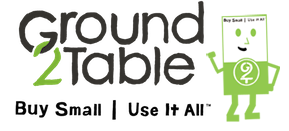 12 certified organic, non-GMO, salt-free, sugar-free spice blends , packaged in small bags so you can use it all and eliminate food waste.
12 certified organic, non-GMO, salt-free, sugar-free spice blends , packaged in small bags so you can use it all and eliminate food waste.
Prairie Linen Company
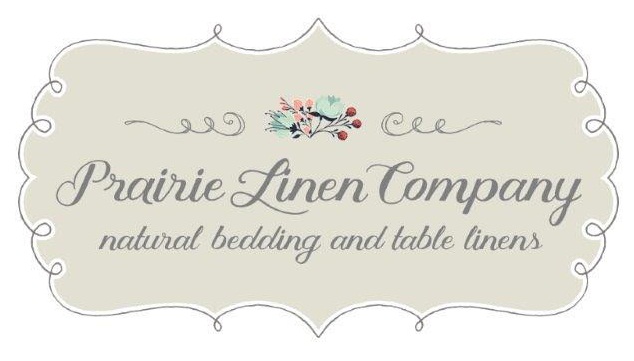 Handmade luxury bedding and table linens, made in the USA using high quality 100% natural linen fabric.” These are design pieces for decoration, not sheets and pillowcases. Monogrammed and ruffled pillow shams, bedskirts and spreads, crib accessories, placemats and monogrammed napkins, linen fabrics.
Handmade luxury bedding and table linens, made in the USA using high quality 100% natural linen fabric.” These are design pieces for decoration, not sheets and pillowcases. Monogrammed and ruffled pillow shams, bedskirts and spreads, crib accessories, placemats and monogrammed napkins, linen fabrics.
Human Revolution Clothing
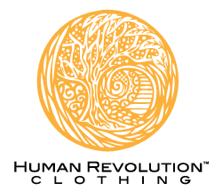 Organic t-shirts and casual clothing for women and men. “Human Revolution Clothing is a social, economic, environmental and LOVE centered clothing company that is passionate about and dedicated to changing the way clothing is made seed to shirt! Our clothing is made from 100% Certified Organic Cotton that is GMOfree & FairTrade. It is GOTS (Global Organic Textile Standard), USDA & Fair Trade certified.”
Organic t-shirts and casual clothing for women and men. “Human Revolution Clothing is a social, economic, environmental and LOVE centered clothing company that is passionate about and dedicated to changing the way clothing is made seed to shirt! Our clothing is made from 100% Certified Organic Cotton that is GMOfree & FairTrade. It is GOTS (Global Organic Textile Standard), USDA & Fair Trade certified.”
The Organic Handkerchiefs Company
GOTS certified organic cotton flannel and woven handkerchiefs in four sizes.
A New Public Health Revolution
There was a great article in The New York Times back in February (I just found out about it) called “Are You a Toxic Waste Disposal Site?”
It talks about toxics in our bodies and in particular exposures to lead, but most importantly, the author gives a historical example of a public health change that worked.
Maybe, just maybe, the crisis in Flint can be used to galvanize a public health revolution.
In 1854, a British doctor named John Snow started such a revolution. Thousands were dying of cholera at the time, but doctors were resigned to the idea that all they could do was treat sick patients. Then Snow figured out that a water pump on Broad Street in London was the source of the cholera. The water company furiously rejected that conclusion, but Snow blocked use of the water pump, and the cholera outbreak pretty much ended.
Thousands were dying…a water pump was found to be the source…one man blocked the use of the water pump.
Oh how I wish I could block the use of toxic chemicals in consumer products!
A group of scholars, led by David L. Shern of Mental Health America, argue that the world today needs a new public health revolution focused on young children, parallel to the one mounted for sanitation after Snow’s revelations about cholera in 1854. Once again, we have information about how to prevent pathologies, not just treat them — if we will act.
The reason for a new effort is a vast amount of recent research showing that brain development at the beginning of life affects physical and mental health decades later. That means protecting the developing brain from dangerous substances and also from “toxic stress” — often a byproduct of poverty — to prevent high levels of the stress hormone cortisol, which impairs brain development.
A starting point of this public health revolution should be to protect infants and fetuses from toxic substances, which means taking on the companies that buy lawmakers to prevent regulation. Just as water companies tried to obstruct the 19th-century efforts, industry has tried to block recent progress.
Back in 1786, Benjamin Franklin commented extensively on the perils of lead poisoning, but industry ignored the dangers and marketed lead aggressively. In the 1920s, an advertisement for the National Lead Company declared, “Lead helps to guard your health,” praising the use of lead pipes for plumbing and lead paint for homes. And what the lead companies did for decades, and the tobacco companies did, too, the chemical companies do today.
Well, we here on this website are already having the revolution right here in our own homes. We all just need to make it more known.
Finding Nontoxic Shoes
Question from Tammy
Hi Debra,
Hi for about a year now my feet have been very painful cannot get comfortable in any shoe my feet become real hot and I just want to rip my shoes off within 10 minutes of putting them on. Recently found out I was allergic to fossil fuel’s which include Rubber all the memory foam shoes I can’t find any shoes that are good for me I am looking for leather shoes with no padding and no rubber soles I’m allergic to the glue’s etc. I really need help has anybody found any shoes That might work?
Debra’s Answer
First, there are already some resources on this website for shoes:
How to Choose Toxic Free Shoes
But today I want to give you even more information.
I spent quite a bit of time online over the weekend looking at shoes. And I found some I want to investigate further.
But here’s what I learned. There are A LOT of shoes available made from natural materials. The key is to search on the type of material you are interested in and then look at IMAGES. From this gallery you will find many brands and then you can find out more about them.
Also if you find some you like, click on the image and google will give you a box with “more like this” choices. Look at those too.
For example here are some search results…
“vegetable tanned leather sandal”

“cotton shoes” and “cotton espadrilles”


Have fun looking and post a comment to let us know what you find.
Promotion v. Precision
Last week this issue came up twice in one day, and it came up again this morning, so I decided to write a post about it.
The issue is promotion of a product versus the precision of product description. Promotion being text and images created specifically to make you want to buy the product and precision the act of being exact and accurate.
First, a long-time reader wrote to me and asked what I thought of a product that had been promoted that day via email.
I took a look at the promotion page, and there simply wasn’t enough detail for me to evaluate the product. But it was a great promotion—great enough to make her want to buy it. In this cassette technical details about the product were missing altogether.
Second, I made a mistake in recommending a business on Debra’s List, I was so charmed by the promotion and the content in the headlines that I didn’t look deep enough on the site to find details that were there.
The website I deleted is Bears for Humanity.
On their home page it says, “Our products are made of 100% GOTS Certified Organic Cotton and Hemp.” And they display the GOTS logo.
On their About page they say “From farm to fulfillment, our plush toys are made using only 100% GOTS Certified Organic materials and Global Fair Trade practices, while employing at-risk women from Welfare-to-Work programs right here in the United States.
Now doesn’t that sound like 100% of the bear is GOTS Certified Organic Cotton and GOTS Certified Organic Hemp?
Not so.
Reading further on the site it says, “Our bears’ shells are made from a one-of-a-kind certified organic, sustainably-sourced fabric developed in partnership with EnviroTextiles.” It’s “faux fur.” But it doesn’t say if this is organic cotton or organic hemp or organic something else. I called EnviroTextiles and they told me it was 41% (not organic or certified) hemp, 34% certified organic cotton, 24% synthetic PET (in the backing, not the fur). Don’t know if the PET is recycled. She didn’t say.
And the filling is made from recycled soda bottles.
Not 100% organic, not even 100% natural, and the product itself is not GOTS certified.
I’m not even sure the fabric is GOTS certified because there are no certificates. Only claims.
But they did a great job at making it LOOK like a GOTS-certified organic product.
And then this morning there was another one.
A reader commented in Toxic Free Q&A asking about the materials used to make Telic sandals. As I said in my response to her comment, I called Telic and asked them what their material was made from. The website says only a patented trade name, and that it’s an “elasto-polymer.” The customer service rep said it was “toxic-free” but couldn’t tell me what type of plastic it was. He said he knows it’s toxic free because it was tested. When I asked for a certificate he said it was on the website, but he couldn’t find it.
Again, this is no information. Yet, the rep claimed the material is “toxic free.” Great promotion though about Made in America and molded to support your foot.
There are federal laws about advertising. You need to 1) tell the truth and 2) substantiate your claims.
To fulfill both of these, manufacturers need to reveal their materials and show their certificates or give other substantiations about claims. Take a look at Debra Lynn Dadd Recommended Products for examples of manufacturers who are doing this.
We consumers need to double-check headlines, read the information that is given, and ask for information if it is missing.
And not be swayed by promotion.
I so wanted there to be an organic teddy bear!
Is Coffee Bad to Drink?
Question from Terri
Hi Debra,
Hello, my name is Terri. I’m in quite the conundrum, should I stop drinking coffee or not. Does coffee have toxins such as metals. Does Tea have metal toxins Does organic tea have metal toxins. Or even other toxins I should worry about. Any help I would love. Thank you.
Debra’s Answer
In my opinion, it’s OK to drink organic coffee. I drink it occasionally, not every morning.
Recently the World Health Organization (WHO) reversed their position on coffee.
The International Agency for Research on Cancer (IARC) had previously rated coffee as “possibly carcinogenic” but has changed its mind.
It’s latest review, however, found “no conclusive evidence for a carcinogenic effect” of coffee drinking and pointed to some studies showing coffee may actually reduce the risk of developing certain types of cancer
At the same time, IARC presented other scientific evidence which suggests that drinking anything very hot—around 149 degrees Fahrenheit or above—including water, coffee, tea and other beverages—probably does cause cancer of the oesophagus.
If you are going to drink coffee, organic is best, to avoid the toxic pesticides, and decaffeinated is even better.
Read this pros-and-cons article on the health effects of coffee.
Here’s the info on toxics in tea: Q&A: Tea Steeped in Toxics
And I would always make organic coffee or tea with filtered water.
Man-made pollutants found in Earth’s deepest ocean trenches
New research—which has not yet been published—has found high levels of man-made chemicals in Mariana Trench, the world’s deepest trench.
This is the first time there have been tests done at the depth of 7,000-10,000 feet.
Banned PCBs and the fire retardant PBDE were found in high concentrations in small shrimp-like creatures that live in the Trench.
NATURE: Man-made pollutants found in Earth’s Deepest Ocean Trenches
Not All Organic Food is Grown From Organic Seed
Organic standards require organic food to be grown from organic seed, but a new report from Organic Seed Alliance (OCA) found that the supply of organic seeds isn’t keeping pace with the rising demand for organic products. In 2015, sales of organic products totaled $43 billion.
Organic farmers say that organic seed does need to be used because all seed is not the same.
Most commercial seed is bred to rely on the high fertilizer inputs of industrial agriculture. Organic farmers need seed bred to thrive on the slow release of nutrients from organic soil amendments.
THE US Department of Agriculture (USDA) allows some leeway for certified organic foods and fibers due to lack of supply.
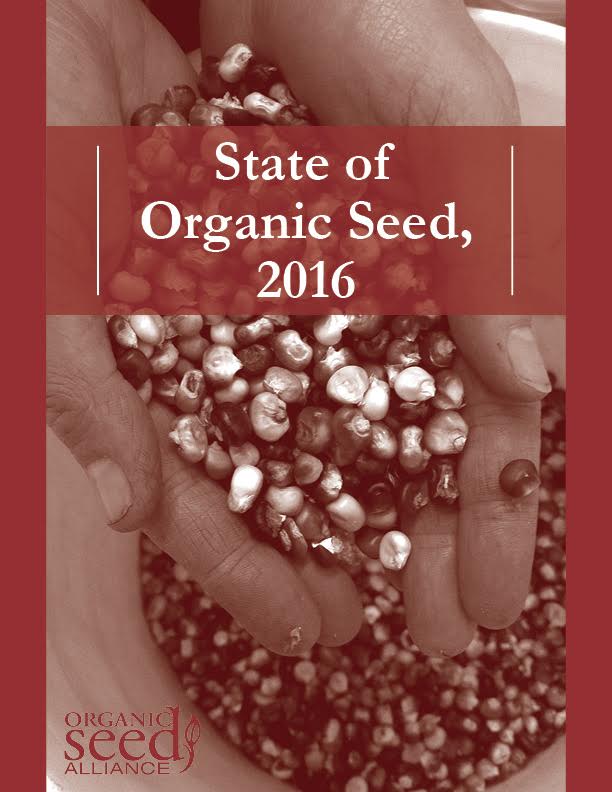 Though the supply of organic seed is increasing, today only 27 percent of organic farmers use 100 percent organic seed.
Though the supply of organic seed is increasing, today only 27 percent of organic farmers use 100 percent organic seed.
If you are growing an organic garden, use organic seed for best results.
Silica, Silicon and Silicone
Update June, 2020: Read more about silicone in The Toxicity of Silicone read more…
BPA Linked to Hyperactivity in Children
A study of 460 children across the United States, aged 8 to 15 years old, found that 11 percent of those with BPA levels higher than the median level had ADHD. In contrast, 3 percent of those children with BPA levels below the median had ADHD.
The research, published online last week in the Environment Research journal, adds to evidence that children’s BPA exposure may alter brain development and lead to behavior problems such as reduced attention and hyperactivity. ADHD is the most common behavior disorder in U.S. children, causing them to have trouble concentrating and controlling their behavior.
ENVIRONMENTAL HEALTH NEWS:
Hyperactivity in children linked to plastic additive, BPA
Cattails Woodwork
 Beautiful wooden kitchenware in simple yet artful designs. Wood Mason jar tops, rolling pins, spurtels, door stops, ceramic burr coffee grinders with wood lids and hand crank, breadboards, knife racks, cake pedestals…”Each piece is skillfully crafted from solid wood to create something that is not only beautiful and soft to the touch but it will last for generations. My belief is that we should buy and use things that are wonderful to both the hand and eye, very functional works that do not have to be replaced, heirlooms to be enjoyed for generations. These special works made from wood bring a warm touch of nature into our lives. love my job..EVERY SINGLE DAY.” This is just how I live, All my day-to-day things have to be natural and beautiful. This website is in Canada, but I had to make an exception.
Beautiful wooden kitchenware in simple yet artful designs. Wood Mason jar tops, rolling pins, spurtels, door stops, ceramic burr coffee grinders with wood lids and hand crank, breadboards, knife racks, cake pedestals…”Each piece is skillfully crafted from solid wood to create something that is not only beautiful and soft to the touch but it will last for generations. My belief is that we should buy and use things that are wonderful to both the hand and eye, very functional works that do not have to be replaced, heirlooms to be enjoyed for generations. These special works made from wood bring a warm touch of nature into our lives. love my job..EVERY SINGLE DAY.” This is just how I live, All my day-to-day things have to be natural and beautiful. This website is in Canada, but I had to make an exception.
Natural Linens
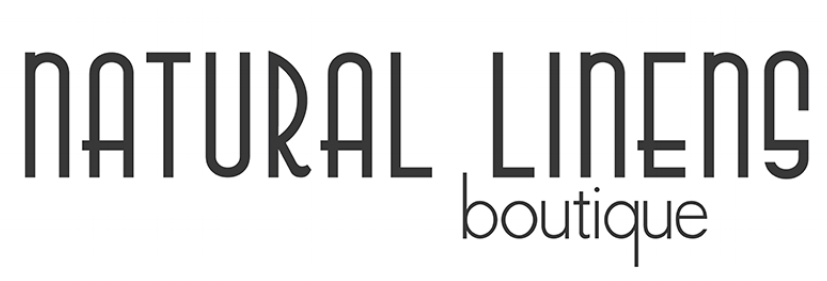 Oh wow! Here you can just replace much of the disposable paper/plastic in your house with reusable organic linen—paper towels, coffee filters, sandwich bags, facial rounds—and of course, towels and washcloths.
Oh wow! Here you can just replace much of the disposable paper/plastic in your house with reusable organic linen—paper towels, coffee filters, sandwich bags, facial rounds—and of course, towels and washcloths.
Good Linens
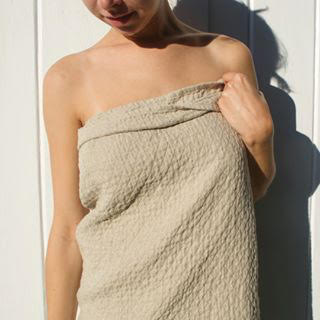 100% linen towels for bath, kitchen, beach and travel. Why a linen towel for your body? Fast drying, exfoliating, absorbent, antibacterial, long-lasting, and they just get better with age. 90% unbleached, undyed fibers with 10% colorful stripe. “When I found myself washing three full loads of cotton terry towels each week for a family of four, we tried linen bath towels. For the first time, my children reused their quick-drying towels, reducing the bath towel laundry burden to under one load a week.”
100% linen towels for bath, kitchen, beach and travel. Why a linen towel for your body? Fast drying, exfoliating, absorbent, antibacterial, long-lasting, and they just get better with age. 90% unbleached, undyed fibers with 10% colorful stripe. “When I found myself washing three full loads of cotton terry towels each week for a family of four, we tried linen bath towels. For the first time, my children reused their quick-drying towels, reducing the bath towel laundry burden to under one load a week.”
Back to Organics
 Flavored salts made from the purest salts and fresh herbs and zests. “Back to Organic Fresh Herb and Zest Salts are blended in small batches using the finest, mineral rich sea salts, organic spices, citrus zests and fresh herbs. By using fresh herbs and citrus zests, we preserve the flavor and natural, essential oils in the salt. Essential oils contain many vital vitamins and antioxidants to remove free radicals, boost the immune system, and improve circulation and digestion. Our gourmet salts are so flavorful you only need a pinch to create simple and delicious meals.” Packaged in glass.
Flavored salts made from the purest salts and fresh herbs and zests. “Back to Organic Fresh Herb and Zest Salts are blended in small batches using the finest, mineral rich sea salts, organic spices, citrus zests and fresh herbs. By using fresh herbs and citrus zests, we preserve the flavor and natural, essential oils in the salt. Essential oils contain many vital vitamins and antioxidants to remove free radicals, boost the immune system, and improve circulation and digestion. Our gourmet salts are so flavorful you only need a pinch to create simple and delicious meals.” Packaged in glass.
Teeny Tiny Spice Company
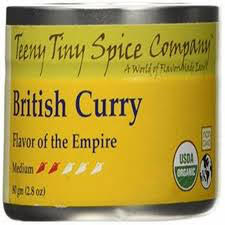 Certified organic spice blends from around the world—common and unusual. Like chocolate chili, British curry, Oaxaca Adobo…“We hand blend and package the cleanest, most flavorful spice and herb blends available. Our seasonings cover a broad array of world cuisines and cooking styles from curries to barbeque to dessert, and include salt free and low sodium products. All of our products are pure food. Nothing is hidden with all ingredients listed on every package so that you know exactly what you are putting in your body. We also provide over 150 recipes on our recipe site.”
Certified organic spice blends from around the world—common and unusual. Like chocolate chili, British curry, Oaxaca Adobo…“We hand blend and package the cleanest, most flavorful spice and herb blends available. Our seasonings cover a broad array of world cuisines and cooking styles from curries to barbeque to dessert, and include salt free and low sodium products. All of our products are pure food. Nothing is hidden with all ingredients listed on every package so that you know exactly what you are putting in your body. We also provide over 150 recipes on our recipe site.”
Urban Flax
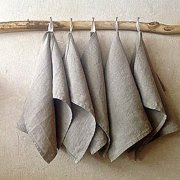 Plain and simple 100% linen towels, tablecloths, placemats, napkins, aprons, in natural linen color and darker grey. Handmade in Colorado.”Most items are made one at at time and are hand cut, sewn, washed and air dried with great attention to detail and pride in craftsmanship. The end result is soft, clean linen that will not shrink further and is ready to use.”
Plain and simple 100% linen towels, tablecloths, placemats, napkins, aprons, in natural linen color and darker grey. Handmade in Colorado.”Most items are made one at at time and are hand cut, sewn, washed and air dried with great attention to detail and pride in craftsmanship. The end result is soft, clean linen that will not shrink further and is ready to use.”
Sky Baby Blues
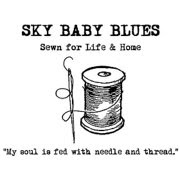 Big aprons that really cover made from cotton or linen. Plus “gathering” aprons to wear into the garden, some with big pockets for vegetables, one with twelve individual pockets for gathering a dozen eggs :-). Also linen Christmas stockings!
Big aprons that really cover made from cotton or linen. Plus “gathering” aprons to wear into the garden, some with big pockets for vegetables, one with twelve individual pockets for gathering a dozen eggs :-). Also linen Christmas stockings!
Manzanita Kids
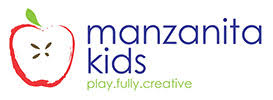 Handmade wooden toys in the natural colors of the various woods they are made from. “We carefully select the best American hardwoods for our toys and buy from a local source. This beautiful wood is enhanced and protected by our own blend of beeswax and organic jojoba oil, which we apply and polish by hand. The birch plywood we use for our modular toys is of the highest quality, it exceeds the strict requirements set by the European Union and the California Environmental Protection Agency (CARB II). Our toys are safe, durable, beautiful and meant to be passed to the next generation.”
Handmade wooden toys in the natural colors of the various woods they are made from. “We carefully select the best American hardwoods for our toys and buy from a local source. This beautiful wood is enhanced and protected by our own blend of beeswax and organic jojoba oil, which we apply and polish by hand. The birch plywood we use for our modular toys is of the highest quality, it exceeds the strict requirements set by the European Union and the California Environmental Protection Agency (CARB II). Our toys are safe, durable, beautiful and meant to be passed to the next generation.”
Criquet Shirts
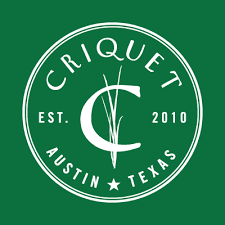 Super soft 100% organic cotton shirts for men, created by two friends. “In 2010, after lamenting the loss of great and hard-to-replace polo shirts of years past, we set out on the quest to find the perfect shirt.Guided by memories of our very first collared shirts from early days in prep school, and by well-worn hand-me-downs from dads, uncles and others, we spared no effort to find it. In the end, unable to track down this elusive prize, we did what any two enterprising young men would do. We set out to design it and make it on our own. ”
Super soft 100% organic cotton shirts for men, created by two friends. “In 2010, after lamenting the loss of great and hard-to-replace polo shirts of years past, we set out on the quest to find the perfect shirt.Guided by memories of our very first collared shirts from early days in prep school, and by well-worn hand-me-downs from dads, uncles and others, we spared no effort to find it. In the end, unable to track down this elusive prize, we did what any two enterprising young men would do. We set out to design it and make it on our own. ”
UV Irradiation of Water
Question from Andrea
Hi Debra,
Recently we were informed that our municipality will soon be brought into compliance with a federal mandate requiring the treatment of our water supply with UV irradiation to help eliminate harmful bacteria and other pathogens from the water.
Having in mind Dr. Masaru Emoto’s work on water molecules, do you or any of your readers know if treating water in this way might “denature,” or in any other way alter the chemical or molecular structure, or the natural health-giving properties, of the water?
If so, might there be a potential negative effect on health if UV irradiated water is used for drinking, cooking or bathing over the long term?
And are there any ways to mitigate or offset any potentially harmful effects of using UV irradiated water, as I don’t believe it will be possible to opt out of receiving it.
Thanks very much for your kind reply.
Debra’s Answer
I’m familiar with UV irradiation of water and also Dr. Emoto’s work, so I feel qualified to answer your question.
First, as you know from Dr Emoto’s work, the structure of water can be easily changed for better or worse by pollutants, energy, and even mental thoughts.
I doubt that UV irradiation would have a negative effect on water. All day long I drink water from a Pure Effect water filter with a UV lamp, which is present not only to kill living micro-organisms, but to disintegrate toxic chemical pollutants. The creator of this filter knows more about water and water quality than any person I’ve ever known.
I also grew up with UV treated water. My father was very interested in this technology for water purification of all kinds, particularly for swimming pools and drinking water. He invested a system many years ago that was sold to a company to be used for drinking water purification in Third World countries.
So I have no concern about water treatment plants using UV treatment, which would reduce the amount of toxic chemical disinfectants that need to be used.
Now, does this affect the natural health-giving properties of the water? Yes, it would. But your tap water is already terribly not in it’s natural state due to all the chemicals added to it. UV irradiation would not add more damage to already damaged water, but in fact might contribute to damaging the water less by reducing the amount of chemicals used.
Ultraviolet light is a wavelength of the sun and is found in nature. For water disinfection purposes, it’s the same wavelength, but more concentrated to have a quicker effect. Since it’s light energy, it’s not adding anything toxic to the water.
I want to make clear that UV ‘irradiation” is not adding radiation to the water. UV irradiation is simply shining ultraviolet light from a lamp on the water. It’s like sunbeams shining on the water.
I don’t see any potential negative health effect from shining a UV lamp on water.
Now if you want to restore water’s natural life giving properties there are several things you can do.
1. Get a PureEffect Water Filter. Igor has designed these filters especially to transform tap water as close as possible to natural state. I’ve been drinking this water every day for about four years and my body loves it.
2. Get a Flaska water bottle . This bottle restructures the energy matrix of the water to be closer to natural state. The Glass Water Bottle That Restructures Tap Water to Be Like Spring Water
3. Visit the Dancing With Water. There you will find a lot of information on the nature of water and advanced ways you can restore water to it’s natural state. Going Beyond Filtered Water
The best water I ever drank was from a spring at the foot of Mt. Shasta, in California. That water was immensely alive and nourishing to my body.
Start out by getting a PureEffect filter because you need to remove pollutants before you can restructure the water. Then get a Flaska bottle. And then start learning more about how very much you can influence the health-giving properties of water.
Bitumen in Dishwasher
Question from Marjorie
Hi Debra,
Have there been any safer dishwashers on the market? We’ve gone w/out one for over 2 years now, but really miss it.
Also, if the choice comes down to PVC (Part of interior not the whole thing) or the newer bitumen ones which is safer? Thanks.
Debra’s Answer
I haven’t researched dishwashers lately because I don’t use one. I wash all my dishes by hand.
So bitumen vs PVC…
Geez. It’s asphalt (used to surface roads and to seal flat roofs) vs carcinogenic plastic.
I read that many brands now use bitumen coating for insulation.The writer says this is basically Dynamat type asphalt matting and many brands give off a tar smell when hot. For the first 10 washes there has been a detectable tar smell, and I would add, toxic tar fumes.
We’ve discussed this before in Q&A: Chemical Smell in New Boesch Dishwasher. That smell appears to be bitumen.
Update: Read more about bitumen and finding a non-toxic dishwasher.
Germ-Killing Hand Sanitizer 2016
Question from MM
Hi Debra,
I went to the eye doctor Monday and by yesterday had the stomach flu. I think I’m ok but after reading the CDC website feel I need to sanitize everything, starting with my eyeglasses and then everything I’ve touched since Monday, since I touched the glasses often.
I guess Dr. Hulda Clark would suggest vodka and I have some. I have some alcohol though I’d rather not use it.
I don’t want to reinfect myself or endanger someone else, although I imagine people who are out in the world encounter it often and don’t get sick. My doctor said three schools in his area were closed due to it.
What would you do?
Debra’s Answer
I’ve answered similar questions before, but I’ll give an update for 2016.
Here are the other posts on this subject. Please read them all as they have relevant points.
Q&A: Earth Friendly Hand Sanitizer
how to make your own, important of hand washing
Q&A: Hand Sanitizer
recommends Clean Well Hand Sanitizer
Q&A Handwashing vs Hand Sanitizers
instructions for proper hand washing
Just keep in mind, before they go into surgery, doctors SCRUB , they don’t use a hand sanitizer. And instruments are AUTOCLAVED.
My suggestion is that you scrub your hands and boil anything that you’ve touched that can be boiled.
You mentioned vodka. I would use that if you need to, rather than isopropyl alcohol, which is a petroleum product.
Hydrogen peroxide can also be used as a disinfectant.
If you want a hand sanitizer product…a few weeks ago I was asked by a doctor for hand wipes he could use between patients in the office. I recommended Clean Well but we couldn’t find it locally.
But my natural food store carried another brand—EO —which was easy to find at my local natural food store. These are scented with lavender essential oils.
Note these are hand sanitizer wipes and not baby bottom wipes. I don’t know if baby bottom wipes contain the same sanitizing ingredients. Some brands offer baby bottom wipes and separate hand and face wipes.
That’s all I have on this subject for the moment, but readers please comment and let me know what you are using for sanitizer.
Featherbeds
Question from Cary
Hi Debra,
Debra, could you please recommend a nontoxic hypoallergenic very soft mostly goose down featherbed? Thanks!
Debra’s Answer
I used to sleep on a featherbed, but haven’t for years. I found that the feathers moved around a lot and didn’t give me nice even padding. I now sleep on a wool mattress with two wool “toppers” from Shepherd’s Dream on Debra’s List on beds and bedding page. There are two, one on crib page and the other on beds and bedding).
Featherbeds and feather pillows also tend to smell like a barnyard, plus there is the inhumane method by which the feathers are removed, plus a lot of people are allergic to feathers…of of which is why you don’t see feathers on my website, even though they are natural.
I’m not aware of any sort of standards or best practices for handling goose down or feathers that would make me recommend one featherbed over another.
All the featherbeds I’ve seen have 100% cotton covers, but I did find one with an Oeko-Tex certified cotton cover at CUDDLEDOWN: 100 Fill Powder White Goose Down Super Featherbed.
Looks like that one would meet your needs. I have no personal experience with it.
Shop Fog Linen
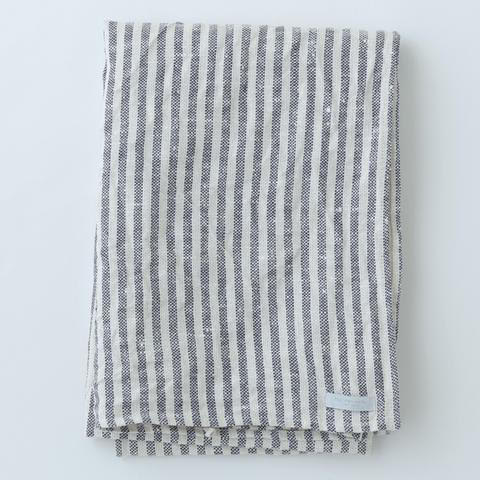 Beautiful, simple products for daily use made from linen. Created by a Japanese designer, the pieces have a an Asian sensibility, made from western fabric. They have everything from table and kitchen linens to bed linens and bath towels, plus loose linen clothing and even linen slippers! Mostly neutral colors, some patterns, some colorful surprises. “We just want to design and distribute an honest, beautiful, and long-lasting product. Our motto: Live with linen. Every day.
Beautiful, simple products for daily use made from linen. Created by a Japanese designer, the pieces have a an Asian sensibility, made from western fabric. They have everything from table and kitchen linens to bed linens and bath towels, plus loose linen clothing and even linen slippers! Mostly neutral colors, some patterns, some colorful surprises. “We just want to design and distribute an honest, beautiful, and long-lasting product. Our motto: Live with linen. Every day.
Leighton Point Linen
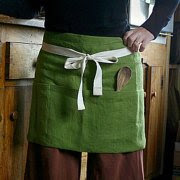 A small collection of simple linen napkins, dish towels, drawstring bags and aprons, mostly made-to-order. But the great thing is the linen comes in colors, so you can mix and match fabrics and threads to make your own unique napkins. They have a purple linen that took my breath away.
A small collection of simple linen napkins, dish towels, drawstring bags and aprons, mostly made-to-order. But the great thing is the linen comes in colors, so you can mix and match fabrics and threads to make your own unique napkins. They have a purple linen that took my breath away.
Pom Pom at Home
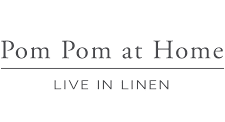 Very elegant Belgian linens for bed, bath, table, and windows. Linen pieces are embroidered, appliquéd, tucked, fringed, and much more for stunning effects.
Very elegant Belgian linens for bed, bath, table, and windows. Linen pieces are embroidered, appliquéd, tucked, fringed, and much more for stunning effects.
Lettermade
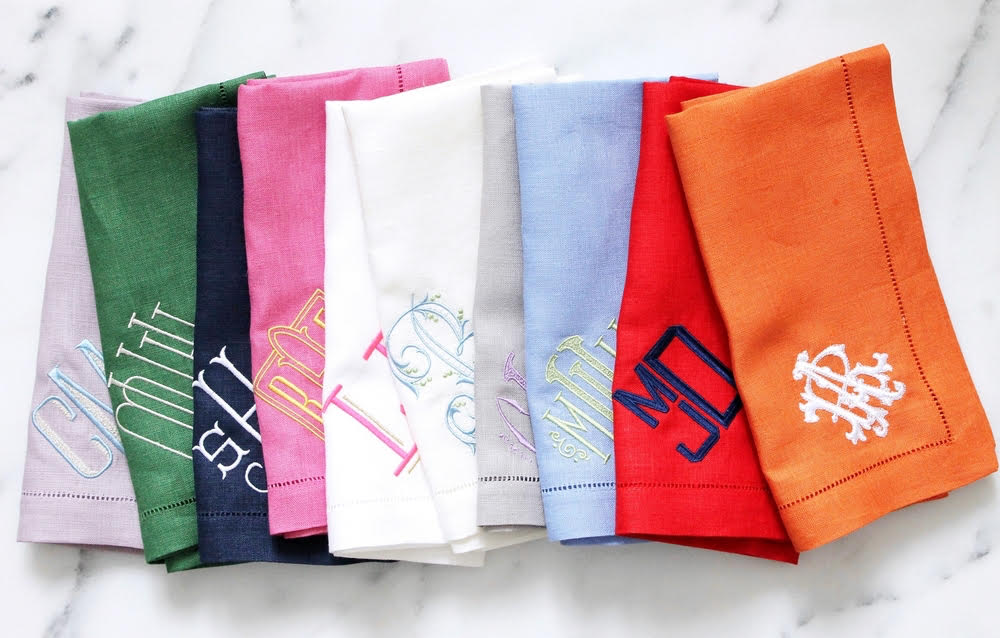 Linen napkins and guest towels embroidered with initials or flowers. You can order linen napkins in various colors with initials, so everyone knows who’s napkin is whose if you are reusing napkins instead of using paper ones.
Linen napkins and guest towels embroidered with initials or flowers. You can order linen napkins in various colors with initials, so everyone knows who’s napkin is whose if you are reusing napkins instead of using paper ones.
Claudio
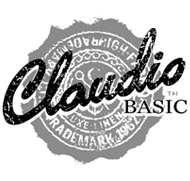 Luxe linen clothing for women and men in simple and sophisticated styles. Women’s sizes S-XXL. Most fabrics are white, but they have colors too.
Luxe linen clothing for women and men in simple and sophisticated styles. Women’s sizes S-XXL. Most fabrics are white, but they have colors too.
Linenshed
 Linen table linens, bed linens, and curtains, 12 soft muted colors, some simple, some frilly. Also fabric “by meter”.
Linen table linens, bed linens, and curtains, 12 soft muted colors, some simple, some frilly. Also fabric “by meter”.
Linen and Tailor
Vivid
 Clothing for women (plus shirts for men) all made of linen, sizes XS-XXL sizes. Loose-fitting and tailored styles, casual and dressy. One thing they have that I can never find in stores is 100% linen unlined jackets. Lots of loose-fitting tops some with embroidered details. Lovely dresses. Plus sizes have their own flattering designs.
Clothing for women (plus shirts for men) all made of linen, sizes XS-XXL sizes. Loose-fitting and tailored styles, casual and dressy. One thing they have that I can never find in stores is 100% linen unlined jackets. Lots of loose-fitting tops some with embroidered details. Lovely dresses. Plus sizes have their own flattering designs.
Two Sisters Ecotextiles
 The two sisters who created this website know more about toxics in textiles and how to choose safe fabrics than any two people I’ve ever met. After years of selling organic upholstery fabrics to the trade, they now have a retail site where you can get the best fabrics for all your fabric needs. “Surround yourself with fabric free of chemical residues that can trigger or aggravate health problems, who production has been safe for the earth, from a company that defines transparency….Safe enough for your newborn. Sophisticated enough for your mother-in-law. Tough enough for the after school gang.” These fabrics are gorgeous. Search by use or color. Fabric for apparel, drapery, tabletop, upholstery, and bedding. $1 samples available. Also readymade napkins, tea towels, and pillow covers. Website has lots of information about fabrics, how they are made, and toxics.
The two sisters who created this website know more about toxics in textiles and how to choose safe fabrics than any two people I’ve ever met. After years of selling organic upholstery fabrics to the trade, they now have a retail site where you can get the best fabrics for all your fabric needs. “Surround yourself with fabric free of chemical residues that can trigger or aggravate health problems, who production has been safe for the earth, from a company that defines transparency….Safe enough for your newborn. Sophisticated enough for your mother-in-law. Tough enough for the after school gang.” These fabrics are gorgeous. Search by use or color. Fabric for apparel, drapery, tabletop, upholstery, and bedding. $1 samples available. Also readymade napkins, tea towels, and pillow covers. Website has lots of information about fabrics, how they are made, and toxics.
 |
Listen to my interviews with Patty Grossman and Leigh Anne Van Dusen, co-Founders (and sisters) of O Ecotextiles |
Vermont Farm Table
 Beautiful solid wood tops for tables, countertops, stools, and anything else you can think of, made by the square inch. Any species, size, shape and quantity. “We build with the best quality New American Hardwoods including Cherry, Maple and Walnut, and can source a wide variety of other options…We also specialize in Reclaimed Woods, including Pine, Oak, Heart Pine and Chestnut, which can be sourced from places like old barns, silos, train stations…We believe in taking the natural route whenever possible. We use a natural oil and wax blend finish on our tables, applied in multiple coats until it saturates the wood, creating a finish that is water and stain resistant. This approach lets the natural beauty of the wood shine through, while creating a finish that is easy to care for over time. ”
Beautiful solid wood tops for tables, countertops, stools, and anything else you can think of, made by the square inch. Any species, size, shape and quantity. “We build with the best quality New American Hardwoods including Cherry, Maple and Walnut, and can source a wide variety of other options…We also specialize in Reclaimed Woods, including Pine, Oak, Heart Pine and Chestnut, which can be sourced from places like old barns, silos, train stations…We believe in taking the natural route whenever possible. We use a natural oil and wax blend finish on our tables, applied in multiple coats until it saturates the wood, creating a finish that is water and stain resistant. This approach lets the natural beauty of the wood shine through, while creating a finish that is easy to care for over time. ”
Bedrock & Bloom
An all natural and organic teeth whitener and detoxifier made with wildcrafted activated coconut shell charcoal, all natural calcium bentonite clay, certified organic mint, certified organic orange peel, certified organic frankincense.
Ball Mason Jars
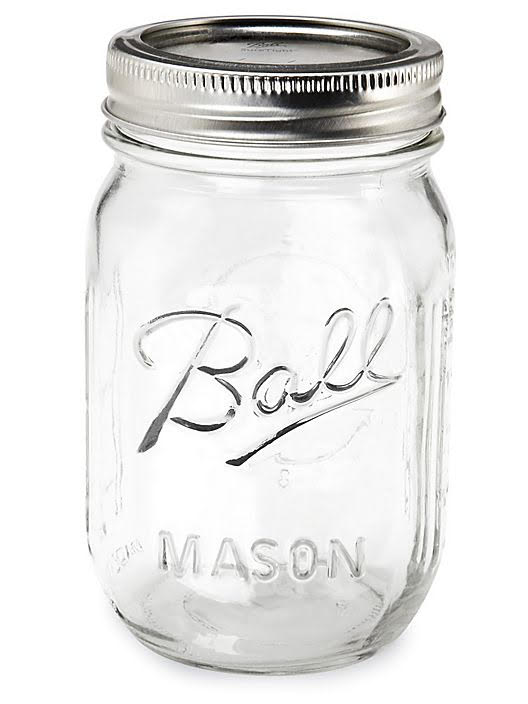 From manufacturer customer service: “Our jars are Made in America and are annealed glass which is lead-free and food safe.They are made from lime, soda, cullet and silica. Our lids are BPA free and made of tin plated steel with a red ring plastisol sealant.”
From manufacturer customer service: “Our jars are Made in America and are annealed glass which is lead-free and food safe.They are made from lime, soda, cullet and silica. Our lids are BPA free and made of tin plated steel with a red ring plastisol sealant.”
Molly’s Suds
Laundry products made with earth and plant derived ingredients. Laundry powder unscented or peppermint. I tried it and it works great! Website also contains lots of tips, like how to remove stains on clothing naturally. Ingredients
Thirteen Organics
Natural-scent skin care and deodorant products. “Thirteen Organics only uses all natural and organic ingredients sourced locally and globally. We do not use artificial colouring or synthetic fragrances – our products are either naturally scented or coloured with what nature provided. Our products are scented with strictly premium organic essential oils, and we only use key ingredients – no unnecessary fillers. We produce quality hand crafted products in small batches…The need to start taking a totally natural approach to skin care was apparent. It was frustrating trying to find products out there that were 100% natural and effective, so our founder started handcrafting it herself so that she actually knew what was in her products… no looking back since. We have created our own gorgeous line of products to help you take back control of your skin.”
Emory James
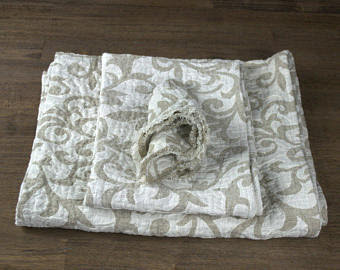 Lovely organic washable linen household items, mostly the natural color, but woven in patterns I don’t often see. Mostly tablecloths, but also blankets and towels of various sizes, including bath towels.
Lovely organic washable linen household items, mostly the natural color, but woven in patterns I don’t often see. Mostly tablecloths, but also blankets and towels of various sizes, including bath towels.
Island Picnic
Colorful items for kids made from certified organic cotton, including lunch bags and accessories, baby bedding, stuffed toys, and picnic blankets.
Ozuke
 Organic fermented pickles, kimchi and kraut that supply natural probiotics. Imaginative flavors and combinations, including Kale & Collard Kim Chi and Green Tea pickles.
Organic fermented pickles, kimchi and kraut that supply natural probiotics. Imaginative flavors and combinations, including Kale & Collard Kim Chi and Green Tea pickles.
VAXXED – A Review of the Movie

Yesterday I drove 90 minutes to the nearest showing of Vaxxed: From Coverup to Catastrophe.
This movie is a breakthrough in making known a widespread toxic exposure and it’s consequences, and shows how the CDC has covered up this danger instead of taking the problem vaccine off the market.
I want to be clear that this movie does NOT say ALL vaccines are harmful. It specifically shows how ONE vaccine in particular—Measles-Mumps-Rubella (MMR) vaccine—has caused autism in far too many children. In fact, the film clearly states that the entire problem could be solved by simply giving babies single vaccines instead of this particular combination. And the response to this was that the single vaccines were taken off the market.
From the information given in the film, it is very clear that the MMR vaccine has a high risk of harm. There are two types of toxic effects: acute and chronic. Acute effect happen immediately or a very short time after—one can clearly observe the cause and effect. Chronic effects happen over time and require repeated exposures before you can see an effect.
The cause-and-effect is clear between the MMR vaccine and autism. Parents report that the child was given the vaccine and within hours began to experience a series of effects that lead to the child withdrawing from social contact, losing speech, and other indicators of autism that are clearly explained in the movie, It’s heartbreaking to watch before=and-after home movies.
It is unbelievable to me how someone could have the data about how MMR vaccine can result in so many cases of autism, and not immediately take this poison off the market. MMR vaccine was introduced in 1988, and since autism has been increasing exponentially. The film shows a graph (not this one shown below) that shows that autism used to be 1 in 10,000,in 2014 the CDC estimated 1 in 68, and within 20 years, if the graph continues, it will be 1 in 2. That’s half the children being autistic.

This breaks my heart. Thirty years ago I became disabled from toxic chemicals in consumer products I was using in my own home. And my response to that was to give my life to making others aware of this danger and showing that chemical injury can be prevented.
Near the end of the film, the CDC whistleblower goes public. But none of the major news outlets carry the story. Instead, they run a story about how there were some hundreds of cases of measles now in 27 states because parent were not vaccinating their children. And then you see that in that same year there were more than 1 million new cases of autism.
I was born in 1955. I had a vaccine. I believe it was for polio. If you want to know what vaccines you might have been given, see The History of Vaccines: Have I Been Vaccinated?
Here is the Recommended Immunization Schedule for 2016
I personally don’t think we need all these vaccines. In my opinion, we need to strengthen our immune systems, in part by reducing exposure to toxic chemicals that cause damage to the immune system.
Nature created our bodies to have the ability to defend themselves against outside invaders. We don’t need vaccines to do this.
Vaxxed: From Coverup to Catastrophe is an excellent presentation of a story that needs to be told. I hope it is only the first of many such films that show in graphic detail how toxic products we are exposed to every day are causing harm.
Again, this movie shows the need for each one of us to find out the dangers in products all around us and how to make choices that protect our health.
At the end of the film, four calls to action are given. Here’s what you can do to help: VAXXED: Take Action
Vaxxed is now being shown in selected theater, and you can also make arrangements for private screenings.
See the film and tell others about it.
New Report from World Health Organization (WHO) Shows Losses of Life and Illness That Results from Toxic Exposures Worldwide
 Public Health Impact of Chemicals: Knows and Unknowns is a new report from the World Health Organization (WHO) that clearly shows how toxic chemical exposures contribute to illness and death.
Public Health Impact of Chemicals: Knows and Unknowns is a new report from the World Health Organization (WHO) that clearly shows how toxic chemical exposures contribute to illness and death.
This 2016 report estimates that 1.3 million lives and 43 million disability-adjusted life-years were lost in 2012 due to exposures to selected chemicals.
However, data are only available for a small number of chemical exposures and people are exposed to many more chemicals every day.
Unintentional poisonings are estimated to cause 193 000 deaths annually, with the major part being from preventable chemical exposures, however only 47% of countries have a poisons centre.
Addressing lead exposure would prevent 9.8% of intellectual disability, 4% of ischaemic heart disease and 4.6% of stroke in the population, yet many countries do not regulate lead paint.
25% of ischemic heart disease
42% of stroke
14% of lung cancer (I think that percent is actually higher)
23% of stillbirths
25% of cataracts
35% of acute lower respiratory infections
20% of suicides
and more
could be prevented by reducing or removing exposures to chemicals that contribute to these conditions.
Again, this is why I do my work. Because all these exposures are preventable. Toxics are a worldwide problem. This is why we need to make toxic free choices in our own homes, workplaces, and communities.
New report from World Health Organization
Overview
This 2016 report estimates that 1.3 million lives and 43 million disability-adjusted life-years were lost in 2012 due to exposures to selected chemicals.
However, data are only available for a small number of chemical exposures and people are exposed to many more chemicals every day.
Unintentional poisonings are estimated to cause 193 000 deaths annually, with the major part being from preventable chemical exposures, however only 47% of countries have a poisons centre.
Addressing lead exposure would prevent 9.8% of intellectual disability, 4% of ischaemic heart disease and 4.6% of stroke in the population, yet many countries do not regulate lead paint.
This report provides examples of effective interventions to prevent death and disease caused by chemicals, and the economic benefits to be gained.
Ban on Mercury Amalgam Fillings
Mercury is known to be a toxic heavy metal , so toxic that is required to be carefully disposed of in special hazardous materials containers when it’s removed from your teeth by the dentist. The environment is protected from mercury, but we aren’t.
How it makes sense to put it the teeth of human beings in the first place doesn’t make sense to me.
But it’s been standard practice to use mercury amalgam for dental fillings for more than 100 years. Since it’s such an old material, it’s grandfathered in under the FDA guidelines. It has never had to undergo the same safety studies that new filling materials have to go through.
But a change is starting to occur.
In 2013, The Minamata Convention on Mercury adopted a global treaty to protect human health and the environment from the adverse effects of mercury.
Norway, Denmark, and Sweden have banned the use of amalgam fillings. And a recent study by the European Union showed that 80% of those polled were in favor of an immediate ban on mercury dental amalgam fillings
The EU Commission has decided to go for a proposal to “phase down mercury dental amalgam” rather than to ban it altogether. But a dentist by the name of Dr. Graeme Munro-Hall has created a petition to the EU Commission to change the wording from a phase down to a phase out.
If you would like to add your name in support of a complete ban of mercury fillings in the European Union, go to Phase Out Mercury Amalgam Fillings.
If the European Union phases out mercury fillings, perhaps the USA will too.
Meanwhile, you can just say no to mercury fillings. There are safer materials available. Better yet, take good care of your teeth. I have never had a filling my entire life.
Communicating With Loved Ones About Toxics
Question from Karen
Hi Debra,
How do u get loved ones to pay attention instead of tuning out, rolling eyes, pressing delete…
Debra’s Answer
This is not an easy thing to solve, so readers I hope many of you will comment with your own stories, because this is important.
I will just tell you my experience.
When I first became aware that my body was sick because of exposures to toxic chemicals, most people had no interest at all.
I was fortunate that my father took me seriously and helped me. It made sense to him, but nobody else in my family was interested.
I was engaged around that time and my fiancé didn’t believe me. We broke up for other reasons, but two years later he came back to me and said “I understand now what you were saying. I’m sick from my apartment too.”
Over time, it became less important to me to have family members believe me or help me because I was meeting new people who were interested and in agreement, who could and did understand. I knew what I was pursuing was right.
When I would meet new people, I would tell them I needed to live nontoxic and tell them what I needed from them. I just wouldn’t get into relationships with people who thought it was more important to wear perfume or aftershave than be with me.
And over time, I met new friends and now this isn’t an issue.
Eventually, though, we need to get everyone in the world on board with living toxic free. It’s just a matter of education, I think, of giving them information in a friendly way. Make them curious instead of defensive.
An example of eduction…one year I discovered organic oranges for the first time. They were soooooooo much more delicious than regular grocery store oranges. So that year for Christmas I gave everyone a bag of oranges as an extra gift, along with a card saying they were organic oranges and explaining what organic is.
Another time a man wanted to date me and I gave him a gift bag of unscented products. He used them and we went on a date and then lived together for a year. He wanted what was best for me and so was entirely willing to live according to my needs.
Later I met another man that I married. He was THRLLED to live toxic free with me.
That’s all I can say on this subject. Except…remember you can catch more flies with honey than with vinegar. Give toxic free products as gifts, speak with love and caring, help others make the transition.
Readers, what are your successes with this?
Bring-Your-Own Organic Airplane Food
Hi Debra,
how about making one’s own airport food ahead and avoid $$$ styrophone corporate food! A yam and nuts and a green kale leaf, perhaps? Thanks! Best karen
Debra’s Answer
I do bring my own food when I fly, but I haven’t been on an airplane in a while. I usually take a bag of nuts to tide me over until I reach my destination.
But there are now actually some rules about what you can bring on a plane due to tighter security and this question prompted me to look them up.
If you go to the Transportation Security Administration (TSA) website, in the upper right corner it says “When I fly can I bring my…” and there is a box below. Enter “food” in the box and it will ask you more questions to narrow down the answer.
For example, under “snack foods” it says
If your snacks are pretzels, potato chips, dried fruit or other dry goods, you can take them in your carry-on or checked bag. Snack items that are liquids or gels, like pudding, jello or yogurt, etc., falls under the 3-1-1 rules for liquids for carry-on bags. They can be transported in checked bags.
The 3-1-1 rule for liquids is: you may carry liquids, gels and aerosols in your carry-on bags only if they are in containers 3.4 ounces or less; packed in a 1 quart/liter zip-top bag; and 1 zip-top bag per person. Larger amounts of non-medicinal liquids, gels, and aerosols must be placed in checked baggage.
So it’s not so much WHAT you are eating, but HOW it is packed.
Turns out some people have really thought this through. Here are some articles that have ideas for foods, how to prepare them, and how to pack them, so your flight will be a pleasant, healthy, and tasty culinary experience.
THE NEW YORK TIMES: Pack a Picnic for Your Next Flight
FOOD BABE: What to Bring On Your Flight, So You Never Get Stick Eating Airport Food Ever Again (great ideas!)
USA TODAY: 10 Tasty Snacks You Can Bring On the Plane
PACKSMITH: What to Eat on the Fly: Airplane Snacks & Packing Tips
SARAH WILSON: What I Eat on Planes
Readers, what do you eat when you fly?
Do Ball Mason Jars Contain Lead?
Question from Demi
Hi Debra,
Do you know where I can find info if ball mason jars contain lead? I store my baby’s food and warm his food in the jar in a boiling water bath.
Thank you!
Debra’s Answer
I wrote to Jarden Home Brands, who now is the manufacturer of Ball Mason Jars.
They replied within a few hours.
Hello Debra,
Thank you for contacting Jarden Home Brands regarding our jars.
Our jars are Made in America and are annealed glass which is lead-free and food safe.
They are made from lime, soda, cullet and silica.
Our lids are BPA free and made of tin plated steel with a red ring plastisol sealant.
We hope that this information is helpful. Please contact us if you have any other questions or if we can be of further assistance. Have a great week!
Sincerely,
The Consumer Affairs Team
Jarden Home Brands
800-240-3340
www.freshpreserving.com
Pharmaceutical Chemicals Found in Every Stream Sampled in USGS Study
Our waterways are filled with traces of drugs, says a new study conducted by the United States Geological Survey (USGS).
A team of researchersecently collected water samples from 59 small streams in the Southeast from Virginia to Georgia, which were analyzed for 108 pharmaceuticals and degrades.
All 59 streams tested positive for at least one of compounds and the overall average was six different compounds per stream.
The drug compounds ranged from common pain killers and antihistamines to medicines used to treat diabetes and seizures.
Metformin, a medicine used to treat Type II diabetes, was found in 89 percent of all sample taken, while acetaminophen, the active ingredient in pains killers such as Tylenol was detected in 36 percent of all samples. Nicotine-related compounds were found in 71 percent of samples, while caffeine-related compounds were found in 49 percent.
None of the chemicals was detected in amounts that exceeded human health benchmarks, but they can cause “toxicity, endocrine disruption, immunomodulation, antimicrobial activity, antibiotic resistance selection, cytotoxicity and mutagenesis, and transgenerational effects throughout aquatic foodwebs,” the study says.
Another study reported in Scientific American showed only about half of the prescription drugs are removed by the water treatment plants that supply our tap water.
Pharmaceutical Chemicals Found in Every Stream Sampled in USGS Study
SCIENTIFIC AMERICAN: Only Half of Drugs Removed by Sewage Treatment

Buying Toxic Free Clothing in Retail Stores
Question from Brittany
Hi Debra,
I am just learning about the toxins in our clothes. Are there any retail stores that follow these guidelines?
It’s just overwhelming! Don’t even know where to start. Everything is polyester.
Where do you shop?
Debra’s Answer
I wish there were such a store, but I haven’t found one yet. There may be boutiques and your can find such places online (see Debra’s List: Clothing page), but I can’t direct you to any major clothing store, And yes, I agree, it seems like everything is getting to be polyester again. Not too long ago there were a lot more natural fibers.
I buy all my clothing in retail stores, but I have to choose carefully.
I live in Florida so most of the time I am wearing cotton capri pants and tank tops. These are easy to find almost anywhere.
I would buy organic natural fibers if I could find and afford them.
But my general rule of thumb is to buy natural fibers—cotton, linen, silk, wool—and in particular no permanent press because it releases formaldehyde. No synthetic fibers, not even 1 percent. My favorite fabric is linen, which is perfect here in my tropical climate.
I also have been known to make my own clothes and have been considering having others make clothing for me. I have made evening gowns and wedding dresses out of beautiful natural fiber fabrics because I refused to wear the synthetic fabrics most formal wear is made from.
I live in Florida so my stores may be different from yours. And I don’t have a lot of choices. I look at Sears and Penny’s and Dillards and Macy’s. Often these stores will have natural fibers, but mostly not. I find things at Ross and TJ Maxx. Just great random pieces that are inexpensive. But they are getting harder and harder to find.
Readers, what is your shopping experience? Where and how to you buy your clothes?
US Government Study Finds Cell Phones Cause Cancer
A multi-year $25 million study done by the National Toxicology Program found “low incidecences” of two types of tumors in male rats exposed to the same type of radio frequencies commonly emitted by cellphones.
It was one of the biggest and most comprehensive experiments into the health effects of cell phones.
“Where people were saying there’s no risk, I think this ends that kind of statement,” said Ron Melnick on seeing the results. He ran the NTP project until retiring in 2009.
WALL STREET JOURNAL: Cellphone-Cancer Link Found in Government Study
New Study Shows Glyphosate in 93% of Americans Tested
In a unique public testing project carried out by a laboratory at the University of California San Francisco (UCSF), glyphosate was discovered in 93% of urine samples during the early phase of the testing in 2015.
The urine and water testing was organized by The Detox Project and commissioned by the Organic Consumers Association.
The unique project, which has already provided more urine samples for testing than any other glyphosate bio-monitoring urine study ever in America, was supported by members of the public, who themselves paid for their urine and water samples to be analyzed for glyphosate residues by the UCSF lab. These subjects were self-selected volunteers who contacted The Detox Project asking for testing.
The data released in a presentation by the UCSF lab only covers the first 131 people tested. Further data from this public bio-monitoring study, which is now completed, will be released later in 2016.
THE DETOX PROJECT:
UCSF Presentation Reveals Glyphosate Contamination in People across America
Due to overwhelming response, testing of body fluids for the presence of glyphosate has been temporarily discontinued while arrangements are being made with a larger lab. If you wish to have this testing, you may do so when the project restarts later this summer.
Camden Rose
 Natural toys and home goods for environmentally conscious families. “We believe it is possible to raise healthy children without the harmful toxins and electronic influences that challenge today’s families.” and so this couple began to design and make their own toys, inspired by the natural toys made in Europe. “Camden Rose natural toys are made from wood, wool, silk, and cotton. Children love these materials because they have a warm, honest quality that appeals to the senses. Unlike plastic, they do not impart a false impression of weight, mass, or touch. Imbued with the life force of trees, plants, and living creatures such as honeybees, our toys are lovely to touch and behold.” No plastics.
Natural toys and home goods for environmentally conscious families. “We believe it is possible to raise healthy children without the harmful toxins and electronic influences that challenge today’s families.” and so this couple began to design and make their own toys, inspired by the natural toys made in Europe. “Camden Rose natural toys are made from wood, wool, silk, and cotton. Children love these materials because they have a warm, honest quality that appeals to the senses. Unlike plastic, they do not impart a false impression of weight, mass, or touch. Imbued with the life force of trees, plants, and living creatures such as honeybees, our toys are lovely to touch and behold.” No plastics.
KSTYLEDESIGN
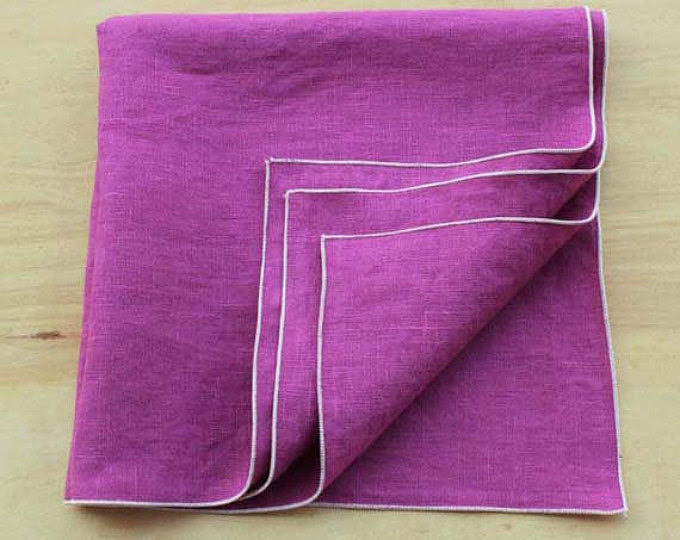 Beautiful, colorful, embroidered linen napkins and placements, custom made just for you. Monograms, colored borders…I love linen and want them all. High quality European linen.
Beautiful, colorful, embroidered linen napkins and placements, custom made just for you. Monograms, colored borders…I love linen and want them all. High quality European linen.
Weber Company
 Custom solid wood cabinets and furniture, handcrafted in Lodi, California. Your choice of wood, can order unfinished and apply your own nontoxic paint or finish. They can make any style to your specifications.
Custom solid wood cabinets and furniture, handcrafted in Lodi, California. Your choice of wood, can order unfinished and apply your own nontoxic paint or finish. They can make any style to your specifications.
Non-Toxic Safe Bicycle Helmets
Question from Grace
Hi Debra,
I am looking to start bike riding again and wondered if helmets were generally non-toxic and safe for someone with MCS? Are there any brands you recommend?
Thanks.
Debra’s Answer
Well it only took 30 seconds to find out the materials used because someone had already compiled all the information at How Bicycle Helmets are Made. This website has a lot of information about helmets, but unfortunately not a list of least toxic helmets.
The liners are molded from Expanded Polystyrene (EPS) which is the same material used to make coffee cups. Years ago styrene was found in the blood of almost 100 percent of people tested. This part of the helmet is mostly made in China. Other foams are used as well, and they have a separate page just for Bicycle Helmet Liners: Foam and Other Materials.
“Polystyrene contains the toxic substances Styrene and Benzene, suspected carcinogens and nurotoxics that are hazardous humans.” Polystyrene Fast Facts, Harvard University.
The hard shell is PET (the plastic used for bottled water containers). It is glued to the liner, so there may be some toxic adhesive there. More expensive helmets have shells made of polycarbonate (that’s the plastic that contains BPA).
I’m just going to stop here. I think you get the idea. Many more chemicals are mentioned in this article.
I know this is a safety thing to wear a helmet, and in some states they are required by law for children, but not for adults.
A helmet could be manufacturered from nontoxic materials, but it seems that everyone thinks they are OK.
Eco-Friendly Travel Trailer
Question from TA
Hi Debra,
I just came across this cute eco-friendly travel trailer made with non-toxic materials, composting toilet, etc.
I thought you might like to know about it. (I admit I just did a quick skim and didn’t check into all the details about materials and such, but did see the claim of non-toxic materials).
I know the subject of safe campers has come up before on the Q&A. Obviously, the price of this isn’t something that everyone can rush out and by. 🙂 But for those who are looking for something like this, or even those who are looking for safe living quarters, might be happy to know about it.
It doesn’t appear to have a shower, but it’s pretty cute. 😉
I don’t know how long they’ve been in business; it looks like they just have this one model right now, so I wonder if down the road they’ll have more options available (perhaps including a shower or other bed configurations, as most of us wouldn’t need bunk beds).
At any rate, it seems worth checking out and surely has to be better than all the “regular” brands that are available. And it would certainly draw attention from others, I suspect, since it’s very unique looking.
By the way, they do rentals in the Pacific Northwest. So even if a person can’t buy one, renting might be an option if a person needs safe travel accommodations in that area of the country. I’d definitely look into it if I ever travel to that area again.
Debra’s Answer
That IS cute! Couldn’t resist showing you the picture. I didn’t see a list of materials, but it does say “No toxic chemicals or VOCs.” How great!

Corporate Progress Toward Safer Chemicals
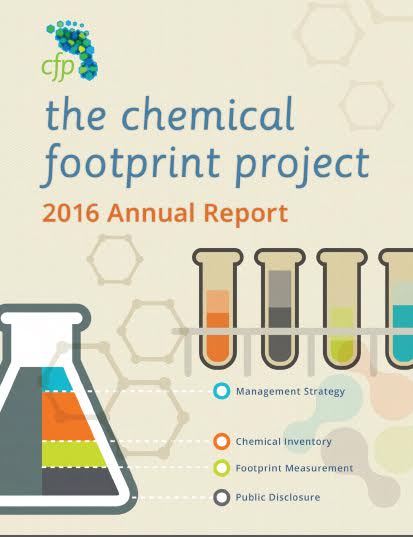 Last week, the Chemical Footprint Project has published its inaugural report — the first initiative of its kind to publicly benchmark corporate chemicals management..
Last week, the Chemical Footprint Project has published its inaugural report — the first initiative of its kind to publicly benchmark corporate chemicals management..
The results provide valuable insights into how leading companies manage chemicals in their products and supply chains, and how all companies might manage these issues in the future.
Last year, a select group of 24 leading-edge businesses both small (millions in annual revenue) and large (tens of billions in annual revenue) stepped forward to participate in the Chemical Footprint Project and to receive a score on their corporate chemicals management practices. Participants included: Levi Strauss & Co.; Seagate Technology, PLC; Johnson & Johnson; GOJO Industries; Becton, Dickinson and Company; Beautycounter; and California Baby, among others.
The report analyzes participants’ responses to a 20-question survey regarding chemicals management across four categories: Management Strategy, Chemical Inventory, Footprint Measurement, and Disclosure & Verification. Key findings include
- Senior leadership matters: The 29% of firms with Board-level oversight or senior management incentives performed better overall than firms with no such accountability.
- Companies need comprehensive policies: Without policies that address chemical hazards in manufacturing, supply chains, and packaging – in addition to products – companies face hidden liabilities and chemical risks.
- Disclosure lags practice: Across every category – Management, Inventory, Footprint, and Disclosure – companies have more chemicals management practices in place than they share publicly. For example, 83% have a legally restricted substances list, but only 17% of those companies make that list public.
- “Design for Health” sets leading edge: companies whose entire product portfolios are based on minimizing or eliminating chemicals of high concern performed well above average.
- Chemical footprint measurement is new and challenging: Before they can reduce their chemical footprints, companies need to know the chemical ingredients in their products and identify chemicals of high concern, so it’s no surprise that in this first year, companies scored low for measuring baseline chemical footprint.
The Chemical Footprint Project (CFP) was launched in 2014 with the support of investors representing $2.3 trillion in assets under management and institutional purchasers with over $70 billion in purchasing power. Similar to carbon footprinting, the project applies clear and consistent metrics to help purchasers select suppliers based on how they manage their chemical footprint. These metrics also enable investors to integrate chemical risk into their sustainability analyses and investments.
“You can’t manage what you don’t measure,” said Dr. Mark Rossi, Executive Director of the nonprofit Clean Production Action and one of the project’s founders. “By scoring companies on their overall progress in avoiding Chemicals of High Concern and using safer alternatives, the Chemical Footprint Project fills a critical missing piece in the sustainability mosaic for investors, purchasers, and other stakeholders.”
Companies participating in the survey see not only an opportunity to improve their performance on environmental measures, but ultimately to reap business benefits like increased sales and market share, higher rates of customer loyalty and employee satisfaction, and lower compliance costs.
Nanoparticles in Baby Formula
 A new report from Friends of the Earth found that popular infant formulas sold throughout the United States contain infinitesimally small ingredients known as engineered nanoparticles,
A new report from Friends of the Earth found that popular infant formulas sold throughout the United States contain infinitesimally small ingredients known as engineered nanoparticles,
The commissioned independent laboratory analysis found nanoparticles in six infant formulas tested. These ingredients are not labeled and are not regulated by the U.S. Food and Drug Administration.
FRIENDS OF THE EARTH: New report: Nanoparticles in baby formula
Polymer Environmental Resin (PER), Thermoplastic Elastomers (TPE) and Least Toxic Yoga Mats
A reader wrote to me as a comment, asking about a yoga mat. Doing research on the response opened up the whole issue of materials used to make yoga mats. So I turned it into a post.
The issue with yoga mats is that in the past, most were made with polyvinyl chloride (PVC), which is made from and emits vinyl monomer (VCM), phthalates, and lead. Together, these materials release chemical gasses that can cause cancer, endocrine disruption, and all kinds of neurological problems.
So within the yoga world, there had been a movement going on towards finding the perfect “PVC-free” yoga mat.
Polymer Environmental Resin (PER)
The yoga mat that prompted this post is made from a material called “PER.”
Somewhere the reader found the following and pasted it into the comment. I’m not sure where she got this as I couldn’t find it on the page of the link she gave me.
This mat has been Oeko-Tex 100 Tested and Approved and are Safe, Non Toxic, Hypoallergenic, No Phthalates, Phenols or PAHS, Free from Latex, Rubber or Silicone.
4) Our Patented PER Mats are made from a new non toxic resin, free of rubber, silicone, latex and does not emit any toxic chemicals or gases.
Please note that PER is a patented product and not PVC as many less expensive products. Be careful of Imitations not registered PER;
5) The mat has been successfully tested against harmful substances; Oeko-Tex Standards Class-1- Baby Articles and US FDA approved by SGS”
So what is this PER and is it really safe?
PER is the acronym for Polymer Environmental Resin. This is kind of a strange name because usually substances are named for the chemicals used to make them. This name simply says it’s a polymer (plastic) resin that has environmental benefits.
Ironically, PER starts as polyvinyl chloride (PVC), which has been plasticized and stabilized with acetyl tributyl citrate instead of phthalates and lead. So it’s not “PVC-free” as advertised. It actually is PVC, with different plasticizers and stabilizers.
Certainly acetyl tributyl citrate is much less toxic than phthalates and lead, so this is an improvement, but what I’m concerned about is that the basic vinyl chloride monomer (VCM) used to make PVC is itself a carcinogen. Swapping out the plasticizers and stabilizers doesn’t change that.
Their claim that it contains no phthalates, phenols, PAHs, latex, rubber, and silicone is certainly true.
They also say it is nontoxic and does not emit any toxic chemicals or gasses. I’ve never seen this material, but I do know something about PVC. And it just doesn’t react 100%. There tends to be some small amount of unreacted VCM. But it only takes a small amount of VCM to be toxic.
I went to the website of the yoga mat in the link the reeder gave me. I didn’t see any mention of Oeko-Tex or a certificate. Maybe it’s there, but I didn’t find it on a sales page.
I also couldn’t find any data on the health effects of PER, either pro or con. No Safety Data Sheet. Nothing.
Here are the only two references I could find on PER:
APPROPEDIA: Polymer Environmental-Friendly Resin
STACK EXCHANGE CHEMISTRY: What is Polymer Environmental Resin (PER)?
Thermoplastic Elastomers (TPE)
Another material used to make PVC-free yoga mats is TPE.
TPE is the acronym for ThermoPlastic Elastomers, a class of copolymers that have the elastic properties of rubber and re-meltable property of thermoplastics.
There are six generic classes of TPEs:
- Styrenic block copolymers (TPE-s)—made of styrene
- Thermoplastic olefins (TPE-o)
- Elastomeric alloys (TPE-v or TPV)
- Thermoplastic polyurethanes (TPU)—made of polyurethane
- Thermoplastic copolyester—made of polyester
- Thermoplastic polyamides
But Safety Data Sheets say only that the material composites are trade secrets.
TPE is such a nebulous term that it could mean many things.
It’s certainly a petroleum product, so if you are sensitive to petrochemicals it wouldn’t be a wise choice.
TPE is being used more and more as an alternative to PVC in various types of products, including medical devices and food packaging.
Oh. Now here is a MSDS for “TPE 5187”: www.ttmarketinginc.com/tds/MSDS-TPE5187.pdf
It lists these ingredients for “TPE”:
- EPDM [ethylene propylene diene monomer (M-class) rubber, a type of synthetic rubber]
- Bromine Flame Retardant
- Antimony Trioxide [another flame retardant]
- Polypropylene [a nontoxic plastic]
- Proprietary Stabilizers [who knows what these are]
OK. That’s as far as I need to search. It’s likely most TPEs contain similar ingredients.
Least Toxic Yoga Mats
While PER and TEC are far better than PVC, they are not good enough for me.
Now we get down to the natural materials used to make yoga mats.
There are a number made from natural latex, but many people are allergic to latex or do not like the natural odor (I am one of them).
So then there are a few yoga mats made from natural fibers.
Yogasana Cotton Yoga Mats
Listen to interview with co-founder and owner Kevin Aylward on Toxic Free Talk Radio
Rawganique Hemp Yoga Mats
Listen to interview with co-founders Klaus Wallner and Thammarath “Touch” Jamikorn on Toxic Free Talk Radio
There may be more, but these are two I know about.
I think it’s great that there are “better” alternatives that are less toxic. But why be less toxic when you can be least toxic?
Personally, I’m always looking for the least toxic materials I can find. PER and TPE are still too toxic for me.
Earthview Products
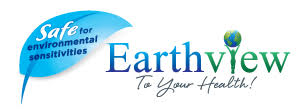
A full line of fragrance-free household cleaning and laundry products—plus skin care, hair, care, and shaving products—formulated by a man experienced with MCS. Made from safe plant- and mineral-derived ingredients—without any aromatics, essential oils, or petrochemical ingredients—and designed for exceptional functionality and performance (I’ve been using these products and they really work well). Sample sizes and economical bulk refills available. “Our experience with MCS led us to create a brand of natural products that work great, and that anyone with environmental sensitivities could always trust to be free of harmful fragrances and chemicals. This was the simple inspiration for Earthview® products…which after 10 years of research and development, has created some incredible product formulas. Our hope is that for lives otherwise changed forever, by toxic chemical exposure we can bring a small measure of beauty and enjoyment in great personal care and cleaning products.” While designed for MCS, these are just great products for everyone to use.
Genopalette
 Natural color wool yarns, from rare, natural-colored Merino sheep. Yarn designed by the shepherd and created at a small American mill. “Materials: wool, fiber, natural fiber, undyed wool, undyed fiber, USA materials, small farm materials, sunshine, grass, rain, made in USA, soil, farm.” Amazing!
Natural color wool yarns, from rare, natural-colored Merino sheep. Yarn designed by the shepherd and created at a small American mill. “Materials: wool, fiber, natural fiber, undyed wool, undyed fiber, USA materials, small farm materials, sunshine, grass, rain, made in USA, soil, farm.” Amazing!
Countryside Gifts
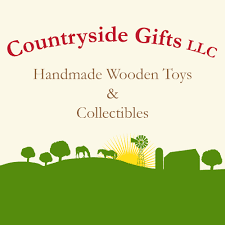 Handmade wooden toys, banks, crayon holders, models, desk accessories and more, with traditional and creative designs. Some can be personalized.”All of our products are lovingly hand-crafted in our wood shop using the finest grade woods and materials. Our products are beautifully finished using only nontoxic finishes. The majority of our products are made from woods harvested using Sustainable Forestry Practices and feature Environmentally Friendly, Organic and Natural Finishes. All our products are 100% Handmade in the USA.
Handmade wooden toys, banks, crayon holders, models, desk accessories and more, with traditional and creative designs. Some can be personalized.”All of our products are lovingly hand-crafted in our wood shop using the finest grade woods and materials. Our products are beautifully finished using only nontoxic finishes. The majority of our products are made from woods harvested using Sustainable Forestry Practices and feature Environmentally Friendly, Organic and Natural Finishes. All our products are 100% Handmade in the USA.
D AND ME
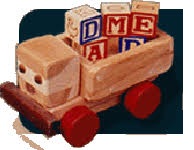 Handcrafted wood toys. Mostly cars and trucks and trains, but if you have an idea for a toy that you’d like, they are happy to make it for you. “All of our handcrafted wood toys provide hours of imaginative play for toddlers and children of all ages. The toys may be ordered with or without (natural) a child safe oiled finish.”
Handcrafted wood toys. Mostly cars and trucks and trains, but if you have an idea for a toy that you’d like, they are happy to make it for you. “All of our handcrafted wood toys provide hours of imaginative play for toddlers and children of all ages. The toys may be ordered with or without (natural) a child safe oiled finish.”
Mountain Pet Products
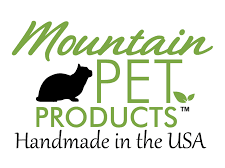 Solid wood cat furniture and toys—all made with natural materials. Cat trees made of solid wood and sisal (no carpet!), a variety of cat scratchers, climber shelves, and toys. Trees and scratchers can be customized to your cat’s content.
Solid wood cat furniture and toys—all made with natural materials. Cat trees made of solid wood and sisal (no carpet!), a variety of cat scratchers, climber shelves, and toys. Trees and scratchers can be customized to your cat’s content.
Fertilizer for Lawn
Question from Joanna
Hi Debra,
Is there a non chemical organic lawn fertilizer and also weed killers that you recommend for someone with extreme MCS? The grass is brown from lack of water in California. Thank you.
Debra’s Answer
I lived in California most of my life, so I can tell you that when you start getting more rain, the lawn will come back to life.
In terms of fertilizer…well, gardening is very localized, and different parts of the country have different conditions and different types of lawn.
So here are my suggestions.
Go online and search on “organic lawn care.” When i just searched I got
- local lawn service companies that use natural methods
- instructions on how to maintain your lawn organically
- Natural lawn care products
Also see if you have a local organic nursery. They would be able to help you with this too.
Foam in a Chair
Question from David
Hi Debra,
I was looking at an office chair, it had vinyl so I read that that has varying levels of toxicity.
But regarding the foam underneath, they said: we use a conventional high density foam for the lower cushion, and a layer cake of four different densities for the smaller cushion. They come from a company in Kansas City that specializes in hospital grade furniture cushions and bedding.
Is this potentially toxic? Yikes, first the outside, now the inside of the chair. I guess it is likely Polyurethane?
Debra’s Answer
Virtually all foam in any chair is going to be polyurethane, unless otherwise stated.
There are many types of polyurethane with various additives for different purposes.
I have no idea what “hospital grade” means. There is no definition I could find on the internet.
It could mean physical safety requirements or it’s more heavy duty or simply that it’s intended for use in hospitals.
Readers, if any of you know or can find out, please let us know.
If you need an office chair, see Totally Toxic-Free Office Chair—Stylish and Affordable Too
Mephisto Shoes
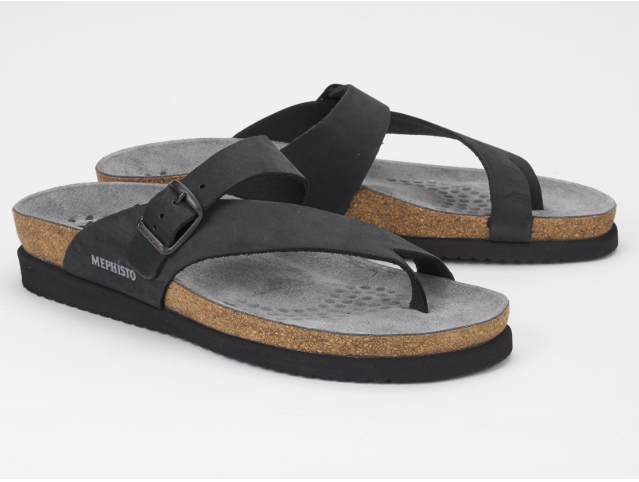 I’ve been wearing Mephisto sandals almost every day for I don’t know how long. At least 15 years. I just buy the same Helen sandals over and over. They are the only shoes I can walk any distance in and never have my feet hurt or get tired. Finally I found some information about the materials. They are handcrafted in France and Portugal. The leathers are highest quality and have “natural tanning.” The soles are natural rubber obtained from latex. I’ve never had any problems of toxic exposure from any pair of Mephitis shoes I’ve purchased.
I’ve been wearing Mephisto sandals almost every day for I don’t know how long. At least 15 years. I just buy the same Helen sandals over and over. They are the only shoes I can walk any distance in and never have my feet hurt or get tired. Finally I found some information about the materials. They are handcrafted in France and Portugal. The leathers are highest quality and have “natural tanning.” The soles are natural rubber obtained from latex. I’ve never had any problems of toxic exposure from any pair of Mephitis shoes I’ve purchased.
Pack-It Cooler Bags
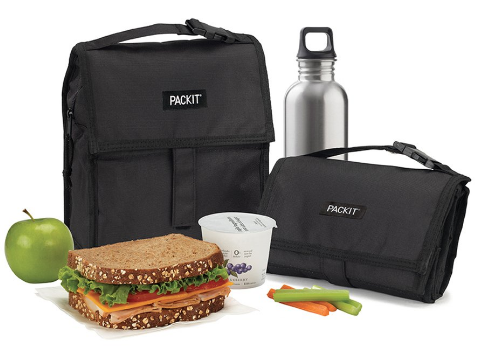 Here’s a bag that freezes overnight, then chills all day. “It’s the only bag that keeps food and drinks cool up to 10 hours – No ice packs needed.” These bags have a freezable gel right inside the sides of the bag, so foods are kept cold from all directions. I can see these bags being useful for shopping, travel, lunch, so you can really take your food with you.”Made from food-safe, nontoxic poly canvas and waterproof EVA. PVC-, BPA-, phthalate- and lead-free. What a great idea! Bags come in 12 sizes, including a grocery-size bag.
Here’s a bag that freezes overnight, then chills all day. “It’s the only bag that keeps food and drinks cool up to 10 hours – No ice packs needed.” These bags have a freezable gel right inside the sides of the bag, so foods are kept cold from all directions. I can see these bags being useful for shopping, travel, lunch, so you can really take your food with you.”Made from food-safe, nontoxic poly canvas and waterproof EVA. PVC-, BPA-, phthalate- and lead-free. What a great idea! Bags come in 12 sizes, including a grocery-size bag.
Midnight Laboratory
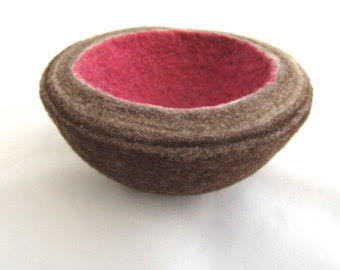 “Practical hand-felted home goods created through an almost alchemical synthesis of natural wool, natural dye plants and unique felting techniques.”Mostly trivets and bowls (to hold little things, not for food).
“Practical hand-felted home goods created through an almost alchemical synthesis of natural wool, natural dye plants and unique felting techniques.”Mostly trivets and bowls (to hold little things, not for food).
Traditional Foods Market
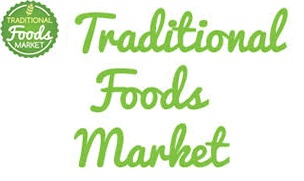 A collection of whole food supplements developed by Ramiel Nagel, author of three popular nutrition books that recommend whole foods for healing. “I found many of the foods I wanted to buy at the health food store did not reflect my own personal food values. I know that my family and yours needs food without additives, food that is pure, and food that comes from humanely raised pasture-fed animals. I want you to enjoy what you buy here, and I want what you buy here to make you healthier and to sustain you and your family…If we won’t eat it, we won’t sell it, no matter how profitable it could be.” Supplements include things like Organic True Whole Food Vitamin C made from certified organic acerola cherries from a biodynamic farmer, free-range pasture-fed organic colostrum, and free-range pasture-red whole bone calcium.
A collection of whole food supplements developed by Ramiel Nagel, author of three popular nutrition books that recommend whole foods for healing. “I found many of the foods I wanted to buy at the health food store did not reflect my own personal food values. I know that my family and yours needs food without additives, food that is pure, and food that comes from humanely raised pasture-fed animals. I want you to enjoy what you buy here, and I want what you buy here to make you healthier and to sustain you and your family…If we won’t eat it, we won’t sell it, no matter how profitable it could be.” Supplements include things like Organic True Whole Food Vitamin C made from certified organic acerola cherries from a biodynamic farmer, free-range pasture-fed organic colostrum, and free-range pasture-red whole bone calcium.
Holistic Dental Store
Tooth powder and mouthwash made with organic and wildcrafted herbs. Tested and approved by Remiel Nagel, author of Cure Tooth Decay.
Winterwoods Tea Company
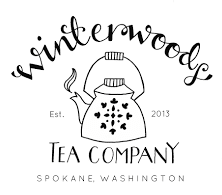 “Farm to Tea Cup…Winterwoods Tea Company produces small batch artisan teas hand mixed in Spokane, Washington. We’re passionate about creating delicious gourmet teas using only the finest 100% organic and fair trade ingredients. We begin by sourcing our ingredients from high quality small, local farms and distributors, many of them from within the Northwest. As a mother-daughter based business we are able to hand mix each batch of tea in small batches to ensure top quality flavor and freshness.”
“Farm to Tea Cup…Winterwoods Tea Company produces small batch artisan teas hand mixed in Spokane, Washington. We’re passionate about creating delicious gourmet teas using only the finest 100% organic and fair trade ingredients. We begin by sourcing our ingredients from high quality small, local farms and distributors, many of them from within the Northwest. As a mother-daughter based business we are able to hand mix each batch of tea in small batches to ensure top quality flavor and freshness.”
Skinsentials
Skin care products that are organic all the way down to the essential oils. They offer a scrub that you can customize to be sea salt or organic sugar, with your choice of oil and essential oils.
Plant Inspiration
Highly functional planters with a minimalist design that are deal for culinary herbs, succulents and houseplants. These space-saving planters can be hung, wall mounted, or arranged as seated decor. Handcrafted in powder-coated steel for indoor and outdoor use.
Is It Safe To Swim in Local Waters?
The results of a study done by the Izaak Walton League of America say we don’t have enough information to know—but it’s likely that they contain the same toxic chemicals we are exposed to every day in consumer products.
The vast majority of the nation’s streams and rivers are not effectively studied for water quality.
Though states are required to test the water quality of their streams and rivers under the Clean Water Act of 1972, IWLA says that “funds are limited and most waterways are not tested regularly or accurately.” In fact, only 2 percent are effectively tested for water quality. Adding to the concern is the fact that half have failed to meet state water quality standards, which means they are too dirty for swimming or fishing. The harsh reality is that for too long, Americans have been in the dark about the health of their local waters, many of which may harbor undetected pollution.
We can read about today’s air quality in the morning’s newspaper or watch it on the news, and look up realtime data online. But data about the health effects of local streams and reverses five to ten years old.
The report found
Just 2 percent of rivers and streams are effectively tested. In terms of the overall effectiveness of a state’s stream monitoring efforts, more than half of all states (26) received D or F grades.
and
Water that runs off our yards, roads, and farm fields carries a laundry list of pollutants into streams and rivers across the country: bacteria and pathogens; nutrient-rich fertilizers and pesticides; oil, antifreeze, and other chemicals; and heavy metals and acid drainage. This runoff is flowing untreated into the streams and rivers that are the lifeblood of an interconnected system of waterways nationwide. Neither the Clean Water Act nor most state laws effectively address this problem—or address it all.
ECOWATCH: 5 Reasons Why You Should Think Twice Before Jumping Into Your Local River
Phthalates from Plastic Pool Liners
I used to have a above-ground pool, with a soft vinyl liner. At the time I wondered if any toxic chemicals were being released from it. When I asked the manufacturer of the liner I was assured it was perfectly safe.
Today I came across a study about the migration of plasticizers used to make soft PVC (phthalates) into water.
It’s a study regarding pond liners, but that’s close enough to a pool liner.
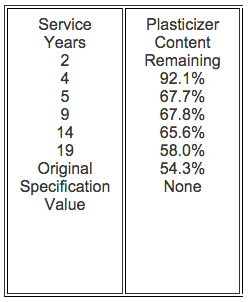
These numbers show that the greatest migration of plasticizer occurs in the first five years. A pool liner that has been in use for more than 5 years would be much less toxic.
But here it is…evidence that vinyl pool liners and little plastic pools kids play in are releasing phthalates into the water, which in turn gets into our bodies via absorption through the skin.
EWG is Rethinking Cancer
This week Environmental Working Group launched a new website called Rethinking Cancer
It’s all about preventing cancer in the first place, instead of finding a cure.
And I totally agree with this approach. I’ve been working to that end for more than thirty years.
If you are concerned about cancer, this is a good place to start to get some ideas about what to do.
What Is Lyocell (Tencel)?
Question from B J
Hi Debra,
Could you please tell me what it is? There are a ton of clothes made out of it this year.
Debra’s Answer
Tencel has been around for quite a while. I remember when it first came on the market in 1997. I was doing some consulting work for Esprit de Corps in San Francisco and they were looking at Tencel.
There are actually three categories of fibers:
- natural fibers – fiber as it occurs in nature
- regenerated cellulose fibers – cellulose from plants put through industrial process
- synthetic fibers – industrial an-made fibers made from petroleum
Tencel is akin to rayon and modal in that they all start as natural cellulose from plants, thus their generic term is “regenerated cellulosic fibers.” Bamboo actually is another one.
The difference between “regenerated cellulosic fibers” and actual “natural fibers” (cotton, linen, silk, wool, and others) is that the natural fibers are actually fibers taken directly from the plant and spun into yarn, whereas the regenerated fibers start as plants but get turned into an industrial product before they become yarn and then fabric.
If you go to the Tencel website , you will see that they call Tencel “botanic fiber” because the raw material—word—comes from Nature. And it does. But as Tencel, the natural material is no longer in it’s natural state. The website also states that solvents are used in the process of turning wood into Tencel.
Tencel is an “eco-friendly” fabric because it saves resources and recycles it’s solvent. The wood comes from single-species tree farms.
Tencel was the first cellulose fiber to utilize nanotechnology for performance.
I personally wear natural fibers as my first choice and occasionally wear regenerated cellulose fibers as a second choice if it’s something like a scarf that I really love. But since natural fibers are widely available, I just wear natural fibers.
While there do not seem to be any known health effects from Tencel, I wouldn’t recommend it for anyone with MCS. Many readers have written in saying they react to Modal (that post seems to be lost).
I also don’t recommend clothing made from Tencel. There are manywebsites that sell clothing made from organic cotton plus Tencel or Modal, and I don’t list them on Debra’s List. There’s just a wholeness about natural fibers that have health benefits of their own, and I don’t want to alter that.
Here are some articles with more information on Tencel:
Tencel: Sustainable but not necessarily healthy gives a good overview about Tencel, benefits and concerns
Eco-Fiber or Fraud? Are Reyon, Modal, and Tencel Environmental Friends or Foes? puts Tencel in the context of the history of regenerated cellulose fibers.
Tencel or Lyocell ecofriendly — caution for those with MCS. Not recommended for MCS.
Haven Natural Brew Soil Conditioner Teas
A special line of all natural soil conditioning tea, from manure harvested exclusively from the by-product of Haven owned livestock. “Haven Livestock Producers, since 1924, has ‘only’ raised natural grass field livestock. Our livestock is raised through rotation on native and permanent grass pastures. For generations Have Livestock Producers has been committed to raising our livestock free of antibiotics, growth hormones and pesticides.” Unfortunately, their meat is not available for online purchase. Click here.
EcoStatic Adhesive-Free Slickynotes
A “slick” alternative to post-its, these note papers have an electrostatic charge that makes them stick. Because they have no adhesive, you can write on them front and back. “You can stick to any smooth, dry surface like drywalls, windows, wallpaper, wood desk, doors and more. Their stable electrostatic charge lasts for weeks. Stick, re-stick and slide them around.”
Rawclates
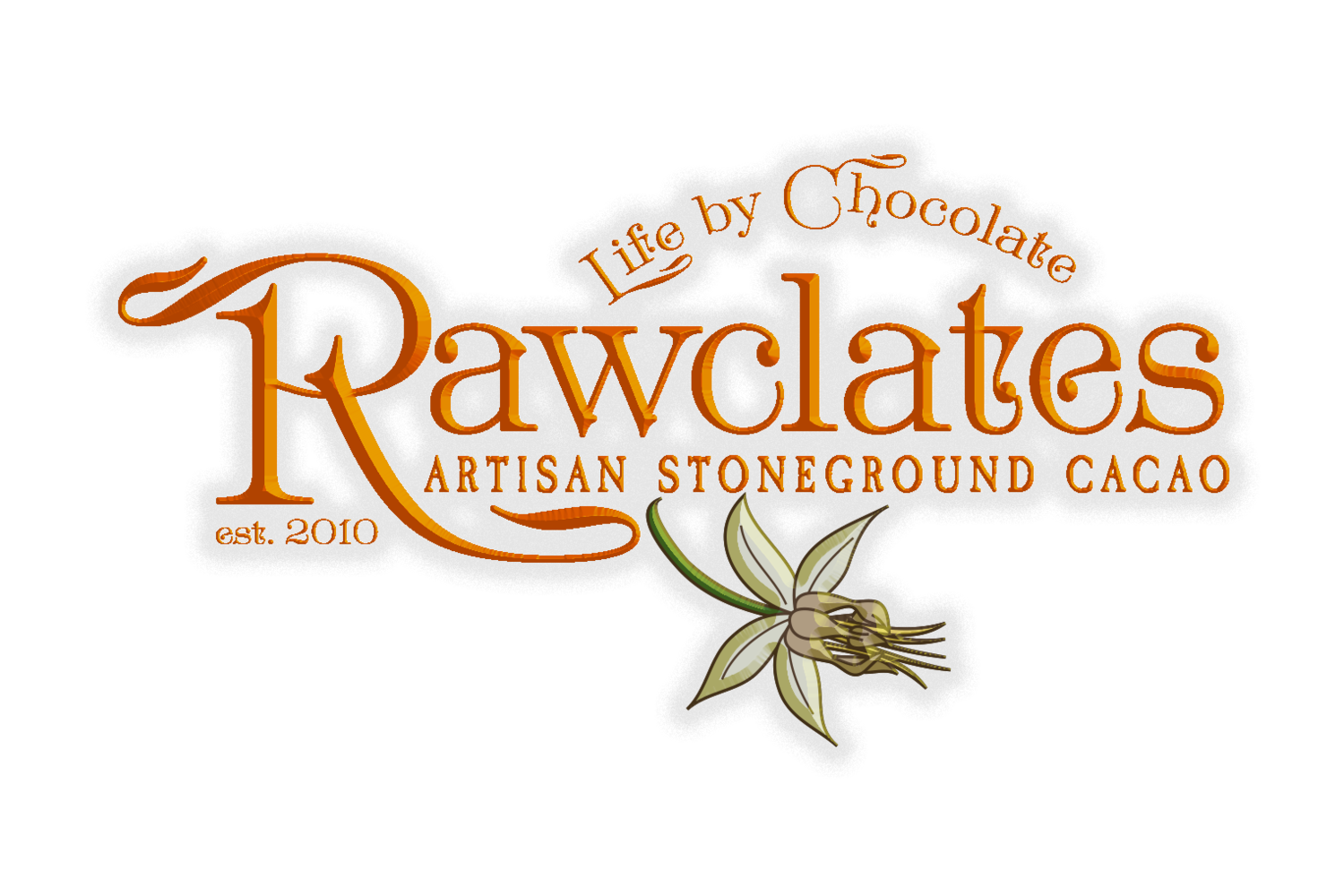 Chocolate bars made from raw, artisan stoneground cacao, coconut sugar and superfoods. “All of Rawlates’ handcrafted gluten free, kosher artisan chocolates are made locally in Brooklyn, NY, created with a passion for pleasing the most enthusiastic chocolate lover…Hadara blends her 25 years of expertise in culinary arts and healing practices to create each unique Rawclate.” I tried these and they are delicious. Very low glycemic. Soy-free, dairy-free, non GMO, organic.
Chocolate bars made from raw, artisan stoneground cacao, coconut sugar and superfoods. “All of Rawlates’ handcrafted gluten free, kosher artisan chocolates are made locally in Brooklyn, NY, created with a passion for pleasing the most enthusiastic chocolate lover…Hadara blends her 25 years of expertise in culinary arts and healing practices to create each unique Rawclate.” I tried these and they are delicious. Very low glycemic. Soy-free, dairy-free, non GMO, organic.
Scratch and Peck Feeds
Got backyard chickens? This feed will produce the best eggs. All of our feeds are soy free and canola free, while our Natural Free Line of products are also Corn Free. Our feeds are completely raw with our limited processing technique. We source grains organically grown and we mill to order in the Pacific Northwest. When you use our Certified Organic Feed, you can rest assured that you are protecting your animals, your family and your health because “you are what your animals eat.”
The Simply Co
Unscented or Lavender Laundry Detergent, make from baking soda, washing soda, organic castile soap and organic essential oils. “We’re all about keeping it simple. No SLS. No dyes. No 1-4 dioxane. No EDTA. No petrochemicals. No Chlorine. No Phosphates. No DEA. No formaldehyde. No optical brighteners. No synthetic preservatives. No animal testing. – EVER!”
Fruition Seeds
Over 200 varieties of certified organic open-pollinated, GMO-free seeds, customized to thrive in the Northeast USA.
Zosimos Botanicals
“Our skilled Artisans handcraft mineral makeup and natural skincare in a 100% wind-powered studio. Healthful cosmetics are mindfully created in small batches using pure mica, certified organic essential oils, waxes, herbs, certified organic fruit extracts and floral waters. Zosimos Botanicals gives you the absolute freshest nontoxic cosmetics possible…we are dedicated to reducing our customers dependence on chemical exposure “ Make-up, hair care, skin care. Trial sizes available.
Oristand
Turn your sitting desk into a standing desk for only $25. This well-designed industrial-grade cardboard box sits on top of your desk, bring your workspace to the proper height to use when you are standing. “No screws. No assembly. No instructions.” Looks like you can set it up in seconds.
Tried & True Wood Finishes
This wood finish is now being used on many wood products that choose to eliminate toxic exposures. “Made from all-natural renwable ingredients that do not contain solvents, toxins, or heavy metal dryers. Safe for food and skin contact…made from sustainable agricultural resources. Linseed oil is a plant derived material, pressed from the seeds of the flax plant. The beeswax used in Original Wood Finish is a by-product of honey production, and varnish resin used in Varnish Oil (hardened tree sap) is a natural forest product…After the impurities are removed, the linseed oils we use are polymerized or “aged”, this means they have enhanced drying properties. No petroleum distillates, or other solvents, or their derivatives are added. No heavy metal driers are used. The methods we employ are adapted from 18th to early 20th century finish making. We combine quality control, current technology and traditional formulations to enhance the properties of the natural ingredients used in Tried & True…All Tried & True wood finishes comply with the product safety standards established by the FDA: “safe for food contact surfaces” (FDA 21, Sec 175.300). Beeswax and natural varnish resin are FDA approved as non-allergic and non-hazardous. Our products, or any of its ingredients, are not regulated under the Hazardous Materials Transportation Act (Title 40) or the EPA Resource and Recovery Act (Title 49).”
Get Stinky Perfume Off Your Skin
Question from Mary
Hi Debra,
Debra, I can’t wait to try this –when I use the restroom and they have liquid soap and the odor stays on my hands for the rest of the day!
www.bottomlinepersonal.com/household-magic/get-stinky-perfume-off-skin
Azure Standard
 A free-to-join food coop. “Azure reduces waste and saves you money by connecting directly with independent growers and food producers, shortening the cycle and handling of your food. You have access to organic farm-fresh veggies and dried bulk foods, grass-fed dairy and frozen meats, raw honey and non-GMO oils, packaged foods, nutritional supplements and beauty products. Your order is processed at our massive warehouse in Oregon, packed in recycled boxes with your name on it, and put on a truck that delivers straight to you…What started out as an organic farm over 40 years ago, has since grown into the largest independent natural and organic food distributor in the country. As a result of extraordinary growth and steadfast commitment, Azure now delivers more than 12,500 non-GMO and organic products direct to families, manufacturers and retailers across the nation, including Hawaii and Alaska. Customers love the many options for bulk and family-friendly sizes…We support a free and independent food supply chain where our customers can choose clean and quality foods they trust. And, we provide food producers with a strong base of ardent customers who appreciate them, will support them and help them thrive.”
A free-to-join food coop. “Azure reduces waste and saves you money by connecting directly with independent growers and food producers, shortening the cycle and handling of your food. You have access to organic farm-fresh veggies and dried bulk foods, grass-fed dairy and frozen meats, raw honey and non-GMO oils, packaged foods, nutritional supplements and beauty products. Your order is processed at our massive warehouse in Oregon, packed in recycled boxes with your name on it, and put on a truck that delivers straight to you…What started out as an organic farm over 40 years ago, has since grown into the largest independent natural and organic food distributor in the country. As a result of extraordinary growth and steadfast commitment, Azure now delivers more than 12,500 non-GMO and organic products direct to families, manufacturers and retailers across the nation, including Hawaii and Alaska. Customers love the many options for bulk and family-friendly sizes…We support a free and independent food supply chain where our customers can choose clean and quality foods they trust. And, we provide food producers with a strong base of ardent customers who appreciate them, will support them and help them thrive.”
Hudson Valley Seed Library
One of the most creative seed sites I’ve seen, you’ll love browsing this site for certified organic seeds for vegetables, flowers, and herbs. I love the “Art Packs” which “celebrate the diverse stories of seeds and their stewards. Each year we expand our collection putting out an open call for artists.” Many heirloom varieties. “We took 4 of the oldest, yet most sought after and high quality heirloom lettuce varieties and brought them together in this mix.”
Hammons Black Walnuts
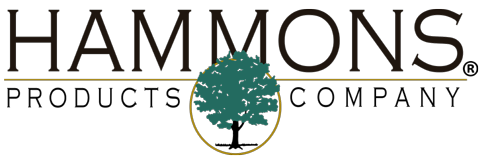 Hand-harvested wild black walnuts and their shells (ground to various sizes for various uses.
Hand-harvested wild black walnuts and their shells (ground to various sizes for various uses.
Golden Moon Tea
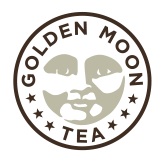 “Tea, the whole tea, nothing but the tea…no pesticides, no GMOs, no chemically treated teabags and not “natural” or artificial flavors.” Plus “toxin free teaware, including a double wall glass tea cup to keep your tea hot.
“Tea, the whole tea, nothing but the tea…no pesticides, no GMOs, no chemically treated teabags and not “natural” or artificial flavors.” Plus “toxin free teaware, including a double wall glass tea cup to keep your tea hot.
Tuckerman & Co.
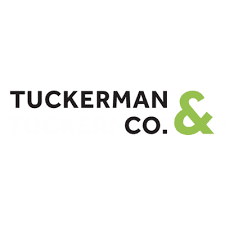 Men’s dress shirts±long-staple organic cotton, the world’s finest Italian mills, quality craftsmanship backed by 80 years experience. Made in New England. Tuckerman was created for a simple but powerful reason: we were frustrated trying to find high quality clothing that we felt good about. Most of what was available on the rack or in stores just wasn’t very well made and didn’t last very long. Curious by nature, we started asking questions, and the more we learned the less we liked it. There had to be a better way. Our approach has been to try and reimagine clothing the way that it should be made. We have a bias toward the timeless over the fleeting. We believe in using the finest materials and partnering with those who take genuine pride in their work. We have a strong commitment to environmental responsibility, and wherever possible use less harmful materials over their conventional counterparts. Together, we believe these all make for a better product.
Men’s dress shirts±long-staple organic cotton, the world’s finest Italian mills, quality craftsmanship backed by 80 years experience. Made in New England. Tuckerman was created for a simple but powerful reason: we were frustrated trying to find high quality clothing that we felt good about. Most of what was available on the rack or in stores just wasn’t very well made and didn’t last very long. Curious by nature, we started asking questions, and the more we learned the less we liked it. There had to be a better way. Our approach has been to try and reimagine clothing the way that it should be made. We have a bias toward the timeless over the fleeting. We believe in using the finest materials and partnering with those who take genuine pride in their work. We have a strong commitment to environmental responsibility, and wherever possible use less harmful materials over their conventional counterparts. Together, we believe these all make for a better product.
Cake in the Morn
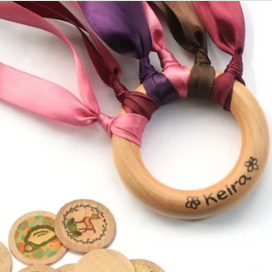 Cake in the Morn specializes in natural, eco friendly Montessori and Waldorf toys. Each toy is made to order. It is hand cut, hand painted, and hand sewn by Heidi. Each design you see is created by Heidi and unique to Cake in the Morn. You won’t find toys like ours anywhere else! We use eco-friendly felt, all American hardwood, and an AP-certified non-toxic paint wash on all of our wood products. All of our toys are sealed with our very own homemade local beeswax seal.
Cake in the Morn specializes in natural, eco friendly Montessori and Waldorf toys. Each toy is made to order. It is hand cut, hand painted, and hand sewn by Heidi. Each design you see is created by Heidi and unique to Cake in the Morn. You won’t find toys like ours anywhere else! We use eco-friendly felt, all American hardwood, and an AP-certified non-toxic paint wash on all of our wood products. All of our toys are sealed with our very own homemade local beeswax seal.
Conway Electric
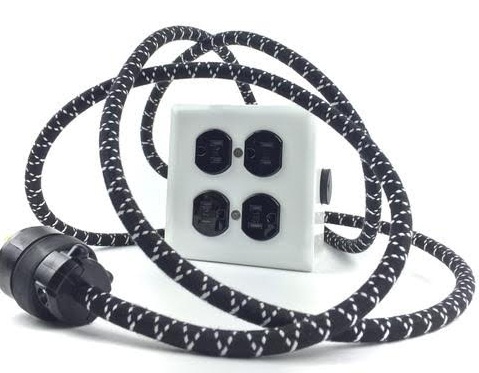 Modern, powerful, electrical extensions that are safer and more stylish than your power strip. The square cast-aluminum housing is grounded, fire-resistant, and powder-coated in colors. And the cords are cloth-covered, not plastic. You can also buy the made-in-USA cord by the foot (only $1!).
Modern, powerful, electrical extensions that are safer and more stylish than your power strip. The square cast-aluminum housing is grounded, fire-resistant, and powder-coated in colors. And the cords are cloth-covered, not plastic. You can also buy the made-in-USA cord by the foot (only $1!).
Kaufmann Mercantile
![]() If I lived down the street from this store, I would be there constantly. First I would buy the waterproof waxed cotton canvas lunch bag. “Home pared down to the essentials….From the very beginning, the Kaufmann Mercantile team has worked closely with makers and manufacturers from around the world, sharing a deep appreciation for products made with honest, lasting materials and grounded in a sense of place. Our new endeavor, Kaufmann, is dedicated to the simple yet focused pursuit of distilling a piece to its most essential elements. Each is made in the United States by hand.” Furniture, dinnerware, bags, kitchenware, candles, all thoughtfully and beautifully designed from natural materials. Cookware and bakeware is all clay, porcelain and soapstone.
If I lived down the street from this store, I would be there constantly. First I would buy the waterproof waxed cotton canvas lunch bag. “Home pared down to the essentials….From the very beginning, the Kaufmann Mercantile team has worked closely with makers and manufacturers from around the world, sharing a deep appreciation for products made with honest, lasting materials and grounded in a sense of place. Our new endeavor, Kaufmann, is dedicated to the simple yet focused pursuit of distilling a piece to its most essential elements. Each is made in the United States by hand.” Furniture, dinnerware, bags, kitchenware, candles, all thoughtfully and beautifully designed from natural materials. Cookware and bakeware is all clay, porcelain and soapstone.
EcoButterfly Organics
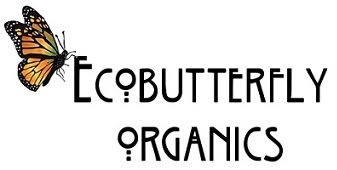 A variety of organic cotton yarns, hemp yarns and natural beads and buttons. “We decided never to offer highly chemical processed synthetic rayon yarns just because they are made from natural bamboo, soy, corn, tencel, banana, milk etc. These natural fibers are made into a chemical soup and extruded like spaghetti to make the silky “rayon” yarns and they are nowhere near eco-friendly. GMOs (Genetically Engineered corn & soy) are also unacceptable. ”
A variety of organic cotton yarns, hemp yarns and natural beads and buttons. “We decided never to offer highly chemical processed synthetic rayon yarns just because they are made from natural bamboo, soy, corn, tencel, banana, milk etc. These natural fibers are made into a chemical soup and extruded like spaghetti to make the silky “rayon” yarns and they are nowhere near eco-friendly. GMOs (Genetically Engineered corn & soy) are also unacceptable. ”
Lakeshore Linen
 Rustic textured 100% linen made into products for kitchen, table, bedroom and bath. “Simple, natural, comfortable.”
Rustic textured 100% linen made into products for kitchen, table, bedroom and bath. “Simple, natural, comfortable.”
Formaldehyde Emissions from Laminate Flooring
While searching for something else, I just happened to find a new report, released on 22 March 2016, called POSSIBLE HEALTH IMPLICATIONS FROM EXPOSURE TO FORMALDEHYDE EMITTED FROM LAMINATE FLOORING SAMPLES TESTED BY THE CONSUMER PRODUCT SAFETY COMMISSION
You can read the full report. Prompted by last years expose by 60 Minutes of formaldehyde emissions from laminate flooring made in China, sold at Lumber Liquidators, the CPSC did their own study on laminate flooring and evaluated the health effects from this particular exposure to formaldehyde.
Here are the results.
NOTE: Because of the small number of laminate flooring samples tested, these conclusions do not represent the range of all possible formaldehyde concentrations and should not be generalized to all laminate flooring manufactured during the period of concern.
As a result of this evaluation, NCEH/ATSDR has come to the following conclusions:
Health effects from estimated formaldehyde exposures
Non-cancer effects
Floorboard contributions
- The amount of formaldehyde released could cause health symptoms in residents. Those symptoms include an increase in breathing problems and short-term eye, nose, or throat irritation. These symptoms are more likely to occur at lower concentrations for people with pre-existing health conditions like asthma or chronic obstructive pulmonary disease (COPD).
- The higher the emissions the more likely people are to experience health effects, regardless of their age or pre-existing health conditions.
- Flooring in small chamber tests had lower emission rates than flooring in large chamber tests. Across all testing, the NCEH/ATSDR model results show that in 95% of the samples, the amount of formaldehyde released by new laminate flooring alone could range from at or below 185 micrograms of formaldehyde per cubic meter of air (µg/m3) to at or below 930 µg/m3.
Floorboard contributions plus typical indoor levels
- Formaldehyde is a common indoor air pollutant found in almost every home in the United States. It comes from manufactured wood products, permanent press fabrics, and other common household products. The typical amount of formaldehyde in indoor air ranges from a few µg/m3 to 240 µg/m3, with an average less than 50 µg/m3. This range
includes lower levels in older, less energy efficient homes, and higher concentrations in newer or newly renovated homes (ATSDR 1999; ATSDR 2010).- NCEH/ATSDR added the estimated amount of formaldehyde released by new laminate flooring to typical home indoor air levels.
- Our calculations show that if homes already contain new materials or products that release formaldehyde, the new floorboards could add a large amount of additional formaldehyde to what is already in the air from other sources. This additional amount of formaldehyde increases the risk for breathing problems as well as short-term eye, nose, and throat irritation for everyone.
Cancer effects
We estimated the risk of cancer from the CPSC-tested flooring based on conservatively high exposure assumptions:
- Installing flooring with the highest formaldehyde levels, and
- Breathing in formaldehyde at those levels in the house all day long for two years.
Using these assumptions, we estimated the lifetime risk of cancer to be between 6 and 30 extra cases for every 100,000 people. Formaldehyde levels are higher when products are new and get lower over time. Several studies have shown that indoor air concentrations of formaldehyde from new building products usually decrease over time, particularly during the first two years. Even though levels reduce over time, we calculated lifetime risk very conservatively and in a manner that is most protective of health, assuming a constant 24-hour, 7-day a week exposure to the measured floorboard emissions for the entire 2-year off-gassing period. If we instead assume a constant formaldehyde decay rate over the same 2-year period, these cancer risks would be reduced by half. If formaldehyde concentrations are assumed to remain elevated after a two-year period, the cancer risks would be proportionally increased.
To put those numbers in perspective, the American Cancer Society (http://www.cancer.org) estimates that the lifetime cancer risk for people living in the United States is one in two men (50,000 per 100,000 people) and one in three women who may develop cancer from all causes (33,333 per 100,000 people).
Quality of life
People can generally smell formaldehyde before being adversely affected by it. Formaldehyde released from laminate flooring at levels that individuals can smell may affect their quality of life. Exposure to the estimated formaldehyde levels discussed in this report may cause sensory irritation, nausea, stress, and headaches.
Now this applies only to the actual laminate flooring tested, but it may apply to other laminate flooring.
We need to be careful to not extrapolate that just because this batch of flooring tested has these results that all other laminate flooring would have similar results.
I have been recommending against laminate flooring since Pergo came out years ago. I called them and without hesitation they told me that their flooring emits formaldehyde and they sent me the emissions tests.
I would like to see ALL laminate flooring be tested and provide the test results to consumers considering their products.
Retro Foam
Question from Bonnie Johnson
Hi Debra,
Do you know anything about the company called Retro Foam. They are advertised as being toxic free for brick homes in many areas.
Debra’s Answer
I didn’t find much information on the main company website, but there is a lot more at one of their dealer websites: http://mwretrofoam.com/faq
They say the foam is “a tri-polymer, water-based, plastic foam; it contains a resin, foaming agent (catalyst) and pressurized air (200psi). The three components remain separate until the time of injection. The actual foam is mixed in the 10’ vinyl hose we use for installations.” aminoplast acid based air
So this tells me nothing. I called the main office and they told me the foam is three parts: aminoplast plastic, acidt-based resin and air. Combined they make foam.
I looked up “aminoplast.” but there isn’t much information.
An search for aminoplast MSDS resulted in an MSDS that says the synonym is “aminoplast polymer” and the chemical name is “urea-formaldehyde polymer.”
Yet Retro Foam’s MSDS is very different (see below).
I’m hesitant to say anything about this one way or the other. The company says it’s not hazardous, but I can’t confirm that, even with another MSDS.
They say “Does it contain formaldehyde? Yes, a very small amount: .016 ppm, which is well below EPA restrictions. Formaldehyde is also naturally produced in very small amounts in our bodies as a part of our normal, everyday metabolism and causes us no harm. It can also be found in the air that we breathe at home and at work, in the food we eat, and in some products that we put on our skin. For example: lotions, shampoos, sunblock, body wash, toothpaste, cosmetics… The point: Is formaldehyde dangerous? It depends on the amount. Is RetroFoam™ dangerous? No.”
This sounds like they are trying to make us think formaldehyde isn’t harmful.
They say “Is it safe? Yes. It’s environmentally friendly. It’s non-toxic, odor free, safe for everyone involved.”
I asked customer service about substantiation for these claims and she sent me their specifications sheet, which says
ENVIRONMENTALLY “GREEN” CHARACTERISTICS
RetroFoam is an environmentally safe and friendly product made from nitrogen-based organic polymers. The foam is non-toxic and contains no solvents or petro-chemicals. Other “green” characteristics of Polymaster foam are:
- Biodegradable—no disposal problems
- No CFC’s
- No ozone depleting off-gassing
- No container disposal problems
- Does not require potable water
- Ships dry—utilizes less energy for transportation
- Pollution prevention alternative to rigid foam boards
- No residues following incineration
The MSDS sheet lists no hazardous chemicals.
Is the Hose on the Kitchen Faucet Safe?
Question from NA
Hi Debra,
Redoing my kitchen and I am looking for a toxic free kitchen sink faucet.
I notice that many of them have a PVC hose from the faucet that can be pulled down and also used as a spray nozzle.
Went to Loews and of course they said that it was safe.
Should I stick with old fashioned one. Are there any that “hoses” are totally stainless steel lined that permit flexibility and the ability to “pull it down”.
I never drink water from the facet but obviously use it to wash veggie, fruits and everything else. Thanks for your help..
Hope you can get back to me asap….I bouht a MOEN and the plumber wants to put iti this weekend. Yikes…
Love your site!!! YOU GO GIRL!!!
Debra’s Answer
First of all, whatever any faucet hose is made from, you can always replace it with a different hose. Your plumber should be able to do that.
I’m looking around for spray hoses. Many say “vinyl” or “plastic” but here’s one at Lowe’s that’s stainless steel.
I think if you are buying a faucet it would be good idea to check the hose that comes with it and also possible replacement hoses.
Polyethylene tubing is very common and some faucets might have polyethylene or you could replace the tube with polyethylene.
I just haven’t researched all the tubing in all the kitchen faucets.
Testing Reveals Presence of Glyphosate in Popular Breakfast Foods
Today, the Alliance for Natural Health-USA (ANH-USA) released the results of food safety testing conducted on an assortment of popular breakfast foods. Enzyme-linked immunosorbent assay (ELISA) testing revealed the presence of glyphosate; the most widely used agricultural herbicide, in 11 of the 24 food samples tested.
“We decided to do this testing to see just how ubiquitous this toxin has become in our environment. We expected that trace amounts would show up in foods containing large amounts of corn and soy,” explained Gretchen DuBeau, executive and legal director of ANH-USA. “However, we were unprepared for just how invasive this poison has been to our entire food chain.”
Glyphosate was detected in 11 of the 24 breakfast foods tested. Analysis revealed the presence of glyphosate in oatmeal, bagels, eggs (including organic), potatoes and even non-GMO soy coffee creamer.
“Glyphosate has been linked to increases in levels of breast, thyroid, kidney, pancreatic, liver, and bladder cancers and is being served for breakfast, lunch and dinner around the world,” said DuBeau. “The fact that it is showing up in foods like eggs and coffee creamer, which don’t directly contact the herbicide, shows that it’s being passed on by animals who ingest it in their feed. This is contrary to everything that regulators and industry scientists have been telling the public.”
The presence of glyphosate in eggs and dairy supports the fear that the chemical is accumulating in the tissue of these animals, and therefore presumably also in human tissue, in a process called bioaccumulation.
Furthermore, testing for glyphosate alone does not even give us the full picture. The amounts detected by the ELISA test for glyphosate do not include any analogs of glyphosate, such as N-Acetylglyphosate, which is used by DuPont in its GMO formulations. These analogs may also be present in food and would add to the amount of glyphosate accumulated in human tissue. Glyphosate and its analogs are known endocrine disrupters for humans.
Clearly Americans are consuming glyphosate daily. The true safety of this chemical, just last year identified as a probably carcinogen by the WHO, is unknown. Current EPA standards have not been rigorously tested for all foods and all age groups. Evidence linking glyphosate with the increased incidence of a host of cancers is reason for immediate reevaluation by the EPA and FDA.
VIDEO: Are Your Eating Glyphosate For Breakfast?
ALLIANCE FOR NATURAL HEALTH USA: Glyphosate Levels in Breakfast Foods: What is safe?
Static Schmatic
All-natural static control for clothing, hair, and pets.
Life of Riley Foods
Specialty small-batch nut butters, with interesting twists. The cashew butter, for example, contains two kinds of cinnamon, ginger, nutmeg, other spices, and honey. Their sunberry butter has bits of dried cherries and strawberries. “We promote the good life through good food. We craft our small-batch specialty nut butters using only the highest quality ingredients to create unique blends inspired by our passion for superb eats and healthy living. We source local, organic, non-GMO ingredients wherever possible, and our products are always gluten, grain, soy, dairy, and artificial stuff-free, sweetened only with touches of pure maple sugar, raw honey or dried fruit.”
Hive Mind Bee Pollen
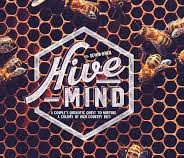 Purveyors of high quality raw bee pollen from California honey bees, collected by family-run beekeepers. “Our product is 100% California-raised, fresh, raw and cold stored directly from the hive until shipped to your door.”
Purveyors of high quality raw bee pollen from California honey bees, collected by family-run beekeepers. “Our product is 100% California-raised, fresh, raw and cold stored directly from the hive until shipped to your door.”
The Joinery
“Solid Wood Furniture for Life…The Joinery designs and handcrafts beautiful hardwood furniture for residential and commercial spaces. Using traditional woodworking techniques and hardwoods from sustainable forest resources, each piece of Joinery’s wood furniture is wholly built and proudly signed by an individual builder in our Portland, Oregon wood shop. All of our handmade furniture for the home is warranted for a lifetime of real-world use.” These pieces are simply beautiful. Sustainably harvested woods are finished with their own linseed/tung/citrus/soy blend (no solvents), then sanded and finished with their own beeswax/citrus wax. Customer service told me “new pieces do have a smell to it, but if people are sensitive, we can hold the pieces here they have purchased until the smell is gone.”
Unfinished Furniture Giant
 “America’s Favorite Custom Unfinished Furniture Expert! NO particle board, simulated wood grain vinyls or other shortcuts are used in crafting our furniture. Our real wood furniture is made out of premium North American cherry, maple and oak. Our construction details include solid wood face frames, solid wood drawers and posts, dovetail drawer joints, metal glides, real wood tops and concealed adjustable hinges on doors. Individually made by Pennsylvania craftsmen. Most of our products are available in four species of wood: PINE, MAPLE , OAK and Cherry . We offer almost endless combinations and options to create thousands of designs in many different styles: SHAKER, MISSION, TRADITIONAL, COLONIAL, CONTEMPORARY and COUNTRY.”
“America’s Favorite Custom Unfinished Furniture Expert! NO particle board, simulated wood grain vinyls or other shortcuts are used in crafting our furniture. Our real wood furniture is made out of premium North American cherry, maple and oak. Our construction details include solid wood face frames, solid wood drawers and posts, dovetail drawer joints, metal glides, real wood tops and concealed adjustable hinges on doors. Individually made by Pennsylvania craftsmen. Most of our products are available in four species of wood: PINE, MAPLE , OAK and Cherry . We offer almost endless combinations and options to create thousands of designs in many different styles: SHAKER, MISSION, TRADITIONAL, COLONIAL, CONTEMPORARY and COUNTRY.”
A & B American Style
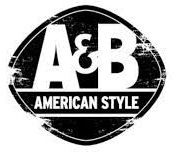 They had me with their headline: “Our mission is to take sugar out of the American diet.” They make all-natural condiments using real, whole ingredients. No sugar. Nothing artificial. At the moment it’s a few pepper sauces. But I hope they do more and go organic.
They had me with their headline: “Our mission is to take sugar out of the American diet.” They make all-natural condiments using real, whole ingredients. No sugar. Nothing artificial. At the moment it’s a few pepper sauces. But I hope they do more and go organic.
Ciberia Soap Supply
Wholesale organic oils and butters that anyone can purchase for soap making.
Phthalates in Fast Food—But That’s Not All…
Researchers at George Washington University have found that people who eat fast food tend to have significantly higher levels of certain phthalates that have known health effects.
The danger isn’t from the food itself, but rather the process by which the food is prepared.
To determine how fast food processing methods affects the presence of certain non-natural chemicals, researchers analyzed data for nearly 9,000 people, that was collected as part of federal nutrition surveys conducted between 2003 and 2010. The surveys included detailed information about the participants’ diets, including what each had eaten in the last 24 hours. They also contained the results of urine samples taken at the same time, which allowed the researchers to measure the levels of three separate chemicals, including the phthalates DEHP and DiNP.
| DEHP | DiNP | ||
| fast food in 24 hours before the test | “much higher” | “Much higher” | than those who had eaten none |
| a sizable amount of fast food | 24% higher | 39% higher | than those who had eaten none |
| a little fast food | 15% higher | 25% higher | than those who had eaten none |
Exposure to phthalates is widespread. The group of chemicals is used in many products, such as food packaging, where it does not appear on the label. Even though the dangers of phthalates are not yet generally accepted, studies show a strong link between DEHP and diabetes, an increase in allergies in children and negative child behavior. The phthalate DiNP has been association with higher blood pressure.The amount of phthalates in fast food seems to be associated with the amount of processing equipment food goes through in quick-serve restaurants. More contact with plastics, conveyor belts, and various machines results in more phthalates in the food.
But fast foods are not the only source of phthalate exposure. Phthalates from food processing are widespread in the food industry. An article in The Guardian reports:
In food, for example, even milk packaged in glass may have passed through plastic tubes on its way from the cow to the bottle, taking DEHP along with it. “Milking machines use a lot of plastic and DEHP is free and very lipophilic (fat soluble), and milk is full of lipids, so it just pulls the DEHP out of the plastic tubing and into the milk,” explains Robin Whyatt, professor of environmental health sciences at the Columbia University Medical Center and the lead author on several landmark phthalate studies. “So my guess would be that milk is a pretty important source of dietary exposure to DEHP.”
In the same article, a study showed imported organic spices to be contaminated with phthalates:
Spices are another surprising source of phthalate exposure. A 2013 study, published in the journal Nature, compared the phthalate levels of two groups, one eating their regular diet but armed with a handout of recommendations for ways to reduce BPA and phthalate exposure in their diet, and the other eating a catered diet consisting solely of local, organic fare, none of which had touched plastic packaging. The study authors were shocked to find that DEHP levels in the local, organic group jumped 2,377% over the course of the experiment. Determined to figure out why, the researchers tested all of the foods consumed by the group and found high levels of the phthalate in dairy products and various organic, imported spices.
This just points out once again the importance of preparing your food at home from fresh ingredients that have not been through industrial processing. Even organic foods packaged in glass have still been run through machines with soft plastic tubing.
See my food blog Toxic Free Kitchen for recipes and more information on preparing food yourself at home.
THE WASHINGTON POST: Researchers have found a ‘striking’ new side effect from eating fast food
NHANES is the [National Health and Nutrition Examination Survey
THE GUARDIAN: Phthalates are everywhere, and the health risks are worrying. How bad are they really?
HealthLabs.com
 Offers lab tests without requiring a doctor’s prescription. You order the tests online or by phone, then take your receipt to one of 2000+ local labs, where your blood is drawn. Get results within 3 business days. Tests include Allergy Testing, Anemia, Anti-Aging / Hormones, Arthritis, Blood Typing, Cancer, Cardiac / Cholesterol, Celiac Disease, Diabetes, Drugs, Fertility, Gastrointestinal, General Health / Wellness, Heavy Metals / Toxins, Hepatitis, Immunity Detection, Kidney (Renal) Function, Liver Function, Military Testing, Pregnancy / Prenatal, Prostate, Sports Testing, STD Testing, Thyroid, andVitamin & Nutritional Testing.
Offers lab tests without requiring a doctor’s prescription. You order the tests online or by phone, then take your receipt to one of 2000+ local labs, where your blood is drawn. Get results within 3 business days. Tests include Allergy Testing, Anemia, Anti-Aging / Hormones, Arthritis, Blood Typing, Cancer, Cardiac / Cholesterol, Celiac Disease, Diabetes, Drugs, Fertility, Gastrointestinal, General Health / Wellness, Heavy Metals / Toxins, Hepatitis, Immunity Detection, Kidney (Renal) Function, Liver Function, Military Testing, Pregnancy / Prenatal, Prostate, Sports Testing, STD Testing, Thyroid, andVitamin & Nutritional Testing.
Are Organic Strawberries Really Organic?
Question from Jackie
www.realfarmacy.com/dirty-little-secret-organic-strawberries-arent-really-organic
I saw the above on Facebook and they showed a picture of Driscoll’s Strawberries with it.
So I wrote to them regarding the above and below is there answer.
You cut through this much better than I do.
What do you think, should we not be buying them???
Thanks
Dear Jackie,
Thank you for taking the time to ask about our growing practices at Driscoll’s. Growing conditions vary from farm to farm and among different growing regions around the world. Depending on these conditions, berry farmers may need to take action to protect their crop by using protective materials. Any pesticide that is used must be in compliance with federal and state laws, and must comply with the pesticide registration policies of the U.S. Environmental Protection Agency (US EPA), and the berries must also be in compliance with legal pesticide tolerances established by the U.S. Food and Drug Administration (US FDA). For additional information on specific pesticides available for use by berry farmers, please refer to the US EPA’s website at www.epa.gov/pesticides/factsheets/index.htm
The type of farming method used to grow the berries (organic or non-organic) will also determine what options the farmer has to protect the crop. An organic farmer can only use pesticides that have been approved for certified organic farming by the United State Department of Agriculture’s (USDA) National Organic Standards Program. A non-organic farmer can choose to use either an approved organic or a non-organic pesticide. Driscoll’s is also one of the largest suppliers of organic berries with a product line that includes strawberries, raspberries, blueberries and blackberries. We are proud to offer consumers a wide assortment of organic and non-organic berries that allows consumers to have a choice when purchasing Driscoll’s berries.
Hopefully this information has offered some insight into our growing practices. Please let me know if you have any additional questions that haven’t been answered.
Best Regards,
Hannah Hughes
Driscoll’s Customer Care Representative
Debra’s Answer
Oh this is a difficult question.
If you didn’t click through and read the article, it was making the point that the SEEDLING is treated with methyl bromide, even for organic strawberries.
First of all methyl bromide degrades in the sun in 10 days. So it’s highly likely that as the plant grows there is no residue of methyl bromide by the time the fruit is formed and you eat it.
Here’s more about fumigation from NPR
California’s strawberry growers don’t want to take any risk that their crop will fail…
So every year, a month before planting time, fumigation machines move slowly across California’s strawberry fields. They inject chemicals into the soil and seal the fumes into the soil with sheets of plastic.
The chemicals kill practically everything in the soil: Insects, weeds, and fungi..
Organic strawberry growers don’t fumigate. They stay a step ahead of diseases by moving from field to field. This also means that they only get to grow strawberries on a particular field once every three to five years, or sometimes even longer. Yet even California’s organic strawberry growers buy their plants from nurseries that do use fumigation. Nobody wants to run the risk of bringing diseased plants into their fields.
This technology has done wonders for strawberry production. But it’s under attack. And it may have to change.
The most powerful fumigant — methyl bromide — is supposed to be phased out gradually because it can eat away at Earth’s ozone layer. It’s still used under a “critical use exemption” that the Environmental Protection Agency has obtained each year.
But I’m not sure it’s a big deal for the end eater of the organic strawberry.
And I just don’t like being sensational about something so small.
We don’t live in a perfect world and we need to make our choices from what is available while at the same time striving to improve the overall problems.
I would say that an organic strawberry from a methyl bromide treated seedling is far better than a conventional strawberry that would have even more toxic pesticides.
So either choose organic, however flawed, or don’t eat strawberries, or grow your own.
I think Driscoll’s response is sufficiently vague as to say nothing. But since they are selling fruit from multiple farms under their brand, they can’t possibly describe the growing conditions for any specific box of strawberries.
That’s why farmer’s markets and gardening are so wonderful!
I just called my local organic nursery and she said organic seedlings sold in nurseries are NEVER treated with methyl bromide or anything else. She said it’s different for commercial seedlings.
My friend Joyce just planted strawberries in cement blocks. The strawberries then hang on the outside of the block instead of in the dirt. I liked this so much I had her come over and help me set up some cement blocks too in my garden, Now I need to go down to the organic nursery and buy some untreated strawberry seedlings.
Have some fun! Grow your own strawberries.

Equipment for Making Kombucha Tea
Question from Linda H
Hi Debra,
I am making kombucha tea for its probiotic and healing properties. It appears that a continuous brewing method promotes a more prolific probiotic colony. Can anyone help me find a “Sun Tea-like” decanter with the following criteria (or suggest the best alternative)?
1. glass container
2. STAINLESS STEEL spigot
3. SILICONE (rather than metal or plastic) seal 4. 1 gallon to 3 gallon capacity
4. NO METAL coming in contact with any beverage (as it could damage/kill scoby)
So far, this is the closest I have come, based on information obtained through live chat at Wayfair.com. They told me it is a stainless steel spigot and glass decanter. I haven’t been able to get through to Wayfair to determine if there is any plastic, but there probably is:
www.wayfair.com/Qualia-Glass-Celebration-3-Gal.-Beverage-Dispenser
The shape of the decanter is not ideal. Cylindrical would be better, with a large mouth. But this could work, if what I was told is true.
I would appreciate any guidance you have to offer. Thank you!
Debra’s Answer
This page has a whole list of kombucha equipment, including large wide mouth glass jars with and without dispensers and a stainless steel replacement spigot. Plus a kombucha starter kit.
I think you’ll find what you need here.
Cultures for Health
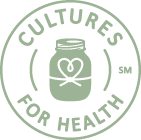 The best way for me to describe this website is “organic do-it-yourself heaven!” They sell all kinds of DIY for making foods like fermented foods, cheesemaking, brewing, sprouting, and more. Their message is You Can Do This yourself at home, and they provide everything from supplies to instructions to cheering you on. I love this site and can’t wait to use it to make these foods myself.
The best way for me to describe this website is “organic do-it-yourself heaven!” They sell all kinds of DIY for making foods like fermented foods, cheesemaking, brewing, sprouting, and more. Their message is You Can Do This yourself at home, and they provide everything from supplies to instructions to cheering you on. I love this site and can’t wait to use it to make these foods myself.
Coconut Secret
 Delicious condiments made from the sap of the coconut tree, using raw methods aging or evaporating at low temperatures. Their Coconut Aminos is one of my favorite condiments—slightly sweet with very low carbs. They also make Coconut Vinegar, Coconut Nectar (sweetener) and coconut crystals (sweetener). Read their website for lots of information about coconut nutrition and harvesting.
Delicious condiments made from the sap of the coconut tree, using raw methods aging or evaporating at low temperatures. Their Coconut Aminos is one of my favorite condiments—slightly sweet with very low carbs. They also make Coconut Vinegar, Coconut Nectar (sweetener) and coconut crystals (sweetener). Read their website for lots of information about coconut nutrition and harvesting.
PACT
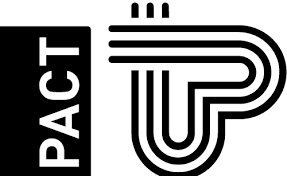 This is what I like. You go to their website and the first thing you see is “Super Soft ORGANIC cotton. No toxic dyes. No toxic pesticides. No sweatshops. No child labor.” That pretty much says it. Casual clothing, underwear, socks and leggings, tank tops, hoodies. Women, men, baby. GOTS certified.
This is what I like. You go to their website and the first thing you see is “Super Soft ORGANIC cotton. No toxic dyes. No toxic pesticides. No sweatshops. No child labor.” That pretty much says it. Casual clothing, underwear, socks and leggings, tank tops, hoodies. Women, men, baby. GOTS certified.
Little Seed Farm
Organic skin care from a solar-powered family farm that raises goats. Liquid and bar soaps are made from the raw milk of their own goats with certified organic olive and coconut oils. Additions are real ingredients, such as vanilla extract derived from fermented vanilla beans, and poppy seeds for “scrub.”
Bamboo Leaf Tea
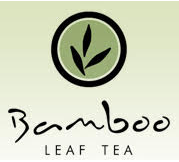 Tea “made from 100% bamboo leaves grown and processed by hand in sunny Florida without the use of any chemicals. We grow our plants with the utmost care and attention to nutritional value and sustainable agriculture.” Bamboo leaf tea has a wonderful sweet, green flavor and is rich in antioxidants, soluble fiber, and silica.
Tea “made from 100% bamboo leaves grown and processed by hand in sunny Florida without the use of any chemicals. We grow our plants with the utmost care and attention to nutritional value and sustainable agriculture.” Bamboo leaf tea has a wonderful sweet, green flavor and is rich in antioxidants, soluble fiber, and silica.
Abigail’s Studio
Abigail makes candles out of beeswax—“A renewable resource,” she says, “As long as there are bees around us.” And so her mission is to save the bees. “How does burning beeswax candles have anything do with restoring bee populations all over the world? Well, if all the people who love burning candles switched to burning beeswax candles the demand for beeswax would dramatically increase. Wax would not be just a byproduct of honey production, but a major source of income for bee keepers. This economic benefit would stimulate the need for bees, which are the only natural source of wax. Beeswax candles are made from a natural renewable and sustainable resource that supports the cultivation of the honey bee.” Makes sense to me.
Bannor Toys
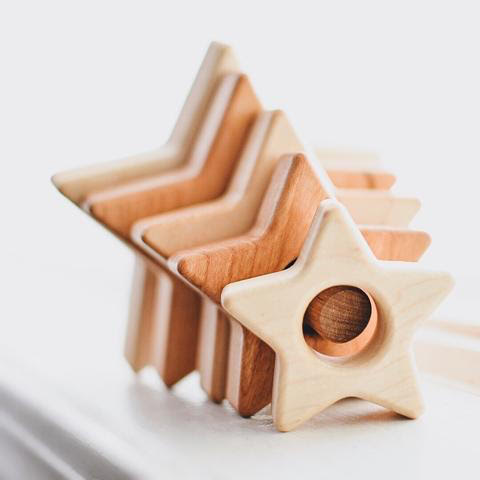 Charming wooden toys, with no toxic anything, handcrafted completely in the USA. “Our wood is natural, we do not stain it. We use Maple, Cherry, and Walnut woods and their natural colors. Our finish is an organic beeswax and flaxseed oil mixture that is all natural and nontoxic so it is the perfect finish for baby’s mouth. The oil brings out the color and the beeswax provides durability. Our glue and paint are organic as well made from a company in the United States. They are 100% safe, lead free, no VOC’s, and non-toxic. Our teethers are left “naked”, there is no finish on them.”
Charming wooden toys, with no toxic anything, handcrafted completely in the USA. “Our wood is natural, we do not stain it. We use Maple, Cherry, and Walnut woods and their natural colors. Our finish is an organic beeswax and flaxseed oil mixture that is all natural and nontoxic so it is the perfect finish for baby’s mouth. The oil brings out the color and the beeswax provides durability. Our glue and paint are organic as well made from a company in the United States. They are 100% safe, lead free, no VOC’s, and non-toxic. Our teethers are left “naked”, there is no finish on them.”
Fisher Blacksmithing
Hand forged garden tools, handcrafted in Montana. “Each tool is built using traditional blacksmithing tools and techniques and the result is an heirloom-quality garden tool that you won’t want to take your hands off of!” They are beautiful too.
Willful
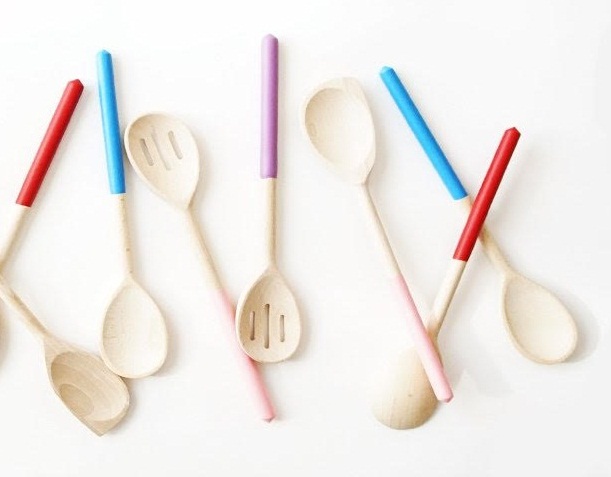 Extraordinary wooden bowls, plates, cutting boards, utensils and more, with unique, colorful, stylish design details. “All of our wood comes from the USA and is either FSC certified or salvaged locally from naturally felled trees.” They also use a food-safe synthetic silicone rubber.
Extraordinary wooden bowls, plates, cutting boards, utensils and more, with unique, colorful, stylish design details. “All of our wood comes from the USA and is either FSC certified or salvaged locally from naturally felled trees.” They also use a food-safe synthetic silicone rubber.
Flannel and Floral
 Amazing wooden spoons and kitchen ware with designs like I’ve never seen before. Unusual woods sealed with food-safe tung oil and beeswax.
Amazing wooden spoons and kitchen ware with designs like I’ve never seen before. Unusual woods sealed with food-safe tung oil and beeswax.
New Directions Aromatics
The leading international wholesale supplier of natural and organic raw materials and essential oils for making bodycare products. They have every ingredient you could possibly want. But they are oriented to manufacturers, so what you get here is materials, not bottles and recipes and other things you find on consumer-oriented sites. You can order from them with $100 minimum order. And there are minimum amounts as well.
Playmat for kids – toxic?
Question from Martina
Hi Debra,
Thanks for your work – I’ve been reading your newsletter/website for a long time and appreciate the research you do.
I have a young child at home and am trying to find a non-toxic play mat for him where he can play and learn to crawl (so I’d prefer a mat that isn’t slippery). After spending a lot of time researching this, I’ve run across this mat:
Dwinguler My Town Large Kid’s Playmat.
In reading the comments, it seems like the mat is 45% PVC and 55% plasticizer. What are your thoughts on this? Is it safe for a young child to spend a lot of time on?
Debra’s Answer
NO NO NO NO NO. It’s NOT safe.
I was just researching this yesterday.
What “45% PVC and 55% plasticizer” means is it’s 45% vinyl chloride monomer (VCM) which causes cancer, and 55% phthalates, which are endocrine disruptors.
Do not use this mat.
I recommend instead SoftTiles, which I looked into thoroughly and even ordered samples. They are made from EVA, which is much less toxic, and were tested to be free of formaldehyde, BPA, and phthalates.
And here are many EVA floor tiles and play mats online.
SOL Organics
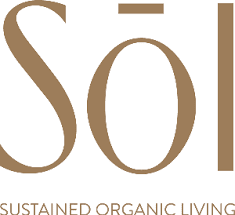 Affordable luxury bed sheets and pillow cases made from GOTS certified organic cotton. “Beautifully ultra soft organic cotton made with fine long staple yarns in a luxurious and comforting sateen weave…Uncompromising luxury is about quality, comfort, honesty, transparency & affordability, clean & safe work conditions, fair trade wages & a fair price for you, are part of the Sol Equation.” Pure white, ivory and blue.
Affordable luxury bed sheets and pillow cases made from GOTS certified organic cotton. “Beautifully ultra soft organic cotton made with fine long staple yarns in a luxurious and comforting sateen weave…Uncompromising luxury is about quality, comfort, honesty, transparency & affordability, clean & safe work conditions, fair trade wages & a fair price for you, are part of the Sol Equation.” Pure white, ivory and blue.
Boll & Branch
 GOTS certified luxury organic cotton sheet sets “made with love, care and total transparency.” Also pillowcases, duvet covers, and shams, with decorative touches including simple trim, hand embroidery, and bands. Available colors are white, beige and light and dark grey, and light and dark blue. Also nath towels, throws, crib sheets and blankets.
GOTS certified luxury organic cotton sheet sets “made with love, care and total transparency.” Also pillowcases, duvet covers, and shams, with decorative touches including simple trim, hand embroidery, and bands. Available colors are white, beige and light and dark grey, and light and dark blue. Also nath towels, throws, crib sheets and blankets.
Wandering Goat Handcrafted Goat Milk Soap
“We are a mother-daughter team producing hand made goat milk soap on our family farm in Union, Maine. We use fresh milk from our own herd of goats and blend it with organic oils, herbs and spices. Our soaps are scented only with pure essential oils and contain absolutely no chemicals or fragrances. The bars are cut by hand and cured five weeks to produce a long lasting soap. We are passionate about our goats and really enjoy creating amazing products with their help and the best that nature has to offer. “ Their scents go beyond floral to include spices and woodsy. Also unscented.
Organic Designs
Organic toddler/preschool nap mats, made by a parent-owned company in New Hampshire. They also make a toddler comforter that doubles as a playmat, and toddler pillows. “We Make Modern, Stylish, Durable yet Super Comfy Organic Children’s Nap Mats from Certified Organic Cotton Fabric and Certified Organic Cotton Batting. Our Organic Nap Mats are Ideal for Toddlers, Daycare, Preschool and Rest Time at Kindergarten. They Can Also Be Used for Vacations and Sleep overs. There are NO Harmful Chemicals or Pesticides in Our Products. We DO NOT use Polyester, Toxic Dyes or Chemical Washes of any kind. Our Organic Nap Mats are Safe, Eco Friendly and Non-Toxic.”
Are You Eating Too Much Mercury?
EWG enrolled in a study 254 women who eat at least two meals of seafood, fish or shellfish every week. They measured the amount of mercury in their hair to assess how much mercury was in their bodies.
They found that almost 30 percent of their participants had too much mercury exposure according to Environmental Protection Agency guidelines for pregnant women.
If you want to eat seafood (I don’t eat it at all myself), EWG will make a personalized seafood list for you that gives you the benefits of eating seafood with the least amount of mercury.
GMO Labeling Coming to a Store Near You
While the federal government has been struggling with requiring the labeling of GMO ingredients on food products, the small state of Vermont has quietly passed a law that requires GMO labeling as of 1 July 2016.
And the result is that company after company—Campbell’s Soup, General Mills, Mars, Kelloggs, and more—have announced they will label GMOs in their products.
Just as manufacturers have removed toxic chemicals from products sold nationwide to comply with California law, so too are companies complying nationally with a Vermont law.
Every change needs to start somewhere. Yay Vermont!
Now let’s get the toxic chemicals on the label.
THE WASHINGTON POST: Tiny Vermont brings food industry to its knees on GMO labels
Study Confirms Benefits of Reducing the Amount of Chemicals you put on your Body
Many personal care products contain chemicals that disrupt the endocrine system, including phthalates, parabens, triclosan and oxybenzone.
A new study done on 100 Latina teens showed significant drops in levels of these chemicals in the body after teens stopped using the products for only three days.
Metabolites of diethyl phthalate, commonly used in fragrances, decreased 27 percent by the end of the trial period. Methyl and propyl parabens, used as preservatives in cosmetics, dropped 44 and 45 percent respectively. Both triclosan, found in antibacterial soaps and some brands of toothpaste, and benzophenone-3 (BP-3), found in some sunscreens under the name oxybenzone, fell 36 percent.
ENN: Study confirms benefits of reducing the amount of chemicals you put on your body
Can I Remove Glyphosate in my Garden?
Question from TA
Hi Debra,
Recently a yard worker sprayed something for weeds on my back patio. It turns out it was Round-up.
Any suggestions for mitigating damage, or is it just “what’s done is done”? It was a couple of weeks ago, so I suspect there’s really nothing to do about it now.
Debra’s Answer
Whenever any type of herbicide or pesticide is sprayed, the first thing to do is look up the “half-life,” which is the time required for half of the compound to dissipate or degrade.
Monsanto says the half-life of glyphosate varies, depending on conditions, which is true, ranging from as short as 2 days up to 141 days, with an average half-life of 32 days.
More interesting is the Environmental Fate of Glyphosate, published by the California Department of Pesticide Regulation. It describes how glyphosate can float through the air and damage plants outside of the zone where it was applied and is easily absorbed by soil.
In the soil environment, glyphosate is “resistant to chemical degradation, is stable to sunlight, is relatively nonleachables, and has a low tendency to runoff.” Yikes. It’s going to stay there a while.
I’ve had success in the past calling pesticide manufacturers and asking for the “cleanup” chemical that breaks down the pesticide. There might be one you can clean up with.
Are there nontoxic products for “No sew”?
Question from Tara
Hi Debra,
Do you know of a safe “no sew” option for fabrics. They make the no-sew fusing strips, but I don’t think they’re particularly non-toxic, though they would be convenient and work well. But perhaps there is a safe one I don’t know about? And there are fabric glues…but same question: are they non-toxic?
Debra’s Answer
I haven’t sewn in years. I’m looking online and see a lot of products for this purpose, but no ingredients.
If anyone uses these products, could you offer some advice?
If anyone wants to submit some specific products, and call the manufacturer to find out what the adhesive and materials are, I can help determine if they are toxic or not.
Treated Furniture from India
Question from Catherine Triplett
Hi Debra,
I first want to thank you for your resource over the years.
About fifteen years ago my parents returned from living in India, and with them came furniture they used when they were there, and they had given me a few items as well.
After my mom passed away my dad told me that a wicker dresser he had in his home (finished basement) had been treated for woodworms while living in India. His housekeeper bought some very strong smelling liquid in a medal can and applied it with a brush and then had to wash it down. My dad said the smell was so strong they had to keep it outside for a few days. I always felt there was a strange smell in his basement, and I am sure that is what it is.
My dad recently passed away and I was given a few old plates from the wall in his home, antique books, and framed artwork (print I think) as well as a very old dresser from the 1800’s.
I am not sure if the toxic dresser housed in his basement could have somehow affected these other pieces as they were probably moved together at some point when they purchased a new home shortly after returning from oversees. I have removed the items I know for a fact were in his flat in Madras, but I am not sure if I should have the other items are safe to display in my home.
I know this sounds complicated, but it is not easy to toss items that were in my parents home as easily as other items, but on the flip side, I have children and I want a safe home.
Debra’s Answer
It’s impossible for me to know what your father’s housekeeper used decades ago in another country, But from your description it sounds like some toxic substance. I don’t know anything about regulations in India, but it’s possible that a toxic substance banned here may be used there. I just don’t have the information.
If it were me, if there were any doubt, I would not have the items in my house if there were any question. I know it’s difficult to make this decision, but better safe than sorry, particularly when there is missing information.
Where Can I Buy “Uncontaminated” Paper Products
Question from Mary
Hi Debra,
Have you figured out a secret to getting paper products- paper towels, tp, kleenex-type stuff- scent-free?
My assistant just got paper towels at Von’s and they smell awful- probably a detergent odor.
I’ll try setting them on my balcony and see if they air out. One sniff, and the odor stays in my nose and I can’t get rid of it.
Some stores are better than others, though I’m not sure any are 100% reliable.
Debra’s Answer
I buy mine at Costco and it’s never a problem. The paper products aren’t anywhere near the detergents and cleaning products.
Readers, suggestions?
Naturepedic
 Certified organic luxury mattresses for adults, made by the same trusted family business that makes certified organic mattresses for babies and kids. Four models allow you to choose certified organic latex, wool, or cotton for padding over an organic encased coil innerspring. These are the same super-comfortable innersprings used in high-end mattresses, with the added benefit of Naturepedic’s certified organic fabrics and fibers, and non-toxic accessories. Quilted certified organic cotton fabrics are used for covers for all models. Not only are all the materials and components individually certified organic, the mattress as a whole is certified organic per the Global Organic Textile Standard (GOTS).
Certified organic luxury mattresses for adults, made by the same trusted family business that makes certified organic mattresses for babies and kids. Four models allow you to choose certified organic latex, wool, or cotton for padding over an organic encased coil innerspring. These are the same super-comfortable innersprings used in high-end mattresses, with the added benefit of Naturepedic’s certified organic fabrics and fibers, and non-toxic accessories. Quilted certified organic cotton fabrics are used for covers for all models. Not only are all the materials and components individually certified organic, the mattress as a whole is certified organic per the Global Organic Textile Standard (GOTS).
How to Get Information About Products
I want to post this story for two reasons.
One is to give you a glimpse of how I get whatever information there is about products and the other is to show how inadequate information is about products.
A woman contacted me today for a consultation regarding choosing a sofa for her teen’s bedroom.
She wrote to me:
Hi Debra,
I’ve noticed both Pottery BarnTeen and Ikea no longer treat the foam in their sofas with flame retardent chemicals.
Pottery Barn Teen also informed me that the fabrics are not treated with any chemicals and the sofas are not treated with any chemicals.
When looking for a more cost effective alternative to custom furniture is this a good option and is it safe?
Thank you! Look forward to your feedback!
I took a look at the Pottery Barn Teen website and didn’t see any information on materials at all.
I offered to call Pottery Barn Teen for her and she accepted. She said, “That would be great if you could call them. They usually don’t have the answers though.” I thought I could get some answers.
She told me the specific sofa she wanted and I called.
I called Customer Service and asked about the fabrics.
First I asked about the fiber. I asked if there were any natural fibers. All were synthetic except for one, a 100% cotton denim.
Then I asked about the finishes on the fabric. She put me on hold to connect me to the furniture department, which has a different database than customer service.
And here’s what I found out.
- All the fabrics are synthetic except the washed denim, which is 100% cotton.
- The woman in the furniture department also said “There are no chemicals on the fabric.”
- BUT the fabric DOES have a Scotchguard finish on it. (Hmmmm. They don’t understand Scothguard IS a finish that emits the toxic chemical formaldehyde.)
- The inside of the cushions are polyurethane foam WITH FIRE RETARDANT. No FR on the fabric, but it is on the foam.
- No info on wood or finishes.
I couldn’t recommend this product. Incomplete information. But what I could find out was enough for me to reject it as toxic.
My client said, “Wow. That’s unbelievable. Company touts that no fire retardants on foam. Scotch guard not good either.”
Exactly.
It took about half an hour to get this information.
I’m not picking on Pottery Barn here. This morning I called West Elm about a finish on a bed frame another reader asked about and I couldn’t find out if the finish was water-based or oil-based. There is a BIG difference between the two in terms of outgassing toxic chemicals and the length of time they continue to outgas.
These companies and others need to give us sufficient information to evaluate the toxicity of their products.
Please note it’s been my experience that I have no problem getting all the information I want from businesses that are making toxic-free products. They know their materials and are proud of them.
Infinity Jars
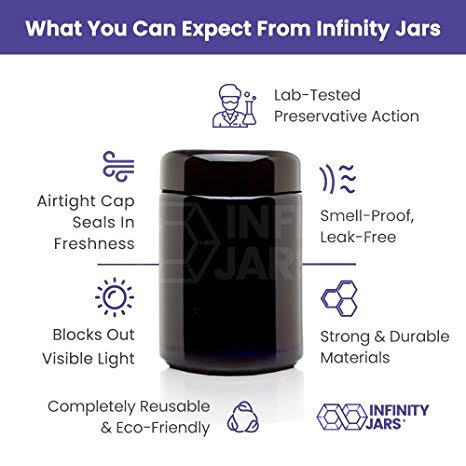 The largest collection of unique styles of ultraviolet glass jars that preserve the freshness of foods, herbs, and other organic materials. “We guarantee you can leverage the incredible power of these jars to maintain the optimum freshness of nearly any foodstuff, dried good, lotion, or essential oil.”
The largest collection of unique styles of ultraviolet glass jars that preserve the freshness of foods, herbs, and other organic materials. “We guarantee you can leverage the incredible power of these jars to maintain the optimum freshness of nearly any foodstuff, dried good, lotion, or essential oil.”
Bubble and Bee
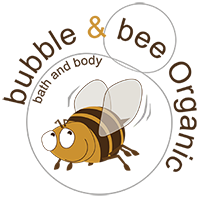 Certified organic personal care products made by a certified organic processor of personal care products. Choose from organic deodorant, facial care, toothpaste, lotions, soaps, lip balms, insect repellent, hair care, scrubs, and more, all available in a delightful assortment of fragrances and flavors using organic and natural essential oils. Their goal goes beyond selling products to informing others about the importance of staying away from the dangerous chemicals “in our world of fancy products with entrancing colors and fragrances.” ITo inform people of the hazards of Chemicals in Personal Care Products, their Chemical of the Day Blog gives accurate and concise information regarding cosmetic chemicals. They believe that organic products shouldn’t be just for those who can afford them, but for everyone who wants to live in a safer, more natural world, so they strive to offer reasonable prices and approachable products. At Bubble and Bee Organic, they say “We Make Organic Fun!”
Certified organic personal care products made by a certified organic processor of personal care products. Choose from organic deodorant, facial care, toothpaste, lotions, soaps, lip balms, insect repellent, hair care, scrubs, and more, all available in a delightful assortment of fragrances and flavors using organic and natural essential oils. Their goal goes beyond selling products to informing others about the importance of staying away from the dangerous chemicals “in our world of fancy products with entrancing colors and fragrances.” ITo inform people of the hazards of Chemicals in Personal Care Products, their Chemical of the Day Blog gives accurate and concise information regarding cosmetic chemicals. They believe that organic products shouldn’t be just for those who can afford them, but for everyone who wants to live in a safer, more natural world, so they strive to offer reasonable prices and approachable products. At Bubble and Bee Organic, they say “We Make Organic Fun!”
Is the Honest Company Actually Dishonest?
This past week Jessica Alba’s Honest Company has been in the news, after the Wall Street Journal tested their laundry detergent and found sodium lauryl sulfate (SLS).
This wouldn’t be so bad (Seventh Generation laundry detergent contains SLS), except for the fact that Alba specifically said that SLS was toxic and her products did not contain the ingredient.
Honest Company says there is no SLS in their product, yet the Wall Street Journal says there is.
People have been quick to assume that the company is being dishonest on one test from one source.
Sounds to me like there needs to be some random sampling done of bottles of detergent off store shelves, by an independent third party testing organization.
I just want to add that I’ve not ever recommended the Honest Company because there are less toxic products than theirs available. I took a new look at their ingredients this morning and their personal care products, for example,, contain many industrialized ingredients. Compare this to other companies that are offering products made from “whole” organic ingredients. And one step further, this morning I just added a new page for companies making body care products where the business is certified as an organic processor of organic ingredients.
Dish Drying Rack at Ikea
Question from TA
Hi Debra,
I just came across this dish drying rack on Ikea’s website. www.ikea.com/us/en/catalog/products/80213173. It comes in this darker color and in a silver color that is listed as nickel plated with clear lacquer. That seems more likely to be potentially toxic (what is the lacquer, etc), so I’m just looking at the darker colored one. The product description says “Steel, galvanized” — but this seems to pertain to the water-catching tray rather than the wire rack.
I clicked over to this related product, and it identifies the black wire part as steel with powder coating and the “shelf” (I’d call it a tray) as galvanized steel. That seems more accurate and appears to be the same as the dish rack. www.ikea.com/us/en/catalog/products/10238148
Would you consider this powder-coated steel rack and galvanized tray to be safe?
On a side note, I also noticed on Ikea’s site that they have been in the process of using “more sustainable” cotton in their products. Not organic, but grown in ways that use less water, less chemical fertilizer, less pesticide. It seems like a good step, especially for those of us who can’t get organic everything. www.ikea.com/ms/en_US/this-is-ikea/people-and-planet/energy-and-resources/index.html#cotton
Debra’s Answer
Powder-coated steel and galvanized steel are both materials I consider to be safe for their intended uses. Neither outgas toxic vapors into the air and they wouldn’t leave toxic residues on dishes. I wouldn’t eat it however, and it’s probably not designed for continuous skin contact.
That’s great that IKEA is moving in the direction of more sustainable cotton. Every step toward reducing toxics helps!
Glyphosate in Sugar Cane Paper?
Question from Mary
Hi Debra,
There is paper made from sugar cane, but isn’t sugar cane one of the crops grown from GMO and so wouldn’t the paper have residues of glyphosphate?
Debra’s Answer
I love sugar cane paper and was just about to buy some.
“GMO sugar can exists but is not widely used.” www.theorganicprepper.ca/sweet-life-how-to-source-non-gmo-sugar-for-your-pantry-11282012
So while I can’t say there is no glyphosate contamination from the environment, it isn’t routinely used on sugar cane crops.
Facts For Fighting Dryer Sheets
Here are some references about the toxic dangers from dryer sheets. Please add a comment with any others you know about.
THE HEALTH WYZE REPORT: The Toxicity of Dryer Sheets, Fabric Softeners, and Laundry Detergents
Are There Heavy Metals in Your Garden?
Heavy metals have been detected at high levels in Portland residential neighborhoods, around two glass factories.
Environmental authorities are recommending that citizens should avoid eating produce grown within a half=mile of the highest mapped metal concentrations until further notice.
Home gardeners nationwide are now asking questions about heavy metals in garden soil.
Read more about heavy metals in garden soil and if you need to test your soil…
CIVIL EATS: What Portland’s Soil Crisis Can Teach Us About Heavy Metals in the Garden
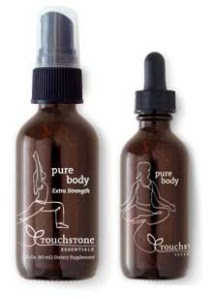 While your soil may be just fine, it also may be contaminated with heavy metals. If so, your, your body may have built up a store of lead and possibly other unknown heavy metals that could be affecting your health.
While your soil may be just fine, it also may be contaminated with heavy metals. If so, your, your body may have built up a store of lead and possibly other unknown heavy metals that could be affecting your health.
Once heavy metals enter your body, it is very difficult for your body to remove them.
That’s why I take PureBody Liquid Zeolite every day. This natural mineral is uniquely suited to remove heavy metals. Tiny bits of negatively-charged zeolite act like little magnets to attract positively-charged particles—which include 99.9% of heavy metals, radiation, and organic chemicals–so they can be removed from your body via your kidneys. It’s simple, effective, and affordable.
Another Reason To Have A Water Filter
We know about chorine and fluoride and heavy metals in tap water, but does your water have 1,2,3 Trichloropropane (1,2,3TCP)?
After all the news about water problems in Flint, Michigan, a reporter decided to actually read the “consumer confidence report” for her drinking water. And she found this footnote in tiny print:

And it’s not just her local community in Fresno, California. 1,2,3-TCP has been found in about a hundred public water systems in California.
But neither the state nor the federal EPA regulates 1,2,3-TCP in drinking water. So public utilities don’t have to test for it, filter it out, or advise their customers if it’s in the water.
Again, my best recommendation is to filter your drinking and bathing water at home, using a filter that removes a broad spectrum of pollutants.
KQED: There’s a Concer-Causing Chemical in My Drinking Water, But California Isn’t Regulating It
 If you are drinking tap water, it’s likely that it contains chlorine or chloramines, fluoride, heavy metals, perhaps radiation, and unknown contaminants of various sorts.
If you are drinking tap water, it’s likely that it contains chlorine or chloramines, fluoride, heavy metals, perhaps radiation, and unknown contaminants of various sorts.
Your best protection is to get a water filter that removes a broad spectrum of known pollutants and unknown contaminants.
The water filter I use in my own home is made by Pure Effect. It’s state of the art filtration removes just about everything that might be in your water that you don’t want to put in your body.
Learn more about Pure Effect water filters here…
Cangshan Knives
Question from Michelle Bishop
Hi Debra,
I just ordered a Cangshan N series (hollow center in handle, solid metal knife) from Amazon. All the reviews are good but they’re from Aug 2015 and forward so it seems these knives are not long-established. They got an NSF certification (I verified on the website) but I wanted your thoughts on the metal and its safety.
Debra’s Answer
The material is simply stainless steel.
I usually don’t recommend stainless steel, because heavy metals can leach from it. However, leaching requires contact time, and there is very little contact time with a knife.
I myself use knives with stainless steel blades and I am not concerned about this.
Lead in Glass
Update February, 2020: Is There Lead in Glassware? read more…
Next Desk
Modern ergonomic standing desks, intentionally designed to eliminate toxic materials. All desks are made with solid bamboo or rubber wood, recycled aluminum, and a durable, nontoxic powder coat. And you get to design it yourself.
Northlore
“Northlore specializes in botanical body care products handmade in small batches from wildcrafted, homegrown, and organic ingredients. The botanical ingredients in our products are carefully selected for their cosmetic and medicinal properties and wildcrafted from the prairie wilderness and our homegrown herb gardens. Our products are made with a nod to the lore of this Northern land, using traditional methods and natural, true scents that recall aspen bluffs, coniferous forests, and meadows filled with sagebrush. These are wildcrafted goods for wild, Northern souls.”
Dragonfly Effect Naturals
The best toothbrush I’ve found! The Sustainabrush is made from 100% sustainably-sources organic mosa bamboo (the kind pandas do not eat). Even the bristles are made of bamboo. I have one and it is just like brushing with a regular toothbrush, but it feels better in your mouth and there are no plastics. Bristles come in colors, or the natural ivory color. They also make a Detoxi Toothpaste that bond with heavy metals and radiation. No fluoride and safe to swallow. Made from Bentonite Clay, Diatomaceous Earth, Baking Soda, Certified Organic Flavor Oil, Non-GMO Xylitol,and Sea Salt.
Henne Organics
Possibly the most luxurious lip gloss I’ve ever seen. Great presentation of ingredients, that are sure to make your lips soft. USDA Certified Organic ingredients. Certified Organic Handler.
Light Stone Organic Soap
Hand-crafted organic soaps, creams, and perfumes made with the best organic or wild-crafted pure essential oils for scent and certified organic oils. Soaps are made with the cold-press method that retains the natural glycerin. “Light Stone was created 21 years ago after a long and unproductive search for pure and natural skin care products. The products that I found either contained synthetic, harmful ingredients, or they were very poor in quality. So I began the on-going process of education, trial and error and long days of study about the process of soap making. Then came the study of the tremendous effects of essential oils (better known as aromatherapy) on the body and the mind. I think that we have combined our years of study, research and experimentation to create truly exceptional products. We have always used only the highest quality ingredients and we have always created our products with great consideration for the body, mind, spirit and the environment.”
Organicville
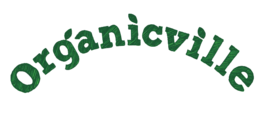 A great selection of condiments made from organic ingredients and natural sweeteners. Ketchup and mustard, chili sauce, BBQ sauce, salad dressings, pizza and pasta sauce, salsas, teriyaki sauce, and a whole collection of international flavor sauces, including organic sriracha, Korean BBQ sauce and other favorite flavors.
A great selection of condiments made from organic ingredients and natural sweeteners. Ketchup and mustard, chili sauce, BBQ sauce, salad dressings, pizza and pasta sauce, salsas, teriyaki sauce, and a whole collection of international flavor sauces, including organic sriracha, Korean BBQ sauce and other favorite flavors.
Brightlites
I found this fun hair color at a local street fair. All natural. Just rib it on strands of hair and wash it out with shampoo and water. It’s bold vivid rockstar colors for fun streaks, not hair color for your whole head. Every color and glitters. Made from Mica, Titanium Dioxide, Coconut Oil, Beeswax, Candelilla Wax, Lavender Essential Oil, Vitamin E.
PieBox
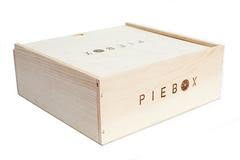 Simple, unfinished wood boxes, one designed to carry pies, one designed to carry cookies, and one designed to carry cupcakes. “Wherever you go, whatever you bake, PieBox will get you there.PieBox designs reusable wooden pastry carriers and accessories. Handcrafted with love in the wonderful USA.” I love these. It a great way to take your organic sweets to potlucks and parties and picnics.
Simple, unfinished wood boxes, one designed to carry pies, one designed to carry cookies, and one designed to carry cupcakes. “Wherever you go, whatever you bake, PieBox will get you there.PieBox designs reusable wooden pastry carriers and accessories. Handcrafted with love in the wonderful USA.” I love these. It a great way to take your organic sweets to potlucks and parties and picnics.
Nikki’s Coconut Butter
 Organic coconut butter with tasty flavors and natural sweeteners.
Organic coconut butter with tasty flavors and natural sweeteners.
Hudson River Contaminated with Uncontrollable Radioactive Flow
“For more than a decade, it has been impossible for operators of the Indian Point nuclear power plant to stop highly radioactive reactor and spent fuel pool coolant from leaking into the groundwater and migrating to the Hudson River.
“And despite assurances from Entergy that this time will be different, there is no indication that the company has developed the ability to prevent the latest uncontrolled leaks from following the underground waterway into the Hudson. And because the river is a tidal estuary flowing as much as 20 miles above and below the nuclear site, radioactive contaminants may be sucked into the drinking water systems of several river towns.”
HUFFINGTON POST: Indian Point Contaminates the Hudson River With Uncontrollable Radioactive Flow
This is just another example of unknown water contaminants that might be in your drinking water. Contamination occurs long before it is detected.
 If you are drinking tap water, it’s likely that it contains chlorine or chloramines, fluoride, heavy metals, perhaps radiation, and unknown contaminants of various sorts.
If you are drinking tap water, it’s likely that it contains chlorine or chloramines, fluoride, heavy metals, perhaps radiation, and unknown contaminants of various sorts.
Your best protection is to get a water filter that removes a broad spectrum of known pollutants and unknown contaminants.
The water filter I use in my own home is made by Pure Effect. It’s state of the art filtration removes just about everything that might be in your water that you don’t want to put in your body.
Learn more about Pure Effect water filters here…
Glyphosate Detox: How to Remove Roundup From Your Body
More and more in the past few weeks stories are coming out about glyphosate contamination in one product after another.
In October 2015, I wrote a post on my Toxic Free Body blog called “Glyphosate Detox: How to Remove Roundup From Your Body.” Since that blog is no longer available, I want to repost portions of it here, in light of recent events.
We can’t avoid glyphosate by only avoiding GMO’s—it’s now found in organic grains and who knows where else. We only know it’s in organic grains because grains have been tested. Glyphosate is applied by aerial spraying. It can drift to organic produce just as easily as organic grains. It may be more widespread than we know.
The way to survive all this exposure to toxic chemicals is to assist your body’s detox system, which is very overloaded. The two approaches are to 1) support your detox organs (liver/intesties and kidneys in particular, or to do things that remove toxics directly, such as taking liquid zeolite or spend time in a sauna.
The difficulty in choosing a detox for a particular substance is that you need to pick a detox that matches the characteristics the the toxic substance you are wanting to remove.
I searched on “glyphosate detox” and found a number of posts that were just way off track.
So I thought I would give my viewpoint on this.
First, glyphosate is accumulating in our bodies.
A Friends of the Earth Europe study done in 2013 tested urine samples from people in 18 countries for glyphosate. The results showed that traces of the chemical were found in samples from all countries, with 44 per cent of samples found to contain glyphosate on average.
Then a 2014 study showed glyphosate levels in mother’s breast milk 700 times higher than the maximum contaminant level (MCL) set for glyphosate by EPA.
However, the safe limit set by EPA was based on biotech theory that glyphosate would not bio-accumulate in human’s tissue. Yet clearly it does when actually measured.
Friends of the Earth Europe says, “Glyphosate (N-(phosphonomethyl)glycine) is a systemic, broad-spectrum herbicide, that works by blocking an enzyme used to make protein in plants. This means it is toxic to any plant that has not been genetically modified to resist it.”
Hmmm. What about humans who have not been genetically modified to resist it?
The only method of detox I know of that will remove herbicides is sauna. Your body will sweat it out.
I’ve also seen some evidence that probiotics will help restore your gut microbiome that gets destroyed by glyphosate. That makes sense to me.
You can get a glyphosate urine test at The Detox Project.
100% of German Beers Tested Contaminated with Glyphosate
Tests done by the Munich Environmental Institute (Umweltinstitut München) found glyphosate in ALL of the 14 beers tested.
The German Brewers’ Association admitted that low residues of the probable human carcinogen glyphosate could not be prevented, because “the herbicide is now found virtually everywhere after decades of use in agriculture.”
SUSTAINABLE PULSE: German Beer Industry in Shock over Glyphosate Contamination
Barefoot Shoes
Question from Deanna McFarlain
Hi Debra,
Like many of your readers I have been searching for non toxic shoes for years. Finding a shoe that is both healthy for our feet and non toxic is quite a challenge.
Recently I have been on the hunt for barefoot shoes & found a few promising brands. I plan on purchasing Camper barefoot shoes for school but am now looking for a summer sandal for my family.
One option is xeroshoes.com. I like the concept but want to be sure they are safe for my famiy. I emailed them about material of their soles xeroshoes.com/feeltrue. They replied that their “exclusive FeelTrue rubber is a synthetic rubber called SBR (styrene-butadiene rubber). We chose this rubber due to it’s durability, flexibility, and that there are no reported allergies or side-effects, which can not be said for the latex in natural rubber. We have thousands of customers who have worn our shoes for a number of years with no issues with this material.” I worry the shoe would be a problem with bare feet even if we kept them out of the sun.
Another is www.vivobarefoot.com/us. I called the company based out of London inquiring of the exact materials used in a few of their shoes in their children’s line. They said they would send the question over to the right department and email me but never did.
I was excited as it is affordable & outsole material is fine but concerned with the inside as my son will be wearing them without socks. I found materials listed here in this description www.6pm.com/vivobarefoot-kids-ultra-toddler-little-kid-black-white. I am concerned with the “Antibacterial microfiber lining”. And I looked up Dri-lex™ & found this info: www.faytex.com/technology.html looked www.dupont.com/products-and-services/fabrics-fibers-nonwovens/fibers/brands/dupont-sorona.html.
I’m sure many like-minded parents agree that its so hard to find a healthy barefoot or minimalist shoe that is also non toxic & isn’t close to 100$ like softstar shoes so I was hoping these would work. What do you think?
Thank you for your time! For many years your book and website have been such an inspiration & helpful resource for my family 🙂
Debra’s Answer
First I want to say that I have two pairs of Camper shoes and love them both. I bought them almost ten years ago. I can walk in them all day and still have happy feet.
Regarding Xero Shoes, SBR is a synthetic rubber. It’s one of the most toxic plastics to be manufactured and it’s also toxic to health (search on health effect SBR) and you get toxicity of rubber tires.
Regarding Vivo, I would be concerned about the antimicrobial lining.
The safest shoe I’ve seen is Po-Zu Shoes, which I have recently added to Debra’s List. Here’s what I wrote about them.
These amazing shoes are made from organic cotton, wool, coconut husks, natural latex, cork, and leather. “All our materials come from naturally renewable sources and are responsibly harvested. They contain no pesticides, bleaches or toxic dyes and are locally sourced wherever possible. We use organic cotton in our shoes and all our leather is chromium-free. You can read about our materials in more detail here.” Every shoe has a complete materials description (click on the “materials” tab on each product page). Great styles! This company is based in the UK. I don’t usually recommend websites out of the country, but I’ve never seen anything like these shoes! You can even have them custom-make shoes to your own design specifications.
They don’t make children’s shoes, but you might contact them and see what they can do for you.
Washing a Down Comforter
Question from Marleen
Hi Debra,
I read one of your books years ago and have tried to follow some of your suggestions.
I have an old goose down comforter. I would like to clean it thoroughly, including microorganisms that may be in it.
Dry cleaning was suggested to me. What is a natural way to clean it? It is a queen size.
Thanks.
Debra’s Answer
I used to have a down comforter and I just put it in my own washing machine and dryer.
How to Get Burnt Food Off the Stove Top, Unclog Drains, and Clean the Sink
Question Bonnie
Hi Debra,
What is the best way to get burnt on food off the stove top. In the past I used baking soda water paste and it removed some enamel in spots.
Also the bathroom sink is clogged with dove soap. A maintenance person said a long time back it clogs drains and use hot water behind it. I have found the soap does clog and I have had to use the gel drano only to unclog it. Tried baking soda vinegar then hot water after 20 minutes and it did not work.
A farmers almanac site said for grease to use baking soda, salt and possibly said leave overnight then rinse.
Also, the only thing to clean noticable residue dirt from the sink and bathtub I found is bon ami and the ajax types with bleach do a better job at stain removal.
I do not want to use these products. Bon ami is more natural but I inhale the powder that floats when I use it. Thank you.
Debra’s Answer
I just use Bon Ami for everything in the kitchen and bathroom. You might try hydrogen peroxide on the stains.
 To unclog the sink, I pour baking soda and then vinegar down the drain and it fizzes. I also have a little handheld plunger that I just love. After I put the baking soda and vinegar down the sink I just use this little plunger to make everything move around and the drain opens right up. This plunger was specifically designed for sinks. I have it right under my kitchen sink. I don’t have problems with the bathroom sink clogging, but if I did, I’d put another one right under the bathroom sink.
To unclog the sink, I pour baking soda and then vinegar down the drain and it fizzes. I also have a little handheld plunger that I just love. After I put the baking soda and vinegar down the sink I just use this little plunger to make everything move around and the drain opens right up. This plunger was specifically designed for sinks. I have it right under my kitchen sink. I don’t have problems with the bathroom sink clogging, but if I did, I’d put another one right under the bathroom sink.
NOTE: The black part is made from PVC, but I’ve not noticed any odor. It’s also the least toxic solution for opening drains, when compared to the toxic dangers of drain cleaners.
Wool and Cashmere Sweaters
Question from Stacey
Hi Debra,
I’ve seen some merino wool and cashmere sweaters that I would like to purchase. However, I wonder if these sweaters are safe, or do I have to worry about any kind of “finish” or treatment on such “natural” fiber sweaters?
Debra’s Answer
I’ve purchased many cashmere sweaters and I’ve never detected anything toxic. I would continue to wear them but it’s way too warm here in Florida, so they are packed away in case I go somewhere cold. I love cashmere. I haven’t purchased a new cashmere sweater in more than ten years.
Some things to note. Seventy percent of cashmere comes from China, the rest comes from Outer Mongolia, Iran and Afghanistan. The only processing is “scouring” (washing) the wool to remove the dirt, grease, and other impurities. Cashmere Fiber Production: The process from the goat to top quality yarns.
Cashmere and Camel Hair Manufacturing Institute website has some interesting information for consumers about choosing cashmere.
Merino wool comes from the Merino sheep. Their wool is considered to be some of the finest and softest wool of any sheep. Here’s a website that shows Fibre to Fashion: The Know How of creating apparel from Merino wool.
Organic Fast Food Restaurant to Open in Miami
Inspired by his son’s battle with Type 1 diabetes, NBA All-Star Ray Allen and his wife, Shannon, a cooking show host, are opening Grown, an organic fast food restaurant in Miami in March.
If you want to visit: 8211 S. Dixie Hwy, Miami, Florida
MIAMI HERALD: Ray Allen opening organic fast-food eatery
Our Santa Fe Salad with Organic greens, avocado, fresh corn and tomato salsa, grilled shrimp, and plantain strips makes the perfect lunch!
Is My Flooring Toxic?
Question from Michelle
Hi Debra,
I have purchased, but not installed, morning star bamboo flooring.
Now I’m reading that’s it’s possibly toxic, but cannot find any I formation on the product online. I was just wondering if you could direct me where to go to seek the info I need? I would like to know the formaldehyde levels in the product, what it was treated with and is there a safer product out there.
Thank you.
Debra’s Answer
First, you can usually get information on any product online. I jus searched on “Morning Star Bamboo Flooring” and immediately found their very informative website at www.morningstarbamboo.com.
This flooring is NOT possibly toxic. What you’ve been reading about regarding Lumber Liquidators is that their LAMINATE flooring releases higher levels of formaldehyde than previously thought. This is because laminate flooring is made from layers of wood glued together with a resin that releases formaldehyde.
Morning Star Bamboo Flooring is solid wood flooring. There is NO FORMALDEHYDE used in making it. You have nothing to be concerned about here.
The website says it has a baked-on aluminum oxide finish. This does not outgas into the air. It’s unknown whether skin absorption of aluminum is possible walking on the floor in bare feet. My experience with skin absorption is there usually needs to be some contact time, just walking across the floor with feet on the floor for a second at a time would probably not be enough. Right now I’m sitting at my desk with my feet on the floor for long periods. If you are concerned about this, you can wear socks, slippers, or shoes, or put small natural fiber carpets in areas where you might have longer contact time. Or if you have children playing on the floor, use a natural fiber area rug for them.
You flooring is fine. Go ahead and install it.
Skin Absorption of Aluminum from Aluminum Oxide Finish on Flooring?
Question from Sarah Padron
Hi Debra,
Hello, I was wondering if you know about the prefiniahed hardwood floors that have been treated with aluminum oxide. Can children, and adults, absorb the tixins through the skin? And would it be problematic?
Thanks.
Debra’s Answer
Here’s a relevant response from consultant Mary Cordaro, who is very knowledgeable in these matters.
It’s from Green Home Guides.
Aluminum oxide finishes can be fast-curing and healthy from a chemical outgassing standpoint, depending on a few variables. Unlike some water-based polyurethane finishes, which often contain chemicals called glycols that may “outgas” for several months (and may not be easily detected by odors), UV-cured aluminum oxide finishes, which are modified urethane finishes, are often well-tolerated even by chemically sensitive individuals. This is particularly true if the finish is baked-on and UV-cured, which is usually the case with prefinished wood floors.
But here’s where things get more complicated, unfortunately. Besides low chemical toxicity, there are some additional factors to consider regarding an aluminum oxide finish. First, from a healthy house standpoint, very little if anything is known about possible health effects from the aluminum content in aluminum oxide floor finishes.
In the past few years, there has been a growing, heightened awareness of the potential toxicity from nano-sized heavy metals in products that touch the skin. Although this concern has been directed primarily at personal products, it is worth considering for any product that touches the skin. One MD I know of, whose patients include chemically sensitive people, has been strongly advising against aluminum oxide finishes, due to the possibility of aluminum oxide absorption through the skin on bare feet.
Prompted by these concerns, a client with an autistic child requested that I look into one particular flooring product, called Bellawood, a brand that is well tolerated by many chemically sensitive people. Bellawood is a solid hardwood flooring product, prefinished with UV-cured, baked-on aluminum oxide urethane. Bellawood is coated multiple times and comes with a 50-year warranty on the finish. I spoke with a technical expert who works for the industrial finish manufacturer that makes the Bellawood finish. He reported to me that the aluminum oxide particles in the finish are much larger than nano-sized. In fact, we both agreed that theoretically, the aluminum oxide particles are probably much too large to penetrate bare skin.
I have not researched other aluminum oxide finishes in terms of the particle size, but it’s possible, given the similar characteristics of aluminum oxide finishes in general, that this may be true for other brands as well. However, as far as I know, there really is no real conclusive data on this issue, regarding possible toxicity from skin contact. So even if you have an aluminum oxide finish, if you want to be on the extra safe side, just wear socks and slippers indoors.
Affordable Nontoxic Carpet
Question from Richard
Hi Debra,
Thank’s for keeping up the great website.
I have a question about carpet. I’m planning on renting some space in a commercial building. The custom is to use carpeting in the hallways and office spaces. It’s understood that the area of the building under consideration needs and will get new carpet but myself and one other practitioner see people with MCS and suffer from it ourselves. Do you have some any rug manufacturers to recommend?
There is something called The Carpet and Rug Institute which has a certification program called CRI Green Label Plus that identifies low VOC products. Do you know much about the value of that certification? I am aware some programs don’t really raise the bar very high.
I know we could go to Green Building Supply for wool but we really can’t go quite that high end for this office rental situation.
Any suggestions you may have for carpeting that isn’t too pricey would be appreciated.
Debra’s Answer
You’re welcome!
I can’t recommend any of the carpets on the Carpet and Rug Institute list. I haven’t researched them recently or individually, but last time I looked there were none I wanted to look at in more detail. The problem with “low-emitting” standards is they are not “no-emitting.” My floors don’t emit anything.
I had your same situation many years ago where the only office available to rent in the small village where I lived had a very smelly carpet that I was not allowed to remove.
My solution was to use AFM Carpet Seal. IT COMPLETELY BLOCKED THE FUMES TO UNDETECTABLE. At least to my nose.
I worked in that office for a month every weekday, with no reactions. It was a life saver to have Carpet Seal.
That said, I would still get the least toxic carpet you can afford. I haven’t had carpets in my home for more than 30 years, but if I had no choice but to live or work somewhere with carpet, I would immediately order Carpet Seal.
Lumber Liquidators
On Monday, the Centers for Disease Control (CDC) announced that certain types of laminate flooring made by Lumber Liquidators have a greater risk of causing cancer or other health problems than previously thought.
I would just like to add two things.
One is that this is not all flooring made by Lumber Liquidators, only the laminate flooring.
And the other is this formaldehyde danger is not limited to Lumber Liquidator’s laminate flooring. It applies to ALL laminate flooring. I’ve been warning about this ever since laminate flooring first came out.
Please do not buy laminate flooring. Instead purchase solid wood refinished flooring, or unfinished solid wood flooring and apply your own least toxic finish.
CDC: Statement regarding Formaldehyde in Laminate Flooring Report
USA TODAY: Elevated cancer risk in Lumber Liquidators laminate flooring
NPR: CDC Says It Underestimated Cancer Risk From Lumber Liquidators Flooring
If you have purchased flooring from Lumber Liquidators, they are offering indoor air quality testing at no cost to qualifying customers. To see if you qualify, visit www.lumberliquidators.com/ll/testkit.
Hairprint
A hair color that restores gray hair to it’s natural color, rather than stripping color and then applying an artificial coal-tar dye. It’s odor-free, hypoallergenic, and you can eat it too! All ingredients are disclosed and explained. Their patented formula takes natural ingredients and creates eumelanin, the pigment that colors all brown and black hair. NOTE: You cannot choose your color. Your hair will take the eumelanin and each strond will be it’s own natural shade. This treatment also strengthens the hair and adds luster and shine. There is a special formula to be used to prevent hair from turning grey as well.
NutriGold
 A full line of dietary supplements that are organic, non-GMO, whole-food, food-sourced, fair-trade, sustainable, soy-free, gluten-free, kosher, and vegan, manufacturers to industry-defining quality standard without the premium price tag. Closest distance from source to shelf—sourced, processed, and manufacturers in the USA.
A full line of dietary supplements that are organic, non-GMO, whole-food, food-sourced, fair-trade, sustainable, soy-free, gluten-free, kosher, and vegan, manufacturers to industry-defining quality standard without the premium price tag. Closest distance from source to shelf—sourced, processed, and manufacturers in the USA.
Organic Pure Foods
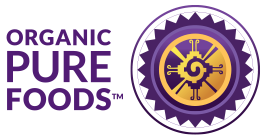 Premium raw organic chia seeds and oils,”carefully selected for purity and high nutritional content. We painstakingly evaluate and test hundreds of thousands of pounds of chia seeds, choosing only the best. We directly participate in the field to-table process of growing and bringing this premium seed to your family. All our chia seeds are carefully selected to insure the highest omega 3, protein, and fiber content. You will be able to taste and feel the difference.”
Premium raw organic chia seeds and oils,”carefully selected for purity and high nutritional content. We painstakingly evaluate and test hundreds of thousands of pounds of chia seeds, choosing only the best. We directly participate in the field to-table process of growing and bringing this premium seed to your family. All our chia seeds are carefully selected to insure the highest omega 3, protein, and fiber content. You will be able to taste and feel the difference.”
Pines Wheatgrass
 Highest quality wheatgrass grown with exceptional methods. Grown in PINES rich glacial soil on certified organic family farms that receive plenty of natural rainfall so that irrigation is not necessary. Computerized facilities produce green superfood powders using ambient temperatures to maintain the peak nutrition of fresh wheatgrass. All their green superfoods are packaged in dark glass bottles and special metal caps with oxygen removed to prevent loss of nutrition and color that occurs with other packaging. Owned by the same family since 1976.
Highest quality wheatgrass grown with exceptional methods. Grown in PINES rich glacial soil on certified organic family farms that receive plenty of natural rainfall so that irrigation is not necessary. Computerized facilities produce green superfood powders using ambient temperatures to maintain the peak nutrition of fresh wheatgrass. All their green superfoods are packaged in dark glass bottles and special metal caps with oxygen removed to prevent loss of nutrition and color that occurs with other packaging. Owned by the same family since 1976.
Närä Natural Tooth Cleansing Powder
This tooth powder was highly recommended to me by a reader I’ve known for many years. It’s basically salt and baking soda plus the dental benefits of xylitol, combined with herbs, spices, and citrus fruits.
Is Air Pollution Making You Fat?
A new study—appearing in the March issue of the Journal of the Federation of American Societies for Experimental Biology (FASEB) —found laboratory rats who breathed Beijing’s highly polluted air gained weight and experienced cardio-respiratory and metabolic dysfunctions after only three to eight weeks of exposure.
Compared to those exposed to filtered air, pregnant rats exposed to unfiltered Beijing air were significantly heavier at the end of pregnancy. At 8 wk old, the offspring prenatally and postnatally exposed to unfiltered air were significantly heavier than those exposed to filtered air. In both rat dams and their offspring, after continuous exposure to unfiltered air we observed pronounced histologic evidence for both perivascular and peribronchial inflammation in the lungs, increased tissue and systemic oxidative stress, dyslipidemia, and an enhanced proinflammatory status of epididymal fat.
The conclusion from the study: Chronic exposure to air pollution particles increases the risk of obesity and metabolic syndrome.
Now this was a study done on rats, however, I believe it holds true for humans as well. Many chemicals have already been associated with obesity. I haven’t yet checked, but it may be that many of them are found in air pollution.
Luggage
Question from Sally S
Hi Debra,
I have been all over the internet and dug through archives, but am having little results looking for luggage. It seems that even those touting ʻeco friendlyʻ are really a typical derailment of fact.
If it is made of recycled materials, I question what was in the previous encarnation. Nylon has been treated with chemicals. Handles made of ʻtprʻ? Some claim ʻecoʻ and yet state pvc dividers.
They stink! They cause hands to react, rashes and blisters, my husband has to wear gloves when traveling.
I need to replace my old bags and am in need of something for mobility, in other words I am no longer able to perform pack mule duties. I have seen abs, polycarbonate, polyester, nylon, and many with ʻCA Prop 65 warningʻ. (The top rated Travel Pro)
The leather bags come from China and everything is suspect. Buying used is just as risky, pesticides and cleaners or such.
Any guidance or suggestions will be greatly appreciated. Thank you.
Debra’s Answer
I totally understand, and this is not an easy question to answer.
Some years ago I was traveling a lot and my old suitcases were in tatters. I wanted to get the least toxic luggage I could find and I did.
It was made by a company called Sand & Storm . I just looked them up and they are still in business. They are very well made of cotton and leather (no odor) and are extremely durable. Not inexpensive, but I had some extra money at the time and decided to make an investment. I’m sure they will last for the rest of my life. They have already lasted 10 years and are like new.
They used to make luxury safari tents. Now they make safari-grade bags. In Kenya. From Tanzanian 18oz all-cotton canvas (very soft and lined with even softer cotton), hand-selected leather hides, and solid brass fittings. I have two duffle bags and an overnight bag. All with strong comfortable straps so I can toss them over my shoulder.
I found mine at Bloomingdale’s in New York and fell in love instantly. If you want this luggage, I think you’ll need to contact them in Kenya and see if they can ship it to you.
So now the best I can do is to recommend cotton duffle bags, such as those sold at Port Canvas.
Try searching on “cotton luggage,” “linen luggage, and “hemp luggage.”. There were a lot of results, such as this one from Pottery Barn.
 Trouble is that these companies are not dedicated to being nontoxic, so I don’t know what the finishes are, etc. Sometimes they are lined with nylon.
Trouble is that these companies are not dedicated to being nontoxic, so I don’t know what the finishes are, etc. Sometimes they are lined with nylon.
Now about the wheels, there ARE some cotton duffle bags with wheels such as this one at Orvis. Again, I don’t know how this might be contaminated, but the materials are pretty good. At least better than conventional luggage.
Bamboo Charcoal “Air Fresheners”
Question from Elizabeth
Hi Debra,
I have been reading a lot about Bamboo Charcoal “air fresheners” lately.
The products supposedly remove odors, moisture, viruses, VOCs,etc.
A 200 gram bag is supposed to be good for a 90 square foot area.
I am interested however I am not clear as to how a linen bag of charcoal is supposed to clean the air in a room just by placed in the room. I don’t see how the product would have the appropriate air circulation to meet it’s claims.
Do you have any experience or information on these products?
Debra’s Answer
I don’t have any experience with these products, however, there is just no way mechanically that a bag of any kind of charcoal can remove pollutants in the air anywhere close to what an air purifier can remove.
For real all filtration, see the Air Purifier page of Debra’s List.
Mouth Guard Material
Question from Janelle
Hi Debra,
My husband and I have recently become more concerned about all the plastic in our environment.
We are particularly concerned about the night guard that his dentist has him wear because he grinds his teeth at night. I’m wondering about the safety of the night guard.
I tried calling the office that they made it in, but they haven’t done any tests for leaching, he just assured me it was safe.
I did some research and it’s made from: Powder Component: Modified Ethyl Methacrylate Polymer Liquid Component: Modified Ethyl Methacrylate Monomer. Unfortunately, I haven’t been able to find information on if these substances are safe when mixed into plastic.
The company that makes the mouth guards is Astron and the material is called clearsplint.
Any help you can give me with this is much appreciated.
Thank you.
Debra’s Answer
It sounds to me like you mix the powder and liquid together to make the ClearSplint material. It isn’t added to plastic, it is the plastic.
The MSDS lists both of these materials as hazardous as well as ClearSplint itself.
What I don’t know is if they become less toxic when combined, or more toxic. Not enough data is available for this.
Regardless, it seems that ALL plastics leach to one degree or another. I wouldn’t let my child use this without having more evidence of safety than someone on the phone saying it’s safe.
Saffiano Leather Handbag
Question from Stacey
Hi Debra,
I am searching for a new leather handbag and wonder about the different leathers.
First, I wonder if a “quilted” leather bag contains a synthetic batting to make the quilted appearance.
I also discovered a type of leather called “saffiano leather” which is a textured leather with some sort of coating (not sure, but from what I have read, it is most often a wax). This saffiano leather is supposedly more durable, but I wonder if it is as safe to use as a regular leather.
Thanks so much!
Debra’s Answer
I think it’s highly likely that any padding used in an off-the-shelf handbag would be synthetic.
About the Saffiano leather…First, it’s leather, which has many toxic chemicals to begin with, and second a wax is added, probably paraffin. That’s just more petrochemicals.
Look on the Bags page of Debra’s List. I’ve been adding websites that use less toxic materials. Perhaps you can find something there.
The Sweet Farm
 Naturally fermented sauerkrauts made with nothing but organic (local when possible) vegetables, sea salt, and spices. “Our traditional fermentation methods produce fresh, crisp and tangy krauts that pair well with just about any meal. In addition to their great taste, our krauts are full of probiotics, beneficial bacteria that help nourish your digestive system.” If you don’t want to make your own, try these.
Naturally fermented sauerkrauts made with nothing but organic (local when possible) vegetables, sea salt, and spices. “Our traditional fermentation methods produce fresh, crisp and tangy krauts that pair well with just about any meal. In addition to their great taste, our krauts are full of probiotics, beneficial bacteria that help nourish your digestive system.” If you don’t want to make your own, try these.
Super Edibles
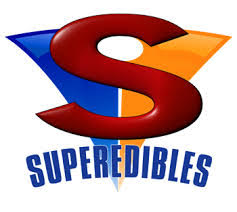 “Foods that have the best nutritional and aesthetic qualities:” nuts and seeds, dried fruits, herbs and spices, teas, cacao and coconut, powdered foods, and extracts and oils. “Superedibles sources the best quality foods from the most trustworthy suppliers we can find. We always choose quality over price. Our aim is to always provide products that are Raw, Organic and Kosher and have superior nutritional qualities. The products we provide are meant to facilitate your nutrition and wellness. We source the finest products for the best possible value. ”
“Foods that have the best nutritional and aesthetic qualities:” nuts and seeds, dried fruits, herbs and spices, teas, cacao and coconut, powdered foods, and extracts and oils. “Superedibles sources the best quality foods from the most trustworthy suppliers we can find. We always choose quality over price. Our aim is to always provide products that are Raw, Organic and Kosher and have superior nutritional qualities. The products we provide are meant to facilitate your nutrition and wellness. We source the finest products for the best possible value. ”
Berry Good Organics
Kits to make organic elderberry syrup, an all-natural traditional remedy proven to work. “Contrary to other elderberry kits, mine are infused with all natural, organic ingredients that enhance its function. With added bonuses such as Organic ginger root, Organic clove, Organic goji berries, Organic turmeric powder, Organic cinnamon, and Organic star anis, mixed with the infamous dried elderberries, you will enjoy a flu free season. My kits are easy to prepare, and are effective for children and adults of all ages. I am proud to offer an organic and powerful alternative medicine that should be a staple in every household.”
Livliga Dinnerware
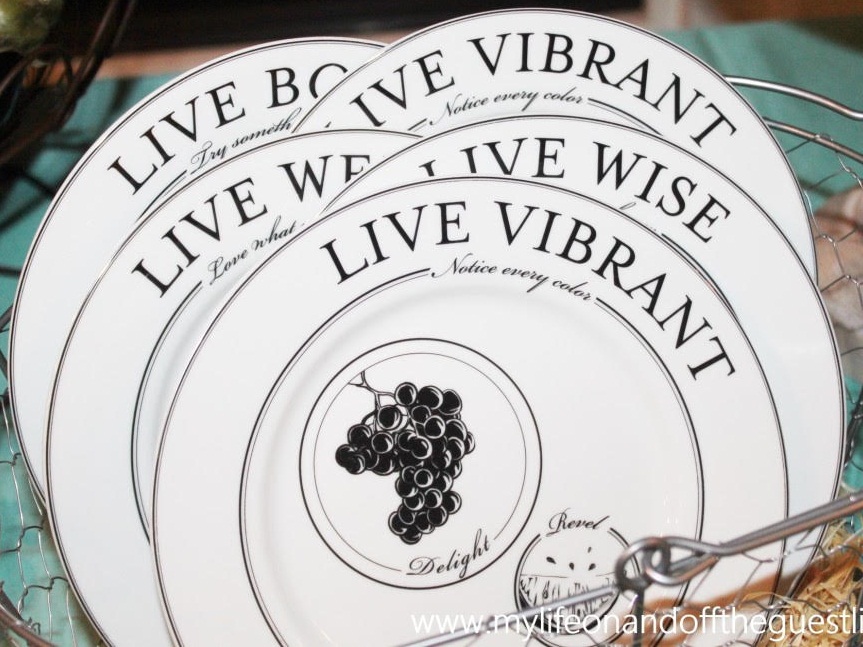 Elegant portion control dinnerware made of sustainable and durable porcelain. Attractive designs make it easy to put controlled portions on a plate and have it look appealing. Dinnerware is “lead free” and uses only FDA approved, food-safe inks for the decoration.
Elegant portion control dinnerware made of sustainable and durable porcelain. Attractive designs make it easy to put controlled portions on a plate and have it look appealing. Dinnerware is “lead free” and uses only FDA approved, food-safe inks for the decoration.
Wild Mountain Paleo Market
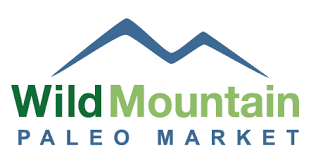 A full selection of organic foods chosen around Paleo guidelines. So if you’re on a Paleo diet, you can eat everything on this site. Includes baked goods and baking supplies, granola, chocolate, coconut products, condiments, crackers and chips, fermented foods, dips and spreads, herbs and spices, jerky and dried meat, nuts and seeds, ut butters, oils and fats, pasta and sauce, salad dressing, seafood, soup and stock sprouted foods, sweet snacks, sweeteners, supplements and much more. You’ll find many foods here that are not on your natural food store shelves, and ideas for what you can eat on a paleo diet. Read ingredients carefully as some items do contain natural sweeteners. Also Paleo body care.
A full selection of organic foods chosen around Paleo guidelines. So if you’re on a Paleo diet, you can eat everything on this site. Includes baked goods and baking supplies, granola, chocolate, coconut products, condiments, crackers and chips, fermented foods, dips and spreads, herbs and spices, jerky and dried meat, nuts and seeds, ut butters, oils and fats, pasta and sauce, salad dressing, seafood, soup and stock sprouted foods, sweet snacks, sweeteners, supplements and much more. You’ll find many foods here that are not on your natural food store shelves, and ideas for what you can eat on a paleo diet. Read ingredients carefully as some items do contain natural sweeteners. Also Paleo body care.
Least toxic treatment to remove mycotoxins?
Question from Jennifer
Hi Debra,
I appreciate your work in the world so very much! I seem to remember a while back you addressed the benefits of fogging to remove mycotoxins. It was about the benefits of fogging with a formaldehyde gas mixture that did not leave any residue in the space treated.
I can’t seem to find any info on that at this point. Can you direct me to where I might find out more about this and/or share your thoughts about this technique for reclaiming spaces affected by these invisible toxins?
Debra’s Answer
I don’t recall addressing this and mold isn’t my field of expertise.
Readers, any information on this?
Here is a very simple and clear article about mycotoxins, what they are, how to remove them from indoor air.
What I can tell you about formaldehyde is that it DOES evaporate completely in a very short period of time. I remember in grade school a teacher left an open bottle of formaldehyde sitting on a counter and the whole bottle evaporated within an hour. The only reason formaldehyde is a long-term problem in particleboard and permanent press finishes is that it is bonded to resins to make it time release. But free formaldehyde evaporates very quickly.
Lunchbox Containers
Question from TM
Hi Debra,
I was using a stainless steel lunchbox containers for my young kid, however, I read stainless steel may leach, although I’m not sure if only when heated?
Glass is not an option right now as he is too young and can break.
Would you go with these made of polypropylene #5 plastic instead of stainless steel? Thanks so much!!
Debra’s Answer
All lunchbox container materials leach something to some degree, so the question is, would you rather be eating plastic or metals? Even, glass, we are now finding, leaches lead and other metals.
There’s a lot more we need to know before I can make a definitive recommendation between these materials. For the moment all I can say is in my kitchen stainless steel is gone except for one pot, but I still have some polypropylene. It’s one of the least toxic plastics.
Couch Conundrum
Question from Cecelia
Hi Debra,
I purchased two futons (latex/wool) because I read California had TB117 – the flame retardant in all its furniture (this was about 3 years ago).
Now, I find that you can get furniture without flame retardants!
The only question is, is it worth getting a foam couch w/o flame retardants as the foam has it’s own problems. we can’t afford a 3-4 thousand dollar couch (EKLA home) and although our futons are ugly, and I’d love to have something stylish, I’m afraid the latex/wool is better than anything we can get. Any suggestions?
Debra’s Answer
I agree your latex/wool futons are better than anything you can get in a sofa in that price range.
There are many now without fire retardant, which is a good first step, but they still contain many other chemicals I wouldn’t want to breathe.
How Long Does It Take for Phthalates to Outgas?
Question from Jen
Hi Debra,
Really appreciate the work that you do.
I have a simple question that I can’t seem to find an answer to: How long generally does it take to outgas phthalates? Do products continually outgas them? Thank you!
Debra’s Answer
First I want to be clear that “phthalates” is not a material, but rather a group of chemicals added primarily to polyvinyl chloride (PVC) plastic, to make the PVC more flexible and harder to break.
So technically, I think you question is, “How long does it take for phthalates to outgas out of PVC so it is no longer outgassing?”
I don’t have actual numbers for this, but here’s the thing. Phthalates are added to PVC to keep it soft. As along as it’s soft, there are phthalates in the PVC that can outgas. When the PVC finally outgassed all the phthalates, it becomes brittle and rips or breaks. So we’re talking years here, not days or months.
Yes, products that contain phthalates continually outgas them.
Erector Desk
A standing desk (a work desk where you stand instead of sit) made of wood and steel and nothing else. I wrote to them asking “What is the finish on the wood?” and this was their reply…”The top is sanded and unfinished beech wood. We’ve experimented with some finishes and polishes but decided that we really like the matte look and feel of the untreated wood and that the tops hold up very well without being sealed. Another advantage is if you ever mark or dent the wood, you can just use a little sand paper to rub it out and the sanded portion will still match the rest of the top. We also really prefer not using a finish that would compel us to tell people that our tops are not food safe. We also don’t have to expose ourselves to more VOCs than necessary while making the desk which is definitely a plus! After all, we got into the standing desk business because we have an interest in healthfulness. I took a quick look at debraslist.com so I have a feeling you may feel the same way about these things :)”
Dr Fedorenko True Organic
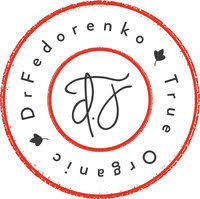 Organic tick and mosquito repellents that are clinically proven to prevent the transmission of Lyme disease and repels ticks and mosquitoes. It is a certified organic product made with essential oils and herbs. “Dr.Fedorenko True Organic Bug Stick is designed to protect and nourish skin to keep it looking and feeling healthy while keeping mosquitoes, ticks, gnats, horseflies, black and biting flies away. Works quickly to protect you and the whole family. Luxurious botanical butters infused with pure essential oils help to hydrate your skin. Powerful blend of pure essential oils keep biting insects away for hours. ”
Organic tick and mosquito repellents that are clinically proven to prevent the transmission of Lyme disease and repels ticks and mosquitoes. It is a certified organic product made with essential oils and herbs. “Dr.Fedorenko True Organic Bug Stick is designed to protect and nourish skin to keep it looking and feeling healthy while keeping mosquitoes, ticks, gnats, horseflies, black and biting flies away. Works quickly to protect you and the whole family. Luxurious botanical butters infused with pure essential oils help to hydrate your skin. Powerful blend of pure essential oils keep biting insects away for hours. ”
Agent Nateur
Just one product—luxury organic deodorant—made from organic coconut oil, avocado, raw organic honey, and essential oils. “After purchasing and testing nearly every available natural deodorant free of aluminum, I found that none were effective…. I decided to make my own…I want to change the way the world views luxury cosmetics. If you choose to live a healthy, natural lifestyle, the application and absorption of healthy cosmetics are as critical as the ingestion of healthy food. Your skin is the largest organ of your body and since it is porous, it absorbs whatever you put on it. Your cosmetics should be equally gorgeous and healthy.”
Billy’s Infinity Greens
 Superfood blend whole food supplements that are 100% organic, raw, wild-crafted, vegan-friendly and free from dairy, wheat, wheat grass, gluten, soy, peanuts and gmos. More than greens, they also have vitamin C, plant protein, meal bars, and more. “We only work with suppliers that utilize ecological, sustainable and fair trade practices. This commitment to superior ingredients and equitable business dealings is critical to the quality and effectiveness of our unique formula. You can rely on the fact that every superfood ingredient we use is produced by the very best, and is 100% organic, wild crafted, raw, and vegan.”
Superfood blend whole food supplements that are 100% organic, raw, wild-crafted, vegan-friendly and free from dairy, wheat, wheat grass, gluten, soy, peanuts and gmos. More than greens, they also have vitamin C, plant protein, meal bars, and more. “We only work with suppliers that utilize ecological, sustainable and fair trade practices. This commitment to superior ingredients and equitable business dealings is critical to the quality and effectiveness of our unique formula. You can rely on the fact that every superfood ingredient we use is produced by the very best, and is 100% organic, wild crafted, raw, and vegan.”
Lucy & Leo
Delightful organic clothing for babies and children, made in New York. “Our mission is simple: to provide your child with the finest, highest quality clothing on the market. Our garments move and breathe, are durable and very comfortable. {Our] clothing is known for its soft color palate and classic design with a modern twist. As our brand grows, we stay true to our vision of creating unique, adorable and comfortable outfits for your child in an eco-friendly fashion. We are proud to be one of the first organic and USA-made clothing brands in the children’s industry.”
New Report on Fragrance Ingredient Safety and Regulation
A few weeks ago, I published a question from a reader wanting to know about Toxins of Dawn Dish Detergent.
I answered her question by giving her a link to the ingredients of Dawn provided by Proctor & Gamble, which included a list of fragrance ingredients from the International Fragrance Association.
She commented
When clicking on the perfume link, hundreds of possible ingredients are listed, with this as part of the intro :
“Our perfumes are formulated with the greatest care and utmost attention to safety. Whenever a perfume is developed or enhanced, our safety scientists evaluate the detailed composition of the perfume to ensure that the product is safe to use. Perfumes are formulated taking into account our stringent internal safety standards for every ingredient, as well as the safety standards set by the International Fragrance Association (IFRA). We adhere to the IFRA Code of Practice and the IFRA Standards. For more information about IFRA go to www.ifraorg.org.”
Can this be true? I thought all perfumes (not including organic essential oils) contain toxic chemicals.
Well, it turns out that Women’s Voices For the Earth has been asking this question for almost ten years, and just recently release a report on the subject.
Here are some links to help you find everything.
Especially see the last link, which shows which chemicals on the IFRA list are known to be toxic by other organizations.
Kudos to Women’s Voices for the Earth for doing this work.
EcoWatch: Are Toxic Fragrances Making You Sick?
Women’s Voices For the Earth Report Overview
THE REPORT: Unpacking the Fragrance Industry: Policy Failures, the Trade Secret Myth and Public Health
More information on fragrance ingredients from Women’s Voices for the Earth
Fragrance Chemicals of Concern Present on the IFRA List 2015
Take a look at this if you want to see what chemicals in fragrances are considered toxic by organizations outside of the fragrance industry.
Mothproofing in Wool Carpet from New Zealand?
Question from Michael
Hi Debra,
Do you know anything about the insecticide they have to put in wool carpet in NZ? Is it toxic? Any health concerns? Here it is:
is potentially carcinogenic: Bifenthrin. Bifenthrin is a Pyrethroid compound.
Debra’s Answer
Hmmm. Some conflicting information on this.
First, here are a few links with health effects of this pesticide.
www.toxipedia.org/display/toxipedia/Bifenthrin
npic.orst.edu/factsheets/bifgen.html
pmep.cce.cornell.edu/profiles/extoxnet/24d-captan/bifenthrin-ext.html
I found a comment on a post that said, “wool carpets are treated with a pesticide called bifenthrin which is added into the dye process.” If this is the case, then an undyed carpet would not have it. Also this source didn’t specify New Zealand.
But here is an industry document that describes the use of mothproofing, which says “it must be applied at dying, or later.”
Now Karastan says:
New Zealand wool is the purest, whitest wool in the world, offering excellent dyeing characteristics that create long-lasting colors.
New Zealand wool is raised with little impact on the natural landscape. It is a renewable and biodegradable fiber that is one of the world’s most environmentally friendly products.
New Zealand wool is produced on land mostly unsuitable for other agricultural purposes and does not compete with food production.
No internationally banned pesticides are used on New Zealand farms, making New Zealand’s sheep industry one of the world’s greenest animal production systems.
The Wools of New Zealand brand is your guarantee of the highest quality New Zealand wool. It is the indication that New Zealand wool is a superb natural product derived in an environmentally responsible way through sustainable land use.
I went to the Wools of New Zealand website and couldn’t find any statement about insecticides. So I can’t tell if New Zealand wool is mothproofed with a chemical pesticide or not.
Well, after all that, here is the document you want to read:
admin.woolsnz.com/uploadGallery/documents/insectresist%20.pdf
It’s the technical document for making Wools of New Zealand insect resistant. It does mention Bifenthrin and states it’s not approved for the USA.
Personally I wouldn’t get a carpet with this pesticide applied.
Safe Dishwasher Detergent?
Question from nclynn
Hi Debra,
Your books were my main teachers when i really committed to going green in the 90s. so wonderful!
i am on a thread right now where someone recommended a dishwasher detergent of borax, baking soda (1/2 cup each), 1/8 cup citric acid and 25 drops of ‘essential oil’.
Someone chimed in and said they used this and it ate up their enamelware. the rest of the thread is opinions about what was the culprit and they have ALL been named!!! lol.
The latest was a mom who has a chemist son. son said “borax will ruin your glassware (depending on the make-up) when added to hot water and can make it taste like play-doh – forever! “
I told them i had heard in the 90s (from you?) to use plain borax in the dishwasher. i used it once at a friend’s and it was fine but i’ve never had my own dishwasher.
Do you have any thoughts on that original recipe…good, bad, indifferent?
Thanks for all you do!
Debra’s Answer
I looked up my original recipe for dishwasher detergent and found mix baking soda and borax half-and-half and then put 4 tablespoons in your dishwasher. But I got that from a book somewhere and never actually used it.
I haven’t had a dishwasher since 1985.
So, readers, what are your thoughts or experience with this formula, and what do YOU use in your dishwasher?
Himalayan Salt Lamps as Air Filters
Question from Bonnie Johnson
Hi Debra,
Does anyone have any experience using one of these? They are supposed to purify the air in your home.
Especially did it help a sinus condition?
Debra’s Answer
I had a Himalayan Salt Lamp in my bedroom for a while, but I had to remove it because I couldn’t sleep. I finally just gave it away.
As beautiful as they are, I wouldn’t use one as an air filter.
Salt lamps are natural source of negative ions.
At any given time, there are both positive and negative ions in the air. Negative ions are often found in nature, often created by lightening storms, sunlight, waterfalls, ocean waves and other natural processes. A salt lamp produces negative ions during the evaporation of water attracted to the lamp by the salt.
Positive ions are often created by electronic devices like computers, TVs, microwaves, and vacuum cleaners. They are known to contribute to problems like allergies, stress and sleep trouble.
Negative ions can neutralize positive ions by bonding with them.
Since air pollutants such as airborne mold, bacteria, and allergens often carry a positive charge, they can be neutralized by negative ions.
But that’s the limitation of a salt lamp as an air purifier.
For air purifiers that work to remove a broad spectrum of particles and chemical pollutants, visit the Air Filters page of Debra’s List.
Flame Retardants
Question from Michelle W
Hi Debra,
I recently contacted a small furniture company to ask about the toxicity of the materials they use. Here’s part of their reply:
“The inner liner is made of a Polyester (92%) / Spandex (8%) blend. Likewise, they contain no known latex content. However, they are treated with a flame retardant called Pyrovatex SVC. This material is not known to cause allergic reactions or contain latex derivatives and is non toxic.”
I tried to look up the MSDS for the Pyrovatex flame retardant, but the website seems to be down (and has been for at least a week.) Do you know anything about this flame retardant or how they can claim it is nontoxic?
Thanks!
Debra’s Answer
Pyrovatex is a trade name for Phosphonic acid, (2-((hydroxymethyl)carbamoyl)ethyl)-, dimethyl ester
Phosphonic acid is an organophosphorus compound. There are many types of phosphorates, including Gyphosate (“Roundup”).
Here is an MSDS for Phosphoric Acid
It says it’s 98% phosphorous acid.
There is no toxicity information given, however, it is hazardous by burning the skin and is harmful if swallowed. Inhalation can cause chemical burns to the respiratory tract.
That’s how they can say it’s nontoxic.
It doesn’t appear to be volatile, so if you are not inhaling it as a powder, it would be not toxic.
What Lightbulbs Should I Use?
Question from Dawn Magstadt
Hi Debra,
Thank you for all you do. Hey, I was wondering, I’ve come upon yet another seemingly simple thing with huge implications, lighting.
I’ve been avoiding the light bulb situation and I won’t buy the curly ones (mercury is mercury–bad enough. I have some in my mouth and the fish I eat, and like who’s gonna really toss the bulbs not in the trash can? please.
Then the Dollar Store, my refuge from Walmart confusion, let me down in that
they burned out within a month this time. So I resigned myself to go to Menards (like Home Depot etc) and saw LED.
Then there’s some kinds (can’t recall–from another excursion) that say they can get hot(I’m thinkin’ that’s Halogen). I had 3 Halogen tall pole lamps in the 90s and I never bought a replacement bulb in 10 years! I take that back, maybe once for one. Then I divorced and who knows, they probably still burned after that. So a few years ago I merely bought a desk Halogen and it burned out in a week! I’m like what gives in a decade? Now they burn out? Made no sense.
I don’t want any bulbs to start a fire in my cheapy Goodwill lamps, my god. Might as well burn beeswax candles; at least it would be healthy and cost about the same as those expensive bulbs. I don’t mind expensive if it lasts, but then I read LED is directional and may keep melatonine from happening. I love the light they give but not on people’s cars (which seems like I’ve seen–too bright, albeit clear, must be hunting snipes, lol). I thought those for melatonine were the UV watcha ma call it clear bulbs. It’s nice they all are in light bulb form now but it was easier to know what was what when their shapes were different. I mean Halogen were little bity, not a bulb.
And then they (the god makers of light) claim regular florescent works for plants when in fact, I read before you’d have to have them no further away than 4″, now they act like any old bulb will do. How can that have changed in only 7 yrs?
Would they just organize it, make up their minds so I can just grab a pack of bulbs and feel comfortable that I won’t burn my apt building down and lose everything and that I won’t get depressed
or end up with a sleep disorder. I mean come on people.
So I’m saying…have you done any research?
It just seems odd, does it not, that when it’s all about light, it’s in the dark. And of course it’s complicated and of course it’s polluted.
Debra’s Answer
I’ve done a lot of research about this over the years and could organize it, and will, but can’t in this blog post today. Lighting is changing so quickly it’s hard to keep up with it.
I’ll just give you a quick answer by telling you what I use.
First, I’ve done things to have more natural light in my home, like install skylights. I have a big skylight over my shower, so I rarely turn on a light when I go in the bathroom. Even at night I have a little nightlight, so there’s no need to turn on the overhead light.
Then, I’ve purchased light fixtures that take incandescent type bulbs. And I use Philips EcoVantage bulbs, which are halogens inside of a bulb that is the same size and shape as an incandescent. I’ve never had a problem with overheating.
I also have a fixture over my kitchen sink that takes small halogens. It’s all metal and glass, so no problem with overheating. The fixture is designed for halogens.
As a rule, I don’t use overhead lights, except in the hallway. I much prefer task lighting, which also saves energy.
Simple.
Hope this helps your dilemma!
A Sensational Spin on Toxics in Consumer Products
This week there has been a an article going around with the sensational headline:
There Are ‘Fracking’ Chemicals In Your Toothpaste,
Detergents and Ice cream.”
Well, I wanted to know what horribly toxic fracking chemicals were in toothpaste, so I started reading the article. But it just didn’t make sense.
So I searched for a different article on the subject and found the original press release about the study, which said no such thing.
In fact, the study tested samples of fracking fluid collected in five states, and found that the chemicals contained in fracking fluid were “no more toxic than substances commonly found in homes.”
The pollutants were various forms of ethylene oxide.
According to the Occupational Safety and Health Administration (OSHA) , ethylene glycol can have a variety of health effects.
In addition to eye pain and sore throat, exposure to EtO can cause difficult breathing and blurred vision. Exposure can also cause dizziness, nausea, headache, convulsions, blisters and can result in vomiting and coughing. Both human and animal studies show that EtO is a carcinogen that may cause leukemia and other cancers. EtO is also linked to spontaneous abortion, genetic damage, nerve damage, peripheral paralysis, muscle weakness, as well as impaired thinking and memory. In liquid form, EtO can cause severe skin irritation upon prolonged or confined contact.
It is used in the production of many consumer products, and may not appear on the label.
My point here is that information on toxics in consumer products should be presented in a factual way and not in a way that is misleading. Fracking chemicals were NOT found in toothpaste, detergents and ice cream. They were found in fracking fluid.
I take issue with both the article and the press release. One made it sound more toxic than it is, the other lessened the concern by comparing it to innocent household products.
I prefer facts.
Po-Zu Shoes
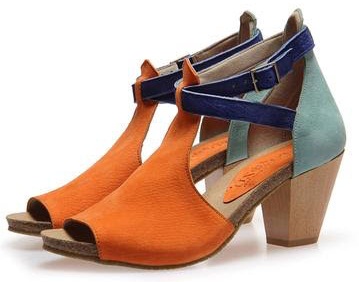 These amazing shoes are made from organic cotton, wool, coconut husks, natural latex, cork, and leather. “All our materials come from naturally renewable sources and are responsibly harvested. They contain no pesticides, bleaches or toxic dyes and are locally sourced wherever possible. We use organic cotton in our shoes and all our leather is chromium-free. You can read about our materials in more detail here.” Every shoe has a complete materials description (click on the “materials” tab on each product page). Great styles! This company is based in the UK. I don’t usually recommend websites out of the country, but I’ve never seen anything like these shoes! You can even have them custom-make shoes to your own design specifications.
These amazing shoes are made from organic cotton, wool, coconut husks, natural latex, cork, and leather. “All our materials come from naturally renewable sources and are responsibly harvested. They contain no pesticides, bleaches or toxic dyes and are locally sourced wherever possible. We use organic cotton in our shoes and all our leather is chromium-free. You can read about our materials in more detail here.” Every shoe has a complete materials description (click on the “materials” tab on each product page). Great styles! This company is based in the UK. I don’t usually recommend websites out of the country, but I’ve never seen anything like these shoes! You can even have them custom-make shoes to your own design specifications.
Erik Organic
 Hardwood furniture, individually handcrafted with love by woodworking artisans, in beautiful modern designs. Choose from furniture for dining room, living room, office, and bedroom…even handcrafted office chairs. All can be customized to your needs. They use my favorite Tite Bond glue and a low-VOC finish is available by request “for people with MCS”.
Hardwood furniture, individually handcrafted with love by woodworking artisans, in beautiful modern designs. Choose from furniture for dining room, living room, office, and bedroom…even handcrafted office chairs. All can be customized to your needs. They use my favorite Tite Bond glue and a low-VOC finish is available by request “for people with MCS”.
Pure 7 Chocolate
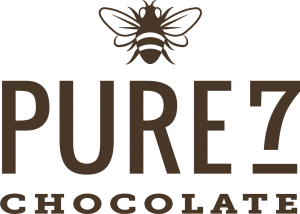 Raw, organic, unprocessed chocolate bars and bites, sweetened with organic honey. 72 or 80 percent cocoa. “We craft raw artisan chocolate using the world’s purest and best organic ingredients, and use innovative low heat techniques to keep the chocolate in its most pure and potent form. After lots of experimenting (and lots of tasting), we came up with a groundbreaking method of making mouth-watering chocolate, sweetened naturally using only raw honey. What’s not to love? There’s no dairy, soy, gluten, refined sugars, preservatives, or chemicals in our chocolate – only organic, pure ingredients.” I’ve tasted this chocolate and it’s delicious! Even though it’s raw and pure, it’s like a regular chocolate bar…only better.
Raw, organic, unprocessed chocolate bars and bites, sweetened with organic honey. 72 or 80 percent cocoa. “We craft raw artisan chocolate using the world’s purest and best organic ingredients, and use innovative low heat techniques to keep the chocolate in its most pure and potent form. After lots of experimenting (and lots of tasting), we came up with a groundbreaking method of making mouth-watering chocolate, sweetened naturally using only raw honey. What’s not to love? There’s no dairy, soy, gluten, refined sugars, preservatives, or chemicals in our chocolate – only organic, pure ingredients.” I’ve tasted this chocolate and it’s delicious! Even though it’s raw and pure, it’s like a regular chocolate bar…only better.
Potting Shed Creations
Creative “starters” for growing gardens anywhere, including upcycling bottles into practical planters, garden-in-a-(rice paper)-bag for sunny windowsills, darling replanted steel “window boxes” to grow indoors on a sill, and many more clever ideas for your own home or gifts. And, they have their own USDA organic certification for handling seeds and bulbs, in addition to the materials being organic, renewable, found, and reclaimed. I loved browsing this site and getting ideas for how to grow food in simple ways.
Daneson
“Fine flavored toothpicks” that come in little glass vials so you can carry them with you. They are made in the USA from birch and other materials obtained from American and Canadian suppliers. The company is a net contributor to the environment, maintaining a minimum 1:100 ratio of milling to repeating forestland. The flavors are original blends, all natural, and organic when possible.
Summit Spring
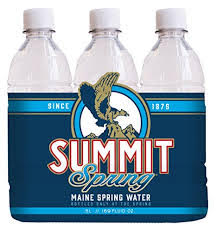 Raw “Living” Spring Water “gathered from one of the oldest and most revered natural spring water sources in North America and comes to you just as it “bubbles from the spring™” mere minutes after leaving the Earth…Summit Spring, the source of Raw Water, is so pure that we were given the first and only exemption from treatment in Maine’s history. Summit Spring water exceeds every State and Federal guideline for drinking water, straight from the ground…The fact that we capture real, natural Maine spring water from a centuries old true free-flowing source, without the use of pumps or boreholes and then gravity feed the water to our bottling facility located just 50′ away, without any transport, with complete control over “cradle to grave” packaging coupled with decades long testing and safety history-gave the regulatory bodies confidence in awarding this unprecedented approval.” Comes in glass or PET bottles.
Raw “Living” Spring Water “gathered from one of the oldest and most revered natural spring water sources in North America and comes to you just as it “bubbles from the spring™” mere minutes after leaving the Earth…Summit Spring, the source of Raw Water, is so pure that we were given the first and only exemption from treatment in Maine’s history. Summit Spring water exceeds every State and Federal guideline for drinking water, straight from the ground…The fact that we capture real, natural Maine spring water from a centuries old true free-flowing source, without the use of pumps or boreholes and then gravity feed the water to our bottling facility located just 50′ away, without any transport, with complete control over “cradle to grave” packaging coupled with decades long testing and safety history-gave the regulatory bodies confidence in awarding this unprecedented approval.” Comes in glass or PET bottles.
Essential Oxygen
This dental “brushing rinse” made of food-grade hydrogen peroxide, aloe and a potent blend of USDA certified organic essential oils. Developed by the founder to solve her own dental problems, it whitens teeth, heals gums, freshens breath, improves tooth sensitivity, kills oral bacteria, and more. I’ve tried this and love it. It’s a rinse and tooth cleaner in one, just swish it around in your mouth and then brush your teeth. It made me smile!
Essential Oxygen
Pure 3% food-grade stabilizer-free hydrogen peroxide that you can safely use for first aid, body and oral care, produce washing, household surfaces, dishwasher, laundry and stains, plants and garden, pets and more. “The hydrogen peroxide found in brown bottles in drugstores is intended for cosmetic and industrial use, It is manufactured with stabilizers to extend shelf life…which contain significant quantities of heavy metals and other toxins, such as sodium phosphate, sodium stagnate, acetanilide, and phenol.”
Long Life Teas
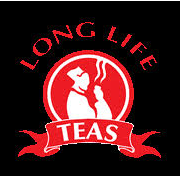 “Long Life Tea was developed over 400 years ago for the Emperor of the Ming Dynasty by his Royal Physicians. The Emperor was very specific that his tea must provide pleasure & health, have an attractive appearance, and provide a pleasant aroma. Today all Long Life Teas honor these same principals. We create organic, good tasting healthy teas and each blend follows the Chinese philosophy of bringing balance and harmony.” All teas are handcrafted, using the finest quality certified organic herbs and teas. “The filter paper is not heat-sealable, therefore no type of glue has been added to it, the thread is made of natural cotton and the innovative method for fixing the thread does not use metal staples or adhesives, and each tag offers a special proverb.” Choose from green teas combined with various herbs, plus a detox tea and the original “long life” blend.
“Long Life Tea was developed over 400 years ago for the Emperor of the Ming Dynasty by his Royal Physicians. The Emperor was very specific that his tea must provide pleasure & health, have an attractive appearance, and provide a pleasant aroma. Today all Long Life Teas honor these same principals. We create organic, good tasting healthy teas and each blend follows the Chinese philosophy of bringing balance and harmony.” All teas are handcrafted, using the finest quality certified organic herbs and teas. “The filter paper is not heat-sealable, therefore no type of glue has been added to it, the thread is made of natural cotton and the innovative method for fixing the thread does not use metal staples or adhesives, and each tag offers a special proverb.” Choose from green teas combined with various herbs, plus a detox tea and the original “long life” blend.
Dapwood Furniture
 Handcrafted solid wood platform beds and bedroom furniture made from walnut, cherry, hard maple and oak, plant-based natural stains, and nontoxic finishes (also available unfinished “for MCS”). These bed frames can be customized for height and length, mix woods and finishes for style, add wheels or casters, and reclining headboard option. Styles range from simple to…well, whatever you want! This is beautiful furniture.
Handcrafted solid wood platform beds and bedroom furniture made from walnut, cherry, hard maple and oak, plant-based natural stains, and nontoxic finishes (also available unfinished “for MCS”). These bed frames can be customized for height and length, mix woods and finishes for style, add wheels or casters, and reclining headboard option. Styles range from simple to…well, whatever you want! This is beautiful furniture.
Vermont Bunkbeds
Sturdy, simple bunk beds, loft beds and beds with drawers beneath, made from local Vermont hardwoods. Finished in your choice of colors with Natura Zero-VOC paint or Old-Fashioned Milk Paint with Vermont Natural Coatings finish. “In shopping for bunk beds for their own children, Scott & Amy realized the need for a safer product that would hold up to the every day demands of their active boys and yet still be affordable for the everyday family. So Scott and Amy began dreaming of devoting their skills and experience to building solid wood beds that would be safe for children and affordable for parents.”
Beard Products
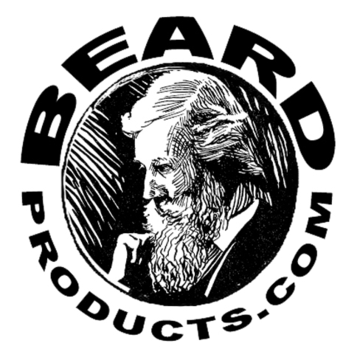 Simple and straightforward “high quality Beard Products priced affordably and made with the best organic ingredients. All of our products are formulated with natural components that specifically support your beard’s growth and potential.”
Simple and straightforward “high quality Beard Products priced affordably and made with the best organic ingredients. All of our products are formulated with natural components that specifically support your beard’s growth and potential.”
Floral Encounters
Certified organically grown seeds for specialty herbs and flowers, all grown and harvested on their own farm. They have a very long list of herb seeds, including seeds for harsh environments and seeds for deer resistant plants. Because they are a small farm, they sell their seed semi-cleaned. “This means that not all the plant material from around the seed is removed. Doing this is extremely time consuming and labor intensive and the main reason that seeds are as expensive as they are. So to keep the costs down we remove as much debris as possible but leave the more difficult pieces. So when you get your seeds, they won’t be pristine and just seeds; they will have other bits of plant material in with them.” I don’t mind that at all. Shows they are hand-harvested and not put through mechanical processing.
Strictly Medicinal Seeds
A large and unusual selection of organic seeds and plants for vegetables, culinary herbs, medicinal herbs, and more. Grow flax seeds, gluten-free sorghum grain, and other useful plants in your own backyard.
GMO Labeling Gaining More Support
Two weeks ago Campbell’s announced their support for mandatory national GMO labeling.
See their statement at Why We Support Mandatory National GMO Labeling
Also see Campbell’s website www.whatsinmyfood.com, an excellent model for transparency in disclosing ingredients.
Here’s an example:
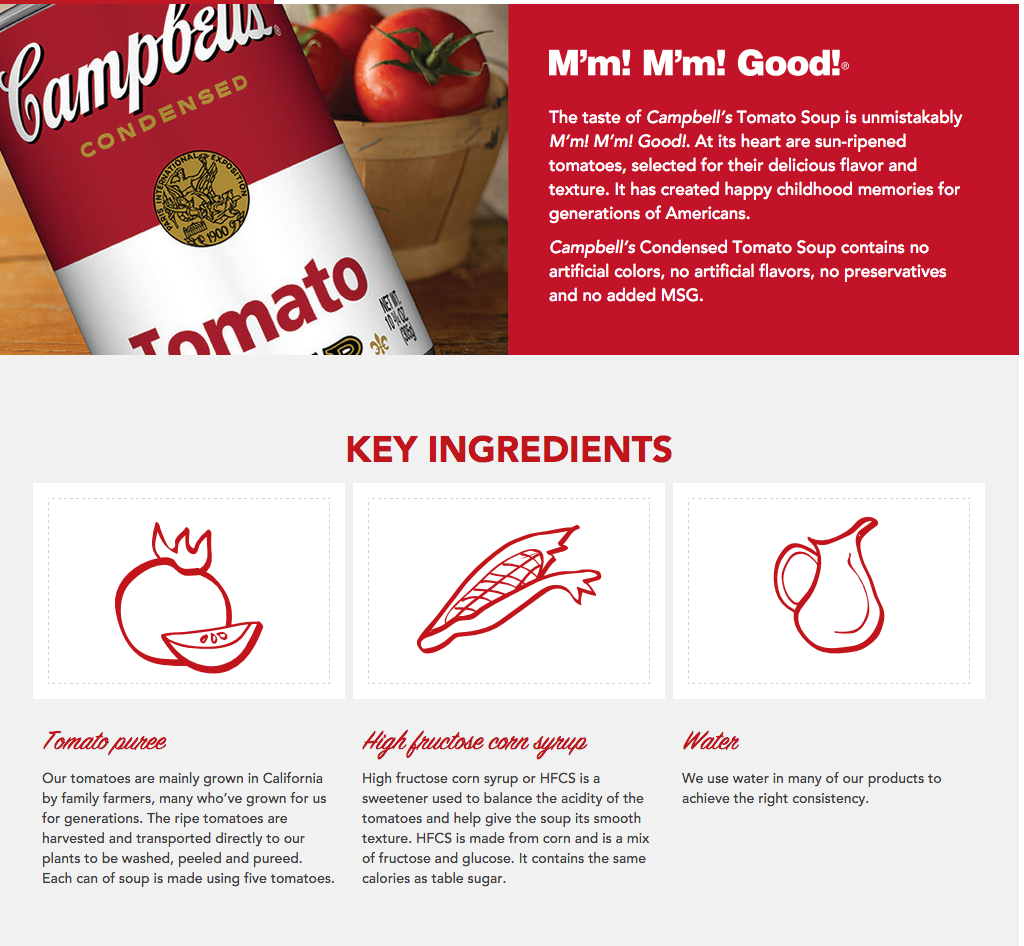
While the ingredients aren’t the best, in my opinion, they are taking a step in the right direction by telling us what they are.
Then this week there was an announcement that my own state of Florida has launched three bills for Mandatory GMO labeling. Yay!
Natural Society: Florida Laundhes 3 Bills for Mandatory GMO Labeling
Reclaimed wood dresser
Question from Tania
Hi Debra,
I wanted to ask what are your thoughts about reclaimed wood. I like this dresser for my young son’s bedroom (he doesn’t have any strong sensitivities) but obviously I wouldn’t want to put something toxic in his bedroom.
Many thanks!!!
www.westelm.com/products/emmerson-3-drawer-dresser-g720/?cm_src=rel
Debra’s Answer
I think reclaimed wood is a wonderful idea for the environment, however, many reclaimed woods are toxic.
Often they don’t reveal the source of the wood, but this one does: “The reclaimed pine comes from a variety of sources, including shipping pallets and packing crates.”
Now shipping pallets and packing crates have various toxic chemicals applied, including pesticides and wood preservatives. So I wouldn’t recommend using a reclaimed wood product with these wood sources.
Good you asked about this.
Voice Over IP vs. Landline
Question from Marie
Hi Debra,
I currently have an internet and phone bundle through our local cable company. It is completely wired. Our internet is connected via an Ethernet cable and modem. Our phone is connected to a wired telephone modem as well.
Are Voice Over IP connections ok as long as they are connected with a wired modem? I don’t think we have landlines available where I live; most companies only offer phone plans that use the internet connection.
Thank you for your time!
Debra’s Answer
Here’s an article that explains what VoIP is and how it works: How Stuff Works Tech: How VoIP Works
To the best of my knowledge, it’s operating computer-to-computer.
If the modem is wired, and not wireless, it should be no different from using your computer.
If anyone knows any more about this, please comment.
I’m not an EMF expert. There’s a lot I don’t know.
Are Sequins Safe?
Question from Stacey
Hi Debra,
My 5 year old daughter loves to dress up, however, I wonder how safe some of children’s clothing is…
She loves the “frilly” skirts made of synthetic materials which I try to avoid. If I do buy her something synthetic, would an item made with a nylon tulle over cotton be okay? What about sequin? I can find a few cute clothing items made with 100% cotton fabric with sequin overlay? Would these be okay?
Thanks!
Debra’s Answer
Well, sequins are made from a variety of plastics, from PVC to PET.
The exposure is so small in comparison to other exposures that are much more toxic, that I am not particularly worried about this. I would rather you put attention on reducing pesticide exposures, for example.
But I do understand the need for the joy of pretty clothes. So if it’s important to wear sequins, any exposure to toxics from the plastic would be minimal.
Glyphosate Found in 85% of Tested GMO Cotton Personal Hygiene Products
A blog post caught my eye as it passed through my inbox.
A new study at the University of La Plata in Argentina found that about 85% of cotton products such as gauze, cotton balls, feminine products like pads and tampons, baby wipes, etc. tested positive for glyphosate. Another even more staggering finding is that 62% of the tested products had traces of AMPA, a environmental metabolite aminomethylphosphonic acid that is a derivative of glyphosate and is potentially one thousand times more toxic than glyphosate.
“The results of this research are very serious. When you use cotton or gauze to heal wounds or for personal hygiene, you do this thinking that the products are sterilized, but in fact you are using products contaminated with a carcinogenic substance,” said pediatrician Vazquez Medardo Avila, part of the Network of Medical Professions of Fumigated Towns in Argentina.
It was particularly of interest to me because I’ve been told by reliable sources that by the time cotton is processed into fabric, it no longer contains residues of pesticides. It’s the raw unprocessed cotton that we need to watch out for regarding pesticide residues. Yet here researchers are finding glyphosate in processed cotton products.
When I first started wearing cotton by choice in 1978, it was just cotton and pesticides. Today almost 100% of the non-organic cotton grown in the United States is GMO cotton sprayed with glyphosate. It’s apparently still in the fabric. Furthermore, it’s not labeled GMO.
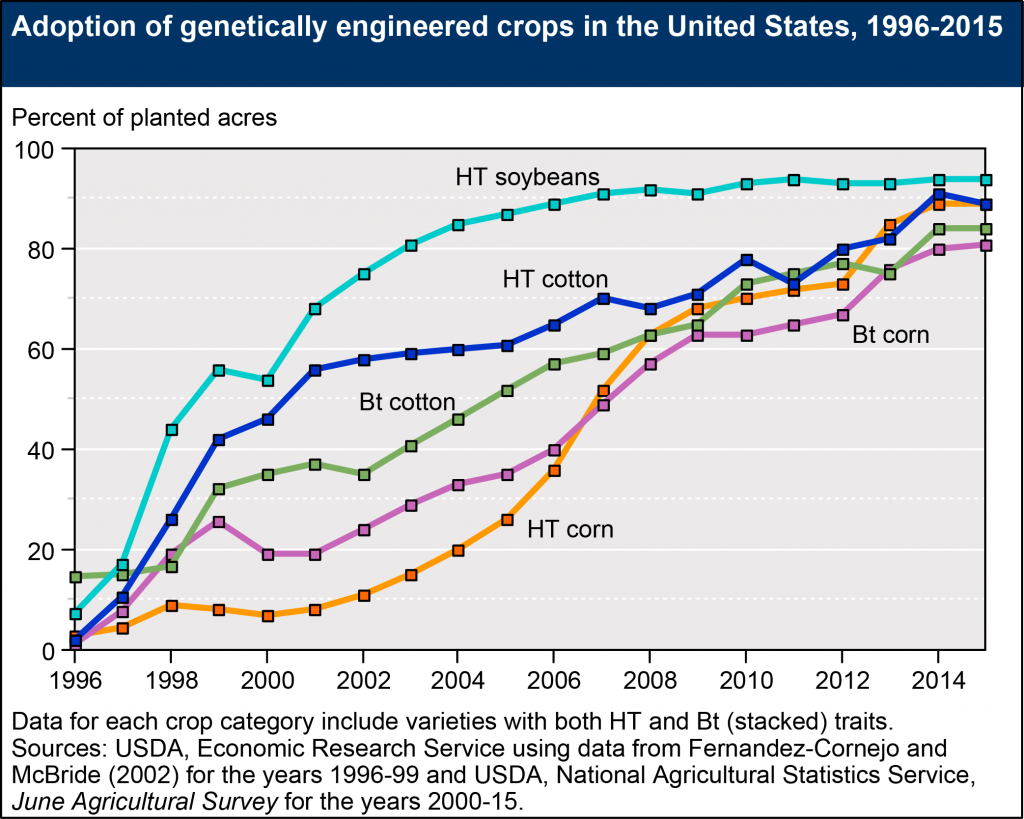
This is another reason to choose organic cotton.
Monsanto’s Chemicals Make Their Way Into 85% of Personal Hygiene Cotton Products
Always Piper
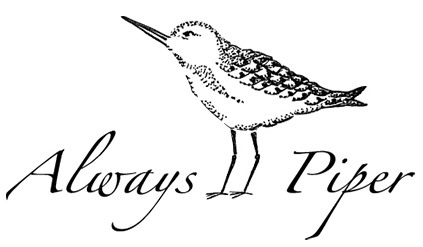 Timeless clothing, bedlinens,, home goods and accessories made mostly from linen. “Outstanding quality is achieved through fine detailing and finishes that result in items that are exclusive and promise to last for years…handmade on the coast of Maine in small batches.”
Timeless clothing, bedlinens,, home goods and accessories made mostly from linen. “Outstanding quality is achieved through fine detailing and finishes that result in items that are exclusive and promise to last for years…handmade on the coast of Maine in small batches.”
Toockies
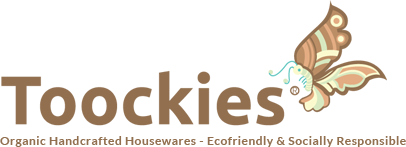 Handcrafted housewares made from certified organic cotton using vintage patterns: pot holders, coasters, wash cloths, scrub clothes. “As a young girl I lived in a small fishing village on an island in the Azores. My mother had very few opportunities to make money because culturally she was expected to stay home and provide free labor to support the family. Her only source of income was embroidery…When I married and became a homemaker myself, my mother-in-law introduced me to knitted dishcloths she received from her cousin Claudia, better known as “Toockie”. I very quickly became dependent on these “Toockies” to clean my home, my kids and my car. Soon I started thinking everybody should have these amazing Toockies® that lasted for years because they out performed most of the disposable cleaning products I had to keep buying every month…I began to think about how I might start a home business, with the help of women who could use a bit of extra money like my mom did…”
Handcrafted housewares made from certified organic cotton using vintage patterns: pot holders, coasters, wash cloths, scrub clothes. “As a young girl I lived in a small fishing village on an island in the Azores. My mother had very few opportunities to make money because culturally she was expected to stay home and provide free labor to support the family. Her only source of income was embroidery…When I married and became a homemaker myself, my mother-in-law introduced me to knitted dishcloths she received from her cousin Claudia, better known as “Toockie”. I very quickly became dependent on these “Toockies” to clean my home, my kids and my car. Soon I started thinking everybody should have these amazing Toockies® that lasted for years because they out performed most of the disposable cleaning products I had to keep buying every month…I began to think about how I might start a home business, with the help of women who could use a bit of extra money like my mom did…”
All Good Things Organic Seeds
Hundreds of certified organic, non-GMO vegetable, flower and herb seeds, including improved rare and heirloom varieties sourced directly from their farm in Ojai, California. Seeds you won’t find elsewhere. Their mission is to propagate plant biodiversity and improve existing open-pollinated and heirloom vegetable varieties for better performance in organic farming and gardening contexts. “We are motivated by a curiosity and for the sensuous world and its panoply of colors, textures and flavors. Sourcing seeds from us allows us to continue this engagement and supports the broader organic food movement. “ Be sure to see the gorgeous photos in their blog.
Cafe Mam
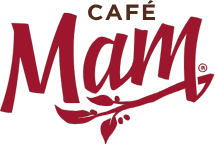 European-grade Arabica coffee—100% organic, 100% fair-trade, shade grown, fresh roasted. The coffee is grown by fair trade cooperatives of native Mayan farmers living in the highlands of Chiapas, Mexico and Guatemala. The farmers believe that by taking care of the soil, they are taking care of the entire biosystem. Though this site sells only one type of bean, you can select a level of caffeine, a particular roast, and your preferred grind (and all are explained on the site). Half-pound sample bag is only $5.25.
European-grade Arabica coffee—100% organic, 100% fair-trade, shade grown, fresh roasted. The coffee is grown by fair trade cooperatives of native Mayan farmers living in the highlands of Chiapas, Mexico and Guatemala. The farmers believe that by taking care of the soil, they are taking care of the entire biosystem. Though this site sells only one type of bean, you can select a level of caffeine, a particular roast, and your preferred grind (and all are explained on the site). Half-pound sample bag is only $5.25.
Maine Made Bedrooms
 Bed frames and bedroom furniture in classic styles, made from American ash, with water-based finish or unfinished. The only other material used is a water-based nontoxic glue. NOTE: Only their Maine Made Bedrooms line is nontoxic. They also sell other brands.
Bed frames and bedroom furniture in classic styles, made from American ash, with water-based finish or unfinished. The only other material used is a water-based nontoxic glue. NOTE: Only their Maine Made Bedrooms line is nontoxic. They also sell other brands.
Maine Bunk Beds
Sturdy, real hardwood bunk beds made from nontoxic materials with kid-friendly colors and designs. “While many furniture companies use softer, less durable woods like pine, we use poplar—a high-quality, sustainable, locally sourced, renewable hardwood…Except for the architectural bolts used to attach the rails to the corner frames we don’t use any metal in our beds: no wood screws, no metal plates, and no braces or angles used to artificially reinforce inferior products. We never use particle board or composite material in our beds.” Finishes are my favorites: Old-Fashioned Milk Paint and Vermont Natural Coatings. All of their beds are made to meet your needs and aesthetics. They also sell natural mattresses.
Leather vs Fabric Sofa
Question from Lynn
Hi Debra,
I am a mother of three young children attempting to furnish a new home (yikes). My eyes were opened to the toxic chemicals in consumer products when trying to chose a bottle for my first son years ago. I relentlessly read and research the safest/healthiest choices for my family and upon doing so I found your gem of a website!!
I’m having trouble locating any information on chemicals in leather couches. IE: what am i exposing my family to? My question…which would be a safer choice for my family: a leather couch or a fabric couch? Seems simple, but I know there is a lot to consider. Any insight you may have would be greatly appreciated!
Thanks so much!
Debra’s Answer
All the information you are looking for regarding both leather and fabric sofas can be found at oecotextiles.wordpress.com
Here are their posts about leather: oecotextiles.wordpress.com/category/leather.
Other materials and related issues can be found in their very detailed menu on the right side of every page.
These articles are pretty long and detailed, and a lot of the information has to do with environmental effects in addition to direct health effects.
The simplified story is that tanning leather involves about 250 chemicals, including formaldehyde. You can easily smell these chemicals in a new sofa and they outgas for a long time.
A fabric sofa usually is made of synthetic fabric, polyurethane foam, and may have fire retardants and stan repellants (which outgas formaldehyde).
You can purchase all-natural sofas from the sellers on the Furniture page of Debra’s List.
If you can’t afford this, another alternative is to get a futon and put it in a sofa converter frame, such as this one from White Lotus Home.
Toxins of Dawn Dish Detergent
Question from Marie
Hi Debra,
Hi. I looked on Q&A first, but didn’t see anything.
How do I tell a friend that her fragranced Dawn dish detergent is toxic? (It smelled up her kitchen and contaminated my clothes and hair.) Is there a list somewhere of its chemicals that I can email her?
Thank you very much
Debra’s Answer
You can find all the ingredients for all Dawn products here: www.pg.com/productsafety/search_results.php?searchtext=Dawn&category=ingredients&submit=Search
There are fifteen Dawn products, so choose the one that matches your friend’s.
Choose “ingredients” (pdf) under the product name and you will get something that looks like this: www.pg.com/productsafety/ingredients/household_care/dish_washing/Dawn/Ultra_Dawn_Original_Lemon_Dishwashing_Ingredient_Disclosure.pdf
After the Fragrance ingredient, there is another link that says “For more information, follow this link”. And it goes here: www.pgproductsafety.com/productsafety/ingredients/Perfume_and_Scents.pdf
Everyone take a look at this. They tell you all the chemicals that may be present in their fragrance. But no data on toxicity. This is the list of chemicals you are looking for.
I need to start a new project of looking up all these chemicals.
EnviroKlenz HVAC Filter
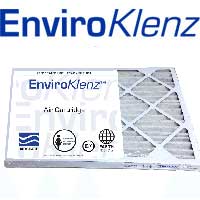 The EnviroKlenz HVAC Filter is specifically designed to remove odors and chemical pollutants from air spaces in the home. It was inspired by the special needs of people with Multiple Chemical Sensitivities (MCS), who require a home environment as free from toxic chemicals as possible. This technology captures and destroys chemicals and odors for true elimination.A unique and advanced manufacturing process greatly enhances the beneficial neutralizing properties of the earth minerals and retain their natural safety characteristics. The earth minerals may include Magnesium Oxide (MgO), Zinc Oxide (ZnO), and Titanium Dioxide (TiO2). For a 10% discount on your entire purchase, enter coupon code “toxicfree10” at checkout.
The EnviroKlenz HVAC Filter is specifically designed to remove odors and chemical pollutants from air spaces in the home. It was inspired by the special needs of people with Multiple Chemical Sensitivities (MCS), who require a home environment as free from toxic chemicals as possible. This technology captures and destroys chemicals and odors for true elimination.A unique and advanced manufacturing process greatly enhances the beneficial neutralizing properties of the earth minerals and retain their natural safety characteristics. The earth minerals may include Magnesium Oxide (MgO), Zinc Oxide (ZnO), and Titanium Dioxide (TiO2). For a 10% discount on your entire purchase, enter coupon code “toxicfree10” at checkout.
Pizza Box Chemicals No Longer Allowed by FDA
You’ve probably already heard in the news that three chemicals used as oil repellants in pizza boxes, microwavable popcorn bags, fast-food wrappers and pet food bags to stop grease from leaking through the packaging have now been banned for use by the FDA.
These chemicals are related to perfluorooctanoic acids, or PFOAs, which have been connected to thyroid disease, ulcerative colitis, and preeclampsia, a potentially life-threatening high blood pressure in pregnant women.
The good news is that PFOAs have already been being phased out for some time. They were typically found in non-stick coatings on pots and pans, but are now being replaced with “PFOA-free” coatings. Likewise, these chemicals have been disappearing from food packaging as well.
I wanted to share this story with you because it’s a good example of how change is made. This change is the result of a petition filed in 2010 by the Natural Resources Defense Council, the Center for Food Safety, the Breast Cancer Fund, the Center for Environmental Health, Clean Water Action, the Center for Science in the Public Interest, Children’s Environmental Health Network, Environmental Working Group, and Improving Kids’ Environment. These groups made it known there was a danger. By the time the FDA banned these chemicals, they had already been phased out by industry.
We can do this with other chemicals too. This is why we should be supporting these groups and others like them.
Here are some excerpts from the official FDA announcement.
On 4 January 2016 the Food and Drug Administration (FDA) issued a ruling amending the food additive regulations to no longer provide for the use of three specific perfluoroalkyl ethyl containing food-contact substances (FCSs) as oil and water repellants for paper and paperboard for use in contact with aqueous and fatty foods because new data are available as to the toxicity of substances structurally similar to these compounds that demonstrate there is no longer a reasonable certainty of no harm from the food-contact use of these FCSs.
The three FCSs which are the subjects of this petition are:
- Diethanolamine salts of mono- and bis (1 H, 1 H, 2 H, 2 H perfluoroalkyl) phosphates where the alkyl group is even-numbered in the range C8-C18 and the salts have a fluorine content of 52.4 percent to 54.4 percent as determined on a solids basis;
-
Pentanoic acid, 4,4-bis [(gamma-omega-perfluoro-C8-20-alkyl)thio] derivatives, compounds with diethanolamine (CAS Reg. No. 71608-61-2); and
-
Perfluoroalkyl substituted phosphate ester acids, ammonium salts formed by the reaction of 2,2-bis[([gamma], [omega]-perfluoro C4-20 alkylthio) methyl]-1,3-propanediol, polyphosphoric acid and ammonium hydroxide.
All three of the FCSs subject to the petition contain extended alkyl chains where all of the hydrogens are replaced by fluorine (hence the FCSs are “perfluorinated”). The toxicological profile of extended perfluorinated alkyl chains varies with chain length: On a general basis, those with extended perfluorinated alkyl chains greater than or equal to eight carbons in length demonstrate biopersistence in chronic feeding studies, while those with extended perfluorinated alkyl chains less than eight carbons in length do not (Ref. 1). Biopersistence is defined as persistence and accumulation of a material in a biological tissue due to preferential deposition of the material in the tissue combined with resistance of the material to removal from the tissue by natural clearance mechanisms (Ref. 2). As such, compounds containing extended perfluorinated alkyl chains are often classified as long- (i.e., ≥ eight carbons in length) or short-chain perfluorinated compounds, with implications for toxicology analysis including consideration of biopersistence. All three of the FCSs contain extended perfluorinated alkyl chains ≥ eight carbons in length and as such are long-chain perfluorinated compounds (PFCs).
Choosing Foam Other Than Latex
Question from Tonia
Hi Debra,
If latex wasn’t an option. What would be less bad: 100% soy based foam, or the CertiPur-US polyurethane foam?
And what do you think about this headboard:
www.overstock.com/#/9098385/customer-reviews.html?selectedOption=13075177
Debra’s Answer
First of all there is no such thing as 100% soy-based latex. If you’ve found one, please let me know. I’d like to see it. Typically soy-based foam is only about 30% soy and the remainder is just standard polyurethane.
Here is my analysis of CertiPur-US: CertiPur-US Polyurethane Foam
Personally, I wouldn’t use either one of them. If they were the only options…I don’t know which I would choose. Eating soy messes up my hormones, so I don’t think I would want to sleep on it. I would choose one of the natural beds I’ve listed at the Beds & Bedding page on Debra’s List
The headboard…in the Details it says it’s made of “wood” and then in the Specs it says “MDF, veneer, wood”.
MDF is fiberboard with resins that might contain formaldehyde, veneer requires adhesives that usually contain solvents, and you need to know what type of wood is used. Finish is unknown and may outgas solvents. Without actually physically inspecting this piece, I wouldn’t buy it. Try an unfinished furniture store for a similar style that would be made from solid wood and apply your own nontoxic finish.
This unfinished solid pine bed frame is from Bare Woods Furniture. There are many others.

Toxic Fumes from New Oil Burner — Help!
Question from Sandy F.
Hi Debra,
Hi, I’m writing on behalf of Linda H., a chemically injured friend. She recently had a new boiler and oil burner/motor installed in the basement of her apartment building in MA. She is on the second floor, and is getting a lot of fumes when the new system runs.
The boiler is a Peerless Premiere and is cast iron, and the burner/motor is made by Burnan (Burnam?). Does anyone have an idea of what the source of the fume problems might be, and what a “fix” or “fixes” might be?
FYI, she has already tried turning the thermostat up to 80 degrees, and leaving the apartment with the windows open for a day, and another day with the heat off while she was elsewhere. When she returned, still the problem.
Thanks in advance for any help.
Debra’s Answer
Readers, any suggestions?
Vinyl Closet Clothes Covers
Question from Em
Hi Debra,
Are clear vinyl clothes covers used in closets to protect clothes from dust safe to use? These are the covers that go over the rod and cover the shoulder part of clothes. The product labels says “complies with California Prop 65” but when I check the website it states has listed AC Prop 65 chemicals. I find this confusing. I purchased this product from Bed Bath and Beyond – Closetware – Closet Rod Cover.
I am allergic to dust and I would like to cover my clothes in my closet to prevent dust settling on them. Even a few days of dust accumulation which is not notifiable to the eye will create allergic problems for me.
Thank you.
Debra’s Answer
The Product Information clearly states that the product is made from “PVC,” which is considered the most toxic plastic by the environmental group Greenpeace.
This is akin to a vinyl shower curtain, which emits fumes that pollute the air.
In a small enclosed area such as a closet, these fumes could concentrate to very high levels.
I don’t recommend using this product.
Can I Block Toxic Fumes From a Sofa?
Question from Suzanne
Hi Debra,
I am in need of a new sofa. I know as of January 1, 2015 you can buy sofas without chemical flame retardants, but there are other toxic chemicals in most new furniture . I can’t afford the prices for completely toxic free sofas. If you cover sofa with a quilt or blanket, will it block the other chemicals that might be offgassing?
Debra’s Answer
Yes there are other toxic chemicals in many of the new sofas that say they are “flame retardant free.”
Unfortunately, throwing a quilt or blanket over the sofa will NOT block VOCs that may be offgassing from the sofa. The tiny molecules of these gasses with go right through the fabric.
What you need is a very thick polyethylene plastic, or even better, two sheets of polyethylene with a layer of foil in between. Like a “space blanket”
Not very attractive, but this would block any fumes.
Or you could get an air purifier.
Plastic Cooking Utensils
Question from Sue Mironer
Hi Debra,
This was posted to my Facebook page today. I’m concerned about the black plastic utensils that I ordered with my Extrema cookware. Are they safe? Are others I bought like it at other stores safe?
www.countryliving.com/shopping/g2932/the-10-most-toxic-items-at-dollar-stores

Debra’s Answer
Just went to the Xtrema website to double check what their utensils are made of and found they are not including them in their sets any more.
I remembered that they were made of nylon and found on their site that it’s OK to use nylon utensils. They are not plastic like the Dollar Store utensils.
I also saw they are now selling my favorite brand of wooden utensils, which is what I use with my Xtrema cookware.
Exceptionally Natural Pet Products
 My guest today is Debbie Guardian, Founder and President of Opie & Dixie, LLC, a small business that makes exceptionally pure pet care products. We’ll be talking about pet care, and also about principles of choosing pure ingredients, which apply to all products. In 2008, after a bout with breast cancer and an education on toxins, Debbie was reminded that what we put ON our bodies seeps right INTO our bodies. Unable to find the same toxin-free ingredients for her pets that she insisted upon using for herself, Debbie decided to develop her own line of safe, 100% natural products for both cats and dogs. While all her products are safe enough to be used by humans, they were developed for animals. Her ingredients are natural, organic and sourced in North America; her balms have been USDA Certified Organic. She steers clear of sulphates, parabens, propylene glycol and other chemicals, including synthetic fragrances. She believes in a complete “eco” brand, right down to their eco-friendly packaging. They use biodegradable labels that are made using plant-based, non-toxic ink and are printed on environmentally-friendly paper. Their containers are made of recyclable, BPA-free plastic and eco-friendly tins. They even print all our collateral on 100% recycled, 50% post-consumer waste paper which is processed chlorine-free, using soy-based ink. www.opieanddixie.com
My guest today is Debbie Guardian, Founder and President of Opie & Dixie, LLC, a small business that makes exceptionally pure pet care products. We’ll be talking about pet care, and also about principles of choosing pure ingredients, which apply to all products. In 2008, after a bout with breast cancer and an education on toxins, Debbie was reminded that what we put ON our bodies seeps right INTO our bodies. Unable to find the same toxin-free ingredients for her pets that she insisted upon using for herself, Debbie decided to develop her own line of safe, 100% natural products for both cats and dogs. While all her products are safe enough to be used by humans, they were developed for animals. Her ingredients are natural, organic and sourced in North America; her balms have been USDA Certified Organic. She steers clear of sulphates, parabens, propylene glycol and other chemicals, including synthetic fragrances. She believes in a complete “eco” brand, right down to their eco-friendly packaging. They use biodegradable labels that are made using plant-based, non-toxic ink and are printed on environmentally-friendly paper. Their containers are made of recyclable, BPA-free plastic and eco-friendly tins. They even print all our collateral on 100% recycled, 50% post-consumer waste paper which is processed chlorine-free, using soy-based ink. www.opieanddixie.com
TOXIC FREE TALK RADIO
Exceptionally Natural Pet Products
Host: Debra Lynn Dadd
Guest: Debbie Guardian
Date of Broadcast: December 10, 2015
DEBRA: Hi, this is Debra Lynn Dadd. This is Toxic Free Talk Radio where we talk about how to thrive in a toxic world and live toxic-free. It is Thursday, December 10th 2015. I’m here in Clearwater, Florida.
I’m just going to talk to you for a bit here because we’ve had some technical problems. We’re having a lot of technical problems. I don’t know, it just seems to be the time for technical problems. But anyway, I’m doing the show on the telephone today instead of with my mic and my headphones and all of those things. We’re trying to get our guest back on the line (and
I’m hoping that she didn’t go someplace and it’s not available), so I don’t have to talk all by myself for an hour.
But anyway, what we’re going to be talking about today is pet products. I particularly chose this guest because she has amazingly pure products and amazingly pure ingredients. And the way she describes them, I would like to see every product in the universe be exactly like her products in terms of their purity and their amount of information she discloses.
I’m looking, I just picked a product at random. The first ingredient is purified glacier water. Now, usually, it might say ‘water’ and we don’t know if the water is tap water or if it’s some kind of purified water or how it’s purified or what’s going on with the water. And when water is the number one ingredient in a product, you want to know is that water pure or is it toxic.
I would venture to say that most manufacturing manufacturers with water out of the tap. And occasionally, I will see that it says ‘filtered’. And here, we have purified glacier water. That makes me want to use this product right away – except it’s for pets. If I had a pet, I would use this product because of the purity of the ingredients.
Okay! So I have my guest on the line. Debbie, are you there?
DEBBIE GUARDIAN: I sure am. Good morning, Debra.
DEBRA: Good morning, good morning.
DEBBIE GUARDIAN: Actually, good afternoon for you.
DEBRA: It’s afternoon for me. I’m so glad that we managed to hook ourselves up here.
DEBBIE GUARDIAN: Absolutely, you and me both.
DEBRA: Okay, so I’m going to introduce you now. Listeners, my guest today is Debbie Guardian. She’s the founder and president of a company called Opie & Dixie. It’s a small business in San Francisco. I don’t know if you’ve heard me talking, Debbie about how pure your ingredients are. She makes these pure pet products. So let’s start with you telling us about how you got interested in this. What prompted you to start this business?
DEBBIE GUARDIAN: Well, way back, when we adopted Opie (who is our first dog), I actually began mixing supplements for her food. My very first product was a supplement that contained lecithin, kelp and primarily, flax seed which is a balanced Omega-3, -6 and -9 ingredient versus just fish oil. That’s how I began.
And in 2008, I stumbled across breast cancer as so many of us do and I really began to learn about ingredients that we put on our bodies and how those ingredients seep into our bodies. I became extremely obsessed with that. I had a lot of time to be obsessed.
DEBRA: And I understand that because I’m extremely obsessed too.
DEBBIE GUARDIAN: Well, I thought about myself and I thought about my animals because my animals are everything to me. They’ve always eaten organic diets, all-natural diets, very healthy foods. Their beds are made of recycled plastic, organic fabric. So I’m a little nutsy about that. I decided that their shampoos, conditioners and all sorts of skincare products should be pure and natural and healthy as well.
So I began looking at the ingredients on these bottle and they had parabens and sulfates and all sorts of toxins in them. I could not find anything on the market that had precisely what I wanted to find in my products.
So I began researching ingredients and found manufacturers to play around with the formulas that I wanted. There was a lot of back and forth with “a little more shea butter please, a little less this, a little more that.” Finally, we nailed some formulas that worked, that I felt were safe and the way I want it.
DEBRA: We still have a few minutes. I want to spend a fair amount of time talking with you about the various ingredients in your products today because you obviously have chosen them so carefully and I want our listeners to become more familiar with what some of these ingredients are and for us to talk about how difficult or easy to get these ingredients and things like that. I know that when I started becoming interested in this 1978, I approached this by saying, “Well, these toxic chemicals are making my body sick. What are the toxic chemicals that are in these products?”
And so to me, I don’t look at a product and say, “There’s a product on the shelf.” I look at the product and say, “What are the ingredients on the product?” And so, it’s a list of ingredients to me. I really found that, especially back in 1978, that it was really hard to get the ingredients on a lot of products.
So nowadays, especially, you’re just such a shining example – you really are. I’m looking at your products all day long and the ingredients list.
DEBBIE GUARDIAN: Thank you, thank you.
DEBRA: I read your ingredients list and I thought, “This woman knows what she’s talking about.”
And also, that you are so transparent about all the ingredients. One of the biggest problems that we face today is that people want to be able to evaluate the products for toxicity, but the most toxic products don’t list any of their ingredients on the label.
DEBRA: Very true!
DEBBIE GUARDIAN: So I think there needs to be a big shift in the marketplace from secrecy and toxicity to openness, transparency and organic-ness. You are right there just as a model of what everyone needs to be doing. I can’t say that enough.
DEBRA: I try to be, thank you. I try to be. My girls as I call them, my dogs, are 14 now. And let me tell you, they are very healthy – knock on wood. I attribute this really to their diet, but also to their body care.
Canine cancer is the number one cause of death following euthanasia due to overpopulation. And most dog shampoos have always contained sulfates and parabens. They’re just a very, very common ingredients because of the bubbliness. And parabens has been linked to cancer. It’s been linked to developmental problems, reproductive problems, organ system toxicity, neurotoxicity. They’re nasty. I just did not want those in my products.
Even synthetic ingredients, I preferred to go with essential oils except for my cat products because cats are very sensitive to those essential oils and they can be toxic to cats. But even synthetic fragrances are mostly petroleum-based and not so much for pets with allergies. Often, they can cause sneezing, water eyes, skin irritations. A lot of people don’t realize that it is that simple, a synthetic fragrance in a shampoo.
So I try to really research these ingredients. They’re all sourced in North America. I really stand by these. I wouldn’t use anything else for my girls.
DEBRA: Well, when we come back from break, I’m going to ask you about some individual ingredients so that people can learn more about what really goes into an ingredient and chosing an ingredient.
You’re listening to Toxic Free Talk Radio. I’m Debra Lynn Dadd. My guest today is Debbie Guardian. She’s the founder and president of Opie & Dixie (and those are the names of her two beloved dogs). Her website is OpieandDixie.com. We’ll be right back.
DEBRA: You’re listening to Toxic Free Talk Radio. I’m Debra Lynn Dadd. My guest today is Debbie Guardian. She is the founder of Opie & Dixie. I was sitting here in front of my computer and then I started looking things up during the break and then [inaudible 00:13:58]. Anyway, she’s the founder and president of Opie & Dixie. The URL is OpieandDixie.com.
So let’s talk about the one that I just picked at random, Organic Oatmeal and Almond Shampoo. This has some very interesting ingredients in it. So first, let’s just start with the purified glacier water. What is your thought process behind that they should have purified glacier water?
DEBBIE GUARDIAN: When water is purified, it has been mechanically filtered or processed to remove impurities. We tend to want to drink purified water. I like both spring water and purified water in my products because, again, I can trust that there are no toxins in there.
There are two states that are known for great water – one of them is New York, one of them is San Francisco. I’m sure if I were to use bottled water, it wouldn’t be toxic. However, and I mentioned earlier, Debra, I’m obsessed. I’m just obsessed with purity and safety through and through. If it’s safe enough to consume, it’s safe enough to put on your body.
DEBRA: Well, we should be looking at not putting anything on our bodies or our pets’ bodies that we wouldn’t eat or drink.
DEBBIE GUARDIAN: Agreed!
DEBRA: So glacier water, is this glacier water because the San Francisco water comes from a glacier?
DEBBIE GUARDIAN: This ingredients was actually offered by our shampoo manufacturer who is in British Columbia.
DEBRA: Oh!
DEBBIE GUARDIAN: Yeah! Yeah, yeah, yeah. And believe it or not, all our balms are manufactured right here in the US and the shampoos in British Columbia. I stumbled across this wonderful company that makes products for humans as well and I began reading about their methods and their holistic goals. I thought, “Wow! Glacier water, I’ve never thought of that.”
So he offered this up and I thought to myself, “Sure! Why not? Let’s absolutely go with it.” And I wasn’t even familiar with what it meant. I didn’t realize that it was processed to remove toxins. That’s why it’s in those ingredients.
Canada, as a matter of fact (who knew?) has much, much stricter regulations than the United States. And the reason we haven’t purchased their organic certification is because of how expensive is and we’re, of course, a smaller company. It’s very, very expensive and goes through an extremely extensive process. So we’re certified organic by a smaller organization called EcoGreen which works just fine, but it’s much less expensive than the USDA certified organic testing that we do here in the United States.
DEBRA: Yeah, USDA organic is very expensive. I still want to ask you about the glacier part. Does this mean that the water comes from a glacier?
DEBBIE GUARDIAN: And frankly, I could not tell you precisely where he sources it. He is very confidential about certain ingredient. However, I trust them explicity. Sorry about that, sorry about any noise. One of my dogs just got back from her dog walk and has stomped into the home. So if you hear any noises, that’s who it is.
DEBRA: I actually can’t hear any noises because I’m on the phone, so I don’t have the sound quality. But I don’t mind any dog barking any background.
DEBBIE GUARDIAN: Good. Well, hopefully, you won’t get any of that. But I leave a lot of the sourcing to my manufacturers.
Glacier water, the speeds vary very greatly. They’re a denser body of water and it’s constantly moving. He explained this to me. And I won’t lie to you. Through much of it, I thought, “Okay, it’s very complicated.” He explained that glacier ice is actually the largest reservoir of fresh water on earth and that the temporal climate really help in purification of this water. It’s totally confusing to me. I can’t lie to you. It’s a confusing thing, which is why I don’t physically source the ingredients myself.
DEBRA: Yeah, I can understand that. I didn’t mean to put you on the spot about it. I was just so fascinated by your ingredients.
DEBBIE GUARDIAN: Nah, fire away. If I don’t know, I will not lie.
DEBRA: Okay, good. So, let me ask you the next one that I’d like you to talk about – although let’s see what time is it. Oh, in less than a minute, we’re coming up on the break. But what I want to ask you about and have you talk about after the break is one of your ingredients is certified biodynamic avocado oil. And usually, people might go so far as organic, but biodynamic is like an extra step. We’ve talked about biodynamic on the show before, but I’d like you to tell us what it is when we come back and why you chose that.
DEBBIE GUARDIAN: Sure thing.
DEBRA: Yeah, yeah. Also, other things that’s in this particular product are some organic herbal ingredients of various sorts and wild crafted ingredients. So when we come back, we’ll talk about these different terms that are not usually seen on labels.
You’re listening to Toxic Free Talk Radio. I’m Debra Lynn Dadd. My guest today is Debbie Guardian. She’s the founder and president of Opie & Dixie in San Francisco. Their domain is OpieandDixie.com. We’ll be right back.
DEBRA: You’re listening to Toxic Free Talk Radio. I’m Debra Lynn Dadd. My guest today is Debbie Guardian. She’s founder and president of Opie & Dixie. She’s at OpieandDixie.com. We’re talking about exceptionally pure ingredients that go beyond what’s normally in products.
So Debbie, why don’t you tell us about biodynamic and wild crafted and maybe compare organic and biodynamic and wild crafted?
DEBBIE GUARDIAN: Sure! So biodynamic is actually a method of farming. Holistically, biodynamic agriculture is farming in which soil, crops, animals, even the farmer act as a very self-contained, united entity. So much of it is a feel, a feel for how these people – how can I word this? They don’t want to harm the soil, they are focused on the soil and the care of the soil and they enhance and replenish it with holistic herbs and minerals. There’s a growing organic farming movement particularly in other parts of the world. And it’s not just the farming. It’s then a feel for the farmers, a spiritual development, bonding with the earth. It’s a very, very innovative approach to farming.
DEBRA: Yeah. If I can interrupt you for a second, one of the things I’ve noticed over the years (which is an important point to me) is that you can have something that’s free from toxic chemicals, but it might be that’s all it is, free from toxic chemicals. And in order for us to heal, it’s important that not only are we free from toxic chemicals, but we also have the positive factors of nutrition and sunlight and all these things that are in the natural world that we’re part of.
So, biodynamic farming and other practices in the world go beyond just avoiding toxic chemicals to many of these other factors.
DEBBIE GUARDIAN: Exactly! And this is why we’ve also used some wild-crafted ingredients. I don’t know if you’re – well, you probably are. But your listeners…
DEBRA: I know, but you tell us about it.
DEBBIE GUARDIAN: You know it all. I know you know it all. Wild-crafted actually refers to a plant or herb that is gathered in the wild in its very natural habitat. It is not cultivated. It’s grown without herbicides or pesticides or fertilizers. It’s harvested in a very ecologically sustainable manner because it is natural. It’s growing on its own in its natural world.
I thought that was actually an interesting concept that, again, our Canadian manufacturer brought up. He’s been a fountain of information.
DEBRA: Wow!
DEBBIE GUARDIAN: Yeah, yeah. Really terrific! He’s my secret weapon or my secret sauce or whatever they say. The wild-crafted is truly as natural as you can get.
DEBRA: It is, it is as natural as you can get. It really is about the plant being in its own environment and all the factors that are at play. So you have organic which would be no pesticides and no herbicides. And then, you’d have biodynamic which has other factors added. But those are still both grown in a field with a farmer. Wild-crafted, these plants are growing in their own natural habitat with the little birds or squirrels or whatever roaming around.
DEBBIE GUARDIAN: Exactly! Because you’re out there in the wild.
DEBRA: It’s just out there in the wild. And then people come and very careful pull those plants out of their wild habitat in a way that allows them to continue to grow. So they don’t take all of it. It’s just a sustainable thing.
DEBBIE GUARDIAN: Exactly!
DEBRA: I think each of those ways of growing those plants would have different qualities to them. Even if it was exactly the same plant grown in those three ways would have different qualities.
I was talking to a woman who I think is going to be a guest in January. Well, [inaudible 00:32:02] in Maine. She is certified organic wild-crafted. I said, “How can you be certified organic and wild-crafted?” And the way that occurs is that in Maine, they have all these wild blueberrings going all around the place. And what she does is she just carefully removes the forest from around the bush. So, she’s not planting anything. She’s just making it easier for the plants to grow. She gives it more space and light and air. So, she’s cultivating her wild-crafted plants. I just thought that was so wonderful.
DEBBIE GUARDIAN: So interesting. I’m going to tune in to that show for sure.
DEBRA: So, let’s see. Let’s take another one. I’m looking at this. And the first thing I’ll say is it’s not 100% organic. Let’s address that over the next couple of minutes before we go to the break. I think that people like you, if were at all possible, would be 100% organic and wild-crafted and all those things. But it’s because you can’t get those ingredients, yes?
DEBBIE GUARDIAN: Exactly! Some ingredients are very, very difficult to find in an organic form. One of the ingredients, as a matter of fact, that is organic is our shea butter.
And interestingly enough, it can sometimes be a little grittier than the non-organic version. I mean, it’s very, very high fat butter. It’s full of vitamins. It’s got A and E. It’s wonderful for dry patches and skin. It heals. I use some of our shea butter products, our balms actually as a lip balm. It’s the best lip balm I’ve ever found. It makes lips soft. I’ve been thinking of manufacturer it as ‘buy one for your dog ,buy one for yourself’.
DEBRA: One for you!
DEBBIE GUARDIAN: I know! Exactly! I mean, shea butter is an amazing miracle ingredient. However, what we noticed is using the non-organic form was a little bit smoother and softer. So the product itself is a little grittier, but they’re just for dogs. They don’t mind.
DEBRA: Well, sometimes, you need to make those choices. We’ll talk about that when we come back. You’re listening to Toxic Free Talk Radio. I’m Debra Lynn Dadd. My guest today is Debbie Guardian (another Debra) and she’s the founder and president of Opie & Dixie in San Francisco. They’re at OpieandDixie.com. Opie and Dixie are her dogs. We’ll be right back.
DEBRA: You’re listening to Toxic Free Talk Radio. I’m Debra Lynn Dadd. My guest today is Debbie Guardian, founder and president of Opie and Dixie. Those are the names of her two dogs who have been very quiet during the show. Her website is OpieandDixie.com.
So let’s talk about choosing ingredients when you can’t – I know that one thing that obsessed people like you and I and a lot of listeners want to do is if they decided to go organic, they want 100% organic. They don’t want it to be partially toxic. And so I think that people are having to make choices because they can’t find something as pure as they would like it to be. Can you just talk about that in your experience, your approach about that and your thoughts about that?
DEBBIE GUARDIAN: Well, sure. Very, very simply, some ingredients just cannot be found in an organic form and others are prohibitively expensive. It boils down pretty much to that. Number one, can you find them? And number two, can you afford them? And very often, you simply cannot afford them. And the certification process becomes even more expensive, which again, for a very small company, you’ve got to battle between what you believe in and want to do and what you realistically can do.
DEBRA: And I think everybody is in that position.
DEBBIE GUARDIAN: Yes, absolutely. I mean, in the US, our certification is ran by some private agency. In some countries, it’s overseen by the government and purely by the government. So it can really be a little pricey.
But again, as I’ve mentioned, there are some ingredients (which I can’t even think of at the moment) that are simply not available.
DEBRA: Well, I can think of one, salt. Salt can’t be organic.
DEBBIE GUARDIAN: There you go!
DEBRA: If you’re looking for organic, it has to be an agricultural product. So you could have something like salt which – well, I was about to say something, but this is going to open up a whole other thing, but I’ll say it anyway. I mean, if it says ‘salt’ on the label (and I’m not being critical of you here), if it just says ‘salt’ on the label, you don’t know what type of salt it is unless it’s specified what type of salt it is. And so I was giong to say that it’s not going to be toxic if it’s salt because it’s not an agricultural product, but there could be all kinds of pollutants in salt.
I was just on another show a few days ago (or last week, I think it was, or the week before). As I was doing the show, in the break, I was reading my emails. It arrived in my inbox during the show that salt, sea salt, has bits of plastic in it. They actually were measuring these samples of sea salt and finding all these plastic.
I was reminded that when I fly into the San Francisco Airport as you’ve probably done many times – I used to live in San Francisco. I was born and raised in Oakland and Marine County. San Francisco is a place that I know. When you fly into the airport in San Francisco, you see the salt beds where they’re bringing in water from the San Francisco Bay and dehydrating it right around the San Francisco Airport right next to the freeway with all the planes flying over the salt beds and you’ve got the San Francisco Bay pollutants and that’s sea salt.
DEBBIE GUARDIAN: That, I’m going to go to my cabinet and throw that baby out. I had no idea!
DEBRA: There are salts (which I’ve talked about many times, but I’ll say it again) like real salt and Himalayan crystal salt which come from underground seas where the water was there millenia ago and it’s now buried underground. So there are no pollutants in that salt. But any sea salt that you’re getting that’s taken from surface water is very polluted.
And so, in my opinion, I think that, first of all, the point I was trying to make cannot be organic ever because it’s not an agricultural product. But I think that there’s salt and there’s salt. That’s why I put so much attention on ingredients now that
I’m obsessed with getting everything labeled properly.
DEBRA: Right! And the interesting thing that I’ve learned in this process is that in many cases – and you know this – ingredients are called ‘organic’ or ‘100% natural’, but they are really not. Who is regulating what goes into certain bottles.
I used to buy a personal healthcare product that had the word ‘organic’ in the name, in the brand. And it was pulled and had to be rebottled (you may know who they are) because it was just discovered that while they were using that term in their very name, there were no organic ingredient whatsoever in their product.
DEBRA: Right! That’s right, that’s right.
DEBBIE GUARDIAN: And you think about what you’re doing. You are really trying to do the right thing, yet there are companies who really get away with not doing the right thing. And this is more so for humans than animals. But again, as
I’ve said 50 millions times, my animals are as important to me as I am to myself, as any human being. What I provide for them is never going to be any less than what I provide for myself.
I mean, you and I think very, very alike when it comes to ingredients. You do the very, very best that you can. You focus on integrity rather than money-making, which is what we stand very firmly by, and take it from there.
DEBRA: Yes. I guess the whole point of what I was asking earlier is that we have the idea (even I think you and I have the idea) that we want it to be perfect and we want it to be completely 100% no toxic anything, but you can’t stand anywhere on the planet and have it be 100% non-toxic.
DEBBIE GUARDIAN: Exactly!
DEBRA: Our planet is contaminated. Every bit of soil, water and air is contaminated with toxic chemicals. But what we can do is that we can choose products like yours that have the best least toxic ingredients available and be free of the chemicals, the chemical ingredients that are known to be toxic such as you were talking about parabens earlier causing cancer. We could certainly be free of those toxic chemicals even if not 100%.
DEBBIE GUARDIAN: Exactly! We do the very, very best we can. If we cannot find organic, 100% natural is what we veer towards and in most cases, I will trust 100%. But I really want that 100% in there.
DEBRA: Yes, yes.
DEBBIE GUARDIAN: I know if I can’t find organic, I want the next best ingredient that I can possibly find.
DEBRA: And I’m the same way. I’m the same way. Where I draw my line is synthetic. I don’t want things artificially man-made out of petrochemicals.
DEBBIE GUARDIAN: Right!
DEBRA: So we want to cross the line into something that’s renewable. I’ll accept that even if it isn’t organic. If I can’t get the organic thing, then I’ll go with the natural ingredient or material. But I stop with petroleum-based products except occasionally if I have to because there’s no other choice. I’ll use a non-toxic petroleum product, but not on my skin. I might be in paint, but not on my skin and I’m not going to eat it.
DEBBIE GUARDIAN: Right, right. I mean, sometimes, you just can’t find what you’re looking for. It just does not exist. So like you, the best we can do is the best we can do. I do steer clear of synthetic fragrances because there are so many people with sensitivities. I have no sensitivities and have never felt them, but I also think of those around me.
DEBRA: Yeah!
DEBBIE GUARDIAN: So even though these are pet products, they are human grade. I use them myself. I’ve tested them on myself before going to market with them. And there’s nothing I would use on them that I wouldn’t use on myself.
DEBRA: That’s so good to hear. We’ve only got about a minute left, so is there anything that you want to say that you haven’t said.
DEBBIE GUARDIAN: No, not really. But if anybody is interested actually in reading a little bit about our ingredients, I do have a page on my website dedicated only to ingredients. I talk a little bit about why we use organic, what biodynamic means, what we don’t use and why we don’t use it. I really get into each ingredient and what its benefit are.
Even for our packaging, we use eco-friendly packaging and eco-friendly glues. We just try to stick by our word in all areas.
DEBRA: And I see that. I see this very long page with all your ingredients. This is great! I love it when I go to a website and I see that.
Well, we’re coming to the end. Thank you so much, Debbie, for being with me. Again, her website is OpieandDixie.com.
She’s got all these great products for your pets. I’m sure we’ll be talking again. Thank you.
DEBBIE GUARDIAN: Sure! Hugs there, Debra. Thank you for inviting me.
DEBRA: You’re welcome. You’ve been listening to Toxic Free Talk Radio. I’m Debra Lynn Dadd. Be well!
Green Building Supply
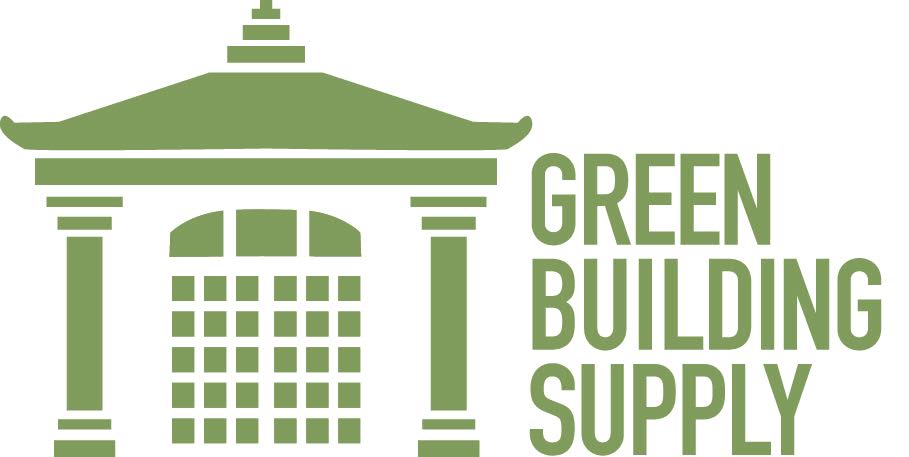 This site sells ONLY flooring that is non-toxic and safe for the environment. All are made with no added urea formaldehyde in the adhesives and zero VOCs in the finishes. Most have third party certification and comply with European standards and exceed CARB2. In addition, all (except the wool) are made from sustainably harvested forests, many are FSC certified and most contain recycled content or come from reclaimed sources. Choices include hardwood, bamboo, cork, natural linoleum (Marmoleum), wool carpet, underlayment, moldings, tools and accessories. All have been personally tested by the company and used by many with MCS for the past 25 years.
This site sells ONLY flooring that is non-toxic and safe for the environment. All are made with no added urea formaldehyde in the adhesives and zero VOCs in the finishes. Most have third party certification and comply with European standards and exceed CARB2. In addition, all (except the wool) are made from sustainably harvested forests, many are FSC certified and most contain recycled content or come from reclaimed sources. Choices include hardwood, bamboo, cork, natural linoleum (Marmoleum), wool carpet, underlayment, moldings, tools and accessories. All have been personally tested by the company and used by many with MCS for the past 25 years.
Green Building Supply
 Paints and coatings that “contain no toxic ingredients, produce no indoor or outdoor air pollution and perform as well or better than their toxic counterparts.” This comprehensive selection of products has everything you need to paint or finish anything, including paints and primers, plasters and pigments, grouts and grout sealers, odor blocking sealers, wood stains and sealers, strippers and thinners, caulks, sealants, adhesives, and more. All personally tested by the company and used by many with MCS.
Paints and coatings that “contain no toxic ingredients, produce no indoor or outdoor air pollution and perform as well or better than their toxic counterparts.” This comprehensive selection of products has everything you need to paint or finish anything, including paints and primers, plasters and pigments, grouts and grout sealers, odor blocking sealers, wood stains and sealers, strippers and thinners, caulks, sealants, adhesives, and more. All personally tested by the company and used by many with MCS.
The Simplest Products for Real Beauty
 My guests today are Tom Wennerstrand and Ben Okamoto, who are developing a new approach to beauty products. Tom is the creator of the REAL Beauty approach and product line. Tom was Inspired and taught by his career of ten years as hair and makeup artist working at Paris, Milan and New York fashion week, and building “Noir Concept”, a unique lifestyle salon concept for Helsinki. His career combined with his personal quest for deeper understanding of well-being and beauty lead to the development of “REAL Beauty”. Tom teamed up with Ben Okamoto to bring the concept of REAL Beauty to life. Ben obtained his his BA majoring in Economics and Political Science and International Relations at the young age of 19. After a year of working as the Commercial Manager Australia’s biggest telecommunication company, Ben became disillusioned with corporate life and moved to Berlin where he fell in love with the REAL Beauty concept.They have been working together since, and now have a Kickstarter campaign to launch their products. www.realbeauty.life
My guests today are Tom Wennerstrand and Ben Okamoto, who are developing a new approach to beauty products. Tom is the creator of the REAL Beauty approach and product line. Tom was Inspired and taught by his career of ten years as hair and makeup artist working at Paris, Milan and New York fashion week, and building “Noir Concept”, a unique lifestyle salon concept for Helsinki. His career combined with his personal quest for deeper understanding of well-being and beauty lead to the development of “REAL Beauty”. Tom teamed up with Ben Okamoto to bring the concept of REAL Beauty to life. Ben obtained his his BA majoring in Economics and Political Science and International Relations at the young age of 19. After a year of working as the Commercial Manager Australia’s biggest telecommunication company, Ben became disillusioned with corporate life and moved to Berlin where he fell in love with the REAL Beauty concept.They have been working together since, and now have a Kickstarter campaign to launch their products. www.realbeauty.life
TOXIC FREE TALK RADIO
The Simplest Products for Real Beauty
Host: Debra Lynn Dadd
Guest: Tom Wennerstrand
Date of Broadcast: December 09, 2015
DEBRA: Hi, I’m Debra Lynn Dadd, and this is Toxic Free Talk Radio, where we talk about how to thrive in a toxic world, and live toxic free.
It’s December 9, 2015. I’m here in Clearwater, Florida, where it’s getting colder. It’s actually getting to be winter, which is the most beautiful time of year here in Florida. Every place has lovely summers, and then very cold winters. And here, our summer is so hot, it’s almost unbearable, and the winter is a beautiful of year.
And so everybody is happy here now because it’s getting to be winter.
Today, we’re going to talk about something entirely different. My guests are developing – well, what they want to do is they want to change the world of beauty, change completely how we think about it, and the kinds of products that we’re using.
They have some very interesting ideas.
Now, they actually don’t have their products in the market yet, but they have a Kickstarter campaign. So if you’re listening to this, and you’re interested in what they’re saying, and want to participate in their Kickstarter program, you can just go to ToxicFreeTalkRadio.com, and look for today’s show, and you will see the link to their Kickstarter program, which I could say to you, but you would not remember.
These two young men are from Germany. They live in Germany, but they’re currently in Australia. So we’re talking to them via Skype from the other side of the world, at least from the other side of the world for me. They might be just exactly where you are.
My guests are Tom Wennerstrand and Ben Okamoto.
Hi, Tom and Ben.
TOM WENNERSTRAND: Hello from sunny Australia. We’re currently enjoying some 35 to 40 degrees weather, Celsius that is.
So opposite to what you’re feeling, but maybe I’m going to be looking forward to going back to winter Europe after one month of this sun here.
DEBRA: So Tom, why don’t you – I know that – Tom started – he developed this idea, and then Ben has been working with him.
So Tom, why don’t you start, and tell us what motivated you to come up with this huge, different way of looking at the world of beauty, and how did all that happen?
TOM WENNERSTRAND: Well, that’s an interesting question. It definitely wasn’t that straightforward as to think of what that was to begin with. My work, for the past 10 years, I worked as a hair and makeup artist in various different countries, and for the fashion industry.
It has allowed me to see a lot of dedicated people working on this creative field.
I think to be able to come to this conclusion and to be able to offer the solutions was a long-winded process that first had to enable to see through the first and the most upper-end layer of beauty that we are all offered to get the deeper connection to how it resonates on a cellular level, to make it more synchronized, and more harmonized with how we want to feel, and what our own [inaudible 00:04:53] of healthy, beauty and happiness, and how this could be more in tune with what the products are actually made of. So this health, beauty and happiness would resonate better on all levels.
DEBRA: Tom, was there an a-ha moment for you? You’re working in the beauty industry. I think this is quite a change, and I see this over and over in the guests I have on the show where they’re working in a certain industry, and then they go, “No, this is too toxic, and I need to do something.”
So was there – you’re working in the beauty industry for all these years, and now you’re wanting to just have something be – it’s the polar opposite to what you’ve been doing.
So what was that – what happened that made you – that was the change point?
TOM WENNERSTRAND: It’s well said about how this could be viewed as an opposite. But at the same time, it felt like there’s a surface that I was working on leisurely, and there was also this budding interest to just scratch that surface a little bit deeper and see what’s going on underneath.
One of the really enlightening moments for me was to see so many models who are top models of the world being – they’re real themselves. They’re real – natural themselves, young girls who are working with their skin and their hair as their working medium, and how in tuned they seem to be with the less is more thinking, which many times is in stark contrast of their employers’ views. But that seemed to resonate with me is that if you could – just see the natural presence of someone who has taken it to their heart to not only look good, but want to feel good while looking good, and how that person tells that I get over this skin stressors that my work exposes me to. I get over them with coconut oil, or exchange tips with their fellow friends on the Fashion Week, sitting next to each other, and telling them how did you fix your hair because this work is taxing for the hair because the hair is being blow-dried and curled so much throughout the time.
And these tips were revolving around very natural solutions that have always existed.
This is a simple less is more approach that seemed to be very commonplace and intuitively discovered by these girls who most are under the 20s.
That resonated with me and wanted me to look further into this matter.
DEBRA: Well, it’s so interesting that you’ve got this viewpoint from listening to women who are selling the other viewpoint.
The solution didn’t come from the industrial beauty world. It came from listening to people who were – whose hair and skin had been damaged by using those products as their solution.
TOM WENNERSTRAND: Yes. I always – as I said, general world view wanted to think that there is – I always try to see and want to think that instead of trying to see an evil agenda there, I’d like to see that there is lots of confused people who are just trying to do their best.
The moment that you see that something is terribly wrong, you will just realize – that moment of enlightenment is just that you are less confused than most of your peers, and most of the companies in the marketplace. And that’s what can create that kind of urge to take action and start further into the cause because it will be in quite stark contrast to how content you might have been able to feel until then.
And it was a journey for me to discover, better, simpler skin care solutions when the skin is already acting up, when there’s already something happening. And that also I recognize myself that when it seemed like to heal skin, I’d prescribed medical ointment seem to exacerbate situation, and then when I found something natural that would settle it.
DEBRA: Go ahead. Finish your sentence.
TOM WENNERSTRAND: No, this is [inaudible 00:10:40] I started to – [inaudible 00:10:44].
DEBRA: Good. We need to go to break. When we come back, we’ll talk more with Tom and Ben. We will let Ben speak. He didn’t get to say anything. But we’ll get to Ben in the next segment.
You’re listening to Toxic Free Talk Radio. I’m Debra Lynn Dadd, and my guests today are Tom Wennerstrand and Ben Okamoto, and they are developing a new approach to beauty with their company, Real Beauty. And they have a Kickstarter campaign. You can go to ToxicFreeTalkRadio.com and get the link for that.
We’ll be right back.
DEBRA: Thank you all listeners for holding on there while we solved our little technical problem here.
So my guests today are Tom Wennerstrand and Ben Okamoto, and we’re talking about their creation, Real Beauty.
Ben, I think it was you, on your Kickstarter page, you have a lovely video. And I think it was you that said that real beauty is within. And there was more that you said. Do you want to tell us, make that statement?
BEN OKAMOTO: Well, actually that was Tom, but I can talk about that. The whole concept is that – it is based around the fact that every person is born with real beauty within them. So anything is suitable to enhance that beauty – if not enhanced – the only thing suitable for that is natural products.
TOM WENNERSTRAND: We’ve got minimal interference.
DEBRA: I like that concept. So many of the commercial products are designed to – you put on all this makeup, and you look maybe glamorous, but you don’t look like yourself. And I remember at some point in my life where – when I was a teenager many years ago, all I wanted to do was wear makeup. I was like, “I want to look like those models in the fashion magazines.”
And so I couldn’t wait until I was 16, and I could wear makeup.
But it didn’t look like me. And I remember at some time in my adulthood, looking at my face in the mirror, and saying, “Wait a minute. I don’t want to look like this. I want to look like this. I want to look like myself.”
And now, I actually don’t even wear makeup at all unless I am going to be on television, or on a webinar or something, and I need to show up for the cameras, or have my picture taken. But the rest of the time, I don’t wear makeup at all.
And when I do, I want to look natural. I just want to wear a little mascara to enhance my eyelashes. I don’t want putting on a whole – I don’t know if women still say this but back in the 50s, people used to say, “I’m going to go put on my face.”
My grandmother used to say that. I have to put on my face.
BEN OKAMOTO: I’ve definitely heard a few drag queens say that in my life actually.
TOM WENNERSTRAND: And real women too, to an extent. I think what’s behind it – because I like to see this as a – not so much of a polarized thing as of you having to choose between the two, but more of finding that real beauty in the natural you, and embrace that. And that is a discovery journey that I feel like we’re all furthest detached when we are teenagers, and then we grow back to.
It can be enhanced greatly if our nutrition and toxic exposure levels are checked in a way that our skin can be at its best and can heal, and our can look great on its own, and has this kind of chance to show what it has.
I also feel that there is a time and place for eyeliner and lipstick, and when that happens, you’re actually communicating and we are the most complex communicating animal on this planet.
And in that sense, I feel like this is a kind of play that we have brought into. But it’s all about proportion, and it’s – beauty is proportion, but also maintaining. It is to maintain the beautiful proportion of where the natural preset prevails underneath that all.
And that’s why I say that I wanted to come up with the solution that I can also – also go back to the beauty, be a conventional beauty industry world which [inaudible 00:19:44] to makeup artist colleague for example, who chooses to communicate more through makeup that she’s wearing and her clients.
And whereas in this case, I would say that we can just take one step back, and see that we’re actually not talking about two different things, but we are offering intervention where the payoff is the best.
So nobody can really see what deodorants or shampoo or body lotion you are using, but in this sense, that is not so much communication. So as we’re not communicating with those things, we might as well provide our bodies and ourselves, things that they thrive with on this subconscious level.
DEBRA: There is a difference between putting on the artificial face, and supporting one’s own natural beauty. And I just think that for someone to do something that makes her skin beautiful and their hair beautiful – one of the things that I recently did, and we’re coming up on the break in about 10 seconds, but one of the things that I worked on last year actually was to get all the hair care products out of my hair.
And I did a hair detox.
And so I now have my natural, virgin hair. And it’s [inaudible 00:21:12].
So when we come back, we’ll talk more about your products.
You’re listening to Toxic Free Talk Radio. I’m Debra Lynn Dadd, and my guests are Tom Wennerstrand and Ben Okamoto from Real Beauty. And they have a Kickstarter campaign. We’re going to hear about their products when we come back from the break.
But if you want to go see their Kickstarter campaign page that talks about all their products, you can go to ToxicFreeTalkRadio.com, look for this show and click right on the link.
We’ll be right back.
DEBRA: You’re listening to Toxic Free Talk Radio. I’m Debra Lynn Dadd, and my guests today are Tom and Ben from Real Beauty, and we’re going to talk now about their concept, not just their products, but their concept, because the whole concept is different.
If you go to their Kickstarter campaign page, it says, “To revolutionize cosmetics, you have to be more than just toxin-free.”
And that’s what they’ve done, is that they’ve created a whole new idea.
So tell us about the concept, Tom or Ben?
BEN OKAMOTO: This is Ben speaking. When Tom told me about the whole [inaudible 00:27:21] and I was relatively new to the idea. And so when he told me [inaudible 00:27:31], I was just so surprised because I think you can [inaudible 00:27:35] from the fact that – I think a lot of people just look the other way of really, natural and simple products. Literally, they’re just not sold in a bottle anywhere or available online. So that was [inaudible 00:27:54].
[inaudible 00:27:55] basically, all of these products [inaudible 00:27:58].
So the concept is [inaudible 00:28:07] people that want the knowledge, that want the [inaudible 00:28:10], and they can either get them from us or they can take the information and [inaudible 00:28:17].
DEBRA: I just want to repeat that because –
TOM WENNERSTRAND: [inaudible 00:28:21]
DEBRA: I want to just repeat what he just said because I’m having a little static on the transmission here. It’s not as clear as it was earlier.
Todd, maybe you could check that so we can have it little clearer.
What Ben just said was that it’s about having the products be so simple that you could actually make them yourself. And one of the things that they told me when I talked to them before the show was that part of the plan is to sell the ingredients themselves, so that if you wanted to make them, yourself at home, you could.
And I thought that that was amazing because the world is so full of trade secrets and things like that and yet, here their concept includes having the information on how to make it yourself, or you can buy it, and that’s an amazing concept right there.
So I’m told that the listeners can hear what you’re saying, so go ahead.
BEN OKAMOTO: It’s like having this [inaudible 00:29:44] recipe that your family has been using for generations, and just your family has it. And you can – you’re sharing the secrets with everyone.
I think that a lot of people will appreciate the fact that you can make it [inaudible 00:30:05], getting it from us. Or if you want, you can do it at home.
TOM WENNERSTRAND: I feel like we’re at the moment [inaudible 00:30:15] as a humanity [inaudible 00:30:18] being able to communicate [inaudible 00:30:21] overconfidence and [inaudible 00:30:27] we are actually becoming [inaudible 00:30:31] of becoming more aware of [inaudible 00:30:37].
DEBRA: You can hear me? I didn’t hear what you just said.
I’m assuming – you know what? I’ve never had so many technical problems on a show as we are having today. But let’s just go on and what I really want the listeners to know is that the concept here is not that you buy a different product for every use, but you only have five products. And those five products give you 35 uses.
And that’s such a radically different concept to me because not only are they things that anybody could make at home, but you figured out what all the uses are.
And so why don’t you tell us about that?
TOM WENNERSTRAND: Yes that’s the idea. I would like to add to that that our range which can be seen [inaudible 00:31:56] www.RealBeauty.Life, is actually [inaudible 00:32:00] than five products, but why we would like to highlight the five products that are [inaudible 00:32:05] is that we really feel that these [inaudible 00:32:12] secrets [inaudible 00:32:15] would like to make back [inaudible 00:32:17] common knowledge of our consciousness as [inaudible 00:32:23] knowing how to look [inaudible 00:32:25] without creating toxic waste on our skins or to our environment.
And the idea is also that this liberates us from needing to navigate the jungle of conventional products because it’s ever increasingly complicated and difficult, and [inaudible 00:32:47] more and more and smaller and smaller [inaudible 00:32:53] to be on par on what’s happening and what’s going on.
[inaudible 00:32:59] I feel nature’s answers have always been simple, and they’ve always been with multiple uses and multiple solutions. [inaudible 00:33:11] that can be passed down, and re-discovered by simply trusting your intuition.
So in this sense, this [inaudible 00:33:20] needs to be edible, so that you can safely experiment them. You can try them on your skin. You can try how they work in [inaudible 00:33:31] and intuitively, find a minimum [inaudible 00:33:34] and minimum product requiring beauty regime that [inaudible 00:33:43] and maintains [inaudible 00:33:43] the kind of level of hygiene that we are, as [inaudible 00:33:50].
BEN OKAMOTO: And that’s what we’re doing different [inaudible 00:33:53] companies. We don’t feel the need to add extra ingredients in the product just to make –
TOM WENNERSTRAND: Make the product.
BEN OKAMOTO: Make the product [inaudible 00:34:03]. The simple ingredients have worked for years, and they’ve worked so effectively. What’s the point of adding all these extra ingredients?
And what we’ve done is we’ve made the solutions available, and we packaged them in a really beautiful way. So if you want to [inaudible 00:34:27] more honest and simple solutions that have proven to work [inaudible 00:34:34], then you have the option in doing so in a quite beautiful way.
[inaudible 00:34:40] experience.
DEBRA: Great. When we come back from the break, I want you to give us some examples of your products, and what they can be used for so the people really get the idea.
You’re listening to Toxic Free Talk Radio. I’m Debra Lynn Dadd, and my guests are Ben and Tom from Real Beauty. And they have a Kickstarter campaign. You can go to ToxicFreeTalkRadio.com, find their show, and click on the link in order to get to the Kickstarter campaign page.
We’ll be right back.
DEBRA: Can anyone hear me? Good. I thought I was having problems again.
My guests today are Tom Wennerstrand and Ben Okamoto from Real Beauty.
I actually figured out what their website is. It is RealBeauty.Life. And if you go to RealBeauty.Life, you can see a lot more about their products. And there’s a link to their Kickstarter campaign.
So that’s an easy one that you can remember, RealBeauty.Life.
I apologize for not having that earlier, Tom and Ben.
So one thing I wanted to say before we talk about the products in more detail is that I’m looking at products all the time. We all grew up – I think most people alive today grew up in a consumer society where you think the first thing that you – if you want to do something, well, where’s the product for it?
And that’s just the way that we’ve been conditioned. That was by our society.
And as I decided that I didn’t want to use those toxic products, the first thing I said was, “Well, what did they do before we had industry? How did they wash their face? How did they clean their house?”
And so I started looking at formulas that I could make myself at home as well as looking at products that were less toxic out in the marketplace.
But what I’ve learned as I go through life is that there’s a way to do things. Everything has an ideal way to do it. That there’s a way to wash your face. There are ideal things to put on your face in a very simple, natural way.
Nature provides everything that we need to be alive and thrive.
Once you have that information about the correct way to do something, that is the correct way to do it, and you’ve learned it, and that’s it.
I learned to wash my windows with vinegar and water. And now, for the past 30 years, I’ve been washing my windows with vinegar and water. I didn’t need to learn another method.
But what we have in the marketplace is we have all these consumer product companies – I’m not saying this too because I’m against consumer product companies. I think that consumer product companies could make toxic products so they could make really excellent products.
But part of what seems to be inherent in the whole marketplace idea is not what do we need to have good health, and what do we need to thrive, but how can we make a new product, and how can we make more money.
And I’m also not against making money, but there’s making money by selling people things that they don’t need and make them sick, or there’s making money by having honest products that support the environment and support the health of the consumers.
And I think that this is exactly what you’re doing.
TOM WENNERSTRAND: I feel like that’s the [inaudible 00:42:27] something behind it, that it’s a very – in order for it to be good for whatever purpose [inaudible 00:42:36] it needs to be good for everything around it as well.
And this is I guess where the biggest conflict with the conventional [inaudible 00:42:49] happens where the marketplace tries to come up with new products for their own right, whereas nature tends to be very efficient and [inaudible 00:42:58] solutions [inaudible 00:42:59] to solve many problems with one solution.
DEBRA: That’s right. That is a characteristic [inaudible 00:43:05].
TOM WENNERSTRAND: I’d like to liken this as a more of a [inaudible 00:43:11]. I feel like it’s in resonance on all levels. If we look at riverbanks that is polluted and bird [inaudible 00:43:18] fly there, we can immediately go back to our thinking and see what is the industrial solution that we can do to clear up the bank, and make the birds fly there better.
But did we do before that? How did nature manage the habitat? That harmony is much deeper-rooted. That means that encompasses everything from the water flow to [inaudible 00:43:53] to micronutrients to [inaudible 00:43:56], what nutrients they fix in the water, in which vegetation grows there, and removes them from there and provides habitat for these birds while it’s growing.
And this seems like [inaudible 00:44:09] although we seem obligated [inaudible 00:44:11] but it happens on our skin, it happens on every possible level. I [inaudible 00:44:15] certain way to make [inaudible 00:44:19] promote our health.
It comes all the way up from there to a level where it actually manifests as our health and beauty. And therefore, [inaudible 00:44:35] interference is what we feel is the best [inaudible 00:44:40] meeting the halfway and letting the nature do its job as undisturbed as possible – as undisturbed as we can let in order to see the results before we try to change anything.
DEBRA: Yes, I totally agree. So we only have about five minutes to left of the show. What I’d like you to do is let’s pick a product like your oil number 1 and tell us about the oil, and tell us what it’s used for, so that people can get an idea of the multi-uses of your products.
BEN OKAMOTO: For example, our oil number one is basically made from organic coconut oil. And what we do is we have a mix of essential oils that we mix [inaudible 00:45:34]. It smells and feels really great.
And basically, we don’t just say use this oil for moisturizer. We have a whole list of what you can do with coconut oil which our people have been doing with coconut oil for years and year and years.
So some of them include – apart from being a moisturizer, you can use it as a non-addictive lip balm. You can it as a makeup remover, dry scalp massage treatment, hair conditioner for the bleached, colored or dry hair, massage oil, bath oil and oil [inaudible 00:46:17].
So these are just tricks on how to use coconut oil for years.
The whole beauty of that is when people ask us how do you know it works. How do you know it works? You really put the question back on them the fact that they’re questioning a product that’s been used for decades and decades. [inaudible 00:46:44] concoction made in the last year.
DEBRA: When you were just asking that question, I was thinking, people do say, “Well, how do you know that these natural things work?” But they don’t go to the counter, the cosmetics counter at a department store and ask the girl there, “How do you know these work?”
They just think that if a major manufacturer is providing them, they must work. But when it comes to something natural, they question, “Well, this couldn’t possibly work.”
And that’s just backwards to me.
I much more trust that something natural works because it’s part of life.
TOM WENNERSTRAND: [inaudible 00:47:26] possibility in.
DEBRA: So I want to ask you quickly because we’ve only got about two minutes left. One of the things that you said was non-addictive lip balm.
Now, I didn’t know that lip balm was addictive. And can you just clarify that for me?
TOM WENNERSTRAND: Well, many, many lip balms that are habitually used have what you call the petrochemicals. And when they do so, they actually make our skin – our skin is not only [inaudible 00:48:12] that protects us. It’s a sensing organ that [inaudible 00:48:16] to surroundings.
When there are petrochemical oils that are from the earth’s crust and they [inaudible 00:48:23] in the earth’s crust when we evolved, and they’ve been there ever since.
And once they’ve [inaudible 00:48:29] our skin does not know how to deal with them. It [inaudible 00:48:32] or regular sensing organ. And therefore, your organ is not doing its job properly. And [inaudible 00:48:41] comes in and many [inaudible 00:48:44] moisturizers.
DEBRA: I just realized as you were talking that I’ve heard that – I don’t wear lip gloss. But I’ve heard that these lip moisturizers, lip balms and things, that your lips become addicted to – that’s why I didn’t recognize the term.
Once you start using them, you have to continue to use them or your lips get chapped, whereas because we’re not actually healing your lips, they are actually drying them out.
So if you don’t wear a lip balm, even if you just don’t wear it, your lips will stay nice and moist because you’re not drying them out constantly.
And so now I understand that phrase.
Well, we’ve only got about 30 seconds left. So thank you.
Thank you so much for being here today. And again, their website is RealBeauty.Life. And remember, they have a Kickstarter campaign. So if you care to help them get these products on the market, please go there and help them with this.
Thank you so much.
I’m Debra Lynn Dadd. This is Toxic Free Talk Radio. And if you want to know more – you’re welcome.
If you want to know more, you can go to ToxicFreeTalkRadio.com. Be well.
Lucky Sheep Wool Sleeping Bag
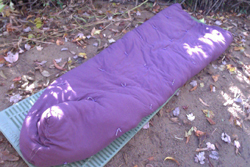 The first all-wool sleeping bag I’ve ever seen, made with a wool knit cover and stuffed with domestic wool batting. Can be used indoors and outside. Will keep you warm down to 20-30 degrees. “Wool is the most comfortable and luxurious outdoor weather fabric. This fiber allows the skin to breathe without condensing (trapping moisture). When sleeping beneath wool there is a calming effect…Wool also has an amazing ability to stay warm even when moist or wet, which is what makes this a choice option for outdoor use. This sleeping bag is unlike anything in the past. It is light, fluffy, retains it’s loft, and is so soft you would think it is silk.”
The first all-wool sleeping bag I’ve ever seen, made with a wool knit cover and stuffed with domestic wool batting. Can be used indoors and outside. Will keep you warm down to 20-30 degrees. “Wool is the most comfortable and luxurious outdoor weather fabric. This fiber allows the skin to breathe without condensing (trapping moisture). When sleeping beneath wool there is a calming effect…Wool also has an amazing ability to stay warm even when moist or wet, which is what makes this a choice option for outdoor use. This sleeping bag is unlike anything in the past. It is light, fluffy, retains it’s loft, and is so soft you would think it is silk.”
Improve Your Quality of Sleep With the World’s First Lightweight Wool Sleeping Bag
 My guest today is Patrick Clark, creator of Lucky Sheep, the world’s first lightweight wool sleeping bag. We’ll be talking about how wool can improve the quality of your sleep and his new wool sleeping bag that can be used indoors or outdoors. Patrick graduated from University of Kansas with a major in Outdoor Recreation. He spent a few years in Wilderness Leadership work and then moved into the Organic Bedding industry. He loved to invent and he saw a wide open field of opportunity. He also saw a huge riff in principles in the Outdoor Industry. People are going outside to enjoy nature but they are bringing their plastic with them. Patrick wanted to make a dent in the burgeoning plastic burden that was afflicting the planet. He then proceeded to research, invent and blog until he created a mini-revolution in the Paleo Diet and Lifestyle movement. His article Sweet Dreams on a Hard Surface went viral to become the landmark work on the subject of minimalist sleeping. Eventually Mr. Clark decided to combine his work in outdoor leadership with his work in the organic bedding industry to come up with the world’s first lightweight wool sleeping bag. www.woolsleepingbag.com
My guest today is Patrick Clark, creator of Lucky Sheep, the world’s first lightweight wool sleeping bag. We’ll be talking about how wool can improve the quality of your sleep and his new wool sleeping bag that can be used indoors or outdoors. Patrick graduated from University of Kansas with a major in Outdoor Recreation. He spent a few years in Wilderness Leadership work and then moved into the Organic Bedding industry. He loved to invent and he saw a wide open field of opportunity. He also saw a huge riff in principles in the Outdoor Industry. People are going outside to enjoy nature but they are bringing their plastic with them. Patrick wanted to make a dent in the burgeoning plastic burden that was afflicting the planet. He then proceeded to research, invent and blog until he created a mini-revolution in the Paleo Diet and Lifestyle movement. His article Sweet Dreams on a Hard Surface went viral to become the landmark work on the subject of minimalist sleeping. Eventually Mr. Clark decided to combine his work in outdoor leadership with his work in the organic bedding industry to come up with the world’s first lightweight wool sleeping bag. www.woolsleepingbag.com
TOXIC FREE TALK RADIO
Improve Your Quality of Sleep with the World’s First Lightweight Wool Sleeping Bag
Host: Debra Lynn Dadd
Guest: Patrick Clark
Date of Broadcast: December 08, 2015
DEBRA: Hi, I’m Debra Lynn Dadd and this is Toxic Free Talk Radio where we talk about how to thrive in a toxic world and live toxic-free. It’s Tuesday, December 8th 2015. I’m here in Clearwater, Florida where it’s finally cold today! It’s cold. It’s 68°. But when I went outside, it felt really cold after 85° for months and months.
Anyway, I’m so glad it’s getting to be winter. I’m so glad it’s getting to be the holiday season. And today, we’re going to be talking about something that relates to winter and the whole idea of hibernating and getting good sleep and rest.
We’re going to be talking with the inventor of the world’s first lightweight wool sleeping bag, 100% wool sleeping bag. He’s going to tell us about sleep and about wool. I just can’t wait to hear all of this.
Hi Patrick! His name is Patrick Clark. He’s the creator of Lucky Sheep Sleeping Bag. Hi Patrick.
PATRICK CLARK: Hi Debra. How are you doing?
DEBRA: I’m good. How are you?
PATRICK CLARK: I’m doing great. It’s good to be here.
DEBRA: Good! Good. Thank you. Thank you for being here.
First, I’d like you to tell us how you thought about of this. But before you even do that, tell us. I know that you have a Paleo viewpoint. And it’s not just Paleo food, but a whole Paleo lifestyle. Why don’t you tell us about that first and then you can tell us how the sleeping bag fits into that.
DEBRA: Yeah, that’s a great idea because that’s actually where it started. So, they call it Paleo diet and lifestyle because diet is too simplistic. Diet alone doesn’t do anything really. Let’s just call it ‘ancestral’, an ancestral approach to health. I like that.
PATRICK CLARK: What that is, that is how humans lived before we had civilization. There are certain things about civilization that take us away from the health-enhancing qualities of nature and the earth from where we evolved or from where we came before there was civilization.
DEBRA: I’m totally in agreement with that. There was a time back in 1987 to be exact where in 1985, I was looking around at the world that we live in and I was saying, “Wait a minute! This doesn’t work.” I really found out about toxics and I said there has to be some other model besides industrialism. I went to live out in a forest for two years (it turned out to be two years) and I came to the same conclusion. We’re alive, we’re part of nature.
And I say “part of nature” because it’s not like nature is nature and we’re something separate. It’s not as “and nature.” We’re an integral part of the whole natural world. We have forgotten that.
And as I started looking at, “Well, how did people live before there was industrialization?” they lived very much as nature is.
And that’s the context that this wool sleeping bag that we’re talking about fits into.
DEBRA: Exactly, exactly. And the thing that we didn’t realize until recently (that science and medicine didn’t think about), we didn’t think about certain things like sunlight, like earthing and grounding, like water. Water gets destroyed by civilization basically, all the important things that we used to be connected to and now, we’re separated from.
DEBRA: Right, exactly. And all those things (the sun, the water, the earth, the food and everything) all contribute to our health. Now, we have this idea of health that is completely separated from that.
PATRICK CLARK: Exactly!
DEBRA: So within that context, what led you to the sleeping bag?
PATRICK CLARK: I was actually working in an organic bedding company called Carolina Morning Designs. I had multiple chemical sensitivities. This is about 10 years ago or so. I was detoxing my home environment and my work environment, getting rid of all the plastic and cleansers, everything. I was rebuilding an entire house that had only natural ingredients in it.
So I got all that figured out. I knew all about organic bedding from working in the industry and engineering and manufacturing. But the thing is, I’ve always been an outdoor adventurist. I have a major in outdoor recreation and I spent just lots and lots of my life backpacking and camping and exploring nature. I couldn’t do it anymore because there was nothing organic, there was nothing non-toxic.
DEBRA: Right, right. I know! If you want to go outdoors, then you wrap yourself in a plastic sleeping bag and put yourself in a plastic tent. And that’s not being connected to nature.
PATRICK CLARK: Exactly! And it’s almost worse than a toxic – it is, it’s worth than a toxic house. The chemicals that are on those materials are more volatile than in a solid material.
DEBRA: So tell us something about those materials that are in a sleeping bag and a tent.
PATRICK CLARK: The toxic kinds?
DEBRA: The toxic kinds, yeah.
PATRICK CLARK: Okay. They have to make light and water proof. Let’s just go with sleeping bags. Tents are pretty obvious because they just spray them with crap. They just coat them with the most toxic, volatile things. It’s almost like paint.
It’s so volatile, most of it.
DEBRA: Well, it’s a waterproofing agent. A lot of those are very toxic.
PATRICK CLARK: Exactly! And flame retardant. They’re very strict on that because of the fire that you might be around when you’re camping.
DEBRA: I was going to ask you about that because it seemed to me that they would be – and then, oh, my God! I haven’t been camping in a long time. But as a child, I was a girl scout and I had spent many times sleeping in a tent. You zip yourself in this plastic tent. There are no open windows or ventilation. You go out into the wild where the air is clean. And then, you zip yourself into this plastic bag.
PATRICK CLARK: Yeah! You get it, you get it. It’s a real contradiction. It’s like we have this phobia to nature. We don’t want a bug in or this or that. Yeah, we go out there and we put ourselves in the same bubble we were already in.
DEBRA: Yeah, a fire retardant plastic bag. Oh, my God! Anyway, I was just looking at the clock and I thought we were almost on the break and we aren’t. Go ahead, keep going.
PATRICK CLARK: So, as far as the sleeping bag, you’ve got your plastic fabric, then you’ve got your inside insulation material. So those, they’re usually not as toxic as the tent. But the problem is your skin is right next to them and they stop your skin from breathing and they collect moisture. And when they collect moisture, they do two things. They become moist, so they hold moisture right near your skin. And they also stop the electrical flow along your skin called hypo electricity. They short circuit that electrical flow.
But between those two factors, they’re interrupting your sleep quality, so you can’t even have a natural sleep.
So you’re going out into nature on the ground. You could have fresh air, you could have grounding, you could have non-toxic things and you can’t even go into a natural sleep. That’s exactly what ancestral health is, trying to put us into the natural environment so our body can go through its natural rhythms and processes so it can achieve health.
DEBRA: Wow! When you say that, it so resonates with me that I want that for my body. When I think about times that I’ve attempted to do just that, it’s like sorting that out and figuring it out as something separate and different from our industrial way of thinking. It requires some research and some understanding of what that might be.
But we’re going to talk about that today on this show when we come back. We just need to go to break in just a few seconds. But when we come back, Patrick, let’s just start with talking about the sleeping bag. And then we can move in to all those other things that are so important that it fits into. We’ll find out what is a sleeping bag and why should you sleep in one.
You’re listening to Toxic Free Talk Radio. I’m Debra Lynn Dadd. My guest today is Patrick Clark. He’s the creator of Lucky Sheep, the world’s first lightweight wool sleeping bag. You can go to his website, WoolSleepingBag.com and find out more.
He’s got a great video there where he’s in the sleeping bag and you can see it out in nature. He explains how it works. We’ll be right back.
DEBRA: You’re listening to Toxic Free Talk Radio. I’m Debra Lynn Dadd. My guest today is Patrick Clark, creator of Lucky Sheep Wool Sleeping Bag. He’s at WoolSleepingBag.com.
So Patrick, tell us what a sleeping bag is. How is it different from a blanket? I think we should probably say that we’re talking about sleeping outdoors, but you could sleep in a wool sleeping bag indoors as well.
PATRICK CLARK: Yes. Yes, you certainly can. And it has a big advantage. First, I want to talk about that. It has a big advantage sleeping indoors because basically, you could save on your heat. We heat our houses at night. It’s really not necessary. It’s a huge design flaw in basically our mentality. We think we have to have the air warm. Well, we don’t. We just have to have enough insulation around our body and our body can generate enough heat. I actually thought about that a lot before I designed the sleeping bag. I was asking that, “Why am I heating the house at night? I’m not using the air.”
DEBRA: I actually agree with that. I actually sleep in wool. Obviously, you’ve just invented the sleeping bag, so I don’t have one. But I have a wool mattress. I have a wool comforter. I have wool blankets. I have a wool pillow. It’s all wool. And so I can get nice and cozy in my bed and have it be – well, it doesn’t get that cold here in Florida, but it could be like 50°.
I like it cold outside. I know that when we go to my in-laws house at Christmas time and I’d stay overnight and they’ve got the whole house heated (and I don’t), it would just be too hot.
DEBRA: Yes, exactly. It’s stuffy.
PATRICK CLARK: I couldn’t sleep. It’s stuffy.
DEBRA: We know! You’re good. I know you love wool and you know wool. And that’s the thing. It’s a huge design flaw. If you’re saying, “How can we create the best sleep?” well, science knows that you sleep better when it’s cold. It’s part of this whole ancestral approach. You sleep better when it’s cold.
So if you can get inside something warm, a blanket or a sleeping bag, and have the air cold, you’re breathing the cold air and you’re letting your body generate heat instead of allowing the air to be hot or warm and your body doesn’t have to work against it, first off, it increases your quality of sleep even indoors because you can cool the air down and you save on energy.
But as far as why a sleeping bag versus a blanket, a sleeping bag, there are two things to it that make it a sleeping bag.
One is that it’s not a blanket. There’s a difference between a blanket and a comforter. It’s a comforter, it’s not a blanket. A blanket is denser and it’s not as warm as a comforter. We know that, you know that. That’s an everday kind of thing. So it’s got to be a comforter to be a true sleeping bag.
And then, the shape of it, it needs to be something that you seal up in so that there are no drafts. There’s no place that the air can come in. One little, tiny draft is going to affect the performance.
So the reason you would want a sleeping bag indoors instead of a comforter indoors is because you can get the air even colder than you could. You could be warmer. A sleeping bag is going to be warmer than a comforter any day because of the draft issue, the draft coming in.
DEBRA: Right! I was noticing that usually when you make your bed really carefully the way you’re taught, you tuck in the sheets and blankets all very carefully around all the edges and then you put the [inaudible 00:17:51] and stuff. I was noticing when I took my comforter out this year that I just kind of threw it on the bed and then I snuggled it around my body. I really noticed that it was like I was wrapping myself in it instead of having all these cold air in the bed. You know what I’m talking about? I think you know what I’m talking about.
PATRICK CLARK: Yeah, exactly. Exactly! That’s what you want in a sleeping bag. And yeah, you naturally tend to try to make a blanket through that, which you can do.
DEBRA: Yeah, but a sleeping bag just wraps around you.
Now, here’s a question that I have for you because I have slept in a fair amount of sleeping bags of different types. Yours doesn’t have a zipper. Am I correct? Yours doesn’t have a zipper?
PATRICK CLARK: Yeah, exactly.
DEBRA: And so I’m asking that because the worst part of sleeping in a sleeping bag is the cold zipper.
PATRICK CLARK: Oh, yeah.
DEBRA: So tell us about your design with the sleeping bag.
PATRICK CLARK: Yeah. Yeah, that’s a really good point. Once I figured out how to make it out of wool and then before I put it on the market, I tried different designs. I tried the zippered one, the traditional zippered with the hood and then I found out about this way of doing it where you can just wrap it around you and it doesn’t have to have a zipper. But the funny thing is there’s no draft. There’s absolutely no draft coming in.
It has these flaps on the side that you tuck underneath you. And when you’ve got them tucked in like that, you’re pulling the bag around you tight and it’s actually less draft than the kind with the zipper.
There’s a whole lot of reasons why this is more comfortable. The main thing is you don’t get trapped. The problem with zippers is you’re like in this straightjacket. You get in there and then you’re in that mummy shape and you can’t move. You can’t even move your legs. You can’t get into a side fetal curl position, which, pretty much, people love to sleep that way.
DEBRA: Yeah. Well, what’s it like to sleep in your sleeping bag?
PATRICK CLARK: It’s delicious. It’s unbelievable. I can’t believe. It’s way better than I’ve even envisioned it was going to be. I can go out, it can be 15° and I could go out, just plop down on the ground and be toasty warm and have that incredible air and not have any worries. It’s so light. You forget that it’s cold outside.
DEBRA: Yeah, I understand what that’s like, yeah.
So when we come back, I know that you have some things you want to tell us about wool. So when we come back, let’s talk about wool and how it helps you sleep.
You’re listening to Toxic Free Talk Radio. I’m Debra Lynn Dadd. My guest today is Patrick Clark. He’s the creator of Lucky Sheep, the world’s first lightweight wool sleeping bag. You could go see it WoolSleepingBag.com. We’ll be right back.
DEBRA: You’re listening to Toxic Free Talk Radio. I’m Debra Lynn Dadd. My guest today is Patrick Clark, creator of Lucky Sheep Wool Sleeping Bag. His website is WoolSleepingBag.com.
Patrick, tell us why wool.
PATRICK CLARK: Why wool? Wool is the best outdoor fabric. For centuries (more than centuries, I don’t know. Centuries, whatever), people have used wool. It’s the only thing that actually works, period. When it’s cold, if you try cotton, it’s good.
Cotton is good, linen is good. There are other fabrics that are good, but they don’t work when it’s cold. So it has to be wool, period.
And the reason why, looking at the science, is because other fabric pulls moisture. It collects some moisture. And that little bit of moisture causes your skin to be cold right there. So if you have a cotton fabric, you have wool on the other side of the cotton fabric that comes out, it would compromise the warm ability and would actually be dangerous. If you backpackers know that cotton is a big no-no, you can’t wear cotton. Your life will be at risk for hypothermia if you used other fabrics.
DEBRA: One of the questions I was thinking of when I knew we were going to do this show is – again, I’ll say I’ve done a fair amount of camping in the past. I haven’t been camping in maybe 25 years. And one of the reasons being, I didn’t want to wrap myself in plastic. But what I remember is that when you’re sleeping outside (this is one of the reasons why I think that you need to use a tent although I don’t think you’re using a tent, but you’ll explain after I ask the question) is moisture and dew. That’s why you have to have a tarp and put a tarp on the ground and put a tarp over the sleeping bag, so that you don’t wake up sopping wet. So how does this all work with your sleeping bag?
PATRICK CLARK: Yeah. Yeah, that’s a great question. And that’s something that I had asked that question and I’ve experimented with over decades. I’ve gotten some answers for you there.
The tent, in the old days, people used canvass.
DEBRA: I remember that, yeah.
PATRICK CLARK: Canvass is an excellent tent material for natural camping. And I’ve used it. I actually designed a really nice tent that’s canvass that I can carry in my backpack. I don’t have it. Eventually, I’ll have that available for people too.
But the problem is it’s still actually not quite perfect because it’s a little heavy. It actually could do, but it’s a little heavy. So what I recommend, if it’s raining, you have to have a tarp. I use a tarp or a tent when it’s raining. When it’s not raining, I sleep under the open sky. So you can do that.
So under the open sky and it’s not raining and you have dew, you have fog, the wool sleeping bag, it wicks moisture. It is weird. It’s like magic kinda.
DEBRA: Well, it is. I know that. I know that because that’s part of the point of sleeping on wool indoors like sleeping on a wool mattress or sleeping with my comforter.
I know that my body is perspiring. I’ve read that. You lose a quart of water. I had a doctor, he used to tease about that every morning, he’d down a quart like a car, that the first thing you should do is drink a quart of water because you’ve lost the quart overnight. That’s a lot of water. And yet, my bed is perfectly dry. If you sleep on polyester sheets (as I occassionally do in a hotel), cotton polyester sheets, they get clammy.
So I know that wool has this wicking ability and just breathe. That allows all that moisture to pass through the bag. And so I would imagine that even if it got wet on the outside, then it would still evaporate.
DEBRA: Yes, exactly. That’s exactly what happens. Because the heat of your body is responding to that heat (so it’s going away from the heat source), the dew or even if rain lands on it on the outside, it tends to migrate away from the body.
Just like it does on a sheep.
PATRICK CLARK: Yeah, exactly.
DEBRA: Yeah, yeah.
PATRICK CLARK: That’s why I wanted to talk about it. I think of it as fur. It’s like a human’s substitute for fur since we don’t have fur.
DEBRA: Yeah! The sheeps are out in the rain all the time, the rain and the snow. They’re outdoors. And yet their bodies are very protected by the sheep wool. And so when we use wool on our bodies, it has that same protective factor.
And I think that if you do what’s called felting where you put it in water, all the pieces of wool, they’re in little coils. That’s part of what makes it so resilient and to repel things. If you wet it, they come together. That’s called felting. And if you have a felted jacket or something, the rain just won’t go through that. It just won’t go through that.
PATRICK CLARK: Yeah, exactly. And actually, the vikings in the 17th century, they made their sleeping bags out of felted wool. They actually had linen fabric and the inside was felted wool. You can imagine they knew how to stay warm.
Back then, I don’t think they knew how to make batting. The batting is fluffy. It’s the same as felt, only it’s fluffier and it’s also warmer. They have felt.
DEBRA: Yeah. I didn’t know that. Actually, what is the history of sleeping bags? Where do they come from?
PATRICK CLARK: As far as we know, the eskimos invented them. They’re another ‘coldest place in the planet’ type of people. And what it was, it was a full bag. They didn’t have zippers back them. They made a whole bag. It’s like a bag bag.
You crawl into the bag, then you crawl out, you went out.
The fabric they used was seal skin. The seal skins are actually waterproof and breathable, of course. They filled them with fur from an animal hide. They were great. They totally worked if you had a dog sled to carry them because they were…
DEBRA: They’re heavy!
PATRICK CLARK: Yeah.
DEBRA: We need to go to break. But when we come back, Patrick, let’s talk about why sleeping outdoors is good for your health. You’re listening to Toxic Free Talk Radio. I’m Debra Lynn Dadd. My guest today is Patrick Clark. He is the creator of Lucky Sheep Wool Sleeping Bag. He’s at WoolSleepingBag.com. We’ll be right back.
DEBRA: You’re listening to Toxic Free Talk Radio. I’m Debra Lynn Dadd. My guest today is Patrick Clark, creator of Lucky Sheep, the world’s first lightweight wool sleeping bag. So Patrick, tell us about why we should be sleeping outside. I come from Northern California and as you probably know, there are a lot of forests in Northern California. I particularly live in a forested area.
And one of the things that a lot of people have there and maybe in your area too is that they build these outside rooms. It’s like a room with a roof and a floor, and yet it’s open on one side. They have a bed in there and they’re protected from the rain and the elements, but there’s this big open space of a wall missing, so that it’s just like being outside, except that it’s protected.
So that’s not the same as quite sleeping in the ground, but it’s so different than sleeping in a house. So when you talk about sleeping outside, what are the benefits and how exactly do you do that?
PATRICK CLARK: And actually, you’re getting most of the benefits when you do that depending on where you live, of course. Fresh air, you’re getting fresh air. It has way more oxygen, so that’s going to enhance your sleep. We all know that.
It’s just obvious. That’s the first thing. And you’re actually getting cold, you’re getting cooler.
DEBRA: Yeah, especially in Northern California.
PATRICK CLARK: Yeah, exactly. And negative ions is another thing. And then, grounding. I don’t know which type of house you have, but when you’re on earth, of course, you would be getting more grounding if you were on the earth. If you’ve got a room like that, you’re getting some of that grounding effect.
But yeah, as far as getting totally away from the house and civilization, period, a sleeping bag is your ticket to freedom. You can’t really do it without a sleeping bag and it’s just nice to get away from the shackles of modern life sometimes. We know there are tons of toxins in the air. There’s electromagnetic radiation that’s upsetting our bodies. We live indoors. We have an indoor culture. We live indoors. We don’t get exercise. We don’t move. We don’t get the sun on our skin. We don’t get good water, we don’t get good air. You go out on nature, it’s got a built-in health spa.
DEBRA: I love that! Yes, I would agree with you.
PATRICK CLARK: So it’s just a good thing for people.
Most people think if they want to go on a vacation, they go to a warm place where it’s tropic. You have to get on an airplane and go away from home. With getting out and sleeping out in nature, going to some natural air near where you live any time of year, to me, it’s way more comfortable to just learn how to adapt to nature than to try to run away from nature.
DEBRA: Yes. I totally agree with that. I think people, we’re so accustomed, as you said, to being indoors all the time that we don’t even know how to be out in nature.
PATRICK CLARK: Exactly! And it’s been hard. And that’s actually my main mission in life, to be a bridge, to help people learn how to get back to nature.
And some more really powerful things that very few people is that the cold, exposing yourself to cold weather during the winter is extremely health-enhancing. We don’t know that because we’re afraid of the cold. It hurts. At first, it kind of hurts.
And actually, we’re recommended by health care professionals and it’s common. Our assumption in our society is that cold hurts you. It hurts your health and you should stay warm so you can stay healthy. Well, it’s exactly…
DEBRA: Yeah, but every child is taught to “put on your jacket. Stay warm or you’re going to get a cold.”
PATRICK CLARK: Exactly, exactly. And they know, it’s interesting to know, they want to expose themselves to cold.
DEBRA: I love cold.
PATRICK CLARK: They always do that. You think it’s to make you angry, but it’s like children know how to do it. So cold, what it does, here’s a few things it does. It reduces inflammation body-wide, in your whole body.
DEBRA: Really?
PATRICK CLARK: Yes. I’ll try not to get too technical. It burns fat. It burns fat. So if you expose yourself to the cold, it’s just going to burn fat and actually, you get almost all the same benefits you get from exercise.
DEBRA: Wow!
PATRICK CLARK: …just by being cold. It increases your metabolism. And when it burns the fat, it does it really effectively.
And actually, I don’t know if you know, but fat stores toxins.
DEBRA: Yes, it does. It does.
PATRICK CLARK: So you’ve got toxins stored in your fat. So if you’re burning fat, you’re burning toxins. You’re throwing the toxins out of your body at the same time.
DEBRA: Yes, but I would also add that you actually have to be careful of that because you’re releasing the toxins into your body and you can over-release. You also need to be careful about the fact that you might be releasing heavy metals or something and make sure you’re drinking a lot of water and doing things to move those out of your body.
PATRICK CLARK: Yeah, I totally agree with that. There’s more than one step to getting the toxins quickly out of the body.
DEBRA: I just wanted to make sure that people didn’t think that they would just go out in the cold and that’s all they need to do. It’s certainly a step.
PATRICK CLARK: Yeah, yeah.
DEBRA: It’s like if you go in a sauna, you’re going to be releasing toxins. But you have to then drink the water and flush them out. It’s the same thing with cold. You could actually drink some nice, warm fluids.
PATRICK CLARK: Yeah, exactly. You would have to balance out to keep it moving in the right direction.
And the other thing that cold does is it optimizes your circadian rhythm. It lets your body know what time of year, what time of day. So when you’re optimizing your circadian rhythm, you’re in complete synchronization with the way that nature designed your body to work. That alone, the cold alone is going to increase your sleep quality.When you synchronize your circadian rhythm, you also optimize your sleep cycle.
DEBRA: That’s right. I know a lot about circadian rhythms, but why don’t you talk a little bit more about that because I think that most people haven’t a clue what a circadian rhythm is.
PATRICK CLARK: Yeah, that’s a good idea. Circadian rhythm, it’s like your brain is like a microchip and it’s dictating or orchestrating what happens in the rest of your body with all the processes that go on in your body. There’s a neurosignal for everything that happens.
So if you’re out of sync with circadian rhythm, if you’re disconnected from the earth, from nature because you’re exposing yourself to artificial light, electromagnetic field and a diet that’s not appropriate for your climate, then the timing of your circadian rhythms is going to be off. There’sa mismatch between what your brain is programmed to know that that’s the way it needs to be and what’s actually happening.
So people who have problems with sleep, you can actually deal with by looking at circadian rhythms and finding out what’s throwing off their circadian rhythm.
DEBRA: Life is throwing off all of our circadian rhythms. I have been very aware of circadian rhythms for a long time. And yet to completely shut out all the things that affect them and be as if you were in a natural environment so that your body is responding to the light and the temperature and the food that we would be eating in our natural environment and all of that is very difficult. But I think it could be done if one chose to.
You know what we need? We need a retreat where we could go to on a mountaintop and we could handle the circadian rhythms. We could sleep properly. We could eat the food and just know what it’s like to live that way.
PATRICK CLARK: Well, actually, I lead those retreats. I’m also a wilderness guide.
DEBRA: Oh, good! Well, yeah, that’s a good thing to do. We’re almost done with the hour. Is there any final words you’d like to give?
PATRICK CLARK: Let’s see, just one more thing about the cold. The cold, if it’s winter time and you’re putting yourself in a warm house all the time (or office or whatever), then your body is going to think that you’re in the tropics. And that’s an example of how your circadian rhythm gets thrown off because your body needs to match the environment. You need to put yourself in the natural environment so that your brain is synchronized with that environment.
DEBRA: Yeah, yeah, such an important thing.
PATRICK CLARK: Let’s see, just another thing, a couple of cool things. People think sleeping bags, it’s like you’re ticket to freedom. It’s like having a home away from home. You can travel anywhere as long as you have somebody’s porch or yard to sleep in…
DEBRA: But even in a hotel. I mean, one of the worst thing about a hotel is sleeping on those sheets. You can just bring your sleeping bag with you.
Anyway, we only have just a few seconds left. So I want to say thank you and give your website again, which is WoolSleepingBag.com. You can go take a look at these beautiful, purple wool sleeping bags. You’ve been listening to Toxic Free Talk Radio. I’m Debra Lynn Dadd. Be well!
Dusting electronics
Question from Liz
Hi Debra,
Recently you’ve been talking about electronics. I have a big problem with dust. I was using damp flannel and then washing it then I realized my washer must have the chemicals now. I probably should dust with disposable wipes. Do you have a suggestion?
Debra’s Answer
I wouldn’t use disposable wipes since they are often scented.
Maybe damp paper towels?
But the problem is bigger than this. Those chemicals from electronics are also getting into the air in your home. You would need an air filter to handle that.
Iphone Case
Question from Steve
Hi Debra,
Have you done any research on iphone cases? If so, I’m looking for a healthier version to use on my newly purchased iphone 6s.
Debra’s Answer
I have been researching cases for the iPhone 6S because I need to get one myself.
I haven’t looked at all the regular cases because I want to get one that protects against radiation.
I’ve had a Pong case on my old phone that I am happy to see that Pong Research now makes one for the 6s
I wouldn’t use my cell phone without the protective case.
Vaccines: Harmful or Necessary?
 My guest today is Pamela Seefeld, a registered pharmacist who prefers to dispense medicinal plants and other natural substances instead of prescription drugs. Today we’ll be talking about vaccines. I asked Pamela tim address this subject after seeing a scary commercial on TV trying to get grandparents to get a vaccine so they don’t infect their grandchildren. We’ll discuss the dangers and find out when and if they should be used. Pamela is a 1990 graduate of the University of Florida College of Pharmacy, where she studied Pharmacognosy (the study of medicines derived from plants and other natural sources). She has worked as an integrative pharmacist teaching physicians, pharmacists and the general public about the proper use of botanicals. Pamela is the owner of Botanical Resource and Botanical Resource Med Spa in Clearwater, Florida. www.botanicalresource.com
My guest today is Pamela Seefeld, a registered pharmacist who prefers to dispense medicinal plants and other natural substances instead of prescription drugs. Today we’ll be talking about vaccines. I asked Pamela tim address this subject after seeing a scary commercial on TV trying to get grandparents to get a vaccine so they don’t infect their grandchildren. We’ll discuss the dangers and find out when and if they should be used. Pamela is a 1990 graduate of the University of Florida College of Pharmacy, where she studied Pharmacognosy (the study of medicines derived from plants and other natural sources). She has worked as an integrative pharmacist teaching physicians, pharmacists and the general public about the proper use of botanicals. Pamela is the owner of Botanical Resource and Botanical Resource Med Spa in Clearwater, Florida. www.botanicalresource.com
LISTEN TO OTHER SHOWS WITH PAMELA SEEFELD
- Evaluating A Study and Testing a Test
- Seven Deadly Drugs
- The Hidden Dangers Affecting Your Heart and How You Can Protect It Naturally
- What We Can Do About Cancer
- The Power of pH
- How to Protect Your Health From Toxic Mercury Dental Fillings
- Pharmacology 101: How to Use What Pharmacists Know to Take Supplements to Best Advantage
- Are You Heading For Kidney Failure? Natural Remedies Can Help
- How to Keep Your Blood Vessels Open and Flowing With Supplements
- How Inactivity Leads to Illness and Drug Use—And How Exercise Can Get You Off Drugs and into Health
- How to Protect the Environment from Pharmaceutical Pollution by Using Natural Medicinals
- Hidden Toxic Dangers in Common Dietary Supplements
- See More Clearly with Natural Remedies
- Hidden Mental Health Dangers in Common Drugs
- Different Types of Detox
- Getting Off Prescription Drugs with Natural Remedies
- How Natural Remedies Could Have Saved A Life
- Natural Alternatives to Sleeping Pills
- Natural Back Pain Treatment Options That Work
- How Toxics Age Your Body & What You Can Do to Stay Young
- You CAN Lose Weight—Even if You’ve Had Difficulty Losing Weight Before
- Calcium—Is There Really a Deficiency in America?
- It’s Cold and Flu Season—How to Support Your Immune System and Why You Shouldn’t Get a Toxic Flu Shot
- How Eating Fruits and Vegetables Help Your Cells Create Health
- Toxic Psychiatry and How to Have Mental Health Without Drugs
- Why You Should Take Fish Oil and How To Choose the Right One for You
- Medicinal Plants Can Replace Toxic Drugs

TOXIC FREE TALK RADIO
Vaccines: Harmful or Necessary?
Host: Debra Lynn Dadd
Guest: Pamela Seefeld
Date of Broadcast: December 02, 2015
DEBRA: Hi, I’m Debra Lynn Dadd and this is Toxic Free Talk Radio where we talk about how to thrive in a toxic world and live toxic-free. It’s Wednesday, December 2nd. Wow! The year is almost over. It’s Wednesday, December 2nd 2015. And today, we’re going to talk about vaccines, which is something that we haven’t talked about on the show before.
My guest is Pamela Seefeld. She’s on every other Wednesday because she has so much knowledge about drugs and natural alternatives and how things work in the body that we just talk about something new every other week.
She’s a registered pharmacist who prefers to dispense medicinal plants and other natural substances instead of prescription drugs. However, she is a pharmacist. She’s a regular pharmacist. She works in a pharmacy in a hospital and she also works in her natural pharmacy which she owns here in Clearwater, Florida. She works with people all over the country. So if you want to talk to her, you can pick up the phone and call her. We’ll give her number later on the show. But she also is right in the midst of both traditional pharmaceuticals and alternative pharmaceuticals.
So today, we’re going to talk about vaccines with Pamela. Hi Pamela!
Pamela Seefeld: Hi! It’s great to be here.
DEBRA: Yeah, great to have you.
So I asked you to do vaccines as the subject on this show because I was watching television (I do watch television, there’s actually a lot of good stuff on television) and there was an ad for a whooping cough vaccine. It was a very scary ad. It was wanting grandparents, seniors, to get a whooping cough vaccines, so they wouldn’t infect their grandchildren and their grandchildren will die if they got infected.
And then, once that got my attention and we decided to do this show, I saw another one the other night for pneumococcal pneumonia vaccine. I don’t even know what pneumonococcal pneumonia is.
So what is going on now that in addition to these commercials for drugs that make it look either scary or desirable and with all these beautiful music in the background and they tell you all the side effects, that it’s going to kill you, what is going on with advertising vaccines like drugs?
Pamela Seefeld: Well, that’s a good question. What’s happening is vaccines (especially the pneumonococcal penumonia vaccine and the whooping vaccine), there’s a huge a market for these vaccines. So the way that they’re building awareness is by having these ads, these controversial ads that make people all scared. And especially when you’re talking about the whooping cough, it shows the grandparents turning into like wolves as if they’re going to eat their grandchildren. It’s very frightening. It’s basically insinuating that you’re harboring this really dangerous organism and you’re going to kill your grandkids if you don’t do something about it.
These advertising, let’s face it, is meant to motivate people. And if you’re motivated, you’re going to call your doctor and say, “I want this vaccine.”
There’s a lot of money in vaccines. And once the research has already been done and the production is inside the factory, there’s a lot of mark-up. You have to realize you have the pediatric population, they’re all forced to get all these vaccines.
So the adults are an untapped market, right? A certain percentage of the population is pediatric, those people have to get the vaccines.They have no choice. They can’t go to school. That market has already been tapped about. And if you think about it, a lot of people are refusing vaccines for tehir kids, so they have to start looking for somebody else to market to.
And who are they going to market to? The elderly people.That’s an untapped market – and a market that’s very lucrative.
A lot of them have Medicare. Medicare does cover a lot of the vaccines. And even if it doesn’t, there are a lot of retirees that would be willing to shell out the money if there was some sort of a payment that they have to co-pay in order to have these vaccines because they think they’re protecting their family.
DEBRA: Well, tell us what is a vaccine?
Pamela Seefeld: Vaccines, I want to explain something interesting. Vaccines are kind of like homeopathy. Now, homeopathic pharmacy is really what I do. And homeopathy was developed by Samuel Hahnemann in the late 1800s.He was a German doctor. And in the time that he developed homeopathic medicine, they were doing a lot of pretty barbaric stuff in medicine. They were doing leeches and things like that.
He came along and he discovered that like cures like. Basically, when you take a vaccine – this is really important. I use this example when I give a lecture to physicians or to people that are skeptical about homeopathic and the relevance and how well it works. What I’ll do is I’ll mention to them, “Look, people get vaccines all the time and they work. They provide immunity.The reason why a vaccine works is because it has a small amount of causative agent (whatever the vaccine is supposed to be against) that they put in this formula and they give it to you as an injection and basically, they’re inoculating you with a small amount of vaccine.”
What happens is your body makes an immune response to it and that can impart protection where you actually come in contact with the organism.
So that’s how the vaccines work. But I like to think of it as being a good intro into understanding homeopathy. If you don’t believe in homeopathy, you think it’s all bogus, then why are vaccines working? I use that case in point all the time. It makes the people think. They’re like, “Okay, I see what you’re saying.”
I’ll give you an example. In homeopathy, say someone has a lot of histamine and they have rashes and allergies and things, well we treat them with histamine. Low dose histamine is basically inoculating them against it so you don’t have what’s called mass cell degranulation and this massive histaminic release when you come in contact with the cat or the dog or oak trees or whatever they might be allergic to.
So this is a good intro when you think about it. People think, “Well, how would a vaccine work?” it’s exactly the same principles of homeopathic medicine. It’s exactly the same.
DEBRA: So is there any difference between homeopathic medicine and a vaccine?
Pamela Seefeld: Oh, by far…
DEBRA: So what would be the differences?
Pamela Seefeld: With the homeopathic medicine, it’s obviously encompassing a lot of different things. We use plants. We use toxins in some cases, things that work in the body to mimic a certain type of response. When you have a vaccine, all it is is some kind of a carrier fluid and specifically, the causative agent of whatever you’re going against. So say it’s pneumococcal pneumonia, say it’s a whooping cough, say it’s a papillomavirus virus, whatever virus it is, that’s all it contains. It contains nothing else.
And homeopathic remedies, it’s usually a combination of things. Most homeopathic things we use here, I can get injectables, but I don’t use those. They use more of that in Europe. Everything we use here is oral.
DEBRA: Yeah, yeah. So you just put a few drops under your tongue and it’s a very different experience. But what you’re saying is the basic idea of like curing like applies to both.
Pamela Seefeld: It does. And that’s why I like to bring that as an example to your listeners because the people that are listening to this show, they’re going to be possibly more inclined to use homeopathic medicine and use alternatives. I mean,
I’m very busy and I’ve been very successful at doing this and helping people with homeopathics in Europe. In Germany, I know for sure in Germany, they actually cover homeopathic medicines with your health insurance. You can get to the pharmacy, you can get regular medicines or you can get homeopathic and they’ll cover it either way.
So the rest of the world does embrace homeopathy quite a bit. In America, it’s coming around. I think it’s really great because a lot of my clients have done very, very well with taking homeopathic remedies.
But it’s important to know that a vaccine and a homeopathic remedy is kind of somewhat similar as far as their modalities of action. So if somebody doesn’t believe in homeopathic medicine, the best argument to use is that’s how vaccines work.
That’s what a vaccine is, a small amount of a causative agent to elicit a certain type of immune response. It’s important for people to realize that. If you have doubts about homeopathy, you really can’t after you bring that point up for the people.
DEBRA: We’re almost to the break, but tell us what happens in the body when you get a vaccine, the causative agent goes in your body? What happens?
Pamela Seefeld: Your body makes antibodies. Your body sees this foreign entity in the bloodstream and it says, “Oh, my gosh! We need to mount an immune response.” This immune response allows for these antibodies to be formed. So it imparts immunity in that sense. You body thought that it went through an actual infection, but you didn’t.
DEBRA: And so then if you’re exposed to it, say it was a chicken pox vaccine, then if you were exposed to chicken pox, you would not get the chicken pox because you now have an antibody to it?
Pamela Seefeld: Correct! You have antibodies in the bloodstream that are against chicken pox. It’s specific to that strain, you have to realize. But yes, you have impartial immunity.
DEBRA: Great! We need to go to break. But when we come back, well talk more about vaccines with my guest, Pamela Seefeld. She’s a registered pharmacist who prefers to dispense medicine plants and other natural substances. You can go to her website at BotanicalResource.com. You can also call her on the phone. We’ll give her number when we come back.
You’re listening to Toxic Free Talk Radio. I’m Debra Lynn Dadd.
DEBRA: You’re listening to Toxic Free Talk Radio. I’m Debra Lynn Dadd. My guest today is Pamela Seefeld. She’s a registered pharmacist who also dispenses medicinal plants and other natural substances at her natural pharmacy called Botanical Resource.
Pamela, why don’t you give your phone number so that people know where to call you?
Pamela Seefeld: Okay, very good. You can call me here at my pharmacy. All consultations are free. I would be glad to help you if you have any questions about the medications you might be taking.
The number here is 727-442-4955. That’s 727-442-4955. I would be most honored to help you and your family with any question you might have.
DEBRA: Yeah, if you have a question about a drug that you’re taking, if you want to get off of a drug, if you want to take a natural remedy for something that’s going on in your body, those are all questions that Pamela can answer very well. She’s very highly respected by doctors here in Clearwater, Florida where I live.
How long have we known each other now? A couple of years I think.
Pamela Seefeld: Yeah, yeah. Absolutely! It’s great.
DEBRA: Yeah! Yeah, yeah. And she’s helped a lot of people. I, in fact, first met her because a friend of mine referred her to me.
Anyway, back to vaccines, it seems like that the idea of vaccine itself just sounds very logical. But why are some people against vaccines?
Pamela Seefeld: Oh, this is a good question. What happened is a lot of the controversy really started with Dr. Andrew Wakefield and he is a British physician. He did some studies and published information, the Study in the British Journal of Medicine. He concluded that he looked at these 12 patients and his statistical of analysis of the data showed that autism was the result of the vaccines that were used on these children.
So there’s been lots of controversy about that. He lost his medical license. There are lots of stories as far as what he did to create it. They tried to recreate his data and they weren’t able to do that. So there was a lot of controversy. But really, it started this movement of non-vaccinations for children because people were scared of autism.
We now know that autism in the past was affecting not as many children as it is today. And we look at this – I mean, I don’t have the statistics off the top of my head. But it was like 1 in 56 kids or something – it’s a lot that have some kind of spectrum disorder. They might not have full autism, but they might have some type of spectrum disorder that’s related to some kind of unknown cause and they don’t really know why there’s this high propensity.
We do know that autism is directly correlated with the age of the father and there’s also infections in utero and a lot of other things. It’s the same thing with schizophrenia. We know that now too.
And actually, with schizophrenia, we now know that schizophrenia is directly related to the bacteria you get from your mother. And if you’re missing some of the vaginal bacteria when you’re born (like in a C-section), you’re going to be at much higher risk for schizophrenia. So it might be bacteria as well.
I don’t think all the answers are there quite yet. This is the problem because it’s overshadowed, the vaccine “hysteria” so to speak.
DEBRA: But there are some things in vaccines that are pretty toxic like mercury and aluminum, some other ingredients that might not be a good idea. Whereas the idea of a vaccine might be okay, what about some of these other additives?
Pamela Seefeld: Excipients, yeah. That’s the right word, yeah.
DEBRA: The excipients in there are controversial. And also, too, the fact that so many vaccines are given in such a small period of time.
So when you have children, you’re launching this immune response with a lot of different infectious agents in a short period of time because a lot of times, we get several vaccines in one visits. I understand why they’re doing that. They have a sequence of vaccines that they need to instill to these kids. I understand all that.
I think really what it comes down to is that I don’t think vaccines are going to necessarily be the one that’s going to be labeled as the cause of a lot of these problems. But I think there’s a lot of things going on in children (and even in adults) today that they just don’t know exactly what’s happening. And their cell signalling bacteria, like I said, are going to the front and foremost that we know are being linked to a lot of different diseases, especially colitis.
If you think about colitis, I mentioned schizophrenia. They’re showing that the bacteria that you have can predict whether you’re going to come down with these diseases.
DEBRA: You know, when I was a child (and I haven’t looked up any data to confirm this, I’m just going on my memory), I don’t know when they started requiring vaccines for children to go to school. But when I was a child, I remember that the big health problem for children was polio. They had posters up of kids in braces and all these things. Every child had to get a polio vaccine. I don’t know if it was required by all, but I remembered going to get the polio vaccine. But I don’t remember getting a lot of other vaccines. So, I don’t know what I actually got. I’m sure I got a polio vaccine.
But just in general, are vaccines being overused?
Pamela Seefeld: Well, that’s a good question. Polio actually has been eradicated from the U.S. very much. But we now know that there are hot spots in Afghanistan and in India and in Pakistan. I’m actually in Rotary International and we do a lot of for raising money with Bill Gates Foundation to try and vaccinate these kids in these poor areas because over there, polio is very debilitating. They still had people there being crippled.
So I don’t want to come out against vaccination in itself. I think that the excipients in some people, I would venture to say (and I may be incorrect, but this is my theory and I think I read this from other people), my theory is that the time at which you receive a vaccine, where your immune system is standing at that particular time does effect the type of response it’s going to launch.
And if you have a vaccine and your immune system is having some problems and it’s not working correctly, I think you’re going to have more chances for adverse effects.
And not only that too, talking about adverse effects. I was looking at one study here that they were talking about just Australian immunizations in the course of the year and what the side effects were, they actually had four deaths and they couldn’t directly attribute it to the vaccine. But I’m telling you that we’re talking about the whole country of Australia. It’s a lot of people. So what percentage?
They couldn’t really directly put it to the vaccine, but these people, maybe they had an anaphylactic reaction or something, but they did report causes of death. And the most common side effects are injection site reactions, rashes, fevers, dizziness and light-headedness. And you would expect that these would happen. You expect rashes because they’re probably reacting in a poor manner. And if a person’s immune system is compromised at the time or they have some other issues (maybe like we were talking about the excipients, the other factors in there), they might have a reaction.
DEBRA: Yeah. Yeah, that’s interesting. Well, we need to go to break. But when we come back, I have a question for you about the immune system and vaccine.
You’re listening to Toxic Free Talk Radio. I’m Debra Lynn Dadd. My guest today is Pamela Seefeld. She’s a registered pharmacist who also dispenses natural remedies. She’s on every other Wednesday here on Toxic Free Talk Radio because she has so much information. We’ll be right back!
DEBRA: You’re listening to Toxic Free Talk Radio. I’m Debra Lynn Dadd. My guest today is Pamela Seefeld. She’s a registered pharmacist who also dispenses natural remedies as well.
So, my question is I first got interested in toxic chemicals because I had an immune system problem where toxic chemicals had made my immune system in effective. And so what you said about the condition of the immune system affecting how vaccine might respond in the body is very real to me. And I also know that a lot of toxic chemicals that we’re exposed to in our daily lives can affect our immune systems and damage our immune systems. And then I’m thinking about the excipients in the vaccines adding even more toxic stuff like mercury and formaldehyde and aluminum. It just seems like a whole lot of other factors going on rather than just a healthy body getting just a vaccine.
Pamela Seefeld: That’s exactly right. And what we have to look at is the baseline properties of your own immune system and if it’s suppressed. And this is another theory, I guess, what I’m saying. People are under a lot of stress today. I’m not just saying that just in general. But we know that chronic stress depresses the immune system pretty much a lot.
I’m just trying to think back. When I was little, I think things were a little simpler time. Maybe I don’t want to play Pollyanna here. But I’m just trying to say that today, people have financial problems, a lot more homelessness, a lot more chronic illness. And also too, I might mention, that we have a lot of viruses they’re finding in the blood supply that we didn’t really know existed before. They don’t even have names for them yet.
So there are a lot of other things going on that are affecting our immune system. And chronic stress and chronic depravation of sleep, I think in the past, people slept a lot more, there are a lot of other things that are going on that I don’t know if we can peg it on one particular problem. But you’re exactly right, the chronic exposure to chemicals, toxic chemicals, contaminants in our food and environmental contaminants in the air and in the water are definitely affecting people’s health and they’re probably affecting their immune system.
Actually, what I do, because I have to get the flu shot where I work at the hospital. It’s required. I drink the Body Anew while they’re giving me the shot.
DEBRA: Oh, good for you.
Pamela Seefeld: Yeah! I tell all my clients to do that. You want to do the detox at the same time.
DEBRA: Yeah, I think that that’s a good idea. Somebody else was telling me the other day just in an email, she said, “When
I’m exposed to something, I take…” – and I’m not going to mention what it is because I haven’t researched it. But if she has an exposure, she knows to take something. And so I think that’s a great idea if you have to do something like if you’re forced to take a vaccine.
Now, weren’t you telling me that – what was it about people that are in hospitals, everybody gets vaccinated?
Pamela Seefeld: That’s exactly right. Part of the mandate for the hospital— and I really think it possibly even in ObamaCare, which I could be wrong. What has happened is these vaccines are offered to the patients, everybody gets the vaccine. It’s basically an automatically launched order. The doctor doesn’t even have to order it. It’s an automatic launched order. It’s for influenza vaccine and pneumococcal pneumonia. People are getting these vaccines when they’re in the hospitals.
And a lot of it is all the hospitals in the country get money based on what percentage of the population they vaccinate because while they’re there, they’re kind of like a captive audience. They can get these people all vaccinated before they go out into the communities. This is in the guise of, “Okay, we don’t want them to spread illness. There’d be an influenza outbreak. We don’t want there to be a pneumococcal pneumonia outbreak.”
So it’s kind of like a herd vaccination. That’s what they call it. They’re trying to get as many people as they possibly can. So they try and keep their vaccination rates up I’m sure close to the nineties. I’m not even sure what the benchmark is. But each place will have their own benchmark as far as their goal.
And I know that once they reach a certain threshold of people being vaccinated, there’s a financial incentive involved that is directly paid to the hospital.
DEBRA: Okay! So aside from the polio vaccine when I mentioned earlier many, many years ago, I haven’t been vaccinated for anything. I don’t get flu shots, none of those things. I’m not perfectly healthy. But the things that are going wrong with my body are not things that you can get vaccines for. So, it’s not from lack of vaccines. I usually go through the winter and I don’t get the flu.
But I’m also living in a very non-toxic home and probably control my exposure to toxic chemical as much or more than anybody that I know myself personally.
And so I’m wondering if – what it looks like to me is that vaccines are being used as a way for people to not get an illness instead of all of us doing things that promote health. You see what I’m saying?
Pamela Seefeld: Oh, yeah. No, absolutely. And that would be the ideal situation. But I can tell you just from my personal experience being in pharmacy (as long as I’ve been in pharmacy and also having my alternative pharmacy here) that a lot of people, we know what’s good for us, but we don’t always do what’s right. And a lot of people, they’re not sleeping enough, they’re around sick people, they don’t take care of themselves. Maybe they’re prescribed vitamins or medications, but they don’t take vitamins.
And so really, in the hospital setting and in the community hospital setting, we see the same people coming back all the time. Every month, they’re back or every two weeks, they’re back. They’re the same people coming back because they didn’t take care of their infection or they didn’t care of whatever they’re supposed to do. So this readmission rate, and really, I think the flu –
And I’ll tell you about the flu. I had the flu shot two years ago and I got influenza A and I got the bird flu at the same time from working in the E.R. I was actually in the hospital for two days and I was very sick. So even if you have the vaccine, they’re guessing which strains are going to be popular. And some years, they’re totally off and they really have no idea whether they’re picking the right vaccine excipients to have immunity.
So it’s not that the vaccines are bad. I don’t know if I agree so much with the hospitals putting everybody being vaccinated and I don’t think the patients understands sometimes (but they do need to have consent and everything). But the idea that every person needst to be vaccinated while they’re there is important to the country, but it seems to be that they’re not really thinking about the consquences of the shot when they’re there. [Inaudible 00:34:02] that everybody gets it.
DEBRA: Well, I would just like to say before we go to break that I think that there’s so much attention on vaccines and not enough promotion of doing the things that strengthen your immune system. And then if we were to all learn what those things are and do those things, there would be much less need for a vaccine and we could then choose whether we wanted to have it or not.
But still, having a strong immune system is the thing that really protects you against these things, vaccine or not.
Pamela Seefeld: That’s exactly right. Absolutely!
DEBRA: That’s what we need to be having, strong immune systems.
We need to go to break. But when we come back, we’re going to talk about flu shots. We’ll be right back.
DEBRA: You’re listening to Toxic Free Talk. I’m Debra Lynn Dadd. My guest today is Pamela Seefeld, registered pharmacist, but she also works with natural remedies, and in fact, prefers them.
One of the things that I found interesting about Pamela because I’ve been talking with her for a couple of years is that she will recommend a drug if she thinks that that’s the right thing to do. But she will also tell you what the dangers are of drugs and she will also find something natural that will heal your body instead of just alleviating symptoms.
So if you want to talk to her, her phone number is…
Pamela Seefeld: 727-442-4955. That’s 727-442-4955.
DEBRA: Thank you. Okay! So, let’s talk about flu shots. We actually did a show I think it was last year or the year before. I have to see how long we’ve been doing these shows. Maybe we’ve only been doing it for a year. But anyway, I know we did one on colds and flu. We talked about flu shots and things that you can do to help your immune system. Remember that show?
Pamela Seefeld: Yeah!
DEBRA: And so I will actually put a link to that show next to the description of this show on ToxicFreeTalkRadio.com so that those two can go together. But in this last segment, let’s just talk about the flu shot as a vaccine.
Pamela Seefeld: Okay, good. The flu shot as a vaccine, like I said, we’re trying to have a large portion of the population be vaccinated. This is the government’s goal, which is try and prevent against the flu. I thought it was kind of interesting. We were talking before prior to the break about what can you do as a personal responsibilty to try and help your body be more acutely aware and be able to launch an immune response. The flu shot is not necessary for a great majority of people.
And really, we know certain things that depress the immune system, lack of sleep, chronic stress, adrenal fatigue. You know the gamut…
DEBRA: Toxic chemicals…
Pamela Seefeld: Exactly! No, toxic chemicals. And during the break, I went and looked on the Library of Medicine. There’s a brand new study that was published concerning the flu shot in the Journal of Epidemics (it’s just coming out this month actually) where they did a 10-year performance looking at influenza and looking at the populations and what puts you more at risk for having influenza.
It looks like the regression analysis shows that somebody, of course, that has a chronic disease (say someone who has COPD or just some kind of chronic disease), they’re going to be more at risk for it because their immune system is already depressed. Being with a child and living with children, being female, smoking and pets at home were predictors that influenza may be a possibility.
But get this. The things that can prevent and help your risk assessment go down and help your immune system (and these were associated with less chance of flu) were participating in sports, walking, bicycling or some kind of locomation, moving around a lot, a person that’s very, very busy.
It’s not even necessarily cardio exercise, but if someone is active and moving around a lot (and let’s just focus on exercise for one second), what happens when we work out? What happens in the body? Well, what happens is these white blood cells, normally, if you were just sitting down, watching TV or on the computer, sometimes, they hang out. And this is just the way I term it. They’re sticking to the sides of the blood vessels and they’re not really doing anything. They’re laying low because there’s nothing going on.
So if that happens, what’s going on is you have less circulating white blood cells to recognize and attack an invader (a virus, a bacteria or whatever it might be). That’s why sedentariness is associated with poor outcomes for disease.
And when you exercise, say you take a brisk walk or you’re doing housework, you’re running around and you’re really working up a sweat, when you are active, what happens is we get what’s called ‘demargination of the white blood cells’. And this demargination basically means that you get this transient increase in white blood cell activity because these cells that were loafing around and not doing anything and hanging out to the side of the blood vessels, they’re forced because of the blood flow to start being active.
That would explain why activity is associated with a better immune response and a better immune system and in turn, less chance of getting the flu or getting any kind of illness that you might come in contact with. So there are things that people can do that help the body other than just taking vaccines. if you’re in poor health, vaccines aren’t going to do anything.
DEBRA: Yeah. I was a looking at an article because it’s this time of year when it’s flu shots and vaccines and things and so I get a lot of this in my email inbox. One was talking about that vaccines have very low level of effectiveness. It was something like 18% effective. That’s very small. That’s very, very small. All these people are taking it and only 18% are actually getting any kind of help.
This is the way I think. I think that the best thing to do is to just be as healthy as possible to do those things because they’re the things that are always recommended for good health anyway – exercise, drink water, eat good food, staying away from toxic chemicals. Well, people aren’t always saying that yet, but they will. They will. I’m working on it.
So, to just recognize that there’s a basic handful of things that are going to give you good health. And if you do those things, then that’s your vaccine. That’s the thing that’s protecting you from anything. You don’t need to have a specific vaccine because you’re protected from everything.
Pamela Seefeld: That’s exactly right. And it’s important to say this. We were talking about it’s your own responsibility in managing your care. And like I said, these people, I feel bad for them. It’s very, very sad. But constantly, the same people are coming to the hospital every month, every month, same people. It’s not about brain.
Especially people that are smoking, there’s a high percentage of the population that ends up in the hospital repeatedly from smoking. And that is a preventable problem.
DEBRA: It is.
Pamela Seefeld: Smoking, not just all the lives that were lost. If you think about Europe, they even have more people that smoke over there. But the effects on your immune system, the effects on your respiratory system, even people with COPD and asthma, smoking is robbing a lot of people out of quality life.
And actually, there are new studies that came out not that long ago talking about – this is just maybe local to Florida. But certain areas of Florida have a higher morbidity/mortality than being in areas that are more affluent. And what they were saying is that like in Pinellas County where we live in, if you lived in Pinellas County, you have a very good chance of making it to 77 years old. But if you live in Hernando or Date County, you lose 14 years off your life.
DEBRA: What?! That’s a lot!
Pamela Seefeld: Fourteen years…
DEBRA: That’s a lot!
Pamela Seefeld: Fourteen years, yes. Fourteen years. They went to the epidemiologist that are in charge of the health department in Hernando and Date Counties, they said, “Well, why do you think there’s such a huge skew. Basically, that’s a big difference in your lifespan that’s being cut short up there” and what they found is those areas have high rates of smoking and high rates of readmission of people coming into the hospitals and just not taking care of themselves.
So, just smoking alone and also, just diet. The food that the people eat in these areas, it’s a poorer group of people, lower socioeconomic, they don’t eat as well. These are directly correlated to behaviors and the fact that if they just would eat a little bit better diet, have a little bit more activity – and the smoking was a big thing! Apparently, those areas have a lot of people smoking – much more than Pinnelas County.
You think about it, 14 years. If you told somebody you were going to die 14 years younger than you normally would just by where you’re living or what you’re eating and what are the bad effects of your smoking, I think this would change a lot of people’s behavior.
DEBRA: I think so too. I mean, 77 minus 14, that’s 63. I mean, there’s a lot of people who are approachign 63 and they could be living longer.
Pamela Seefeld: This is the thing. The statistics were in the paper, but I don’t even know if that’s even brought up to the general population so much. I think people need to realize that they can literally peg it down to the zip code you live in.
And what is the difference between the people that are living in a better zip code versus a zip code where there’s more impoverishment, they probably eat better. They probably do some exercise. They maybe have some better stress-reduction activities. It really comes down to the things you do every day.
I always say it’s not like a marathon.It’s all the little things you do every day that add up. You’re trying to eat right, you’re trying to sleep enough, detoxing the toxic chemicals out of your body. I can’t emphasize it enough.
I know you’re a big fan of Zeolite. I think it’s an excellent product. I’m a big fan of Body Anew. And there’s also a detox product that…
DEBRA: I take both of them.
Pamela Seefeld: Yes. Yeah, that’s good. That’s perfect. And there’s a detox product by Desbio that’s called Comprehensive Detox and that’s even stronger. I think of Body Anew as the kindergarten and then the Desbio Comprehensive Detox which has six different bottles, that’s almost like the college. That’s even a lot stronger.
DEBRA: Oh, I have to look at that. I have to look at that.
Pamela Seefeld: No, it’s excellent! But detoxing and getting the chemicals out of your body, those are things that you can do something about – and the fact that smoking really would prevent a lot of this. And the fact is they just found that just in our local area. If you think about Florida, if you think about Florida, that’s pretty statistically significant, the fact that if you lived in Date or Hernando County, you would have 14 years off your life just from doing that. I think it’s unbelievable!
DEBRA: Yeah. It’s amazing. It’s just amazing. And I think that people should take those statistics to heart.
I was talking to somebody on the phone this morning and I had to give my birth date. I kind of joked, “I’m so old.” She knew exactly how old I am because she was looking at my birthday and then she said, “Oh, you don’t sound old at all.”
Pamela Seefeld: You don’t look your age at all. You look great. But you know what? What you’re doing, it shows.
DEBRA: It does show.
Pamela Seefeld: If you tell people to take care of themselves, I know some people might feel overwhelmed. “Oh, I just don’t have the… I’m tired. I don’t have a lot of money. I’m working a lot.” It’s the little things you do every day.
Even like the detox, putting some drops in your water doesn’t take a whole lot of time.
DEBRA: No, it doesn’t. And it doesn’t even cost that much money.
Anyway, we’re coming to the end of our time here today. Thank you so much. Why don’t you give your phone number again really fast.
Pamela Seefeld: Yes, absolutely. If there are any questions I can help you with, please call me here at my pharmacy. It’s 727-442-4955. That’s 727-442-4955. I’ll be very honored and happy to help your family.
DEBRA: Good. Thank you so much.
Pamela Seefeld: Thank you.
DEBRA: You’ve been listening to Toxic Free Talk Radio. You can find out more at ToxicFreeTalkRadio.com. Be well!
Samina Healthy Sleep System
SAMINA was designed to incorporate everything we now know the human body needs for a good night’s sleep. It is a complete sleep system made of natural materials—imported from Austria—that includes a wool mattress topper, grounding pad, latex rubber mattress, wood slat frame, and even an adjustable bed frame made of wood, plus support pillows. In addition there are orthopedic sleep pillows, duvets stuffed with “100 % organic virgin sheep’s wool obtained only from sheep that run wild” in a 100% organic cotton case, and metal-free, sustainable wood bed frames in all types of wood. “The natural materials used by SAMINA have a positive effect on recuperation and sleep quality. Much consideration is given to sourcing the valuable raw materials so that only the best quality, eco-friendly, sustainable and healthy materials are selected to create SAMINA products.” These include organic virgin wool from free-running sheep, natural untreated ash wood, 100% natural rubber, and cotton and wool fabrics. These beds are found in many upscale hotels in Austria, Germany, Switzerland, and Italy. SAMINA has 50 retail stores in the German-speaking markets (Austria, Germany, Switzerland) and is now available in the US through SAMINA North America.
Polder’s Old World Market
 Gorgeous, gourmet wooden spoons, scoops, measuring spoons and cups, handmade by members of a family that live on a farm in Tennessee. “We use local fallen hardwoods almost exclusively. It is a delight to us to be able to utilize a resource that would otherwise decay and waste on the forest floor and it is so incredible to open up a log and find such a beautiful variety of art inside. We are continually amazed that God has hidden such beauty underneath the rough bark of the tree. This creative way of sourcing wood allows us to offer a really stunning variety of wood types, grains and colors…We finish all of our wooden products with our signature blend of olive oil and beeswax. Over time, we’ve come to call it wood butter, and the younger members of the family especially love to hand finish our products with the cream. It is amazing to watch a piece of dry wood burst to life when wood butter is spread over the smooth surface and rubbed in. It’s one of the most enjoyable parts of the whole process. “ Expensive.
Gorgeous, gourmet wooden spoons, scoops, measuring spoons and cups, handmade by members of a family that live on a farm in Tennessee. “We use local fallen hardwoods almost exclusively. It is a delight to us to be able to utilize a resource that would otherwise decay and waste on the forest floor and it is so incredible to open up a log and find such a beautiful variety of art inside. We are continually amazed that God has hidden such beauty underneath the rough bark of the tree. This creative way of sourcing wood allows us to offer a really stunning variety of wood types, grains and colors…We finish all of our wooden products with our signature blend of olive oil and beeswax. Over time, we’ve come to call it wood butter, and the younger members of the family especially love to hand finish our products with the cream. It is amazing to watch a piece of dry wood burst to life when wood butter is spread over the smooth surface and rubbed in. It’s one of the most enjoyable parts of the whole process. “ Expensive.
STRUCTUREbags
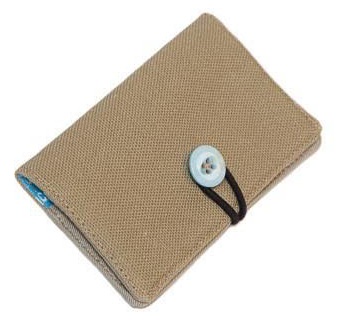 “ Unique bags made with great resources from great people….When you choose a STRUCTUREbag purse or accessory, you know you are getting a bag not only hand-crafted in the USA, but eco-friendly as well. The canvas on your bag is 100-percent organic. The vintage button on your bifold is often upcycled. The high quality, 100-percent wool fabrics are hand-felted by a one-woman-shop in South Carolina. We source our labels and printed canvases from other small businesses around the country.”
“ Unique bags made with great resources from great people….When you choose a STRUCTUREbag purse or accessory, you know you are getting a bag not only hand-crafted in the USA, but eco-friendly as well. The canvas on your bag is 100-percent organic. The vintage button on your bifold is often upcycled. The high quality, 100-percent wool fabrics are hand-felted by a one-woman-shop in South Carolina. We source our labels and printed canvases from other small businesses around the country.”
Red Duck Organic Ketchup
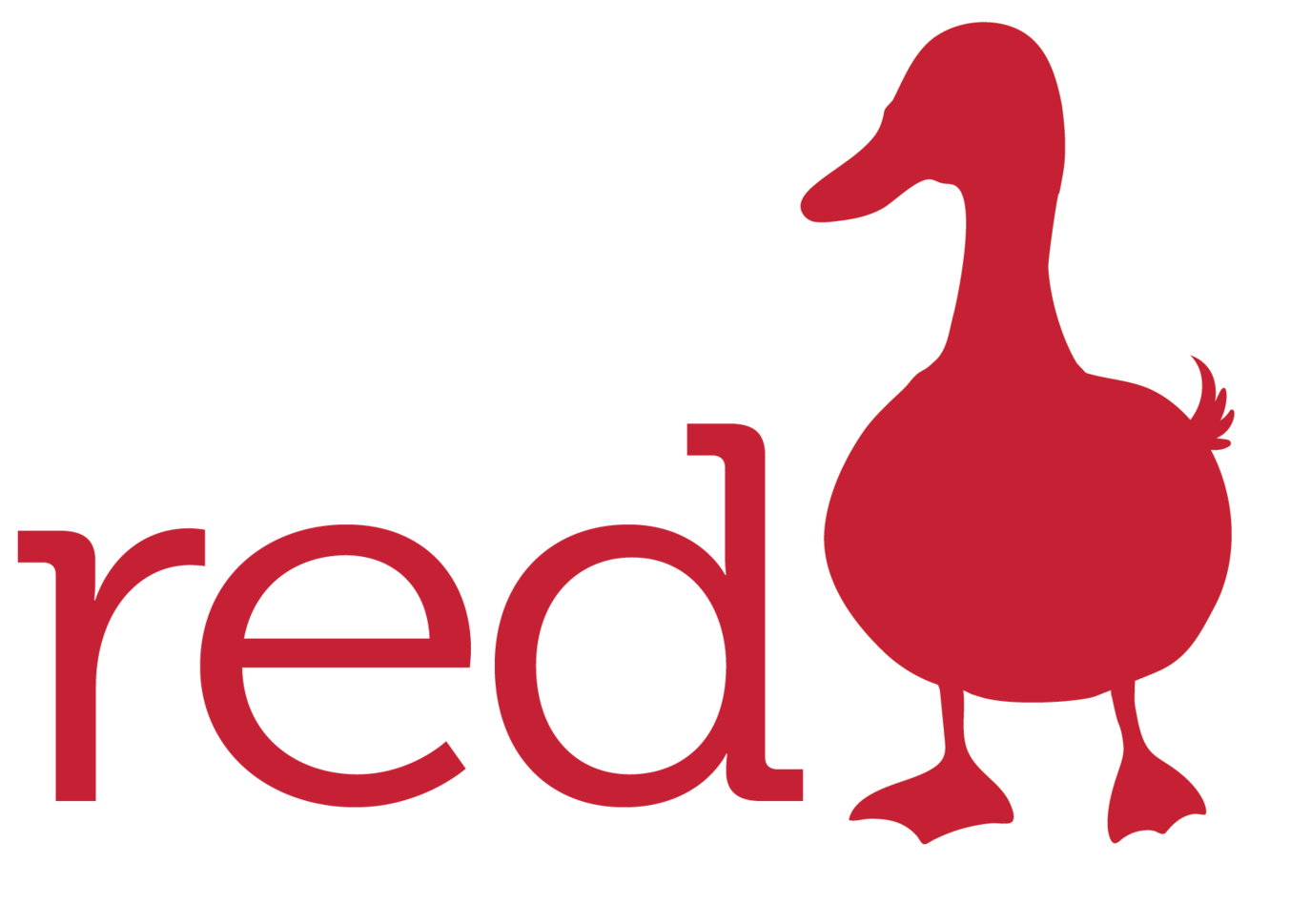 Classic and flavored ketchup made from organic ingredients. Contains organic cane sugar. “The three of us met as MBA students at the University of Oregon, where we discovered our shared passion for food and experimenting with new flavors. For a class project, we decided that conventional ketchup just wasn’t cutting it for us. So we decided to make our own.”
Classic and flavored ketchup made from organic ingredients. Contains organic cane sugar. “The three of us met as MBA students at the University of Oregon, where we discovered our shared passion for food and experimenting with new flavors. For a class project, we decided that conventional ketchup just wasn’t cutting it for us. So we decided to make our own.”
What “Natural” Means to the FDA
Last week the FDA announced that is is requesting comments on the use of the term “natural” on food labeling.
Currently there is no legal definition of “natural,” though it is used on many labels and even for whole groups of products such as “the natural foods industry” and the “natural cosmetics industry.”
I have always thought “natural” means there are no artificial ingredients in the product, such as artificial colors, flavors, and preservatives. But it has never referred to the basic food ingredients themselves. So I product can be labeled “natural” but still have pesticides and other artificial and toxic chemicals on the basic food ingredients.
Now some are saying that GMO foods should be allowed to be called “natural.”
The FDA stated
Although the FDA has not engaged in rulemaking to establish a formal definition for the term “natural,” we do have a longstanding policy concerning the use of “natural” in human food labeling. The FDA has considered the term “natural” to mean that nothing artificial or synthetic (including all color additives regardless of source) has been included in, or has been added to, a food that would not normally be expected to be in that food. However, this policy was not intended to address food production methods, such as the use of pesticides, nor did it explicitly address food processing or manufacturing methods, such as thermal technologies, pasteurization, or irradiation.
Since the FDA is asking for our opinion, I gave some thought to this, this morning.
The term “natural” related to foods began to be used I think in the 1970’s, as a way to distinguish foods with additives from foods without additives. I remember this. At the time, consumers were beginning to be concerned about artificial colors and flavors and preservatives, just as we are now concerned about GMOs. There was just no awareness of pesticides on foods. And so “natural” made sense because there was the basic food supply and then there were these additives and “natural” meant that the foods didn’t contain these additives.
It wasn’t until much later that the term “organic” began to be used, first by small local certifiers that wanted to distinguish their foods from those with pesticides. Eventually the organic certification and labeling became the National Organic Program that we have today, with the USDA Certified Organic seal. This goes far beyond what “natural” ever intended.
GMOs are a whole other category. Since “natural” doesn’t address the food itself, but only the lack of additives, a “natural” food could be GMO without additives.
But the term “natural” also has another use with regards to products.
“Natural” can also mean that the base materials used come from nature. A natural food, for example, would basically be an apple or a pig and the like. A natural cosmetic would have all it’s materials come from nature, and no synthetics. Natural fibers would be cotton, linen, silk, etc, and not polyester. However, it did not include how these materials from nature instead of a factory were grown or processed. So you could have natural cotton with pesticides and toxic dyes and finishes and it would still be called “natural.”
Ideally what we need and want is a natural material in it’s natural state. An apple should not have pesticides or waxes. It should just be an apple and nothing else. Just apple as nature intended. No pesticides. No GMO alterations. Just Mother’s Nature’s apple.
And we already have a label for that: “organic.”
It’s fine with me if “natural” is used as described above. The problem is that most consumers don’t understand the terminology.
I don’t think “natural” need to be redefined, I think more people need to understand where it comes from and how it’s commonly understood in our culture.
“Natural” can distinguish materials made by nature from industrial materials made by man. “Organic” can be used to distinguish those natural materials in their natural state, uncontaminated by synthetic materials in growing or processing.
Those are the current definition in common use, they just are not widely known.
I do think, per the FTC “Green Guides,” that if the term “natural” is used, it should be further defined on the label or webpage, as it could be false and misleading without further explanation.
Hidden Toxics
Just before the Thanksgiving holiday, I received an email with the subject line: “The Google spinoff tracking toxics in buildings.” Google tracking toxics? What is this?
So I clicked through to the article GreenBiz: Google, thinksetp, Flux and their database of building materials’ enviro impact
I had to see this. www.quartzproject.org
The Mission:
The Quartz Project is an open data initiative that promotes the transparency of building products. Our goal is to drive market transformation towards less toxic, lower-impact materials for better buildings and healthier communities.
It’s an interesting site. They’ve analyzed 101 common building products. “For the first time, both life cycle impact and health hazard data are integrated into an open database>” Read the Methodology page. It’s pretty interesting.
I’m going to walk you through it because it took me a while to figure it out.
I went to a product (acoustical ceiling panels) . You’ll see a general description and then there are 5 big headlines. When you click on the headlines, they open to give more information.
I clicked on “General Composition” and saw two components: gypsum and PVC. There’s a column called “Health Hazards” that drops down to a list of hazards with colored boxes next to them, but I’m not sure what this means.
Then I clicked on “Impurities.” Impurities? Apparently these are all the chemicals that are in the two components. There are 27 impurities listed for the two components. Things like formaldehyde, mercury, lead, a few radioactive materials.
Then there is a “Health Profile” and an “Environmental Profile”, and a comprehensive “Sources” list, with each title linked to the actual source material.
But what interests me most are these impurities. I’ve never seen this disclosed before. This is a whole new level of looking at toxics. A whole new level of disclosure. It turns out there is a whole field of “toxic impurities” that we never see as consumers. I’m starting to research this and will be writing more about it in the future.
This level of data kind of makes current product labeling look really inadequate.
But I have to say, knowing about all the impurities didn’t make a difference for me in terms of evaluating the toxicity of the product. It just reinforced my earlier decision not to use this product. I rejected it years ago because of the PVC. I don’t need to know all the impurities in PVC to know it’s toxic. PVC has already been established as a toxic plastic. But it does need to be known to formulators, so they can work to eliminate them.
Great start. I’d like to see this data for every product. It’s like looking through a toxics microscope.
IKEA making PBDE-free couches
Question from Katie Hines
Hi Debra,
www.ewg.org/enviroblog/2015/03/five-couches-without-flame-retardants-you-can-buy-right-now
Is the flame retardants what make polyurethane toxic or is it something else?
Debra’s Answer
Some organizations are making a big deal out of companies that are removing flame retardants from sofas.
Removing flame retardants is a great step in the right direction, but there are more toxic chemicals in a sofa than flame retardants.
Here’s a list of materials in the Extorp sofa from IKEA that was mentioned on the list from EWG that you sent.
Back and seat frame:
Fiberboard
Moisture resistant particleboard
Plywood
Solid pine
Polyurethane foam 1.2 lb/cu.ft.
Armrest:
Hollow fiber polyester wadding
Solid pine
Fiberboard
Moisture resistant particleboard
Cardboard
Polyurethane foam 1.2 lb/cu.ft.
olyurethane foam 1.5 lb/cu.ft.
Seat cushion:
Non-woven polypropylene
High-resilience polyurethane foam (cold foam) 2.2 lb/cu.ft.
Polyester fiber balls
Fiberboard is a type of engineered wood product that is made out of wood fibers. Types of fiberboard (in order of increasing density) include particleboard, medium-density fiberboard, and hardboard. So we don’t know exactly which fiberboard it is or what type of resin was used. Could be emitting formaldehyde.
Then there is particleboard, which for sure is emitting formaldehyde, and plywood, which probably is emitting formaldehyde as well.
Polyurethane foam also emits many chemicals all by itself, even without the fire retardant.
This is why I always look at ALL the materials in a product to determine if it is toxic or safe, and not just think it’s OK because one toxic element has been removed.
Some 3D Printing Materials Are Toxic
When 3-D printers were first announced, I questioned how toxic the materials might be that are used to make the 3-D objects.
Now a new study shows that the materials are toxic to fish embryos and may be toxic to other animals [that would include humans]
This was discovered when a graduate student used a a 3-D printed, custom-shaped disk to help analyze zebra fish embryos in her lab. But there was no analysis because the material killed the baby fish very quickly.
The student and her advisor decided to text the toxicity of products made from two of the most popular 3-D printers currently available. One uses an unspecified melted plastic and the other an unspecified liquid resin that hardens when an ultraviolet light shines on it.
They found that both materials were “pretty acutely toxic,’ meaning that the fish embryos died soon after coming in contact with the material.
Giving Thanks to Beatrice Trum Hunter
When I first started doing my toxics work—more than 30 years ago—one of the only authors writing about things natural was Beatrice Trum Hunter.
She was the author of the first natural foods cookbook in the United States and has published more than 30 books on food, the environment, toxins, and nutrition. Her most recent book, Our Toxic Legacy: How Lead, Mercury, Arsenic, and Cadmium Harm Us, was published in 2011, when she was 93. She provided Rachel Carson with research and sources that helped her to write Silent Spring. And she updated a chapter in Adelle Davis’s Let’s Eat Right to Keep Fit book.
She is now 96 years old, still teaches nutrition classes, and lives alone at the end of a gravel road in a small town in New Hampshire.
What a testament to natural living!
Thank you Beatrice, for all you have done to make the world less toxic.
Read about Beatrice in this article from Yankee Magazine
Evaluating A Study and Testing a Test
 My guest today is Pamela Seefeld, a registered pharmacist who prefers to dispense medicinal plants and other natural substances instead of prescription drugs. In addition to knowing an infinite amount about the dangers of drugs and the benefits of natural remedies, Pamela also a grant reviewer for the National Institutes of Health in Washington D.C. So today she’s going to tell us what we need to know about scientific studies and test, so we can understand what’s going on behind the scenes. Pamela has more than 25 years experience choosing and selling top quality medicinal supplements, so she’s seen it all. Pamela is a 1990 graduate of the University of Florida College of Pharmacy, where she studied Pharmacognosy (the study of medicines derived from plants and other natural sources). She has worked as an integrative pharmacist teaching physicians, pharmacists and the general public about the proper use of botanicals. Pamela is the owner of Botanical Resource and Botanical Resource Med Spa in Clearwater, Florida. www.botanicalresource.com
My guest today is Pamela Seefeld, a registered pharmacist who prefers to dispense medicinal plants and other natural substances instead of prescription drugs. In addition to knowing an infinite amount about the dangers of drugs and the benefits of natural remedies, Pamela also a grant reviewer for the National Institutes of Health in Washington D.C. So today she’s going to tell us what we need to know about scientific studies and test, so we can understand what’s going on behind the scenes. Pamela has more than 25 years experience choosing and selling top quality medicinal supplements, so she’s seen it all. Pamela is a 1990 graduate of the University of Florida College of Pharmacy, where she studied Pharmacognosy (the study of medicines derived from plants and other natural sources). She has worked as an integrative pharmacist teaching physicians, pharmacists and the general public about the proper use of botanicals. Pamela is the owner of Botanical Resource and Botanical Resource Med Spa in Clearwater, Florida. www.botanicalresource.com
LISTEN TO OTHER SHOWS WITH PAMELA SEEFELD
- Vaccines: Harmful or Necessary?
- Seven Deadly Drugs
- The Hidden Dangers Affecting Your Heart and How You Can Protect It Naturally
- What We Can Do About Cancer
- The Power of pH
- How to Protect Your Health From Toxic Mercury Dental Fillings
- Pharmacology 101: How to Use What Pharmacists Know to Take Supplements to Best Advantage
- Are You Heading For Kidney Failure? Natural Remedies Can Help
- How to Keep Your Blood Vessels Open and Flowing With Supplements
- How Inactivity Leads to Illness and Drug Use—And How Exercise Can Get You Off Drugs and into Health
- How to Protect the Environment from Pharmaceutical Pollution by Using Natural Medicinals
- Hidden Toxic Dangers in Common Dietary Supplements
- See More Clearly with Natural Remedies
- Hidden Mental Health Dangers in Common Drugs
- Different Types of Detox
- Getting Off Prescription Drugs with Natural Remedies
- How Natural Remedies Could Have Saved A Life
- Natural Alternatives to Sleeping Pills
- Natural Back Pain Treatment Options That Work
- How Toxics Age Your Body & What You Can Do to Stay Young
- You CAN Lose Weight—Even if You’ve Had Difficulty Losing Weight Before
- Calcium—Is There Really a Deficiency in America?
- It’s Cold and Flu Season—How to Support Your Immune System and Why You Shouldn’t Get a Toxic Flu Shot
- How Eating Fruits and Vegetables Help Your Cells Create Health
- Toxic Psychiatry and How to Have Mental Health Without Drugs
- Why You Should Take Fish Oil and How To Choose the Right One for You
- Medicinal Plants Can Replace Toxic Drugs
TOXIC FREE TALK RADIO
Evaluating A Study and Testing a Test
Host: Debra Lynn Dadd
Guest: Pamela Seefeld
Date of Broadcast: November 18, 2015
DEBRA: Hi, I’m Debra Lynn Dadd, and this is Toxic Free Talk Radio, where we talk about how to thrive in a toxic world, and live toxic free.
It’s Wednesday, November 18, 2015. I’m here in beautiful Clearwater, Florida where we’re having an autumn-ish day. It’s only 80 degrees here in beautiful Florida. But a cold front is coming, and I’m so excited because it’s time for us to have some cold.
Today, my guest is Pamela Seefeld. She is my guest every other Wednesday because she has so much to share with us. She’s a registered pharmacist who prefers to dispense medicinal plants and other natural substances instead of prescription drugs. But in addition to knowing an infinite amount about the dangers of drugs and the benefits of natural remedies, she also wears another hat of being a grant reviewer for the National Institutes of Health in Washington D.C.
So today, she’s going to tell us what we need to know about scientific studies and tests so we can understand what’s going on behind the scenes.
Hi, Pamela.
PAMELA SEEFELD: Hi. It’s great to be here.
DEBRA: Well, it’s great to have you back because I think the last two, every other Wednesdays, we played replays for various reasons. So now here you are live.
PAMELA SEEFELD: I was teaching a class. And yes, I am here.
DEBRA: Good. Okay, so first tell us what you do as a grant reviewer. Specifically, what’s your job?
PAMELA SEEFELD: In the past, and then in the future now, when I grant review, what they do is the NIH has this money that’s available from the federal government. This money is available – a grant is basically the money they give you, and when you write up a grant to be submitted to NIH – there’ll be a panel of, maybe, 12 people or something, depending on what subject matter we’re doing.
The one I usually do is herb/drug interactions, or herbal medications.
And that’s normally done through NCAM, which is the National Center for Complementary Alternative Medicine.
So what happens, say, I’m a research and I’m at a university, and I want to get grant money, and this grant money is going to be used for a study, I submit the forms – I basically design a study. So these people, the grant reviewers, sit around and they decide who gets the money. That’s basically what it is.
Based on reading what your objectives are and the study design, we make summaries of these, and we actually get to see them ahead of time. We write a summary of what we think, and then we all compare if this is person should be getting the funding.
So that’s basically how these are vetted.
DEBRA: Can you give me an example of how you make the decision?
PAMELA SEEFELD: I’ll give you an example of one that we wouldn’t decide to use. One in particular that I’m not saying any names or anything, but they wanted to study a particular herbal remedy, and instead of designing it whether just looking at a standardized product of that remedy, the study design had – they were going to put in a beaker. They were going to put all these herbs and there, and then they were going to draw an extract out of it, and then they were going to go ahead and give it to people.
Well, that didn’t make any sense because the design in the beginning, the objective, said they were studying herb x, but why are they putting all this stuff in the beaker, and then they’re going to boil it down, and they’re going to make this concoction?
The study designs are designed to fail.
And also, product is very important. A lot of the studies that you see that are negative about vitamins are done under poor quality products because, let’s say, the grant is $50,000, whatever it is. The researcher writes in their salary, which is usually significant to conduct the study. By the time they get to the product itself, they probably looked for the cheapest stuff because they really don’t want to have an expensive product because the more money they have left over, the more they have for themselves.
Does that make sense?
So a good example is Vitamin E. Synthetic Vitamin E, we know, really does not act in the body the same way as real Vitamin E. Real Vitamin E taken from wheat germ, just from various plants, when they extract that it has more bioavailability to the body, and the body recognizes it as such.
So when people are using synthetic products, and they’re using poor quality products, and maybe these generic products, who knows, maybe something from overseas that they’re getting a cheap deal on, and maybe they’re not inspected facilities, this can definitely set outcome.
DEBRA: I think about that a lot because I read a lot of studies. I don’t read the whole entire study, but I’m reading a lot of abstracts. And sometimes, I read the study because I’m reading them to find out if something’s toxic, or if it’s saying that it’s safe.
The thing that is always unknown to me is it’s like reading a product label. There are so many unanswered questions. It might say, “We tested Vitamin C, and it did this or didn’t do that.”
But you have no idea what kind of Vitamin C, if it was organic or not organic.
All these questions, and we don’t get enough information about what’s being tested.
PAMELA SEEFELD: By far. And I think too an investigator bias is a big part of it because if you’re expecting to have a negative outcome that’s what you’re going to find. And we know that in statistics that’s how you design the study, it’s what you’re going to choose.
I’ve actually seen a study design where I know that the person that didn’t want to show an accurate result, and other studies where maybe people are biased, and they just really were so gung ho about it that they thought that this is going to work.
And the time when you normally see that is when companies do studies in their own product.
DEBRA: So if somebody – if there are listeners or me or you are reading a study, so then what we want to do is, the first thing, would be that there would need to be an objective viewpoint. So you’d want to look and see who’s doing the study.
PAMELA SEEFELD: Yes. You want to see who’s doing the study, and actually, a lot of the negative studies [inaudible 00:07:08] a lot of the negative studies that are written [inaudible 00:07:10] is not used as much as that it used to be. But still, there is a percentage of the population that does find relief from depression from it.
And it also has – there are two open trials with OCD to use that as well.
It can be effective for those conditions. And in the beginning, those original studies that show the same [inaudible 00:07:27] had all these drug interactions, and all these problems, it didn’t work, were conducted by the companies that actually make the anti-depressants.
[inaudible 00:07:38] in the small print.
DEBRA: Yes, you want to make sure that the person who is doing the study doesn’t have a vested interest in the outcome, that there needs to be just neutral parties. Ideally, when you do – so you’re doing a scientific experiment and, ideally, you would want to have somebody doing that experiment who is okay with it coming out either way.
PAMELA SEEFELD: That’s exactly right. And we’re going to have investigator bias on both sides. It seemed to be expected, but it’s also important when you’re interpreting negative data about supplements and their effectiveness because usually, these headlines that catch people’s attention that multivitamins don’t do anything for you, or Vitamin C is dangerous.
These types of things you need to really look and see who’s designing the study.
A lot of times the people that are designing the studies don’t expect to have a positive outcome, and their bias is very obvious.
DEBRA: So when you’re looking at these studies, when people are submitting to get the grant money, then they have written out what the study that they’re going to do, and you can take a look at it and see how it’s slanted, even before you grant the money.
PAMELA SEEFELD: Correct. And that’s why, hopefully, the people that are actually doing the reviewing – and most of the time, these people don’t have education and background in any ways. So they’re going to check people that are going to be a little bit more objective. And you would hope that that’s the way it always works, but in a lot of drug trials that’s now how it works, and we know that.
Actually, the new studies have just come out that the medical literature has just riddled with all of these peer-reviewed journals that they used to think that [inaudible 00:09:19] so important.
Peer-reviewed, for your listeners, is that, say, I published a study. Before I publish it, it goes to people that are in my same vocation. So maybe they’re doctors or whatever, maybe they’re in a particular field of pharmacognosy, and they review it for accuracy. That’s called peer-reviewed.
But a lot of these peer-reviewed studies they’re seeing now the results were not peer-reviewed correctly, [inaudible 00:09:43]. I’m reviewing for my friend, that kind of thing. There are a lot of inaccuracies in the medical literature. They recently came out with that, so a lot of that is not true, especially in psychology.
But they can’t reproduce most of the studies in psychology. It’s over 80%.
DEBRA: Wow because that’s supposed to be – the peer-reviewed journals are supposed to be – the places that you trust.
PAMELA SEEFELD: And that’s true. But what’s happened is that the people that are reviewing, your peers, are your friends too.
And that’s what they’re thinking that there’s some bias involved in there. I think it’s important to just look at the study design and see if there’s some sort of cohesiveness and some thought process that your product was chosen correctly, the study was done correctly. But there will be attitude in that.
A good example of that is homeopathic medicine, which is what I do.
DEBRA: Before you go on, we need to go to break. And we’ll talk about this when we come back.
You’re listening to Toxic Free Talk Radio. I’m Debra Lynn Dadd, and my guest today is Pamela Seefeld. She’s a registered pharmacist who prefers to dispense medicinal plants and other natural substances. But today, she’s wearing her other hat as a reviewer for the National Institutes of Health.
We’re talking about tests, and studies, and all about them.
We’ll be right back.
DEBRA: You’re listening to Toxic Free Talk Radio. I’m Debra Lynn Dadd, and my guest today is Pamela Seefeld. She’s a registered pharmacist who prefers to dispense medicinal plants. But she also does grant reviewing for the National Institutes of Health, which is what we’re talking about today.
Pamela has a website, BotanicalResource.com. She can ship things to you from her natural pharmacy. And she also is happy to talk to you at no charge, over the phone, to help you find a natural remedy that will help whatever is going on with you.
And also, if you’re interested in getting off drugs and use a natural remedy instead, she can help you with that too.
So Pamela, why don’t you give your phone number?
PAMELA SEEFELD: Yes, absolutely. I would be very honored to help you or your family members, and also your animals, with any homeopathic remedies you might have, or if you want to transition off of some of your medications. I can definitely help you with that.
You can call me here at my pharmacy. It’s 727-442-4955. That’s 727-442-4955.
DEBRA: Okay, good. So continue now with what you started to talk about before the break.
PAMELA SEEFELD: Okay, great. So I did some studies in the [inaudible 00:15:03] medicine. I wanted to look at some of the pros and cons. Some of the newest studies just came out with homeopathics and with vitamin therapies, just to give some examples of some of the things we’ve been discussing.
So complementary and alternative drug therapies versus science-oriented medicine. So there’s one study that just came out in June of this year, and it was from the German Medical Society. This German Medical Society was against homeopathy. They did not – and this is out of Germany. They were not happy about it.
This is one side of it that they didn’t like complementary and alternative medicine.
But then in September of this year, oncologists in Germany, are for homeopathy, and this is in the current oncology representation. So this is in another journal, and it’s saying homeopathy is so great for cancer care, and that [inaudible 00:15:59] given a low cost, minimal risks, potential magnitude of homeopathy affects. It should be considered in many situations as an integrative tool for cancer care.
So this is the thing. It depends who is – everyone’s go an opinion. So if your society is against something, your position paper and your study are going to be against it. And the people that are for it – and this is [inaudible 00:16:25] because these actually are oncologists. They’re allopathic doctors. The title is, “Is There a Role for Homeopathy in Cancer Care? Questions and Challenges.”
This just shows an example that this is in the same year, same country, one person is thinking of good, and one person thinks [inaudible 00:16:43] any good.
And really, let me tell you about homeopathy. People do not get hurt with homeopathy. That’s very important. When you take a regular medicine, there are a lot of side effects. Homeopathic remedies are extremely safe, extremely effective, and I’ve worked with them probably 20 years. I really find that they are the really the bridge for health for people because a lot of times maybe they’re not responding to a medicine or they don’t want to take a medicine.
Homeopathic remedies, especially for liver problems, kidney problems, cancer problems, their response is very effective and very safe. And most of Europe really does embrace it.
In fact, in Germany, you can go to a homeopathic doctor or an allopathic doctor, and insurance pays for both, and they also pay for the homeopathic medications in the pharmacy.
DEBRA: Wow. How forward-thinking.
So now, here we have the government, I guess it’s the government or insurance – the insurance is paying for homeopathy. Is it social medicine or [inaudible 00:17:49]. Okay, social medicine. The government in Germany is paying for homeopathy and sending people to homeopathic practitioners.
And yet, they’re still – in the journals, in the medical journals, they’re still saying it works or it doesn’t work.
This is always the question. Even if you read the newspaper, they have to give you a “balanced view” and tell you both sides. But then, how are we supposed to know which side is true?
PAMELA SEEFELD: That’s a good question. I think a lot of it is research bias. If you see someone that has a certain position paper, and it looks to be biased in whatever their profession is – and the good part about what I do is I’m not biased one way or the other. I do both.
My whole day is not just all integrative medicine. Part of it is working in the ER, working on dosing medications for people who are coming in from the ambulances.
So I know both, and I’m not negative against drugs because if someone comes to me, sometimes there are times where I write down and say, “They gave you the wrong prescription. They’re nothing herbal medicine for this. This is what they need to give you.” And I’m right.
So it’s really important to see without bias. I think that your listeners in particular need to do some general questions where you ask yourself, but especially vitamins. Vitamins tend to be a target, and I want to explain why that is.
Because in vitamins, there’s really no money for regular companies. They don’t really want you taking them because they want you to take medicines instead. Medicine is where the money is at.
And the Vitamin C – I’ll give you an example of Vitamin C. When I did some research studies here, and I did some med line searches for the potential of Vitamin C, a lot of the studies were very favorable about Vitamin C. I didn’t see anything negative except what’s called an epidemiological study.
And what that is, I’ll explain it to the listeners, epidemiological study is not really a study at all. What they do is they set somebody in front of a computer, maybe a grad student or something, and they search Vitamin E and cancer. And then they put in certain different terms. And then they go back and they search hundreds of studies. And then they look at them, and then they determine that everything is really bad.
That’s usually what the outcome is.
But if I’m taking a study from 15, 20 years ago, and maybe I don’t have – I had any information about the product they used, the study design, because what you’re going to find now is not going to be the full paper. Or maybe you’re not going to find some detailed information about.
The thing is [inaudible 00:20:25] that could have been contaminants. We have the FDA inspecting these facilities now.
In the past, they weren’t.
So you can’t compare these old, old studies on vitamins that maybe were produced in a factor some place that maybe the equipment wasn’t cleaned properly, or whatever.
Now, most of the vitamin companies in the United States, in particular, they follow GMP, which is Good Manufacturing Practices. So the equipment is clean, there are lot numbers, expiration dates. You don’t know what they were using.
So these old studies that they’re using to collate this data and make assumptions and decisions based on that, and make a position paper for that – so when you see epidemiological, the important thing for the listeners to realize, when you see epidemiological study, it’s not necessarily true.
DEBRA: Okay, good. We’ll talk more about this when we come back.
You’re listening to Toxic Free Talk Radio. I’m Debra Lynn Dadd. My guest today is Pamela Seefeld. She’s both a registered pharmacist, like she said, she works in a hospital. And she also has her own natural pharmacy where she has homeopathic remedies and other natural substances that can help heal your body.
And we will be right back.
DEBRA: You’re listening to Toxic Free Talk Radio. I’m Debra Lynn Dadd, and my guest today is Pamela Seefeld. She’s both a registered pharmacist and she has a natural pharmacy where she dispenses natural remedies and homeopathic remedies.
Pamela, during the break, I was reading my e-mails – that’s what I do during the break, and I got – there’s something, an article about asking, is there plastic in sea salt? And apparently, they did. This was reported in the – okay, now here’s an example of a study and a journal. And this is a journal I read a lot, Environmental Science and Technology.
And all they talk about in this journal is studies that show that things are toxic, or not toxic. It’s all about toxicity.
And so, what they found, what one of these studies found by examining the sea salt was that there are extremely, tiny pieces of plastic in sea salt.
And now, the sea salt that they examined – and again, this gets back to now – I’ll tell you what it said, and then you can comment on this instead of me commenting on it.;
So the sea salt came from China, and they found – they measured more than 1200 particles of plastic per pound of sea salt.
Now, I know that you eat Himalayan salt like I do. And the difference between sea salt and the Himalayan salt is that all salt is from the sea originally, except that some of these seas are extremely ancient and are now buried at the bottom of places like the Himalayan Mountains.
And so the salt that did up out of the ground in the Himalayas, even though it was originally an ancient now, it has been sitting there since the beginning of time. And so there’s no way that plastic is going to get in Himalayan salt, whereas salt that comes from evaporating sea water –
I don’t know if you all listening have ever seen this. But I used to live in San Francisco, and so every time I would come on an airplane, right next to the airport – that’s a great place to put this. But right next to the airport are these fields where they have – where they made these little sections where they blocked up the water, and the sea water comes in from the San Francisco Bay, and they evaporate it, and you can see all the fields in various stages of evaporation.
And that’s where the sea salt comes from. It comes from all the pollutants in San Francisco Bay, and right next to all the pollution from being right next to the airport. And that’s sea salt. That’s that sea salt.
PAMELA SEEFELD: I believe there’s [inaudible 00:29:49] in there, absolutely. We know that there are high quantities of plastics, small microbes, small amounts of plastic in the seas. That’s not any new news.
So actually, I believe that study. I really do. And the fact about Himalayan salts, if you talk about rock salt, any type of rock salt from an ancient sea bed, the reason why you see all those colors, those are animals that have deceased, and you’re taking the nutrients that were in those shells and in those animals that are buried in this salt.
That’s why it’s so much more nutritious because you’re getting all the trace minerals, and especially the Himalayan salt, because all the pink, you have a lot of iron.
DEBRA: And real salt is also from under the ground.
PAMELA SEEFELD: Yes.
DEBRA: Those two. Those are the two –
PAMELA SEEFELD: I like both of them but I think the Himalayan tastes a little sweeter.
DEBRA: I think it does too. I like their taste. But I use both of them, alternating back and forth.
PAMELA SEEFELD: Me too.
DEBRA: Real salt has one that – they have a garlic salt with organic granules of garlic, and I really like that one.
PAMELA SEEFELD: I have to try that. That sounds good.
DEBRA: Yes, they have four or five flavored ones. It’s really good.
So here’s an example of a study where they actually counted something.
PAMELA SEEFELD: Correct. And they’re actually very good example, even though the people that were doing it were probably expecting to find the plastic. The fact that they went and countered how many parts per million of the salt, and they went and probably did a spectrometer and measured that, that to me seems like a valid study, and I would definitely not think there’s so much investigative bias.
I’m sure for a person that would be doing it for maybe the salt company itself too, if they’re really evaluating under the same circumstances that they did originally, they would find the same thing.
We would expect that.
DEBRA: We would expect that. And I think that a lot of times I see studies because of what I’m looking at. I’m not particularly looking at drugs or things like that. I’m reading studies that are like this, where they’re talking about some kind of consumer product. And so I read something like, is plastic leeching out of plastic water bottles?
And so there’s some speculation, or there’s some reason to believe that there’s something going on. And then the study is there to confirm it.
PAMELA SEEFELD: You’re exactly right. The plastic is coming out of water bottles. It’s coming out of food you heat in the microwave.
Actually, there’s a product called Detox 3, it’s a homeopathic that pulls out plastics out of the body, and especially if somebody has a high breast cancer risk, or has had breast cancer, or they just want to clean that out of their body, you can put this in detox bottle every day, and that will pull all of these microscopic amounts of plastics that are in your body.
DEBRA: We should just explain what a detox bottle is.
PAMELA SEEFELD: A detox bottle is when you take a bottle of water every day – and normally, I tell people to put the Body Anew, which is a detox product that pulls out nickel, cadmium, lead, mercury, pesticides, chemicals. And you just put 10 drops of each bottle in this bottle of water. And then if you need to add something else in the water that’s for your particular needs.
I use something called [Cortego] complex, if you have hypertension. Detox 1 is for the liver, if your liver enzymes are elevated. Detox 2 is for the kidney, if your serum creatinine is starting to elevate as well as your kidney stones. Detox 3 is for plasticizers.
So there are a lot of different homeopathics. I probably have maybe 75 different kinds here, depending on what you need, maybe thyroid support, anti-depressants, whatever.
You put this in the water, and you drink it over the course of the day. And that’s what we mean by a detox bottle.
Detox 3 is a particular product that is meant to remove plasticizers. And I’ve got that specifically for a lot of the breast cancer patients because a lot of times, we know breast cancer, these plasticizers act like estrogen in the body. And that’s where a lot of this is coming from.
DEBRA: I also wanted to mention, since we’re talking about salt, I just want to finish up and say that if you – I don’t buy packaged foods. I don’t even buy most what are called natural foods or even some organic foods. I just try to stick with buying fresh foods and putting my own salt on it.
That way, I know what it is. I know the water it was washed in.
If they’re washing foods in tap water, then you’re getting chlorine absorbed into – or fluoride, or whatever. You just don’t know what’s in packaged food unless they are really upfront about telling you exactly how they do it.
But if it says sea salt on the label, this is what it is, a bunch of little bits of plastic.
So we need to go to break.
You’re listening to Toxic Free Talk Radio. I’m Debra Lynn Dadd, and my guest today is Pamela Seefeld. When we come back, we’ll talk more about studies and tests.
We haven’t talked about how to test the test yet. So we’ll talk about that when we come back.
DEBRA: You’re listening to Toxic Free Talk Radio. I’m Debra Lynn Dadd, and my guest today is Pamela Seefeld. She’s a registered pharmacist who prefers to dispense medicinal plants, but she also dispenses drugs when that’s warranted. She can help you choose either one.
Sometimes she advises people on taking a different drug that might work better for you.
So Pamela, why don’t you give your phone number again, and then let’s talk about testing a test.
PAMELA SEEFELD: Okay, good. So you can call me here at my pharmacy, and I would be, like I said, very honored to help you or your family if you had a question about medications, even your blood work if you want some interpretation on that. You might see what vitamins are working well for you, which ones are not.
You can call me here at my pharmacy. It’s 727-442-4955.
DEBRA: Great. So testing a test.
PAMELA SEEFELD: So studying a study and testing a test, what we want to know is we’re looking at different methods. When we look at studying a study and testing a test, we have several things we look at.
First thing we look at is method and assignment, and I’ll go through those. Results is number two. And number three is interpretation and extrapolation. So what this means is method, which study population are you looking at?
Most of the time, you’ll set the criteria. They don’t do a lot of studies in children, which for obvious reasons, for consent and so forth. But a lot of the studies are probably done, let’s say, adults 18 to 30 years old, something like that.
So you’re not getting in the elderly people. If you’re looking for a young, healthy population, that’s where sometimes your best results. And sometimes they use older people if they’re studying medications that are specifically going to be used in that population.
So the first thing you look at is the method, and under the method it’s the study population. So what kind of group of people? What are group do you choose? And also with study population, you have to look and see, are they smokers? Are they not smokers?
Maybe you control for diet, how many servings of fruits and vegetables do they have?
You can see my point.
So method is important. You have to look at the method and see that they ask people about their dietary habits, and smoking, and drinking, and things like that to see if those things, especially – say, we’re doing a study on a drug for liver failure, or to prevent liver failure. Or how about herb?
Milk thistle. I love milk thistle. It protects the liver. It gets the liver problems.
Well, if you’re doing a study on that and the majority of the people that you have in the study drink a liter of vodka every day, you might see a different result than if you take a bunch of people that are the healthiest, or never drink at all.
So those are important. Those may be confounding variables.
DEBRA: Well, do they screen for things like that?
PAMELA SEEFELD: Yes. A good study – if you look at the methods – say you’re doing an herbal study and you want to see the methods of what they’re doing. They’re doing something that’s [inaudible 00:41:44] herbs for the liver or herbs for the lungs. You want to look at the people that are doing that.
I was going to [inaudible 00:41:48] a study for the lungs, and I wanted to see an outcome, you really want to have people that have problems because you want see if it’s improving.
But if you’re taking people that are generally healthy, and you don’t see any change in their base line status, you wouldn’t have expected it to happen anyway. And that’s where I see a lot of these studies. If they really don’t want to show anything to happen, they’ll take a product that we really think will work pretty well for something, and then they’ll use healthy people.
Well, if they’re not sick, well how do you expect to see anything different?
It’s stupid.
DEBRA: It’s so obvious.
PAMELA SEEFELD: So looking at method is important. What kind of people do they screen out? And also, you need to look at the size of the population because of lot of this – you see a study, it will say n, meaning number. N equals.
Well, if the study of the n number is four people, n equals four, well, how are you going to see anything? We have so few people.
I see a lot of that stuff.
DEBRA: I see that too especially – I forgot what it was. It was something about GMOs where somebody had commissioned a study, and they had a big splash about it. And then it turned out that they had tested eight people.
PAMELA SEEFELD: Exactly. Perfect example. N equals eight. Really, you’re not going to expect to see that much for n equals eight. That’s not going to work.
DEBRA: So how many is a good amount?
PAMELA SEEFELD: It depends on what you’re studying. I don’t think we can really make a generalization, but I would say at least 50 people, a sizeable amount. And if you’re looking for a drug that has a lot of dangerous side effects, you’d really want hundreds and thousands maybe.
So that’s important to see.
Method is important. Assignment is basically your study sample, your control group and your study group. So somebody gets the CIBO, somebody doesn’t. So you have n equals 50, 25 get the CIBO, 25 get the medicine. That could be what we’re looking at as well.
Assessment, this is mundane stuff. It’s important you look at this. You look at the study groups, [inaudible 00:43:55] the control, and your outcome is what kind of results are you getting with this control and the study group? So you look at your outcome, and your outcome is hopefully you see a positive result, and you see no result with the people that got placebo. But remember, with placebo, it’s probably 30% of the people sometimes have response, maybe even higher.
So you have to take that into consideration.
And then under results, you compare. You compare both of those. After the comparison, you draw conclusions, and these conclusions – the conclusions you make, are you trying to extrapolate it to other people besides just the ones that were in the study group.
So that’s when you make generalizations about the people you’re going to treat.
DEBRA: So they test it, they do their test, whatever it is, and then they say –
PAMELA SEEFELD: Then we have our control group.
DEBRA: – these results and say that what we learned from these 50 people –
PAMELA SEEFELD: When we read these things, we’re extrapolating it to the general population.
So say we have n equals 50, 25 and 25, the split between – 25 get the medicine, 25 don’t. They’re doing great. Everything’s fine. And we see a positive outcome from whatever herb it is, say milk thistle, for liver problems – liver enzymes are these people that based on liver enzymes have been elevated, and now, they’re decreasing
So we see that things – and then we say to the general population. Let’s say they know – in estimation, let’s say 10% of the people in the country have baseline ALT and AST, which is the liver enzyme is elevated, whatever it is. I’m not sure of the percentage.
But those people, their response rate was, say 80% is pretty high. These other people could expect similar responses. And that’s where you would get this by looking at the methods, looking at the results and the interpretation, and seeing how the n number is really probably where you’re going to see a lot of it.
And I’ll tell you. I looked here and did some med line searches in the Vitamin C and in Vitamin D, there’s a lot of really good data, good studies that show effective it is for preventing – Vitamin C in particular, preventing Type 2 diabetes. And everyone here is as [inaudible 00:46:17] cancer treatment.
Vitamin D actually too they found that low levels of Vitamin D, some of the newest studies, the low levels of Vitamin D has caused extreme fatigue.
And I thought one of the more interesting ones I found – this is all just published in the last few months. Vitamin E supplementation decreased liver fat content.
So people have fatty liver as a result of having diabetes, elevated blood sugar, maybe they’re heavy drinkers. Fatty liver is really a very, very common problem because the liver will start infiltrating with fat if the sugars are elevated for any length of time.
What they’re finding is that Vitamin E seems to decrease liver fat and it prevents fibrosis.
DEBRA: Wow. There are so many positive things.
PAMELA SEEFELD: These studies actually look pretty good. You look at method and everything and it looked really good.
So it’s important to see n number, methods, how did things – how was the study conducted.
DEBRA: I’ve learned so much from you today about this. I can understand much better now what I’m reading and what to look for.
I wanted to just ask you one last question because we only have a couple of minutes left. You may not even have an answer to this question but I wanted to ask you anyway. And that is, it seems to me that there are a lot of studies done, and then what happens is not much, if they find out that there’s something wrong.
And so you have something, for example, drugs that instead of looking at it and saying, “Oh, here’s a list of 25 side effects. Let’s not put this drug on the market.” They put the drug on the market and then they plug you to full commercials and say over the beautiful music, “And by the way, you might have liver failure and die.”
Why isn’t anything happening, just like banning these things? Why do these harmful products whether their drugs or anything else, why do they get to go on the market?
PAMELA SEEFELD: That’s a good question. I don’t think [inaudible 00:48:25] they’re all harmful. They obviously have shown some response rate.
With their bias and the investigators, it’s possible. But a lot of these medicines are being marketed to protect people against cardiovascular disease, and some of the things in the past, a lot of people died from heart attacks, and a lot of people died from strokes, and these cardiovascular events and thrombotic events. And now, a lot of people live.
So somebody’s medicines have good effects. A good example is all these blood thinners that they have people on for A-fib and for all these heart conditions.
There’s going to be a percentage of the people that are going to bleed out, and that’s a very dangerous thing. And that’s why it’s important that the cardiologist and the pharmacist, and your family practitioner, if you’re being put on any medicine that has a lot of side effects, and has a narrow therapeutic range, and that we defined that as being that the toxic dose and the dose of therapeutic efficacy is small, you’re going to be very careful.
You need to make sure that you’re monitoring your blood work, make sure you’re looking for side effects, and if there’s something that looks suspicious, you need to call your doctor right away – or the pharmacist, or call me. I can give you some ideas.
Also too are people are on blood thinners, and they’re on some of these dangerous medicines. You can use that vascular stabilizers that will circumvent some of the blood vessel capillaries for agility and breaking.
DEBRA: We’re getting close to the end, so why don’t you give your phone number again if people want to call you. Pamela is happy to talk to you for free.
PAMELA SEEFELD: Yes. Please call me. I’d be glad to help you. And the number here at Botanical Resource is 727-442-4955.
DEBRA: Good. And we’ve got to go. Thank you so much, Pamela.
PAMELA SEEFELD: Thank you.
DEBRA: You’re listening to Toxic Free Talk Radio. I’m Debra Lynn Dadd. Be well.
Backyard Green Exchange Grows Food and Friends
 My guest today is Joyce Durnell-White, founder of Clearwater Green Exchange. We’ll be talking about why you should grow your own food and how to create an abundance of food with your friends and neighbors. This local group in Clearwater, Florida encourages members to share backyard produce and support each other in implementing self-sustaining and homesteading activities in this suburban area. area. All items are shared at no cost to members. Joyce has loved to garden since she was a child and takes joy in volunteering thoughout the community. www.facebook.com/groups/420377994822976/
My guest today is Joyce Durnell-White, founder of Clearwater Green Exchange. We’ll be talking about why you should grow your own food and how to create an abundance of food with your friends and neighbors. This local group in Clearwater, Florida encourages members to share backyard produce and support each other in implementing self-sustaining and homesteading activities in this suburban area. area. All items are shared at no cost to members. Joyce has loved to garden since she was a child and takes joy in volunteering thoughout the community. www.facebook.com/groups/420377994822976/
TOXIC FREE TALK RADIO
Backyard Green Exchange Grows Food and Friends
Host: Debra Lynn Dadd
Guest: Joyce Durnell-White
Date of Broadcast: November 17, 2015
DEBRA: Hi, I’m Debra Lynn Dadd and this is Toxic Free Talk Radio where we talk about how to thrive in a toxic world and live toxic free. It’s Tuesday, November 17th, 2015 and I’m here in Clearwater, Florida.
Today, my guest is a very good friend of mine who lives right here in Clearwater, Florida with me. I had known her about I don’t know. I’ve lived here 14 years and I think that she was one of my first friends, one of the first people I knew. And we’ve known each other ever since and we keep crossing paths.
We’re both writers. We were both in a writers’ group and we both belong to a group a number of years ago, maybe 10 years ago now. It was called Create Clearwater and it might still be in existence, but at the time, we were doing all kinds of things to help people. We were really focused on helping people growing food in our own backyards.
And I learned a lot about how to grow food organically here in Florida where we have practically no soil. Everything is built on sand and I know I have soil in my backyard and I know I have organic food growing in my backyard. And it’s because I had help from people who had lived here, knew how to do it and shared it with me.
So I’m having Joyce on the show today because she, all by herself, started another group called Clearwater Green Exchange. I’m going to let her tell you what that’s about, but the whole point of this show is about – let me just say that what inspired me to have Joyce be on the show is that she has a Facebook group, a private Facebook group. But you can join it if you’d like.
And she had posted a picture of a sign, a handwritten sign and this sign said – it actually came from another website. She didn’t make this. But it said, “If we each grow a large crop of different food, we could all trade with each other and eat for practically free.”
And at a time where I just went to the Natural Foods Store yesterday and I was looking at turkeys, which are already here for Thanksgiving and one small organic turkey breast, not even a whole turkey. One small organic turkey breast was $35. Food is expensive. Organic food is expensive and yet seeds are cheap.
So Joyce, hi.
JOYCE DURNELL-WHITE: Hi Debra.
DEBRA: Thank you so much for being on. We have a lot to talk about today. So first, why don’t you tell us how you got started in gardening? Why is this such a passion for you?
JOYCE DURNELL-WHITE: Oh man, I think I was born with the passion. As a child, I had a lot of interest in the nature of things and particularly in plants. And one day, I actually found out finally that plants grow food seeds. I had always wondered where the plants come from. This was when I was a little girl.
DEBRA: I’m smiling as you say that because I think that a lot of people actually don’t know where plants come from and I know that that sounds like a very simple thing. I met somebody who didn’t know where wheat came from. “Where does the wheat for bread come from?” And I really thought that he didn’t know if it was a stock or a tree or what it was. And this is an educated person.
If we’re just buying food in supermarkets, we don’t know where food comes from or what it’s like to grow it. So it’s important just to start out by saying food comes from seeds.
JOYCE DURNELL-WHITE: It comes from a seed. Isn’t it amazing?
DEBRA: It is amazing. And listeners, if you’ve never grown a seed and put that seed in the dirt and then see that little sprout come up and then have it grow into a plant and then have it produce a cucumber, whatever you’re growing, a tomato. And then you eat it and you experience that whole cycle of starting as a seed and going to your mouth. Then you don’t know how food actually gets to you. I think that that’s an experience that everyone should have.
JOYCE DURNELL-WHITE: Yeah.
DEBRA: So you found that food comes from seeds. And then what happened?
JOYCE DURNELL-WHITE: One day, my mother gave me a nickel. While most kids were running to the store to get a candy bar, I couldn’t wait to buy a pack of seeds.
DEBRA: Wow.
JOYCE DURNELL-WHITE: Yes. And then when I got there, I particularly wanted fruit seeds because I wanted to be able to give my mother fruits.
They had fruit seeds, but they were too expensive. But I found a pack of nasturtium seeds, which was a nickel.
And it said on the pack that you could eat them. I have never heard of eating flowers, but it was a food. So I bought it.
I ran home and I planted it and watered the ground every day for about a week and nothing was happening. And then finally one day, I come outside and boom, the little seeds were poking their heads up out of the spirit and I was so overjoyed and I felt so accomplished and proud. I still get that way today 50 some years later.
DEBRA: Yeah. And about six or eight weeks ago, I planted some little tomato seedlings and then I gave them some wonderful fertilizer and really took care of the soil. And they’re growing so fast.
And every day, I’m watching these plants growing and growing and growing and I planted some little seedlings of peas, snap peas. And just to watch them, the first day that that little flower came out that’s going to be a pea, I just felt so excited.
JOYCE DURNELL-WHITE: I understand.
DEBRA: It’s like life right in front of you. It’s not a package that you buy at the store, like it is an industrial package. This is life giving you food.
JOYCE DURNELL-WHITE: Yes. And how spiritual is that?
DEBRA: It’s incredible. This is what’s missing from our society I think, people having this connection with life and connection with nature and knowing that you can do something like plant a seed and nature will respond and give you something in return.
JOYCE DURNELL-WHITE: It is so simple. Yeah.
DEBRA: Yeah, yeah. So what inspired you to start Clearwater Green Exchange?
JOYCE DURNELL-WHITE: Through the years, I’ve been growing food here and there. What I noticed is that I could never measure how much food to plant or not to plant. I always planted too much.
DEBRA: I understand.
JOYCE DURNELL-WHITE: I always planted too much. And we would always have this [inaudible 00:09:04] of harvest. So I just naturally would knock on the neighbors’ doors or anybody that would stop by and I’d share it with them.
And then just recently, I don’t know what I was looking or whatever. I began to wonder why people have to struggle with the cost of food all the time. I too was in Naturals the other day. I couldn’t believe the prices on some of these items that you need every week.
DEBRA: Yeah, I know.
JOYCE DURNELL-WHITE: It’s extremely expensive. And then I thought, how can I be a solution to this problem? It seems pretty easy to me to share your food.
DEBRA: Yes.
JOYCE DURNELL-WHITE: I mean if we all shared our food, that would lessen the need to spend all that money, right?
DEBRA: Right. I would not say that I’m an expert gardener, but I love growing food. And I had that problem of knowing how much to grow. And if you read a book, a gardening book, they all say figure out how much you’re going to eat and plant that amount. So that’s what I always had in mind.
But you know what? I’ve got a fair amount of land around. I mean not acres, but I could grow more food. But it never occurred to me until I saw what you are doing.
JOYCE DURNELL-WHITE: Yeah.
DEBRA: And I could grow a lot more food than I’m growing now and share it a lot more widely and exchange it with people. We’re going to talk more about this when we come back. We need to go to break.
You’re listening to Toxic Free Talk Radio. I’m Debra Lynn Dadd and my guest today is Joyce Durnell-White. She’s the Founder of Clearwater Green Exchange. We’ll be right back.
DEBRA: You’re listening to Toxic Free Talk Radio. I’m Debra Lynn Dadd and my guest today is Joyce Durnell-White. She’s the Founder of Clearwater Green Exchange. If you want to see what’s going on, then you can go to Facebook and search for Clearwater Green Exchange.
Joyce, so if somebody’s not a member, can they see and they just can’t participate or they can’t see it at all? Joyce?
JOYCE DURNELL-WHITE: Hello?
DEBRA: Hello? Can you hear me?
JOYCE DURNELL-WHITE: Yes, I can now.
DEBRA: Okay, good. So what I asked was that if somebody goes to your Facebook page, if they’re not a member can they see anything at all or do they need to become a member in order to be able to see the posts?
JOYCE DURNELL-WHITE: They need to become a member, but it’s easy. They just request membership. It’s been changed to a public group now.
DEBRA: Okay.
JOYCE DURNELL-WHITE: So just ask to be a member and I let them right in.
DEBRA: Okay, good. Good. So again, I’ll say go to Facebook and search for Clearwater Green Exchange. So be a member and you can get to look at what’s going on here.
The reason that I wanted to have Joyce come on and talk about this is because this is something that anyone can do in any community. I was going to say if you have backyards like everybody here has backyards, unless you live in an apartment building.
But even if you’re living in New York City, a lot of people grow things in New York City in window boxes and rooftops. Any place that you live, there’s a way you can grow even if it’s just in pots. I have a lot of potted things. But wherever you are, you can grow a seed. You can grow food in some way.
So Joyce, tell us how the Green Exchange works.
JOYCE DURNELL-WHITE: Only just simply come into the page or in the group and you request or your post your need and counter with what you have to share in exchange. It’s that simple.
DEBRA: Yeah, it really is simple. What are some of the things? I need to open my page to your page. I didn’t do that before the show. What’s going on today?
JOYCE DURNELL-WHITE: What’s going on today?
DEBRA: What’s being posted today?
JOYCE DURNELL-WHITE: I posted it. I have one and a half dozen store food I would like to share with people.
DEBRA: Oh, they’re beautiful. They’re beautiful. I just saw at the page.
JOYCE DURNELL-WHITE: Oh, you see. Yeah.
DEBRA: This is also a photographer. And so she takes pictures, beautiful pictures of all these fruits and vegetables. And when people come visit her garden, she takes pictures. It’s very visually appealing. Wow.
JOYCE DURNELL-WHITE: Yeah, I put a lot of work into it.
DEBRA: I would like a few of these. Can I come by and get some?
JOYCE DURNELL-WHITE: You most certainly can. And what have you in exchange my dear friend?
DEBRA: Well, let’s talk about that after the show.
JOYCE DURNELL-WHITE: Okay. As you see, one woman is posting pictures of some monarch butterflies or caterpillars that are turning into – what do you call those things? When they turn…
DEBRA: I don’t see that. But I have the other day on one of my bushes, it was on a food bush, but I have something called sweet almond plant, which has these little tiny white flowers that smell like almonds. And I had this big green wormlike thing with stripes on it and it was eating up the leaves. And I thought this was going to turn into a butterfly and I bet that’s the same thing. I don’t see the pictures that you’re talking about.
JOYCE DURNELL-WHITE: Oh, you don’t. She has two dozen monarch caterpillars.
DEBRA: I bet they are the same as what I’ve been seeing.
JOYCE DURNELL-WHITE: Well, they only eat milkweed as their only food. So she has them and she is more or less raising them.
DEBRA: Wow.
JOYCE DURNELL-WHITE: Yeah. Now, they’re turning into – what do you call this thing that caterpillars turn into?
DEBRA: Chrysalis, I think.
JOYCE DURNELL-WHITE: Yeah, it’s chrysalis. Now, they’re turning into them and she’s going to have 25 beautiful monarch butterflies flying around the garden.
DEBRA: Wow, I would love to see that. I would love to see these pictures. Why can’t I see them?
JOYCE DURNELL-WHITE: It’s everywhere around. Yeah. So there’s a lot of sharing of avocado. Because we’re in Florida, there’s a big sharing of avocados, avocado trees and many trees that are citrus.
DEBRA: Because I’m not on the right page.
JOYCE DURNELL-WHITE: Okay.
DEBRA: Okay, I’m going to another page. Here we go.
JOYCE DURNELL-WHITE: Yes.
DEBRA: Okay, so go on with what you were saying.
JOYCE DURNELL-WHITE: There’s a lot of food here in Florida that we are posting to exchange with, papaya trees or just the hearty greens or anything that will grow in Florida.
DEBRA: Yeah. Part of the value of this too is that especially people who are new to the area like me, I’ve been here 14 years, but when I was knew, I didn’t know what to plant here. I didn’t know what grew here. I was coming from Northern California, which has a very different climate and a very different soil.
JOYCE DURNELL-WHITE: Soil, yeah and green – I’m sorry, go ahead.
DEBRA: And so I didn’t know what to do. And when I was in California, my neighbors taught me what to plant. In fact, they gave me plants. There was one man who had so many raspberry canes. He was just giving away his raspberry canes and everybody in our immediate area has raspberries in their yards from this one man’s gardens.
Mine just multiplied and I had so many huge delicious sweet raspberries. It’s totally free. I didn’t even buy the plants.
JOYCE DURNELL-WHITE: Isn’t that amazing stuff?
DEBRA: Yeah.
JOYCE DURNELL-WHITE: That’s what’s amazing about this. Why spend money that you don’t have to when you can virtually have food for free.
DEBRA: Let me ask you this question. I think that the difficulty is that we live in a consumer society. And so our orientation is if we want something, we should go to the store and buy it. And we have. It’s very different than in time’s past even 100 years ago when we had more of a village agricultural society where people relied on themselves.
If you think about people settling in the frontier, they had so many skills. They were building their houses and planting their gardens. And if they didn’t grow their food, they wouldn’t eat. We have to go to break. So we’ll continue this thought when we come back
You’re listening to Toxic Free Talk Radio. I’m Debra Lynn Dadd and my guest today is Joyce Durnell-White and she’s the Founder of Clearwater Green Exchange. You can go to Facebook and search on Clearwater Green Exchange and find her. We’ll be right back.
DEBRA: You’re listening to Toxic Free Talk Radio. I’m Debra Lynn Dadd and my guest today is Joyce Durnell-White. She is the Founder of Clearwater Green Exchange and we’re talking about how this group of neighbors and friends are sharing food so that everybody can have more to eat at less cost and also to get to know each other.
Before the break, I started talking about how we have a consumer orientation where our mindset is if we want something, we should go to the store and buy it. And in time’s past, people had a lot of skills and they actually needed to grow their food or they were not going to eat.
JOYCE DURNELL-WHITE: Can I [inaudible 00:27:13]?
DEBRA: Sure.
JOYCE DURNELL-WHITE: I’m sorry. I just want to say this. We need to return from consumerism and become human again.
DEBRA: Yes, I agree. I totally agree.
JOYCE DURNELL-WHITE: Yeah. We need to go back to those times you’re speaking of. We need to live closer to the earth and those living in the cities would see us so they know that we’re growing food. All you need is a seed.
And here in the city, because of the lack of knowledge or the lack of soil, lack of space and even lack of motivation to seek better alternative, we tend to feel lost in that. And cities are filled with dangerous commodity and it’s called convenience. Wouldn’t you agree?
DEBRA: I do. But here is the point that I wanted to make, which is – I agree with everything that you’ve said, but here’s the point I wanted to make. I think that one of the biggest obstacles to actually doing this, growing abundant food and sharing is just the fact that we don’t know our neighbors.
We don’t know other people.
I’m guilty of this too. I know practically none of my neighbors even though I’ve lived here for 14 years. And I’ve introduced myself to them and they go back into their houses and never speak to me again.
And so one of the values of being in your group and knowing you is that it’s a place where people of like-mind who want to do this particular activity can come together and communicate with each other and actually share their food. If you weren’t doing this group and having your Facebook group,
I wouldn’t be thinking in these terms.
JOYCE DURNELL-WHITE: Amazing.
DEBRA: Yeah.
JOYCE DURNELL-WHITE: It certainly grows community.
DEBRA: It grows food, but it also grows community. And when you start getting to know people, you have new friends, you have more people that you can do more sustainable activities with and you can exchange other things besides food.
What we need is more community. We need to know people who live in our vicinity and what they have to offer and what skills they have and what you can give and what they can give and how we can all help each other. And this is a good way to start that. It’s a good way to start that.
It’s a different concept and like a gardening club. It’s really about sharing. It’s really about sharing.
JOYCE DURNELL-WHITE: Tell them about the story of the Thanksgiving dinner we had in your backyard.
DEBRA: Yes, yes, yes. Yeah. So when we were both in Create Clearwater, that Thanksgiving, that first Thanksgiving of that group, we had a community Thanksgiving.
And before I describe ours, I want to say that I come from California where I lived in a very small community that was in a little valley. And so it was all cut off from everything else. We had a community center and every Thanksgiving, a number of women would come to the community center and people would donate turkeys and we would cook turkeys all day long and people would bring side dishes and everything. And then 200 people would come to the Thanksgiving.
JOYCE DURNELL-WHITE: Yes, yes.
DEBRA: And it was fantastic. We were all crowded into this room and we were all eating and laughing and talking and meeting each other.
And then I came here and I didn’t have that. I said, “I want my Thanksgiving. I want my community Thanksgiving.” And so we invited all these people and how many people did we have?
JOYCE DURNELL-WHITE: I don’t know. Was it like 30 or 40?
DEBRA: Thirty or forty or fifty, something like that?
JOYCE DURNELL-WHITE: Something like that.
DEBRA: We set up tables in the backyard because it’s warm on Thanksgiving here in Florida.
JOYCE DURNELL-WHITE: Yes.
DEBRA: This is the backyard and everybody brought food and we had all this and a lot of people because this was a group about growing food. A lot of the food on our Thanksgiving table here was grown in people’s gardens.
We had 12 different kinds of pumpkin pie and turkey. And it was so much fun. It was so much fun.
JOYCE DURNELL-WHITE: It was delicious and it was filled with wonderful spiritual fellowship.
DEBRA: Yes. Yes, absolutely.
JOYCE DURNELL-WHITE: Yes. And we met each other. We didn’t know each other, a lot of us.
DEBRA: No. And people who had no family here, people in our group would invite other people to come and it was so wonderful. I would just like every Thanksgiving to be like that.
JOYCE DURNELL-WHITE: I even brought some plants to share with people.
DEBRA: Oh, I remember. I remember.
JOYCE DURNELL-WHITE: It was exactly 2009. I think it was.
DEBRA: Yeah.
JOYCE DURNELL-WHITE: Yeah.
DEBRA: Another thing that we did in Create Clearwater was soup exchange and people would make different kinds of soup and bring them in jars and we’d all get to have different kinds of soup.
JOYCE DURNELL-WHITE: Yes. That’s a wonderful idea.
DEBRA: We really need to get back to having those community experiences where we can help each other eat. People talk about local food, but really even local food, we were growing on our own backyards.
JOYCE DURNELL-WHITE: Exactly.
DEBRA: So Joyce, tell us what are the benefits of backyard food versus buying food.
JOYCE DURNELL-WHITE: For one, you can look at it health-wise. It’s certainly healthier because with homegrown foods, you can get the natural fibers and vitamins and minerals your body needs and you get it quite naturally.
Probably in processed foods, these nutrients are omitted or manufactured. And so even besides being more nutritious, garden foods have a high physical value also. So in that, I believe that food is our medicine. That’s one thing. Yeah.
And also, homegrown is a cheaper alternative to processed packaged foods.
DEBRA: Yes, it is.
JOYCE DURNELL-WHITE: If you compare to the average cost of a pound of tomatoes coming in at say $3 to $4.50, one tomato seed can produce a plant using 20 to 30 plus pounds of tomatoes. Isn’t that astounding?
DEBRA: It is.
JOYCE DURNELL-WHITE: It’s amazing.
DEBRA: It really is.
JOYCE DURNELL-WHITE: And it makes the price per tomato a [nano?] percentage of a penny. You can’t beat that math.
DEBRA: Yeah, you can’t. When I was in California, I grew these tomato lines. And it was 15 feet high and it would just be covered with tomatoes in six months. That’s all I needed. I had more tomatoes than I could eat.
We need to go to break, but when we come back, we’ll talk more with Joyce about how w can feed ourselves in our own backyards by sharing with our neighbors and friends. We’ll be right back.
DEBRA: You’re listening to Toxic Free Talk Radio. I’m Debra Lynn Dadd and my guest today is Joyce Durnell-White. She’s the Founder of Clearwater Green Exchange and you can go to Facebook and just type in Clearwater Green Exchange and you’ll get to her Facebook page. You need to become a member to get in and take a look at it because it’s a private group.
I wanted to have her on today because this is such a fabulous model that can be done anywhere in the world. Anyone can start this.
And I just want to emphasize again that what we’re talking about here is not just growing organic food, not just having a farmer’s market, but people in their own backyards growing an abundance of food that then can be shared with other people in their community and exchanging. People in this group are not asking for money for this food, but they’re asking for exchange of other food or garden or plants or whatever it is, just some kind of exchange. Even I suppose, Joyce, somebody could exchange working on a garden for food.
JOYCE DURNELL-WHITE: Oh, sure.
DEBRA: Yeah.
JOYCE DURNELL-WHITE: Any help to get a garden planted is ideal. That’s the whole point of this whole concept. It’s to get people to start growing their own food if they want self-sustainment.
DEBRA: Yeah. So it’s to have there be exchange, but not to have there being money involved and money is not required. Food is a basic thing that we all should be able to eat.
JOYCE DURNELL-WHITE: Right.
DEBRA: And I’m just thinking about even homeless people, if in the community, if enough people grew enough food, homeless people could go work for their food in these gardens and they would be fed.
JOYCE DURNELL-WHITE: Isn’t that a wonderful idea?
DEBRA: Yeah. And it’s actual work, instead of a handout.
JOYCE DURNELL-WHITE: Exactly. I don’t know. I saw on the internet somewhere. There was this one town. It’s a very successful action actually allowing or offering the homeless to do the garden. They help the garden, their lawn. They’re given wage and shelter. And so in this town, there is no homelessness.
DEBRA: Yeah.
JOYCE DURNELL-WHITE: Yeah. So it’s working. It’s a workable action.
DEBRA: Yeah, it is. It is. So what are some of the other benefits of sharing food?
JOYCE DURNELL-WHITE: Well, let’s see, to know where your food is coming from.
DEBRA: Wow, that’s a big one.
JOYCE DURNELL-WHITE: In this day and age, it’s an amazing thing. When you go outside and you plant your food, I’m going to say that of course, you’re leaning towards planting organic because we want the best for ourselves and our family. That is exactly what you want. You want to know that your food is organic and it is lacking the genetic modifications and the pesticides in our food today.
DEBRA: That’s right. Another one that I can think of that is especially dear to my heart is diversity of varieties. You go to the supermarket and you see one kind of tomato. You can go to the farmer’s market and maybe you get a few others. How many heirloom tomatoes are there? There were hundreds.
JOYCE DURNELL-WHITE: Exactly.
DEBRA: In fact, when I was in California, I grew heirloom tomatoes. I would order the seed packets and I plant these heirloom tomatoes and they were beautiful.
JOYCE DURNELL-WHITE: All colors and…
DEBRA: Some are purple and some are slight – and it’s just made with food. It’s so interesting that we’re preserving biodiversity when we do that.
JOYCE DURNELL-WHITE: Yes, exactly.
DEBRA: And when I lived in California, there was actually a woman who had gone to another woman who lived in the next town and she had gotten seeds from her tomatoes. It was an Italian woman. Over her lifetime, she had bred her seeds to be perfect for her place.
JOYCE DURNELL-WHITE: Oh, that’s great.
DEBRA: And so my friend had gotten seeds and she started growing them. And she gave me seeds. And it was named after our little valley, the seed. So I had my very own locally perfect tomato.
JOYCE DURNELL-WHITE: Wow.
DEBRA: And that’s what you can do in the backyard. It’s just so amazing because it’s a nature-oriented existence rather than a consumer-oriented existence.
JOYCE DURNELL-WHITE: Yes. That’s right, Debra.
DEBRA: Yeah. And that’s what we need to do. So what are some other benefits that you find from sharing?
JOYCE DURNELL-WHITE: Let’s see. We want an ever-growing community. Hello?
DEBRA: Hello? I’m here. Yes.
JOYCE DURNELL-WHITE: Okay. It actually creates a sustainable food system.
DEBRA: Yes, it does.
JOYCE DURNELL-WHITE: It creates a sustainable food system that we can depend on and not have to go to stores to buy.
DEBRA: Right. And one of the things being a self-employed person is that cash flow and this is true for everybody even if they’re gainfully employed, it doesn’t matter how much money you make, but there are times when the cash flow is a little thin. It’s not that you’re not making money.
It’s just maybe you’re waiting for a check. But if you’re growing food in your backyard, you can just walk outside and have something to eat.
JOYCE DURNELL-WHITE: Isn’t it wonderful to be able to just walk outside to take your lunch?
DEBRA: Yeah. I could go over to Joyce’s house and pick it up at her backyard.
JOYCE DURNELL-WHITE: Yes, exactly. I’ll give you the [bowl?].
DEBRA: It’s like we always have something to eat. When you think about it, how many people are hungry because they can’t go buy food?
JOYCE DURNELL-WHITE: Hmmm.
DEBRA: Yeah. Yeah. Yeah.
JOYCE DURNELL-WHITE: Yeah.
DEBRA: There’s a place in California. I don’t remember the name of it, but it was a subdivision where when they planned the subdivision, they planted fruit bearing trees all along the parking strips.
JOYCE DURNELL-WHITE: Isn’t that smart?
DEBRA: And everybody that lives there can go pull fruit off the trees anytime that there are fruits on the trees. Everybody is just community food.
JOYCE DURNELL-WHITE: Yes, I love that.
DEBRA: Yeah, I do too. I do too. So do you find yourself to be more resourceful when you’re doing this?
JOYCE DURNELL-WHITE: Yeah, I believe I do. I do.
DEBRA: What do you find with people who participate in this? Do you see changes in your life or changes in their life?
JOYCE DURNELL-WHITE: There are definitely changes in my life. I have people coming to my yard all the time. And now I’m very often and receiving of these people and I’m very happy to be there. It lifts my spirit. Sharing is a spiritual activity.
So I am loving this. I am doing what makes me happy and what makes me happy is sharing with people. And when I see the smiles on their faces, there’s nothing greater than that.
DEBRA: Yeah.
JOYCE DURNELL-WHITE: Who needs money?
DEBRA: Yeah.
JOYCE DURNELL-WHITE: Who needs money?
DEBRA: There’s something about food that is grown in your own backyard where you nourish the soil, where you put your caring into it. And then you eat that tomato or that cucumber. I use these examples because I grow that in my yard.
Or even when I go out to my pot of parsley, I have a big pot with six parsley plants in it, I go and I trim off my parsley and I put it on my omelet or I put it on top of my tomato sauce or whatever. It’s so vibrant and alive.
JOYCE DURNELL-WHITE: Oh god, yes.
DEBRA: I don’t know if people know that the most nutritious something is the second that you take it off the plant. If you could leave it on the plant and eat it, it would be even better.
JOYCE DURNELL-WHITE: Yes, yes.
DEBRA: But when you harvest food and then ship it, you lose nutrition and you lose vitality and that’s what most of us are eating. You go from a plant when it’s most alive and then you ship it and then you cook it and put it on a box. By the time you take it out of that package, it’s pretty dead.
JOYCE DURNELL-WHITE: Yeah. People don’t understand I think how much energy is spent in producing food just [inaudible 00:49:03].
DEBRA: We’ve only got about a minute left.
JOYCE DURNELL-WHITE: Okay.
DEBRA: So is there anything that you feel that you want to say that you haven’t said?
JOYCE DURNELL-WHITE: Well, I just want to inspire people to share their harvest, to have abundance and share with others. You share, you care.
Do you understand?
DEBRA: Yeah.
JOYCE DURNELL-WHITE: And I feel impelled to help the free food movement into being. And that’s why I’m on your show today.
DEBRA: Well, Joyce, thank you so much for being here. You’re just such a good example and I hope that people listening today are inspired at least to begin growing food on their backyard and if they are already growing food to grow more and share it.
JOYCE DURNELL-WHITE: That’s right. Plant more seeds, people.
DEBRA: Plant more seeds. Yeah.
JOYCE DURNELL-WHITE: And share.
DEBRA: You’re listening to Toxic Free Talk Radio. I’m Debra Lynn Dadd. Be well.
Lalun
“modern beauty alchemy” body care products that go way beyond organic.”I use ingredients that I love: wild, raw, edible, seasonal, organic and fair trade. They are as close to their origin as possible and safe, especially during manufacture since I am the skin chef who’s making everything. As with food, seasonal, fresh, quality ingredients make all the difference which is why the botanicals I extract are either wild-grown in my biodynamic garden in West Hollywood or ethically wildcrafted by myself from pristine sources in the Hudson Valley where I spend my summers. The essential oils I source are distilled from wildcrafted plants and enhance the benefits of my freshly extracted botanicals. This is how the body should be nourished, inside and out.” And that’s only the beginning…
Chicaoji
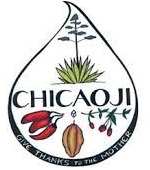 A unique spicy sauce made of Goji berries and caceo with smoky chipotles. “Ingredients are organic, vegan, gluten & GMO free and (mostly) raw. “Chicaoji’s unique combination of flavors registers across the entire palate. Sweet and tangy goji berries balance the right bitterness of cacao. Tart apple cider vinegar compliment’s agave nectar’s sweetness. Smoky chipotles heat things up jest enough while Celtic Sea Salt™ weaves all the flavor together. I believe food is medicine. I selected Chicaoji’s ingredients because of their long recognized health benefits. But they’re not just nutritional—they’re delicious!” Check out the ingredients tab for a whole page of information about each ingredient.
A unique spicy sauce made of Goji berries and caceo with smoky chipotles. “Ingredients are organic, vegan, gluten & GMO free and (mostly) raw. “Chicaoji’s unique combination of flavors registers across the entire palate. Sweet and tangy goji berries balance the right bitterness of cacao. Tart apple cider vinegar compliment’s agave nectar’s sweetness. Smoky chipotles heat things up jest enough while Celtic Sea Salt™ weaves all the flavor together. I believe food is medicine. I selected Chicaoji’s ingredients because of their long recognized health benefits. But they’re not just nutritional—they’re delicious!” Check out the ingredients tab for a whole page of information about each ingredient.
Hats With A Past
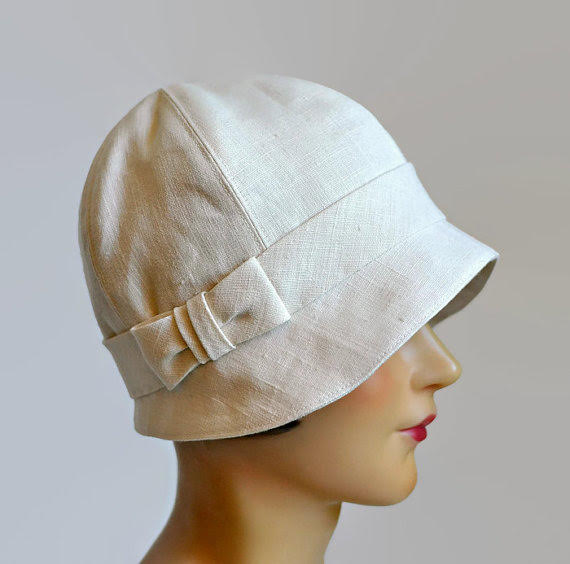 Hats for women and men in classic styles, made from natural fibers. They also make custom hats from measurements and photographs. ” I collect vintage wool fabric and use it to create 1920s style Cloches, Men’s Driving Caps and Irish Walking Hats among other styles. The fabulous quality of vintage fabrics really inspires me. I hope you are as impressed with that quality as I am. For spring and summer hats I use high quality linens and cottons – many I import from Japan. I’ve been a Costume Properties Artisan and made accessories for the stage for over ten years. I’ve worked with a variety of designers from around the world and have created everything from foul-mouthed puppets to leather gorgets to spats, crowns and sword belts. I enjoy it all but I absolutely LOVE making hats and hope you enjoy them too!”
Hats for women and men in classic styles, made from natural fibers. They also make custom hats from measurements and photographs. ” I collect vintage wool fabric and use it to create 1920s style Cloches, Men’s Driving Caps and Irish Walking Hats among other styles. The fabulous quality of vintage fabrics really inspires me. I hope you are as impressed with that quality as I am. For spring and summer hats I use high quality linens and cottons – many I import from Japan. I’ve been a Costume Properties Artisan and made accessories for the stage for over ten years. I’ve worked with a variety of designers from around the world and have created everything from foul-mouthed puppets to leather gorgets to spats, crowns and sword belts. I enjoy it all but I absolutely LOVE making hats and hope you enjoy them too!”
Linoto
 Linen sheets and bedding, made in the USA from GOTS certified organic Belgian linen. The fabric is natural color. Also non-organic natural linen (less expensive). Also linen curtains in many colors, tablecloths and napkins, “What sets Linoto apart is our bold color offerings, exceptional workmanship, and the fact that all of our products are proudly made at our workshop in New York City. We are passionate and invested in everything we make. Every item is marked on the cloth with chalk, cut with tailor shears, expertly measured, expertly sewn to the same standards as a designer dress, then washed with natural laundry soap and shipped in plastic free recycled packaging.”
Linen sheets and bedding, made in the USA from GOTS certified organic Belgian linen. The fabric is natural color. Also non-organic natural linen (less expensive). Also linen curtains in many colors, tablecloths and napkins, “What sets Linoto apart is our bold color offerings, exceptional workmanship, and the fact that all of our products are proudly made at our workshop in New York City. We are passionate and invested in everything we make. Every item is marked on the cloth with chalk, cut with tailor shears, expertly measured, expertly sewn to the same standards as a designer dress, then washed with natural laundry soap and shipped in plastic free recycled packaging.”
LinenStudioRG
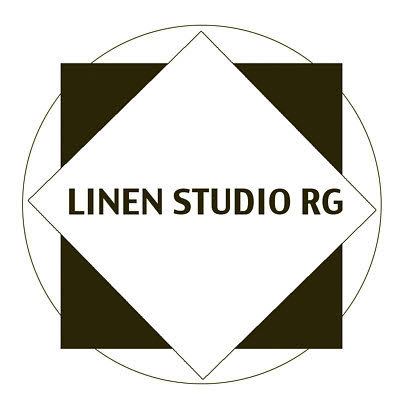 Oeko-Tex certified undyed natural linen from Belgium, France and Ireland, custom-made into pure linen duvet covers, sheets, pillows, bed skirts, drapes, roman shades, tablecloths, throw blankets and towels. “We began our linen business 15 years ago. We traveled not just to trade fairs but to small independent producers to find traditional durable linen fabrics that will last a long time and possibly be pasted on to future generations as they once were a long time ago…The fabric we cut and sew is OEKO-TEX certified; it passed the tests for conformity to ecological requirements of standard Oeko-Tex Standart 100. This linen does not contain any harmful substances and it is absolutely healthy for you.”
Oeko-Tex certified undyed natural linen from Belgium, France and Ireland, custom-made into pure linen duvet covers, sheets, pillows, bed skirts, drapes, roman shades, tablecloths, throw blankets and towels. “We began our linen business 15 years ago. We traveled not just to trade fairs but to small independent producers to find traditional durable linen fabrics that will last a long time and possibly be pasted on to future generations as they once were a long time ago…The fabric we cut and sew is OEKO-TEX certified; it passed the tests for conformity to ecological requirements of standard Oeko-Tex Standart 100. This linen does not contain any harmful substances and it is absolutely healthy for you.”
Dining stools – Metal vs Wood
Question from Stacey
Hi Debra,
I am trying to decide which counter stools to purchase and basically want the style that is safest/least toxic for my children. I saw some stools at Crate and Barrel which I liked. One stool style is made of “anodized aluminum” and the price is right, while the other stool is a swivel stool and is made out of beechwood (supposedly solid wood according to a customer service rep). The beechwood stool has a polyurethane base finish in black with a nitrocellulose topcoat. I did research “nitrocellulose” on your site, and it seemed to be okay. So would you recommend one over the other, or does it come down to personal preference and not toxicity?
Thanks so much!
Debra’s Answer
The anodized aluminum would be totally safe as it does not outgas. The problem with aluminum is leaching into food during cooking, and spraying tiny particles of it under your arms, which can absorb through the skin.
Once cured, the beechwood would be fine as well, but all finishes outgas some type of solvent until they are completely cured.
Once the finish is completely cured, the toxicity of both would be about the same: very low.
Eye Drops And Eyelid Cleaners
Question from Bri
Hi Debra,
Hi – do you know of any safe, non-toxic eye drops or eyelid cleansers? According to Good Guide the name brands contain ‘banned’ ingredients! Is there a safe way to clean eyelids and eyelashes (even baby shampoo was found to have formaldehyde years ago!)? Thanks very much, Debra – don’t know how these products can claim to give you healthy eyelids, etc. using toxic ingredients; sigh. Thanks for all you do.
Debra’s Answer
I’ve never researched a safe alternative to those products because I don’t use them at all.
I don’t think you need to use a cleanser for eyelashes or eyelids. Just plain water is fine for me.
Readers, any suggestions?
Patent Leather
Question from Stacey
Hi Debra,
Is patent leather the same as regular leather in terms of toxicity? I saw a pair of black patent leather shoes and regular leather shoes that I liked and wondered if the leather is the same in terms of treatment/toxicity. Does it matter which I wear?
Thank you!
Debra’s Answer
First, “patent leather” is a type of later that is coated with a very glossy, shiny finish.
The original patent leather created in the 1800s used a linseed-oil based lacquer coating that both protected the leather and made it more durable. But today, the shiny coating is usually plastic and may not even be real leather below.
It seems though, that most patent leather is leather, but check to be sure. I couldn’t find any information on what type of plastic is used for the finish or may be used for artificial leather.
I would say that patent leather may be more toxic, but what really matters is what was used to process the leather.
EMF Basics: Radio Frequencies
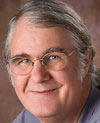 My guest today is Oram Miller, a Certified Building Biology Environmental Consultant based in Los Angeles. Today we’re starting a series of shows in which Oram will be explaining the basics of EMFs. Today we’re starting with radio frequencies: what they are, how they are different from other types of EMFs, where they come from, how they affect your health, and how you can protect yourself from harm. Oram received his certification from the International Institute for Bau-biology and Ecology. He provides healthy home and office evaluations for clients throughout Southern California who have electro-magnetic sensitivities, as well as those who just want a healthier home. Oram also consults on the healthy design and construction of new and remodeled homes. Oram specializes in the effects of EMFs from cell phones, cordless telephones, Wi-Fi, tablets and smart meters, as well as health effects caused by basic EMFs from house wiring, including wiring errors and unwanted current on water pipes and other parts of the grounding system. Oram is available for on-site EMF consultations in Southern California and provides telephone consultations for clients nationwide. He writes extensively on the health hazards of EMFs on his website,www.createhealthyhomes.com
My guest today is Oram Miller, a Certified Building Biology Environmental Consultant based in Los Angeles. Today we’re starting a series of shows in which Oram will be explaining the basics of EMFs. Today we’re starting with radio frequencies: what they are, how they are different from other types of EMFs, where they come from, how they affect your health, and how you can protect yourself from harm. Oram received his certification from the International Institute for Bau-biology and Ecology. He provides healthy home and office evaluations for clients throughout Southern California who have electro-magnetic sensitivities, as well as those who just want a healthier home. Oram also consults on the healthy design and construction of new and remodeled homes. Oram specializes in the effects of EMFs from cell phones, cordless telephones, Wi-Fi, tablets and smart meters, as well as health effects caused by basic EMFs from house wiring, including wiring errors and unwanted current on water pipes and other parts of the grounding system. Oram is available for on-site EMF consultations in Southern California and provides telephone consultations for clients nationwide. He writes extensively on the health hazards of EMFs on his website,www.createhealthyhomes.com
TOXIC FREE TALK RADIO
EMF Basics: Radio Frequencies
Host: Debra Lynn Dadd
Guest: Oram Miller
Date of Broadcast: November 12, 2015
DEBRA: Hi, I’m Debra Lynn Dadd. And this is Toxic Free Talk Radio where we talk about how to thrive in a toxic world and live toxic free. It’s Thursday, November 12th, 2015, and I’m here in Clearwater, Florida, where the sun is shining and we have a beautiful autumn day.
Today, we’re going to be starting a series of shows on the subject of EMFs. We’re going to be talking about the basics because EMFs is such an important subject and it affects our health in so many ways.
I find it confusing and difficult. I don’t want to say that at the beginning of the show because I don’t want to sound like this show is going to be confusing and difficult. But the point here is that it’s a confusing and difficult subject and this show is going to make it easier to understand.
We just really need to understand because EMFs, that term encompasses a number of different things. And when we are trying to do things to protect ourselves from EMFs or choose products that have EMF dangers, we need to understand these things.
So my guest is Oram Miller. He’s a certified building biologist environmental consultant based on Los Angeles. We’ve done a couple of other shows together. He just explains things so clearly that I just said, “Would you just tell us all about EMFs? Can you just break this up and make it simple?”
So we’re going to be starting today with radio frequencies, the part of EMFs that is radio frequencies. We’re going to talk about what they are, how they’re different from other types of EMFs, where they come from, how they affect our health and how you can protect yourself from harm.
Hi, Oram.
ORAM MILLER: Hi, Debra.
DEBRA: Good to have you back.
ORAM MILLER: Thank you for inviting me.
DEBRA: You’re welcome. So where should we start?
ORAM MILLER: Well, to follow up on what you just said in the intro, it is true. You asked me in September to speak on a show that we called Wireless 101. That was on September 30th. And as you and I both know (and the listeners of that program found out), we just ended up getting drawn into – not side conversations, but important conversations on other aspects of EMFs because it’s so vast.
But we [inaudible 00:03:19] 10 minutes before the end of the hour, I realized we hadn’t really gotten to the basics because we were following other threads, which are equally important and which people need to know about.
So you very wisely sent an email to me afterwards and said, “Why don’t we just set up a series of these talks or these interviews so that we can just go through the basics. And then go into each of the aspects as you said?”
This is the typical thing that I do for a client when I go to their home. The first hour of the five, six, seven, eight hours that I’ll be spending at the home is spent going over what EMFs are, which ones we recognize in the building biology profession, where they’re found in a typical home, what the health effects are and what the safety exposure guidelines or levels are that we recognize based on European research and research from Israel and Russia and India and Australia and then what we do about them.
And then with that knowledge, the client knows what the importance is of the EMF levels that I find and I allay fears that they may have from misunderstandings that they have about EMFs. So, part of what I do is to tell people what they don’t have to worry about. And then I go focus also on what our profession, my profession says is important.
And as I say to people, if I have done my job right, you and your spouse will have a serious conversation after I leave, over the next few days, looking up this research yourself and not taking my word for it. But just really thinking about how – especially with wireless, especially with that particular type of EMF.
They’re going to be making a choice that a small percentage of the population already is, out of necessity, because they’ve linked their symptoms that they have with the use of wireless devices. And that’s well-known outside of the United States.
And here’s a fact to get us started that a lot of people don’t know. Did you know that France just voted in January of this year to ban Wi-Fi in nurseries and daycare centers for children under three?
DEBRA: Oh, that’s great!
ORAM MILLER: Well, it’s great, but it’s like, “Huh? Why would they do that? Isn’t it safe? Everyone in America says it’s safe, meaning industry and government regulatory agencies and academia and the news organization.” They all say it’s safe. And any time anyone questions that they say, “Oh, no. There’s no research to show that there is any evidence of harm,” which sounds very similar to what we heard in the 1950s and ‘60s about cigarettes.
Because industry, most know well, that it’s harmful. They actually have stashed away a lot of money in a war chest for the inevitable class action lawsuits that will come when it is accepted and/or when they can’t deny it any further because public pressure has grown to such a point that government regulatory agencies will step in just like the EPA and other agencies did to clean up the mess and to pay for the health care that results from the use of this like the cigarettes in the 80s, the class action lawsuits that were settled.
And it’s just the cost of doing business because they can’t say that there’s harm for these technologies.
If you can imagine you’re a CEO of Verizon and you say that there is some potential harm from cell phones and you should protect yourselves and there’s some risk, if you know about it like warnings on a cigarette label or just exactly what one of the main researchers said to the cell phone companies in the late 90s, George Carlo, what would happen to him in this day and age? He’d be yanked and sued by his shareholders for loss of market share because nobody else is saying that and it’s “not true.”
DEBRA: I think that a warning label is actually an important thing, but I don’t think that companies voluntarily put warning labels.
ORAM MILLER: Of course not. That’s what I’m saying.
DEBRA: There has to be somebody imposing warning labels.
ORAM MILLER: Right. So let’s look at the President here. Outside of the United States, industrialized nations outside United States all have national healthcare delivery systems. They have private insurance. You can buy that on the side. But that’s not the major way that people’s health gets taken care of.
And I’m not talking about mainstream medicine versus alternative medicine. I’m just talking about the main way that health is delivered.
And so if the government is responsible for that and if they see a looming health crisis as was the case three times in the past in the last 60 years that is with asbestos, tobacco and the use of lead in gasoline and they know what happened there where industry [inaudible 00:08:03] on all three cases, well, it’s happening all over again.
And what’s concerning is that people are showing up in health clinics in all over the world, not just there, but here too, but the difference there is because of all sorts of reasons, campaign financing and the way the government is set up, and the way they hold elections, there are government officials who are not beholden to corporations like is the case here with campaign financing and law BS and such.
In other countries, you don’t have the head of the FCC (or their equivalent of our FCC) that the President being told, “You’re going to appoint this gentleman” and it turns out he comes from Comcast and he was the former head of the Cell Phone Trade Association. So he has no agenda, Tom
Wheeler, I’m talking about, to protect health. His main objective is to make sure that industry’s needs are taken care of. I’m not going with other people had said.
And so the problem is it’s like a big façade. You can’t crack that. No one can crack it. If you say that there is any evidence of any harm, they’re immediately shot down by those who say, “No, that’s false. There is no evidence.”
Now, it turns out that Joe Moskowitz in Berkeley pointed out that for one week, there was a short piece on the CDC website, Centers for Disease Control, echoing what is already widely said in countries outside United States, particularly in Europe and the other countries I mentioned, which was that there is some question that cell phones are potentially harmful to certain people.
Well, that was yanked. That was actually removed from the website. And so you can’t tell me that our government regulatory agencies are independent. They are not.
So I don’t think anybody who listens to this network, to your show, is surprised by that. So let’s just move on.
So what it boils down to is you have to look outside United States and see what they’re doing in other countries.
So my profession, the building biology profession, comes from Germany. It was brought here by an architect who has passed away a few years ago.
But he brought this knowledge to America 27 or so years ago and founded the International Institute for Bau-Biology and Ecology. Bau is the German word for building, so we are building biologists. Our focus is the health of people within a built environment, their homes and their offices.
DEBRA: And we need to go to break. We need to go to break. But when we come back, let’s get started with talking about radio frequencies.
ORAM MILLER: Will do!
DEBRA: You’re listening to Toxic Free Talk Radio. I’m Debra Lynn Dadd, and my guest today is Oram Miller. He’s a certified building biology and environmental consultant. We’re talking about a portion of EMFs known as radio frequencies, and his website is CreateHealthyHomes.com. We’ll be right back.
DEBRA: You’re listening to Toxic Free Talk Radio. I’m Debra Lynn Dadd, and my guest today is Oram Miller. He’s a certified building biology environmental consultant. I keep wanting to just say bau biology instead of building biology because I originally learned it as bau biology.
ORAM MILLER: But most people don’t know what that means.
DEBRA: I know but I’m tripping over these words.
We’re talking about radio frequencies today so that we can learn more about EMF basics.
So what is a radio frequency?
ORAM MILLER: Well, radio frequencies are – they’re invisible. They are transmitted from a wireless transmitter, and that could be, obviously, the radio station and television station transmitters, buildings in mountains for the broadcast we have. Although a lot of it is now through cable for television.
And then we also have the wireless. A lot of people stream their TV and radio listening and viewing through their smart phone and their iPad, which comes from Wi-Fi, which would be transmitted from your router in your home and various wireless access points in your home. Or from the cell tower itself, which is what’s called a 3G or 4G technology, which is third generation or fourth generation actually.
Basically, Wi-Fi and radio frequencies are one of four types of EMFs, the other three being electric fields and magnetic fields coming out of your house wiring and from outside power lines and then dirty electricity which a lot of people know about in this field.
So those are the four types of EMFs, electric fields and magnetic fields from your house wiring, radio frequencies including Wi-Fi, cell phones, and the like, and then dirty electricity.
So what we decided to do was to spend a few interviews, Debra, at your suggestion, focusing on one type of EMF at a time. So now we’re focusing on wireless.
So the radio frequency, radio waves, are the means by which data is transmitted under video or audio or both over the air from a transmitter. And we have these transmitters in our homes and right in front of us, our cell phones.
So you have to understand that there really isn’t any harm from having a receiver only, which is what a radio is. So you can have an AM or FM battery-powered radio right next to your ear all day long, and there’s a slight magnetic field from that but if you hold it in front of you, it can only extends out about an inch or so from that and it’s still [inaudible 00:16:29].
But now, in the last 15, 20 years, we have two-way communication devices, which are transmitters and receivers. So your cell phone, which is now our smart phone because we have now shifted the e-mailing and web browsing from computers to the device in our hand because it’s more convenient, and we can do it anywhere anytime.
And the problem is if you’re doing it outside the home, you have to use the wireless connection because you can’t connect wireless in a [inaudible 00:17:02]. But in the home, you can. And the problem is people are used to using their handheld devices, so they do that inside the home as well even though they have a computer over in the corner and they have a telephone sitting right there (although it’s cordless these days, but we it to be corded again) and they just continue to use their smart phone for all their computing.
And the problem is, there is – not a continuous, but a rather constant, intermittent transmission of a radio frequency that affects the health of cell for adults and children. And the problem is when we liken it or compare it to cigarettes, which is what it is, the problem is you can’t see or smell the radio frequencies, so you’re unaware of it unless you’re one of those unlucky few, and those numbers are increasing, who experience some symptoms, and you don’t know that they’re related to these devices in your hand.
So that’s what radio frequencies are.
DEBRA: I know that people do that, what you say, that they just use their cell phone for all their computing and their e-mail and everything. And I know people like that. They have a business that they’re working around, they’re not in the office, and so their whole business happens on their cell phone.
I’m so happy to not be one of those. And I can’t even imagine doing that because they’re so small that it’s hard to see all those things on the screen, and I just would never do that. I have to have a big screen so that I can have big letters.
ORAM MILLER: Well, yes, but each cell phone has five transmitters in it that operates at five different frequencies. And so the problem comes – and they have different power density.
So some of them, like Bluetooth, are lower power density, lower strength because they only have to send and receive signals from a transmitter basically in your – Bluetooth is very close. For instance, the device that you put in your ear connects to the cell phone which is on a table in the same room, and then cell phone on the counter is what connects to the cell tower which could be two to three miles away, or one to two miles away.
Then there’s also a Wi-Fi transmitter inside of your cell phone which connects to the Wi-Fi router in your house, which could be in another room.
There are two usually antennas that connect to the cell tower to either 3G or 4G route – I’m sorry, for voice. That’s the direct connection for voice.
But there’s also something called 3G, 4G data. So that’s happening, I think, at the same frequency. It might be a different frequency.
And these are all up in the hundreds of megahertz range, which means – megahertz means millions of cycles per second. So we’re looking at 800 or 900 million cycles per second.
So the problem is when the transmission occurs from the device in your hand or at the side of your head, or in your lap, if you’re texting or looking at the screen, that goes into our bodies, and it affects the cells.
I think we have the whole talk or interview that we’ve set aside to go over the research on what that does for our health. So we’re going to talk about that, I think, the next time actually.
So here we’re just giving an introduction.
So I mentioned that there are four types of EMFs, and this is one of them, and I mentioned that radio frequencies come from a transmitter. And here’s an interesting thing. When the phone is sitting on your table, or in your pocket, and a text message comes or an update from the company, from the cell tower for the plan that you’re with, whatever the carrier is, there is a signal sent by the cell tower that says, “I have a message for you.”
Now, the phone has to establish what they call an electronic handshake. And the phone sends back a transmission that says, “I’m ready.” That’s a transmission.
Then the receiving occurs, the message is downloaded, and there’s no harm from that. But then the phone is programmed to send back a signal saying, “I got it” which means the tower now knows that the message has been successful delivered and removes it from its queue to send because if your phone is not –
DEBRA: I have to interrupt you just because the commercial is going to come on in a second. You’re listening to Toxic Free Talk Radio. I’m Debra Lynn Dadd, and my guest today is Oram Miller. And we’ll be right back after this to hear more about radio frequencies.
DEBRA: You’re listening to Toxic Free Talk Radio. I’m Debra Lynn Dadd, and my guest today is Oram Miller. We’re talking about radio frequencies as part of the whole package of EMFs.
So Oram, could you say what you said before the break again?
ORAM MILLER: I just wanted to point out that there are hidden transmissions – I just realized that opens up a whole possibility of the snooping or surveillance that these devices can do, but it’s a whole another topic.
DEBRA: I think what you were trying to say is –
ORAM MILLER: I know.
DEBRA: That there are obvious transmissions like when you’re speaking, that’s a transmission. But there are other transmissions –
ORAM MILLER: Well, not necessarily. It doesn’t break even that way. Basically, the cell phones do not transmit continuously. Now, routers do. The Wi-Fi signal from your router is continuous. The radio frequency transmission from your cordless phone base unit is continuous, and when you have a cordless phone next to your head, that’s a continuous transmission. Cell phones are intermittent. Just bear that in mind.
If you have a radio frequency detector, and you can buy them, then you’ll see, and you’ll be puzzled by the fact that you’re talking but there’s no signal detected on your radio frequency detector.
Well, there’s something called caching, and people who know computers know about this. That there’s caching of data and that is transmitted in a big burst every second or two, or every few seconds. So that’s how it’s transmitted back and forth.
And also it’s transmitted at a very low level for a certain time. So some of the seconds where you don’t really see anything on your meter, it’s still connecting at a very, very low level because these devices have very sophisticated technology.
For instance, I’ll have someone say to me – I live in my home here, especially in an apartment or condo, and I’ve got eight Wi-Fi routers, that I could connect to if I had the password, because that shows up on their smart phone or their tablet.
And they’ll say things like – I’m getting blasted, right? And I say, well, actually no. Not from the majority of them. If you look at the signal strength to the right, that little icon there only one bar is showing instead of four, maybe two of them are four, one in their house obviously, and maybe the most immediate neighbor.
But even then if we shut off the router in their home, and we measure, and turn their phone off, the signal strength can be relatively low, below 10 microwatts from your square, which we consider to be a safe level.
Arguably, people who are electrically hypersensitive, even that’s too high for them, and I understand that. I work with people who can’t go into a coffee shop, that can’t go into a library. They can’t go anywhere where there’s Wi-Fi because they develop headaches.
We’ll get into that.
So the signal strength from a distant router is below relative to the meters that we have. So you’re relatively safe in most homes, provided you don’t have that blasting continuously that signal from the device in your own home.
DEBRA: I just want to make sure I understood what you said. So if somebody has a router, a Wi-Fi router in their home, then that’s relatively safe?
ORAM MILLER: No. I’m saying if you – no. You got to turn that off. And you can – I haven’t even gotten into this yet. But we can and do go to great lengths to help people find ways to recreate it because they had this in the past hardwired Ethernet cable networks in their home.
DEBRA: That’s what I have right now. I don’t have a Wi-Fi router.
ORAM MILLER: Right. So you can have your router on, and yet turn off – disable the Wi-Fi but have the router still on as a hardwired network because it does both. It does both –
DEBRA: So I have a router but I use cables. I don’t have it set for Wi-Fi.
ORAM MILLER: That’s right. So every router automatically when you plug it in and boot it up, and you get the data signal from the internet service provider, it is a hardwired hub with four jacks on the back.
Now, the Wi-Fi is a separate network that you can either enable or disable. And most of the routers that you get out of the box has a default mode where the Wi-Fi comes on, or when the guy comes from the geek squad and sets it up for you. They’ll always turn it on.
So you have to say, “No, I don’t want that. Please disable it.”
And even then, unfortunately, our radio frequency detectors still detect a signal in some models. And that’s because they’re still sending out a signal even though the network is not on and the light for the Wi-Fi is off in the front panel of the router, and you can’t see it as a network that’s available when you’re trying to connect to it from a smart phone or a tablet or a laptop.
So in that case, we have to go deeper and it’s called bridge mode. We have to disable the bridge mode in the LAN, the local area network settings.
And I’m getting technical here now.
And then there’s another thing with Xfinity, which is from Comcast, where they’re now establishing – they’re making your router in your home as a public Wi-Fi hotspot for their network so that it passes by in cars and walking outside your home can connect as they walk down the sidewalk, connecting from one house’s Xfinity public network hotspot to another.
DEBRA: And they’re just doing that? They’re making your router a public router without you knowing it?
ORAM MILLER: No, actually they do tell you. And they say, “Isn’t this great?” And they’re letting you know because you already have it on, so what’s the problem?
Now, it is a separate transmitter, a separate antenna, and it’s a higher strength, by the way, stronger than the signal that’s in your house. And when we go in, those of us who know how to do this with our client, or client do it for themselves, and they go in and they disable the personal – they call it the personal network, then you can’t access that anymore because it’s not on, but our radio frequency detectors still detect a very strong signal, and I’ve encountered this now and called Comcast on behalf of my clients. And they say, “Oh, yes. That’s in a separate department.”
They went through all these steps. The call was very nice. They said, “Yes, if your client doesn’t want it, we can turn it off.”
So he did. And it turns out, it’s still transmitting. We’ve run into this on a colleague who spent several hours with the tech, finally getting to the point where my colleague, who’s electrically sensitive himself, had a meter, and said, “Now, it’s off.”
But prior to that it wasn’t.
And so even though the guy said it was based on what he saw in his computer screen in the office in another state.
So it gets tricky now with these public hotspots. But you have to understand, Debra, it’s all based on the assumption that these technologies are safe.
DEBRA: Yes. There is an assumption that the technologies are safe. And we’re not going to talk a lot about that today but we are going to be talking about that in the future so that everybody can have that information.
ORAM MILLER: Let me just finish what we started at the beginning of the segment. So when your cell phone gets a text, it does send a second signal saying, “I got it” so that the cell tower releases that and knows that you got it, and doesn’t have to re-send it, which would be the case if your cell phone was off.
Now, my point with that was in the act of receiving a signal or a transmission, your cell phone send that two signals in their process.
So you’re exposed all the time.
Now, when I’m sitting here talking to my clients and going over the basics before we get up and go around the house and take measurements, and I work with people long distance by the way. They get meters of their own –
DEBRA: I have to interrupt you again because the commercial is going to come on just in a second.
You’re listening to Toxic Free Talk Radio. I’m Debra Lynn Dadd. My guest today is Oram Miller. He’s a certified building biology environmental consultant in Los Angeles, and we’ll be right back. We’ll talk more.
DEBRA: You’re listening to Toxic Free Talk Radio. I’m Debra Lynn Dadd, and my guest today is Oram Miller. He’s a certified building biology environmental consultant in Los Angeles. And his website which has a ton of information on it, lots of articles and resources all about this subject is CreateHealthHomes.com.
Oram, continue with what you were saying. I’m sorry I keep interrupting you but we’re in the last segment now, so we only just have about 10 minutes left.
ORAM MILLER: So since this is an introduction to the topic, I would like to expand a little bit on what you just did that this information, the information that you’re hearing can be – you can learn a lot more about it by going to my website, and then the others that I linked to, and that are out there.
But my website is www.CreateHealthyHomes.com. It’s plural. It’s all one word. CreateHealthyHomes.com.
On that website, I would particularly recommend that your listeners go to Comments from Clients, and also Articles on EMFs. And on that page, you’ll see not only articles on each of the four types of EMFs, and the one we’re talking about is an article on radio frequency EMF. But I just wrote and added an introduction to EMFs which explains them in more typical detail.
It’s written for the lay person.
And then there’s also another page which is EMF Lecture Slides. And that has a PowerPoint, in PDF form that you can download. I’m looking at it right now as I’m talking to you just to follow the points here. And this is from a talk that I gave at the Cancer Control Society just two months ago.
So you can see a lot of this information there. The other thing is the whole issue of what is a safe level, that’s’ covered there, and where these come from.
So let’s review where EMFs come from. They come from the transmitters that we know about like our cell phones, the tablets that we now have, from routers and from cordless telephone base units and the handset that you walk around with.
And people need to understand that when they hang up the phone, hang up the call with cordless handsets, and put it in the base unit, that base unit today in the last few years, those models that had been sold in the last few years, continue to emit radio frequencies 24/7. It’s like an ashtray with four or five brand of cigarettes filling the kitchen with smoke, wherever that router is located.
Do not have the cordless phone facing it. The one that has the telephone line that goes from the back of a base unit to the telephone jack in the wall, or the telephone jack on your router. Do not have that base unit in your bedroom because when you hang up the phone, the base unit continues to emit frequencies 24/7, and it doesn’t stop.
DEBRA: I used to have one of those sitting right next to my desk where I work all day. It was three feet away. And I had an inspection where some building biologist came in and with all their instruments and took the EMF readings. And that was the worst spot in the entire house. And I immediately, immediately took it out, and got a corded phone.
ORAM MILLER: So then you replaced it with a corded one.
In Europe they the ECO DECT model from Siemens that is at a particular frequency that they use over there, and that does shut off the transmitter to save energy. That’s why they call it the ECO smart.
But we don’t have that in this country because it uses a frequency – that model uses a frequency that the military uses to interfere – so it’s allowed in the country. You can’t buy it. You can import it, and it would work, but they don’t sell it in America.
So people need to understand that that’s happening. It’s an invisible, continuous emission. Now, it does not happen, by the way, from your handset that’s the extension handset in its own charging cradle just to charge the battery and that extension has it.
When you press the off button then that goes dead.
But it’s still not a good idea to use it because when you take a call, you’re exposed to that frequency, very high frequency, 200, 300, 400,000 microwatts which is less than the level that the FCC says is safe, which is 10-million or 1-milliwatt per square centimeter, which is 10-million microwatts per square meter. And I’m going to talk about that in the next segment, next interview.
So those are some hidden sources and also when you put a tablet in your baby’s hands or an infant – not an infant but toddlers, child’s lap to watch a movie while you’re making dinner, you have to put it in airplane mode because the typical cell phone, the typical tablet puts out radio frequencies – and laptop, all three of them, every 8 to 12 seconds roughly, looking for a router, connecting to a router, even if you don’t have one.
So if you have a laptop and you plug and use the cable, and you plug that, using a cable into the router, people make the mistaken assumption that that shuts off the Wi-Fi in the tablet, and it does not. You have to do that manually. And I can over that in the next segment.
So those are the typical radio transmitters that we know about but there are more. Your thermostat, if it’s a new model from Ecobee, E-C-O-B-E-E or Nest, wonderful technology for the Nest thermostat but it sends out a radio frequency, a Wi-Fi signal every five seconds in one model, and every 15 seconds in another.
There’s more. These devices, Roku and Apple TV send out Wi-Fi continuously from the unit that’s on top of your TV or underneath it. It used to be the case with the models 1 and 2 that when you plug it an Ethernet cable, which you can, it shuts off the Wi-Fi but not with Apple 3 or the Roku 3.
You can disable Airplay on Apple 3 on screen, but you can’t do that with a Roku. You have to use a play station.
And then, let’s see. What else? There’s the [inaudible 00:45:18]. I went to a home and the lady didn’t – she was sensitive to all of this and didn’t want the frequencies, and we were converting her back to hardwired, which everyone is going to go back to in the next 10 years or so.
And I kept picking up a signal at the three home entertainment centers she had. It’s a big house, had some money, but I kept unplugging things one by one, which is what you have to do. And then finally, the signal went away on my meter. And I said this cord goes to this device, and I picked up and it said red eye. And I said, “What’s that?”
She said, “Well, that enables my boyfriend and I to sit on our couch while we’re watching TV and use our iPad to change the channels instead of the remote.”
And I said, “Okay, but it’s continuously sending out a signal.”
So she just continues to use it because she didn’t want to be exposed to these frequencies.
DEBRA: Why would somebody want to do that? Why not just the remote?
ORAM MILLER: Well, because – I don’t know. Everyone’s so wedded to their tablets and their smart phones. I don’t know. They want to do everything – they’re trying to make it seamless so that you can do everything from your smart phone.
The Consumer Electronics Show is held in Nevada in Las Vegas every January. And where I live here in Los Angeles, the LA Times, and other newspapers cover this every day of the four-day conference. There’s a big splashy article about what’s the latest thing.
Last year, they started using a phrase that is being copied and picked up in the media. We have now entered what they call the internet era, the age of the internet of everything, the internet everything.
DEBRA: I saw that.
ORAM MILLER: So we’re trying to seamlessly incorporate everything you do with a smart home concept. There are ads on TV for a particular internet service provider with a service that links to your security system, and thermostat, and lighting, and everything, so that you can monitor this in your cameras, your surveillance cameras within your home.
You can see what your dog is doing, and what your son is doing in the house from your office. And when you’re driving home you can turn the thermostat up before you get there, things like that.
But that can only happen if everything is controlled wirelessly throughout the house because it’s all considered to be safe.
And for the majority of the population, they don’t feel this. Two thirds of the population does have DNA damage because 100% of people do. But they can repair the damage to the cell, to the mitochondria, and all these other very precious physiological processes biologically occurring at low levels in our cells 24/7.
But that’s affected by these technologies, but two thirds of the population can repair the damage and not feel a symptom. That doesn’t mean that they’re healthy but FYI, not everyone has symptoms. It’s a little –
DEBRA: Well, that’s a whole other segment in itself, it’s what is healthy. And we won’t start talking about that today. But I just want to say most of the people that I see around me, not in my immediate circle because we take pretty good care of ourselves, but out in the world, a lot of people are not feeling well, and a lot of people are taking over-the-counter drugs, they’re taking natural remedies, all of these things to make it appear as if they’re healthy, but they actually aren’t.
ORAM MILLER: [inaudible 00:48:40] we’re having symptoms.
DEBRA: Well, we have less than a minute left. So I just want us to wrap up here. Any final things you’d like to say quickly?
ORAM MILLER: There’s so much to say.
DEBRA: I know.
ORAM MILLER: We won’t say more, but people can go to my website, www.CreateHealthHomes.com. Go to Articles on EMFs and then click on the article on radiofrequency EMFs, and you’ll see a lot of this.
Also look at the EMF Lecture Slides. And also on the homepage, at the top, there are references or links there too, very important initiatives – there’s a whole group of scientists, 200 of them, that are petitioning – led by Martin Bank, from Columbia who did the DNA research and wrote Overpowered, a popular book, that whole appeal was sent to [inaudible 00:49:31], Secretary General of the UN and the head of the World Health Organization. And every member country of the UN appealing to them and saying, “This is a health crisis.”
There’s an epic proportion that you need to know about and act on just like we did with tobacco, asbestos and lead in gasoline. It’s the fourth health crisis in 60 years because it’s affecting human health and future generations.
DEBRA: And I have to say thank you because the music is going to come on in about two seconds. Thank you so much and we’ll talk to you again.
That was Oram Miller. His website is CreateHealthyHomes.com. And you’ve been listening to Toxic Free Talk Radio. I’m Debra Lynn Dadd. Be well.
Toxics as a Right-To-Access Issue
 My guest today is Adrian Ballou, a writer, artist, activist, and educator who focuses on advocacy around disability justice and transgender rights. I found Adrian when I discovered Get Mad When Folks Ask You to be Scent-Free? Here are 8 Things to Consider , which is helping to shape a mainstream conversation on chemical/fragrance sensitivities and access to public spaces. Adrian particularly enjoys writing and facilitating social justice education and youth organizing curriculum. www.adrianballou.com
My guest today is Adrian Ballou, a writer, artist, activist, and educator who focuses on advocacy around disability justice and transgender rights. I found Adrian when I discovered Get Mad When Folks Ask You to be Scent-Free? Here are 8 Things to Consider , which is helping to shape a mainstream conversation on chemical/fragrance sensitivities and access to public spaces. Adrian particularly enjoys writing and facilitating social justice education and youth organizing curriculum. www.adrianballou.com
TOXIC FREE TALK RADIO
Toxics as a Right-To-Access Issue
Host: Debra Lynn Dadd
Guest: Adrian Ballou
Date of Broadcast: November 11, 2015
DEBRA: Hi. I’m Debra Lynn Dadd and this is Toxic Free Talk Radio where we talk about how to thrive in a toxic world and live toxic free.
It’s Wednesday, November 11th, 2015. Today we are going to talk about toxics from an angle that we haven’t ever discussed on this show and I think most people aren’t discussing or even thinking. I know that I wasn’t even thinking in these terms until I read an article called ‘Get Mad When Folks Ask You to Be Scent-Free? Here Are 8 Things to Consider.’ This article was talking about how people should be considering other people’s needs as well as their own, particularly, other people’s needs to not be exposed to toxic chemicals.
There is a whole group of people who have multiple chemical sensitivities. Many years ago, I was in that group but I recovered from that. Those people are in the same kind of situation of not having access to public places as somebody who is in a wheelchair doesn’t have access to a building if there isn’t a ramp. The larger picture is, don’t all of us have the right to access a place that isn’t toxic?
We’re going to be talking about these questions and more as we look at toxics from the viewpoint of a right to access issue. My guest is the author of this article, Adrian Ballou. She is a writer, artist, activist and educator who focuses on advocacy around disability, justice and transgender rights.
Hi Adrian.
ADRIAN BALLOU: Hi. How is it going?
DEBRA: Good. How are you?
ADRIAN BALLOU: I’m doing well.
DEBRA: Good. How did you get interested in access rights?
ADRIAN BALLOU: A lot of my friends are involved in disability justice work and a whole variety of ways. I’ve had chemical sensitivities and fragrance sensitivities for a couple of years now. At one point, one of my friends pointed out to me that this actually is an access issue. It shifted my whole perspective thinking about disability, justice and access and helped me realized that there are different ways that people face a border in accessibility issues in our society. Limitations and privileges that people have might vary depending on different kinds of disabilities that they have.
This definitely falls into that category. It helps me change the community work I was doing and think about accessibility in a new way.
DEBRA: Yeah. After reading your article made me think about accessibility in a new way also. Many years ago, when I had limitations on environments that I could in because of my chemical sensitivities, I think I took the attitude that “Well, I’m not going to sit in my house. I need to figure out what I need to do so that I can safely go into those places.” I used to wear a raw silk scarf around my neck. A big, long, raw, silk scarf so that no matter where I was, I could put it over my nose and be able to breathe without so much exposure to the chemicals.
I wasn’t going into a lot of places where there were a lot of chemicals. It did limit my access. It limited what I could do. When I went to work, (I had to work in an office building) I took an air filter with me. I’m always trying to figure out. “How can I do that?” It comes down to nobody should be exposed to toxic chemicals.
ADRIAN BALLOU: Yeah, definitely not.
DEBRA: Everyone is being poisoned. There should actually be signs up saying “There’s poisons in this building.”
ADRIAN BALLOU: Yeah, for sure. Nobody should have to be exposed to. It’s really debilitating to folks who have higher sensitivity. I think it’s really important for people to be more aware of it.
I did a [inaudible 00:05:18] CPR online training recently. There is one slide that was about toxins in the air. Basically, it’s just talking about – maybe you’re working in a place that has exposed paint, [inaudible 00:05:34] or something like that. First aid scenario is somebody is getting really dizzy and out of it [inaudible 00:05:40], “Oh, make sure that you call 911. Be careful.” I was like, “Yeah.” but those symptoms that people experience from chemicals that folks do recognize, they are definitely toxic like [inaudible 00:05:51]. Folks that have multiple chemical sensitivities experience with stuff that other people necessary notice a reaction to even if that’s still hurting their health.
DEBRA: Right. That’s absolutely true. I would say though that what they should’ve said was if somebody (whether they have MCS or is just a person who doesn’t yet know that they’re sensitive to chemicals) is exhibiting symptoms in a situation where there’s fresh paint, the first thing, the number one thing you do in that situation is take them outside. Take them away from that toxic chemical. The number one rule with toxicology in Poison Control Center is you take the person away from the poison.
ADRIAN BALLOU: Yeah.
DEBRA: Maybe you should call 911 but you need to get the person out of the building first.
ADRIAN BALLOU: I think they did say that.
DEBRA: Okay.
ADRIAN BALLOU: I didn’t remember the whole slide. [inaudible 00:06:58]
DEBRA: I just wanted to make sure that our listeners know that if you see somebody is being made ill by a toxic chemical in a building, the first thing you should do is take them out of the building and then call 911 if they need more help.
ADRIAN BALLOU: Yeah.
DEBRA: It’s interesting to me that they’re talking about this because that shows that there’s more awareness and that it’s a problem.
ADRIAN BALLOU: Yeah, definitely. Especially in workplaces that people are exposed to chemicals on a part of their job. It comes up a lot I think. It comes up in so many different situations depending on what folks’ sensitivity level is. I know for me, it’s easy sometimes to switch either from self about writing about this and talking about this issue. It’s easy to believe what folks in general say around the chemical and fragrance sensitivity. “Oh, you’re just sensitive. It’s not that big of a deal.”
When I actually look at the issues that are involved and the barriers that folks with multiple chemical sensitivity are facing, it actually is a real problem. It’s just easy, I think, for people that, “Oh, I [inaudible 00:08:13] my deodorant matter.” The kind of cleaning solution I use not for somebody else but – some people get seizures even with multiple chemicals sensitivities. They can’t even leave their house. I know for myself it’s affected my workplace environment. When I was working in a school as [inaudible 00:08:36] perfume that was really difficult. It even affected my house [inaudible 00:08:41]. At one point, I had a landlord that sprayed her house with chemicals and I couldn’t live there anymore.
DEBRA: Yeah, that is a problem. I keep wanting to say that it’s a problem for everyone. It’s especially a problem for people with multiple chemical frvsensitivities but it really is a problem for everyone because everyone is being poisoned. That was a shift that I went through. I used to think that I was in this little isolated sub group of people who are particularly sensitive and that there was something wrong with me. What’s wrong is that we’re being exposed to poisons that are poisons to everyone on a daily basis. That’s the problem. It’s not that my body is saying “Wait. Don’t expose me to these toxic chemicals.” It’s that everybody else who isn’t having a symptom, they’re not aware that these poisons are there. Still these poisons are damaging to them. We shouldn’t be exposed to them.
We’re coming up on the break but I just want to say this before we go and then we’ll come back and talk more. I was thinking about the show, what we were going to talk about today. I realized that there’s an acknowledgement now of – cigarette smoke is not allowed in public buildings. It used to be that everybody was smoking. Nobody knows it caused cancer. Now they know it caused cancer so it became illegal to smoke in buildings. That’s only one toxic chemical. That’s only one pollutant. If people were to realize that perfume causes cancer, then we can have perfume not allowed in buildings too. We can just go down the list until we actually apply the same logic behind cigarette smoke to all toxics.
ADRIAN BALLOU: Yeah, definitely.
DEBRA: Wouldn’t that be great?
ADRIAN BALLOU: That would be really nice.
DEBRA: We need to go to break but we’ll be right back. You’re listening to Toxic Free Talk Radio. I’m Debra Lynn Dadd and my guest today is Adrian Ballou. She is the author of an article called ‘Get Mad When Folks Ask You to Be Scent-Free? Here Are 8 Things to Consider.’ If you go to ToxicFreeTalkRadio.com and look for this show, there’s a link to the article. You can see it right there or you can google it and take a look. We’re going to be talking about it when we come back. We’ll be right back.
DEBRA: You’re listening to Toxic Free Talk Radio. I’m Debra Lynn Dadd. My guest today is Adrian Ballou, author of the article ‘Get Mad When Folks Ask You to Be Scent-Free? Here Are 8 Things to Consider.’ Adrian, what is the problem here? Why should people not be mad?
ADRIAN BALLOU: People can have whatever feeling they want to about anything I suppose. Ultimately, the issue here is that a lot of folks have really sensitivities to scents and chemicals. If people are asking you to be scent-free then they’re trying to be in a space where they can breathe. Or they’re trying to be in a space that won’t make them sick. A lot of times, people have reactions to chemical and fragrances that include vomiting and headaches, [inaudible 00:14:34] with breathing, hives, even seizures. It’s actually a very serious problem to people that have multiple chemical and fragrance sensitivities. As we were talking about in the earlier segment, these kind of chemicals and fragrances are toxins that do affect everyone but they affect some people to really extreme areas that they can’t even necessarily go to work or go out in public or even leave their houses.
DEBRA: Yes, that’s right. Okay. There’s eight things that you mentioned in the article so I just like us to take some time and go through those eight points because those are the points.
ADRIAN BALLOU: Yeah.
DEBRA: Yeah. So let me just start with the first one. I have the article in front of me, do you?
ADRIAN BALLOU: Yeah.
DEBRA: Okay. So start with the first one. ‘This Is for My Self-Expression’
ADRIAN BALLOU: Yeah. [inaudible 00:15:31] article, technically somebody who get a lot of work within the transgender community. Self expression is something that we have trouble accessing a lot of the time. I consider to get the conversation that I think it’s really important. It can be really charged depending on who you’re talking to. For some people, they think nail polish, hair styling products – for different persons, it’s a really important part of their identity. I’m not [inaudible 00:16:03] self-expression at all. It’s not my goal by having chemical or fragrant sensitivities. Whem
I’m asking folks to be scent-free or to not use chemicals in their environment, I’m actually expecting that I’ll be able to be around them.
There are a lot of alternatives that you can use instead of mainstream fragrance products. They may or may not work for everybody but I’d be one that’d be able to sit beside with people that maybe using these products. That’s why I’m asking them to make a change.
DEBRA: Well, I would say that I’m not trying to change anyone’s self-expression either. But I’m a person that everybody thinks should be able to express their selves. I love to be my own individual self and I want everyone else to be their own individual self too.
I think that a lot of times, people don’t realize the toxic effect that they’re having. I think it’s always a good idea to speak up and educate people in any situation whether it’s in a building or – a lot of people are concerned about scents in fabric softeners that people are using next door and down the street. A lot of times people just don’t know.
I remember years ago when cigarette smoking was banned in public places. Prior to that, I would ask people not to smoke. If they were courteous, they would say, “Oh, I’m sorry. I didn’t know that it bothered you.” and they would put out the cigarette. Most of the times I had no problems. Then I would run into somebody and they would say, “Rumble, rumble, rumble.” and they sneer at me and turn around and walk away. But I got rid of the cigarette.
ADRIAN BALLOU: Right.
DEBRA: I think it always pays to ask. I know for myself that my self-expression is to be toxic free. I think that it would be a good idea for many, many more people in the world. I think there are many people listening today. Well, that is our self expression. We have a right to have that in the world as much as they have a right to be toxic, I suppose.
ADRIAN BALLOU: Yeah. Ultimately, I want to be able to breathe when I’m in public. That must really be what the issue is here. If folks are going to use toxic self care, self-expression products, ideally folks should use when they’re at home. Especially nail polish can take even a couple of days to [inaudible 00:18:49] so you really can’t have a no scent base when wearing nail polish. That makes me really sad because even though I have chemical and fragrant sensitivity, I still like wearing nail polish sometimes. I think it’s awesome even though it’s toxic. At the same time, I want to be respectful of other folks that have even more intense sensitivities than I do. So when I go to public place, I make sure that I’m not wearing nail polish or that I’ve taken my nails a couple of days in advance.
DEBRA: That’s just such a refreshing thing to hear for me because even though I have the viewpoint and you have that viewpoint, many people are only thinking of themselves. They’re not thinking about the effect that they’re having on other people or the effect on the environment. I think, if everybody were to think, “How do my actions affect others?” that the world would be a very different place in a lot of ways.
ADRIAN BALLOU: Yeah, for sure. I think most people aren’t necessarily being selfish, they’re just not really aware. I think too in the past couple of decades, the second of 1900s, there’s been such an increase in fragrancy chemically products. It seems really natural but actually – it seems very normal that this is the state of affairs today, but it’s actually a pretty recent occurrence that there’s so much toxicity in the products that we’re buying and using. It seems normal to us these days but it actually isn’t.
DEBRA: That’s absolutely right. Many years ago, a man wanted to date me. I said, “I’d loved to go out with you but I can’t be around you because of the scented products you’re using.” I offered to give him some unscented products that he could use. If he was willing to use them I would go out with him. He said yes. So I put together a bag of soap, shaving cream, deodorant, and shampoo. It was unscented and he used them and we went out. We had a lovely relationship for two years. It always pays to let people know.
ADRIAN BALLOU:Yeah, it does. I think part of what’s hard is a lot of these personal care products are personal. You don’t necessarily want to go around telling people about their deodorant or their shampoo. It feels like personal invasion which are the reason for number two on my article about ruining someone’s personal space.
DEBRA: When we come back from the break, we’ll talk about ‘You’re ruining my personal space’.
ADRIAN BALLOU: Sounds good.
DEBRA: You’re listening to Toxic Free Talk Radio. I’m Debra Lynn Dadd and my guest today is Adrian Ballou. She is the author of an article we’re discussing called ‘Get Mad When Folks Ask You to Be Scent-Free? Here Are 8 Things to Consider.’ All of it has to do with access, people being allowed to go into a building without being poisoned. We’ll be right back.
DEBRA: You’re listening to Toxic Free Talk Radio. I’m Debra Lynn Dadd.My guest today is Adrian Ballou, author of the article ‘Get Mad When Folks Ask You to Be Scent-Free? Here Are 8 Things to Consider’ which is about access issues for the people who are sensitive to scents.
Adrian, before we go on to the next – ‘You’re Ruining My Personal Space’, that’s where we were on. Before we go on there, I want to ask you about something that you said in number one. I know that you work with social justice issues so I’m assuming that there’s a whole field of social justice that has its various viewpoints, terminology and things to apply to various different situations. One of those that you mentioned in the article is ableism.
On your website (which is AdrianBallou.com) you have a whole list of lectures that you give that have all these ‘isms’, ‘phobias’ and everything. I was just interested to know, what is ableism?
ADRIAN BALOU: That’s a really good question and definitely important to define for the show.
Ableism is basically a wonderful passion that affects people with disabilities. Just like people not just add on the same way but raises them as a passion that affects people of color or a sexism is a passion of affects people who aren’t men. Ableism is something that affects people with disabilities. It’s not the part where somebody might actually have a disability that’s necessarily the ableist but how society treats it. Very simple, it’s not ableist that somebody is in a wheelchair but it is ableist that somebody maybe can’t get into an event that doesn’t have enough space for their wheelchair to move around. It’s not ableist that somebody has sensitivities to chemicals but it is ableist if they can’t access a space that has chemicals in it. Does that make sense?
DEBRA: Alright! Yeah, I understand what you mean now by that. That makes sense because you’re looking at the degree of ability that somebody has and if there is disability, how is that disability respected.
ADRIAN BALOU: Right.
DEBRA: It gets down to we’re basically human beings and even if our bodies are disabled or our skin has a different color we’re still human beings.
We still have all the rights of human beings.
ADRIAN BALOU: Right. Exactly. Disability is also partly just kind of designed by society to a certain degree. Society has decided that there’s certain things they should and shouldn’t be able to do. People who can’t do those things are decided that they’re disabled. For example, if we don’t necessarily think those most people who use glasses as disabled because of their glasses but people who are wearing glasses use a device that helps them be able to see. In some ways it is a device that’s correcting a disability but it’s so common maybe we don’t necessarily see it as a disability.
DEBRA: It’s also less of a – I can see that there’s degrees of these because it’s much – you don’t have to build a ramp for somebody who wears glasses. It’s something that is more individual on something that – a person with glasses can go out in the world and nobody has to accommodate their glasses. With other disabilities, like somebody in a wheelchair, in order for them to get access then the building has to be constructed in a certain way.
ADRIAN BALOU: Right.
DEBRA: They have that right to that access just as everybody who’s sensitive to chemicals has the right to be in any building and they –
ADRIAN BALOU: Definitely. A lot of disability activist could say that – I think you hit the nail in the head in terms of why some things are seen as disabilities and some things aren’t. Is our society is built for some people over other people? If folks with wheelchairs had more power in our society, we automatically would have buildings set up for them to be able to get into them.
DEBRA: Right.
ADRIAN BALOU: I think that’s part of wider differences there. It’s probably just how society sees us. It seems like some needs are being really hard to accommodate or a burden to accommodate and other needs as [Inaudible 00:30:58.05]. Like everybody needs some kind of help sometimes.
Some help is seen as being related to disability and some help is seen completely normal.
DEBRA: That’s right! Another thing that you say that I think – you said it but I want to say it again because you have it here in the article. You say for the most part wearing perfume is something that’s best worn and used in the privacy of your own home. I totally agree with that because of the fact – what I’m about to say is something that I struggle with for a long time before I understood it. This is why I want to say it.
I used to want to have my own personal individual expression everywhere. If somebody didn’t like my personal expression, then they didn’t like me.
That was how I felt and I think a lot of people feel that way. They’re trying to be who they are in every situation. What I learned was that I am myself and at home, I can do whatever it is I want to do in the privacy of my own home. Including not to have toxic chemicals but when I go out in the world, then I’m part of a group. There’s a group, where group of human beings – we’re living all together and the ecosystem of the earth. Once you stepped out of your own private space, you need to consider everybody else that’s there and what is the good for everyone not just yourself. It’s at the same time we are both ourselves and we’re part of these groups.
ADRIAN BALOU: Definitely.
DEBRA: And that we need to act accordingly depending on the situation. I think that’s a really good thing that is not widely known in our society.
ADRIAN BALOU: Yeah. It can be really hard to not be able to express yourself in different ways. Obviously I have chemical and fragrance sensitivities. I don’t know how to use them, to put chemicals on my [00:33:01.14] self-expressions. [00:33:02.20] nail polish like what we’re talking about earlier. Sometimes I really want to wear really sparkling nail polish but that is not going to happen because I want to make sure I’m respecting other folks.
DEBRA: That’s the keyword I think, respecting other folks. I see all throughout this article that we’re discussing. That’s what I see. The thread of how can we respect other people instead of saying “Me, me, me, it’s all about me”. That doesn’t mean that we shouldn’t be ourselves. We should be ourselves and we should respect other people.
ADRIAN BALOU: Yeah, definitely.
DEBRA: Okay, are we now on number two?
ADRIAN BALOU: Yes, I think we are.
DEBRA: We are not obviously going to get through the whole thing.
ADRIAN BALOU: No.
DEBRA: We’ll give the listeners a taste of what’s going on here and they can look up and read the rest. Number two is “You’re ruining my personal space”. Tell us about –
ADRIAN BALOU: Yeah. I think a lot of the numbers on this poster are really about people not understanding the severity of the impact that they have. I don’t think people would be saying that if they understood that actually these chemical is making it hard for somebody else to breathe. They say it can be hard to make that change but ultimately, folks with chemical and fragrance sensitivities are really struggling to have any personal space if they can’t be well in a space that has fragrances in it.
DEBRA: Yeah, that sounds so true. Another thing is that it’s not that there’s something – I’ll just say this again. It’s not that there’s something wrong with the person that they have chemical sensitivities. It’s that they’ve been exposed to ordinary everyday chemicals and they’ve been made sick from it and especially with fragrances. If they come to a person, it’s not that the person with the sensitivity doesn’t like that person. It’s not a personal thing at all. it’s just that the person who’s wearing a scent that is making them sick.
ADRIAN BALOU: Yes, exactly.
DEBRA: We have to take a break again. You’re listening to Toxic Free Talk Radio. I’m Debra Lynn Dadd and my guest is Adrian Balou and we’re talking about her article “Get Mad When Folks Ask You to Be Scent-Free? Here Are 8 Things to Consider” We’ll be right back.
DEBRA: You’re listening to Toxic Free Talk Radio. I’m Debra Lynn Dadd. My guest today is Adrian Ballou, author of the article “Get Mad When Folks Ask You to Be Scent-Free? Here Are 8 Things to Consider”. You can just go to ToxicFreeTalkRadio.com, look for this show and there’ll be a link to that article or you can look it up in your favorite search engine.
Adrian, instead of talking about more points on the article, (we’re in the last segment now) I like to just talk about what things people can do to reduce their use of fragrances that might bother other people. In particular you have a link which I just was looking for and I’ve lost about how the meeting that’s fragrance free. So other people who can’t tolerate fragrances can come to have access to come to the meeting. Let’s talk about those things a little bit.
ADRIAN BALOU: Yeah, definitely. You can check out the article to see some really common products that can cause reaction to people with multiple chemical and fragrance sensitivities. I think the biggest thing to do is if you know somebody who has multiple chemical and fragrance sensitivities to check in with them and to ask them what they need from any given situation. Some people have higher sensitivities. Some people have less sensitivity. Try to figure out the best way to support what they’re asking you to do.
Sometimes, I for example experienced reaction to essential oils which other people think they’re like a natural scent and maybe nobody will have a reaction to it, but I react to it. Sometimes, other people will “Oh, I have a friend who doesn’t have that reaction at all. [00:40:39] chemical sensitivities. You’re probably making it up.” That obviously validates what people are saying to you and how to figure out a way to make it work for them.
When you’re going out in public really try to think about ways to reduce the chemicals or fragrances that you’re wearing or to stop wearing them entirely. I think those are two really huge ways to do that.
I guess one thing to do in terms of limiting chemicals and fragrances is – some people think that it’s only about wearing perfumes and cologne. They aren’t thinking about other fragrances that might be in the air or on their body. So they think, “Oh, I’m not wearing scented deodorant” maybe or “I’m not wearing perfume so it must be fine” In reality there’s so many things that can cause a reaction to people.
DEBRA: I just wanted to pin on that one because I have recently been in some public places where the problem really was the scent of the detergent on their clothes. It had nothing to do with wearing any kind of scented product. It was their clothes. You could smell it all the way across the room.
ADRIAN BALOU: It’s really hard to get scents out of clothes. It’s important to know that if you’re trying to be fragrant free for a public event or a conference that flow scent or scent free, you’re going to need to wash your clothes in advance but not just the unscented detergent. It’s best to add some baking soda into your clothes or into the washing machine because that’s really what’s going to help to reduce the odor but it’s still probably going to take a couple of washes for it to get entirely washed out. That’s a really big one people aren’t thinking about that much. Sometimes, I make over and stay at a friend’s house or my family who aren’t necessarily thinking about that. I [inaudible 00:42:33] sleep on the sheets and blanket they have there because they have scented detergents
DEBRA: Yeah. It’s really a problem. It’s the scent of the detergent It seems like it’s getting worse and worse.
ADRIAN BALOU: Yeah. It definitely is. It’s important to know too that if you’re trying to be in solidarity with folks with chemical and fragrant sensitivities on because it’s [00:42:55.27] to continually list all the things that could [inaudible 00:42:59] them and ask people whether they’re really fragrance free.
For me, I’m lucky enough that I can go out to a lot of place and not experience too much of a reaction so I don’t have to continually have this conversation. For folks who are more sensitive, it’s very exhausting to try to make that happen. I’ve noticed a lot of times, people are starting to become more aware of fragrance issue. They go put on their event description on facebook or something that you should not wear fragrances to this event but they don’t talk about what that actually means.
DEBRA: I think it’s important to talk about what that actually means. Otherwise, people will come in and it won’t really be a fragrance free event because they don’t understand all the possibilities. The groups that want to have fragrance free events should take the time to define what that means for them.
ADRIAN BALOU: Yeah, exactly. I can’t really go into all the products that can have fragrance sensitivities right now but I might just list some so people have an idea of how much to think about. We got air freshener. We got cigarette, marijuana smoke or other drug smoke, cleaning products, deodorants, essential oils, hair products, laundry detergents, drier sheets, fabric softeners, make up, nail polish, nail polish remover, (can be even worse sometimes) soap, aftershave, bubble solution, dish soap, incense, insect repellent, lotion, paint, perfume, obviously and cologne, scented candles, spray paint, sunscreen, varnish, those markers that are used in white boards, the permanent markers. There’s just so many other things that have scents and fragrances but those are really common products that cause reaction. I know that scented candles can be a big one. Sometimes people have them [inaudible 00:44:46] in their room or showing in the closet and they don’t have it lit but the scent is still really strong and causes a big reaction.
DEBRA: Yeah.
ADRIAN BALOU: Another really common things is if you’re out in public – I’m not so sensitive that I can’t use hand in soap bathroom and that kind of thing but some folks really are. A lot of soaps are extremely scented. Even the ones that are unscented can be bad for some people. So please make sure that you have unscented soap in your bathrooms at home, and at your job or school. That would be such a huge help.
DEBRA: I can’t tell you how happy I am to hear you saying all these things because it really is so unusual for anyone to be talking about these things in terms of being courteous for others in public places.
ADRIAN BALOU: It is. The other thing I would say – I know we don’t have a lot of time left but it’s really important. I know sometimes people really want to be scent free. I feel they’re shy or maybe a little bit ashamed if they aren’t sure that they’re entirely scent free. Or they’re not sure but they think that maybe they [inaudible 00:46:02] close enough. For somebody like me who has minimal sensitivity – maybe depending on what the scents are that that person is wearing. For other people close enough really isn’t enough. It’s just really important, if somebody is in the process or trying to become scent free to just be honest with the people around them about where they might be wearing scents for that person who has chemical/fragrance sensitivity can make a choice about what to do with their body.
Unfortunately, they may have a reaction right there. Some chemicals and fragrances, you can’t necessarily smell so you don’t necessarily notice right off the bat. You may have a reaction much later and you may not know where it’s coming from. It’s much more [inaudible 00:46:51]. So it’s really important to just be honest in that friend. Even if “I’m not really sure if it’s unscented or not. It has unscented but it had a weird smell.” That’s the other thing. Some products that say they’re unscented actually are still scented. I’m not really sure about that. “Oh, I’m so sorry. I went to a friend’s house and they have scented soap. I’m not sure what to do about it but I just wanted to let you know so that you can stay safe.” It’s ultimately a safety issue even to people that are less sensitive. They may not be thinking about it in those terms.
DEBRA: Yeah. Once, I had a situation where a friend got together with me at a time that we had determined we were going to get together. He was coming straight from getting a massage. The massage oil had scent in it. It’s was funny because he never is scented. Never never never is scented and here he walks in this scent all over his body.
ADRIAN BALOU: Right.
DEBRA: I said, “Oh my God. What did you just do?” He said, “Oh, it’s the massage oil.” He went straight to the bathroom and washed his body so that he would not be offending me with the odor. I think that that is how everyone should be. He’s an exceptional person. He’s very conscious of how he affects everybody in every way. I think that the more the society in general could think about the different ways that people might be affected by the toxic exposures that they produce, I think that would be an interesting thing.
ADRIAN BALOU: Yeah, it’s really important. Ultimately, it’s about everyone being able to consent to living in a world that is going to be safe and good for them.
DEBRA: Yes.
ADRIAN BALOU: I’m not going to tell other people what’s good for their bodies or what’s not. I can only really feel what’s good for mine. I know that this is something that’s going to create a space where more people can be and that’s really important. It’s also important to know that sometimes, there’s aroma therapy to there are other times where people use scents as part of [inaudible 00:49:13] for other disabilities they might have or for other parts of their mental health care. It’s not my goal to police anybody else’s needs. Sometimes people are addicted to cigarettes or maybe they just like smoking even if they aren’t addicted, I’m not here to judge any of that. Even if they just want to wear scents. It’s just folks who have chemical and fragrance sensitivity, we also need to be able to be in public places. That’s really important too.
DEBRA: It is. Both need to be important. The ideas to figure out how everyone can have what it is they need and all be happy, healthy and stay in life on earth.
Thank you so much. We’re at the end of the show. Again, my guest is Adrian Ballou. You can go to her website, AdrianBallou.com. You can go to ToxicFreeTalkRadio.com and get a link to her article that was the session today. you’re listening to Toxic Free Talk Radio. I’m Debra Lynn Dadd. Be well.
The Life-Giving Qualities of Linen and Other Natural and Not-So-Natural Fibers
 My guest today is Melanie Ellison a young entrepreneur who established Life-giving Linen to provide affordable GOTS certified organic linen bedding and garments to individuals seeking better health. Today we’ll be talking about how different types of fibers can affect your health for better or for worse, and what you can do to incorporate the health benefits of natural fibers into your everyday life. Melanie has researched natural remedies all her life, so starting a business was a natural next step after learning about the linen frequency study. Based in the Rocky Mountains of Colorado, Life-giving Linen has happy customers in 50 states and 10 countries. Testimonies of improved quality of life are the heart throb motivation of the business. www.lifegivinglinen.com
My guest today is Melanie Ellison a young entrepreneur who established Life-giving Linen to provide affordable GOTS certified organic linen bedding and garments to individuals seeking better health. Today we’ll be talking about how different types of fibers can affect your health for better or for worse, and what you can do to incorporate the health benefits of natural fibers into your everyday life. Melanie has researched natural remedies all her life, so starting a business was a natural next step after learning about the linen frequency study. Based in the Rocky Mountains of Colorado, Life-giving Linen has happy customers in 50 states and 10 countries. Testimonies of improved quality of life are the heart throb motivation of the business. www.lifegivinglinen.com
TOXIC FREE TALK RADIO
The Life-Giving Qualities of Linen and Other Natural and Not-So-Natural Fibers
Host: Debra Lynn Dadd
Guest: Melanie Ellison
Date of Broadcast: November 10, 2015
DEBRA: Hi, I’m Debra Lynn Dadd. This is Toxic Free Talk Radio where we talk about how to thrive in a toxic world and live toxic-free.
It’s Tuesday, November 10th. It’s November 10th already. I looked at that and I went, “I can’t be November 10th. I thought it was November 1st.” It’s Thanksgiving and then it’s Christmas and then it’s going to be New Year. So we’re almost there. Wow! It went by so fast.
Anyway, it’s Tuesday, November 10th, 2015. I’m here in Clearwater, Florida and we’re having a lovely autumn day. We’re going to talk about a subject that is – well, there are times when I want to say, “This is a really interesting subject,” but all of the subjects are really interesting. This one is unique. This is more unique than what we usually talk about.
We’re going to be talking about fabrics – fibers, natural fibers and other kinds of fibers – and specifically, how they can contribute or not contribute to our healthy. This is a subject that when I read this website, I went, “Oh, I understand this.”
One of the first things that I ever said about natural fibers was my body feels better when I wear them. What you’re going to hear today kind of explains that. I notice that the highest ranking fibers in terms of health benefits are the fibers that are my favorite fibers.
So anyway, my guest today is Melanie Ellison. She’s a young entrepreneur who established a business called Life-Giving Linen in order to provide affordable GOTS-certified organic linen bedding and garments and other miscellaneous products to individuals seeking better health.
Hi Melanie!
MELANIE ELLISON: Thank you for having me.
DEBRA: Thank you for being here. So, one of the things that I find most interesting is people who do something so completely different that the idea came from within themselves because nobody else is doing it. So, obviously, you’re one of these people where you’re doing something so different.
So how did this come to happen, you doing what you’re doing?
MELANIE ELLISON: Well, all throughout my life, we have found as a family that there are many more solutions going the natural route and from allopathic medicine. For instance, you can have $2000 of blood work done and come out of there and they’d say that you’re fine and you just don’t know that there’s something wrong. You just don’t feel up to snuff.
And so we’ve been excited to find that there are natural solutions that go on a deeper level than allopathic medicine would find. They’re great for acute conditions and emergencies, but some of the chronic things can be better treated and avoided doing natural means.
So that was the foundation that went into when I heard about the linen frequency study five years ago – I’ll just explain that real quick here. It’s an explaining study where Dr. Heidi Yellen (she’s a Jewish doctor and she performed the study) and she found that everything has a frequency.
DEBRA: So what does that mean, everything has a frequency? We might as well talk about this now.
MELANIE ELLISON: We might as well. They used a farmer’s device where he measures the frequency of crops to know when they are at their ideal stage to harvest. And so that is the same device they used to measure the fabrics.
So according to the study, the signature frequency of the human body is a hundred. Polyester and silk are down at 15 like a nearly dead person. The lower the number, the more it puts a strain on the body. Cotton is about 40-70. And if it’s organic, then it’s a hundred. So it’s neutral. But the exciting thing about linen is it’s a supercharged frequency of 5000 units. So it gives the body extra energy to heal and just to have a better quality of life.
So I was really excited to learn about this study. And regardless whether or not the listeners believe in frequencies and that kind of thing, linen is one of the most ancient fabrics. Throughout the Bible, we read about linen all the time. Every time an angel is mentioned, they’re just in linen. And then, the [inaudible 00:05:39] is wrapped in linen’s swaddling cloth and He was buried in a linen clothing. And the priests in the temple and the tabernacle were, which was interesting because it’s an antibacterial fabric, so it would’ve protected them from all the dead animals and the blood around them and all that.
And also, Alexander the Great, he had something called linothorax as an armor. So it’s an ancient fabric and it survived through the course of time.
It’s a wonderful fabric.
DEBRA: It is interesting how ancient some of these things are. When we just look around in the modern world today, we’re surrounded with things that are both ancient and modern. And unless we study a little bit, we don’t really know which is which. And linen is one of those things that is probably one of the first fabrics.
MELANIE ELLISON: Yes, I believe so, along with wool probably.
DEBRA: Probably older than wool.
MELANIE ELLISON: Yeah. And the interesting thing is that linen is made from flax. A lot of people don’t know that right off. But if you think about it, you eat flax seeds and they lower your cholesterol and they’re great to your health. But we don’t so much eat cotton foods.
DEBRA: But we do, we do. We eat cottonseed oil.
MELANIE ELLISON: Yes, and it’s not the best for our health.
DEBRA: It’s used in junk food.
MELANIE ELLISON: Yeah, exactly.
DEBRA: Yeah.
MELANIE ELLISON: So it would make sense that a fabric made out of plants that the seeds are good for us would also be good for us.
DEBRA: It seems like talking on a frequency level that (and you can correct me if I’m wrong) everything has its own frequency. That’s one of the things that they’re finding from the study.
MELANIE ELLISON: Yes, everything living.
DEBRA: Everything living has its own frequency. And things that aren’t living don’t have frequencies at all. The frequency is measuring, we could say ‘life force’ for lack of a better term.
MELANIE ELLISON: And it’s a very scientific thing. It’s not a New Age type of thing. It can be measured scientifically [inaudible 00:07:45] listeners.
DEBRA: Yeah, thank you. Because I know this is something different. We talk about toxic chemicals in terms of man-made industrial chemicals. But to me, all these other things also can be toxic. They can also affect our health in negative ways and positive ways. So it’s not just toxic chemicals that are manmade. I think what we’re going to find here, as we’ve already said, the man-made fibers are practically dead.
MELANIE ELLISON: And not only that, but they put a drain on the human body.
DEBRA: Right, right. That’s another way to be toxic.
But I was trying to get to explain in all this was I think the way it works is that every living thing or type of thing has its own frequency. Linen would be different from cotton would be different from pine trees would be different from human bodies. And some of them are more frequency-compatible than other ones.
MELANIE ELLISON: Yes. And it’s also interesting to note that there are available health benefits from linens. For instance, it’s used for internal sutures because the body accepts it. And then in another case, Japanese hospital use it for linen sheets because they found that their patients don’t have bedsores when they sleep in linen.
And also, it’s antibacterial. It’s hypoallergenic. That’s recommend for sensitive skin. For people who can’t handle other fabrics, they’re often just [inaudible 00:09:24] linen. It doesn’t accumulate static electricity. It causes 1.5 times less perspiration than cotton. And it’s also effective in reducing fevers and inflammation.
So it has all these observable health benefits that people have written about in testimonials and things like that that confirm the frequencies.
DEBRA: Wow! I can’t even express what I’m feeling right now. It always amazes me how nature can be healing and how, if we do the natural thing, then our bodies are supported, greatly supported by natural materials whether they’re foods or fibers or whatever it is, just being out in nature.
And what we do in our culture is that we do exactly the opposite. We don’t respect nature. And instead, we [inaudible 00:10:24] man-made things because it costs less or it’s more abundant or whatever it is. We just ignore all the good things that nature is giving us and then wear dead clothes and things like that – eat dead food, wear dead clothes.
MELANIE ELLISON: Right! And I also find it interesting that science confirm the Bible on this, things we read and we think, “That’s an interesting story” or whatever. But the science, again, confirm that there’s a reason behind the Creator something for our benefit.
DEBRA: I have to interrupt because we need to go to break. And we’re supposed to be hearing a little music and I don’t. So we’re going to go to break anyway.
This is Toxic Free Talk Radio. I’m Debra Lynn Dadd. My guest today is Melanie Ellison. We’re talking about the life-giving qualities of linen. We’ll be right back.
DEBRA: You’re listening to Toxic Free Talk Radio. I’m Debra Lynn Dadd. My guest today is Melanie Ellison. She is the founder, entrepreneur founder of Life-Giving Linen at the LifeGivingLinen.com. She’s got a lot of information that she’d like to share with us about linen.
So Melanie, you talk for a bit.
MELANIE ELLISON: Okay! Sounds good. Well, let’s go in a little bit more to the fact that you were talking about other fabrics other than linen being not as good for us. A lot of people know already that polyester is not the best for us and have gotten rid of polyester out of their closet. That’s actually where I recommend starting. Just go through your closet and get rid of the synthetic materials. That’s a good start.
DEBRA: I recommend that too. That’s the first that I did. What I’m seeing here is that you and I have a parallel. It’s all parallel because if I’m approaching it from a toxic chemicals viewpoint, I’m going to say, “Get rid of all your synthetics,” and you’re talking about it from your health-giving perspective and you’re saying, “Get rid of the synthetics.”
And I know the first thing that I did when I wanted to remove toxic chemicals was get all my synthetic things out of the closet.
MELANIE ELLISON: Yes. Then you’re usually left with cotton, which a lot of us thought is as good as they can get. But what we’re finding now is that much of our modern-day cotton is genetically modified. So eventually, you want to gradually switch over to some linen in place of your cotton.
I would at least recommend using linen undergarments (everything that’s touching your body) and then, also, bedding because that is where you’re spending many hours of your day and it’s an easy way to just change the sheets and the pillowcases over to linen.
But I want to go in a little bit more to these genetically modified things in the specific category of feminine products. And guys, don’t tune out here because you all have a mother, a sister, a wife or some woman in your life who needs to hear this information.
So what we are finding is that the plastic in feminine products increases women’s estrogen which actually causes them to bleed more, so that they buy more of these disposable products.
DEBRA: Oh, that’s horrible!
MELANIE ELLISON: Isn’t that horrible? Yeah! And when I first heard that, I thought, “Well, there’s no way.” But then I started hearing it from women after women that when they switched over to a more natural, reusable type of feminine products, that their periods were shorter and lighter flow and less cramping. So the disposable feminine products, they’re also made chemicals that have dioxins in them which is a cancer-causing agent.
And there was actually an article written posted on the 22nd of October, just recently, here in NaturalNews.com. I’m going to quote it here because it’s so good to know this information. The article said:
“Monsanto’s toxic herbicide has been found in 80% of feminine hygiene products. It is a chemical found in RoundUph herbicide used on genetically-modified cotton crops. Glyphosates,” that’s the name of the chemical, “Is a known cancer-causing chemical. The World’s Health Organization has classified it as ‘probably carcinogenic’ and many other studies clearly link it to an endocrine disruption process that leads to cancer.”
So it was just through knowing some of these information and then also through my own struggles with yeast infection that I created the Linen Pleasant Pads. Many of my friends switched over and they started just reporting an incredible change in their quality of life and their time of month.
It’s just going much easier and less cramping. And so I’m really excited about that.
And again, you can read more about this on my website, LifeGivingLinen.com about the specifics.
DEBRA: I totally agree with you about this. I mean, I no longer need that product being the age that I’m at at this moment, but that was one of the first things to go for me when I started living in a non-toxic way. I just used cotton. And nobody was even making them then, these pads. And so I just started ripping up cotton, flannel sheets and making my own because it just didn’t make sense to me to be using all those chemicals.
MELANIE ELLISON: And linen takes it one step further because linen is antibacterial. And also, it’s stain-resistant, so it’s the perfect fabric.
DEBRA: Yes, yes. I agree with you. That’s great. That’s great.
MELANIE ELLISON: And a lot of women don’t know that they even have options as far as alternative menstrual products. But it’s exciting to research and to see the testimonials of changes lives in that regard.
DEBRA: Well, because I know that there are several different options for women besides using the standard products, but I do see what you’re saying about why linen is the best alternative just from its health-giving characteristics.
MELANIE ELLISON: And for the men too with yeast infections, we do offer linen underwear for both men and women and that can be helpful as well. So it’s not just a women’s site here.
DEBRA: Good! Alright! So, we just have a couple of minutes before we need to go to break again. So where would you like to go from here?
MELANIE ELLISON: Well, I’d like share some testimonials. We have customers in 50 states at 10 countries who have been benefited through the health benefits of linens. I don’t know if we have time to share one of those now.
DEBRA: Why don’t you share one of those now?
MELANIE ELLISON: Okay! Here’s from a lady named Darlene Myrn. She was in Colorado and she said:
“I had an unfortunate injury last year which resulted in a severe, enlarged rotator cuff tear. The end result was surgery. I could not sleep well for months on end before and especially after the surgery. I would lie awake all through the night. I had to discontinue the pain pills because they made me sick and nauseous.
During this time , a co-worker told me about Life Giving Linen, its healing properties and how it might help. So I tried linen bedding – first the pillowcase and then I ordered a sheet set.
I fell in love since to my surprise and delight, my pain decreased and I slept better. To this day, they are the only sheets that I sleep in.”
So it’s interesting to me that the healing benefits of linen are actually causing a reduction in pain. For a lot of people, it’s chronic pain. We see this time and again.
DEBRA: I think that that is very interesting. I’ve been sleeping on your pillowcases. Melanie sent me one, listeners and I’ve been sleeping on it for about a week. It just feels very calming.
I guess the first time that I ever saw a big sheet of linen that I was around, I saw it in a store, it was purple linen. I just wanted to wrap it all around my body and never take it off. And that was just the feeling that I had from it.
I think I need to get myself a set of linen sheets because I’ve been wanting linen sheets for about 35 years. And now, you’re explaining why. The pillowcase just kind of clinched the deal for me.
We’re going to go to break. But when we come back, we’ll talk more with Melanie Ellison about the life-giving benefits of linen. You can go to her website, LifeGivingLinen.com and there’s a lot of information to read there. We’ll be right back.
DEBRA: You’re listening to Toxic Free Talk Radio. I’m Debra Lynn Dadd. My guest today is Melanie Ellison. She’s established Life Giving Linen to provide affordable, GOTS-certified organic linen bedding and garments and other miscellaneous things to people who are interested in improving their health.
So Melanie, I want to talk about linen itself and the different kinds of linen fabrics that are available. You have a very special linen fabric. You can’t just go down to a fabric store and buy what you have, what you’re oferring. So tell us, first of all, does it have to be organic linen?
MELANIE ELLISON: Any linen is going to be better off for you than the other fabrics. But for those who have health issues and who really want the ultimate as far as having health improvements, I recommend unbleached, undyed. Bleach and dyes are also toxic chemicals. And also, the organic means that it is grown without pesticides. Basically, you’re getting the ultimate as far as health benefits. You’re getting the linen frequencies plus also, not adding any toxins on top of that.
So my fabric are all of those. It’s unbleached, undyed, organic. That’s what we make all of our products out of. It’s a lovely off-white. And it’s…
DEBRA: Yeah, I wanted to ask you. How come it’s white and not what I think is natural linen color?
MELANIE ELLISON: Yes. It does go through a natural hydrogen peroxide whitening treatment, but it’s not bleach. So a lot of people who are coming from regular white sheets, they still want kind of that look of the off-white. They may not be ready to plunge into the flax color.
DEBRA: So is everything that is off-white, everything that you sell, is it that same, off-white fabric?
MELANIE ELLISON: Yes.
DEBRA: So are you going to be offering just the regular linen color too?
MELANIE ELLISON: No, because this is the only organics that I have been able to find. So that’s really important to us to keep the quality up.
DEBRA: And also, your fabric is GOTS-certified. So would you explain to us what that means?
MELANIE ELLISON: Yes. And you have a wonderful archived show on your site that I actually listened to you this week explaining the GOTS process of how it goes through certification. So for any listeners who are curious and going in-depth on that, you have your archived show on that.
But it’s certified through the whole process of manufacturing to be according to the international standards.
DEBRA: And I want to clarify this just because this is an important point for listeners. You are using a GOTS-certified fabric but you, yourself, are not a GOTS-certified business. So that’s not a criticism of you. I just want to point out that a lot of times people are confusing, different businesses are confusing about the difference between the fact that they are using a GOTS-certified material and that they’ll say something like, “They have GOTS-certified products” in some confusing way, but the product itself is not GOTS-certified. So GOTS hasn’t come and inspected you. That doesn’t mean that you’re not making your products in a way that GOTS would approve of.
MELANIE ELLISON: But we do no dying or anything like that that could [inaudible 00:30:23] the organic quality.
DEBRA: Yeah! Yeah, yeah. I mean, you obviously understand the issues and obviously are wanting to make it as humanly possible as natural as possible.
MELANIE ELLISON: I want to share one more story if I may. And this is my story of coming into actually believing in linen. I heard about it and thought, “I don’t know about this…”
DEBRA: Yeah, that was what I asked you at the beginning, but we got off track.
MELANIE ELLISON: Yes, it’s interesting. So I started sleeping on linen sheets – but let me back up. Before that…
DEBRA: But why? How did you get from the toxic world into linen sheets?
MELANIE ELLISON: Oh, I heard the linen study. And that was what made me want to try it out. But I grew up as a concert cellist and I’m really goal-oriented and I thought of that as a good thing. But at this music camp, I ended up practicing six hours a day some really intense music and I ended up being in severe pain.
So for 18 months, I tried 20 different therapies. I couldn’t drive. I couldn’t open the freezer to get the ice out. I was in severe pain. Nothing was working for me, acupunture, physical therapy, chiropractic. Nothing was working.
And at that same time, I switched to sleeping on linen sheets just for the general house benefit. I wasn’t expecting anything at all. I was at a convention at this point and the day before switching to the linen sheets, I had tried to take notes all day and I was in pain and I couldn’t write. That night, I slept on linen sheets and then the next day, I was taking notes hour after hour and there was no pain at all. I thought, “What is the only thing that I’ve changed?” And it was sleeping on the linen sheets.
So that made a believer out of me because I was not expecting anything to change. And that changed my health journey with my arm.
DEBRA: Wow! Wow! As you’re saying this, I’m thinking there are so many things that I’ve done to help my health. I’m so much healthier than I’ve been probably most other times in my life. Most people says, “I’m getting older, but my body is getting heavier.” And I don’t look anywhere near my age and yet there are still things that I’d like to improve about my body. So I’m moving now from functional to optimum.
And so I’m just thinking about if I were to sleep in this life-giving cocoon of linen every night, how much would that help my body? Oh, my God! Just doing that one thing.
MELANIE ELLISON: Yeah, everybody’s story is different. It’s interesting to see how everybody’s bodies respond differently. But there seems to be a confirmed thing that many people have experienced with chronic pain being reduced or totally healed. So that’s exciting to me.
DEBRA: That’s exciting to me too.
So we have another minute or so, about one minute until the break, so why don’t you read another testimonial?
MELANIE ELLISON: Another one of the ones that I have is that a lot of my customers experience poor sleep. This woman was no exception and she said she had a “lifetime of poor sleep. It started in childhood before I even had a word to put to what was wrong. A noise, a flicker of lights from the TV in the living room, a breeze all conspired to keep me awake.
I can say I knew that every hour of the night was passing as the years went by.” She tried drinking milk before bedtime, even sleeping pills until she found out about Life-Giving Linen. So she tried to purchase. She said:
“I didn’t quite believe they would make any difference at all. But I bought a set of linen pillowcases and put them on my pillows right away. Then I walked away and forgot about them until the next morning. At 5 a.m., I opened my eyes and thought, ‘What? What happened to the night? Where did it go? Did I really sleep through the night?’ Yes, I had. I slept through the night. And then, I remembered the linen pillowcases. I’m sure that’s what did the trick.”
So people are finding that they sleep deeper as well with linen.
DEBRA: Yeah, yeah. Okay! We’re going to go to break. You’re listening to Toxic Free Talk Radio. I’m Debra Lynn Dadd. My guest today is Melanie Ellison who has put all these information together about linen and has taken it upon herself to provide us with wonderful products made from the best and purest linen possible, the most life-giving linen that there is on the planet. And so you can go see her website at LifeGivingLinen.com.
We’ll be right back.
DEBRA: You’re listening to Toxic Free Talk Radio. I’m Debra Lynn Dadd. My guest today is Melanie Ellison and we’re talking about the life-giving properties of linen.
Melanie, I just realized during the break that when I had my sofa recovered (actually, this was maybe 20 years ago now), and I didn’t want a toxic sofa, I actually got a very old sofa, ripped everything off, so I only just had a frame and then I had an upholsterer kind of rebuild the cushions and stuff. It’s all covered with 100% linen in this beautiful plaid fabric.
MELANIE ELLISON: Oh, how wonderful!
DEBRA: It’s 20 years old and the fabric, it’s brand new. It lasts so long and it feels so comfortable. And again, it’s like I’ve always gravitated to linen.
And I was just thinking also during the break that I had a bit of an epiphany over the weekend about how I want to dress. I think that early in my life,
I was very fashion-oriented because our culture is fashion-oriented, so I was raised to be fashion-oriented and my mother was fashion-oriented. And as I went through life, I became less fashion-oriented because I didn’t want to be wearing all those plastics, the polyester and all the finishes and everything.
And so as I looked for natural fibers, I made the switch to natural fibers, but I was still looking at my natural fibers like with this fashion eye. How could I get something that look like fashion made out of natural clothes?
And so that kind of went away, but I can see where I still – all of a sudden, I saw where I’m still thinking that way. And what I wanted, all of a sudden, was just to have very plain clothes.
There was a period in my life where I had these cotton pants and shirts from India. They were just very, very plain. And I had them in every color. I could buy these sets at the [inaudible 00:41:02] flea market. They were really baggy. But I had to own every color, so whatever color of the rainbow I felt like wearing that day, I could.
But what I was feeling was I just wanted to have beautifully draped clothes that were very simple – and solid color – which I mostly have now anyway. I buy like 10 tops and capri pants and stuff. I just wanted to have like linen clothing that I’d love to just have a set of linen clothing in our basic colors and then wear beautiful scarves and beautiful necklaces and have the accessories make the look, but that I have flowing linen clothing next to my body all the time.
MELANIE ELLISON: And next to your body parts, that’s the key. And that’s what I recommend to people in colder climates (like I am up here in Colorado), just making sure that you have a layer of linen next to your skin, that’s the most important, the underwear and then the bedding. You can do your [inaudible 00:42:13] that way and still have pretty clothes on the outside if you’re not quite to the point where you are, Debra.
DEBRA: It is a process. It’s a proces to go through these stuff. And I was even thinking, I have on my bed cotton, flannel sheets, but one of the things that I like is the “fashion” of them. And as I go through the year, in the spring, I have flowered sheets. And then in the winter, I have plaid sheets, all these. I have a certain aesthetic joy out of doing that.
But I went through a shift during the break where, “Well, okay, good. But there’s cottons and there’s dyes. And even though it’s not toxic on my user end, it’s GMO cotton and all these stuff.” I just really thought about taking all the sheets away and just getting a set of white, linen sheet and that would just be my sheets. The thought of that, it’s like my whole body relaxed. Just the thought of it, my whole body relaxed because it’s the optimum environment for sleep and it’s based on, “How can I get my body what it needs rather than what color are the sheets?”
MELANIE ELLISON: Yes. And I think with all natural health remedies, you go through a switch. Whether it’s eating more healthy when you’re craving delicacies and the things that make you feel bad, you go through a switch of wanting to feel good more than wanting something that tastes good or look pretty. And I think once you experience that, that’s what really makes the change. You have to experience it. And then you’re sold.
DEBRA: It is! And it’s also like a step towards nature, which is really important to me, that I went through a whole thing of moving out of consumerism into viewing myself as being of nature.
And so then I wanted to do what nature does. The more that I live that way, the more I keep peeling away the industrialism and eat natural foods and wear natural fibers and use natural things on my body and see howi it can fit into my ecosystem, then the healthier I get and the happier I get and the more relaxed I get.
So here, I live in Florida, so linen is my ideal bioregional…
MELANIE ELLISON: It is! It’s perfect.
DEBRA: That’s what people historically have worn in hot climates – linen, linen, linen, linen.
MELANIE ELLISON: Yes, it causes less perspiration than cotton even.
And I just want to talk a little bit about the production side of thing since you’re mentioning consumers. All of our Life-Giving Linen products are made individually. In the U.S.A. here (and it’s often the GOTS-certified organic linen), we try to have high quality and then also undercut cost of competitors to make them as affordable as we can. The sheets are an investment. But for those who are starting out with a pillowcase, that’s the most affordable organic linen pillowcase that you can find. They’re on our website.
And then, also, with the feminine products, you actually save quite a bit of money by using a washable product.
So our goal is to individually make here in the U.S.A. high quality and affordable.
DEBRA: Well, you’re doing an excellent job. And I can tell. I mean, one of the other things, one of those intangible things that I know people can feel is that when something is made with a caring viewpoint, that you feel that in the product. The bed that I sleep on, it’s from Shepherd’s Dream in California. Where I got it at the time, I could go visit the sheep. I have slept in the showroom and their workroom where they make the mattresses.
MELANIE ELLISON: Wow!
DEBRA: And so when I have this bed, I think about, “Talk about counting sheep.” I really know where those sheeps were. I knew where in the world they came from. I knew the women who were sewing it. It’sj ust such a different thing to have a hand-made thing like that with a caring person rather than having something made on an assembly by a factory.
MELANIE ELLISON: Yes! I so agree. We seamstresses love to know about who we’re sewing for and [inaudible 00:46:49] what the linen might help them with with their health. And even for people who don’t have health issues, it helps with deeper sleep and just a better quality of life even if you don’t feel it directly. Some people aren’t as sensitive, but it’s still better.
DEBRA: Well, I’m so glad that you came across the study and that you put together a business. So this is just giving us another layer of understand of how we can help our health. I’m just so pleased that you’re doing what you’re doing and that you came to be on the show today.
MELANIE ELLISON: Thank you.
DEBRA: So we have just a few minutes left, about two minutes. Is there anything you’d like to say in closing?
MELANIE ELLISON: I’d just like to encourage people to not get overwhelmed, not think that you have to go out and get a whole new closet overnight. A good idea of how to change over is just one item at a time. So, you find a white linen shirt or something, then change out the white cotton shirts, get rid of that one. So just one at a time to veer north. Switch over and start with the pillowcases. That’s the easiest way.
So I just encourage you to take one step at a time and not feel overwhelmed about having to do everything at once.
DEBRA: Let me just ask you very briefly because we do only have about a minute left. What about ironing because I know that’s the first thing that comes to my mind. It’s like, “You have to iron everything that’s linen?” Do you really have to iron it?
MELANIE ELLISON: A good answer is line drying helps a lot with that. The weight of the fabric pulls out some of the wrinkles. And for things like your undergarments or your bedding, you don’t really care as much if they’re really wrinkly, so…
DEBRA: No. But I know I have a pile of linen shirts sitting on a chair waiting for me to iron them. I think that that just needs to become part of my life, to iron my linen shirts.
MELANIE ELLISON: The other easy thing to do is to spray them with a spray bottle as they’re hanging on a hanger. And again, the weight pulls out the wrinkle.
DEBRA: Oh! Good, good. That’s good to know. Good, good. Okay, so we still have a minute left, so…
MELANIE ELLISON: For those who are interested in reading the details of the scientific linen study, that is also on my website, LifeGivingLinen.com. I got in touch with the doctor who did this study. I wanted to found out more details and I published them there on my website for those who want to read more about how that actually took place.
DEBRA: Good! And it’s very interesting. I read it! Yeah, I guess the last thought that I would like to leave people with is just really, it made an impression on me to read this study and see what a low frequency the synthetics fibers have and the different frequencies of the natural fibers and that it does make a difference to us. It just added another layer of understand for me and a confirmation of seeing, once again, in another way, how synthetic things, toxic things, petrochemical things are sapping life away from our bodies rather than contributing to it.
So once again, thank you so much. You can go to Melanie’s website at LifeGivingLinen.com. You’re listening to Toxic Free Talk Radio. I’m Debra Lynn Dadd. Be well!
Earthpaint
Created by a professional painter who was poisoned by the paints and wood finishes he was told were safe, Earthpaint has a deep commitment to making safe paints and finishes. “Our biodegradable paint and wood finish contain non-toxic and natural ingredients derived from plants, vegetables, trees, minerals and elements. Nearly all of these finishing components are gathered locally (within a day’s drive of Asheville, NC) and are domestically produced and harvested… Earthpaint will not poison the earth for profit and that is our promise. You get long lasting finishes without the poison. Locally sourced and manufactured our finishes have the lowest ecological footprint possible. We demand long life cycle and sustainability, from manufacture to landfill. Most of our products can be grown back, forever! We do not use vinyl, mineral spirits or any other toxic petrochemical. ”
The Woodshaper Shop of Maine
 “Where wood is shaped into treasured creations for the home and garden.” Their “refined rustic furniture” for the garden is durable and affordable, made of “native white cedar and are true Maine Made quality.” Their classic wooden toys give a creative alternative to video games. “Made of pine and finished with a beeswax and citrus sealer, Woodshaper Shop toys are safe and durable.”
“Where wood is shaped into treasured creations for the home and garden.” Their “refined rustic furniture” for the garden is durable and affordable, made of “native white cedar and are true Maine Made quality.” Their classic wooden toys give a creative alternative to video games. “Made of pine and finished with a beeswax and citrus sealer, Woodshaper Shop toys are safe and durable.”
Highland Organics
 Organic Wild Maine Blueberries made into unique products. Their “Blueberry Barque” is “the sweet blueberry fruit harvested at the peak of summer and dehydrated into a yummy blueberry chip.” No sweeteners, sulfites or preservatives. Pureed and dehydrated blueberries are also made into sprinkles and placed into steeping bags to make a blueberry drink. And blueberry leaf tea. Now if you are wondering how blueberries can be both “wild” and “organic”…They are certified organic, but the blueberry bushes are not planted. The plants are wild and the farmer “clears the forest” around them, bringing more light and air and pollination. It’s that cleared space around the plants that is maintained as the “field” and is certified organic because it meets organic requirements.
Organic Wild Maine Blueberries made into unique products. Their “Blueberry Barque” is “the sweet blueberry fruit harvested at the peak of summer and dehydrated into a yummy blueberry chip.” No sweeteners, sulfites or preservatives. Pureed and dehydrated blueberries are also made into sprinkles and placed into steeping bags to make a blueberry drink. And blueberry leaf tea. Now if you are wondering how blueberries can be both “wild” and “organic”…They are certified organic, but the blueberry bushes are not planted. The plants are wild and the farmer “clears the forest” around them, bringing more light and air and pollination. It’s that cleared space around the plants that is maintained as the “field” and is certified organic because it meets organic requirements.
Mercury Glass
Question from Stacey
Hi Debra,
I was shopping at Pottery Barn and noticed that they have many decorative items made of “mercury glass.” One mercury glass item has an “antiqued silver finish,” and another item states that it is made with a “silver nitrate finish.” Would you say these items are safe?
Thank you!
Debra’s Answer
This brings up something we always need to keep in mind when evaluating toxics: exposure.
I don’t know which items you are considering purchasing, but I took a look and chose a few to analyze.
The description says “blown-glass shapes with antique mercury finish. The mercury glass trees say “Hollow glass tree is mouth blown and has a mercury-glass finish on its interior.”
So it appears that the finish, whatever it is, is on the inside and you would be exposed to the outside glass, so even if it was toxic mercury, you wouldn’t be exposed to it.
However, mercury glass isn’t mercury at all, it’s simply silver applied to glass, in the same way that mirrors are made. At one time in the very distant past, mercury was used for this purpose, hence the name “mercury glass.” But today silver is used instead. You would have to search for an antique piece for it to be mercury.
I don’t see any harm in these decorations, and they would not outgas anything harmful into the air.
De-Cat Apartment
Question from Corrina
Hi Debra,
We have tenants who are the most wonderful people and would be so disappointed if they had to move. One of them has a cat allergy. The previous tenant had a cat and we have a cat in our apartment dowstairs. All summer he had no symptoms even when the AC was on and windows were closed. Once the heat came up he had significant sneezing, congestion, wheezing, and headaches. Each apartmentapartment has it’s own hot water heat system however they connect to the same furnace in the basement. What can we do to decrease his symptoms and why are they coming out now?
Debra’s Answer
If you have hot water heat then the furnace should only be producing hot water to send up to the radiators. There shouldn’t be any transfer of air between units because of that. It would be more likely with the AC.
I don’t know why they are coming out now.
Readers, any suggestions for how he can control his cat allergy?
One thing I can tell you is if he is being exposed to any toxic chemicals, they can be overwhelming his immune system, making his allergies worse. Over and over I’ve seen allergies disappear when people remove toxic chemicals from their homes.
Why It’s Important To Have Regulation For Toxics And What We Need To Do
 My guest today is Bryan McGannon. He is Policy Director for the American Sustainable Business Council (ASBC) and leads the Washington office for the organization. We’ll be talking about why the Toxic Substances Control Act (TSCA) needs to be reformed and what is currently being done to reform it. Bryan brings a broad background in issue advocacy and political campaigns to his post at ASBC. Bryan has over a decade of experience in Washington, D.C. in advocacy roles addressing business and environmental issues. Outside of Washington, he was State Director in Ohio for the Alliance for Climate Protection’s Repower America campaign, and served on former Vice President Al Gore’s initiative to pass comprehensive climate and energy legislation. Bryan’s political campaign experience spans presidential campaigns, congressional races, and local ballot initiatives. In addition, Bryan holds a B.A. in Political Science from the University of California, San Diego. www.asbcouncil.org
My guest today is Bryan McGannon. He is Policy Director for the American Sustainable Business Council (ASBC) and leads the Washington office for the organization. We’ll be talking about why the Toxic Substances Control Act (TSCA) needs to be reformed and what is currently being done to reform it. Bryan brings a broad background in issue advocacy and political campaigns to his post at ASBC. Bryan has over a decade of experience in Washington, D.C. in advocacy roles addressing business and environmental issues. Outside of Washington, he was State Director in Ohio for the Alliance for Climate Protection’s Repower America campaign, and served on former Vice President Al Gore’s initiative to pass comprehensive climate and energy legislation. Bryan’s political campaign experience spans presidential campaigns, congressional races, and local ballot initiatives. In addition, Bryan holds a B.A. in Political Science from the University of California, San Diego. www.asbcouncil.org
TOXIC FREE TALK RADIO
Why It’s Important to Have Regulation for Toxics and What We Need to Do
Host: Debra Lynn Dadd
Guest: Bryan McGannon
Date of Broadcast: November 03, 2015
DEBRA: Hi, I’m Debra Lynn Dadd, and this is Toxic Free Talk Radio, where we talk about how to thrive in a toxic world and live toxic free.
It’s Tuesday, November 3, 2015. I’m here in Clearwater, Florida. And it’s Election Day today.
So we’re going to be talking about toxics and government regulations. And my guest today is Bryan McGannon. He’s the policy director for the American Sustainable Business Council, ASBC. You’ll probably hear ASBC all through the show today instead of American Sustainable – I can’t even say it all. American Sustainable Business Council.
And he leads the Washington office for their organization. He works with Regulations all the time, and knows all about what’s going on here, and is going to explain it all to us.
Hi, Bryan.
BRYAN MCGANNON: Hi, Debra. How are you?
DEBRA: I’m really good. How are you?
BRYAN MCGANNON: Great.
DEBRA: Good. Well, first of all, tell us how you got interested in working on environmental issues, I guess is the way. You’re coming from an environmental perspective.
BRYAN MCGANNON: I’ve been working around politics for most of my career. One of the first environmental activist jobs I had was working in California in the early 2000s on the energy crisis in California, and forced into a variety of other campaigns, that when I arrived at the American Sustainable Business Council, is when I really got to delve into toxic chemical reform. And that’s about four years now.
It has been a steep, learning curve, but it’s remarkable how complicated but clear path forward to what really needs to get done to make a cleaner and safer world, especially in the marketplace.
DEBRA: Tell us what the American Sustainable Business Council does.
BRYAN MCGANNON: We are a business organization, a business policy organization that is advocating for a sustainable, just and robust economy. Through our membership, which is a group of business organizations, as well as individual companies, a network that reaches about 300,000 small and medium-sized businesses, we advocate for policies that will build a sustainable economy whether that is energy and environment issues, toxic chemical reform.
But it also ranges from tax policy to campaign finance reforms to sustainable agriculture.
So there’s a broad brush of issues that really feed into that broader notion of building a sustainable economy.
DEBRA: So you have a lot to do.
BRYAN MCGANNON: I do. And we have a great team. Thankfully, I don’t have to do it all by myself.
DEBRA: That’s good. First of all, let’s assume that the listeners know nothing about this. So let’s start with why don’t you explain the current regulations.
There are several different regulations that refer to toxics.
BRYAN MCGANNON: There are – it’s split up into different aspects. Pesticides is governed by law that EPA implements. Chemical manufactured, just general chemicals, is under the Toxic Substances Control Act, or TSCA. Cosmetics and personal care products are under a different law, and that’s regulated by the FDA.
So it’s quite interesting who split out of things, and I’m sure there probably are some other small jurisdictions. Certainly, states have some oversight too of chemicals in their states.
But those are the big buckets of how toxics are looked at by regulators.
DEBRA: But the most important one, I think, is the people are looking at wanting to make change in is the Toxic Substances Control Act, TSCA.
BRYAN MCGANNON: That’s correct. So TSCA was a law that was enacted in 1976. It’s the same era as the Clean Air Act, the Clean Water Act, the major environmental bills that became law.
But the problem with the TSCA bill, the TSCA law, is that it was challenged in court and as they were trying to regulate asbestos, the court found that it’s the way the law was written had a flaw in it that basically put EPA in an analytical loop cycle.
So they could never prove beyond a reasonable doubt or they had to measure against cost benefit and so are they getting the best cost analysis – so basically, broke with the law. That case broke the law.
So EPA has had its hands tied on regulating chemicals since the mid-80s.
DEBRA: Could you explain how the government currently – I’m not quite sure how to ask this question.
So I’m an individual, and I can go to a toxicology book or to my website, or environmental working group, or many other places online, and look at studies which say x chemical produces y symptoms. And I can decide that I don’t want to be exposed to that chemical, and I can find products that don’t have it.
How does the – what seems odd to me is that why can’t the government look at those very same studies I’m looking at and everyone else is looking at, and say, “This is a toxic chemical. It shouldn’t be allowed on the market.”
BRYAN MCGANNON: So the government can look at it, they can research it, they can develop data, and many times they do. But what happens is they need the authority to take an action on those chemicals.
The TSCA law, originally, the intention of the TSCA law was to give the EPA the authority to make a regulatory judgment that chemical x that harms the human health or the environmental health, and these are the remedies that the government can take.
We can restrict it, we can ban it, limit it in certain ways in the marketplace.
Because the law doesn’t work, EPA can research – it has the capacity to research, but it can’t take an action on those chemicals.
Now, there are smaller provisions that are very arcane that give the EPA some limited access to do restricting the use of chemicals. But there has been very few – if we’re talking – bear in mind there are 60,000 to 80,000 chemicals in commerce, not all are huge right now. But [inaudible 00:08:26] as a scale of the problem.
A very few of those have been formally reviewed, and had an action. I think maybe five or six have actually been restricted.
DEBRA: Let me just say this back to you, so to make sure I heard this right. That the government doesn’t have the authority, that’s the problem. It’s not that they can’t make a decision that something is toxic, it’s that they don’t have the authority to do anything about.
BRYAN MCGANNON: The federal government, that’s correct.
DEBRA: The federal government.
BRYAN MCGANNON: Yes. So these states have stepped up, and in many cases, have filled that void with different types of laws. The big one is Prop 65 in California, which is a labeling bill, which has basically – it has shaped the marketplace, where if you have something where there’s known to be cancer-causing chemical, you have to put a safety label, a warning label on your product.
DEBRA: I know, but wait. Let’s talk about Proposition 65 for a minute.
We need to go to break in a minute but let’s start talking about this because Proposition 65, I’d lived in California when Proposition 65 first came out. And in theory, I think that it’s a really good idea. I say over and over on this show that we shouldn’t have to label things as being pure like certified organic. We should say that apple sauce has apples with pesticides on it. That that should be on the label.
And so I think the Proposition 65, in theory, is trying to do that. But what ends up happening is that sometimes they’re required to put the label on things like a little tiny part that’s on the inside of a washing machine that you’re never exposed to.
And so it’s – I think I recall that there was a label on a jar of instance iced tea once I looked at. And it’s just the consumer gets to a point where you don’t even look at it anymore. The consumer doesn’t look at all those warning and caution and all these things.
We need to go to break, and when we come back, I want to hear what you have to say about this.
You’re listening to Toxic Free Talk Radio. I’m Debra Lynn Dadd, and my guess today is Bryan McGannon. He’s the policy director for the American Sustainable Business Council, and leads the Washington office for the organization. Their website is ASBCouncil.org.
And we’ll be right back.
DEBRA: You’re listening to Toxic Free Talk Radio. I’m Debra Lynn Dadd, and my guest today is Bryan McGannon. He’s a policy director for the American Sustainable Business Council, ASBC, and we’re talking about government regulations regarding toxics.
Okay Bryan, tell us about Proposition 65.
BRYAN MCGANNON: I think what has been effective, certainly, Prop 65 has some flaws, as is all legislation. They have these unknown, unanticipated consequences. But there are finds at the Center for Environmental Health. They have a great report out that talks specifically about products that were reformulated naturally because of Prop 65.
Prop 65 did move the market, so a lot of corporations fear having that label of –
DEBRA: Yes.
BRYAN MCGANNON: – there are some things that are known that lead to cancer on their product. So they have moved and reformulated their products.
So CEH.org, the report is called State – I have it right here. Let me give you the name. State Action National Change.
So it’s a fascinating study of getting toxic chemicals out of toys. A number of companies that have reformulated, re-engineered their products, to take the perk out of their products – cleaning the solutions.
I think that despite some flaws in Prop 65, it does have a broad effect throughout the market because corporations are not inclined to make a product for California and then a different product for the rest of the country.
The California market, for example, is one of those big movers that a California company will have to address that issue.
DEBRA: That’s correct. I see that too.
So California, in a way, given that the federal government in Washington is not doing this, California has taken the lead and is making those changes. And they have other programs in California now that are evaluating other kinds of products.
We just had a change in – I forgot the number. But it’s about the fire retardants on furniture and that took effect at the beginning of this year. And so this year, we’ve seen a big change in more furniture being available without fire retardants.
BRYAN MCGANNON: The 117 [inaudible 00:16:38].
California is not alone. Washington State, Minnesota, Vermont, Connecticut, New York is, I think, undertaking an effort as well for children’s products. These are significant marketplaces that are changing the laws and they will benefit states like New Mexico and Colorado and Texas.
This actually feeds into a dynamic in the federal legislation as they’re negotiating with these last changes that I’m sure we’ll get to but [inaudible 00:17:19] because it is important to know that this state-level action does benefit the entire nation.
DEBRA: Yes, I think so.
So then if – and I would also say that I looked at websites for these states, and some of the things that they’re doing. And so anyone, any of us citizens could go there and see what are the list of chemicals that they’re working with that these states have identified chemicals that they want to eliminate from the marketplace.
And so we can then say, okay, the government in those states has determined that these chemicals are toxic, and use those as guidelines for ourselves.
I’ve actually been researching this, and I’ve been finding many, many lists.
BRYAN MCGANNON: Absolutely. It’s funny to be in some of these conversations. In the legislating process [inaudible 00:18:16] in federal level. It said let’s see what you’re talking about. You’re referring to the Washington list. Are you talking about the Minnesota list? Are you talking about the EPA work plan list?
It’s roughly the same badge of numbers of which chemicals, but they all vary, but it is a great starting point. But it does take time, and that’s – it’s not for every consumer to be able to have to do that. And that’s why it’s [inaudible 00:18:42] that the government has the authority to do the science, really found judgments on what chemicals should be restricted, and how they should be available in commerce.
DEBRA: I agree. I just wanted to ask you, off the subject here, but – and I don’t have it right in front of me, but I think, didn’t last week, didn’t the Senate decide that GMOs were safe?
BRYAN MCGANNON: They have not – there’s a bill moving through both Houses that the [inaudible 00:19:23] want to ban [inaudible 00:19:27]. It’s a bill that would restrict the states from having a labeling program for GMOs.
And so the punks on our side of the table who believe that the state should have the right to label it, called it the Dark Act. It had a hearing in the Senate Agriculture Committee.
I don’t know if that committee had actually taken a vote on it yet or not, but the democratic – the ranking member voiced their support for that. So that ensures that it will move through.
It has already passed the House. So it doesn’t look good at this point. Just like TSCA, there’s a long way to go to actually get it passed. But if you want to know what’s in your stuff that it’s not the best feeling in the world, that it’s going to be moving through the Senate.
DEBRA: Again, we get back to – and I’ll probably say this five times during the hour. When we get back to consumers needing to look for negative labeling, where it says there are no GMOs in those, instead of saying that there are GMOs.
I’ve seen some labels from Europe where they actually put on this is GMO soy. It’s GMO corn and whatever. And I think that that’s part of the ingredients.
BRYAN MCGANNON: And I haven’t worked on that issue as much, but I think that you’re onto something about that positive labeling.
And I think companies that appreciate that, it is not a skull and crossbones – we don’t want to put that on all of our products, but you do have the right to know that there are elements in this product that you should – if you want to –
DEBRA: You do. We do have the right to know.
We need to go to break, and we’ll come back and talk about this more.
You’re listening to Toxic Free Talk Radio. I’m Debra Lynn Dadd, and my guest today is Bryan McGannon. He’s the policy director for the American Sustainable Business Council, ASBC. They’re in Washington DC, and they work on policies that have to do with making the world more sustainable.
We’ll be right back.
DEBRA: You’re listening to Toxic Free Talk Radio. I’m Debra Lynn Dadd, and my guest today is Bryan McGannon. He’s the policy director for the American Sustainable Business Council, ASBC, in Washington DC. And their website is ASBCouncil.org.
Bryan, if California or another states are doing such a good job of moving us in the right direction, why do we need that [inaudible 00:26:55]regulations?
BRYAN MCGANNON: The states are taking very narrow approaches that – the Prop 65 doesn’t necessarily ban anything. It just labels things. Right now, asbestos can’t be banned under current law. Everybody knows it’s a horrible thing, and lawsuits and huge settlements have been paid out, but it is not, under TSCA, banned.
So we need a functioning system that is national, that has a basic standard that has clear, scientific process that can evaluate chemicals in commerce that has the authority to restrict.
DEBRA: I totally agree with you.
So what has been done already and why has it not succeeded? What are the problems we’re running into?
BRYAN MCGANNON: As far as the why we can’t get to that process?
DEBRA: What are we already done? I know there has been some bills introduced about TSCA reform that haven’t gone through. And so what has already been done, how long have we been working on this, and where are we now, and what needs to be done?
BRYAN MCGANNON: So efforts to reform TSCA has been underway for a number of years. There have been a number of folks that have been probably since the early 90s that have been trying to address this.
This is the one major environmental law that has not been updated.
Clean Air Act has had updates. Clean Water Act has had updates.
And so efforts at fixing TSCA have been thwarted either by chemical manufacturers that have seen the legislation as being [inaudible 00:29:05] to their business interest. So there have been legislative attempts, and where we are today is that we have probably the closest progress to getting TSCA reform done. It is not an ideal solution, but there is a potential to get some incremental progress, and get EPA the authority to start reviewing chemicals as a baseline ability.
Senator Lautenberg, the late Senator Lautenberg from New Jersey, was a champion in the Senate, and had the Safe Chemicals Act, which was a bill that a lot of the environmental health organizations as well as ASBC, had endorsed.
He eventually crafted a compromise with Senator David Vitter from Louisiana that once you scratch the surface, the compromise didn’t look so good.
Senator Udall from New Mexico has taken over for the late Senator Lautenberg and has carried a bill that has been improved but still not really where we want – we think reform should go. And that is pending on the floor of the Senate. So it’s passed out of committee and we are awaiting a full Senate vote.
Now, the House has passed a smaller, more narrow bill that basically gives EPA the authority and the obligation to review 10 chemicals a year.
DEBRA: 10 chemicals a year?
BRYAN MCGANNON: That seems like a small – a minimum 10. That seems like a small one. The Senate bill is even fewer. So these are not ideal solutions but they are incremental progress. It’s not a done deal because these two bills don’t look like each other, and as we know, in the legislative process, both sides have to agree to exact identical bills before they go to the President to be signed into law.
So there are features on both of the house bill that a lot of folks on our side believe are good features. And there are few features in the Senate bill that are good features. So the idea where the current fight stands is that we think the Senate will eventually, once they can get time on the Senate floor, they will pass their version of TSCA reform.
What we’re busy advocating for is that when they try to marry these two bills that they take the best so we can get the best possible outcome.
It’s not a great outcome, but it’s the best possible outcome in the process.
DEBRA: I just don’t understand, and you may not have an answer to this, but I want to say it anyway. I just don’t understand how so many people in the world can look at these chemicals and know that they’re toxic and decide that they don’t want them in their lives. And that the government can’t put together enough agreement.
I guess it’s agreement that if everybody in the House and the Senate could understand that these chemicals are toxic and they shouldn’t be in consumer products, and that people are dying, and that people are being crippled, and that people are getting cancer and all the things that these chemicals do.
BRYAN MCGANNON: There are two reactions to that.
So one is the original law is very complicated and that there’s a lot of detail about how to you do it. There are a lot of vested interest as well that basically want to slow that process down.
So let’s not beat it around the bush that there are losers that would, by restricting chemicals, there are people that would lose out by not having their chemical in commerce.
DEBRA: But they could do something else that’s not so toxic.
BRYAN MCGANNON: Businesses are smart and they innovate. I find that a false scenario as well. But the other reaction to [inaudible 00:33:46] is that the consumers are becoming informed, and they’re making decisions, and they’re shaping the marketplace.
A lot of members in our organization, the companies that we are working with on this fight are the ones who are being transparent or they’re disclosing what’s in their [inaudible 00:34:03]. And they’re not using those chemicals in their products.
So they are working hard to meet and increase consumer demand. And whenever I talk to members of the Congress or their staff, I always remind them that our members are working to meet this increased consumer demand because it is out there.
Parents are being more vigilant about the products they buy for their children. People who are cleaning homes or workplaces are being more vigilant about how their employees are being exposed.
That is really driving a lot of this desire to get something done in Congress.
DEBRA: Good. We’ll talk more about that when we come back.
You’re listening to Toxic Free Talk Radio. I’m Debra Lynn Dadd, and my guest today is Bryan McGannnon. He’s the policy director for the American Sustainable Business Council, ASBC, and their website is ASBCouncil.org.
We’ll be right back.
DEBRA: You’re listening to Toxic Free Talk Radio. I’m Debra Lynn Dadd, and my guest today is Bryan McGannon, the policy director for the American Sustainable Business Council, ASBC.
Bryan, when I first heard about toxic chemicals in consumer products in 1978, that was a long time ago, it was because I got really sick. And it turned out to be toxic chemicals in my home. And I said, “What? There are no toxic chemicals in my home. The government is watching out for us. I can just go into the store and buy anything I want and nothing’s toxic.”
Until I found out that wasn’t the case by getting sick.
BRYAN MCGANNON: That’s the hard way. We have a mutual friend, Barry Cik, who co-founded Naturepedic, and he tells this fantastic story that Naturepedic makes crib mattresses with no flame retardants and no toxic chemicals.
He was having his first grandchild and went into a baby store to say, “My wife sent me to get a crib mattress for our first grandchild.” And he’s got background in toxic chemicals. He looked at the label of all the products. It’s got vinyl, it’s got flame retardants, it’s got all these really bad things.
And he asked, “Where’s the more natural product?”
And the store clerk said, “If these things weren’t safe, the government wouldn’t let us sell one.”
DEBRA: He really said that?
BRYAN MCGANNON: That’s a rap that he does in every meeting we go to on Capitol Hill. It’s jaw-dropping, isn’t it?
DEBRA: It is.
BRYAN MCGANNON: I think it’s the conventional wisdom.
DEBRA: It is the conventional wisdom. It’s really hard for me to get information about – if I call a store and say, “Does this have formaldehyde in it?” They don’t know what that is.
They really don’t. And so we have all these people selling these products, and they don’t know anything about this issue.
BRYAN MCGANNON: Another aspect of chemical form is not really being addressed in the current legislation, but is vital to businesses like the ones we represent, is this transparency of the supply chain. So upstream, a few formulated product here mixing things together, and then you’re selling it. And if you don’t have clear understanding of what’s in the material you’re putting into your product, you can’t validate to your consumer that this is a clean and safe product.
DEBRA: That’s right.
BRYAN MCGANNON: So the one thing that we fight for that we’re probably not going to get this round on advocating is transparency in the supply chain. So there’s a part of the law that protects confidential business information.
So a lot of companies have been hiding behind this and they just say, “Well, we’re not going to tell you because it’s our proprietary information.”
But if you could create a transparency through the supply chain, the market would really drive companies to be really more open, and be able to say, “I know with a great degree of certainty that my product does not contain anything known to be hazardous to you.”
DEBRA: There are some companies working on it. I know Seventh Generation is a company that’s working on really understanding their supply chain. And part of the problem is that there are so many – I think a lot of consumers don’t know what I’m about to say.
I didn’t know it when I first started doing my work, which is that you can see some ingredients on the label. A lot of products don’t have ingredients even listed.
Let’s take a personal care product where it lists the ingredients.
Most consumers don’t know that those products are made because when you go the factory, it’s a barrel of this and a barrel of that, and they mix it up, like you mix the recipe in your kitchen.
But the person who is making it, the company that’s making it, all they’re doing is putting barrels of stuff together. They don’t know where that stuff came from, they don’t know what’s actually in it. It’s just x, y, z chemical.
BRYAN MCGANNON: Right, it is. And there’s a lot of – one thing I learned was that there are lot of steps in the value chain. You make know who the person you’re buying that barrel of x from, but that’s just the commodity. It could be coming from – if they don’t know where – the seller doesn’t know where it’s coming from, and they have no obligation to declare where it came from.
So it is really amazing.
Then you did the whole process with the personal care products of having – the fragrances are one of the biggest that hide some of the worst chemicals, and they don’t have to disclose, and they don’t have to tell their formulation. And that’s a real challenge, especially in the personal care products.
And even in household cleaning products, a lot of our members don’t use fragrances because they can’t validate what the materials in those fragrances are.
DEBRA: That’s so good. I know that when I’m recommending websites – part of my website is Debra’s List, where I put links to websites that sell these toxic-free products. And a lot of them are not big-named products that are in stores. A lot of them are little, tiny businesses where they are taking those ingredients from the field where they grew them, and turn them into products, so they know what it is. That’s very simple.
BRYAN MCGANNON: It really is. And a lot of the businesses in this space really did start that way. They have grown as the market has grown, but a lot of folks, the [inaudible 00:44:38] generation [inaudible 00:44:41] just a whole bunch of them have really started — [inaudible 00:44:44] Badgers are another great example where they were just mixing lip balm in their home in New Hampshire, and their products have just taken off, because, again, the demand is there.
[inaudible 00:44:59] internet. Information is available. You have access to government research. You have academic research. You have
Meet a Mum group, the Mum bloggers, are these fantastic researchers.
You don’t want to cross them. I’ll tell you that much.
DEBRA: So I think from my viewpoint, I think that we do need to have government regulations that the government should – there’s a bunch of pieces of the pie here, and it’s not just one thing or another that we need the consumers to want the products because I know way back when I first started doing this, a lot of people were saying, “Well, we would make something less toxic but nobody will buy it.”
But that’s not the case anymore.
And so consumers need to want the products, retailers need to want to sell them, manufacturers need to make them, and the government needs to ensure that there aren’t toxic chemicals. Doctors need to recognize that there are toxic chemicals making people sick, and treat them appropriately, instead of giving them drugs.
BRYAN MCGANNON: I think that’s a great way to describe it. That there are many aspects to this that we need to be active on all of them.
DEBRA: Yes, I totally agree. And consumers definitely have our part, and the manufacturers definitely have their part. So it’s great that you have so many businesses that are concerned about this.
BRYAN MCGANNON: Absolutely. It’s not every day that you have businesses saying, “We want regulations.” The typical narrative in Washington that all businesses think regulation is bad. But you know what? Well-done, well-crafted new business regulation drives innovation. It’s going to create jobs especially in the green chemistry field, which is a burgeoning field of chemistry that is built around creating chemicals that are effective, cost-competitive and reducing the toxicity of them.
And that is a huge opportunity. And so what happens if you regulate – if there are 80 chemicals on the [inaudible 00:47:18] work plant, investors and inventors will look and be able to say, “EPA is eventually going to regulate these chemicals.”
So that might be a smart place for me to go and try to find it, a substitute, or develop a substitute that I could eventually sell to replace that chemical and do it in a non-toxic way.
DEBRA: I totally agree. I was just thinking that when I made the decision so many years ago that I was going to eliminate these toxic chemicals from my life because they were making me sick, and I did, and I got well, but the thing is that I am not a scientist. I’m not an engineer. I’m not any of those things. I’m just a homemaker.
And yet, I need to wash my hair, and wash my dishes, and make my bed, and all those things. And I had to figure out how I was going to each and every one of those things without toxic chemicals, and I did. And other people have done that too.
So to me there’s no excuse for every company in the world to not do that as well.
BRYAN MCGANNON: Absolutely. It’s the future, and I think you are seeing more and more companies striving to do better in their supply chain. Some are better than others. But you are seeing, especially the big chemical manufacturers even have really big green chemistry programs because that is the – they see the writing on the wall too. The marketplace that is [inaudible 00:48:57] they realize that the government will step in, whether it’s the state government or the federal government.
It’s encouraging, and we hope it will happen faster. But it is sustainability throughout the business cycle. It’s a vital component, and I think that’s where we’re heading towards.
DEBRA: Well, thank you so much for being on the show. This has been somewhat so informative.
We’ve got about 45 seconds left. Anything you’d like to say in closing?
BRYAN MCGANNON: I want to encourage folks to get engaged. If you’re a business owner, go to ASBCouncil.org and click on our campaigns. We’ve got Companies for Safer Chemicals campaign. One of our ally organizations is the Safer Chemicals Healthy Families Coalition, and that’s a great place for individuals to get plugged in to see what’s happening and how they can get active.
That’s SaferChemicals.org.
We could use as much help as we can, and the fight is not over, and we’re going to continue to make the marketplace a good, sustainable place as hard as we can.
DEBRA: Thank you so much. You’re listening to Toxic Free Talk Radio. I’m Debra Lynn Dadd. Be well.
Real Raw Food
![]() “Our purpose is to provide unheated, non GMO, pure organically grown foods at a fair price. That means paying more to the grower in some cases and selling lower to the consumer in most cases. To do this we go to the source. There we learn how the food is grown and processed to insure it is living food farmed ethically and sustainably. Most products are shipped directly from the producer to us. These foods are what we want to eat but many of them just aren’t to be found in stores,..We are helping others as well as ouselves acquire the freshest and tastiest truly raw foods we can find….Our raw food items include: honey, cacao, goji berries, vanilla beans, coconut oil, agave nectar, dried fruit, olives, almonds, pecan nuts, cashew nuts, walnuts, brazil nuts, organic dates, maca powder, sunflower lecithin, chocolate, spirulina and more.”
“Our purpose is to provide unheated, non GMO, pure organically grown foods at a fair price. That means paying more to the grower in some cases and selling lower to the consumer in most cases. To do this we go to the source. There we learn how the food is grown and processed to insure it is living food farmed ethically and sustainably. Most products are shipped directly from the producer to us. These foods are what we want to eat but many of them just aren’t to be found in stores,..We are helping others as well as ouselves acquire the freshest and tastiest truly raw foods we can find….Our raw food items include: honey, cacao, goji berries, vanilla beans, coconut oil, agave nectar, dried fruit, olives, almonds, pecan nuts, cashew nuts, walnuts, brazil nuts, organic dates, maca powder, sunflower lecithin, chocolate, spirulina and more.”
Vedica Organics
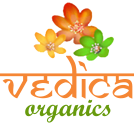 Traditional Indian foods, USDA certified organically grown in India and GMO-free. Aromatic rices, stone-milled flours , classic Indian pulses, chutneys, spices, teas, and read-to-eat dishes. “We source all our foods from the organic farms directly and deliver at your doorstep, through online orders. Our foods are natural and healthy, and are known to bring holistic wellness in every aspect of life.” Many gluten-free ingredients.
Traditional Indian foods, USDA certified organically grown in India and GMO-free. Aromatic rices, stone-milled flours , classic Indian pulses, chutneys, spices, teas, and read-to-eat dishes. “We source all our foods from the organic farms directly and deliver at your doorstep, through online orders. Our foods are natural and healthy, and are known to bring holistic wellness in every aspect of life.” Many gluten-free ingredients.
Under the Nile
Cute and colorful baby clothes made from 100% organic Egyptian cotton. The company was founded in 1998 when Janice was having a hard time finding real organic cotton baby clothing. Janice and her husband Mohamed worked hard together to develop their vision for a very special organic cotton clothing company. As an Egyptian, Mohamed was familiar with the thousands-year-old tradition of cotton production in Egypt. So they went to Egypt and found a partner there to product their cotton. “No chemicals or pesticides are ever used throughout the entire cultivation and production process.”
Mountain Maus Remedies
Loose leaf teas, bulk herbs, essential oils and hydrosols, herbal tinctures, and various natural body care products made from organic ingredients. “Our herbs are all grown organically, cultivated without the use of pesticides, fertilized with organic manure from our own chickens, rabbits and little kinder goats, and the water used is from our private well which is sustained by the Nisqually River. Only 20 miles upriver is where the Nisqually begins, at the Nisqually Glacier which is located on the south side of Mount Rainier. Our method of using organic rich soil, choosing to use companion plants instead of pesticides and pure glacier water to grow our herbs, plants and flowers, may be more labor intensive, but it takes a far less toll on our environment. Through soil building, crop rotation, careful harvesting and proper composting, all of which are sustainable agricultural practices, the end result is well worth it, not to mention the product is much healthier for our bodies. All of our products are hand picked, dried, meticulously analyzed, tested for freshness, aroma and taste before we package and deliver to you. ”
Rambler’s Way Farm
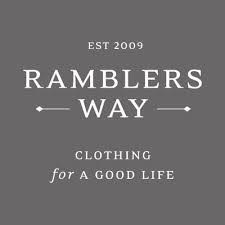 “Soft, superfine wool comfortwear from the founders of Tom’s of Maine.” After nearly to years building Tom’s of Maine—one of the first makers of natural personal care products—Tom and Kate Chappell have a new venture. Their vision is “to re-imagine wool as a next-to-the-skin, superfine fabric, to warm and comfort people of all ages and walks-of-life…We create superfine worsted wool garments, while maintaining high standards of ecological responsibility, community involvement and customer satisfaction. They grow their own special breed of wool and color some of their garments with renewable, all natural dyes from herbal extracts.” For men and women.
“Soft, superfine wool comfortwear from the founders of Tom’s of Maine.” After nearly to years building Tom’s of Maine—one of the first makers of natural personal care products—Tom and Kate Chappell have a new venture. Their vision is “to re-imagine wool as a next-to-the-skin, superfine fabric, to warm and comfort people of all ages and walks-of-life…We create superfine worsted wool garments, while maintaining high standards of ecological responsibility, community involvement and customer satisfaction. They grow their own special breed of wool and color some of their garments with renewable, all natural dyes from herbal extracts.” For men and women.
Infusion Fibers
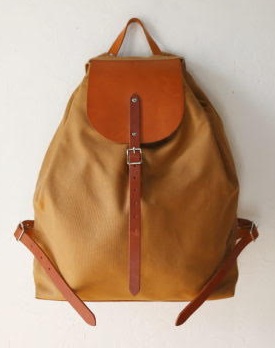 Beautifully simple natural fiber handmade bags, using organic cotton, vegetable tanned leather, and other natural materials of similar quality. “Infusion represents a collection of hand designed, hand sewn, high quality, natural fiber textile and leather work.,Every item is thoughtfully constructed, from start to finish, by Abby Meadow, in her home loft studio on the Oregon coast… In my work, I strive to create durable and long lasting items that are both functional and beautiful. I am drawn to natural fibers, with an emphasis on organic cotton canvas, waxed cotton canvas, hemp, and vegetable tanned leather. In my own life, I make every effort to be kind and gentle to the earth and to the life forms that live here. My work is a natural, creative extension of the things I value, and the care in which I approach life and those around me.” Wallets, backpacks, purses, satchels, and more.
Beautifully simple natural fiber handmade bags, using organic cotton, vegetable tanned leather, and other natural materials of similar quality. “Infusion represents a collection of hand designed, hand sewn, high quality, natural fiber textile and leather work.,Every item is thoughtfully constructed, from start to finish, by Abby Meadow, in her home loft studio on the Oregon coast… In my work, I strive to create durable and long lasting items that are both functional and beautiful. I am drawn to natural fibers, with an emphasis on organic cotton canvas, waxed cotton canvas, hemp, and vegetable tanned leather. In my own life, I make every effort to be kind and gentle to the earth and to the life forms that live here. My work is a natural, creative extension of the things I value, and the care in which I approach life and those around me.” Wallets, backpacks, purses, satchels, and more.
Green Goo
 Personal care products made in Boise Idaho by a woman who is an herbalist, organic farmer, backyard beekeeper, Certified Professional Midwife, and a Permaculturist. She and her family use” timeless herbal wisdom with Organic ingredients to produce Food for Your Skin™…We strive to bring the farm into the pharmacy by carefully selecting only the purest, most sustainable herbs and essential oils to create medicinal everyday products…Our herbs are carefully sourced from organic farmers, consciously wild crafted, or organically grown in house. We infuse our fresh and dried herbs in organic oils, rather than using premade extracts, to increase the medicinal value of our products. This enhanced process maximizes the potency of our salves taking the healing properties to the next level. We don’t just offer products that soothe and moisturize, we craft products that make a difference in your life!” Choose from products for skin care, outdoor and first aid, pet and ranch, mom and baby, and intimates.
Personal care products made in Boise Idaho by a woman who is an herbalist, organic farmer, backyard beekeeper, Certified Professional Midwife, and a Permaculturist. She and her family use” timeless herbal wisdom with Organic ingredients to produce Food for Your Skin™…We strive to bring the farm into the pharmacy by carefully selecting only the purest, most sustainable herbs and essential oils to create medicinal everyday products…Our herbs are carefully sourced from organic farmers, consciously wild crafted, or organically grown in house. We infuse our fresh and dried herbs in organic oils, rather than using premade extracts, to increase the medicinal value of our products. This enhanced process maximizes the potency of our salves taking the healing properties to the next level. We don’t just offer products that soothe and moisturize, we craft products that make a difference in your life!” Choose from products for skin care, outdoor and first aid, pet and ranch, mom and baby, and intimates.
Mustard and Co.
 Mustards made with freshly ground raw organic mustard seeds. Their unique “cold” process preserves the spicy volatile oils. These are combined with premium ingredients, including organic extra-virgin olive oil, filtered water, and Jacobsen Salt Co, sea salt to make a set of mustards with vibrant flavors. “Right away, you’ll notice that our mustard is thinner than many others you’ve been accustomed to. This is primarily due to our determination to preserve the raw properties of each of the ingredients we use. In other words, we opt not to add in any thickeners or emulsifiers. You’ll recognize all of our ingredients, and what you see is what you get – fresh, raw, and bold mustard.”
Mustards made with freshly ground raw organic mustard seeds. Their unique “cold” process preserves the spicy volatile oils. These are combined with premium ingredients, including organic extra-virgin olive oil, filtered water, and Jacobsen Salt Co, sea salt to make a set of mustards with vibrant flavors. “Right away, you’ll notice that our mustard is thinner than many others you’ve been accustomed to. This is primarily due to our determination to preserve the raw properties of each of the ingredients we use. In other words, we opt not to add in any thickeners or emulsifiers. You’ll recognize all of our ingredients, and what you see is what you get – fresh, raw, and bold mustard.”
Organic Seasoning Blends That Give 100% Of Profits To Artists With Disabilities
 Today my guest is Debb Masterson, founder of Minnesota Nice Spice. She makes organic seasoning blends that really pop with flavor! (I’ve tried some of them) And all the profits go to helping a local organization that empowers adults with disabilities through art. Debb is a self-proclaimed spice gypsy, naturalist, and world traveler, From a young age, Debb’s affinity for creating deliciously unique recipes was evident. She learned French culinary techniques from her grandmother and became a master of substitution and experimentation when faced with limited ingredients. A diverse career path that included working in restaurants, owning a neighborhood bar and grill, and selling medical devices and beverages, supported Debb’s love of food and also sparked an interest in the healing arts, which led to Debb’s strong belief in the healing properties of everyday herbs and spices. As a risk-taker with a true entrepreneurial spirit, it’s no surprise that Debb’s current venture combines all her life and work experiences, including her love for world travel. Debb has traveled to dozens of countries seeking out native spices and global healing products and has channeled her unique experiences into each of her Minnesota Nice Spice Seasoning Blends. www.mnnicespice.com
Today my guest is Debb Masterson, founder of Minnesota Nice Spice. She makes organic seasoning blends that really pop with flavor! (I’ve tried some of them) And all the profits go to helping a local organization that empowers adults with disabilities through art. Debb is a self-proclaimed spice gypsy, naturalist, and world traveler, From a young age, Debb’s affinity for creating deliciously unique recipes was evident. She learned French culinary techniques from her grandmother and became a master of substitution and experimentation when faced with limited ingredients. A diverse career path that included working in restaurants, owning a neighborhood bar and grill, and selling medical devices and beverages, supported Debb’s love of food and also sparked an interest in the healing arts, which led to Debb’s strong belief in the healing properties of everyday herbs and spices. As a risk-taker with a true entrepreneurial spirit, it’s no surprise that Debb’s current venture combines all her life and work experiences, including her love for world travel. Debb has traveled to dozens of countries seeking out native spices and global healing products and has channeled her unique experiences into each of her Minnesota Nice Spice Seasoning Blends. www.mnnicespice.com
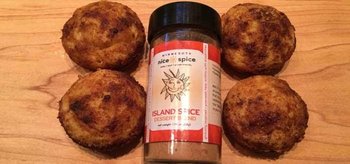 | 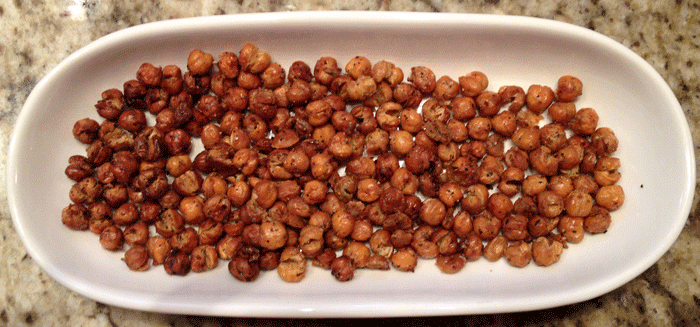 |
TOXIC FREE TALK RADIO
Organic Seasoning Blends that Give 100% of Profits to Artists with Disabilities
Host: Debra Lynn Dadd
Guest: Debb Masterson
Date of Broadcast: October 29, 2015
DEBRA: Hi, I’m Debra Lynn Dadd, and this is Toxic Free Talk Radio where we talk about how to thrive in a toxic world and live toxic free.
It’s Thursday, October 29th, almost Halloween, and 2015. I’m here in Clearwater, Florida where the sun is shining as it does this time of the year in Florida. It’s a beautiful day today.
We’re going to talk about something really delicious today. We’re going to be talking about spice blends. And one of the things that I love about spice blends is that to put clovers together actually takes some finesse. And well-trained chefs and experienced cooks can put those spices together in a way that taste good and have the proper balance.
But for those of us that aren’t as experienced or knowledgeable, it’s really nice to have a blend that tastes really good so that you can just sprinkle it on your food and that tastes Italian or Thai or Chinese or whatever.
So today my guest has made a series of spice blends with all organic spice ingredients. We’re going to be talking about that.
Her name is Debb Masterson, and she’s the founder of Minnesota Nice Spice.
Hi, Debb.
DEBB MASTERSON: Hi, Debra.
DEBRA: So nice to talk to you.
DEBB MASTERSON: Thanks for having me.
DEBRA: You’re welcome. Thanks for being here.
So I just want to tell my listeners that the first time I tried your spice blends, I just went wow because it had so much flavor in comparison to other spices. I buy single spices and I’ve used some other spice blends, but yours really are powerful flavors.
DEBB MASTERSON: Yes, thank you. A little bit goes a long way.
DEBRA: It does. It does.
So how did you become interested in doing – they’re all organic. What made you interested in organic?
DEBB MASTERSON: Well, growing up, we always had an organic garden, and we would always grow our own herbs, dry them, and mix them with spices, and make our own spice blends for fun.
As time went on, you get busy, and have a lot of work to do, and life goes crazy. So looking in the stores, there aren’t many organic spice blends. So I thought, “Well, this would be a good opportunity to put my skills of synthesizing herbs and spices, and take advantage of that with my own recipes.”
DEBRA: What made you interested in the organic aspect of it? Why not just use non-organic ingredients?
DEBB MASTERSON: A lot of people don’t know this, but a lot of herbs and spices come from all over the world, and they’re tainted with chemicals and pesticides, or are genetically modified. And I just wanted to make sure that I wasn’t putting those things in my body.
The consumers are becoming more aware of the health effects of chemicals and the pesticides. And a lot of times, the sterilization processes that are used out there include chemicals or radiation.
DEBRA: Tell us more about that because these are the kinds of the things that we don’t ever see on the label. One of the things that I talk about a lot on this show is that a lot of times there are toxic chemicals in the products that are not required to be on the label. Yet if you want it to be pure, it has to state that it’s organic and it’s certified, and all these things.
And so, tell us more about what really should be on that spice label, something like sterilization, that’s something we don’t know anything about as consumers.
So tell us more about that.
DEBB MASTERSON: Well, I do know that there are some sterilization processes with chemicals like ethylene oxide and things like that.
And that should be on the label.
Often times, things like – when they’re irradiated, which uses radiation to sterilize the herbs and spices, it’s not put on the label. So you want to look for organic products. You want it to say non-GMO. You want it to say non-irradiated. Those are things to look for.
DEBRA: So if it doesn’t say that then it’s probably likely that it is GMO and irradiated, and all of those things, even though it just looks like their herb or spice in a bottle.
DEBB MASTERSON: That’s correct. And a lot of these spices days these are – the blends are soaked with preservatives, fillers, MSG, flavor enhancers like MSG. And that should be on the label. But often times, it is not.
DEBRA: It’s not required. I thought that for food products, do spices, are they not labeled like a food product? Because for food products, we’re supposed to list all of the ingredients.
DEBB MASTERSON: Yes, and it sometimes they should be listed on all the ingredients. But often times, they’re not. For instance, if you have a gluten allergy, they’re not all gluten-free. There could be different wheats and fillers inside of the spice blends. So you really want to watch the ingredients.
DEBRA: So would it say something like – or maybe not specify it?
DEBB MASTERSON: Pardon me?
DEBRA: Would it, maybe, say filler and not specify what the filler is?
DEBB MASTERSON: No, it would say “unnatural flavors” and “other flavors.” And sometimes they will say “and other artificial flavors.”
But things can be [inaudible 00:07:22].
DEBRA: I know. So I actually have been wanting to do some research lately on what does the term “natural flavoring” mean. Is there anything you can tell us about that?
DEBB MASTERSON: Well, I’m not an expert on the natural flavoring, but what I do know is a lot of times, it will say natural flavoring, but that doesn’t mean that it’s organic, and that doesn’t mean that it is not harmful. So that’s another thing that you want to – anything like, you want to just get organic.
And if they’re gluten-free, they should say they’re gluten-free.
Often times, you’ll look for – for instance, my spice blends do not say “certified organic” although all of my ingredients are certified organic.
They’re from a certified organic supplier. But myself as a company, I’m not certified organic.
So on the front of the label, you cannot say that they’re organic. So you have to look at the ingredients panel on the back. And there on the back of the panel ingredients area is where you can say “organic oregano,” “organic basil,” “organic this,” “organic that.”
So you either want to look for certified organic on the front of the label, or you want to read the ingredients on the back and make sure that they say they’re organic.
DEBRA: So the certified organic on the front of the label – this is good that we’re talking about this because I’ve been hearing this about personal care products too that when they say organic on the label – and also with beds. You can’t call – if it says organic mattress that means that the company is certified to make an organic mattress. And that everything that they do is if it says certified organic on it.
Personal care label, so it’s the same with food. There’s a difference between the ingredient being certified and the product being certified.
DEBB MASTERSON: Yes, you’re correct. That’s right. And just organic, you want to just make sure they’re organic. Then you know that they have not been modified in any way. The pesticides, herbicides, they’re not crawling with all of those chemicals.
DEBRA: Yes. Organic is the keyword here. Organic, organic, organic.
DEBB MASTERSON: Organic, organic.
DEBRA: Well, I totally will say several times today just how flavorful your spice blends are because it was just so surprising to me when I first tasted them. It was just like, wow. And I think that people who haven’t eaten organic food don’t know about this experience of organic food tasting better.
It reminded me of many years ago when I first tasted an organic orange. And I went, “Oh, this tastes like an orange. It doesn’t taste like pesticide.”
DEBB MASTERSON: That’s right.
DEBRA: It was the same thing. And I keep having that experience over and over with organic food, having it taste like the actual food, instead of what the chemicals are.
We need to go to break. When we come back, we’ll talk more with my guest, Debb Masterson, who is the founder of Minnesota Nice Spice.
And we’ll be right back.
DEBRA: You’re listening to Toxic Free Talk Radio. I’m Debra Lynn Dadd, and my guest today is Debb Masterson. She’s the founder of Minnesota Nice Spice.
Debb, do you do some traveling and seeing what it’s like with the spices around the world?
DEBB MASTERSON: Yes. I’m a pretty avid traveler. I’ve been all over the world, tasting spices and things just for fun. It seems that you can just get spices anywhere in any old market. And because they’re fresh from – let’s say, I went to Grenada, the cinnamon, the nutmeg, the [inaudible 00:14:29].
And you can really taste the difference.
It’s like that. When you buy organic things – for instance, I buy – in small batches, I buy, 25 pounds at a time – well, it wouldn’t be small to you or the average –
DEBRA: Small for a manufacturer.
DEBB MASTERSON: Yes. It’s fresh because you’re making in small batches. Just like when you’re traveling around the world, you could taste how fresh it is where it’s grown.
So I think it’s really important when you’re making spice blends that you’re able to taste how fresh they’re supposed to taste.
So I’ve been fortunate enough to be able to travel all over the world, all the Spice Islands, and China. And just everywhere. And lots of different markets, Morocco and Spain.
It’s just wonderful.
I think that the companies that – there are few and far between in the United States that buy only certified organic ingredients. But there are a few. It’s important to buy from them. [inaudible 00:15:40] is a good one where you can get lots of certified organic ingredients.
DEBRA: And I can get those right in my local natural food store. So whenever I’m buying individual spices, I always buy them organic.
DEBB MASTERSON: Yes, it’s great. And you can really taste the difference. And you can taste how fresh they are because they’re really scrutinized.
I would say, a lot of the spice companies turn away 50% of the spices that come from all over the world just because they’re really scrutinized and tested really carefully.
DEBRA: So what are they testing for?
DEBB MASTERSON: Well, they test them for herbs – herbicides test [inaudible 00:16:22], chemicals, genetic modification, all kinds of things.
DEBRA: The organic ones, okay, I get it.
DEBB MASTERSON: They’re tested just to make sure that everything is perfectly organic, and they’re not tainted.
DEBRA: That’s good that they have that safeguard there. It seems like a lot of herbs and spices, spices particularly, are grown in other countries. I can grow a lot of herbs in my backyard. Right now, I am growing parsley and basil and [inaudible 00:16:58] flowers, and things like that.
But things like nutmeg has to come from certain countries that have certain climates. And some of those are third world countries, and anything could happen there.
DEBB MASTERSON: That’s right. You don’t know what’s in the soil either. That’s where the organic certification comes into play.
DEBRA: Tell me your most memorable spice tasting in your travels, something that really stands out for you. I know I have – one of my most memorable meals when I was traveling was when I was in Germany. My husband and I were taking this boat ride down the Rhine River.
And we stopped in this little town. And it happened to be just the week where it was the prime asparagus season. So everybody had asparagus. You just walk down the street, and every little restaurant had an asparagus special.
And we went in and we had a meal that was only asparagus, boiled potatoes and black forest ham. That’s all it was. And it was one of the most memorable meals I’ve ever had.
DEBB MASTERSON: Oh, my gosh. Of course. When I think of one of my most memorable experiences was when I was in Grenada. I went on a cruise to all of the Spice Islands, Del Monica, Grenada, Barbados and on and on.
When we were on the island of Grenada, it was really interested because there was nutmeg everywhere. And I didn’t know much about nutmeg and how the outside of the nutmeg itself, the nut, it looks like a little walnut. And you crack the outside of the nutmeg to get in the nut on the inside.
And then it’s grounded into the nutmeg that you use in your food.
So that was an amazing experience.
And then on the outside of the actual nutmeg is a little red piece, and that is mace. So it’s really interesting, all the different aspects of just one little nutmeg.
DEBRA: I don’t buy the ground nutmeg anymore. I buy the whole nut. And then I grind it – not grind, but grate it right when I use it. And it’s so fresh and it’s so fragrant. I love nutmeg.
DEBB MASTERSON: It’s amazing. It’s so good in everything. Just try tea and then in your coffee, and Alfredo sauce, and things like that.
But that was really memorable because they were making lots of things. Not only was it educational, but they were making lots of things out of the nutmeg. Necklaces, because they’re so fragrant. It was beautiful jewelry.
DEBRA: I would love a nutmeg necklace. I’m going to have to make one.
DEBB MASTERSON: And then they showed me how you can soak the nutmeg necklace in water for half an hour, and then it revitalizes the scent of the nutmeg. So it’s really awesome. I have my nutmeg necklace hanging in my kitchen. It’s just awesome.
DEBRA: What wonderful experiences. I would just love to see all these herbs and spices in their native habitats. That’s so great.
Now, when I use your products, I’m going to think about that. What a wonderful thing.
We need to go to break in about 15 seconds, so I’m not going to ask you – we’re not going to start a new question. But when we come back, let’s talk about your blends. I have some sitting here right here on my desk.
So we’ll talk about those and some other ones.
You’re listening to Toxic Free Talk Radio. I’m Debra Lynn Dadd, and my guest today is Debb Masterson. She’s the founder of Minnesota Nice Spice. And she brings her world traveling experience to make these spice blends. And we’re going to hear more about how she makes them when we come back.
DEBRA: You’re listening to Toxic Free Talk Radio. I’m Debra Lynn Dadd, and my guest today is another Debra. She’s Debb Masterson, founder of Minnesota Nice Spice. She makes these wonderful, organic, flavorful, super flavorful spice blend.
So Debb, tell us how you put together a spice blend. What’s the process of putting all those flavors together?
DEBB MASTERSON: Well, it’s truly interesting. Often times, I am inspired from a trip. For instance, I once went to the Island of Crete, which is a Greek island where my husband’s best friend is, and spent three weeks with his family, and learned the flavors of the island.
And then I come home and try to replicate different flavors in my own version.
So I’ll just put together some different herbs and spices, and experiment with them, and how they taste really good to me. And then I’ll gather two people who usually have really good flavor pallets.
For instance, my grandmother who is 97 and still has all of her taste buds. She’s been making spice blends for years. So I’ll gather her and another person or two that are really good at synthetizing flavors.
And we’ll just perfect them. Sometimes it just takes a matter of a few hours. Sometimes it takes several days.
DEBRA: I totally understand that. It’s interesting that you use the place the flavor of the place something [inaudible 00:28:13].
I think about that in terms of – I’ve done a fair amount of traveling, not as much as you. But I’ve been to Del Monica, for example.
Wonderful island. And I’ve been to various parts of the British Isles and places.
And different places do have different flavors. One of the things, when I lived in California, I lived in a rural area where there was a lot of still forest and creeks and things like that. And so the native plants were still there. There were flavors of that place, like blackberries. We had blackberries all summer.
We had fruit trees and learned that the Indians made fruit tree tea and things like that. And I was really trying to always eat the flavors of my place.
And then I moved to Florida, and it’s so suburbanized that I’m still, after 14 years, trying to figure out what is the flavor of my place.
DEBB MASTERSON: They say that different herbs and spices can taste different from country to country just because of the soil, then the way that they’re grown, and things like that. So yes, it’s really interesting.
DEBRA: And I think that people, and I’m not saying this as wrong, what I’m about to say. I think people have a lot of attention on, “I want to eat Chinese food. I want to eat Italian food” or whatever. And they don’t see what’s in their own backyard literally.
And all these flavors of all these places are those flavors because they were eating what was there.
DEBB MASTERSON: That’s right. Eating from the land.
DEBRA: Yes. So my food philosophy is a combination of I want to eat organic first of all. I want to eat local as best I can. And that’s a very tough thing to do. But I was also raised in San Francisco. So I have this international culinary viewpoint, all these flavors from all over the world because that’s what I was raised with.
And so what I’d like to do is I like to take my local ingredients, my local, organic ingredients, and then make them taste like Italy, or China, or whatever. So I’ll do something like instead of making Chinese food, I’ll make a salad and put soy sauce on it, and then it tastes Chinese.
So I really like your spice blends because I could just take any food, even if it’s organic chicken breast with the skin on it, or whatever I’m eating. And it will taste like a place.
DEBB MASTERSON: Yes, it will transport you right over into Thailand if you try the Thai spice.
And that’s really interesting because that’s how I starting coming up with the different blends. I wanted to be brought back to the places that I visited.
DEBRA: This is so wonderful because you’re – and I didn’t even know this when I invited you to be a guest. But it’s so in alignment with the way I think. And your spice blends have the authenticity of you actually being in the place and wanting to create what you tasted there, recreate what you tasted there.
And that’s very different than commercial spice blends where they just have scientists in a sterile lab and they’re putting together these flavors. And then they give a consumer taste test that has nothing to do with the original plants and the original people and the cuisine of the place.
But yours do.
DEBB MASTERSON: Thank you. The flavors are not only really authentic and unique because they are my own recipes and my own versions of flavors that I’ve been fortunate enough to be able to taste all over. But I also try to make the graphics, the photos on the jars, and the designs on the labels, to be really authentic as well, and to really stand out.
I noticed, when I first started, looking in the stores to see who had organic spice blends that the very few that were out there were very boring, the way they were just typically – you have a little leaf on them or they were green. And because – I’m not sure if your listeners know this but my proceeds help a local arts center for artists with disabilities or adults with disabilities.
So my sister is the artist on our label. There’s a great little sun logo on them. And a lot of the blends have graphics and designs on them that take you to the region or that speak of that region that reminds me of that region.
For instance, my Savory Essence has a design on the label. It was actually a photograph that I took in Morocco. It was a fabric on a chair that
I just thought was so beautiful, and I wanted to put it on my very first spice blend, which is the Savory Essence.
DEBRA: I do that too when I travel. I take pictures of things like tile floors and fabric patterns, whatever catches my eye that I think is beautiful. Just because a part of you, then those other cultures, and I really like that. I really like that. Wow.
So when we come back from the break, let’s talk about some of your – I want you to describe some of your spice blends so that our listeners know what you have to offer.
You can go to Debb’s website. It’s at MN, like Minnesota, MNNiceSpice.com. MN – it’s so hard to say that. MNNiceSpice.com.
You’re listening to Toxic Free Talk Radio. I’m Debra Lynn Dadd, and my guest is Debb Masterson, founder of Minnesota Nice Spice. And we’ll be right back.
DEBRA: You’re listening to Toxic Free Talk Radio. I’m Debra Lynn Dadd, and my guest today is Debb Masterson, founder of Minnesota Nice Spice, and the website is MNNiceSpice.com
If you go to ToxicFreeTalkRadio.com, I have some recipes where I’ve used Debb’s spice blends. And one of the things that I did was I took her Island Spice, which we’ll have her tell you about, and I put it on some gluten-free vanilla mini muffins. And what I did was I made the muffins, which are plain. But then I drizzles melted butter on top of them and put her spice on it before I baked them in the oven.
And these are so good, and they’re tasting like cinnamon toast but more complex than cinnamon. And my whole house smelled wonderful while they were baking. It was just really wonderful to smell it, and then taste it.
The recipe for this is there.
And also, I made roasted chickpeas, my own roasted chickpeas. Now, you might have seen those in bags at the natural food store. But it’s easy to make roasted chickpeas. And then I put on them her Lucy’s Pub Blend.
And it was fabulous.
If you make the roasted chickpeas, you can put any flavors you want. You can just put –use all the spice blends and have a different flavor every day.
So Debb, tell us about – well, first tell us about the Island Spice because this is the first time I’ve ever seen a dessert spice blend.
DEBB MASTERSON: I call it Island Spice Dessert blend because it’s all the flavors of the Spice Island. It’s cinnamon, nutmeg, cloves, allspice, ginger and cardamom.
Some people would consider it a version of – a cross between an apple or a pumpkin spice, like a pumpkin pie spice or an apple pie spice.
But it has cardamom in it, and it’s just a really nice blend. So it’s really good on anything, any kind of crisp, like an apple crisp or rhubarb crisp, any apple or pumpkin dessert. It’s great in chai tea, oatmeal, French toast.
Just sprinkle it in yogurt.
DEBRA: Yes. You can just make any food taste like pumpkin or apple pie. It’s exactly the spices. It’s like pumpkin pie spice but better.
DEBB MASTERSON: Right but it doesn’t have any sugar in it.
For instance, right now, it’s such a big craze to have pumpkin spice latte or pumpkin this or pumpkin that. And it’s a really healthy way to get all those flavors but without the sugar. You can always add a little organic brown sugar or something if you like that.
It’s just a really nice go to for anything that you bake.
DEBRA: I actually added a little organic coconut sugar. I forgot to mention that. So I put butter, and your Island Spices, and a little sprinkle of organic coconut sugar. And what a great topping for a muffin. But I could also see baking the pumpkin.
I roast my pumpkin. I don’t eat it out of a can. I make roasted pumpkins, and I can just see taking that roasted pumpkin, and putting your spice blend on it just right there, and just not even needing to make pumpkin pie.
DEBB MASTERSON: Leading up to that another really good blend for that type of that thing is the Jammin Jerk spice. That has cinnamon, clove, thyme, paprika and garlic. And it’s amazing on pumpkin, roasted squash, sweet potatoes.
If you make your own sweet potato fries, it just gives it so much flavor.
DEBRA: I don’t have that one. That sounds really good.
So the other one that I tried was Lucy’s Pub Blend, as I said, on the chickpeas. How did that one come to be? Lucy is your sister?
DEBB MASTERSON: Lucy is my sister. And she is the artist and the inspiration for Minnesota Nice Spice. Like I said, she goes to an arts center for adults with disabilities.
She came home one day and said that they couldn’t afford their water cooler. So I wanted to help them. So I started making my own spice blends and started Minnesota Nice Spice as a way to help them.
DEBRA: And I want to say to my listeners that Debb gives 100% of her profits to this organization. Obviously, she takes out what it costs to buy the spices and stuff. But this is an entirely volunteer business for her. She’s not making any profit at all. It all goes to help this organization.
So anything that you buy from her, any of these wonderful spices that we’re talking about, it all goes to help this program, which I think is wonderful. It’s wonderful.
DEBB MASTERSON: Thank you. It was my way to give back. They actually have really tried to help Lucy transform her life. She would just vacuum carpet at a local furniture store, and not that that is a bad job, but it wasn’t really fulfilling for her.
She loves to do art. We had no idea that she even had these artistic talents until she started at this arts center. So it’s truly been a blessing. So
I really wanted to give back because all of the artists there have amazing talents.
They would all be probably stuffing envelopes if it wasn’t for this arts center. So I think it’s great.
DEBRA: That’s such a beautiful thing.
So what’s in Lucy’s Pub Blend?
DEBB MASTERSON: Well, Lucy’s Pub Blend is a sea salt-based blend. So it has sea salt, celery seed, black pepper, some granulated organic lemon and garlic, little paprika. It’s great on all of the things that Lucy likes. That’s why it’s named after her.
Lucy loves burgers and pork chops and steaks and even Bloody Mary.
DEBRA: It is like a really good seasoned salt blend that you could just put on anything, even my chickpeas, and it tastes really good.
DEBB MASTERSON: It’s very diverse.
DEBRA: Well, tell us about some of other ones that you like. Obviously, you like all of them. But what’s another one that maybe a lot of our listeners would like?
DEBB MASTERSON: The Totally Taco is my biggest seller. It’s really difficult to find organic taco seasoning, and it’s really flavorful. So people really, really enjoy it. A little bit goes a long way, so it’s full-flavored, no fillers, no preservatives of course.
Another one that I find that people really like these days is the 10,000 Lakes No-Salt Blend. And it’s called that because of the 10,000 Lakes in Minnesota that don’t have salt.
It’s really interesting because I had people accuse me of putting salt in it because it tastes so good. But it’s not. I find that garlic and citrus together really add a lot of flavor to foods without the salt. It’s real garlic and lemon forward.
DEBRA: That sounds delicious.
DEBB MASTERSON: It is really good. It is good on just about anything, in soups, on chicken, on vegetables. And you can always add a little bit of salt if you like salt. But it’s a nice option for people who are watching their intake.
DEBRA: Well, it sounds like that you have something for everyone.
DEBB MASTERSON: Yes, there are 17 blends, and again, they’re all gluten-free, and they’re 100% organic. They’re charitable, and they’re all made in small batches, so they’re super fresh. And I just love making them. [inaudible 00:47:49]
DEBRA: I’m laughing with delight because there are some things where you just get everything right about it. And there’s nothing that I could say to make your product any better. You just are doing everything right.
DEBB MASTERSON: Oh, my gosh. Thank you.
DEBRA: I wish all products – there are just some products that I just wish all products would be like, have the thoughtfulness and the end result being so delicious. And it’s just all the way down the line.
Well done.
DEBB MASTERSON: Thank you.
DEBRA: So we only have about a minute and a half left. Are there any final words you would like to say?
DEBB MASTERSON: Well, I wanted to tell you that recently, we had a revolution with our company. And we had a very – I’m not sure if you know of the Deluxe Corporation. It’s a big trucking and office company that’s local here in Minnesota. And they have this revolution going on right now. It’s a small business revolution. And they have this documentary where they go around the entire country.
And they interview different, small businesses. And they are choosing four different companies to receive $25,000 because of what they’re doing in their communities as a small business.
And they have Robert Herjavec from Shark Tank as their ambassador. He showed up with a camera crew at my door two weeks ago and gave me a check for $25,000.
DEBRA: How wonderful for you. You deserve it.
DEBB MASTERSON: They say that what goes around comes around. So all of my hard work is helping me to transform my business into a great little company, and it helps me to pay some of my insurance and the people who have been so nice to help me.
DEBRA: Thank you so much, Debb for being here, and for doing what you’re doing, and setting a good example.
You’ve been listing to Toxic Free Talk Radio. I’m Debra Lynn Dadd. Be well.
Choosing Toxic Free Flooring
 My guest today is Joel Hirshberg, Co-founder and President of Green Building Supply. He opened one of the nation’s first green building supply retail stores in 1991, followed by one of the first online green building stores in the country. Today Joel and I will discuss toxic-free flooring. When I asked him what he wanted to talk about he said, “Instead of talking about a lot of things wide and shallow, can we talk about one thing narrow and deep? And can I ask YOU questions?”So today we’re talking about flooring “narrow and deep” and he may ask me questions. Joel has an extensive and varied background in building, in addition to selling toxic free building products. He’s a contributor to the US Green Building Council Green Home Guide website. He built a custom home modeled after Frank Lloyd Wright combined with Vedic Architecture. He’s an entrepreneur, real estate developer, custom home builder, retailer, teacher, sailor, husband, father and lover of knowledge and architectural design. www.GreenBuildingSupply.com
My guest today is Joel Hirshberg, Co-founder and President of Green Building Supply. He opened one of the nation’s first green building supply retail stores in 1991, followed by one of the first online green building stores in the country. Today Joel and I will discuss toxic-free flooring. When I asked him what he wanted to talk about he said, “Instead of talking about a lot of things wide and shallow, can we talk about one thing narrow and deep? And can I ask YOU questions?”So today we’re talking about flooring “narrow and deep” and he may ask me questions. Joel has an extensive and varied background in building, in addition to selling toxic free building products. He’s a contributor to the US Green Building Council Green Home Guide website. He built a custom home modeled after Frank Lloyd Wright combined with Vedic Architecture. He’s an entrepreneur, real estate developer, custom home builder, retailer, teacher, sailor, husband, father and lover of knowledge and architectural design. www.GreenBuildingSupply.com
TOXIC FREE TALK RADIO
Choosing Toxic Free Flooring
Host: Debra Lynn Dadd
Guest: Joel Hirschberg
Date of Broadcast: October 27, 2015
DEBRA: Hi, I’m Debra Lynn Dadd and this is Toxic Free Talk Radio where we talk about how to thrive in a toxic world and live toxic free.
It’s Tuesday, October 27th, 2015.
A little bit of overcast here in Clearwater, Florida. I think we might have a little rain, but no thunderstorms. It’s coming into winter. We only have thunderstorms in the summer as you probably heard if you have been listening to this show.
So today, my guest is Joel Hirshberg. He’s the Co-Founder and President of Green Building Supply and he has been working with green products for building almost as long as I’ve been doing my toxics work. He opened one of the nation’s first green building supply retail stores at 1991, followed by one of the first online green building stores in the country.
So he has a lot of information because he’s dealing with all kinds of building materials. And so when we were talking about what he was going to talk about, we talked about either he could talk about a lot of different products and say practically nothing or we could just choose one and say a lot to go narrow and deep instead of wide and shallow.
And so today, we’re going to be talking about flooring and how to choose nontoxic flooring, what’s toxic about flooring, everything having to do with flooring and we’re going to be talking about it deeply and we’ll really get into the subject.
Hi, Joel.
JOEL HIRSHBERG: Hello.
DEBRA: How are you doing there in where are you?
JOEL HIRSHBERG: I’m doing good. We’re in Fairfield, Iowa and it’s cloudy. It’s 50 degrees here. So we’re looking forward to a beautiful fall.
DEBRA: Good. That’s good. I thought your website said that you were in Texas. Why did I think that? I guess that was wrong.
JOEL HIRSHBERG: I have no idea.
DEBRA: Yeah. Okay, I was just thinking about something else. I’m glad to hear that you are in Fairfield, Iowa. It’s a beautiful face. I’ve been to Fairfield, Iowa many years ago. Yeah.
So tell us how you got interested in working with building products and why nontoxic. Sorry, sorry, wait, wait. Let’s start over. Wait. Wait.
Let’s start over.
JOEL HIRSHBERG: Okay. Go ahead.
DEBRA: Here’s the question. Let’s start with definition of green.
JOEL HIRSHBERG: That’s a question I ask to all of my own customers because it’s not an easy one to answer and everyone has a different opinion. And as you get into green products and nontoxic products, you start to hear all kinds of different things. I don’t have a one sentence definition.
To me, the most important priority is that it’s safe, it’s completely nontoxic. To me, that’s the ultimate definition of green, but it’s only one part of it. Of course, the other part is energy efficiency, low carbon footprint, sustainability.
These all go to comprise what I consider green and the products that we sell have various degrees of each and there’s light green, dark green, medium. I like to think that what we carry is primarily dark green type products, which basically means that there’s nothing hazardous.
That’s the greenest it can be and it’s ultimately safe.
DEBRA: I agree with that definition, but that’s not the common definition that I see. And when people hear the word “green,” it can be a little confusing because it can range anything from what you’ve described to a product that might be used to fill in cracks to have more energy efficiency that’s horribly toxic and yet, it can still be green because it’s helping to make the home energy efficient.
I just want to make sure that our listeners understand at the outset that your version of green is in agreement with my viewpoint about things needing to not be toxic.
JOEL HIRSHBERG: Yeah, it’s become obvious that people who buy green products typically fall into two categories, one that want to and those that have to.
The people that have to are the ones that need something that’s completely safe. And those who want to, they do it because it’s cool, because it’s unique or that it’s something that’s energy efficient. It saves them a little money.
But you are right, there are many, many products that don’t have all of those requirements met. There just maybe one or two of them. And the goal is to find products that have all those characteristics.
DEBRA: I agree.
JOEL HIRSHBERG: And it’s a challenge, for sure.
DEBRA: Yeah, it is. Some years ago – how many years ago now? 1980. So I started doing my work and I wrote my own book and self-published it in 1982. First published book was in 1984. By 1990, the whole green thing, the whole environmental movement was just really coming up about having to have products. It actually started around 1987 or so.
And so I shifted my work from being focused on toxics to having to include all these other things. And when you go down a list and say, “Is this not toxic? Is this energy efficient, recyclable?” you go down the whole list of the green [screen?].
There are very few products if any that actually meet all those requirements and they’re not even designed to meet all those requirements and you can’t even get the information about all those requirements, which is one of the reasons why I pulled back and said, “The thing that’s most important both to health and to the environment is elimination of toxic chemicals.” And so that’s where I just landed because I can tell you…
JOEL HIRSHBERG: Yeah. And that’s what you do so well. It’s to educate people on these things and pulling together different people like myself and others who you have in your network to talk about what it is that makes their products green and what’s happening in the world so that consumers can learn all the different ins and outs of these things because often it’s very, very challenging for people to do this research.
We talk to people who are building new homes and who are remodeling homes every day. They all, when they call me, the first thing they say is “I’m chemically sensitive or I’m completely frustrated because I cannot figure this out at all. It is way too complicated. I don’t have a PhD in Chemistry.” Neither do I by the way.
DEBRA: Neither do I.
JOEL HIRSHBERG: It’s just something that you don’t know who to trust. And it comes down to trust because you read stories, you read green labels, you read research articles and you also read what manufacturers say about their products and they’re all different, they’re all over the map in terms of what is really green. And some of it is green washing and some of it is light green and some of it is medium green and some of it is dark green.
Where do you draw the line? There aren’t any lines that have been drawn that everyone agrees on. That’s why it’s up to the consumer to always do their own homework and they do that by listening to your show.
DEBRA: Thank you and going to your website. So first let’s ask the question of how did you get interested in things being green?
JOEL HIRSHBERG: In the ’80s, my wife and I decided to build a house and we wanted a natural house that was built with natural materials. In the ’80s, the internet was barely coming alive and the only way to do research was to go there, to talk to people, to actually see things in person. That’s what we had to do.
We traveled around the country for five or six years before we actually designed our house and eventually, we found enough products that satisfied us and we built our house. It was a Frank Lloyd Wright style home built after his first Prairie home in 1901. It was a Willits House from Highland Park, Illinois.
Frank Lloyd Wright used a lot of natural materials even back in the 1900s. And it was not easy finding these materials. And eventually we finally built our house and we were able to somehow build it on a really tiny budget. But our friends who are building homes at the same time wanted to do something similar things. We happened to live in a community where people like eat organic food and meditate and they wanted to build a house with natural materials as well.
So we were asked to help them because we had already done the research. So we did and we did and we did and we keep doing it house after house. Finally, my wife said, “You really need to open up a business doing this because there’s so much demand for it.”
So I eventually did start offering it to people. I had another job and I was totally happy.
DEBRA: Wait, I need to interrupt you because we need to go to break and then we can talk more about this when we come back.
JOEL HIRSHBERG: Sure.
DEBRA: You are listening to Toxic Free Talk Radio. I’m Debra Lynn Dadd and my guest today is Joel Hirshberg. He’s the Co-Founder and President of Green Building Supply and his version of green is that number one, it must be not toxic. So when we come back, we’ll talk more about our subject of today, which is flooring. Stay tuned.
DEBRA: You’re listening to Toxic Free Talk Radio. I’m Debra Lynn and my guest today is Joel Hirshberg. He’s the Co-Founder and President of Green Building Supply in Fairfield, Iowa. But you can also go online at GreenBuildingSupply.com.
Okay, so go on with your story about how you got interested in this and what happened. How did you get into it?
JOEL HIRSHBERG: How we actually started our business wasn’t by choice. We were actually forced into it by local people and a community of 10,000. And as a result, we started to offer different products.
And one of the things we discovered was that people started calling us with questions and problems that they had and we had our own problems at our own house, which forced us to find newer and newer products. That’s what we continue to do today.
What I developed was – I was like everyone else. It was really hard to find information back then. So it’s even harder.
DEBRA: Yes, it was.
JOEL HIRSHBERG: It’s much easier now, but still you have to know how to understand it properly. There are currently SDS sheets available right now and EPD sheets, Environmental Product Declarations. There’s a lot of information, but you still need to know how to read it.
And I learned how to read this. It took me years to finally get through it and figure it out because people are asking me and I was interested in it, but it wasn’t what I have been trained to do. So I had to do it from the ground up and learn about these chemical terms, which is what I help people with every day in understanding.
They call me up with a product and we try to figure out what’s in it because that’s one of the most important things. What’s in the product? How do you know what’s in it? You go to the MSDS sheet and you read and if you are lucky, they’ll tell you something, but most of the time they don’t.
DEBRA: And I just want to interject for our listeners who don’t know how these work that the MSDS sheet, Material Safety Data Sheet is now called Safety Data Sheets if you see that instead. But they are designed not for consumers. They are designed for folks who are working with these chemicals. So they actually know.
For a long time, I thought there must be some big massive list of the chemicals and if these chemicals are in your product and you have to list them on the MSDS. But there isn’t. It’s just up to the manufacturer to decide which chemicals need to be listed. And so there could be all kinds of other things that you think are toxic that the manufacturer doesn’t think that are toxic and that are not on the MSDS.
And so I use them not to say this is what’s in the product. But if the manufacturer thinks that something is toxic enough to list, then you know it’s in there and that would be something that I would not probably get exposed to.
JOEL HIRSHBERG: Yeah. They’re all voluntarily done as well. There’s no one to check these things to make sure they’re accurate. Also, if it’s not on the Toxic Substance Control Act list, then they’re not required by law to list it unless it’s a “known hazard.” And there are just not that many known hazards that are even listen out of the 86,000 chemicals that are out there.
So manufactures can pretty much put on there, only the things that they feel are important and that they are liable for. But there are a lot of proprietary ingredients that they don’t have to list. If it’s a trade secret, they don’t have to list it.
So that’s why when you read, this is the only information consumers really have. And it wasn’t even created for consumers. So what you end up doing is you get one of these and you read it and then you go, “Okay, now what? I don’t understand it. Is it telling me the full story?” So really the only way to know is to test, to test for your own sensitivities, to try out.
Now, who’s got time to do that? Well, I had time to do that because back in the early days, there wasn’t that much going on and so we started testing different products to whether they perform well and I will weather, which was very challenging and whether it was safe to breathe.
I am not chemically sensitive, but we have lots of friends in this community who are and we call them yellow canaries. And those people who are very, very sensitive were helping me find products that were safe. In other words, I would try a product and I would test it out myself. If I like it, great, I’ll give it to them and then let them test it in their own home. If they liked it, then I knew, boy, if this people liked it, then probably everybody else will too.
And since then, over the years of selling products to lots and lots of chemically sensitive people, I learned what is safe and what works.
DEBRA: Yes. Yes, that’s very true.
JOEL HIRSHBERG: That’s my ultimate way testing around. It’s not what the government says because the government has standards that are not that high as we all know and they keep changing. They are getting better, but compared to European standards, they’re quite a bit lower.
And the reason we test products is because we have learned that when you test something yourself and you know from experience what it does, you can talk about it in a much better way. So I use all the products myself and that’s how I learned about them.
DEBRA: Wow.
JOEL HIRSHBERG: And it took a long time to get there.
DEBRA: To be able to say that, to be able for somebody who is looking for nontoxic products, especially building materials to be able to go some place and know that the owner has tested all the products. That’s pretty unusual.
JOEL HIRSHBERG: Yeah, it is. And we have all of our staff tested too. The first thing they do when they get here is we do go through all of the products and have them use every single one of them in their own home as well as in our basement where we have a testing ground.
We’re not underwriters’ laboratory and we don’t have that sophisticated equipment where we can actually test formaldehyde content and VOC content. But we have noses and God gave us noses so that we can smell and know what’s good for us and most people have very good noses, but we’ve learned that a lot of people don’t.
Contractors for one don’t have very good noses.
DEBRA: No, they are all burned out by all those toxic chemicals.
JOEL HIRSHBERG: They’re burned out. That’s right. And so whose nose are you going to trust?
DEBRA: Your own.
JOEL HIRSHBERG: So you have to trust your own nose. Your nose knows most of the time. But you still like to verify the things that have been approved. And that’s why having green labels are a good thing, but green labels often are not complete either. They have lots of different criteria for what allows them to grant somebody a green label.
And then the question is if they’re third party certified or not or was it somebody’s statement about it, which manufacturers do all the time.
They do [inaudible 00:21:03] and say whatever they want to say and you don’t know if it’s true or not.
So it becomes a great deal of challenge for people to figure out. I guess when we come back, we will talk about how this relates to flooring.
DEBRA: Yes, we will.
JOEL HIRSHBERG: Okay.
DEBRA: I have to give you a job on this show. You can be the announcer. You’re listening to Toxic Free Talk Radio. I’m Debra Lynn Dadd and my guest today is Joel Hirshberg. He’s the Co-Founder and President of Green Building Supply, which is an actual retail store in Fairfield, Iowa and also online at GreenBuildingSupply.com. We’ll be right back.
DEBRA: You’re listening to Toxic Free Talk Radio. I’m Debra Lynn Dadd and my guest today is Joel Hirshberg. He is the Co-Founder and I’m not on my page with all my notes here. He is the Co-Founder and President of Green Building Supply, which is a retail store in Fairfield, Iowa and also online at GreenBuildingSupply.com.
I actually was in Fairfield, Iowa many years ago, maybe 20 years ago. I think it was maybe before that because I don’t think your store was there then. So it was maybe in the ’80s. It was in the ’80s. Maybe that was when you were traveling around.
JOEL HIRSHBERG: Right.
DEBRA: Anyway, when I knew that you actually had said in your bio that your house was built on principles of Vedic architecture and Frank Lloyd Wright. Did I get that right?
JOEL HIRSHBERG: Yes.
DEBRA: And one of the people that I met in Fairfield, Iowa was Tony Lawlor. You probably know him.
JOEL HIRSHBERG: Yes, I do.
DEBRA: He has a great book called the The Temple in the House and he probably has other books since then. I still have it on my shelf and I still have it sitting here on my desk and I am just thinking about things to do to my house and I think it’s good to be reviewing all these things that I know from the past. But anyway, I guess it would be interesting and exciting to be able to incorporate these principles in building, which is a totally different show, so let’s get to flooring.
JOEL HIRSHBERG: Yeah.
DEBRA: Say hi to Tony.
JOEL HIRSHBERG: Yeah, okay. He isn’t here anymore, but if I see him, I will.
DEBRA: Okay.
JOEL HIRSHBERG: Anyway, there’s a lot to consider when you are considering installing a new floor or replacing an old floor or tearing out your carpeting. And what to put in is always the question.
There are a lot of things on the market. There is wool carpeting. There is cork. There is bamboo. There is hardwood. There’s linoleum and there’s vinyl.
We don’t sell much vinyl because it’s PVC-based. But we prefer the natural type products, which are about as green as you can get on a flooring, linoleum made by Forbo Marmoleum if I’m allowed to say brand names.
DEBRA: You can say anything you want.
JOEL HIRSHBERG: Okay. It’s one of the greenest products, but so are cork and so are bamboo and so are hardwood. And everyone wants to ask me, “What’s the difference and how are they different?”
There are clearly difference in how they look and cost-wise, they are all pretty much in the same range, from $4 up to about $6 to, $7 or $8.
So they are all in that general range. But which floor for you to pick for your house depends upon a lot of things.
The first question about safety is one that we always try to knock out of the box right away by letting people know that we’ve tested our products and we sold them to chemically sensitive people for years and years and years. That’s how we know they’re good.
But people often say, “Is it CARB-2 compliant?” It’s the California Air Resource Board Phase Two rules for formaldehyde content and there are some companies that have claimed that their products are CARB-2 and then it turned out later that they were not. So you can’t always trust what the label says.
Case in point, I think you’ve probably discussed this on one of your past talks, maybe not. It was about Lumber Liquidators.
DEBRA: Lumber Liquidators, yes. We haven’t talked about it on the show, but I wrote about it in my blog.
JOEL HIRSHBERG: Okay. I won’t spend any time on it, but it suffices to say that the whole point of it was they basically said that something was CARB-2 and they have just recently admitted that they were lying. And they have filed a guilty charge. They filed sanitary guilty and paid a $10 million fine and they’ve got four or five class action lawsuits to come.
But CARB-2 only deals with formaldehyde and that’s usually what’s in the glues, in the adhesives. And most floors have adhesives in them nowadays. The adhesives are used to bind the top layer with the middle layer with the bottom layer of an engineered floor and an engineered floored has these different components to it, the top layer of cork or bamboo or linoleum and then the middle layer could be hardwood or softwood or even an MDF and the bottom layer could also be cork or it could be hardwood.
That composite product has usually something that has to bind it together. And the use of formaldehyde and adhesives have been very common everywhere and especially in China. But in the US, they are now switching over to new types of adhesives that do not contain as much as or do not contain urea-formaldehyde. They may contain phenol-formaldehyde, which is considered nontoxic.
But you can’t just stop at CARB-2 because CARB-2 only deals with formaldehyde. Proposition 65, which is also a California rule deals more with false organic compounds. And the VOCs are off-gassing or emitted from the surface or the finish of the floor.
Someone might tell you that the product complies, but does it comply with the VOC levels of Proposition 65 or better. Proposition 65 doesn’t mean that there’s nothing in it. It just means that it has achieved a level that satisfies the government’s requirements. And for you, as an individual who might not want any smell or whatsoever, they might still find something that complies with Proposition 65 not to be suitable.
So again, the only way to know is to really test and usually what we do for testing is we tell people to buy our sample, take it home and then isolate it in a room such as a closet or an automobile or something where it’s confined and there’s no smell and then let it off-gas for hours and hours ideally under the sun because if you let the sun shine through the window of your car, it will heat up the car and the heat tends to accelerate the off-gassing. So the emissions of anything that might be in the wood will start to come out and be noticeable, more noticeable than normal, especially in a small space.
If you try to do this test on a big space, you will never get there. You will never really know for sure although we do have people who sleep with their products. They take it home and they put it in their bed and sleep with it. That’s one way they know. There are a lot of other ways
I’m sure, putting it in a glass jar and putting it outside in the sun.
But whatever way you use, we really strongly recommend it to everyone. Especially if you’re very sensitive, you need to test every single thing you purchase.
DEBRA: I completely agree with that.
JOEL HIRSHBERG: You really can’t rely on the government. You can’t rely on the labels. You can’t rely on the manufacturers. And I tell them they really can’t even rely on what I say because I have done my own testing and we’ve had a lot of good experience, but still you may be that one in a thousand who just doesn’t like something about it.
DEBRA: Yeah.
JOEL HIRSHBERG: So that’s why testing is so important. Once you get past the safe part of this, then the next question becomes what’s the situation in your house. How are you going to use this floor? Who’s walking on this floor? And what’s the condition of your floor? If your subfloor is made out of concrete or if it’s made out of wood, that will have a different impact or that will allow you to make a different…
DEBRA: I forgot all about the break.
JOEL HIRSHBERG: Okay. Here comes the break.
DEBRA: It was so interesting what you are saying. Anyway, we have a break and when we come back, we’ll hear more about flooring from Joel Hirshberg who is the Co-Founder and President of Green Building Supply in Fairfield, Iowa, also online at GreenBuildingSupply.com.
We’ll be right back.
DEBRA: You’re listening to Toxic Free Talk Radio. I’m Debra Lynn Dadd and my guest today is Joel Hirshberg. He’s the President and Co-Founder of Green Building Supply in Fairfield, Iowa and there’s a store there. And online, you can find him at GreenBuildingSupply.com.
Okay, go on about flooring.
JOEL HIRSHBERG: Okay, we were talking about the first place to start when looking for a green floor is to look what’s in it and what’s on it. And those things are usually found and most manufacturers will tell you what they think is in it, but we still think the people should test that on their own.
After that, there are a number of things that you need to look at as where you are going to be applying this floor. Is it going on a concrete subfloor or a plywood subfloor? Or what is your subfloor? Sometimes, it’s not level. Sometimes it’s not dry. There are a lot of conditions that influence what you should buy.
In general, floating floors or engineered floors as they are often confused terms back and forth, are very suitable for just about any type of floor. That’s because they float. They don’t really levitate, but they literally sit on top of the floor.
They’re not glued down. They’re not nailed down. They sit on top of a pad, which is usually eighth of an inch thick, which has a vapor barrier built into it or not. Sometimes it does depend upon what your subfloor is.
In different parts of the country, people use different things. They have different subfloors and therefore, they may prefer to use a different type of floor. But the question of your subfloor is always the primary or secondary question after health. And that is do you want to glue it down?
In Florida, everybody glues their floor down. In other parts of the country, they nail things down. In other parts, they do a lot of floating floors. And floating floors are getting more popular mainly because they are easy to install, much faster than a nailed down or glued down floor, much less expensive and a lot of people prefer to do it themselves, the DIY type product.
So almost every type of floor now, almost everything is available in a floating type system and usually these are coming in [inaudible 00:41:14], three or five inches wide by three to eight feet long. And they click together and they snap together and they float over your subfloor.
And probably the most critical part of installing floors is the humidity content of your house. A lot of people don’t think about it at all. In fact, if you ask someone whether they have a hygrometer, they will say, “What’s a hygrometer?” No one has hygrometers. They have something that will sense the temperature, but not the humidity.
DEBRA: I have a hygrometer.
JOEL HIRSHBERG: Yeah, that’s good.
DEBRA: I do because I live in Florida where it’s very, very humid. And when I first moved here, I wanted to know how humid it is.
JOEL HIRSHBERG: Well, manufacturers of flooring all have requirements that are very similar and there are standards within these wood flooring industry for humidity content. It needs to be somewhere between 35% and 55%. And that’s really important. If you don’t have that, then your warranty for your flooring is usually void.
DEBRA: Wow.
JOEL HIRSHBERG: So it’s important to have a hygrometer to make sure that you can measure and know what your humidity levels are in your home. If they are too high, then you do something to lower them by using a dehumidifier or turning on the air conditioner. If they’re too low like in southwest part of the country, then you have to get something to humidify the air. But that is a requirement for all flooring. It doesn’t matter what types you get.
So choosing the right floor is a question that really a lot of it has to do subjectively with what you like the looks of it.
But probably after housing, the number one question that people ask is how durable is it? How long will it hold up? And durability is a challenging topic to talk about because durability doesn’t mean the same thing to everybody. When you ask somebody what it means to be durable, “Well, it lasts a long time or it doesn’t scratch so easily. Or when my cat or dog pukes on the floor, I can clean it up easily.” If they accomplished those, they’re durable.
Well, another definition of durability is reparability, how easy it is to repair. And nowadays, floors, typically floors in the United States have either polyurethane finishes or aluminum oxide finishes or UV cured acrylics.
And now, most commonly they are using oils and wax. And oil and wax finishes are becoming very, very popular. In fact, in Europe, 80% of all floorings are oil and wax. So it’s coming to the US big time and it’s going to happen. And it used to be this way, 50 or 60 or 70 years ago.
That was what people used. It’s all wax.
DEBRA: They would wax their floors.
JOEL HIRSHBERG: Yeah, they did. And what happened was back in the ’70s, somebody came around pushing polyurethane and saying, “Hey, this will make your floor more durable.” The truth is it doesn’t make your floor more durable. It puts a finish, a plastic coding on your finish that makes it a little easier to clean. And you don’t have to maintain it quite as often as you do in oil.
But it still scratches and if a dog or a cat pukes, it will eventually go through it if it’s not cleaned up quickly. So you have to maintain your floor no matter what. It doesn’t matter what finish you have. So you can buy a cork or a bamboo or linoleum or any type of floor and you still have to maintain it. Even tile and ceramic tile needs to be maintained.
So those are some of the considerations.
DEBRA: I want to ask you a question because we only have five minutes left.
JOEL HIRSHBERG: Yes, I know, of course.
DEBRA: Could you just go back over these finishes on the floors again and just give us a little summary of how toxic each of them are?
JOEL HIRSHBERG: That’s good. Thank you for asking that because polyurethane is typically – we sell polyurethanes, water-based polyurethanes.
But water-based polyurethane doesn’t mean that it’s nontoxic. It just means it has a water base instead of an oil base. An oil-based is toxic primarily because of the solvents contained in them. Water-based products, polyurethane still have solvents in them. They may not be the same solvents, but most of them are still petroleum-based and most of them still off-gas. So just because something has one type o f a finish or another doesn’t mean that it’s safe. Again, you got to do your homework.
Most products have polyurethane or aluminum oxide and aluminum oxide is a very, very durable type of finish that is sometimes used by itself, but usually used underneath polyurethane. They will use both together with another. And they are typically used on bamboo floors and hardwood floors nowadays because they’re really tough.
If you have a dog, a Labrador retriever, they can still scratch the floor. So that’s why we recommend layer colored floors because they show scratches less than dark colored floors.
But an oil floor that has an oil and wax finish on for example – before we get to the oil and wax, the other type is the UV cured acrylic. UV cured means in the factory it’s cured so that it doesn’t off-gas in the residence.
The problem with polyurethane is they often continue to off-gas in your home for months and months. People always ask, “How long will it off-gas?” It’s really hard to tell because humidity plays such a big part in it. And also if you have your floor re-sanded and finished in your home by a professional who comes in and sends it and recoats and refinishes it, the finish that they use could off-gas for years. Some people say…
DEBRA: Sorry, I have to interrupt you. We only have two minutes left. So I want to know about the oil and the wax. How toxic is that?
JOEL HIRSHBERG: Okay. The oil and wax are not toxic at all. They don’t have, at least the ones we sell, they don’t have anything toxic in them.
It’s mainly linseed oil and linseed oil does smell for several weeks usually, but eventually it goes away and there’s nothing toxic in it.
DEBRA: Good. So wow, that was a lot of information. So now that we have a minute and a half left, is there anything you’d like to say in closing?
JOEL HIRSHBERG: Well, I guess my closing remark would be that anybody who’s interested in installing some new floors needs to really review all the different options besides just the price and besides what’s in it. You have to look at every aspect of it and there’s a lot to know about it.
So do your homework and feel free to call us if you have any questions. But it’s not as simple as buying clothing. Clothing, you can throw it away if you don’t like it or it’s not such a big expense. Buying flooring is a major investment and it has to be done.
It’s something that lasts. Ideally, it’s sustainable and it’s something that will go last as long as your house. You can [inaudible 00:49:04] many times…
DEBRA: I lived in a house that was built in 1940s. So that’s 60 to 75 years ago. And I still have the original hardwood oak floors and they still look great and I think I need to oil them and polish them.
JOEL HIRSHBERG: And that’s the most sustainable way to keep the floor. That’s more sustainable than buying a floor and throwing it away in 10 years and then buying a new one.
DEBRA: Yeah.
JOEL HIRSHBERG: So that, we really like that approach to flooring. It’s the most sustainable way to do it. But it’s not everybody.
Sometimes you buy a house and you just can’t stand the floor, you want to take it out, put in something new.
DEBRA: Thank you so much, Joel. You’ve given us so much information. And again, Joel’s website is GreenBuildingSupply.com. And you can also go visit him in Fairfield, Iowa if you are going that way. And I’m sure we’re going to talk to you again. It’s just great that you have the whole nontoxic perspective that we all want.
You’re listening to Toxic Free Talk Radio. I’m Debra Lynn Dadd. Be well.
New Study Finds Toxic Ingredients in Nail Polish Can Leach Through Your Nails and Into Your Bloodstream
I’ve been saying for years that there are no safe nail polishes. And yet, still I find nail polishes that say they “don’t contain the big 5 toxic chemicals so they are OK.” I just heard this again over the weekend from a woman selling nail polish at a street fair.
But less toxic isn’t enough. A new study done by Duke University and the Environmental Working Group has found that not only is nail polish dangerous to breathe when you are applying it, but the toxic chemicals leach through your nails into your bloodstream.
The chemical found in the blood of women wearing nail polish was TPHP, known to cause changes in hormone regulation, metabolism, and reproductive systems.
Read more at:
- Environmental Working Group: Nailed
- Duke-EWG Study Finds Toxic Nail Polish Chemical In Women’s Bodies
- More Bad News About Nail Polish
Here are some links to posts claiming to have “natural and nontoxic” nail polishes. I’m just putting these here for future reference when I want a list of these brands and their ingredients for when I have time to write about how the ingredients are toxic.
Even though EWG wrote about only one endocrine disruptor, that it can move through the nail into the blood stream means that other toxic chemicals can move through the nail as well. In my opinion, this is evidence that NO NAIL POLISHES ARE SAFE.
Long-banned Chemicals Still in Paint, Contaminating Chicago’s Air
Hundreds of pounds of toxic PCBs, banned in the ’70s, taint Chicago’s air each year; sources include paints still sold on the market
October 21, 2015
By: Brian Bienkowski
Environmental Health News
More than 400 pounds of toxic PCBs are emitted to Chicago’s air each year and researchers warn that some of this load comes via a chemical reaction in paint still sold in hardware stores.
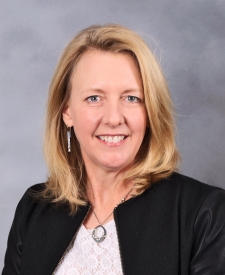 New research designed to inventory the chemicals in Chicago finds soils, sewage sludge and paint are major sources and current cleanup strategies may not be the most effective for protecting people’s health.
New research designed to inventory the chemicals in Chicago finds soils, sewage sludge and paint are major sources and current cleanup strategies may not be the most effective for protecting people’s health.
The chemicals were once widely used as electrical insulators and industrial lubricants but were banned in the late 1970s when researchers found them building up in people and linked them to health effects such as cancer, heart problems and impacts to brain development.
PCBs, short for polychlorinated biphenyls, now seem to be a byproduct of certain pigment production. In recent years researchers have found that some paints, clothing, newspapers and magazines contain forms of the chemicals, usually a specific compound called PCB-11.
“Architectural paint that we buy at hardware stores contributes to a significant amount of PCBs people are exposed to every day. That’s just crazy,” said Keri Hornbuckle, a professor at the University of Iowa’s department of civil and environmental engineering, who previously found more than 50 PCB compounds in 33 commercial paint pigments purchased from U.S. stores.
PCBs build up in the fat tissues of fish and some animals and eating such foods has long been considered the major exposure route for humans. But there is increasing evidence that inhaling airborne PCBs also plays a role in people’s toxic load and such exposures—small as they are—can result in disease.
“PCBs are dangerous chemicals … even low concentrations of PCBs in air constitute an important route of exposure and disease, especially if the exposure is prolonged,” wrote Dr. David Carpenter, director of the Institute for Health and the Environment at the University at Albany-SUNY, in a report this year on airborne PCBs.
In the first comprehensive inventory of PCBs for a city, Hornbuckle and colleagues examined where the chemicals are and where airborne emissions come from in Chicago.
Paints—both on the exterior and interior of buildings—were just a sliver of the city’s PCBs load, but contributed 7 percent of total emissions.
They calculated paint emissions by looking at the annual volume of paint sold in the city estimated to have PCB-containing pigments, and past studies of how the chemicals are emitted from paint.
Some of the larger emissions sources were drying sewage sludge and contaminated soils.
City soils—which accounted for 31 percent of emissions—did not include Superfund sites or other areas know to be contaminated, said co-author Scott Spak, an assistant professor of urban and regional planning and engineering at the University of Iowa.
“These are soils across the city—parks, backyards, highway medians,” Spak said.
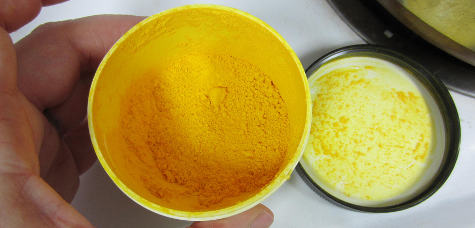 “This makes cleaning up urban soils across cities one of the harder sources to mitigate,” he said.
“This makes cleaning up urban soils across cities one of the harder sources to mitigate,” he said.
While all PCBs can escape from soils, PCB-11 is one of the most volatile forms of the chemical, the authors warn, saying it may be emitted to air within hours to days of applying the paint.
Sixty percent of 85 women from East Chicago, Indiana, and Columbus Junction, Iowa, had traces of PCB-11 in their blood, according to a 2013 study from Hornbuckle and colleagues.
Steve Sides—vice president of the American Coatings Association, which represents paint manufacturers—said in an email that they are aware of studies finding low levels of contaminants in paint materials but had “nothing to add” in regards to the Chicago study.
PCBs as a byproduct of pigment manufacturing remain exempt from the Toxic Control Substances Act, the federal law regulating chemicals because the amounts aren’t large enough to be significant.
The U.S. Environmental Protection Agency, which enforces chemical regulation, has requested that federal scientists from the National Toxicology Program investigate PCB-11’s potential to harm people, said EPA spokeswoman Cathy Milbourn in an email.
In addition, there are limits on the concentrations of such “inadvertently generated PCBs”, Milbourn said.
“Specifically an annual average of no more than 25 [parts per million] and a 50 [parts per million] maximum” in products manufactured or imported into the United States, she said.
Hornbuckle and Spak argue that, while the concentrations of PCBs in paint may be small, the EPA should consider that the chemicals are easily released into air.
 This work is licensed under a Creative Commons Attribution-ShareAlike 4.0 International License.
This work is licensed under a Creative Commons Attribution-ShareAlike 4.0 International License.
Greensofas.com Seems Too Good to Be True
Question from Sarjan
Hi Debra,
Hello, Does anyone have experience with greensofas.com. The products and prices almosty look too good to be true. I am looking for a sofa made of natural materials and low to no toxicity. Any feedback appreciated as it is a big step to order a product from so far away.
Debra’s Answer
Don’t bother ordering. Their phone number is disconnected. I think someone failed to take this website down.
Effective, Time-Tested, Inexpensive Treatments for Life-Threatening Diseases
 Today my guest is Julia Schopick, best-selling author of the book, HONEST MEDICINE: Effective, Time-Tested, Inexpensive Treatments for Life-Threatening Diseases. Through her writings and her blog, Julia’s
Today my guest is Julia Schopick, best-selling author of the book, HONEST MEDICINE: Effective, Time-Tested, Inexpensive Treatments for Life-Threatening Diseases. Through her writings and her blog, Julia’s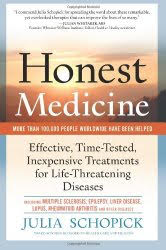 goal is to empower patients to make the best health choices for themselves and their loved ones by teaching them about little-known but promising treatments their doctors may not know about. Julia’s writings on health and medical topics have been featured in American Medical News (AMA), Alternative & Complementary Therapies, the British Medical Journaland the Chicago Sun-Times. She also coaches patients in how to convince their doctors to prescribe a treatment they (i.e., the doctors) don’t know about. www.HonestMedicine.com.
goal is to empower patients to make the best health choices for themselves and their loved ones by teaching them about little-known but promising treatments their doctors may not know about. Julia’s writings on health and medical topics have been featured in American Medical News (AMA), Alternative & Complementary Therapies, the British Medical Journaland the Chicago Sun-Times. She also coaches patients in how to convince their doctors to prescribe a treatment they (i.e., the doctors) don’t know about. www.HonestMedicine.com.
Julia reminded me that about ten years ago SHE had interviewed ME. Listen to our interview at The Keeper: Interview with author/advocate Debra Lynn Dadd
TOXIC FREE TALK RADIO
Effective, Time-tested, Inexpensive Treatments for Life-threatening Diseases
Host: Debra Lynn Dadd
Guest: Julia Schopick
Date of Broadcast: October 22, 2015
DEBRA: Hi, I’m Debra Lynn Dadd, and this is Toxic Free Talk Radio, where we talk about how to thrive in a toxic world, and live toxic free.
It’s Tuesday, October 22, 2015, and I’m here in beautiful, sunny Clearwater, Florida.
We’re having a little technology thing going on today. The power company, my local power company sent out a crew of guys to take the tree branches off the wires. In the process of working on trimming my trees, they also trimmed my cable line. So I have no internet and no phone, and no television until the cable guys come.
So I’m doing this by cell phone today. Cell phone and iPad. iPhone and iPad. And it’s a little different for me because usually I have all the things available in my computer.
The show must go on.
Anyway, my guest today is – [inaudible 00:01:58] to that and now, I have to turn on my iPad because it turned itself off.
My guest today is Julia Schopick. She’s a bestselling author of the book, “Honest Medicine: Effective Time-Honored, Inexpensive
Treatments for Life-Threatening Diseases.” Through her writings and her blog, Julia’s goal is to empower patients to make the best health choices for themselves and their loved ones by teaching them about little known, but promising treatments that doctors may not know about.
And I would just toss in and say that in my opinion, one of the little known treatments that doctors don’t know about is toxic chemicals that patients are being exposed to, and rarely do doctors recommend that their patients find those toxic chemicals and eliminate them as a first step to being well.
I’ll also tell you that Julia reminded me that some years ago, I think it was about 10 years ago, Julia actually interviewed me. I was the guest and she was the host. And we had a lovely interview. And now, Julia is here with me.
Hi, Julia.
JULIA SCHOPICK: Hi, Debra. It’s so good to be with you today. I’m so glad to be here.
DEBRA: Thank you. I’m glad that you’re here too because I do remember that we had a wonderful interview. And you’re just an intelligent person to talk to.
JULIA SCHOPICK: That’s great. I really appreciate that. And I hope I’m as good a guest as you were.
DEBRA: I’m sure you will be.
So the first question that I always as people is how they got interested in doing this. And I know that you’ve been in public relations for 25 years. So what made you decide to become a patient advocate?
JULIA SCHOPICK: Well, it was, kind of, thrust upon me, Debra. A teeny bit of background is that my dad was a doctor, a general practitioner. And he actually warned me to stay away from the medical profession.
He did not like his fellow doctors, Debra, I have to tell you.
But then in 1990, when my husband was 40 years old, he was diagnosed with a cancerous brain tumor.
DEBRA: That’s so young.
JULIA SCHOPICK: I know. He was very, very young. And speaking of toxic chemicals – you know what? I’ll tell it right now. I believed that his brain tumor was caused exactly the way you were talking about.
Are you ready for this?
He grew up in Flint, Michigan.
Now, tell me.
DEBRA: Oh, my god.
JULIA SCHOPICK: I know. I know. But it gets better. It gets worse. Sometimes you use the word better when you mean worse, right? It gets worse. His parents were beauticians, and he lived in Flint, Michigan, the home of the automobile, above a beauty shop.
I know.
I’m quite sure I’m right that he developed a huge brain tumor. You said, it’s such a young age. And he was very, very young.
We had just been married for five years, as a matter of fact.
I know.
And you would have thought with my background, with a father who told me stay away from the medical system – well, I wouldn’t run away. I mean, it’s tumor with the size of an orange. So I couldn’t just run away.
But you would have thought that I would have started advocating, and I would have started researching right away.
It didn’t happen because what happens, Debra, when you are confronted – and this is one of the reasons why I’m out there even after my husband has gone, trying to help other people. What happens when you are confronted, when one is confronted with something like a cancerous brain tumor? I just froze. And so did my husband.
And we did – I’m embarrassed to say, we did just – well, I’m glad we did the surgery, for goodness’ sakes. And I questioned whether the chemo was a good idea, but we did do the chemo and the radiation. But I didn’t do one thing more for a few years. I was literally in the last step, literally terrified.
And then at around the third year mark, I began to get it because my husband, who was actually given only 18 months to three years to live, and he was outliving that already, he started to develop every side effect, every complication from the treatments. Not from the – yes. From the treatments, especially the radiation.
I mean, he got – are you ready for this? At 41, he had a radiation-caused stroke because radiation to the brain will do that. He also developed hydrocephalus, which is water on the brain. And they had to operate again and put a shunt in.
It’s just was a disaster. And of course, it was many, many [inaudible 00:06:59]. It was a disaster.
And at that point, I began to get it that I’d better start researching. He was the love of my life, and if I wanted to keep him around – he was already doing a pretty good job of staying around anyway without my help. But I really decided to step into gear.
And I did.
And I found a nutritionist whose area was cancer and brain tumors in particular. That’s an interesting story in itself.
We cleaned up his diet, gave him lots of supplements that she picked out definitely for him. She tailor-made it. And he started to thrive.
DEBRA: The thing is, that I’ve learned after all of these years is that medicine and surgery is not really designed to create health. That what they’re designed to do is kill the illness.
JULIA SCHOPICK: That’s right.
DEBRA: Unfortunately, a lot of patients get killed in the process of killing the illness.
But you don’t get any kind of support on anything from a doctor that supports your health.
And so even if you are going to have radiation and chemo and all of that it’s very, very clear to me that at the same time, you should be doing all kinds of other things that are supporting your immune system or supporting your body against that toxic thing, that toxic treatment.
And my personal view is that if we would all live the right way, if we would do the treatment, do the natural treatment before we get sick – does that make sense?
JULIA SCHOPICK: It does, but I have one caveat. Go on.
DEBRA: [inaudible 00:08:53] finish my sentence.
What I formed was as I started looking at all these different illnesses after I was so ill from toxic chemical exposure, I saw that what I should be doing is living in this non-toxic way. I should be eating whole foods instead of processed foods. I should be living without toxic chemicals.
I should be drinking clean water, et cetera, et cetera.
But then as I started looking at the natural treatment for all different illnesses, it was all pretty much – everybody was saying, “Do exactly that.” And I came to this conclusion that if we would all live in a healthful way, we’d have a lot less illness to begin with.
JULIA SCHOPICK: Unbelievably correct.
DEBRA: Thank you.
JULIA SCHOPICK: I 100% agree with you. The reason I was going to butt in before was my poor husband couldn’t have avoided Flint, Michigan.
DEBRA: I know. I know. I grew up in California, in the San Francisco Bay Area. I was born in Oakland. I lived in Oakland for a long time, and Oakland is a pretty polluted place. And when my health finally fell apart, I was living in a condominium on the ground floor where they was a stop sign out the window and [inaudible 00:10:13] all day long.
The cars would come and stop right in front of my air supply.
Then they’d start up again and [inaudible 00:10:21].
I mean that’s how much I didn’t know. And I had just remodeled my condo – we need to go to break. But off the side, we had just remodeled my condo, so we were painting, and I had plastic shelf paper, and we [inaudible 00:10:39] all that stuff. And then I fell apart.
But when we come back, we’ll talk more and hear what Julia has to say about what we should be doing.
You’re listening to Toxic Free Talk Radio. I’m Debra Lynn Dadd, and my guest today is Julia Schopick, and I will tell you more about her except that my iPad has turned off. But I do know by heart that her website is HonestMedicine.com, so you can find out more about her there.
We’ll be right back.
DEBRA: You’re listening to Toxic Free Talk Radio. I’m Debra Lynn Dadd, and my guest today is Julia Schopick.
So Julia, tell us what happened to your husband? How long did he live?
JULIA SCHOPICK: It’s so interesting, Debra. He ended up living 15 years post-diagnosis. Now, remember I said that –
DEBRA: That’s great.
JULIA SCHOPICK: Yes, I know. We both believed that it had mostly to do – yes, the doctors did their part, but it had a lot to do with the supplements, with the clean food, the change. And he was feeling so great.
What got me, and I hate to sound negative, but the doctors were not at all interested in anything we were doing.
DEBRA: Of course.
JULIA SCHOPICK: This hurt me because brain tumor patients just don’t usually live that long especially if they have the kind of tumor that my Tim, my husband had. And wouldn’t you think that the doctors would be interested in things – they fully acknowledged that he was their star patient. I want to make that clear.
They weren’t denying that he was outliving his prognosis. They were like, “Great.”
But they were not all interested. As a matter of fact, one time, Tim tried to tell one of his doctors, his main doctor – the doctors said which meds are you on, and Tim told them. And Tim then said, “I’m on a lot of supplements and good food too.”
And you know what the doctor said?
“Next question.”
DEBRA: I just want to say this, in defense of doctors. First of all, not all doctors are the same. I know some wonderful doctors that have completely changed their minds about things, and their medical doctors.
When I first was diagnosed with multiple chemical sensitivities and was starting to heal my body from that onslaught of toxic chemicals, I went to a lovely doctor who was an MD, and he had completely given up his practice, his previous general practice, to only treat people who had chemical problems.
He was doing what he knew to do to help us, but it was, again, very doctor-ish. There are products called antigens, which you can go to a doctor and get, and they can immunize you against reacting to a toxic chemical.
But that doesn’t get the toxic chemical out of your life.
And so then I was talking to patients, and they were talking about how they were starting to remove toxic chemicals from their life, and I started doing that. And I told my doctor. And you know what he said? He said, “I’m going to send you to everybody’s house, each and every one of my patients, and have you analyze where their toxic chemical exposures are, and I want you to come back and tell me, so that I can know what they’re being exposed to.”
JULIA SCHOPICK: That is a wonderful doctor.
DEBRA: And that’s how I actually started doing what I do, was because that doctor asked me to go to his patients’ houses. And then I had to make up a list of products that they could use.
I was like, “What? Where am I going to find these? How am I going to figure this out?”
And that’s actually how I started. It was because of the doctor.
But most doctors are very entrenched in their paradigm. And so they say, “Well, I know what I know, and I’m going to do what I do.”
And that’s what they do.
JULIA SCHOPICK: I’m so glad to hear that, your story about the doctor who did that because that is so wonderful, so unusual, and in my book, in Honest Medicine, I do include stories, as you know, about doctors who are creative, who do look outside the box.
And although they are unusual, they must be heralded.
Just like you tell your doctor’s story, I tell these doctors’ stories because they are open, they are wonderful, and there are too few of them, and I’m hoping there are more and more of that.
DEBRA: I hope so too.
So before we get to the break in about three minutes, why don’t you tell us what made you decide to write your book? And then when we come back, let’s talk about the contents of your book.
JULIA SCHOPICK: Excellent. I think it was the next little incident. Not little. I shouldn’t minimize what happened.
Remember, I told you about the doctors not being interested. Well, in 2001 my husband, Tim, had a recurrence of the tumor, and that was the time when – because the skin had had trouble healing from the last surgery, and all the other results, I said, “This surgery is going to be problem.”
And I was right. It was a problem. His suture line would not heal.
I want to stress that usually the tumors come back before 10, 11 years. His didn’t because of the good care that we were doing.
In any case, the suture line would not heal, and the only thing the doctors know how to do was to do more surgeries, to try to get two pieces of skin that would heal. With each additional surgery, he got sicker and sicker and sicker. At the end of the eighth surgery, he was bed bound, he was incontinent, he was severely brain injured and nearly paralyzed.
All from the treatment. From the repeated surgeries.
And at this point, to a PR client – you mention that I’ve been doing for many years, through a PR client, I found out about a product called Silverlon. And Silverlon is pieces of material with silver ions impregnated, FDA-approved for all non-healing wounds.
So with my PR skills, I was able to get the doctor to agree to put it on. We put it on Tim’s head and he started to heal overnight.
And this is when the doctors, they came to me and they say said – one of them came to me and he said, “We don’t think it was what you found that healed your husband’s skin.”
And I was puzzled. I said, “What do you mean?”
And he said, “Well, we’ve been thinking. We think it was the vancomycin.”
And vancomycin, Debra, as you probably know, is an IV antibiotic. And Tim had been on the vancomycin for at least six weeks. So that’s what I said. I said, “But Doctor, he’s been on it for six weeks.”
And the doctor said, “Vancomycin is like that. It kicks in.”
I was stunned.
DEBRA: I know. I totally, totally understand. The things that you and I think are the right things to do make so much sense to me. And if I hadn’t changed what I was eating and the chemicals in my life, in my home, I don’t know that I would even be alive now.
My mother died of cancer when she was 51. And that is so young. And we didn’t have any of this information then. That was just right before
I started doing my work. I didn’t even know about any of these things. I was just starting to learn about it.
I was only 24. And she was just [inaudible 00:21:01].
It’s just incomprehensible to me. And I have a friend, she had cancer. When her [inaudible 00:21:12] cancer started, she was only like 30-something. She survived her cancer.
But we didn’t have any of that and this information.
We need to go to break. So we’ll be right back, and we’ll talk more with Julia Schopick. She is the author of Honest Medicine. And I don’t have the subtitle right here in front of me. But you can go to her website, HonestMedicine.com, and find out a whole lot more. And we’ll be right back.
DEBRA: You’re listening to Toxic Free Talk Radio. I’m Debra Lynn Dadd, and my guest today is Julia Schopick. She’s the author of Honest Medicine. And we’re talking about what she learned that she thought was so important that she wanted to write a book about it.
So Julia, in addition to the Silverlon that we’ve already talked about, there are three other things that you talked about in Honest Medicine. I wanted to pick out the one that is most important to me to talk about first, then we’ll talk about the other two.
This isn’t your order, I know.
JULIA SCHOPICK: No, this is great. I’m glad. Go on.
DEBRA: So the first one I want to talk about the ketogenic diet.
JULIA SCHOPICK: I knew it.
DEBRA: The reason that I want to talk about that first is because it’s something that anybody can do. All of our listeners can just go immediately on a ketogenic diet if they want to. And the other two are drugs, which is okay. I’ve nothing against drugs if they don’t have toxic side effects and they’re actually helping.
So tell us about the ketogenic diet and why you think it’s so important.
JULIA SCHOPICK: The ketogenic diet is one of my – I agree with you. It’s a very, very important treatment. The reason I think it’s so important is that children with epilepsy, the doctors put them on drugs, and not only one drug, several kids are on – many, many kids are on three, four or five drugs at one time.
This is just terrible.
The ketogenic diet, which is a very high fat, low carb, low protein diet, was the standard of care from the 1920s on at places like the Mayo Clinic, John Hopkins. And then with the advent of anti-seizure medications, I think it was 1938 that Dilantin was invented.
The pharmaceutical companies stepped in and started to do more and more anti-seizure medications.
And guess what fell out of favor? The diet.
And it was still being done.
DEBRA: I just want to say for a second that that was really care with everything. If you were to turn back the clock to 1900s, there were all these things that were natural, that people treated things at home. They made things at home.
And then it came along into the 40s and 50s, and World War II, and all this new technology. And all of those intelligent, natural things just went by the waste side in every area of life, and they were all replaced by drugs and plastics and all the things that are making us sick.
JULIA SCHOPICK: You got it. The ketogenic diet was no exception. I believe, and so many other people do too, that it would have died.
The diet would have died. It was still being done very sporadically at places like, as I said, Mayo and John Hopkins.
But if a little boy named Charlie Abrams had not started having intractable seizures, and if his father had not been Jim Abrams, and Jim Abrams was the Hollywood writer/director/producer of the movie, “Airplane” that is now considered a classic. Anyway, Jim, he did funny movies, as you can tell from Airplane.
And in 1994, something not so funny happened in the Abrams family. And that was that little Charlie, one year old, started to have what we call intractable seizures. That means when one seizure ends, the next one begins, the next ends, the next one begins, and on and on and on.
Little Charlie was having up to a hundred seizures a day. And Jim, he had money. He had prestige. He was able to go to the best of the best of the best. And they put him on more and more medications.
If you read in Honest Medicine, Jim’s introduction to his contribution, it quotes a doctor who says that this child, little Charlie, will be on more and more medications. That’s all we know that can help him, and perhaps, a brain surgery.
And Jim was frantic. He said, “We were crying all the time in our house because the seizure medications were not helping.”
That’s the first thing.
And so he went to the library. And he’s very cute, Debra. He says, “I didn’t go to the library the way people do today, when they go on the internet to find a solution.” He says, “My solution that I was trying to find is how is my family going to deal with a child who is not going to get better? And this is going to be our life.”
So that’s what he was really looking for. And what he found was something different. He found out about this diet, the ketogenic diet which had been around, as I said before, from the 20s, and he found studies, small studies from the 20s, the 30s, the 40s, the 50s, all the way through the 90s.
He copied them. He took them to his doctor, to Charlie’s doctor, and he said, “Let’s try this.” The doctor said, “No, it won’t work. More drugs will.”
And Jim said – he said, “To my everlasting shame,” these are his words, “I listened.” He said, “And we let the doctors do a surgery on my baby’s brain.”
And right after the surgery, what do you think happened? He started having seizures again. And finally, Jim got it. He said, “That’s it. I’m taking little Charlie to John Hopkins.”
They took him to John Hopkins, he and his wife, put him on the diet. 48 hours later, he stopped having seizures. They never returned.
And Jim was so excited, and then he got pissed. He said, “Why did it take me so long to find the diet? And by the way, why did the doctors tried to discourage me? And by the way, why are people not being told about this diet?”
So remember I told you he was a Hollywood guy? One of his friends, Meryl Streep, did the promotional video to explain about the diet. Jim set up a website, CharlieFoundation.org. I’m not sure if he set up the website right away. But he did have this instructional video.
This is the wonderful thing, during the making of the instructional video, there was somebody on the staff of making the video who was also from Dateline MBC. His real job was Dateline MBC. He was freelancing to make Jim’s thing.
And he called his boss. He goes, “This is a great story about this child, this diet, this Hollywood producer.”
So it became two segments of Dateline MBC. And at that point, the diet took off because people started writing in, they started calling. And Jim had to take one of his rooms in his house to make it just for the letters he was getting.
And people are like, “I want to find out about this diet. My little baby has been seizing. My little child has been seizing.”
Long story short, he got Meryl Streep to do a movie – for TV, “First Do No Harm” and the diet really took off. And Jim, with his Charlie Foundation, hired a dietician whose job it is to go around the world, training hospitals about the diet.
Because you know what, Debra?
DEBRA: That’s so wonderful.
JULIA SCHOPICK: When there’s a child – yes, he’s one of my heroes, can you tell? Because one of the things – anyone who wants to use the ketogenic diet for exercise or for losing weight, they can do it on their own. But when you have such a serious condition as seizures, it does have to be started in the hospital.
DEBRA: I agree with that. Yes. I have a few things I want to say about this ketogenic diet, but I’ll say them after we go to break.
You’re listening to Toxic Free Talk Radio. I’m Debra Lynn Dadd, and my guest today is Julia Schopick, author of Honest Medicine. She also has much more information on her website, HonestMedicine.com. And we’ll be right back.
DEBRA: You’re listening to Toxic Free Talk Radio. I’m Debra Lynn Dadd, and my guest today is Julia Schopick, author of Honest Medicine. And she’s at HonestMedicine.com.
So Julia, here’s what I would like to say about the ketogenic diet. First of all, I found out about it from a very good friend of mine who is surviving cancer on this ketogenic diet. She said it made a difference in the world for her.
Second of all, the thing that I think most people don’t know about this diet is that cancer feeds on sugar. And so if you’re eating a high carb diet, you’re just feeding cancer. That’s it. It’s that plain and simple.
Another thing is that when you eat high fat, your body operates in a different way, and so your body actually loses weight on a high fat diet.
In fact, that’s what you need.
And so this diet can help so many people that it can treat people who have illnesses like seizures and cancer. But people who don’t have those things yet, and they will if they continue to eat processed food, you can be making this kind of change in advance so that you’re not feeding your body in a way that cancer loves.
JULIA SCHOPICK: So are you reading my mind?
DEBRA: No.
JULIA SCHOPICK: The reason I’m saying that is – oh, my goodness.
DEBRA: This is one of those things – this is the whole point of your book, is that low carb – go ahead. I’ll let you say it.
JULIA SCHOPICK: I’m laughing because as I was hearing you say it, I had many windows open. I’m sorry that your computer is down, Debra. But I have many, many windows open. And one of them, which I’m working on writing something, perhaps, it’s an addendum to my – not addendum.
Long story short, the ketogenic diet is now being studied for many, many, many reasons. One of them is Dr. Thomas Seyfried. That’s what you’re talking about. He did the research on the ketogenic diet for cancer.
And of course, it makes sense. Cancer cells love sugar.
By the way, I believe that’s one of the reasons my Tim lived so long. I took sugar out of his diet, much to his chagrin, I must say. And when the doctors said he should drink Ensure. I said, “No way is he drinking Ensure.”
You know what I did in the hospital? I dumped it.
DEBRA: Good on you. They should just take sugar out of the hospital.
JULIA SCHOPICK: They’re never going to. They think of sugar as the main dietary – anyway that’s what they love.
Now, the ketogenic diet is being studied – are you ready for this? And I can send the link to anyone who wants it, if they write to me at Julia@HonestMedicine. It’s being studied for Parkinson’s, for cancer, with very good results, by the way, for brain injury, for diabetes, for all sorts of things.
It makes great sense because here is a diet that –
DEBRA: It does.
JULIA SCHOPICK: Yes, it does. There is something, by the way, the Deanna Protocol is using the ketogenic diet plus another nutritional program for ALS. And as you know, ALS, Lou Gehrig’s disease, is one of the ones that nobody has a treatment for, just nobody.
And Parkinson’s is pretty rough itself.
This ketogenic diet, I am in the process of figuring out how I’m going to use this information to get it out there. It can be used for lots of different things, and it’s being studied with great results.
So that’s why I said did you read my mind?
And by the way, I do know a –
DEBRA: We’re totally on the same page here.
JULIA SCHOPICK: And by the way, one of the people that Jim Abrams referred me to is a woman named Miriam Kalamian. Miriam is – are you ready for this, a consultant to people who want touse the ketogenic diet as part of their cancer protocol.
So this word is getting out there.
DEBRA: The word is getting out there, yes.
So our hour is almost up. [inaudible 00:43:20]
JULIA SCHOPICK: Where did it go?
DEBRA: I just want to make sure that we end with your basic message of your book, which is that there are these inexpensive, workable, much more effective things that you can do. Your doctor isn’t – I’ll give the subtitle again for Honest Medicine. It’s Effective, Time-Tested,
Inexpensive Treatment for the Life-Threatening Diseases.
And you talk about these different things that we don’t have time to talk about. But the ketogenic diet is just an example of one thing that people can do instead of getting medical care. I’m not saying that people shouldn’t go to the doctor.
But the thing is that we should also be looking at these other things as well, so that we can make an informed decision, and do things that support health. And by supporting health – I mean, this is what I’ve been doing for 30 years, supporting health.
And so I’m healthy.
I don’t know if you know, but I turned 60 this year, in June. And I’m healthier than I’ve ever been in my life.
JULIA SCHOPICK: Yes, because you’re living healthy.
DEBRA: That’s exactly right, and my body just gets stronger and stronger and stronger, and more healthy, and more energy, and sleeping better, and all of these things.
It takes time. It’s not like you’re just going to take a pill and get well immediately. The things that you do on an everyday basis, eating those good foods, the [inaudible 00:45:02] as well as the nutrition, and moving your body, so that your body can detox and build your muscle.
All these things that if you just do the simplest of things, then you might not even need a doctor.
JULIA SCHOPICK: That’s the aim.
DEBRA: That’s the aim.
So Julia, talk about your book more and the basic concept behind this.
JULIA SCHOPICK: The basic concept is that, as you sad, there are treatments out there. But there is a little bit of a negative thing. When you come to your doctor about these treatments, your doctor may very well [inaudible 00:45:45] them.
Your doctor may very well say, “No, the drug way is better.”
And you have to be very, very strong to know when you are interested in trying another treatment.
For instance, one that we don’t have time to discuss, it’s called low dose Naltrexone. Although it was developed from a drug and, indeed, is a low, low, low dose of a drug, it acts more like a supplement by raising endorphin levels. It makes the immune system act correctly.
It works for many, many autoimmune diseases. And your doctor will probably, unfortunately, only not have heard of it, but when you bring information, may not be open to it, which is why I’m doing consulting now, to try to teach people how to influence their doctors, how to talk with their doctors.
You obviously have –
DEBRA: That’s a really, really important thing. That’s really important to know because we’re indoctrinated in our society that what you do when you’re sick is you go to the doctor, and the doctor knows everything, and he’ll give you a pill, and you’ll go, “Wow.”
That’s what I was raised with. That’s what I was raised with until I started – and that’s what I did until I started finding out there’s a whole other world out here that isn’t the medical world, and it works a whole lot better than what I’ve seen.
No doctor would have ever made me well from toxic chemical exposure.
JULIA SCHOPICK: I think it’s amazing what you’ve done.
DEBRA: Thank you.
JULIA SCHOPICK: You are absolutely right. I’m trying to get patients – and actually, I’m having pretty good results. It’s not only me. It’s people out there like us, like you and like me, who are making patients realize that they have the power.
It may not feel that way when you’re confronted with your doctor. But you do have the power to suggest other treatments, if the doctor says, “No, no, no” to try to convince the doctor, and if not, to find a doctor who will do it.
DEBRA: And keep looking. I’ve been to doctors who dismissed me as a patient. I had a doctor yell at me once and tell me I was never going to get well because I would not follow his instructions.
JULIA SCHOPICK: Isn’t that awful?
DEBRA: Yes, he completely invalidated me.
JULIA SCHOPICK: You know how many people just listen to the doctor. You were a strong people.
DEBRA: I know. My father lying in bed in the hospital dying would not drink the fresh juice that I brought him. He said, “I’m going to do what my doctor tells me.”
JULIA SCHOPICK: That must have broken your heart.
DEBRA: It did. It did. He died very soon after. And it maybe that my juice would not have saved him, but it was that he wasn’t even open to even listening or trying. That the doctor knows this.
I’m not here to say that nobody should listen to their doctor, but it really is that patients need to really take their health in their own hands, and if the doctor is not helping you – I just have been to a doctor that I totally adore him as a person, but it got to a point where he wasn’t helping me.
And I said to myself, “I need to go to somebody who is going to help me.”
And it’s not that he didn’t want to help me, but what he has to offer me wasn’t helping.
JULIA SCHOPICK: So you have the presence of mind to know.
DEBRA: I did. I did have the presence of mind to know. I considered that I’m the one in charge of my health, and that any health care practitioner I go to, medical doctor or otherwise, they’re my team, but I’m running them. I’m not there to do what they tell me to do. I’m there to evaluate their advice and decide if that’s right for me.
And we need to go.
Thank you so much, Julia.
This is Toxic Free Talk Radio. I’m Debra Lynn Dadd. You’ve been listening to my interview with Julia Schopick. Her website is Honest Medicine. Go to ToxicFreeTalkRadio.com, and listen to the other shows as well.
Be well.
JULIA SCHOPICK: Thank you.
DEBRA: Thank you.
Tiny House — Toxic Free
 My guest today is Corinne Segura, Writer of the blog My Chemical Free House, and consultant on chemical-free building, renovating and decorating. After developing MCS and mould illness, she built a home in which to heal—a non-toxic tiny house on wheels. The goal was to build a mould-resistant home as close to VOC-free as possible. She continues to stay up to date on new green materials and best practices for building mould-free in order to help others create the healthiest homes possible. She has a background in research and community development and holds an HBA from the University of Toronto. She’s got lots of information on how she build her toxic free home at www.mychemicalfreehouse.net
My guest today is Corinne Segura, Writer of the blog My Chemical Free House, and consultant on chemical-free building, renovating and decorating. After developing MCS and mould illness, she built a home in which to heal—a non-toxic tiny house on wheels. The goal was to build a mould-resistant home as close to VOC-free as possible. She continues to stay up to date on new green materials and best practices for building mould-free in order to help others create the healthiest homes possible. She has a background in research and community development and holds an HBA from the University of Toronto. She’s got lots of information on how she build her toxic free home at www.mychemicalfreehouse.net
TOXIC FREE TALK RADIO
Tiny House – Toxic Free
Host: Debra Lynn Dadd
Guest: Corinne Segura
Date of Broadcast: October 20, 2015
DEBRA: Hi, I’m Debra Lynn Dadd and this is Toxic Free Talk Radio where we talk about how to thrive in a toxic world and live toxic-free.
It’s Tuesday, October 20th and today I’m here in Clearwater, Florida. And this weekend, we actually had wind. We had cold wind here in Florida. And I just heard on the news as we were coming in that the first snowfall fell. I’m excited because I love this time of year and I love that winter is coming and we’re having Thanksgiving and Christmas and all those nice things to do.
Anyway, what we’re going to be talking about today is – my guest is a blogger who has built a tiny house, a toxic free tiny house and she has planned it all out from the beginning. It’s as nontoxic as it can be. And I am very interested in hearing about this. I’m intrigued by the whole subject of tiny houses.
I actually live in what some people might consider to be a big house, 1600 square feet in a suburban neighborhood with a little bit of land around it. It feels like a big house to me and I have been looking at these tiny houses and wondering if I could live in such a small space.
Anyway, we’re going to hear all about her tiny house and we’re going to hear about how she made her tiny house toxic free.
Her name is Corinne Segura and her blog is called My Chemical Free House. Hi Corinne.
CORINNE SEGURA: Hi. How are you?
DEBRA: I’m good. How are you?
CORINNE SEGURA: I’m good.
DEBRA: So tell us how you came to be interested in toxics and things being toxic free. And then I want to hear how that turned into a tiny house.
CORINNE SEGURA: Well, I developed multiple chemical sensitivities and I was living in Toronto and I also had chronic fatigue syndrome, which I still have. So it was a little bit of a necessity for me to try and go as nontoxic as possible. That was pretty hard in a condo in a big city.
DEBRA: Yes.
CORINNE SEGURA: And so I decided I would live across the country and to a milder climate in BC. I’m on the West Coast. I thought I didn’t have enough money to buy land or to build a regular sized house. So it was a little bit of necessity and a little bit of I do love tiny houses.
DEBRA: What’s it like to live in a tiny house?
CORINNE SEGURA: I don’t mind it at all. To me, it feels quite spacious and a lot of people say that when they walk in because of the design. You could see on the blog it’s got a slanted shed roof, so it’s got a lot of space vertically. I don’t keep it cluttered. I keep it really nice and neat. So you can entertain a few people. To me, it’s normal.
DEBRA: You must not have very much stuff.
CORINNE SEGURA: I don’t have very much stuff. That’s one big adjustment that might not work for most people because I have everything digitized in terms of photos and paperwork and I don’t keep many belongings, I don’t keep many clothes and that’s my lifestyle.
That works well when you have MCS. I had very severe MCS, multiple chemical sensitivities when I moved in and it was a lot easier to keep a minimalist living environment.
DEBRA: How has living in this environment helped you recover?
CORINNE SEGURA: Almost immediately, I started sleeping better and then it’s been a slow progress and my sensitivities are way down.
Now, I can go to public gatherings and most normal places I can go to, maybe not a hair salon. It has really opened up in terms of I feel a lot more freedom of movement.
So I also have to say it was the house, but it was also detox and maybe we will talk about that more because I can’t just say it was only the house. I also did a lot of detox that got all those toxins out of me.
DEBRA: Let’s talk about the detox right now before we talk about the house. Tell us what you did.
CORINNE SEGURA: Yeah. I did cholestyramine, which is a pretty very strong binder and that’s prescription. And I did some lighter binders. I won’t go into all of them, but the main ones are cholestyramine, ALA and glutathione. Glutathione and ALA, you can purchase from health food stores online.
Those have just made a huge, huge, huge difference. The brain fog was gone and I just started slowly getting back to the regular world where you can’t avoid everything.
DEBRA: Right. I’ve had myself a similar story to yours where I had multiple chemical sensitivities many, many years ago back in 1978 I think was the year that it started. And I figured out that I needed to remove the chemicals from my home and that would work too. I thought the chemicals are making me sick. Why not just get rid of them and my body should heal? And that happened.
So I was living in a condo at the time and I tried to make that okay. We didn’t know about tiny houses then, but eventually I went and got a little cottage in the woods. And I made it totally nontoxic and I started really getting better to a point where I could then go out. I even traveled to Europe and didn’t have any problems and things like that. So it really does make a difference what your environment is even if you only look at us as a study of two.
But I think that there are many other people who had similar experience. And then it wasn’t until many, many years later that I started detoxing. And though I used different products than you used, I had the same experience of things that you can detox your home all you want, but if the chemicals are still on your body, they’re still in your body and they’re still making you sick.
CORINNE SEGURA: Yeah. They do accumulate in your body. They may not be coming out in the way that most people’s body would eliminate toxins.
DEBRA: Do you think that people who have multiple chemical sensitivities or other illnesses that come from chemical exposure, their detox systems might not be working so well?
CORINNE SEGURA: Yeah, it seems that way. And I’ve also seen a bunch of people that have tried detox in a not great environment and it hasn’t worked really or they’ve had bad reactions. So it seems like the key, from the people I have seen is that you have to do both, you have to try cleaning up your house as much as possible and then hopefully try whatever kinds of binders or antioxidants work for you or saunas and all these things.
DEBRA: That’s been my experience too. You have to do them both because if you’re trying to detox and you’re still putting toxic chemicals into your body from your environment it’s like trying to empty the bathtub while you’re putting water in it.
They really go hand in hand. I’ve seen it in my own life and I think you’ve seen it in your and I think other people have seen that when they do those two things, they get spectacular results.
CORINNE SEGURA: Yeah.
DEBRA: Yeah, it really makes a difference. It really makes a difference. Let me tell my listeners that on my website, ToxicFreeTalkRadio.com, I’ve posted Corinne’s video of her tiny house. It’s an 18 minute video and you can just go there. It will be on ToxicFreeTalkRadio.com this week.
If you are listening in the future – here I am talking to people in the future – if you’re listening to the archive show in the future, it will be on that page. You’ve probably already seen it because you’ve gotten to the show from the page where the video is. And it’s about 18 minutes. It really shows everything about her house, all the different things in her tiny house and you can really get an idea of what that’s like. And there’s also a whole lot of information on her website at MyChemicalFreeHouse.net.
We’re coming up on the break now. But when we come back, let’s just start going through your house and you can tell us all about the different kinds of materials and how did you figure out what to use and questions like that. I recently started a new blog on my website called Shop With Debra because people wanted to know how I figured out what to buy. So I think we want to know how to too figure out what to use.
We’ll be right back. You’re listening to Toxic Free Talk Radio. I’m Debra Lynn Dadd and my guest today is Corinne Segura. She’s the writer of the blog My Chemical Free House, which is at MyChemicalFreeHouse.net. And she writes about her tiny house and how she made it toxic free. We’ll be right back.
DEBRA: You’re listening to Toxic Free Talk Radio. I’m Debra Lynn Dadd and my guest today is Corinne Segura. She’s the writer of the blog My Chemical Free House, which is at MyChemicalFreeHouse.net. She lives in her tiny house that she’s made toxic free.
So Corinne, where did you start? Once you’ve decided to do a tiny house and make it toxic free, what was the first thing you did?
CORINNE SEGURA: It was a lot of research in a very short amount of time because it’s a pretty quick build for a tiny house for about four months. And so I wanted to find everything VOC free if I could.
So I researched the materials. I looked at their safety data sheet. And as you know, safety data sheet does not even give you the information that it really should live VOCs. And some products have not even been properly tested. There are not enough regulations. But I did my best I could with the research and talking to other people that were sensitive and which materials worked for them.
And then I did some testing. I tested samples of materials I was really sensitive at the time. So I had a pretty good sense of whether that would be okay although it’s very hard when you’re sampling a four inch piece of drywall. You’re actually going to have it surrounding you.
So I think you have to use a few different methods. You have to use those three different methods in order to really be sure unless you sleep in a room, unless you bring so much in it and sleep in a room with it first. But that could be very difficult to do.
DEBRA: Yeah. Yeah. So what kind of places did you look to find out this information?
CORINNE SEGURA: I tried to look for studies that did testing. And if there weren’t any, I looked at the product’s website and see if they made claims that it’s VOC free and nontoxic. Sometimes you just have to send a lot of e-mails and ask them. “Have you done VOC testing?
Are you able to say that this is a nontoxic product?” And a lot of times, most of the times, you get an answer. So that’s another way too. It does take a lot of time to do this, to do all the research for every single material.
DEBRA: It does. I know. I’ve done it.
CORINNE SEGURA: Yeah.
DEBRA: I continue to do it and it takes a lot of time. And having done it over a 30-year period, I can see that now, there’s a lot more awareness and there are new products coming out. There are new things available today that weren’t available many years ago.
What year did you build your house? A year and a half ago?
CORINNE SEGURA: Two years ago, yeah.
DEBRA: Two years ago, yeah. I think that there are even some products available today that weren’t available then. So I see that people are starting to understand that there’s a growing market of interest for nontoxic products. So they do test the products, they know what the VOCs are, they know what their lead levels are and things like that so that we can then have that information to make our choices then.
So I see that we’re moving in the right direction. It’s not nontoxic world yet, but we’re moving in the right direction.
CORINNE SEGURA: And one more research is I heavily relied on the book, Prescriptions for a Healthy Home. And I know you have a good book too. So this can be really good resource because that person has already done all the e-mails and the interviews and you can quickly look for what might be the best product.
DEBRA: Yes. Yes, Prescriptions for a Healthy Home is a very good book. My books are not particularly about building. Mine are more about what goes on in the house, but I do have some information about building and I’ve done a lot of remodeling myself and consulted with people on doing their remodels with their buildings.
So let’s talk about some of the specific products that you have in your house. Where shall we start? How about the walls? The walls, let’s start with the walls.
CORINNE SEGURA: Yes.
DEBRA: How did you build your walls?
CORINNE SEGURA: The walls are magnesium oxide board, which is still going through some growing pains because it did crack on me. I haven’t quite figured out what people are doing to stop it from cracking, but it is a very nontoxic cement board instead of the gypsum board. Toxin-wise, it’s been really good.
I used wood framing. The metal framing is probably a lot better of an idea for a tiny house because it’s going to really hold up the mold over the long run and it’s going to be easier and it’s going to last longer in terms of the movement of the house when you relocate.
DEBRA: Oh, right.
CORINNE SEGURA: And what else did I use? I used a lot of wood, wood flooring and wood ceiling. I use a low odor wood just to be safe because I was so sensitive at the time. I thought, “What if I move in and cedars or pine is too much for me?”
DEBRA: So what wood did you use?
CORINNE SEGURA: I used poplar and maple is also a great one because it’s a hard wood.
DEBRA: Yeah, that’s something that people need to watch out for. How strong is the wood odor? A lot of people who are sensitive react to those strong odors even to Christmas tree and some things like that.
CORINNE SEGURA: Yeah.
DEBRA: So there are many different kinds of woods and they have all these different characteristics. So wood is not just wood. That was good for people to know that. Yeah.
CORINNE SEGURA: Yeah. Now that I have recovered quite a bit, I’m not sensitive to it, but when you’re moving into a new house, you want to do everything you can.
DEBRA: Yes. So you have that opportunity to do that.
CORINNE SEGURA: Yeah.
DEBRA: So then, what about your floors?
CORINNE SEGURA: Floors are wood. I used natural pigment stain from [Mill House?] Company and then I used hemp oil on all the wood as a finish, which is worth is.
DEBRA: Does it work well?
CORINNE SEGURA: Yeah, the hemp oil works well. It’s not as water-proof as the others. Now that I’m continuing my research, I am finding that there are some zero VOC wood stains that would give you a little more water-repellency. But the hemp oil is working well for me.
DEBRA: That’s good. I see you have some cabinets.
CORINNE SEGURA: Yeah. I use solid wood cabinets, which is not always recommended in a kitchen because of the moisture and they might work with time. But so far two years, they work. There are not a lot of options for cabinet unless you go with metal cabinets if you want to be completely 100% safe on cabinets because a lot of them use the particle boards.
DEBRA: Right. I lived in two little [inaudible 00:21:00] in the woods and in my second [home?], it came with metal cabinet, just like out of the [series?] catalog or something. And they are pretty old metal cabinets. The thing about metal cabinets is that they rust. So if there’s any kind of moisture, you get rusted metal cabinets.
I took them out and put in custom-built wood cabinet, which is a whole other story. But it was a success. It was a success.
We need to go to break. You’re listening to Toxic Free Talk Radio. I’m Debra Lynn Dadd and my guest today is Corinne Segura. She writes the blog. My Chemical Free House, which is MyChemicalFreeHouse.net. And she lives in a tiny house that’s toxic free and we will find out more about it when we come back.
DEBRA: You’re listening to Toxic Free Talk Radio. I’m Debra Lynn Dadd and my guest today is Corinne Segura. She writes the blog, My Chemical Free House at MyChemicalFreeHouse.net. And we’re talking today about her tiny house that she built totally toxic free.
Okay, let’s see what else. We’ve talked about your cabinets. Did you have those custom made?
CORINNE SEGURA: They were, yeah.
DEBRA: Yeah, me too. I have never walked into a store and actually found a cabinet. I think there are some that you can order online, but I found that I had just in my little tiny local community where I live, there was a very nice cabinet maker and he was wanting to do exactly what I wanted. And the total cost came out less than if I had bought the same amount of cabinets at Home Depot. But people think that custom cabinets cost a lot, but they don’t necessarily.
CORINNE SEGURA: And in a tiny house, you really have to do almost everything custom because the size are not going to fit, but I did it for reasons of making it nontoxic as well. I know there are some companies that have certified low VOC cabinets, but those are very expensive and they are still not perfect. My goal was to see whether I could do it zero VOC.
DEBRA: That’s always my goal too.
CORINNE SEGURA: Yeah.
DEBRA: I just really want to live as toxic free as possible. So to make it not quite toxic free, I always want to go and do the extra mile and see if I can do it and that’s why I build my own cabinets and things like that.
CORINNE SEGURA: Yeah.
DEBRA: So then let’s see. What else do we have? Paints on the wall?
CORINNE SEGURA: Insulation.
DEBRA: Oh, okay.
CORINNE SEGURA: I use the clay plaster on the walls because…
DEBRA: Yay! Me too.
CORINNE SEGURA: Yeah. It’s very calming and they say it gives off negative ions and it actually absorbs some toxins. But it just feels great. It makes it very comfortable.
DEBRA: I did my bathroom in clay plaster and I totally love it. It is tile and clay plaster. And as you said, it is very calming and it just feels very soft and it is a totally different feel. Even if you put no VOC paint on the wall, it’s still plastic.
CORINNE SEGURA: Yeah.
DEBRA: And to make the switch over to clay plaster is an entirely different feel in the room. And if I would have built a house right now today, I would use clay plaster or milk paint on the walls, depending on which or where I’m in.
Clay plaster has another advantage. If you put it in a bathroom where there’s a lot of moisture, it actually absorbs the moisture and then it puts it out into the room so that it can evaporate instead of having it sit on the wall.
CORINNE SEGURA: Yeah.
DEBRA: It is an amazing product. Good, good, I’m so happy you use that.
CORINNE SEGURA: Lime plaster is another good plaster too that’s very impervious to mold.
DEBRA: Yeah, yeah. So insulation, what did you use for insulation?
CORINNE SEGURA: For insulation, there are a lot of good options. There’s wool now, there’s hemp. There are so many if you want to go with something completely natural. I actually made the decision to go with XPS, which is rigid foam, which is not what they can call a natural product. But they do say that they don’t off-gas.
It does contain flame retardants, which is the downside, but I use a barrier. I use a polyethylene barrier to prevent the migration of the flame retardants. So that was a little bit of a compromise. Not really a compromise for me, but it’s a little bit a move-away from zero VOC because I wanted that really high insulation value and I wanted something very mold-proof.
And there is a rigid foam now, Johns Manville makes a flame retardant free rigid foam. So if you really want to avoid the flame retardant that is a good idea, there is one that doesn’t have them. And there are other good options like I said.
DEBRA: When I lived in California out in the woods, I remodeled my kitchen when I took out those metal cabinets. And the kitchen actually was added onto the structure. The building was built in 1930 I think and then this was added on. And they didn’t use any sheet rock.
What they used was just pieces of plywood.
And so we just decided that we would take out the cabinets, take all that plywood off the walls and just do everything right. And as we pulled it off, they used for insulation newspapers. And so we had all these old newspapers from the 1930s stacked in the walls. But what we put in was wool. We used wool.
CORINNE SEGURA: Yeah, wool is really great.
DEBRA: We just got wool batts and they weren’t even sold as insulation. We just got wool batts and stuffed it in the wall and we loved it.
We totally loved it.
CORINNE SEGURA: Yeah. Wool is a really great option. And they do now solid. It’s a lot easier to find those kinds of things now.
DEBRA: Yes, it is. It is. This was 20 years ago when I did that. So let’s see. What else?
CORINNE SEGURA: Well, there are so many little things. We can’t go through them all, but now there are so many great glues and there are so many even nontoxic paints if you don’t use plaster and adhesives and stains that are…
DEBRA: Right. So it’s really getting better.
CORINNE SEGURA: Yeah. I am not trying to rep any of these companies, but AFM does have a whole line of pretty much any glue that you might need. You need silicone. It’s pretty hard to do a bathroom without silicone. And now, there are really good options for all these little things that you might not realize you need until later in the build.
DEBRA: How do you heat your house?
CORINNE SEGURA: I use a heat pump. So it does AC and it does heat. It is electric. So I decided not to go with propane because you don’t want to be breathing in propane. Although some propane appliances, they do vent to the outside so you’re not going to be having the indoor fumes. You still have to deal with bringing in the canisters and refilling them. That can be really difficult when you have MCS.
DEBRA: Yeah.
CORINNE SEGURA: So I decided not to go with propane. But the benefit of propane is you can get a lot more off the grid or completely off the grid. But then you have a major difficulty with heating because the only off the grid heating is wood stoves or propane and those are both things you don’t want with the internal combustion.
DEBRA: So you’re not completely off the grid like living out in the middle of nowhere.
CORINNE SEGURA: No.
DEBRA: I’ve been just wandering around your video and your blog. I think you’re connected to somebody else’s, right?
CORINNE SEGURA: I’m connected to electricity and yeah, that’s what ties me to the grid, but my water and sewage is off the grid. So I have a composting toilet and a gray water recycling system, very basic.
DEBRA: Good. We need to go to break again, but when we come back, we’ll continue talking with Corinne Segura about her tiny house that’s toxic free. She writes her blog, My Chemical Free House and that’s at MyChemicalFreeHouse.net. We’ll be right back.
DEBRA: You’re listening to Toxic Free Talk Radio. I’m Debra Lynn Dadd and my guest today is Corinne Segura. She writes the blog, My Chemical Free House, which is at MyChemicalFreeHouse.net. We are talking about her tiny house that she built totally toxic free.
So I saw in the blog, Corinne that you have a bed that’s up against the window. Now, I know that windows are pretty toxic. Window frames have preservatives in them and things like that. So did you build a window totally from scratch?
CORINNE SEGURA: We used aluminum windows, which are I think the best option and then they are framed on the inside with the poplar to look like wooden windows and maybe that’s why you got the idea that maybe they are. So no, they’re not because wooden windows are treated, the ones that you buy are treated with chemicals.
The aluminum is almost as perfect as you can get. There’s a tiny little bit of rubber in between the glass in the middle, but it’s the best option I think.
DEBRA: Yeah, yeah. And I saw on your blog, did you build your own sofa?
CORINNE SEGURA: Yes. Well, it’s a small space.
DEBRA: Yeah. I just love looking at everything that you are doing because you really had to say, “Because of the space, I can’t buy all these things that I might usually buy.” And you came up with all these creative solutions and your creativity is magnificent.
CORINNE SEGURA: Thanks. Yeah, there was some creativity involved with the whole endeavor.
DEBRA: Tell us about your sofa that you built. This is a question that I get a lot because sofas are expensive and people are looking for something affordable. So tell us about your sofa.
CORINNE SEGURA: Yeah, mine was the closest pretty out there compared to or it was comparable to some of the nontoxic sofas that are now available online, which is great that that’s now available. But I went with solid wood, solid maple. I chose the glue. I used [tape?] bond, which is a nontoxic glue.
DEBRA: It’s a nontoxic glue. Yes.
CORINNE SEGURA: Yeah.
DEBRA: [inaudible 00:41:08].
CORINNE SEGURA: Yeah, and latex, natural latex cushions. So I got to be totally in control of no flame retardants. There are definitely no flame retardants in the house.
And then I chose the fabric. I washed the fabric myself so that it doesn’t contain the formaldehyde types of residues that they put on those fabrics. And then a natural finish, it’s a German finish. You can’t buy it here, but it was a natural finish.
DEBRA: Yeah. I made a sofa also. I didn’t start from scratch. What I did was I bought an old sofa at an auction. It costs $50 and it was a funny story. It came in a set with a rug and a sofa. The price kept going up and up and up and the person right next to me was bidding against me and bidding against me. And I finally just gave up.
And then when they bought it, I asked them and it turned out they wanted the rug. They didn’t care about the sofa and all I wanted was the sofa. So they took my $50 and I had a sofa.
But the reason that I wanted that is because old sofas have spring cushions, cushion springs. So then, I wrapped them in wool and cotton and I had it upholstered in linen. It’s maybe 20 years ago now and I still have the same sofa and the same wing chair that I made out of old furniture pieces.
CORINNE SEGURA: Wow, that’s a really good idea.
DEBRA: And they still look perfect. They still look new. I was very happy with that.
CORINNE SEGURA: That’s a really good idea.
DEBRA: Yeah. So another thing that I see on your blog here is that you have a bunch of ideas for little prefab modular tiny homes for people who are chemically sensitive. There are so many options. Tell us about those.
CORINNE SEGURA: Yeah. I was looking for inexpensive options for people because I keep hearing from some people that are really in bad housing crises. And the tiny house did cost me $75,000, which is very expensive and almost a cost of building small but regular sized house.
So for instance, metal yurts are a cute little option. Those start at 10K, but then you would need to add quite a bit to that, but it’s a lot more affordable than a tiny house and it’s something that you can also move around maybe as easily as something on wheels.
But if you have a backyard or a lot of land where you can put something like that, these are some of the other options. There’s another one called arched cabins on my website and I just go through how you could take these shells and then you go through the works and look at what I would then use for the insulation and the walls and you can just customize the interiors of these.
DEBRA: Wow, again, creativity. I can see that you had a need and you filled it and you really are thinking outside of the box here and coming up with all these ways that anybody could have a toxic free house.
When I was in California, I knew several people who had built an outdoor room. They lived in the woods, in the forest. So they built an outdoor room that was actually open to the forest. And then they put and they set up a whole bedroom there so that they could sleep in a bed, but protected out in their forest.
I had been thinking about this myself because I have enough room to put a bedroom sized something in my backyard and you could just go out there and you would have no electricity so you wouldn’t have the EMF stuff. You could have it be totally toxic free. And then even if the rest of your house wasn’t so good, anybody could do this for not a lot of money.
CORINNE SEGURA: Yeah, and the sleep is the most important wherever you’re sleeping. You can recover so much at night and then you could go into your regular wherever you work during the day and just recoup out in your little tiny clean nontoxic house.
DEBRA: Tiny house in the backyard.
CORINNE SEGURA: Yeah.
DEBRA: Well, this has been extremely informative and you’ve given me a lot of ideas and directions that I haven’t even been thinking of.
So we only have a few minutes left now. Is there anything you’d like to say in closing?
CORINNE SEGURA: Yeah. I would just say be a little bit cautious with greenwashing and LEED certified, which is a great idea, but it doesn’t mean zero VOC in any way. And there’s a bunch of other types of greenwashing where they say it’s eco or those kinds of words.
You do need to do a little more research. And not just to plug myself, but it is a good idea to use a consultant that can save you hours and hours of research.
DEBRA: I totally agree with that. You could call Corinne and you could call me and either of us could help you save a lot of money and a lot of time.
CORINNE SEGURA: Yeah, exactly.
DEBRA: I’ve done consultations with people where they should have called me first because they now have a toxic home or toxic office or whatever. And if they would just call me and you can put together – I just did a consultation with a woman where she was having a remodel and I said, “Have your contractor write down all the materials so that I can review them.” And that’s not an expensive consultation, but it will save you.
CORINNE SEGURA: Yeah, exactly. You can go through a lot. You can go through a whole list with someone who has already done all the research.
DEBRA: Yeah. I’m just thrilled. I can’t tell you how happy I am that you’re doing what you’re doing because it’s just so needed. And I just want to tell our listeners just a few things that are on your blog, the types of articles and things that you have done.
So you tested some things like grout and thin set and how to use ozone to clean up toxins, instructions on how to do that and why it works.
We’ve got nontoxic window coverings, natural wall systems, things like emergency housing, there are just so many things, wood with natural pigments. It’s just great.
So go to Corinne’s website, which is at MyChemicalFreeHouse.net and there’s just like almost anything that you would want to know about what to do safely for your house. Yeah.
CORINNE SEGURA: Thanks.
DEBRA: Yeah. Okay, thank you so much, Corinne.
CORINNE SEGURA: Yeah. Thank you.
DEBRA: You’re welcome. You’re listening to Toxic Free Talk Radio. I’m Debra Lynn Dadd. And if you go to ToxicFreeTalkRadio.com, there are a lot more shows there. You can listen to this show again. You can listen to other shows. There are more than 200 shows. A lot of them have transcripts so you can read it.
Now, I have everything divided into categories. If you want to know all the food shows, you can just click on Food and I have some regular guests. You can look up those guests and see all their shows. It’s all getting really very, very, very well organized.
And also I think I mentioned earlier I have a new blog on my website called Shop With Debra. It came about because people wanted to know how I picked out these products and what I’m looking for. I have a lot of products listed on Debra’s List on my website that you can order online, but just [inaudible 00:49:52] shopping out in the real world and how to make some toxic free choices.
You’ve listening to Toxic Free Talk Radio. I’m Debra Lynn Dadd. Be well.
Life Giving Linen
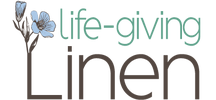 GOTS certified unbleached, undyed, 100% organic linen, which you can buy by the yard or made into bedding, underwear, simple clothing and other miscellaneous items. Be sure to read the results of the scientific study that shows the healing effects of linen.
GOTS certified unbleached, undyed, 100% organic linen, which you can buy by the yard or made into bedding, underwear, simple clothing and other miscellaneous items. Be sure to read the results of the scientific study that shows the healing effects of linen.
 |
Listen to my interview with Melanie Ellison, who established Life-giving Linen |
Spicely Organics
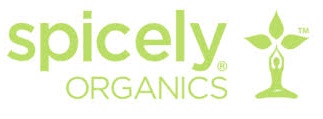 More than one hundred organic spices and seasonings, many that you won’t find in your natural food store. “All of our organic spices and seasonings are shipped, steam-sterilized and packaged under our very strict guidelines, ensuring that each and every one of our customers are able to trust and enjoy any and all of our products. By respecting the earth and its environment and the natural organism that is the human body, each and every one of our spices and seasonings are ethically sourced and are free of added chemicals or hazardous materials. We set our production standards extremely high as we understand that you expect the same. Browse and enjoy Spicely Organics spices and seasonings with the peace of mind that comes from knowing we support wholesome nourishment in all of its delicious forms..” Also a small selection of organic teas and organic chocolate flavored with their teas and spices (sweetened with organic cane sugar).
More than one hundred organic spices and seasonings, many that you won’t find in your natural food store. “All of our organic spices and seasonings are shipped, steam-sterilized and packaged under our very strict guidelines, ensuring that each and every one of our customers are able to trust and enjoy any and all of our products. By respecting the earth and its environment and the natural organism that is the human body, each and every one of our spices and seasonings are ethically sourced and are free of added chemicals or hazardous materials. We set our production standards extremely high as we understand that you expect the same. Browse and enjoy Spicely Organics spices and seasonings with the peace of mind that comes from knowing we support wholesome nourishment in all of its delicious forms..” Also a small selection of organic teas and organic chocolate flavored with their teas and spices (sweetened with organic cane sugar).
Big Dipper Wax Works
Lovely beeswax candles in many colors and shapes, handmade in small batches. “Most of the beeswax we use is collected from Northwest beekeepers, including British Columbia. The crops in this region rank lowest in exposure to pesticides in North America and is the highest quality beeswax available. Our colored beeswax candles are dyed with eco-friendly dyes that do not contain hazardous solvents or additives such as naphtha or naphthalene. All of our wicks are made of 100% cotton and have been primed with beeswax, not paraffin, which many other candle companies (even beeswax candle companies) use. All of our aromatherapy candles are scented with pure essential oils extracted through heat steam distillation or cold-press methods, which are the most natural ways to extract oil from plants.” Also beeswax blocks and bars and all natural body care products made with beeswax.
Opie and Dixie
 All-natural, organic and vegan grooming aids for the holistic care of dogs and cats. “Since 2008 Opie & Dixie has been developing safe, synthetic-free, toxin-free products using only the highest quality, 100% natural and organic ingredients sourced from right here in North America.” Some of the ingredients are biodynamically grown. Water ispurified rain water or taken directly from a natural spring.
All-natural, organic and vegan grooming aids for the holistic care of dogs and cats. “Since 2008 Opie & Dixie has been developing safe, synthetic-free, toxin-free products using only the highest quality, 100% natural and organic ingredients sourced from right here in North America.” Some of the ingredients are biodynamically grown. Water ispurified rain water or taken directly from a natural spring.
 |
Listen to my interviews with Debbie Guardian, President of Opie & Dixie, LLC |
Nirvana Safe Haven
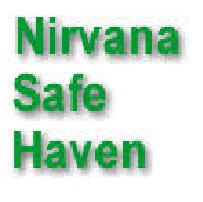 DIY mattress cores made of certified organic natural rubber latex. No bonding agents, no artificial scents, no formaldehyde, no phenols, no pthalates, no toluene, no benzene, no benzothiazone, no silica containing dimethyl sulfate, no artificial vanillin containing petroleum, no flamebreaker containing silica (dimethyl sulfate), no pesticides, no PBDE’s, no boric acid, no chemical flame retardants , no polyethylene, no polyurethane. You supply your own cover. Used successfully by many with MCS.
DIY mattress cores made of certified organic natural rubber latex. No bonding agents, no artificial scents, no formaldehyde, no phenols, no pthalates, no toluene, no benzene, no benzothiazone, no silica containing dimethyl sulfate, no artificial vanillin containing petroleum, no flamebreaker containing silica (dimethyl sulfate), no pesticides, no PBDE’s, no boric acid, no chemical flame retardants , no polyethylene, no polyurethane. You supply your own cover. Used successfully by many with MCS.
Question about TSP
Question from TA
Hi Debra,
Hi Debra, I’m confused about TSP. I was looking around your site for info about it because I see it’s an ingredient in Concrobium Mold Control, which I was looking into using on a shower. The product is said to be non-toxic, and I see it listed as a recommended product on your site. www.concrobium.com/wp-content/uploads/2012/05/Concrobium-Mold-Control-SDS-May-2015.pdf
I see this on the EWG database: www.ewg.org/guides/substances/6194
Do I understand correctly from the info on that EWG link that TSP is not safe as a food additive but it’s okay as a cleaner? The link you gave above seems to indicate it’s not safe as a cleaner either (it’s caustic). So I’m not sure what to make of it at this point. Also, the EWG link shows an “F” rating for TSP – though it seems to be saying that mainly for food (I think?), and the database is about household cleaners! Here is some info from Concrobium’s site:
“TSP is trisodium phosphate, a mixture of soda ash and phosphoric acid. TSP is toxic if swallowed, but it can be used on many jobs, such as cleaning drains or removing old paint, that would normally require much more caustic and poisonous chemicals, and it does not create any fumes.”
from: www.concrobium.com/wp-content/uploads/2012/07/Envirosense-Fact-Sheet-Non-Toxic-Products.pdf
I need to be able to take care of this icky shower safely and without lots of physical exertion – lots of scrubbing and inhaling the mildew, etc, isn’t going to work for me, and I don’t want to be using something toxic (for myself, as I’m sensitive, and I don’t want my child breathing in harmful fumes either). Can you make sense of these various sources of information and tell me if the product containing TSP is, in fact, safe to use? Also, it seems that part of the concern is due to the phosphates which can be an environmental issue. Any ideas about this?
Hmm…I just went back to EWG and searched for Concrobium (instead of just searching for trisodium phosphate as I did earlier), and found this: www.ewg.org/guides/cleaners/2287-ConcrobiumMoldControl
There they give TSP a “C” rating, and the product an “A” rating. Perhaps the product is safe enough after all?
I also see that Concrobium has a Mold Stain Eraser product, but I’m having trouble finding the MSDS for that one, to check the ingredients.
Debra’s Answer
These are all good questions. It’s easy to be confused about this, so I’m glad you asked.
When I first started looking at the toxicity of products, the main thing I was looking at was did it emit toxic fumes.
I consider TSP to be a “safe” cleaner because it’s not toxic.
But there are other ways that substances can be harmful. And one of them is that it can be caustic, which means it can burn through your skin. It won’t cause cancer, or damage your cells, but it can burn through your skin.
I took a look at the EWG page you referenced and yes, you are understanding correctly. The F rating applies to TSP used as a food additive.
But as a cleaner, it’s not going in your body, it has no fumes, and the only way it would be harmful would be if it splashed on your skin or in your eyes. So you could use it with goggles and gloves and be perfectly safe.
Another thing that makes a difference in terms of harm is the dilution. It may be that in corcrobium the amount is so small that it presents no danger. Yet it needs to be in the ingredient list.
There would be no fumes at all from TSP. I use this product myself in my shower.
I have no concerns about it.
Lifta
A gorgeous and simple shelf made from unfinished solid wood, “designed with three goals in mind: lift your computer to the proper ergonomic height, offer a place to store peripherals, and keep your desk tidy.”
Yellow Leaf Hammocks
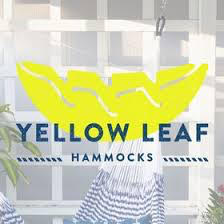 100% handwoven hand-dyed cotton rope hammocks. I’ve included this here as the simplest thing to sleep on. “Yellow Leaf Hammocks is breaking the cycle of extreme poverty through sustainable job creation. Our artisan weavers and their families were previously trapped in extreme poverty and debt slavery. Now they are empowered to earn a stable, healthy income through dignified work (we call this a “prosperity wage”). This is the basis for a brighter future, built on a hand up, not a handout.”
100% handwoven hand-dyed cotton rope hammocks. I’ve included this here as the simplest thing to sleep on. “Yellow Leaf Hammocks is breaking the cycle of extreme poverty through sustainable job creation. Our artisan weavers and their families were previously trapped in extreme poverty and debt slavery. Now they are empowered to earn a stable, healthy income through dignified work (we call this a “prosperity wage”). This is the basis for a brighter future, built on a hand up, not a handout.”
Mauna Kea Tea
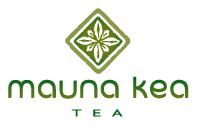 Certified organic green tea, grown on a family farm in Hawaii, Teas feature leaves picked at different stages of the growth cycle for a variety of character and flavors.
Certified organic green tea, grown on a family farm in Hawaii, Teas feature leaves picked at different stages of the growth cycle for a variety of character and flavors.
Onomea Tea Company
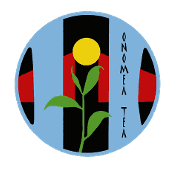 Certified organic green tea, a custom blend grown in Hawaii, chosen to thrive in the island environment.
Certified organic green tea, a custom blend grown in Hawaii, chosen to thrive in the island environment.

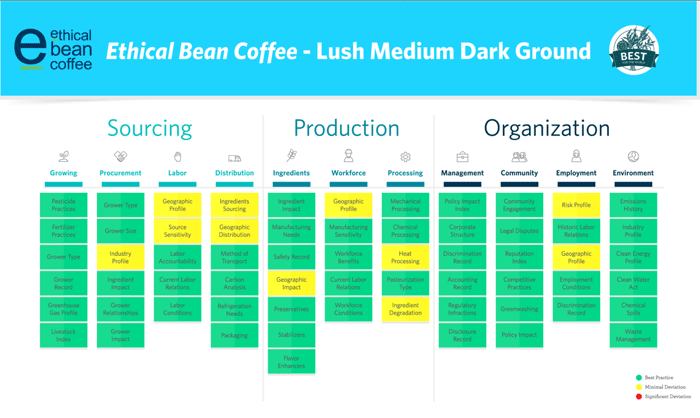

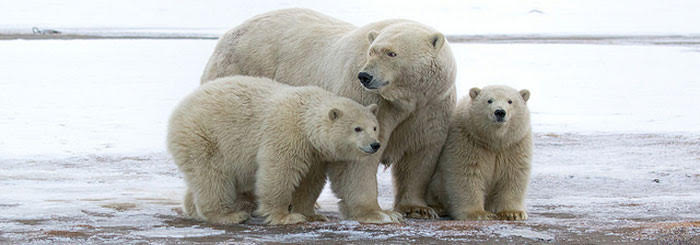



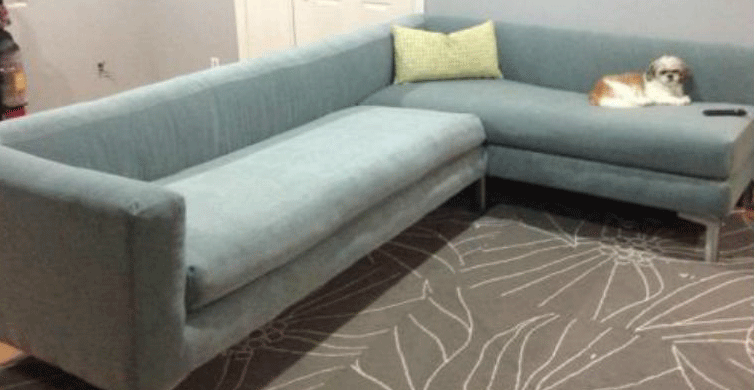
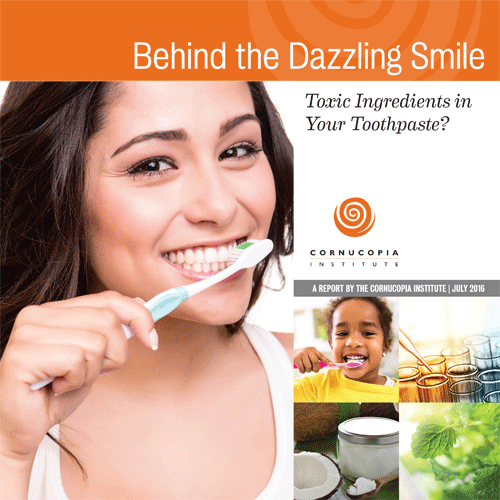
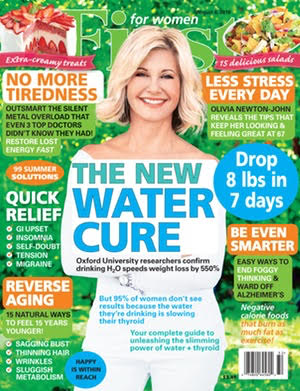
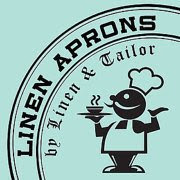 Linen aprons in various colors and styles.
Linen aprons in various colors and styles.
